7 Day Japan Itinerary: 2024 Guide For First-Timers
Looking for the perfect 7 Day Japan Itinerary 2024? This is the only guide you’ll need!
From the ancient temples and shrines of Kyoto to the modern cityscapes of Tokyo and Osaka, Japan is teeming with both old and new.
Whether you’re looking for a diverse range of amazing food, beautiful scenery, or unique cultural experiences, every region in this breathtaking country has something different to offer!
Japan is one of my absolute favorite countries to visit, and definitely the kind of place you could spend months exploring.
But don’t worry – if you only have a short time frame to visit, seeing Japan in a week is totally possible!
In this best 7 day Japan itinerary, you will find my recommendations for the top locations to visit, how to get around, where to stay, and much more.
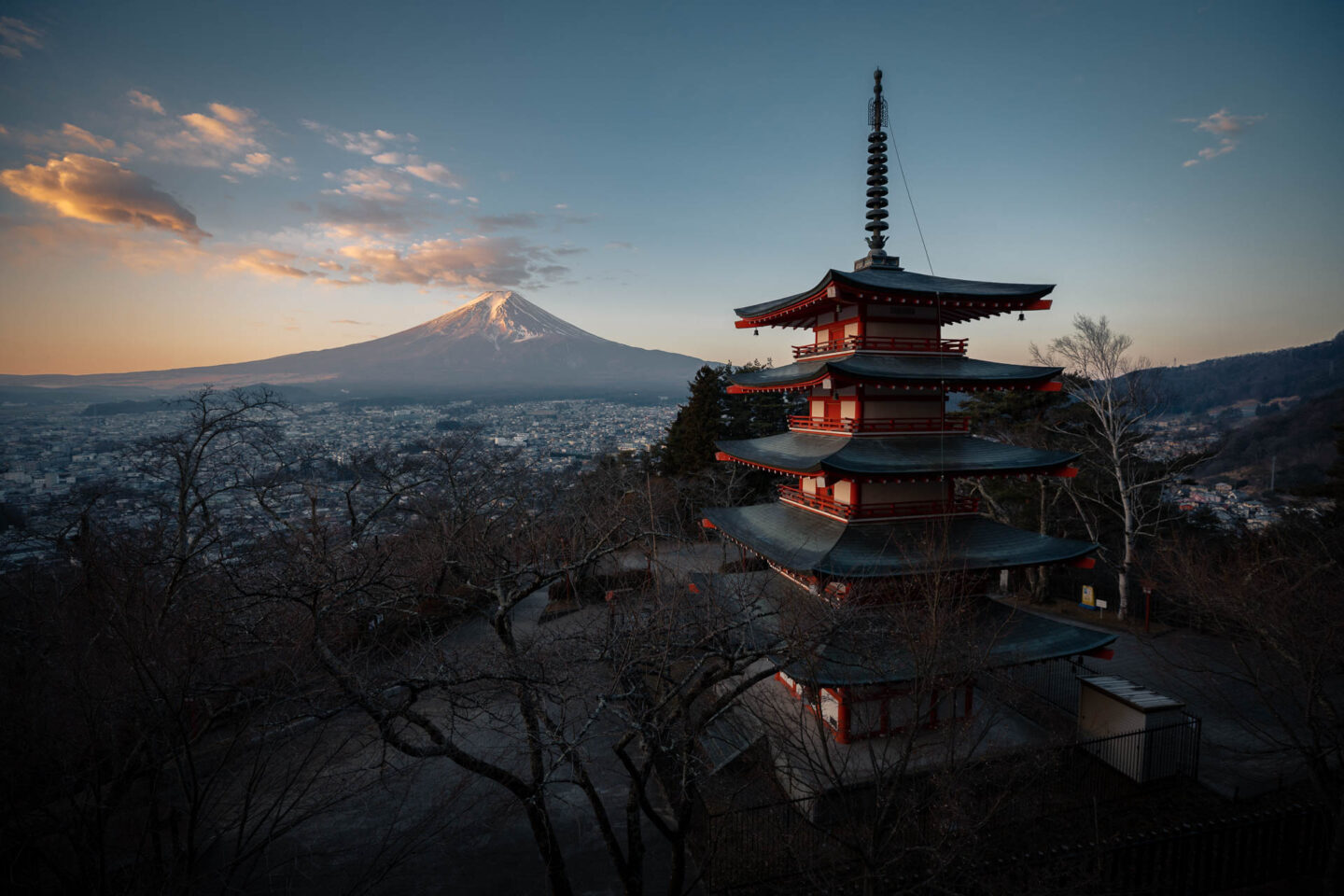
Table of Contents

OVERVIEW – 7 DAY JAPAN ITINERARY
To get the most out of your 1 week in Japan, here is an overview of my recommended route to take:
- Day 1: Tokyo to Kyoto
- Day 2: Kyoto
- Day 3: Kyoto to Nara
- Day 4: Kyoto to Osaka
- Day 5: Osaka
- Day 6: Osaka to Hiroshima
- Day 7: Hiroshima to Fuji to Tokyo
HOW TO GET AROUND – 7 DAYS IN JAPAN
The easiest and most convenient way to discover Japan is with a 7 Day Japan Rail Pass that is valid for use on the vast majority of railways and local buses operated by JR (Japan Rail) throughout the country.
Choose between an Ordinary Pass, or the Green Class Pass if you’re looking to travel in more comfort with reclining seats, a footrest, extra leg space, and a travel magazine.
The Japan Rail Pass is definitely the best ticket to have when planning your Japan itinerary 7 days budget!
Travel Japan with the JR Pass!
Get a 7-day, 14-day, or 21-day JR Pass for your trip to Japan and enjoy unlimited travel on JR services!
The JR Pass is valid on the Shinkansen (bullet train), Limited Express, Local Trains, and JR Buses.
WHERE TO BUY YOUR JR PASS?
You can purchase a JR Pass online through an official Japan Rail Pass reseller such as Klook .
I recommend buying your pass prior to arriving – not only is it cheaper online than buying in Japan itself but it will allow you to jump right into your trip!
When you purchase your JR Pass , a voucher will be mailed to your home address within a couple of days (or delivered to your hotel in Japan, if you choose).
At the Travel Service Center, the process is very simple. You exchange this voucher and show your passport and visa.
( Note: When you land in Japan, you’ll automatically get a tourist visa in your passport at immigration. For the majority of nationalities, the visa is free if you’re in Japan for less than 90 days. )
Then, after specifying the date you’d like your pass to start and reserving your seat for the first leg of the trip, you’ll receive your pass and be ready to begin your 7 days in Japan!
Read More: JR Pass – A Complete Guide On How It Works
7 DAY JAPAN ITINERARY
Now that we’ve covered some logistics on how to get around Japan, let’s get to the fun stuff – a Japan day-to-day itinerary!
So, without further ado here is a complete 7 day itinerary for Japan!
DAY 1: TOKYO TO KYOTO
The first of your Japan itinerary for 7 days will be about getting from Tokyo to Kyoto, and that is pretty simple from Tokyo Station.
Note that, if you get to Tokyo late at night, I recommend staying near Tokyo Station so you’re ready to go early in the morning after.
HOW TO GET FROM TOKYO TO KYOTO
If you’re arriving at Narita Airport, I recommend getting the 1300¥ ($9 USD) bus direct from the airport to Tokyo Station.
It only takes around 70 minutes, and offers great views as you approach and become engulfed by Tokyo city!
Once you get to Tokyo Station, follow the signs to the Marunouchi North Gate exit, and there you’ll find the JR East Travel Service Center.
This is where you will trade your JR pass voucher for your actual JR Rail Pass.
From there, head to the JR Tokaido Shinkansen Line at Tokyo Station. Look for screens that show the name and departure time of your Shinkansen (this info is also on your reserved seat ticket), and you’ll be able to find the right platform and car number.
The trip to Kyoto takes about 3 hours on the bullet train, so if you leave in the early morning you can be there by around 11 am.
If the weather is clear, you might even sneak a view of Fuji on the way down, so keep a lookout on the right-hand side of the train!
In case you need to stay in Tokyo for the night, I recommend a hotel near Tokyo Station, and the one below is an excellent option.
The BEST Hotel in Tokyo
Need a place to stay? Hotel Metropolitan Tokyo Marunouchi is conveniently located near Tokyo Station.
Whether you’re here to explore the sights or relax in comfort, Hotel Metropolitan offers the best of both worlds.
BEST THINGS TO DO IN KYOTO
The best tourist attractions you should check out when visiting Kyoto are the ones below.
Kyoto National Museum
For your first stop in Kyoto, I recommend briefly checking out the Kyoto National Museum.
With a wide range of exhibits showing off ancient Japanese culture and hosting many famous names in Japanese art, you’ll definitely be able to marvel at and learn something new about Kyoto’s rich history.
The entry price for adults is 700¥, and you can pay extra for exclusive seasonal exhibitions.
How to get there:
Kyoto City Bus 100 or 206 from Kyoto Station to Sanjusangendo-mae bus stop, or via a 10-minute walk from Shichijo Station on the Keihan line.
Kinkaku-ji Temple
Next on your 7 days itinerary in Japan, I highly suggest paying a visit to Kinkaku-ji Temple in Kyoto’s northwest, where you’ll find the famous Golden Pavilion, located on a small lake in the middle of a serene garden.
The building dates back to 1397, and was once the holiday retreat villa for a prominent Japanese Shogun!
You can expect to spend about an hour exploring the temple and its surrounding gardens. Opening hours are from 9 am – 5 pm and the ticket price is 500¥.
Kyoto City Bus 205 from Kyoto Station to Kinkakuji-michi bus stop, Kyoto City Bus 59 from Sanjo-Keihan to the Kinkakuji-mae stop, or taxi directly to Kinkaku-ji Temple.
Ditch Your Backpack, Get a Suitcase!
The Nomatic Check-In is the only luggage you’ll need with 90L capacity for those extended trips.
It’s sleek, it’s durable, and it will save your shoulders from pain by not having to carry any weight.
Ryoan-ji Temple
Finally, from Kinkaku-ji temple it is a 20-minute walk or 5-minute bus ride to Ryoan-ji Temple – the site of Japan’s most famous rock garden, attracting hundreds of visitors every day.
Meditating with the view of this immaculately well-kept Cultural World Heritage site is a perfect way to end the first day of your itinerary!
DAY 2: KYOTO
Day 2 is all about visiting other tourist spots in Kyoto, from the Arashiyama Bamboo Forest to the Tori gates of Fushimi Inari and more.
Arashiyama Bamboo Forest
Begin the second day of your 7 day itinerary Japan at the world-famous Arashiyama Bamboo Forest.
A trip to Japan wouldn’t be complete without having visited Arashiyama!
Kyoto’s bamboo forest is one of the most photographed attractions in the city and experiencing it through your own eyes is even better than any picture you would have seen of this place!
There is one main path leading through the Kyoto bamboo grove and when you enter the parallel tunnel of bamboo trees, you’ll feel like you’ve just entered another realm.
The nature that surrounds Arashiyama is absolutely breathtaking and chances are you’ll spot a few monkeys in the area too, so keep your eyes peeled.
A personal recommendation – make sure to come just after sunrise as photos will look even more stunning and you’ll avoid the group tours.
Talking about group tours, in case you don’t feel comfortable visiting by yourself, consider this Early Bird Tour that includes a visit to the Bamboo Forest.
The Arashiyama Bamboo Forest entrance fee is free of charge and the opening hours are Monday to Sunday from 5:30 am – 11:30 pm.
Find your way to Saga Arashiyama Station on the JR Sagano line using the JR Pass and it’s a short 10-minute walk from here.
BEST KYOTO BAMBOO FOREST TOUR
A must-do when visiting Kyoto is joining a Kyoto Early Bird Tour !
It includes a professional guide, a tour of the Bamboo Forest, and a visit to Kinkakuji Temple!
Fushimi Inari
Next up on this Japan itinerary is a journey through the world-famous Tori gates of Fushimi Inari.
This must-see shrine consists of a pathway lined with over 10,000 Tori gates that extend 4 km up to the very top of Mount Inari.
It takes about two hours to walk to the top and back down, however, you can turn back whenever you want!
Along the pathway, you will also see many stone foxes, symbolizing the messenger of Inari – the god of rice… and business!
The Fushimi Inari Shrine is free to enter and is open 24 hours a day, 7 days a week.
JR Nara Line from Kyoto railway station using the JR Pass , two stops to JR Inari station.
Maiko Theater
One of the most exclusive experiences in Kyoto is meeting a traditional Geisha performer.
Geisha are highly skilled entertainers who appear at high-end dinners, private parties, and special events to add a special touch to the proceedings and are rarely seen in public.
Many foreigners tend to run around the red light district areas to try to get a glimpse of a Geisha girl or pay large sums to have a private performance.
Luckily, for travelers on a budget, there are some cheap options to get a taste of what a Geisha show is like!
I personally recommend Maiko Theater. While training to become a Geisha between the ages of 15 and 20, these girls are known as ‘Maiko’, and this theatre gives you the rare opportunity to get to see one of them close up!
It is relatively inexpensive (5500¥ for their basic show, including a special dance and Q&A session), and you can take as many photos of (and with) her as you like!
Bus from Kyoto Station to Kawaramachi Gojo bus stop, then walk for 2 minutes, or 3 minutes walk east from Keihan Shimizu Gojo station (exit 4).
Kiyomizu-Dera
Next on this 7 days Japan itinerary, head to Kiyomizu-michi street and follow it uphill until you reach the popular Kiyomizu-dera (Water) Temple.
The walk leading up to the temple is almost as exciting as the temple visit, with many traditional buildings, shops, and restaurants.
The temple is built into the side of the mountain, and from the huge verandah, you can see spectacular views of the hillside and the entire city.
Below the Kiyomizu-Dera temple, you can find the reason why people make pilgrimages here from around Japan and the world – the Otowa Waterfall.
The waters are divided into three streams, and visitors use long poles with cups attached to drink from the streams.
Each stream has a different meaning and benefit – long life and health, success in school/career, and love. However, you can only drink from one… so choose carefully!
From Kiyomizu-dera, you can meander down the iconic Sannenzaka alleyway.
This historical, stone-paved street is lined with many traditional Japanese buildings, shops, cafes, and inns, and is also surrounded by several famous landmarks such as Yasaka Shrine, Maruyama Park, Yasaka Pagoda, and Kodaiji Zen Temple.
Once you reach the bottom of the hill, you’ve basically arrived at Gion, home to various red-light districts where you might be lucky enough to spot a Geisha! My favorite is Hanamikoji Street.
I recommend timing your arrival here for around 5:30 pm, as this is when the Geishas start leaving their homes to go to work (…and avoid the paparazzi of foreigners while doing so!)
Be careful though, you can be fined for taking photos of them, as it is considered highly disrespectful.
Put the cameras down for this one, and enjoy the chance to see one in the moment!
MORE THINGS TO DO IN KYOTO
If you want to see more attractions in Kyoto, be sure to check out my other travel guide which includes 25 AMAZING things to do in Kyoto!
Read More: Kyoto Travel Guide – 25 AMAZING Things To Do
Where to stay in kyoto.
Kyoto has hundreds of accommodation options to choose from, so I have narrowed it down to a few of the best places to stay in Kyoto to suit the needs of luxury travelers, budget backpackers, and everyone in between.
See the list of accommodations below that I personally recommend in Kyoto for your 7 day itinerary Japan.
LUXURY: HOTEL GRANVIA KYOTO
MID RANGE: TUNE STAY KYOTO
BUDGET: LEN KYOTO HOSTEL
TRADITIONAL RYOKAN
If you’re looking for an authentic experience to add to your Japan 7 day itinerary, I highly recommend staying at a traditional Ryokan (Japanese-style inn) during your stay.
My personal favorite is Kyoto Ryokan Kinoe which is conveniently located in central Kyoto just 5 minutes walk from Gion.
This cozy Ryokan offers spacious tatami mat rooms, 24-hour baths, and multi-course meals served for breakfast and dinner.
Staying here will make you feel like you’re a traveler back in Edo-era Japan!
For More Options In Kyoto, Search On Booking.com
Day 3: kyoto to nara.
A day trip to Nara is an absolute must on your 7-day Japan itinerary and it’s best visited during your stay in Kyoto.
Once an ancient capital of Japan, Nara is home to some of the country’s most important cultural places, including the world’s largest wooden structure and the well-known Nara Deer Park.
HOW TO GET FROM KYOTO TO NARA
Using your JR Pass , take the JR Nara line from Kyoto Station to JR Nara Station. Local lines run about three times an hour, and the journey takes about 70 minutes.
BEST THINGS TO DO IN NARA
Below are some of the best things to do in Nara when visiting from Kyoto.
Todai-ji Temple
Todai-ji is the architectural highlight of this one-day Nara trip. Housing the world’s largest Daibutsu (bronze Buddha statue), this Great Buddha Hall is the world’s largest wooden structure.
As you approach Todai-ji, you can see the famous Nara deer chilling freely around the temple grounds.
It’s 800¥ to enter, and you can pay extra to visit the attached museum too.
Bus from JR Nara station to Todai-ji Daibutsuden station, then a 5-10 minute walk to the main temple.
The BEST Affordable Camera For Travel
If you’re on the hunt for a professional camera for traveling, check out the Canon G7 X Mark II .
This tiny camera fits in your pocket, captures high-quality photos and videos, and has Wi-Fi so you can instantly transfer to your phone!
Nara Deer Park
From Todai-ji, it’s a short work to Nara Deer Park.
This place is full of the city’s iconic animal residents, and they aren’t afraid to say hello! You can even bow to them, and they will bow back!
You’ll see numerous street vendors selling senbei crackers that you can feed them.
But beware, as soon as a deer sees you holding one in your hand, it won’t stop following until it gets its cracker!
DAY 4: KYOTO TO OSAKA
Day 4 is all about Osaka, and you’ll easily get there from Kyoto. Let me elaborate below as well as some must-see attractions.
HOW TO GET FROM KYOTO TO OSAKA
The best way to get to Osaka station, once again using your JR Pass , is on the Special Rapid Service on the JR Kyoto Line.
The Special Rapid Train will get you to Osaka Station in 28 minutes. Trains depart from platforms 4 and 5 at Kyoto Station.
BEST THINGS TO DO IN OSAKA
Once in Osaka, you have to check out some of the best places in town, but first, head to America Town and Universal Studios after that.
Amerika-mura (America Town)
For your first stop on your Osaka itinerary , I seriously recommend spending time in Amerika-mura – an American-inspired district filled with vintage shops, record stores, and Western foods with a Japanese twist.
The now-thriving neighborhood was once filled with empty warehouses and parking lots, but all changed in 1969 when a hip cafe opened, attracting young people and artists from around the region.
Nowadays, it’s still a vibrant hub, and has some of the most eccentric and punk fashion anywhere in Japan!
Universal Studios
If you’re into theme parks, then put Universal Studios Japan (USJ) on your 7 days in Japan itinerary!
This huge park is Osaka’s equivalent of Tokyo Disneyland and offers a world of pop culture, family-friendly rides, and an ever-changing calendar of seasonal events.
A 1-day studio pass starts at¥8,600.
From Osaka Station, you can take a direct train and be there in just 12 minutes!
DAY 5: OSAKA
On your Japan itinerary, you’ll want to stay 2 days in Osaka, and after visiting Universal Studios on the first day, here are other attractions to see.
Osaka Castle
On the morning of day 5, I definitely recommend checking out Osaka Castle, one of Japan’s most recognized monuments.
Built by General Hideyoshi Toyotomi in 1583 as a display of power after unifying Japan, the castle grounds cover around 15 acres!
The surrounding park itself is also a famous spot for the Hanami ( Cherry Blossom ) season.
It’s definitely a worthwhile visit on any Japan itinerary! You will get to learn about not only this amazing monument but the incredible history of the region too.
Osaka Castle is open from 9 am to 5 pm every day and admission is 600¥.
Dotonbori & Shinsaibashi
Located just a short 10-minute walk away from B&S Eco Cube , Dotonbori is affectionately known as the “Kitchen of Japan”, or the heart and soul of Osaka – famous for its dining, entertainment, and nightlife.
A trip to Osaka is never complete without visiting Dotonbori!
The food options at Dotonbori are endless. Be it street snacks, fast meals, or exquisite dining, there is always something to satisfy every palate.
Most of the restaurants are open till the wee hours, offering high-quality food that will never disappoint. Make sure to try Takoyaki (grilled octopus), the local specialty!
Shinsaibashi is the largest, oldest, and busiest shopping district in Osaka. Shinsaibashi-Suji is at the center of Shinsaibashi, a covered shopping arcade located north of Dotonbori and connected by the Ebisu bridge under the Glico running man billboard.
WHERE TO STAY IN OSAKA
Osaka has hundreds of accommodation options to choose from, so I have narrowed it down to a few of the best places to stay in Osaka to suit the needs of luxury travelers, budget backpackers, and everyone in between.
See the list of accommodations below that I personally recommend in Osaka for your Japan in 7 days itinerary.
LUXURY: OSAKA MARRIOTT MIYAKO HOTEL
MID RANGE: HOTEL ELCIENT OSAKA
BUDGET: IMANO OSAKA SHINSAIBASHI HOSTEL
For More Options In Osaka, Search On Booking.com
Day 6: osaka to hiroshima.
On the second last day of your Japan itinerary, the adventure continues from Osaka to Hiroshima.
Sadly, Hiroshima is best known as the location of the world’s first nuclear bombing.
Its most poignant sites are the Genbaku Atomic Dome, Hiroshima Peace Park, and Hiroshima Peace Memorial Museum.
I believe visiting Hiroshima and learning about its history should be a core part of anyone’s 7 day trip to Japan.
HOW TO GET FROM OSAKA TO HIROSHIMA
To get to Hiroshima, you need to first go to Shin-Osaka Station where the bullet train platforms are located, which is a short 3-minute train ride from Osaka Station via the JR Tokaido-Sanyo line.
From Shin-Osaka , you can take a bullet train on the Sanyo Shinkansen Line from Hiroshima Station, which takes 1 hour and 32 minutes on the Sakura , or 2 hours and 13 minutes on the Hikari .
THINGS TO DO IN HIROSHIMA
Hiroshima has endless things to do, especially on the historical side, and here are some of the best ones you should see.
Atomic Bomb Dome
The Atomic Bomb Dome is an impressive and somber sight.
Known before the bombing as the Prefectural Industrial Promotion Hall, it was one of the only buildings to survive the explosion and was preserved as a symbol of the bombing of Hiroshima.
Walking around this building can be a little bit eerie, and really makes you reflect on the destruction that war causes and how lucky we are to live in a mostly war-free world!
Tram from Hiroshima Station to Atomic Bomb Dome station, a flat rate of 180¥.
Peace Park & Hiroshima Museum
If you cross the river from the Atomic Bomb Dome, you enter the beautiful Peace Park. The key site here is the Cenotaph, which frames the ‘eternal flame’ of Hiroshima.
It is said that this flame will be burning until all nuclear bombs are eradicated. Unfortunately, I think that this flame is going to be burning for a long time!
The Atomic Bomb Dome, Peace Park, and Cenotaph are all free to visit and are simply must-see on your Japan tour itinerary 7 days.
For an entry price of 200¥, you can also visit the newly renovated Hiroshima Museum, which gives a very graphic and tragic historical account of the bombing and its lasting effects on Japan and the world.
Miyajima Island
To finish off your day in Hiroshima, I recommend a visit to Miyajima Island.
Miyajima’s top attraction is the bright red shrine gate of Itsukushima-jinja which stands out in the sea and appears to be floating at high tide.
This spot is ranked as one of the three best views in Japan.
Trains depart from Hiroshima Station every 15 minutes for the 26-minute ride to Miyajimaguchi (JR Sanyo line), from where it is a 2-minute walk to the ferry bound for Miyajima.
You can ride on the JR Ferry for free with your JR Pass , it will take you 10 minutes to reach Miyajima.
WHERE TO STAY IN HIROSHIMA
Hiroshima has hundreds of accommodation options to choose from, so I have narrowed it down to a few of the best places to stay in Hiroshima to suit the needs of luxury travelers, budget backpackers, and everyone in between.
See the list of accommodations below that I personally recommend in Hiroshima for your Japan in 7 days itinerary.
LUXURY: SHERATON GRAND HOTEL
MID RANGE: WE BASE HIROSHIMA
BUDGET: HOSTEL MALLIKA
For More Options In Hiroshima, Search On Booking.com
Day 7: hiroshima to fuji to tokyo.
The last leg of this 7 day Japan itinerary is a little long but definitely worth it for the chance to see Mt. Fuji at the end!
HOW TO GET FROM HIROSHIMA TO FUJI
I highly advise you to wake up quite early on this last day!
From Hiroshima Station, get on the Sakura Shinkansen to Shin-Kobe, and then transfer to the Hikari Shinkansen and ride it all the way to Shin-Yokohama. You will arrive at around 12:40 pm.
From Shin-Yokohama, there are still a few more trains to catch.
First, you take the JR Yokohama Line Rapid until Hachioji, which takes around 40 minutes. From there, take the JR Chuo Special Rapid Service for Takao, which takes around 7 minutes.
Then, a 43-minute ride on the JR Chuo line until Otsuki station, where you can ride the Fuji View Express.
Fortunately, up until here, you can use your JR Pass , but as Fuji View Express is a private rail company, you can only get separate tickets or use your Suica card.
If you have any luggage, I recommend storing it at a locker at Takao station, as this is where you will come back to in order to return to Tokyo.
Locker prices are generally around 500-700¥ for a whole day, depending on if you are storing a backpack or suitcase.
Ride on the Fuji View Express until Shimoyoshida station. If all goes well, you should get in there by around 3:30 pm.
Take Your Photos & Videos To New Heights!
The DJI Mini 3 Pro is the most affordable, user-friendly drone camera suitable for all levels!
This travel-sized drone captures 4K/60fps video, 48MP photo, and has 34 minutes flight time.
Chureito Pagoda
From Shimoyoshida, you have a 20-minute walk up to the Chureito Pagoda.
The Chureito Pagoda, also called the Chastain Tower and officially named the Fujiyoshida Cenotaph Monument, is a shrine located in the Fuji Five Lakes region at Mount Fuji’s northern base.
Chureito Pagoda has five stories; it is situated on a mountainside overlooking Fuji Yoshida City, with Mount Fuji itself visible in the distance.
This is one of the absolute best locations to get a shot of Fuji if she’s not being shy and hiding behind the clouds!
The locals say that the best time to visit for a full view is in the cold months of January and February, as that is when it is least cloudy.
The Chureito Pagoda is free to enter and it’s open 24 hours a day, so you can even stay to watch the sunset over this breathtaking mountain (depending on the time of year!)
I think it’s safe to say that Chureito Pagoda is an incredible sight to witness at the end of your 7 days in Japan.
HOW TO GET FROM MOUNT FUJI TO TOKYO
To get back to Tokyo, take the Fuji View Express back to Otsuki, then get on the local line bound for Takao.
From there, you can pick up your bags, and get on a rapid service bound for Shinjuku, which takes around 40-50 minutes.
Alternatively, you can get a bus from Kawaguchiko station (4 stops from Shimoyoshida station on the Fuji View line) directly to Shinjuku.
However, I recommend getting the most out of your last few hours with your JR Rail Pass , and taking the trains!
If you have more time available, why not plan a Japan itinerary 7 days with Disneyland.
BEST TOURS IN TOKYO
Where to stay in tokyo.
Tokyo has hundreds of accommodation options to choose from, so I have narrowed it down to a few of the best places to stay in Tokyo to suit the needs of luxury travelers, budget backpackers, and everyone in between.
See the list of accommodations below that I personally recommend in Tokyo for your Japan trip itinerary 7 days.
LUXURY: THE AOYAMA GRAND HOTEL
MID RANGE: AKASAKA EXCEL HOTEL
BUDGET: UNPLAN SHINJUKU
For More Options, See My Guide On The Best Places To Stay In Tokyo
Things to know before you go.
The currency in Japan is Yen (¥) and the exchange rate is approximately $1 USD = 149 ¥.
There are plenty of ATMs in Japan located in most convenient stores, in front of banks, inside hotels, etc. where you can easily withdraw cash to have with you during your 7 days in Japan.
That being said, you’ll want to get ready for the Japan itinerary 7 days budget and expenses, and getting a Wise card is an excellent option.
Need A Travel Money Card?
Wise offers multi-currency cards that can be used worldwide and you’ll save $ on transaction fees.
Get a Wise card today for FREE!
Most Japanese people can speak English, so if you are ever lost or need help with something you will be able to converse in English.
Also, all the signs at the airports, train stations, and shopping malls are written in both Japanese and English.
Before preparing. an itinerary Japan 7 days, I recommend purchasing an eSIM so you have access to the internet throughout your trip.
Forget plastic SIM Cards… Get an eSIM!
Say hello to eSIM – a virtual SIM card pre-loaded with mobile data so you can get online and stay connected around the world.
OneSimCard is the best eSIM for travel, with low-cost data packages available in 150+ countries.
Simply buy online, install it on your smartphone, and you’re good to go!
BEST TIME TO VISIT JAPAN
The best time to visit Japan depends on what you plan to do.
I personally prefer the spring and summer months in Japan (April – September) when temperatures are warm and the landscapes are vividly green.
However, visiting Japan in winter (December – March) is absolutely magical because the landscapes are completely covered in glistening white snow.
Visiting Japan in winter also means you have to opportunity to go skiing and snowboarding in Japan’s alpine regions like Hakuba .
VISA FOR JAPAN
Japan is visa-free for travelers from over 65 countries, and you can stay in Japan for up to 90 days on a tourist visa. Plenty of time for a sample itinerary for Japan visa 2024.
Click Here to see the full list of nationalities that are eligible for the free 90-day tourist visa.
You don’t need to apply online for this as you will be granted a 90-day tourist visa at the airport when you arrive.
MAP OF JAPAN
Click here or on the image below for an interactive map of Japan.
WHAT TO PACK FOR JAPAN
When planning a 7 days itinerary Japan, here is a list of items I highly recommend bringing with you.
Must-Have Travel Essentials
Hidden money wallet.
Keep your cash and other valuables safe with this anti-theft hidden money wallet!
Reusable Water Bottle
The GRAYL GeoPress is the best reusable bottle that allows you to purify water from anywhere!
Travel Backpack
The Nomatic Travel Backpack has 20+ innovative features, perfect for everyday use!
Quick-Dry Travel Towel
The most compact, lightweight, and quick-dry towel for traveling!
Portable PowerBank
Keep your phone, laptop, and accessories charged while you’re on the go with the Anker PowerBank!
More Japan Travel Guides
Click the button below to view all articles related to Japan!
FINAL THOUGHTS – JAPAN ITINERARY 7 DAYS
After seven eventful days of exploring Japan, this Japan 2024 itinerary by far exceeded my expectations!
With many fun activities to do and attractions to see, Japan is definitely worth adding to your bucket list. I guarantee you won’t regret it!
If you have any questions at all about this Japan 7 day itinerary, please leave me a comment below this post and I will get back to you as soon as I can.
For a quicker response, be sure to join Jonny Melon’s Travel Tribe on Facebook and post your questions or recommendations to our awesome community.
TRAVEL RESOURCES FOR YOUR NEXT TRIP
Whether you’re a seasoned traveler or it’s your first trip overseas, here are some useful travel resources to help you kick-start your next adventure!
Search and book accommodation worldwide.
Compare and book cheap flights to anywhere.
Find tickets, tours, and experiences around the world.
Book buses, trains, and transfers online in advance.
Search all rental cars in your next destination.
Need travel insurance for your next trip?
THANKS FOR READING
Hey friend, thanks for reading this guide!
Please know this post may contain affiliate links. When making a purchase through one of my links, I earn a small kickback at no extra cost to you and it’s a big help to keep the site up and running. Rest assured, I only promote products and services that I personally use and recommend.
Click here to find out how you can support the site organically .
Many thanks!
PIN IT FOR LATER
13 thoughts on “7 Day Japan Itinerary: 2024 Guide For First-Timers”
Love this 7 day itinerary. Planning to visit Japan this August with my husband and two teens. I would love to follow your proposed itinerary but a bit confused where to stay. Is it advisable to stay only in Kyoto in this 7 day itinerary of yours or would you advise as to stay to other accommodation each day?
Thanks and Kind REgards, Joan
Hi Joan, thanks for the positive feedback, glad you found my japan itinerary useful. I have suggested accommodations to stay in each location on this itinerary not just kyoto. you’ll find hotel recommendations in osaka, hiroshima, and tokyo. hope this helps and enjoy your trip!
Hey Jonny! I have two more questions:
1) I’m thinking about cutting out the activities on Day 4 so I can check out Kobe too! If I did this, how would you re-arrange the itinerary so it’s the most convenient for travel? Would you just insert Kobe to Day 4 or insert it the day before Hiroshima since it’s closer via location?
2) Also, would you spend a night in Kobe or just a day trip and sleep back in Osaka since it’s not far?
Much appreciated!
I would suggest stopping into Kobe on the way down to Hiroshima for a day trip, or half-day trip, makes more sense in terms of the location between Osaka and Hiroshima. Otherwise, yes, on day 4 you could skip activities and head to Kobe for the day, perhaps even stay the night, and then head to Hiroshima afterward. I hope that helps in some way!
Thanks again Melon! If you’re ever in South Korea hit me up and I can show you around. Gyeongju is known as the “culture capital”, it’s a beautiful place 🙂
A pleasure! South Korea is high on my list, I may take you up on that offer haha! Much appreciated and let me know if there’s anything else I can assist with for your Japan trip!
Sick! I should be here until March 2023, but who knows maybe I’ll stay for a 4th year too haha. Actually, yes, I did have something else:
1) On Day 3, since I’ll go to Nara, would you recommend staying the night instead of heading back to Kyoto? OR does that make the trip to Osaka the next day more difficult from Nara perhaps? OR is there not much to do in Nara at night maybe? What are your thoughts?
Your itinerary looks amazing it’s a big help! I have a question. I’m living in South Korea. On Day 7, would it be best to go all the way back to Tokyo, or is it easier to fly back to South Korea from Fukuoka? On the map, it looks much closer, and there’s a railway all the way there too. What do you think is best??
Hey Marco, you’re most welcome, glad you found this 7 day Japan itinerary useful! It’s not necessary to go all the way back to Tokyo and you could instead depart from Fukuoka. Hope this helps and enjoy your trip!
Thanks again, it really is helpful to me. Your story sounds epic, you’ll inspire others to travel for sure! I decided to fly in and out of Osaka and cut out Tokyo altogether for simplicity. My friend recommended the Kansai Thru Pass instead of the JR Rail as a budget-friendly alternative since I’ll be in the Kansai region for the majority of the trip. I’ll use a few of your affiliate links too so you can get paid for your efforts 🙂 Respect!
Amazing mate, you’re welcome!! Many thanks for using the aff links, it all helps to keep me going!
Very helpful indeed! Help us a lot with a very detailed itinerary. Kudos!
Do you have the updated it Itinerary for 2023? We will be going this last week of April last week. Very concerned with the pricing & places to stay.
Hey Paul, thanks for reading, and glad you found this japan itinerary useful! This is the most up to date itinerary for this year. Japan is generally an expensive country year-round and April is the high season because of the cherry blossoms season. Please let me know if there’s anything else I can help you with. Enjoy 🙂
Leave a comment Cancel reply
Notify me of follow-up comments via e-mail.
Work with us
Support the site
Plan Your Trip
Travel guides
Destinations
Hotel guides
Find best tours
Travel Gear
Travel resources
How to start a blog
Photography guides
Follow On Socials
© 2024 Jonny Melon Adventure Travel Blog. All rights reserved.
Privacy Policy | Terms | Sitemap
The Travel Sisters
7 days in japan: the perfect itinerary for first time visitors.
by Patti | Jun 23, 2018 | Destinations | 5 comments

7 Days in Japan Itinerary for First Time Visitors
With 7 days in Japan, we recommending focusing on Tokyo and Kyoto . If you like to pack in a lot on your travels, we recommend adding a few day trips.
Disclaimer: This article contains affiliate links. We may make a small commission if you make a booking using our links at no extra cost to you . See our Disclosure page for more information.
Day 1 – Tokyo
Tsukiji Fish Market

If your body is on a different time zone, your first day in Tokyo might be the best day for an early morning visit to the Tsukiji Fish Market , the biggest wholesale fish and seafood market in the world. Make sure to catch the tuna auction – spots are limited so you need to arrive at 3:00 am in the morning! After watching the tuna auction, make sure to enjoy some fresh sushi for breakfast. If you want to guarantee catching the tuna auction it might be easier to sign up for a tour here .
Sensōji Temple (or Asakusa Kannon Temple)

Visit the famous Sensōji (or Asakusa Kannon Temple) in Asakusa. Although the temple and surrounding area is very busy and packed with tourists, it is still a Tokyo must see.
The walk to Sensōji, Nakamise Dori, is lined with small shops selling various souvenirs. This is a good spot to knock out your souvenir shopping.

Spend a few hours in Akihabara, a district in Tokyo famous for its many electronics shops. One of the popular things to do in Akihabara is to visit a maid cafe .
Day 2- Tokyo
Meiji Shrine/ Omotesando/ Yoyogi Park/Harajuku

If you enjoy window shopping take a walk on Omotesando which is a broad, tree-lined street that houses various top designer boutiques. As Omotesando comes to an end you will reach Yoyogi Park , a great spot for people watching.
Also nearby is the famous Harajuku neighborhood. The main action is at Takeshita Dori, which is a short pedestrian walkway. Here you will see shops selling clothes for teens, and lots of Japanese youth and girls wearing Harajuku style.
Make sure to also visit the Meiji Shrine which is located right next to the Harajuku station.
Shibuya Crossing

Shibuya Crossing is huge famous pedestrian intersection. While you are at Shibuya do not miss the statue of Hachiko . The statue is a popular meeting point for Tokyo residents and a good spot for people watching. The statue was erected in honor of Hachiko, who was a loyal dog that faithfully came to fetch his owner at the train station each day (even after his owner passed away).

Tokyo can be hectic so visiting a park is a nice way to spend a couple of hours during your time in Tokyo. One of the most beautiful parks in Tokyo is Shinjuku Gyoen National Garden which consists of three different types of gardens: traditional Japanese, formal French and an English garden. Home to a large number of cherry trees, it is a popular but also peaceful spot for hanami (cherry blossom viewing) during the spring cherry blossom season .
Day 3 -Tokyo or Day Trip to Jigokudani Snow Monkey Park
Now that you have seen the major sites in Tokyo, you can have some fun and do some of the unique things to do that Tokyo is known for. Another option (especially if visiting in the winter) is to do a day trip to Jigokudani Snow Monkey Park to see the famous snow monkeys. The best time to visit the snow monkeys is early in the morning.

Watch a Sumo Wrestling Tournament or Sumo Practice

Sumo is Japan’s national sport. Attending a sumo grand tournament is a fun and cultural experience we would recommend to anyone visiting Japan during the tournament.
The sumo tournament runs in Tokyo for 15 days at a time during January, May and September (exact dates vary each year). If you visit Tokyo outside of these dates, consider visiting a sumo stable to watch a sumo wrestling practice .
(If you are interested in attending a sumo wrestling match, check out our Tips for Watching Sumo Wrestling in Japan for the schedule, advice on finding tickets, choosing seats and other information that we think is helpful.)
Have a drink or meal at a themed café or restaurant

Tokyo is full of some interesting cafes from various animal cafes (cat cafes, dog cafes, owl cafes , rabbit cafes and a hedgehog cafe ) to maid cafes and even a robot restaurant . Read about our visit to a bunny cafe here .
Where to Stay in Tokyo
These are our top choices for every budget:
Grand Hyatt Hotel. This is a great hotel in Tokyo for those looking for a luxury experience or have hotel points to use. The Grand Hyatt Hotel has a great location and gets great reviews on tripadvisor. Click here to see the latest prices or read Tripadvisor reviews .
Park Hyatt Tokyo. This luxury hotel in Shinjuku is the hotel in the travel movie , Lost in Translation. Click here to see the latest prices or read Tripadvisor reviews .
Akasaka Excel Hotel Tokyu. This midprice hotel is where we usually stay in Tokyo. The location is super convenient -it is in the same building as a 7-11 and several restaurants and it is also across the street from the Akasaka-Mitsuke subway station with underground access to five different lines. Click here to see the latest prices or read our full review .
The Prince Park Tower Tokyo. This midprice hotel get good reviews. It has a great location and also offers a free shuttle to the closest train station. Click here to see the latest prices or read Tripadvisor reviews .
Richmond hotel Asakusa. This small modern hotel is located in a great location in Asakusa walking distance to the famous Sensōji Temple. Click here to see the latest prices or read Tripadvisor reviews .
Red Planet Asakusa. This newly built hotel also has a great location in Asakusa and offers great views of the Tokyo Skyline and Sky Tree from some rooms. Click here to see the latest prices or read Tripadvisor reviews .
Day 4 – Train from Tokyo to Kyoto
The fastest way from Tokyo to Kyoto is the Shinkansen (bullet train) on the Tokaido Shinkansen line.
There are three options: the Nozomi, Hikari and Kodama. The Nozomi is the most frequent and the fastest train with a travel time of 2 hours and 20 minutes but it is not covered by the Japan Rail Pass . If you wish to use the Japan Rail Pass , the best choice is the Hikari which takes 2 hours and 40.
If you do not have a Japan Rail Pass, the fare is 13,080 yen one way.
To search for times and prices visit www.hyperdia.com .
Keep an eye for Mt. Fuji.

Day 5 – Kyoto
Fushimi Inari Shrine

Take the train to southern Kyoto to see Fushimi Inari Shrine , one of the most popular attractions in Kyoto. The Fushimi Inari Shrine is an important Shinto shrine famous for its thousands of vermilion torii gates. The Fushimi Inari Shrine is always open and admission is free.
At the back of the shrine’s main grounds is the entrance to the torii gate covered hiking trail which goes up to the summit of the mountain. You can hike all the way to the top of the mountain which takes about 2-3 hours roundtrip but you can turn back any time. Most visitors just do the shorter hike through the clustered torii gates (approximately 30 minutes) to the Yotsutsuji intersection roughly half way up the mountain which has a great view of Kyoto. The rest of the hike is less crowded but there are less gates and there is not that much more to see. I recommend doing just the shorter hike as there are other places to walk in Kyoto.
Eastern Kyoto

After seeing the Fushimi Inari Shrine head to Eastern Kyoto which is a historic part of Kyoto full of temples, shrines, gardens and shops to get a taste of traditional Japan. I recommend starting with Ginkakuji (the Silver Pavilion) a Zen temple that despite it’s name is not silver or covered in silver.
From Ginkakuji you can access the start of the Philosopher’s Path, a pedestrian path that follows a canal lined by hundreds of cherry trees. In April, this is one of the best places in Kyoto to see cherry blossoms. Near the end of the Philosopher’s Path are Eikando Temple (one of the most beautiful places for autumn foliage in the fall) and Nanzen-ji Temple (a zen temple with a beautiful rock garden). The Philosopher’s Path is about 2 km long and takes about 30 minutes but you can spend more time visiting other temples and shrines along the way.

If you are still up for more walking after the Philosopher’s Path, head to the Heian Shrine (orange shrine), followed by Kodaiji Temple and then Kiyomizudera . Otherwise take a taxi directly to Kiyomizudera in the Higashiyama area which is famous for its large wooden terrace and amazing views of Kyoto. If you can time it and don’t mind the crowds try to visit Kiyomizudera during sunset for beautiful photos.

In the late afternoon or evening, head to the ancient geisha district of Gion . Gion is known for its traditional wooden houses and is filled with restaurants, shops and tea houses. Kyoto Free Walking Tour has free morning and early afternoon walking tours of Gion and Higashiyama districts.
Gion is also the best place in Kyoto to spot geishas and their apprentices (called maiko) and you will see many tourists waiting around to photograph them. We spotted several geishas on or near Hanami-koji street. The best time to spots geishas is around dusk (5-6pm) when geisha are on their way to their appointments at tea houses. Real geishas are pretty elusive and avoid tourists – you might spot them entering a taxi or one of the buildings. If you see geishas posing with tourists or stopping for photos they are not real geishas, they are tourists dressed up as geishas .
The tea houses are not open to the public but you could book a tour which includes entry to a teahouse and time with a maiko .
After spotting geishas, you can cross the Kamo River and head to Pontocho , a narrow pedestrian only street that runs along the bank of the river and lined with restaurants and bars. In the summer many of the establishments build platforms extending over the Kamo River so you can dine outside.
Day 6 Arashiyama and Northern Kyoto
Sagano Bamboo Forest

Take the train west to Arashiyama to view the famous and beautiful Sagano Bamboo Forest . It gets very busy so I recommend visiting early in the morning. You don’t need a lot of time if you are only visiting the forest as it is not very big but you will need a half or full day if you also visit the nearby monkey park. From the train station, the bamboo forest is a short walk through the town passing shops and restaurants.
Iwatayama Monkey Park
After the bamboo park you can walk to the Iwatayama Monkey Park to see Japanese macaque monkeys. Located in the Arashiyama mountains, the walk to the monkey park is an approximately 20-30 mins steep hike uphill from the bamboo forest. Once you reach the top you will find tons of monkeys roaming around and there are also great views of the city. You can purchase food to feed the monkeys.
Kinkakuji (Golden Pavilion)

From Arashiyama, you can take the train to Northern Kyoto and then take a taxi or bus to the iconic Kinkakuji temple (Golden Pavilion). Kinkakuji overlooks a large pond and you can take photos of Kinkakuji with its reflection in the pond.
Ryoanji Temple
Ryoanji Temple is another temple located close to the Golden Pavilion which has a famous Zen rock garden. Personally, I though the garden was a bit overrated but it was packed with tourists during my visit.
Okonomiyaki Katsu
After visiting Ryoanji Temple, I recommend heading to the nearby Okonomiyaki Katsu restaurant which is located in a residential neighborhood nearby. It is owned by a Japanese couple gets great reviews and their specialty is okonomiyaki . Their website is in Japanese but check their times as they are only open for lunch and dinner and are closed on Wednesdays.
Day 7 Central Kyoto and Day Trips
If you ran out of time, visit any temples you missed today in the morning. Then head to Nijo Castle in Central Kyoto.
Nijo Castle
Located in central Kyoto, Nijo Castle is easily accessible by subway. Nijo Castle is large but easy to explore so I would allow an hour or two to enjoy at leisurely pace. In addition to its beautiful art, Nijo Castle is famous for its squeaky floors (not because they are old they were designed to make noise to alert for intruders).
Nishiki Market
After sightseeing in the morning head to Nishiki Market for lunch. Nishiki Market is a narrow shopping street lined by shops and restaurants selling fresh seafood, produce, and even souvenirs. Nishiki Market is a good place to wander around and spend hours sampling Japanese food. If you would like some guidance, you can book a food tour .
Day Trip to Nara
If you have time today, your last day in Kyoto might be a good time to take a day trip to Nara. Nara is the ancient capital of Japan and is famous for Buddhist temples, shrines and the famous Nara deer park. You can visit Nara in half a day .
Head to Osaka/Tokyo
If you are flying out of Osaka instead of heading back to Tokyo, you might want to head to Osaka early and explore Osaka a bit.
Where to Stay in Kyoto
Kyoto has many great ryokan (traditional Japanese inns) so consider if you would like to stay at a ryokan instead of a western hotel.
These are our top picks for the best hotels and ryokan in Kyoto for every budget.
The Ritz-Carlton, Kyoto. This is our top pick if looking for a hotel luxury experience. The Ritz-Carlton, Kyoto has a great location in Central Kyoto close to Gion and Pontocho and gets great reviews on tripadvisor. Opened in 2014 as the first luxury urban resort in Japan, The Ritz-Carlton is on the banks of the Kamogawa river with views of the Higashiyama mountains. The resort features four restaurants and bars, spa, pool, free wi-fi, in room refrigerator and some rooms have river views. Click here to read Tripadvisor reviews .
Arashiyama Benkei . Traditional Japanese Ryokan located in a beautiful area in Arashiyama near the river. It is not as centrally located but is close to the famous bamboo forest and monkey park. Click here to read Tripadvisor reviews .
Citadines Karasuma-Gojo Kyoto. Citadines Karasuma-Gojo Kyoto has serviced apartments with a kitchenette and free wi-fi. It has a convenient location close to a train station (one stop from the Kyoto Train station), supermarket and restaurant. Click here to read Tripadvisor reviews .
Hokkaikan Ohanabo. This midprice ryokan is in a great location within very close walking distance to Kyoto Station. Click here to read Tripadvisor reviews .
Hotel Gran Ms Kyoto. Very affordable hotel in a convenient location close to Nikishi Market and subway. Click here to read Tripadvisor reviews .
Ryokufuso. Affordable ryokan near train station. Click here to read Tripadvisor reviews .
Getting Around Japan
• The best way to get around Tokyo is by the efficient and comprehensive metro system . If you plan to take the subway more than a couple of times, you might want to purchase a PASMO card . PASMO is a prepaid reloadable smart card that you can use for trains and buses without having to calculate and pay a separate fare each trip. You can purchase a PASMO card at airports or train stations.
• Consider whether you need to purchase a Japan rail pass before heading to Japan. Japan Rail Pass is a multi-use discounted ticket, valid for travels on all JR national trains in Japan, including Shinkansen bullet trains and Narita Express . You can select 7, 14 or 21 consecutive validity days. A 7 day rail pass is $262 USD which is about the price of a round trip between Kyoto and Tokyo. If you are flying into Tokyo and out of Osaka and only taking the train between Tokyo and Kyoto you won’t need the pass.
Tips for Visiting Japan
• Most Japanese ATMS don’t work with foreign ATM cards. To find ATMs that work head to the nearest 7-11.
•Not sure when is the best time to visit Japan? To help you decide before you book your trip see related post: The Best Time to Visit Japan .
• Want to be sure you are prepared for your trip to Japan? See related post : Planning a Trip to Japan: Essential Tips to Prepare for Your First Trip to Japan to help you plan and prepare for your first trip to Japan.
Hope you enjoyed our 7 day Japan itinerary . Have you been to Japan? If so, what would you do in 7 days?

I would love to visit the Hachiko statue and see the snow monkeys as well as a bunch of other things on this itinerary. Japan is totally on my bucket list.
I spent one day in Tokyo (layover) about 27 years ago, and I still remember how overwhelming it was! Your itinerary is really helpful, as there is so much to see in Tokyo and Japan. It’s important to break it down for visitors. Wish I’d had this (or at least the internet) back then. 🙂
This looks like a great Japan itinerary! I’d love to go to the bamboo forest especially.
Wow, what a whistle stop tour that would be. I’ve been lucky enough to go to Japan twice now and each time I’ve stayed for a week. It always leaves me wanting more.
Japan is not somewhere that’s ever really been on my bucket list, I have to admit. That said, I really like the look of the Asakusa Kannon Temple – the colours and all the details are beautiful 🙂 It seems like 7 days was enough for you in Japan, it’s a shame that it’s just so far for me to travel for just 7 days… x
Submit a Comment Cancel reply
Your email address will not be published. Required fields are marked *
Save my name, email, and website in this browser for the next time I comment.
Notify me of follow-up comments by email.
Notify me of new posts by email.

Subscribe to Blog via Email
Recent posts.
- Chase Freedom Flex 2024 2nd Quarter 5% Bonus Categories
- Discover 5% Cashback Calendar 2024: Categories That Earn 5% Cash Back
- Chase Freedom Calendar 2024 Categories That Earn 5% Cash Back
- All Southwest Airlines International Flight Destinations
- Chase Freedom Flex 2024 2nd Quarter 5% Bonus Categories – Activate Now!
Follow us on Facebook

Pin It on Pinterest
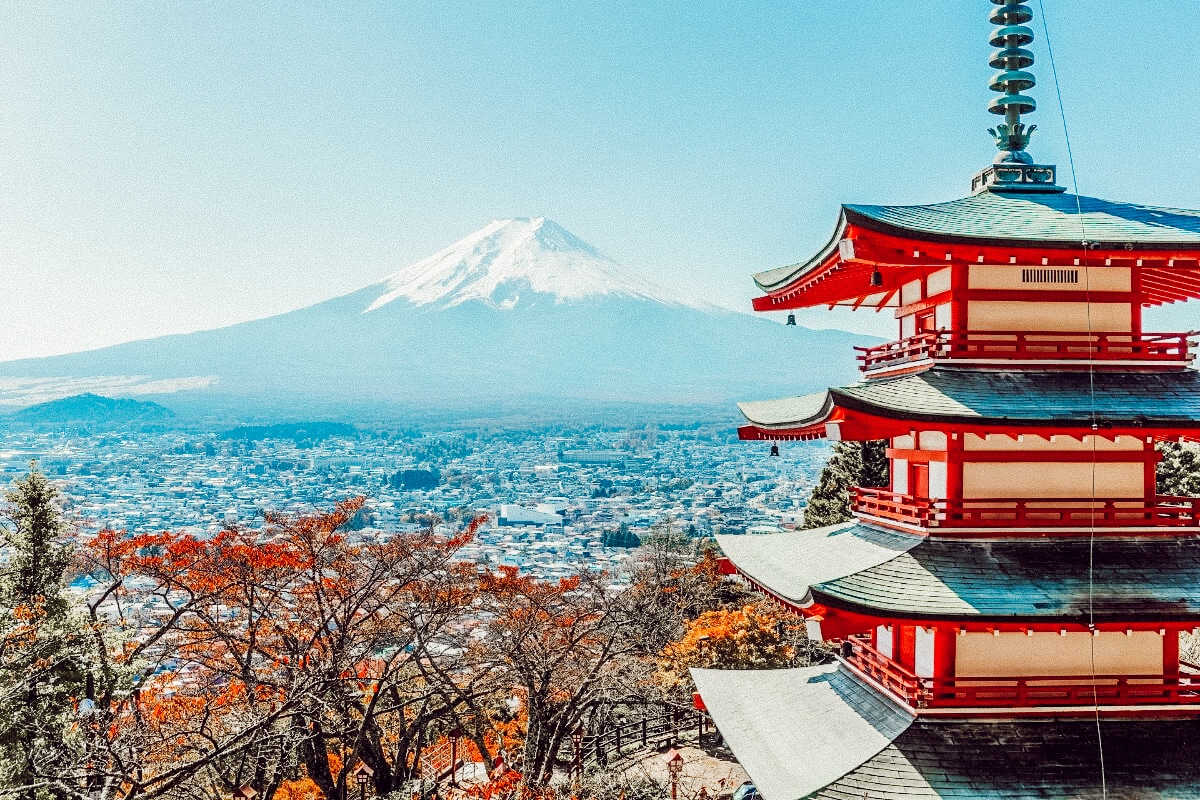
7 Days in Japan: The BEST 7 Day Japan Itinerary for First Timers
Planning a one-week trip to Japan? This 7 Day Japan itinerary has everything you need to know! From the serenity of Mount Fuji to the chaos at the Shibuya Crossing, Japan strikes an incredible balance between traditional and modern.
I got the chance to spend 5 weeks living and working in Japan in 2019/2020 when I worked for Universal Creative. During that time I learned SO much about Japanese culture, including customs, food, work life, and more! Then I took everything I learned and packed it into this epic 7 day Japan itinerary!
For a trip to the Land of the Rising Sun , I recommend at least 7 days in Japan to be able to see the most iconic sites! In this itinerary, you’ll split your time between Osaka and Tokyo, with a few day trips to other areas sprinkled in!
Note: This post contains affiliate links. If you click an affiliate link or book through an affiliate program, I receive a small commission at no cost to you!
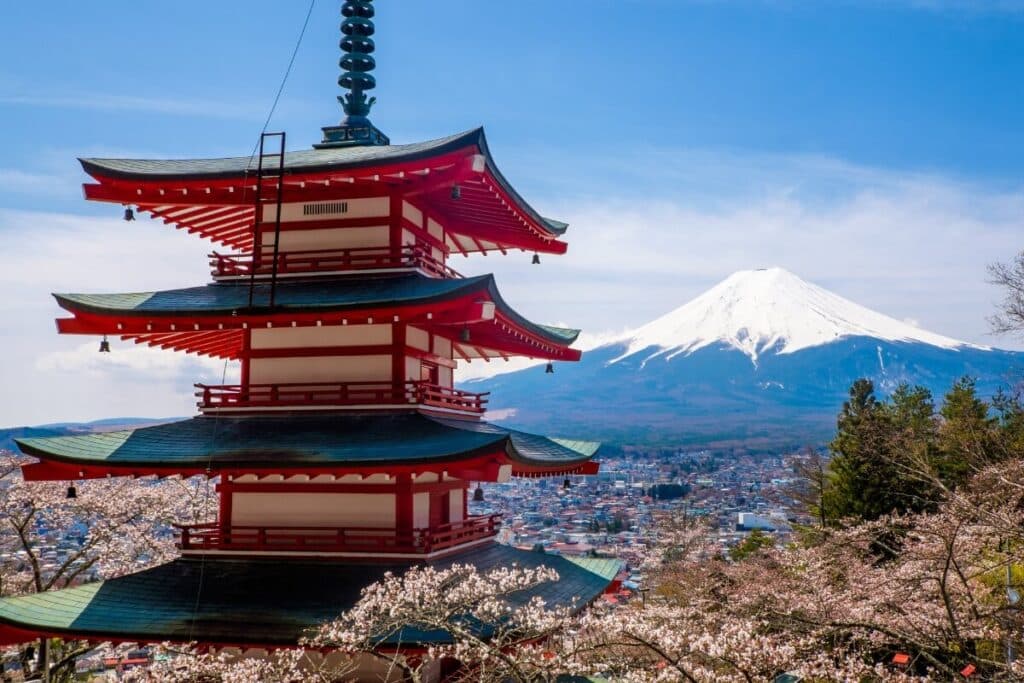
The BEST 7 Day Japan Itinerary for First Timers
If this is your first trip to Japan, you are in for an EPIC week! Here’s a quick look at what you can expect in this 7 Day Japan itinerary.
- See the bowing deer in Nara
- Explore Osaka Castle
- Partake in a Geisha Tea Ceremony in Kyoto
- Shop and eat your heart out in Dōtonbori and Namba
- See the famous Shibuya crossing
- Take in the splendor of Mount Fuji
- Visit incredible temples
- Embrace Shinjuku and Harijuku
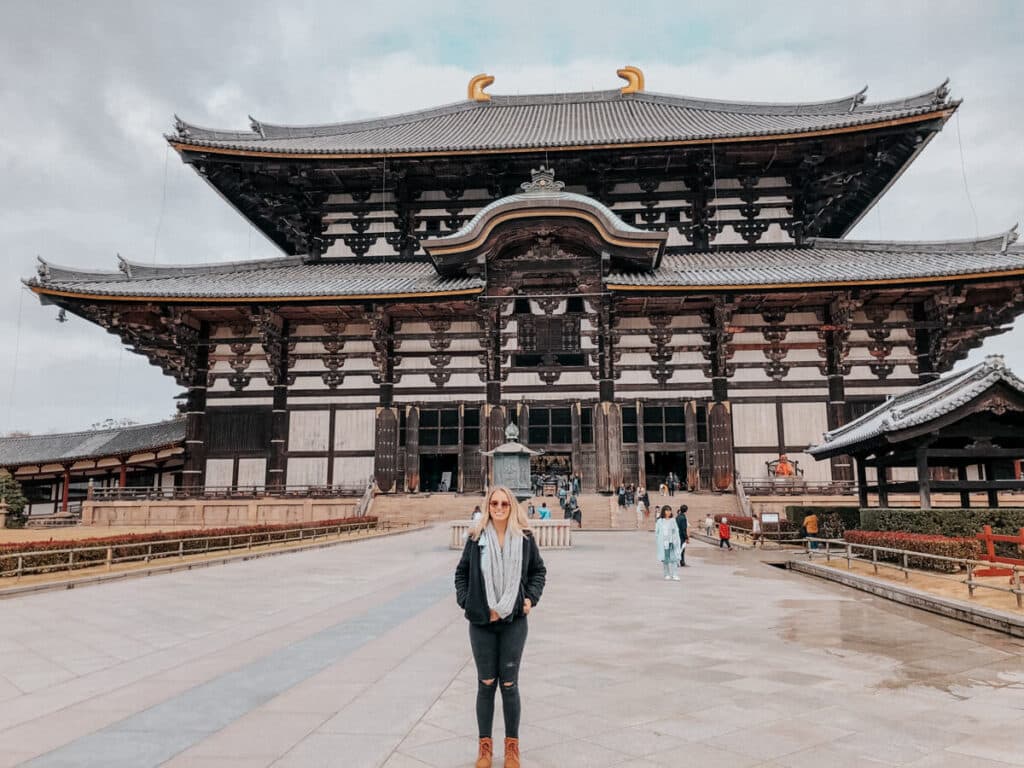
Days 1-4: Osaka, Kyoto, and Nara
Getting to osaka.
This 7 day Japan itinerary begins in the city of Osaka, so you will fly into Kansai International Airport (KIX). There is also Osaka International Airport (ITM) . However this airport only services domestic flights so you would need to connect in Tokyo to fly into here.
At the end of this trip, you will be leaving from Tokyo and will likely be flying out of Narita International Airport (NRT). If you have to book roundtrip tickets out of the same airport, you can choose either Osaka or Tokyo, whichever is cheapest! Then, just take a train or fly between the two at the end of the trip.
Getting to Your Hotel
Once you arrive in Osaka, you can either take a cab, a bus, or a train from the airport, which is located about 30 miles from the center of Osaka. This will depend on where you are staying, your preferences, and your budget. Taxis are the quickest but also the most expensive (at least $100).
If you are staying near Namba Station or Osaka Station , the airport limousine bus is only ~$15 USD, has free wifi, and has frequent routes. The timetable for the airport bus can be found here . You can also reach out to your hotel to see what they recommend or if they offer private transfers!
Pro Tip: This article from Inside Osaka goes over exactly how to use Osaka public transportation, which will be extremely useful for your trip!
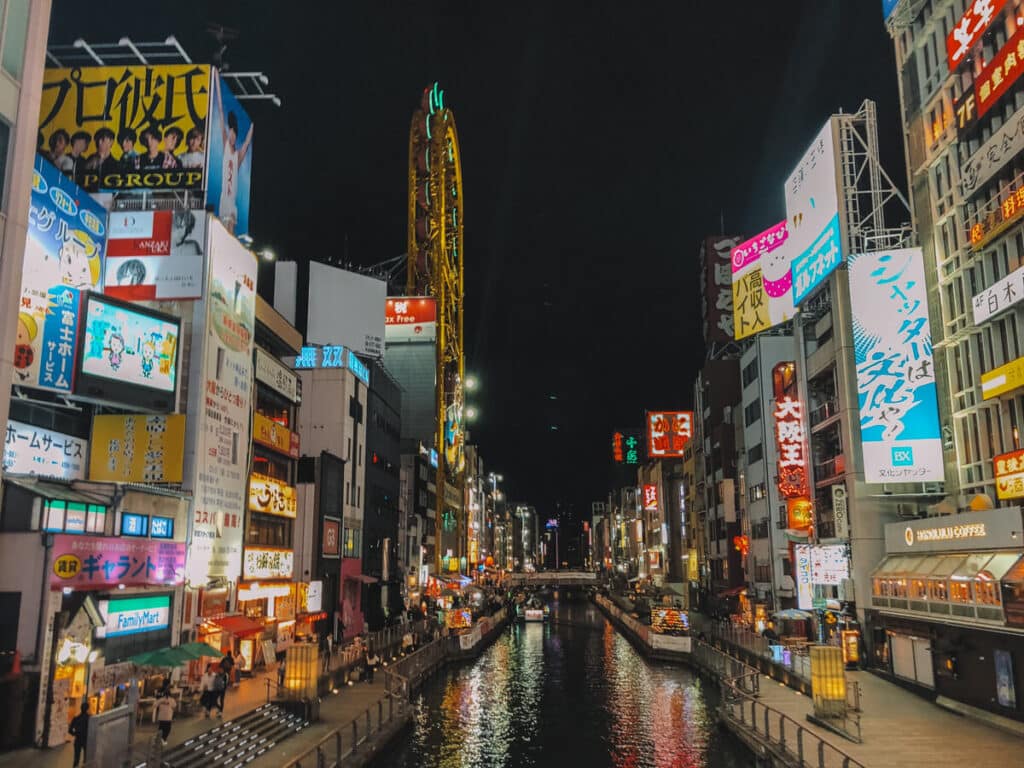
Where to Stay in Osaka
Speaking of, let’s talk about where you should stay during your time in Osaka! There are a few different areas around the city that make great spots for first timers.
My top recommendation is the Kita/Umeda area . As highlighted on the map below in orange, this area is perfect for exploring all of Osaka. There is plenty of incredible restaurants, bars, and activities nearby, and it’s also right next to Osaka Station (one of the busiest train stations in Japan!).
Another great option is to stay in the Namba/Dotonbori area , which is basically like the Times Square of Osaka! It is a popular tourist district along the river, again full of plenty of restaurants and nightlife.
Day 1: Explore Osaka
Today is your first full day in Japan! Osaka is an incredible city, Japan’s second largest after Tokyo! The city is bustling with things to do, so you won’t be bored here. Here are the highlights around the city to choose from:
- Shinsaibashi-suji Shopping Street
- Shochikuza Theatre
- Osaka Aquarium
- Universal Studios Japan
- Namba Yasaka Shrine
- Shitennoji Temple
- Namba Yasaka Shrine
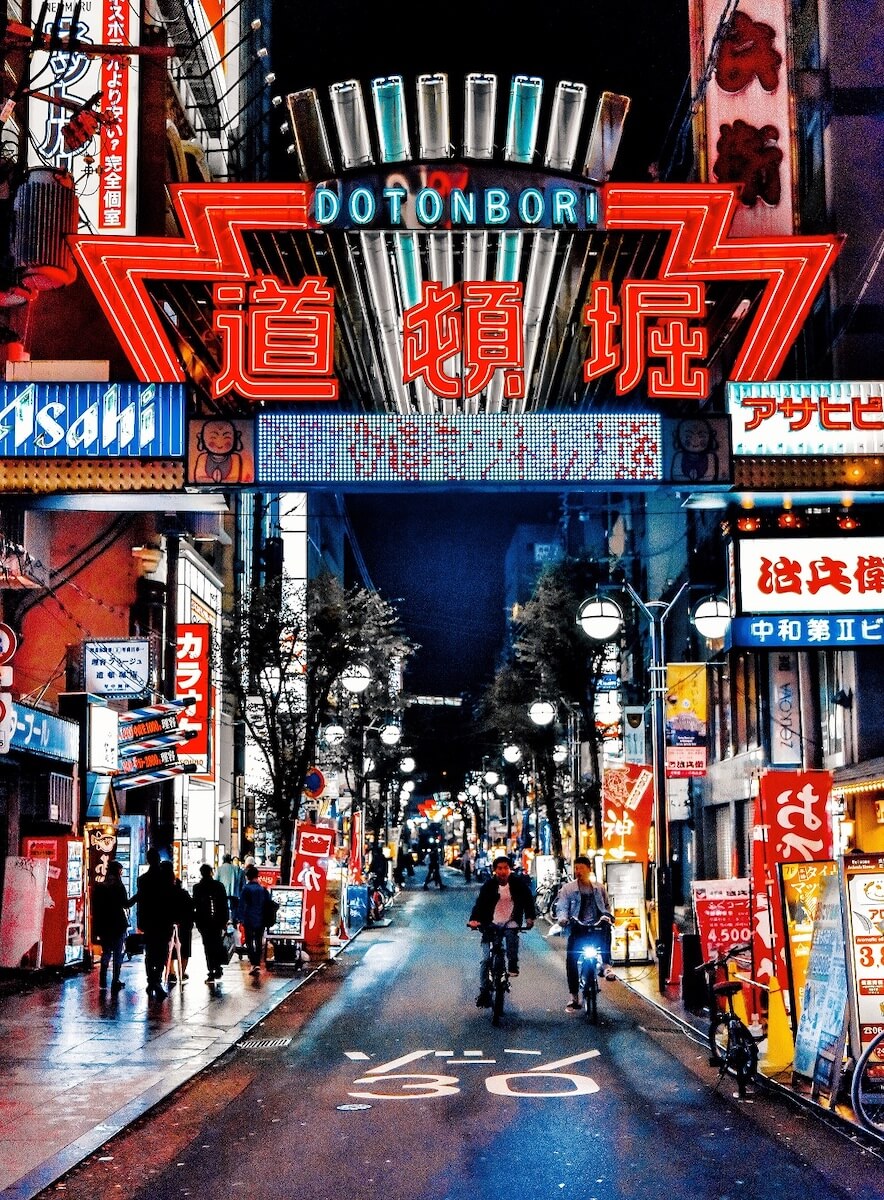
Most importantly, make sure you check out all of the amazing food in Osaka – it’s a foodie paradise! The term “kuidaore ” is associated with this area and sums it up pretty well – it basically means “eat ’til you drop!” Some must-try foods include Okonomiyaki, Kushikatsu, and Gyoza!
Day 2: Day Trip to Kyoto
On your second day, you’ll be making a day trip to the nearby city of Kyoto ! Kyoto, which was once the capital of Japan, is full of rich culture, temples, and history. The best way to get here from Osaka is by train. You can take a shinkansen (bullet train!) from Shin-Osaka Station which will get you there in only 15 minutes for less than 15 dollars!
This is the fastest and most comfortable method, but there are also other slower and cheaper trains! Whichever train you take, your final destination should be Kyoto Station. Make sure you get an early start so you can do as much as possible in Kyoto!
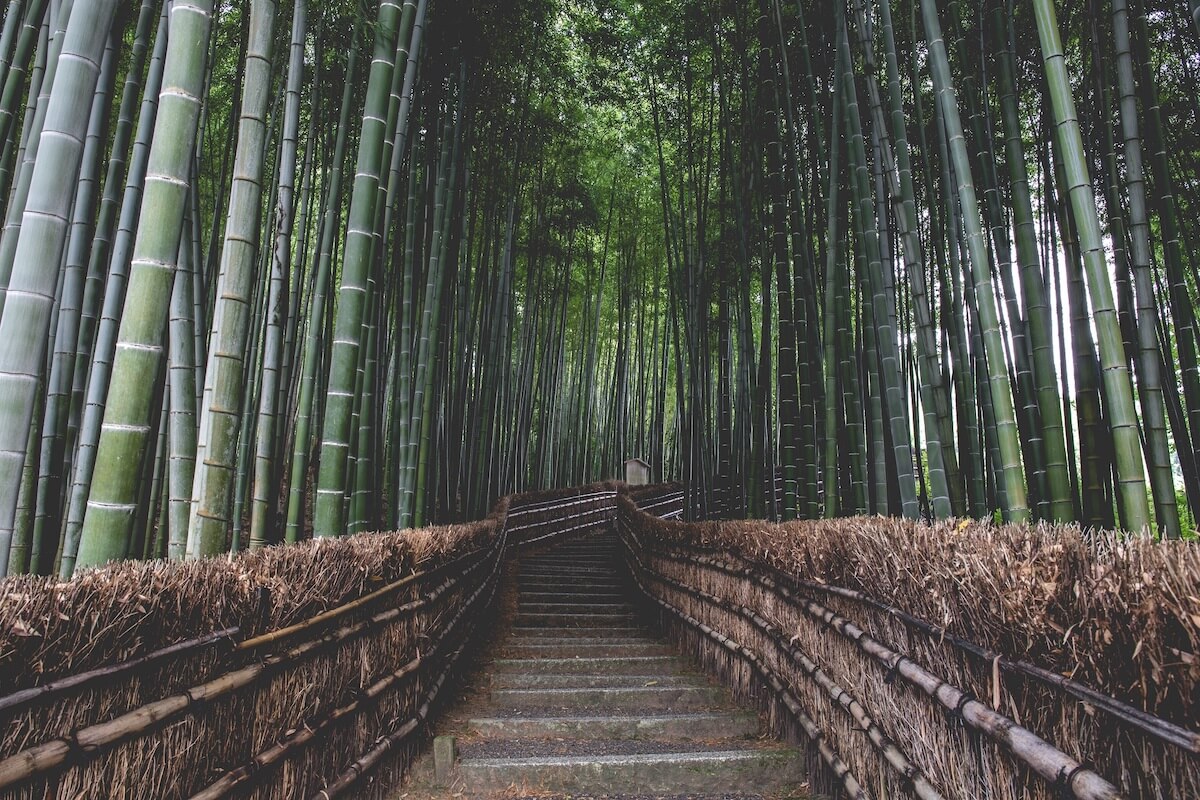
Kyoto is an incredible city full of rich culture and unique architecture! It was Japan’s capital and the residence of the Emperor from 794 until 1868, so it has a very strong history. Here’s a list of places to visit during your day in Kyoto:
- Fushimi Inari Shrine
- Nishiki Market (Kyoto’s Kitchen)
- Kiyomizu-dera Temple
- Arashiyama Bamboo Forest
- Arashiyama Monkey Forest
- Yasaka Street / Higashiyama District
- Geisha (Maiko) Tea Ceremony
If all of this sounds overwhelming to plan, you can also take an organized tour from Osaka and let someone else coordinate all the details! GetYourGuide has some great options.
Day 3: Osaka Castle + Kita Bar Hopping
I’ve included another day in Osaka in this 7 Day Japan itinerary so you can explore some other parts of the city: my personal favorite being Osaka Castle .
To get here, hop on the (JR West) Osaka Loop line and get off at Ōsakajōkōen Station . Once you arrive, you can just follow the crowds to the castle. The castle looms high in the sky, and there are so many amazing views on the walk up.
The grounds of the castle are free to the public; however, if you want to go inside and visit the museum and the observation deck, the cost is 600 yen (less than $6 USD) . Spend your morning exploring the castle and the surrounding park, which covers about two square kilometers and is especially beautiful in the spring and fall.
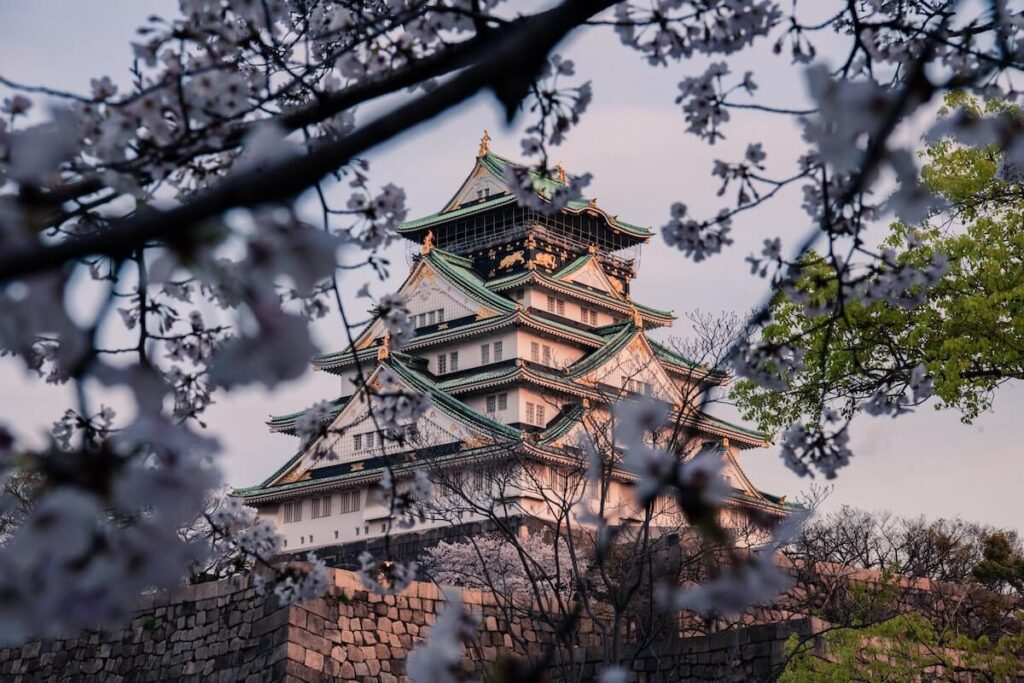
Head back to Osaka, and once the sun goes down, head over to Kitashinchi, about a 10-minute walk south of Osaka station. This is one of the most famous areas in Osaka for nightlife. Full of narrow streets and alleys packed full of tiny bars, delicious ramen restaurants , and some fancy nightclubs, this area is a must do while in Osaka.
You’ll also see a lot of business men entering some of the nice clubs with pretty girls outside them. Don’t forget to try some shochu or sake while you’re here!
Got Asia on your mind? Don’t forget to check out my other Asia itineraries, like 10 days in Thailand or 7 days in Bali !
Day 4: Day Trip to Nara
Today you will be journeying outside of Osaka to the nearby city of Nara, Japan. As Japan’s first capital, Nara is full of some of Japan’s oldest temples and remains a popular spot for locals and tourists alike. To get here, I recommend taking the Kintetsu Nara Line from Osaka Namba station, which will get you to the center of Nara in 40 minutes for around 500 yen. If you have a Japan Rail Pass, you should take the JR Yamatoji line from Osaka Namba station.
Once you arrive, follow the crowds up the hill to Nara Park. As you make your way away from the train station, you will start to notice all of the wild deer wandering through the streets.
The deer in Nara are a cultural symbol of the city and are considered messengers of God. If you bow to the deers, some will even bow back! If you want to feed them, you can find deer crackers for sale at stalls around the city, but make sure to not taunt the deer with food (they are still wild animals).
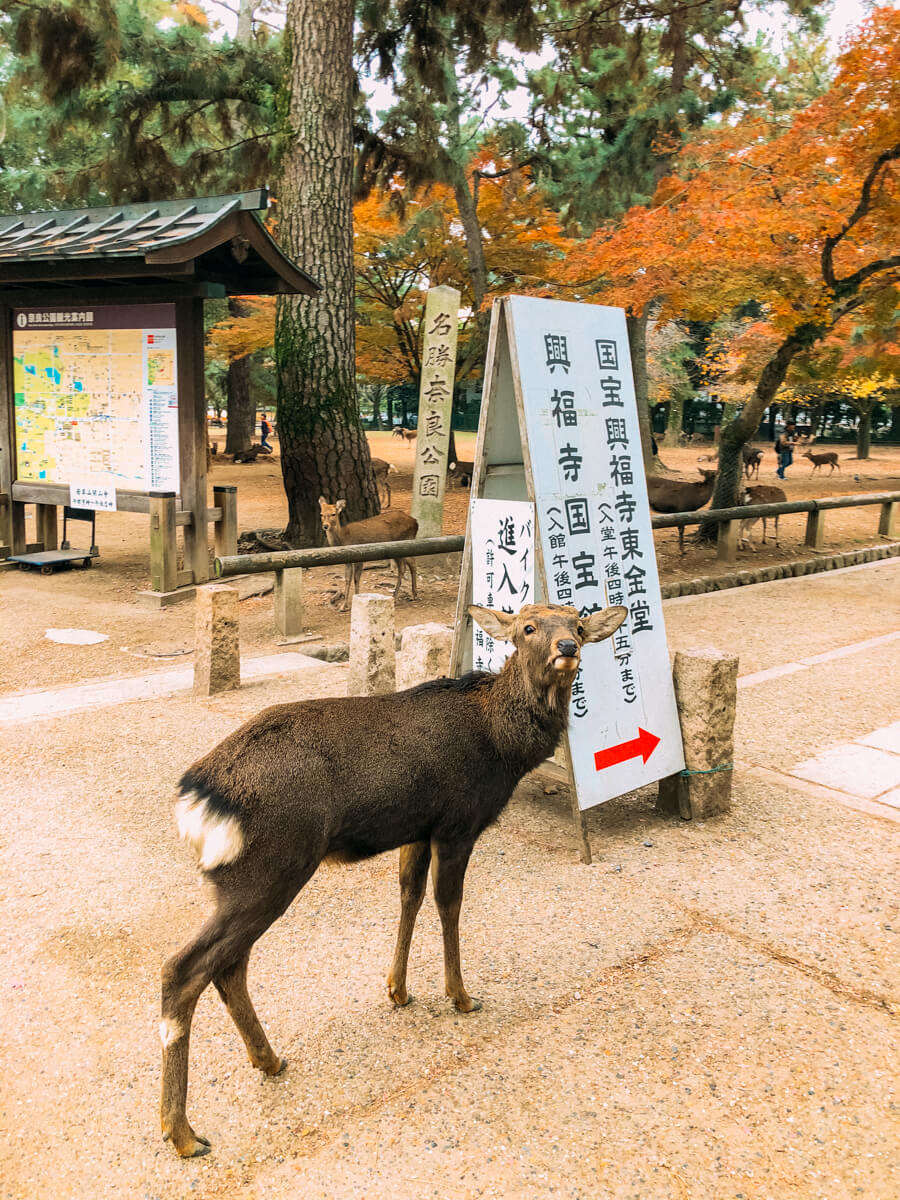
Spend your day exploring the many temples, shrines, gardens and parks in Nara. Be prepared to do lots of walking! There are tons of temples to see, but below are the ones you shouldn’t miss. For lunch, check out the historic district of Naramachi.
- Todaiji Temple
- Yakushi-ji Temple
- Horyu-ji Temple
Days 5-7: Tokyo
In the second half of your 7 day Japan itinerary, you will head northeast to the country’s bustling capital of Tokyo . There is obviously no shortage of things to do in Tokyo! From historical temples to busy streets, you could easily spend a week here.
To get here from Osaka, I recommend taking the Shinkansen bullet train, which will get you there in under 3 hours! Incredible right?! This is covered by your Japan Rail Pass 🙂 You’ll arrive at the bustling Tokyo Station!
Where to Stay in Tokyo
Like I mentioned, Tokyo is a HUGE city, which means there’s a ton of places to stay. If this is your first time visiting Japan, I recommend staying in either the Shibuya or Shinjuku area. These two “wards” are both part of Tokyo’s metropolitan district and have a multitude of restaurants, shops, bars, and more to choose from.
Aside from the area, one of the most important things to consider when choosing a hotel is proximity to the Tokyo Loop Line. This line, formally called the JR Yamanote Line, is the most common train loop in Tokyo and hits all the major areas throughout the city. You will want to stay near a station for convenience! Plus, your Japan Rail Pass will work on this line!
Days 5 & 6: Exploring Tokyo
I recommend at least 2 full days in Tokyo to see and do it all. Here’s a list of the highlights around the city. For convenience, you can spend one day exploring the east side and one day exploring the west side!
- Sensō-ji Temple
- Nakamise Shopping Street
- Tokyo Skytree
- Tsukiji fish market
- Shibuya Crossing
- Golden Gai (Bars)
- Shinjuku Gyoen Garden
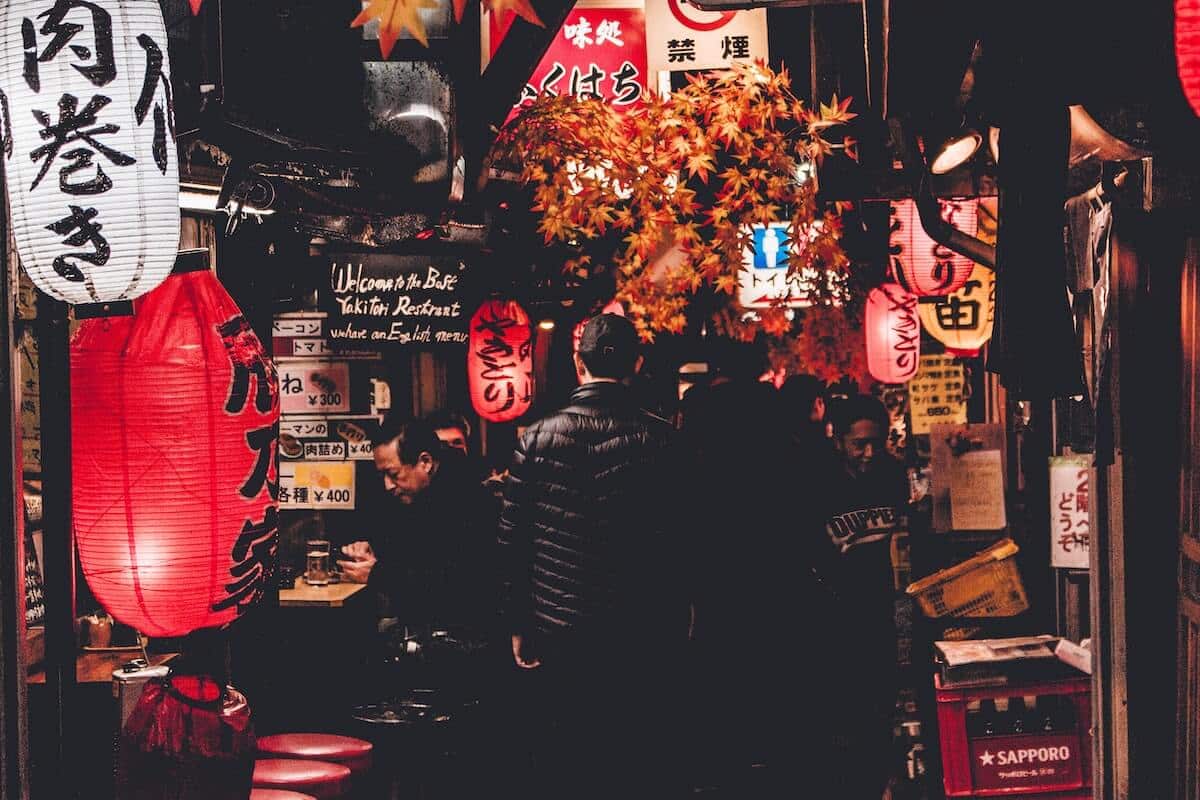
Day 7: Day Trip to See Mt. Fuji
With 7 full days in Japan, I highly recommend taking a day trip from Tokyo to see the glorious Mount Fuji , Japan’s tallest mountain (which is actually a volcano). To get to the area from Tokyo, there are a few different options (including taking a Shinkansen using your JR Pass). If you decide to go via train, expect to have to make at least one connection to get to your final destination for exploring the areas around Mt Fuji.
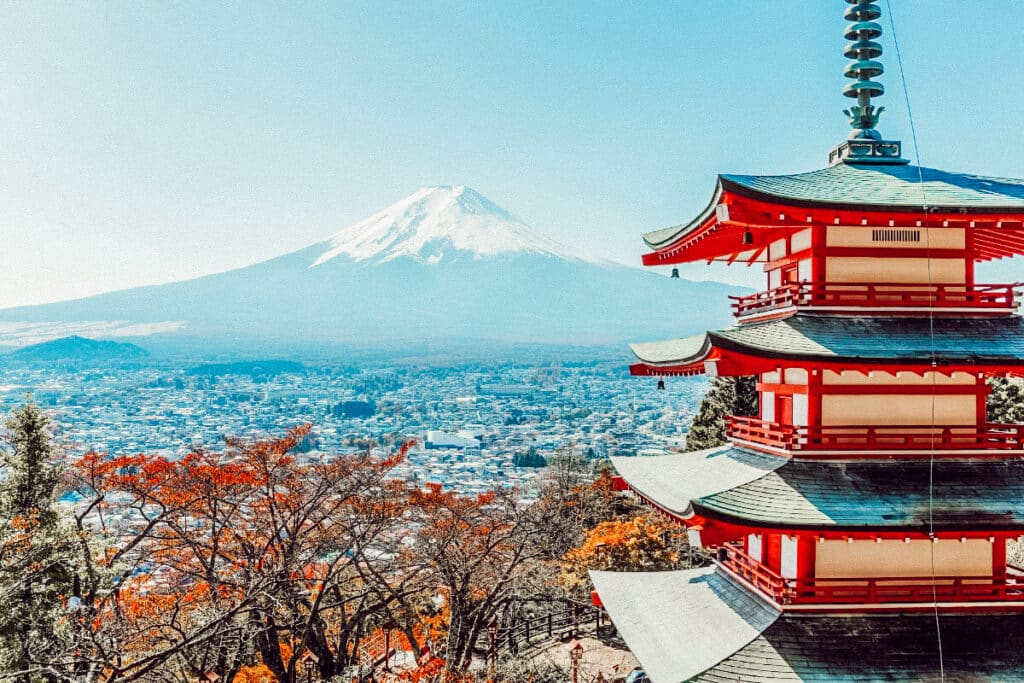
There’s plenty to do in the area, like wandering around Fuji-Hakone-Izu National Park and Lake Ashinoko . You can even hike Mount Fuji if you’re visiting in the summer. Again, if you don’t feel like planning, there are tons of organized tours from Tokyo that you can book on GetYourGuide .
Final Thoughts
That wraps up my Ultimate 7 Day Japan itinerary for first timers! If you’re planning a trip to Japan, I hope this itinerary helped show you all of the incredible places there are to visit. There is so much to see and do in Japan, 7 days really only scratches the surface!
If you have longer than 7 days for your trip to Japan, I recommend staying overnight in Kyoto and again near Mount Fuji. You can even check out a traditional Onsen resort!! Japan is truly one of the most unique countries I’ve ever visited, and I know you will love it too!
Don’t forget to pin this post for future planning!
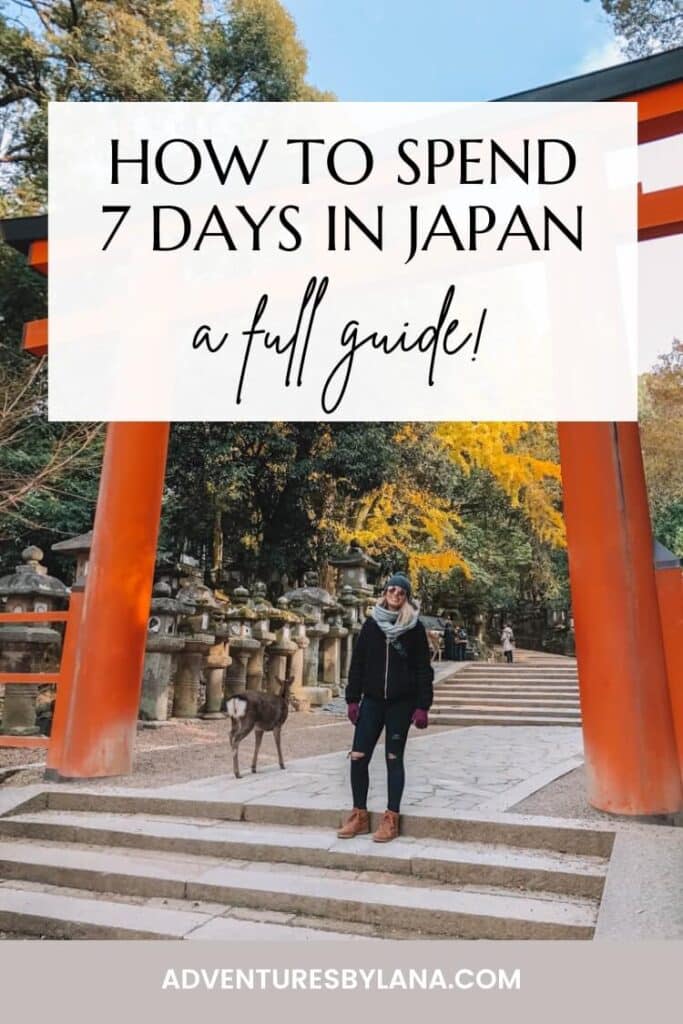
Similar Posts

15 Photos to Inspire You to Visit the Greek Islands
Here are 15 photos to inspire you to visit the Greek Islands! In my opinion, a visit to the…

3 Days in Santorini: The Ultimate Santorini Itinerary & Guide
Planning a trip to the Greek Islands and not sure how to fill your Santorini itinerary? Santorini, with its…
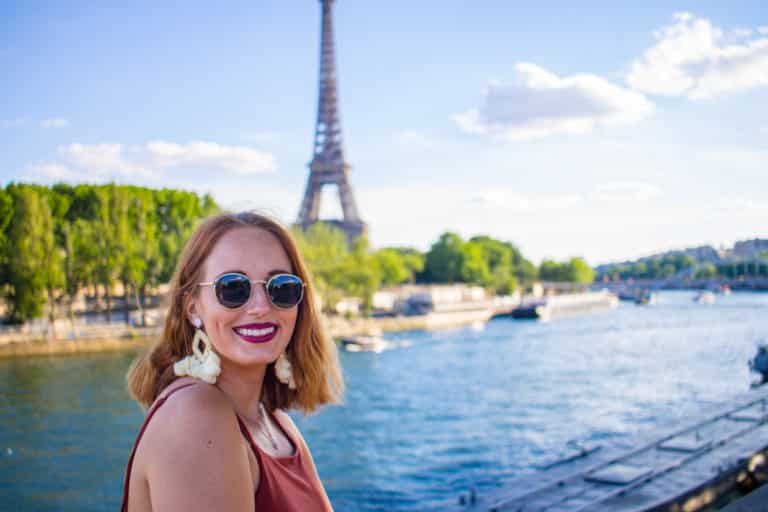
Visiting Paris for the First Time: 10 Things to Know!
Ahh, Paris. I visited for the first time in 2012 with my family and didn’t return for 10 years!…

The ULTIMATE Milos Travel Guide: Everything to Know
Are you planning a trip to the Greek Islands and looking for more information on Milos, Greece? With its…

Day Trip from Paris to Versailles: A Complete Guide
Have you ever dreamt of stepping into the world of French royalty and wandering among exquisite gardens? A day…
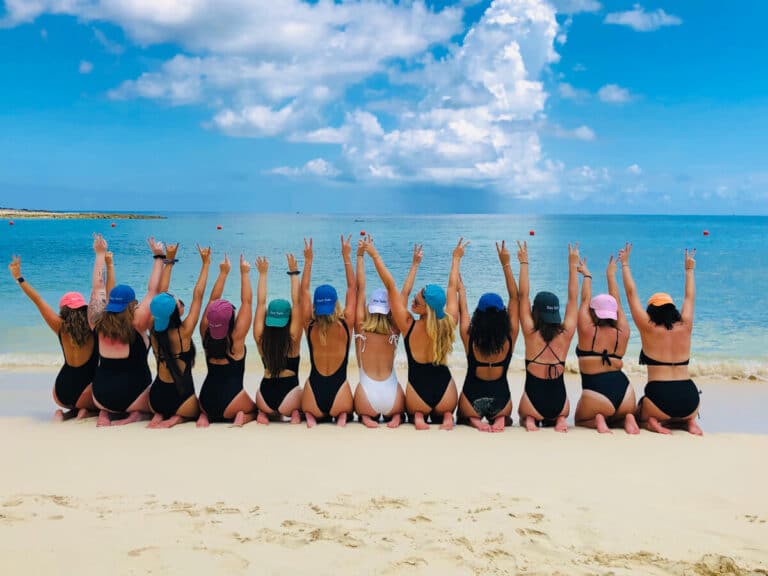
How to Plan a Bahamas Bachelorette Party at the Atlantis Resort
Looking for a tropical destination for your upcoming bachelorette party? Look no further than the Atlantis Resort on Paradise Island in the Bahamas. Keep reading for a full weekend itinerary for the perfect Bahamas Bachelorette Party!

4 Best Japan 7-Day Itinerary Suggestions For First Timers (2024 Guide)
By: Author Sylvia
Posted on Last updated: January 23, 2024
Looking for the best Japan 7-day itinerary suggestions? You came to the right place.
Japan is one of the most exciting places to travel to.
With the combination of history, culture, and awesome new technology, Japan is right up there on the list of every kind of traveler.
Are you planning a trip to Japan and having trouble figuring out your Japan itinerary? We can’t blame you.
With so much to see and do, it can be hard to decide how many different cities to try and visit, which cities to visit, which attractions to prioritize, and more.
Here we share an overview of the best 7 days Japan itineraries.
There is a really good chance that this post contains affiliate links. If you click one of them, we may receive a small commission (for which we are deeply grateful) at no extra cost to you.
Table of Contents
Japan Essentials
We almost always find the best flights to Tokyo and Osaka on Momondo . It may be worthwhile to compare these with Skyscanner and a new but promising flight aggregator, WayAway .
Don’t lose time upon arrival at the airport and order your Japan travel SIM or portable WiFi device in advance so that it’s ready and waiting for you at the airport when you arrive.
Having a Japan Rail Pass is often the cheapest way to travel around Japan.
Check out our ultimate Japan travel blog where you can find many more interesting Japan articles to prepare for your trip.
Need help with your Japan trip planning? Check out this post on how to plan your trip to Japan.
Insider tip: Is this your first Japan trip and are you feeling a bit overwhelmed about planning this trip, what to see, and what to do in Japan? Check out our Japan travel planner. This document will help you plan your trip smoothly.

Best 7-day Japan Itinerary Suggestions
As already mentioned, here we have some of the best Japan 7-day itineraries to help you out.
Planning a trip to Japan can be quite a daunting task, especially for first-time visitors.
Our 7-day Japan itineraries will help you narrow down the best way to see and enjoy Japan in just one week.
Option 1: Spend 7 days in Tokyo
Our first itinerary option appears the simplest – a full 7 days in Tokyo – but it will be anything but bland.
There are plenty of things to see in Tokyo. There’s plenty of food to try, and new experiences to unlock. This 7-day Tokyo Japan itinerary will surely cover so much.
This option also eliminates the need for long-distance travel between various cities. So, no multiple check-in and check-outs for different accommodations.
But what to do during those 7 days? Here are our recommendations.

Start out strong by visiting some of the most well-known districts in Japan with Shinjuku.
This is a very popular metropolitan area and is ideal for your first day in Japan.
Visit the impressive and futuristic Tokyo Metropolitan Government Building and observe the city from one of its multiple observation decks.
You can also spend time in the massive Shinjuku Gyoen Park, Tokyo’s largest park and popular picnic spot.
This is also one of the best places to watch the cherry blossoms in Tokyo.
How to Get There
Shinjuku-gyoenmae subway station is about 5 minutes away from the Shinjuku entrance.
Shinjuku Gyoen garden is also within walking distance of the large central Shinjuku station where both JR lines, as well as the metro (Tokyo Metro and Toei lines), stop.
Best Japan Travel Apps for a Stress-Free trip.

Kabukicho and Golden Gai
Kabukicho and Golden Gai are both strong contenders for the evening with Golden Gai being well-known as the home of unique, small, sometimes exclusive bars and eateries.
This is highly recommended as a place to visit to experience authentic Japanese hospitality.
Kabukicho is generally considered one of the top nightlife areas in Tokyo with a wide array of bars, nightclubs, restaurants, and everything in between.
Don’t forget to pay a visit to Piss Alley. Strolling through these 2 narrow alleys next to Shinjuku station will give you the feeling you are in a Japanese mafia movie.
Shinjuku station is the closest station to Kabuchiko. It is served by several JR lines and both Tokyo Metro and Toei lines.
Piss Alley is really close to the West Exit of Shinjuku train station. The two alleys run parallel to the tracks. You will see the entrance on your right if you face the Shinjuku Dai-Guard train bridge.

Shibuya
From here we recommend Shibuya, home to the world-famous scramble crossing.
It is also home to the statue of Hachiko, a dog loved by the entire nation and a representation of loyalty.
There are a number of buildings around the scramble crossing from which you can look down and people-watch.
The most popular of these is the Starbucks overlooking the crossing.
A more pricey but quieter option is the L’Occitane café opposite.
From here we can move on to Harajuku, Tokyo’s pop culture capital.
Takeshita Street is the famous ‘kawaii’ center of Tokyo with plenty of brightly-colored fashion shops, foods (rainbow fairy floss is the current favorite), and more.
If you prefer a more high-end, designer style, Omotesando is just outside of Takeshita St and is home to a number of designer brand flagship stores.
Harajuku is also ideally located to walk through Yoyogi Park and Meiji-jingu Shrine.
Meji-jingu Shrine is one of the largest shrines in Tokyo despite being one of the newer shrines.
It is surrounded by a large forest and Yoyogi Park, which is great for wandering through as it is regularly populated by dancers, musicians, and more.
Shibuya station is right underneath this crossing. Take the Hachiko exit.

A common recommendation of where to go in Tokyo from Japanese people is Asakusa.
This area is home to the very impressive Sensoji Temple, one of the oldest temples in Tokyo.
This is also the location of the Kaminarimon Gate, the extremely large lantern gate which appears in many iconic Tokyo photos.
The temple is surrounded by a number of shopping streets.
Many of these shops sell traditional street foods, while others sell various souvenirs.
Due to this being a touristy area, this isn’t the best place to buy souvenirs as the prices tend to be higher than you find in other areas.
Take the Ginza or Asakusa metro line to Asakusa station. It’s a short 2-minute walk from the station to the entrance gate of the Nakamise shopping street.

After the hustle and bustle of the crowds around Asakusa, Ueno Park is an ideal way to relax and enjoy the greenery.
If you’re interested in zoos, Ueno Park also houses Ueno Zoo , home to some of the few pandas in Japan.
There are also a number of museums in Ueno Park, such as the Tokyo National Museum, Tokyo Metropolitan Art Museum, and more.
However, if you’re not interested in zoos or museums, don’t worry because Ueno Park still has plenty to offer.
Tokyo Skytree is a great way to end the day with panoramic views over the Tokyo night sky.
There are two main observation decks to choose from in Skytree.
Note that the lines are often very long so we recommend you book skip-the-line tickets. These are currently cheaper when bought in advance than on-site.
Check prices and availability: Tokyo Skytree Tickets
Ueno station is a major hub of JR and is also served by the Ginza and Hibiya metro lines.

Tokyo Disneyland & Tokyo DisneySea
At this point, you might be ready for something a bit different.
Here is where we take what is technically a day trip from Tokyo.
Tokyo Disney consists of Tokyo Disneyland and Tokyo DisneySea but is actually located in the neighboring prefecture of Chiba.
Tokyo Disneyland is similar to many other Disneyland parks, with a few unique Japanese quirks, while Disney Sea is larger and more catered to an adult audience.
Whether you choose to visit just one or both parks, Disney makes for a big day out.
Take the JR Keiyo or JR Musashino lines to Maihama Station. This is fully covered by the Japan Rail Pass . At Maihama station you can change to the Monorail that will take you to the entrance of Disneyland or DisneySea.
Check prices and availability: Disney Tickets
Note that the Monorail is not included in the price of your entrance ticket and is only free for overnight guests to the park. You can also walk from the JR station to the entrance of the parks. For Disneyland, this would be the best option as the entrance is really close by and only a 5-minute hike. DisneySea would approximately be a 15-minute hike.
Private transfers are also available for those who are looking for a comfortable ride to and from Disneyland or DisneySea .

If anime or manga is part of your motivation to visit Japan, you will likely be interested in visiting Akihabara, an area often considered the heart of anime/manga culture in Japan.
This area is home to many shops, big and small, providing all types of anime and manga goods you can imagine.
Even for those not interested in anime or manga, just seeing the sheer variety can be interesting.
Akihabara is also known as Electric City due to the many electronics stores in the area.
While this reputation was gained in the 90s, there are still a good number of these electronics shops around.
This is ideal for anyone interested in the latest electronic gadgets, or for anyone interested in just browsing and seeing some unique niche electronic items.
It is easy to spend an entire day shopping around Akihabara, but if you’re looking to move, the Imperial Palace is a great next stop.
Take the JR train to Akihabara station.
This station is also served by the Hibiya metro line.

Imperial Palace
A short train ride and a 10-minute walk bring you to the Imperial Palace and its amazing gardens.
The East Gardens, Kokyo Gaien National Garden, and the Kitanomaru Gardens are open year-round and provide a welcome respite into nature in the busy city.
The inner grounds are only open to the public during cherry blossom season and select other dates.
For an exploration of various parts of Japanese history, a visit to the Japanese Sword Museum is a great choice.
Sword-making, and as an extension knife-making, is a proud Japanese tradition and a good sword or knife is considered the work of a craftsman.
Learning about the skill and techniques needed to create these swords is an interesting experience. This is also close to the sumo area of Tokyo, Ryogoku.
Take the JR train to Tokyo station.
This station is also served by the Marunouchi metro line.

Sumo Wrestling, Ryogoku Kokugikan Stadium & Edo-Tokyo Museum
If you are in town during the sumo season – January, May, and September – you can easily book tickets to watch a sumo match at the traditional Ryogoku Kokugikan Stadium.
When and where to buy tickets
Tickets for grand tournaments go on sale at least a month in advance and you can buy them online.
Keep in mind that sumo tickets are not cheap and if you don’t want to end up in nosebleed seats you might need to dig deep in your pocket, but if you can swing it, you won’t want to miss watching sumo in the Ryogoku Kokugikan.
If you will not be traveling to Japan while there is a professional tournament, some sumo stables (houses where wrestlers train and live together) allow visits to view their morning practice sessions.
The sumo stadium is easy to reach, especially if you are using the JR line. JR has a station right at the entrance of the stadium, the Ryoguku station.
You can also get there with the Oedo subway line. The station is also named after the stadium, it is also really close by, but requires a slightly longer walk.

Edo-Tokyo Museum
Next to this stadium is the Edo-Tokyo Museum, another interesting and unique museum.
This museum focuses on the Edo Period of Japan (the 1600s to mid-1800s) but does feature some exhibits closer to the modern-day.
The exhibits are designed to be engaging and interesting in an entertaining way, rather than statically sitting behind glass.
These engaging exhibits, along with the helpful and informative guides make this museum a must-see if you are interested in Japanese history and a great visit even for beginners to Japanese history.
The museum is right next to the stadium.
Take the JR or Oedo line to the Ryoguku station.

Studio Ghibli Museum
For lovers of Studio Ghibli films, the Studio Ghibli Museum in the Tokyo suburb of Mitaka is a must-visit.
This museum commemorates everything about the whimsical, charming films of Hayao Miyazaki with a range of interesting exhibits.
Original works that have never been published are displayed, along with early drafts of some of Miyazaki’s most famous works.
There is also an on-site café and shop.
However, the museum has a number of rules, one of which is no photos.
When googling this museum, you can only find official photos.
This isn’t for copyright reasons, but rather to maintain the wonder of seeing the art and exhibits for the first time for all visitors.
It is very popular so tickets are only sold in advance and they are sold months in advance, so you need to be very organized about buying tickets for this museum.
From Shinjuku station: Take the JR Chuo Line to the JR Mitaka station.
From the south exit of JR Mitaka Station, it’s a 15-minute walk to the Museum.

Gotokuji Temple
Another flight of whimsy is Gotokuji Temple or the lucky cat shrine.
This shrine is littered with hundreds, if not thousands of ‘maneki-neko’ or lucky cats. It is said to be the birthplace of the very popular figure of the lucky cat.
This shrine is often quiet, making it ideal for avoiding crowds, but it is also one of the more unique shrines in Tokyo.
The temple is located in the area of Setagaya.
From Shinjuku station, it is a 15-minute train ride and a 10-minute walk to the shrine.
Tokyo Travel Tips
Tokyo is full of interesting and unique ways to learn about Japan and its culture, as well as fun experiences to have regardless of your interests.
Tokyo itineraries
For more details about some of these locations as well as some further suggestions, see our Tokyo itinerary posts:
- 4 days in Tokyo
- 5 days in Tokyo
- 7 days in Tokyo
Where to stay in Tokyo
Shinjuku is a great place to stay for first-timers.
- Luxury Hotel: Park Hyatt Tokyo
- Premium Comfortable Hotel: Hilton Tokyo
- Comfortable Hotel: Hotel Gracery Shinjuku
Here is an overview of the best areas to stay in Tokyo.
If you prefer staying in an Airbnb or vacation rental, check out these posts:
- Best Airbnb in Tokyo
- Best Airbnb in Tokyo for families
If you are looking for something special, check out this list of cool hotels in Tokyo.
For those that prefer staying in a ryokan with a private onsen in Tokyo, check out this post.
Public Transport in Tokyo
Looking for the best way to travel around Tokyo? Check out this post in which we share the different possibilities.
Wondering what else Tokyo is famous for, click here.

Option 2: Osaka, Kyoto, Hiroshima, and Nagasaki
Day 1-2: osaka.
Osaka is generally considered the second most popular and famous city, ranking second to Tokyo.
Osaka is home to a wide range of attractions, both old and new, combining to form a unique atmosphere.
Two days is usually enough to see the top sights of Osaka without feeling too rushed.
Some of these sights include Osaka Castle, the pride and joy of Osaka. Osaka Castle was first built in 1583, but has since been destroyed and rebuilt multiple times.
It now houses a small museum that provides some relevant history as well as genuine artifacts.
Osaka Castle
Osaka Castle is surrounded by Osaka Castle Park, a beautiful sweeping park with many picnic spots, flower viewing areas, and more.
One of the best gardens in Osaka Castle Park is Nishinomaru Garden, which is adjacent to Osaka Castle.
This garden is beautiful year-round, but especially in Spring when the cherry blossoms are blooming.
The nearest subway station is Tanimachi Yonchome Station.
You can get there with both the Tanimachi Subway Line and the Chuo Subway Line.
If you come by train you need to head to the Osakajokoen station which is conveniently located on the Osaka loop line served by JR.

Kuromon Ichiba Market and Namba
Kuromon Ichiba Market is a great place to stop for a walking lunch.
It is a historic marketplace that has been servicing Osaka restaurants and consumers for 150 years.
This is a great place to try various Osaka delicacies, such as Takoyaki or okonomiyaki.
From here, it is a short 10-minute walk to Namba where you can enjoy the lively and energetic atmosphere of Osaka.
Close to Dotonbori, one of Osaka’s most popular landmarks, and Shinsaibashi, one of the best shopping streets to explore, this area is ideal for spending an afternoon and evening.
Best Osaka Food tours
The closest metro station is Nippombashi Station. From this station take Exit 2, and walk for about 2 minutes, veering to the left, and you’ll be at the market.
The fastest option from Osaka Castle would be to first take the Tanimachi line at Tanimachiyonchome station and change for the Sen-Nichimae line at Tanimachikyuchome station.
The closest JR station is JR Namba station, it’s the terminal of the Yamatoji line. Leaving Osaka Castle you take the JR Loop Line in Osakajokoen station towards Tennoji station.
You can change trains at Tennoji station or any of the subsequent stations. From Tennoji station onwards until Imamiya Station both trains stop at all stations.

Osaka Aquarium, Tempozan Ferris Wheel, Osaka Sky Building, and Shinsekai
Osaka aquarium.
For the second day, we recommend visiting the Osaka Aquarium.
The Osaka Aquarium is very popular among domestic tourists due to its variety of fish and marine wildlife.
With 15 different tanks representing different habitats around the Pacific Rim, it is a great way to both learn about the surrounding marine areas and enjoy the beautiful wildlife.
The Osaka Aquarium is located at Osakako Station on the Chuo subway line (take exit 1).
Tempozan Ferris Wheel
It is also close to Tempozan Ferris Wheel, once the largest Ferris wheel in the world and still in the top 25.
This Ferris wheel offers amazing views over Osaka and is a great way to finish off a visit to the aquarium.
Tempozan Ferris Wheel is located at Osakako Station on the Chuo subway line (take exit 1 or 2).

Umeda Sky Building
For more spectacular views, we recommend visiting the Umeda Sky Building, home to a Floating Garden Observatory and unique futuristic design.
The futuristic building is only a 10-minute walk from Osaka station.
The observatory offers 360-degree views from the open-air deck and windows of the 39 th floor.
Osaka station, the main JR hub in central Osaka, is the closest JR station. 7 JR lines stop at this station including the Osaka loop line, the Hida line, and the Hamakaze line.
The closest subway station is Umeda Station on the Midosuji line.

In contrast with the futuristic Sky Building, the retro district of Shinsekai is a must-visit.
Largely untouched since the mid-20 th Century, Shinsekai offers a step back in time to nostalgic, retro Japan.
It is also home to Tsutenkaku Tower, once the tallest tower in Asia, and modeled after the Eiffel Tower.
Tsutenkaku has 3 observation decks at different heights.
For more details about our recommendation in Osaka, check out our 2-day Osaka itinerary here.
If you have only one day in Osaka, click here.

Day 3: Make a Day Trip from Osaka
One of the best things about Osaka is how centrally located it is within the Kansai area.
This makes it ideal to use as a base for day trips to nearby cities that don’t require a longer visit. Here we have some of the top day trips to take from Osaka.
When talking about day trips from Osaka, Nara often tops the list.
This historic city was once the capital of Japan, before the Kyoto period. There are many famous temples and shrines of great historical significance in the area.
Nowadays, Nara is perhaps more well-known for the deer which roam freely through the city.
They largely converge on Nara Park, which is conveniently close to many of the most famous temples, such as Todaiji and Kofukuji.
The deer are wild, but are accustomed to people and will approach people to beg for food. Vendors throughout the park sell deer cookies that you can feed to the deer.
Nara Park and the surrounding temples are a unique and interesting experience and are located just 30-40 minutes outside of Osaka.
For more information on day trips in Nara, see our previous post here .
If you have a Japan Rail pass, you can use the JR Yamatoji line. The trajectory is completely covered by the Japan Rail Pass, as well as the Kansai area pass, and takes about 50 minutes.
If you don’t have a JR Pass you might prefer the Kintetsu Nara Line. The Rapid Express Kintetsu train reaches Nara in only 39 minutes and the Kintetsu station is more centrally located in Nara.
Kintetsu has a faster limited express train but it costs twice as much and it only saves you 5 minutes.
The Kintetsu trains leave from Osaka Namba station.
Tickets for the JR trains ( without having the JR pass) as well as the Kintetsu trains are 810 yen.

Kobe is perhaps most well-known globally for Kobe beef, a very high grade of Wagyu beef.
However, there is much more to see and do in this interesting port city in West Japan.
Things to do in Kobe
Kobe is one of Japan’s largest port cities and has a long and international history.
It is home to one of Osaka’s largest Chinatowns, and exploring this area can be a great experience, especially if it is around Lunar New Year or another Chinese festival.
This is an ideal opportunity to take a break from Japanese food and experience some Chinese cuisine or the unique Chinese-Japanese fusion that is often served in these areas.

Ikuta Shrine
If you’re looking to experience some more Japanese culture, Ikuta Shrine is just a 10-minute walk from Sannomiya Station. This is one of the largest and most well-known shrines in Kobe.
It has ongoing popularity, partly due to its specialty in love and marriage wishes.
Mt. Rokko Or Kobe Nunobiki Herb Gardens
For some more nature, Mt. Rokko or Kobe Nunobiki Herb Gardens are great options.
Mt Rokko is located just outside the city and can be ascended either by a short cable car or a few hours of hiking. The top of the mountain offers beautiful views over Kobe and the port.
There is also a garden to stroll through at the top, as well as a café to enjoy.
The Nunobiki Herb Garden is located closer to Shin-Kobe station and offers a more European atmosphere.
This is also at the top of a mountain, with a ropeway providing access.
Throughout the area, there are various motifs of different European countries and styles.
For example, the “Welcome Garden” is designed around Wartburg Castle, a traditional German castle.
This is a unique way to explore some of Kobe’s international past. Visiting Kobe can be a relaxing experience after the crowds and fast-paced energy of Osaka.
How to Get to Kobe
Kobe is located in the neighboring prefecture to Osaka and is easily accessible by train.
If you have a JR Rail Pass, you can take a Shinkansen from Shin-Osaka to Shin-Kobe in just 12 minutes.
If you are traveling without the JR Rail Pass, or just want to take a more local train, it is just 22 minutes from Osaka Station to Sannomiya Station (a central Kobe station) on the Special Rapid train.

Kurashiki is an often under-appreciated small city located a short distance outside the city of Okayama.
Sometimes called the “Venice of Japan”, it is hard to see why so many people skip this treasure of a town.
Things to do in Kurashiki
Despite being a fairly small city, there is still a plethora of things to enjoy in Kurashiki.
The nickname, “the Venice of Japan”, largely comes from the canal area of the town, which dates back to the Edo Period (1603-1867).
These canals are meticulously maintained, as are the beautiful willow trees which line the canals.
There are a number of traditional buildings in this area that have also been carefully preserved as an homage to traditional architecture and culture.
Many of the buildings were once rice storehouses, as Kurashiki was a key rice distribution center but now serve as museums, traditional displays, teahouses, and more.
Strolling through these traditional streets, and exploring the various museums is a great way to have a quiet yet informative morning.
One of these museums, the Ohara Museum, is quite extraordinary as it houses a large collection of artworks from famous Western artists, such as Picasso, Cezanne, Monet, and El Greco.
The Japan Rural Toy Museum is another unique museum, displaying Japanese toys and cultural artifacts dating from the 1600s through to the 1980s.
How to get to Kurashiki
Kurashiki is a small city outside of Okayama so the best way to get there is via the Shinkansen to Okayama and then a local train to Kurashiki.
This trip will take about 1.5 hours.
It is also possible to travel on local trains only, however, this will take longer.
If you are still looking for an alternative day trip out of Osaka, check out our previous list of Osaka day trips .
Osaka Travel Tips
Itineraries
Here you can find our Osaka itineraries:
- 2 days in Osaka
- 1 day in Osaka
- Best things to do in Osaka at night
Where to Stay
- Where to stay in Osaka
- Best Ryokans in Osaka with Private Onsen
- Best Ryokans in Osaka
- Coolest hotels in Osaka
- Best Airbnb in Osaka
- Best Capsule Hotels in Osaka
Public Transport
Here you can find all info on getting to Osaka.
Here you can find more information on getting around in Osaka.

Day 4-5: Kyoto
Kyoto is known as the traditional and cultural center of Japan and with thousands of shrines and temples to choose from, organizing just a few days can be a daunting task.
We have a number of recommendations to make sure you see the top sights while also getting off the beaten path for some hidden gems.
Kyoto is very large and the sights are spread all throughout the city, meaning it is necessary to arrange your days by district or proximity.
For this reason, we start at Kinkakuji, the Golden Pavilion, and then center the rest of the first day’s activities around Arashiyama.
Kinkakuji is one of the most famous spots in Kyoto, and with its distinctive gold-leaf coating, it’s easy to see why.
The beautiful gold of the temple, the surrounding scenery, the lake, and cultural significance all add to the atmosphere.
However, as this is so popular, it is often very crowded.
Therefore, it is best to get to Kinkakuji early and then move on.
From here, we go to Arashiyama.

In Arashiyama, there is the ever-popular bamboo forest (and a slightly less popular, but just as beautiful one).
Togetsukyo Bridge is another very distinctive sight and is especially popular in autumn when the changing foliage provides a beautiful backdrop.
When walking through the main bamboo forest, you can find Tenryuji temple, the main temple of Arashiyama.
This temple has an amazing walking garden which is ideal for taking a break from the crowds in the bamboo forest.
At the top of the mountain is Iwatayama Monkey Park, where you can observe and buy food for native monkeys.
Near here is Saga Toriimoto Street, a street of traditional houses and businesses.
From Saga Toriimoto, you can easily walk to Adashi no Nenbutsuji Temple and Otagi Nenbutusji Temple, two quiet and peaceful temples.
Adashi no Nenbutsuji has its own mini bamboo grove which is just as beautiful as the larger bamboo forest, and it’s better for photos as there are usually very few or no people around.

Getting to Arashiyama from the Kinkakuji temple
To get to Arashiyama from the Kinkakuji temple you first take bus 205 from Kinkakuji-Michi to Kitano-Hakubaicho. (3 stops) Here you change for the Keifuku Randen Tram Line towards Arashiyama. You will need to change trams in Katabiranotsuji.
The tram line is the fastest option to get to Arashiyama but is not covered in the city subway and bus passes mentioned earlier in this article.
If you have a city subway and bus pass or city bus pass you could alternatively take bus 205 to Nishinokyo-Enmachi (6 stops) where you change for bus 93 to Arashiyama. (18 stops).
Getting to Arashiyama from the Kyoto station
Holders of a JR pass are best off taking the JR Sagano Line (JR San-in line) to Saga-Arashiyama station. The route is completely covered by the JR pass.
Alternative options are offered by the private rail companies Keifuku railways and Hankyu railways. These trains leave from other stations relatively close to Kyoto Station. These are private companies so they don’t accept the JR Pass.
Keifuku trains leave from Omiya station, 30 minutes north of Tokyo station, or from Kitanohakubaicho Station which is still further north.
The Hankyu trains for Arashiyama leave from Katsura station, west of Kyoto station. If you’re staying in central Kyoto you can take a Hankyu train at any of the stations along the Hankyu Kyoto line and change trains at Katsura station.

Fushimini Inari Taisha Shrine
On the second day in Kyoto, you can start with an early morning in Fushimi Inari Taisha Shrine.
This is the headquarters of all the Inari shrines in Japan and is home to thousands of tori gates.
You can also skip ahead to Ginkakuji, the Silver Pavilion.
Fushimi Inari Shrine is located just outside JR Inari Station, the second stop on the JR Nara line starting from Kyoto Station (5 minutes, 140 yen one way from Kyoto Station , not served by rapid trains ). The shrine can also be reached after a short walk from Fushimi Inari Station along the Keihan Main Line.

Ginkakuji is often seen as the sister temple to Kinkakuji, but it is subtle and subdued whereas Kinkakuji is bright and flashy.
Ginkakuji is well-known for its sand gardens, moon-viewing area, and commitment to Buddhist design ideals.
From here we move to the Philosopher’s Path, a very popular walking path along the Biwa canals.
This area is especially popular in Spring when cherry blossoms bloom all along the path creating a pink canopy.
Take the Kyoto City Bus No.101, 102, 204 or 205 from Kyoto Station to the Kinkakuji Michi bus stop.
Take the Kyoto City Bus No.12, No.59 to the Kinkakuji Mae bus stop.

Nanzenji Temple
We then come to Nanzenji Temple, one of the most important Zen Buddhism temples in Japan.
Soon after Nanzenji Temple is Chionin Temple, well-known for its enormous sanmon gate at 24 meters tall and 50 meters wide.
This is next to the beautiful Maruyama Park and close to Yasaka Shrine.
Soon after this is the Higashiyama historic district, an area full of traditional architecture, teahouses, museums, and more.
It is also close to Kiyomizudera, another of the top temples of Kyoto.
The nearest subway station is Keage Station on the Tozai Line.
You could also take the bus from Kyoto station to Nanzenji-Eikando-michi bus stop. From here it is a 5-10 minute walk.

Kiyomizudera
Kiyomizudera is famous for its entirely wooden construction, and large viewing platform over the amazing scenery.
We finish the time in Kyoto by exploring the traditional geisha district of Gion.
Kyoto is an amazing city full of famous sites and hidden treasures. For more information on our recommendations, please see our Kyoto itinerary here.
Take the Keihan Railway Line to Kiyomizu-Gojo Station. From there it is a 20-minute walk.
Take bus #100 or #206 from Kyoto station to Gojo-Zaka or Kiyomizu-Michi bus stop. Walk 10 minutes uphill to the temple.
Kyoto Travel Tips
Kyoto itineraries
- The best Kyoto 2-day itinerary
- What to do in Kyoto at night
- Things to do in Gion at night
Where to Stay in Kyoto
- Where to stay in Kyoto
- Best Kyoto Ryokans
- Best Ryokans in Kyoto with private onsen
- 15 of the coolest hotels in Kyoto
- How to find the best Airbnb in Kyoto
How to Get to Kyoto
Here is more information on How to get to Kyoto .
Here is more information on traveling around Kyoto.

Day 6: Hiroshima
Hiroshima is commonly known as the site of the first atomic bomb dropped on Japan at the end of World War II.
While this event was terrible, the city has used its tragic history to rebuild and create a city that is all about celebrating peace.
Many of the top places to visit in Hiroshima are related to the atomic bomb or WWII, but they are all unique and the various monuments provide an opportunity to reflect on our history.
The best way to start is with Hiroshima Peace Memorial Park.

Hiroshima Peace Memorial Park
This large park is home to a number of memorial spots and is close to others.
The park is also beautiful for just strolling through and enjoying the calm, relaxing gardens. In the center is the Hiroshima Peace Memorial Museum.
The museum is carefully arranged to truly communicate the devastation that occurred during the bombing of Hiroshima.
This is done through projections, timelines, exhibits, and genuine historical artifacts.
There are also personal accounts of normal citizens of the day and the rebuilding of the city afterward.
National Peace Memorial Hall
After walking through the park you will find the National Peace Memorial Hall, which houses the names and photographs of all the victims of the atomic bomb, along with accounts from survivors.
Memorial Cenotaph and Flame of Peace
This is right next to the Memorial Cenotaph, a unique monument carefully placed so you can see the Flame of Peace when looking from one end and the A-bomb dome when looking from the other.
The Cenotaph also has the names of all victims engraved on it.
Children’s Peace Monuments
When walking on from the Cenotaph and Flame of Peace, you will find the Children’s Peace Monument, built in memorial of the children who suffered during the bombing of Hiroshima.
It was also built using funds raised by students, both in Japan and internationally.
A-Bomb Dome
Across the river from the Memorial Peace Park is the A-bomb dome, a building that is often considered a miracle of the bombing.
Located right at the center of the blast, half of the building was destroyed but half remained fully intact.
Some see this as representative of Hiroshima, damaged but not destroyed by the bombing.
About 15 minutes from the A-bomb dome is Hiroshima Castle.

Hiroshima Castle
The current castle is a reconstruction as the original was destroyed in the bombing.
The castle houses a museum and balcony on the top level. A short walk from Hiroshima Castle is Shukkeien Garden, a beautiful walking garden.
This garden is like an oasis in the city, with its lovely landscapes, pond, and carefully created scenery.
Car fans may also want to fit in a visit to the Mazda museum to learn more about the history and future of the famous car manufacturer.
For more information about our recommendations in Hiroshima, see our previous post here.

Day 7: Nagasaki
Nagasaki is similar to Hiroshima in that it is the location of the second atomic bomb in Japan, yet is very different in the rest of its history.
The city is also home to a Peace Park and Museum, yet they are quite different from Hiroshima’s.
Nagasaki Peace Park
The Peace Park in Nagasaki is arranged in two sections.
The Memorial Park features the Peace Fountain and Peace Statue.
It is also located next to the Nagasaki Atomic Bomb Museum.
This museum also exhibits artifacts from the day of the bombing, true accounts of survivors, timelines up to the day of the bombing, the day itself, the aftermath, and more.
However, if you feel you got enough from the Hiroshima locations, it is fine to skip the Nagasaki locations.
Nagasaki is one of the more international cities in Japan, as it was once one of the only ports that foreign ships could come to.
For this reason, there is a large and lively Chinatown in Nagasaki which is great to explore.

Kofuku-ji Temple
About 10 minutes from Chinatown is Kofuku-ji Temple, an Obaku Zen temple, also designed in a very architecturally Chinese way.
This makes it quite unique among the standard Japanese designs, and well worth a visit.
Dejima, the area traditionally used by Dutch and Portuguese traders, has also been well-preserved and functions as a sort of museum of the Dutch trade with Japan.
This is located about 15 minutes by walking or 5 minutes by bus from Kofuku-ji Temple.

Mount Inasa
Mount Inasa, a small mountain on the western side of the city, is ideal for panoramic views over the city. It is accessible by a scenic ropeway and is popular for night views over the city.
Mt Inasa is about 15 minutes by bus from Dejima. For more recommendations on what to do in Nagasaki, see our previous post here.

Option 3: Tokyo, Yudanaka, Kanazawa, Hakone, Tokyo
Day 1 arrive in tokyo and travel to yudanaka-day 2: yudanaka .
The first day of this itinerary is largely a traveling day as it encompasses both arriving in Tokyo and traveling on to Yudanaka.
Things to do Yudanaka
Snow monkeys.
The name Yudanaka may not be well-known, but the images of snow monkeys relaxing in warm onsens are very famous and Yudanaka is the location to visit to see these for yourself.
The Jigokudani Monkey Park is home to a number of wild Japanese Macaques as well as some hot springs.
During the winter, the monkeys like to use the hot springs just as humans do, to relax and warm up.
The monkeys are accustomed to humans, meaning visitors can get reasonably close without scaring the monkeys away.

This area is also home to a number of onsens and onsen towns, which are ideal for warming up yourself after a day out watching the monkeys.
One of the most popular is Shibu Onsen, a small hot spring town with a traditional atmosphere.
There are nine public hot springs located around the town and you can easily wander from one to another.
To see more about our stay in Yudanaka, check out our post here.
How to get to Yudanaka
If you are traveling by train from Tokyo, it is best to travel directly from Tokyo to Nagano by the shinkansen, then change to a local train to get to Yudanaka.
This will take 2-3 hours, depending on which trains you take. It is important to note that the Nagano Dentetsu Line to Yudanaka is not covered by the JR Rail Pass.

Day 3-4: Kanazawa
Kanazawa is often referred to as “Little Kyoto” due to the many shrines, temples, historic areas, teahouses, and more, and the similar traditional atmosphere to Kyoto.
However, it has a quieter, more relaxed feel as there are fewer people and fewer crowds.
Kanazawa is home to one of Japan’s top 3 gardens, Kenrokuen. Kenrokuen was designed to be beautiful regardless of the season, with a variety of features that can shine in different seasons.
This is located close to Kanazawa Castle, the historical home of the Maeda Clan, a significant part of Japanese history.
When exploring Kanazawa, you can’t miss the Higashi-chaya district, a historical teahouse district with many traditional teahouses still in business, about a 15-minute walk from Kanazawa Castle.
Some teahouses and traditional houses in the area now function as small museums or displays of traditional culture.
Exploring this area is a unique and interesting way to learn more about Japanese culture.
For more ideas of things to do and see in Kanazawa, see our Kanazawa itinerary here.
Wondering where to stay in Kanazawa? Check out our overview of the best ryokans in Kanazawa.

Day 5-6: Hakone
Hakone is a famous hot spring town, well-known for its gorgeous hot springs and amazing views of Mt. Fuji.
The Hakone-Yumoto area has a wide variety of onsens, but there are onsens located all throughout the Hakone area.
Lake Ashi is beautiful to visit to enjoy the natural scenery, views of Mt. Fuji, and its scenic ropeway.
The Hakone Open-Air Museum is also a unique location, with a variety of unique, modern art exhibits located throughout the natural landscape.
Hakone Shrine is ideal to visit to get the postcard-perfect floating tori gate photo. For more suggestions on what to do in Hakone, see our previous post here.
How to get there
Hakone is located in Kanagawa and so the best way to get there from Kanazawa is through Tokyo.
This requires taking a shinkansen from Kanazawa to Tokyo, then changing to Odawara Station. Finally, you will need to take a bus from Odawara Station.
Hakone Travel Tips
Hakone Itinerary
- Best Hakone day trip
Where to Stay in Hakone
- Best Ryokan in Hakone with Private Onsen
- Best Airbnb in Hakone
How to Get to Hakone
Here is more info on how to get to Hakone.

Day 7: Back to Tokyo
After a long week exploring various parts of Japan, we now head back to Tokyo.
For the final day in Tokyo, there are multiple ways to organize the day.
One option is simply to choose any of the days from our 7-day Tokyo option and slot it into the final day here.
Alternatively, you can start the day in Shibuya to see the famous scramble crossing and Hachiko statue before moving on to Harajuku to explore the craziness of Takeshita St and have a relaxing morning tea or lunch at a stylish café on Omotesando.
In the afternoon, you could either explore Ueno Park and its many museums, landscaped gardens, temples, and zoo.
If you want to stay with the city atmosphere, travel a few stops along the Yamanote line to Akihabara to wander through the anime and manga goods stores and the electronics shops.
How to get to Tokyo:
To return to Tokyo from Hakone, there are a few options.
You can return to Odawara and then take either a Shinkansen or a local express train back to Tokyo.
However, depending on where in Hakone you are staying, it may be best to take a train from the local station, such as Hakone-Yumoto Station.

Option 4: Osaka, Kanazawa, Takayama, Shirakawa-go, Osaka
Day 1: osaka.
Our fourth option starts in Osaka.
The lively energy of this vibrant city is ideal for starting a trip on the right foot.
Whether it’s shopping in Shinsaibashi, exploring counter-culture shops in Americamura, visiting Osaka Castle, or even relaxing at the multilevel super-sent SpaWorld, Osaka is an ideal starting spot.
For more suggestions, see our 1-day Osaka itinerary here .

Day 2-3: Kanazawa
Kanazawa is perfect for exploring traditional Japanese culture, architecture, and more.
From Kanazawa Castle to the Nagamachi Samurai District, home to many samurai families during the feudal era of Japan and currently home to a number of small museums, Kanazawa has something for everyone.
Omicho Market, one of the best fresh seafood markets due to its proximity to the Sea of Japan, is also a must-visit, especially to taste the amazing seafood dishes prepared fresh on-site.
For more places to go in Kanazawa, please see our Kanazawa itinerary.
How to Get from Osaka to Kanazawa
The fastest and most direct route from Osaka to Kanazawa is via the Thunderbird Limited Express train from Shin-Osaka station. This takes about 2.5 hrs.

Day 4-5 Takayama and Shirakawa-go
Takayama is a great place to visit to experience traditional Japanese design and culture.
Hida Folk Village
Hida Folk Village is a collection of around 30 traditional houses from Edo Period Japan, relocated from the Hida region to Takayama in the 1970s.
The ‘village’ is really an open-air museum, with various houses containing information about different aspects of traditional Japanese culture, daily life, and other interesting features.
Visitors are also able to look inside the houses to get an even better idea of how life in those times worked.
The Old Town
Takayama also has a well-preserved ‘Old Town’, where a number of houses, businesses, and entire streets have been preserved in their Edo Period style.
Sannomachi Street is perhaps the most well-known in this area due to its well-maintained traditional atmosphere.
There are many businesses in this area that have been operating for centuries.
A number of the houses operate as small museums or display houses showing traditional houses as they would have been during the Edo Period.
To see more about our visit to Takayama, see our previous post here .

Shirakawa-go
Shirakawa-go is a traditional village close to Takayama.
Throughout the village, you can see over 100 traditional “gassho-zukuri” houses.
The difference between these houses and the ones in the Takayama Hida Folk Village is that these houses are still in use.
The residents of Shirakawa-go live a fairly traditional existence, with some modern amenities, of course.
This makes it one of the most authentic ways to experience traditional Japan. There are also no other villages like it, making it truly unique.
Shirakwa-go is located an easy 50-minute bus ride from Takayama.

Day 6-7: Kyoto
Many first-time visitors to Japan have Kyoto as one of the must-sees, so we’ve added Kyoto to this itinerary.
Well-known for its famous temples, shrines, and castles, it is no wonder that Kyoto continues to be one of the top tourist destinations in Japan.
Whether you prefer the gentle calm of the smaller temples, such as Adashi no Nenbutsuji or Otagi Nenbutsuji, or the bigger, more distinctive features of some of the more famous sites like Kinkakuji or Fushimi Inari Shrine, there is something to entertain and excite everyone in Kyoto.
For more ideas on what to do in Kyoto, see our more extensive Kyoto itinerary here.
We end this option in Osaka to best access the international airport in Kansai (KIX).
How to get from Takayama to Kyoto
From Takayama Station, you can take a Limited Express train to Nagoya Station.
At this point, you can change to Shinkansen directly to Kyoto. This journey takes about 3.5 hours.
Japan Travel Tips
Here we answer the most common questions you may have.
Are 7 days Enough for Japan?
7 days is a good amount of time for the first visit to Japan.
While you won’t be able to see and do everything, it is long enough to get a good variety of experiences without getting overwhelmed.
It will also help you to plan a follow-up visit if you want to see more of Japan.
Is it Worth Going to Japan for a Week?
It is absolutely worth going to Japan for a week.
While a week can seem short, if you maximize each day that you spend in Japan, you can have an amazing array of experiences – different food, shops, cultural sites, gardens, pop culture sites, and more.
How Much Do You Need for 7 days in Japan?
Japan isn’t a cheap country to visit with quite high costs of airfares, accommodation and more. However, there are definitely ways to cut costs and budget carefully.
It also depends on what is important to you on a holiday.
If you want to be able to go shopping without worrying about your budget, maybe you can avoid expensive restaurants.
On the other hand, if you are interested in experiencing the best of Japan’s cuisine, maybe you could avoid or minimize attractions with expensive admission prices.

Are 7 days Too Long in Tokyo?
Some first-time visitors may think 7 days is too long to spend in one city when the whole country is there, unexplored.
However, Tokyo is such a large metropolis that you could spend weeks, months, or even years in Tokyo and still not have seen it all.
There is always something new and interesting to discover in Tokyo, even for those who’ve been there multiple times.
Conclusion
Japan is a land of great contrast, from the serenity of shrines and temples to the crowds of the city centers.
This can make the process of planning a trip to Japan difficult; what to prioritize and what to avoid.
Our visitor’s guide makes this planning process easy with a variety of 7-day Japan itineraries to suit various travel styles and make your next Japan holiday a success.
Here you can find our other Japan itineraries:
- 5 days in Japan
- 14 days in Japan
- 3 weeks in Japan

7 Days in Japan: The ultimate itinerary for one week in Japan (+ downloadable 7-day Japan itinerary)
Only have one week in Japan? Make the most of it with this 7-day Japan itinerary for first timers.
Japan is the kind of country you could spend months – or years! – exploring.
It truly is unlike anywhere else in the world and its many faces leave every visitor in awe.
And, with so many different regions, Japan is a country of diverse experiences and unique destinations.
If you only have 7 days in Japan, though, don’t worry! This easy-to-travel Asian country is perfect for a short trip, too.
When you’re planning your trip to Japan , the new good news is you have a whole lot of amazing places and experiences to choose from.
No matter what your travel style is, t here are so many unique and interesting things to do in Japan , that you certainly won’t be bored!
The only tricky part will be narrowing down your options. There are so many things to do in Japan that it’s hard to choose between them!
Luckily, this 7-day Japan travel itinerary will help you maximise your time in Japan and see all the best bits in just seven days.
Are 7 days in Japan enough?
Flying to and from japan, the 7 days in japan itinerary at a glance, how much can you see during one week in japan, day 1: arrive in tokyo, day 2: take a day trip from tokyo, day 3: transfer to mount fuji, day 4: transfer to kyoto, day 5: visiting the famous fushimi inari shrine, day 6: get up early for arashiyama bamboo forest, day 7: explore osaka or head back to tokyo, essential japan (7 days), tokyo nights & kyoto temples (6 days), south japan express (6 days), while in tokyo, stay in shinjuku or shibuya, buy a 7-day jr rail pass, pack layers, carry an umbrella, stay near stations to save time, japan travel planning.
Just to let you know… This post (probably) contains affiliate links, including Amazon Associates links, and I may receive a small commission if you click one. This is at no extra cost to you and allows this site to keep running.
First things first, if you’re only able to spend one week in Japan, you’re probably wondering if it’s enough.
Although 7 days in Japan isn’t enough to see more than a handful of Japan’s best bits , it’s more than enough time to get a solid insight into Japanese culture and all of its quirks.
And, when it comes to really getting a taste of a country, I’d argue that Japan is one of the best countries to travel to if you only have a week.
That’s because Japan is one of the easiest countries to travel around thanks to the shinkansen (Japan’s high-speed bullet train), which connects all of the country’s major cities via public transport.
Thanks to Japan’s amazing transport links, it’s very possible to explore Kyoto , Tokyo and more in just one week.
You could easily make the 800-kilometre trip from Tokyo to Hokkaido if you wanted to!
With a Japan Rail Pass , you’ll be able to cover more ground than in almost any other country and will be able to squeeze in more than you think.
MUST-KNOW TIP: The Japan Rail Pass
The Japan Rail Pass gives you access to the entire network of high-speed trains (and some non-high-speed local trains) across the country.
It will also save you a small fortune on the cost of travel in Japan!
It’s best to order your pass before you leave because it’s much cheaper than buying it once you arrive. Plus, it’s also much easier.
You can buy your pass on this official website and get free delivery to almost any country in 24-48 hours. If you prefer, you can also do as I did and pick your pass up when you arrive, but you’ll save time by getting it delivered.
How to plan one week in Japan
If you only have a week in Japan, using your time wisely is going to be crucial.
There’s simply too much to see and do in Japan to fit it all into one week. But you might be surprised by just how much you can do in Japan in 7 days.
If this is your first time in Japan , the Japan itinerary for 7 days below will give you a great insight into this unique part of Asia and show you some of the country’s highlights.
In order to see as much as possible, I’d recommend trying to fly into Tokyo, the capital of Japan, and out of Osaka (or vice versa).
When flying into Tokyo, Haneda airport is geographically closer to the city centre, but Narita airport (where most international flights land) is connected to Tokyo via the Narita Express.
You can use the Japan Rail Pass (or JR Pass, as it’s often called) on this line – which is one more reason to get it delivered to your home !
Flying in and out of different airports will maximise your Japan travel time, but it’s not the end of the world if that isn’t possible.
After all, you’ll want to take the most convenient (or best value!) flight to Japan.
Insider travel tip
If you haven’t already booked your flights, I recommend using WayAway to find the best options. Not only do they aggregate the largest number of supplies and the best prices, but you can also get 10% cashback with a WayAway Plus membership!
WayAway Plus is one of my favourite travel hacks because you can save money on almost anything. You just use their search engine to find the best deals and get up to 10% of the cost back in cold hard cash (in your Paypal account).
I love it so much that I’ve teamed up with them to give Alajode readers an exclusive discount of 55% (less than $4 per month)! Sign up using this link and enter the code “ ALAJODE ” to save on your next travel bookings.
With a destination like Japan, you could save hundreds of dollars in just one trip.
If you plan to fly in and out of the same airport, you can adjust this Japan travel itinerary to fit your flights.
The high-speed bullet trains mean you can travel between Tokyo and Osaka in less than three hours. So, the extra journey won’t steal too much of your time in Japan, but it’s always nice to reduce travel times (and stress) where possible!
With that in mind, I’ve planned this Japan travel itinerary to start in Tokyo and end in Osaka, but you could easily reverse the order and do it the other way around.
Or, you could tag the journey back to Tokyo on to the end to suit your own flights and preferences.

An adaptable Japan Itinerary for 7 Days in Japan
If you want to make the most of your 7 days in Japan, you will need to arrive prepared.
Even though I spent an entire month travelling in Japan, this 7-day Japan itinerary is based on my own experiences and recommendations. It contains the highlights you absolutely shouldn’t miss as well as some lesser-known surprises!
This is a completely self-guided itinerary, but I’ve included some 6- and 7-day Japan tour options if you prefer to have things organised for you (plus some tips on how to spend any extra time!) after the full itinerary below.
This Japan travel itinerary by no means covers all of the best things to do and see during your trip, but it’s a good start for your first time in Japan (or even your second, if you didn’t get to see much the first time around!).
It covers a fair amount of distance while wasting as little time as possible travelling.
The travel itinerary for 7 days in Japan looks like this:
- Day 2: Hitachi Seaside Park or Snow Monkeys
- Day 3: Tokyo and Mount Fuji
- Day 4: Mt. Fuji and Kyoto
- Day 5: Kyoto
- Day 6: Kyoto and Osaka
- Day 7: Osaka or Tokyo
I’ve tried to structure each day to maximise time while leaving enough wiggle room for spontaneity (and delays!). Therefore, you should still find it quite flexible and easy to adapt where needed.
Whether you spend one week in Japan or one year, it’s the kind of country where there will always be more to see.
My advice would be to not worry about missing things and enjoy the things you do see!
This 7-day Japan itinerary doesn’t include some of the most famous places in Japan, such as Hiroshima, Hakone or Kobe because there simply isn’t enough time to visit everywhere.
That said, it should be easy enough to switch one or two of the days if you do wish to visit any of these cities.
If you plan on venturing further afield or visiting the Hokkaido area , I’d recommend spending longer than one week in Japan.
In fact, I’d always recommend spending more than 7 days in Japan (if you can). But if that’s all you have, you’ll still be able to see the highlights with this one-week Japan itinerary.

How to spend 7 days in Japan: itinerary
This Japan itinerary fits in a lot of the best things in Japan in 7 days.
But don’t worry – there’s still a little time for spontaneity, flexibility or some much-needed downtime!
Sign up here to get your FREE downloadable Japan guide, including a 7-day Japan itinerary for a limited time (plus some bonus Japan travel tips)!
Ideally, you want to choose a flight that arrives into Tokyo in the early morning. Otherwise, consider adding an extra night and making day 1 your first full day.
That’s because there’s SO much to see in Tokyo that you could spend weeks here. Ideally you want at least 5 days in Tokyo to really explore.
Since we have limited time on this Japan itinerary, though, you’ll want to maximise one full day in the city.
To do this, b ook a hotel in either the Shinjuku or Shibuya district. Both neighbourhoods are centrally located, full or things to see and have great connections both within and out of Tokyo.
The Narita Express stops at both and is the best way to get from Narita International Airport to downtown Tokyo.
Stay somewhere central : The Bespoke Hotel in Shinjuku is perfectly located for exploring Tokyo and is super easy to get to – something to keep in mind when you only have 1 week in Japan. The staff also speak great English, so you can have a smooth and easy transition into Japan.
Try something new: Pod hotels are popular in Japan, and staying in one promises an authentic way to experience the city. The Millennial Hotel in Shibuya has both single sex and mixed pods. It even has “art capsules” if you fancy an upgrade and TV screens in some!

Things to do in Tokyo
If you have a full day in Tokyo, you should be able to squeeze in all of these ideas.
However, if you have less time, it would be best to prioritise them just in case you can’t fit them in.
And, if you have any extra time at the end of your 7 days in Japan, consider saving one last Tokyo activity for then!
Head to Harajuku
Once you’ve checked in and freshened up, head to Harajuku .
Nestled between Shinjuku and Shibuya, it should be no more than a 30-minute walk from your hotel.
If you don’t fancy the walk, you can also take the metro to Harajuku station. Takeshita Street is right next to Harajuku station, so immerse yourself in the brightest, boldest part of Tokyo.
Tuck into an oversized, rainbow-coloured crepe or simply stare in awe as girls in brightly coloured outfits stroll pass, a candyfloss bigger than their heads in hand.
If you want to uncover the quirky area’s secrets, it’s worth joining a guided tour such as this one.
If you need a break from the crowds and colourful shops, take a caffeine break in Reissue Café . The only thing to order is a 3D latte.
This cute little bunny-loving café takes coffee art to a whole new level and you can order any picture you like as 2D or 3D coffee art – just show the waiter a photo on your phone.
1,000 Yen ($10) may sounds like a lot for a coffee, but once you see the coffee artist work his magic, it’ll feel like a great deal (even if it is too pretty to drink!).

Tuck into some Japanese food
Harajuku is a great place to stop for food, too.
One of the best things about Japan is that the quality of everything is very high, so you never have to worry about looking for a good restaurant.
Nearly every restaurant is a good restaurant!
There are lots of amazing Japanese foods , but the two you’ll probably eat most often are sushi and ramen – and Tokyo has plenty of both.
Sip on a drink in a tiny bar
Once you’ve had your first taste of Japanese food, head to Shinjuku to experience the unique Tokyo nightlife and unwind with a drink.
Even if you’re tired, you won’t want to miss this completely different side of Tokyo!
Golden Gai is a small area of even smaller bars, most of which can hold fewer than eight people.
It’s a really intimate way to relax and enjoy a local whiskey or beer, so step into a bar and get to know your waiter or your fellow patrons. You never know who you might meet!
If you want to learn more about this unique area of Tokyo, join a guided nightlife tour.
Other things to do in Tokyo:
Prefer a more structured travel style? Check out these Tokyo tours and activities:
- Try your hand at sushi-making
- Try different types of ramen while touring three distinctive Tokyo districts
- Ascend the tallest tower in Japan for an incredible view of Tokyo
- Visit the famous Tsukiji fish market and try local food
- Learn the art of sumo wrestling
There are loads of easy bullet train day trips from Tokyo with the JR pass , so make the most of it!
Japan is one of the easiest countries to travel around and, even though somewhere may look kind of far on the map, you can bet it’s surprisingly easy to get to.
Hitachi Seaside Park is one of the easiest day trips from Tokyo as it’s just a short ride away. It’s a uniquely beautiful park where the flowers change with the seasons.
A bit like a changing piece of natural art.
If you don’t mind getting up a little earlier and travelling a little further, my number one recommendation would be to go and see the Japanese snow monkeys bathing in hot springs .
With only one day to fit in the trip, I recommend booking this guided tour from Nagano station. Then, you can use your JR Pass to get there, knowing there will be no additional cost or logistics to take care of.
And if you’re still suffering from jet lag or just want to spend more time in Tokyo, there are still plenty of things to do there in two days (just see the list above!).

Mount Fuji is on almost every visitor’s list when they travel to Japan – and for good reason.
And, if the 3,776 metre-high volcano isn’t enough of a draw, don’t worry. The number of things you can tick off your Japan bucket list while you’re there should be.
Jump on a bus from Tokyo’s Shinjuku station and you’ll arrive at Mount Fuji in around two hours.
The journey will cost around 1,750 Yen (around $15 USD) and is the best way to get from Tokyo to Mount Fuji.
It’s best to book your bus ticket online to get the best price and avoid missing out on a seat.
It is possible to take a JR train to Hakone and Lake Ashi, but the bus is easiest and the most direct route.
If you only have 7 days in Japan, it’s a great way to save a little time, even if it does mean spending a little more money.
Mount Fuji is a great place to experience staying in a ryokan, a traditional Japanese inn.

Stay in a multi-purpose room with sliding doors and have an amazing night’s sleep on a floor mattress (way more comfy than it sounds, I promise!).
Then, wake up to a view of the famous active volcano.
Staying in a ryokan can be a little pricey but it was definitely one of my highlights from my Japan trip. For me, it’s an absolute must if you only have one week in Japan.
At Mount Fuji, you can also experience a traditional Japanese onsen (hot spring). These natural baths are swimsuit-free zones open to the public and are still very common all over Japan.
Fuji Onsenji Yumedono offers the full ryokan experience complete with outdoor hot springs, traditional rooms and Japanese breakfast.
Or, check in to Koko Terrace for a unique glamping experience with unbeatable views.
Alternatively, you can visit Mount Fuji on a day trip and spend one more night in Tokyo. If so, just head straight to Kyoto tomorrow morning!
After enjoying a relaxing onsen and a restful night, wake up bright and early to watch the sunrise on Mount Fuji.
It’s possible to do a sunrise hike but, unless that’s top of your bucket list, I’d catch up on some sleep and watch the sunrise from the ground instead because it’s a VERY early start.
Just make sure you pack a camera so you can capture some beautiful photos , too!
After breakfast, it’s time to use the Japan Rail pass again. This time, take the Shinkansen Kodama bullet train from Shin-Fuji(Shizuoka) to Kyoto.
When you arrive, check-in at a hotel in the Nijo area of town and drop off your bags. The Oumi Guest House combines traditional Japanese living with a warm family welcome for a comfortable and centrally located s tay.
If you prefer something more luxurious – or more budget-friendly – there are plenty of other options around this area.
Kyoto is a fairly large city but a lot of the best bits are within walking distance of the centre. From Nijo, it will be easy to explore.
Some of the best things to see in Kyoto include Toji temple, Kinkaku-ji temple, Maruyama Park and Nijojocho Park. Tickets for temples can be purchased at the entrance. Just be prepared for a short queue at times.
Spend the day discovering some of Kyoto’s temples and parks, then sample some of the local sushi and ramen houses when it’s time to eat.
When the sun sets, don’t rush back to your hotel too quickly. Once night falls, there’s only one place to head: Gion.
While it’s possible to explore Kyoto’s geisha district independently, you’ll get much more out of your visit – and avoid getting lost! – with an official tour guide.
This walking tour offers the perfect introduction to Gion and its traditional buildings, or, for the full foodie experience, this tour includes some stops along the way to sample local street food.
There are lots of unique things to do in Kyoto at night , and you’ll see a totally different – yet equally authentic – side of this city once the sun goes down.
If there’s one photo you’ve seen of Kyoto, it’s almost definitely the Fushimi Inari Shrine.
This shrine of orange torii gates stretches 4km across Kyoto’s mountainside and has become a popular Instagram spot for tourists.
Despite its popularity on social media, however, it’s not as crowded – or hard to get your own shot – as you might think. And that’s mostly due to the sheer size of it.
Walking directly to the peak of the mountain will take you two hours. You might want to double that, though, to factor in some extra time for photo opportunities and stops. There are a lot of them!
You’ll probably want to spend some time taking in the views of Kyoto along the way, too.
I could have spent all day here – and next time I go back to Japan, I plan to. Even if you only have a week in Japan, I recommend doing the same.
There’s no need to hire a guide to fully appreciate the Fushimi Inari Shrine, but an audio tour will definitely help you appreciate everything you are seeing much more.
Or, if you want to get off the beaten path (literally), it’s possible to visit on a hiking adventure that takes you where most tourists don’t get to go!

The other classic Instagram shot from Kyoto is the Arashiyama bamboo forest.
Unlike the Fushimi Inari Shrine, which was much larger than we had anticipated, the bamboo forest is tiny.
Seriously – it’s nothing more than a single path surrounded by towering bamboo. That said, it’s still more than impressive enough to warrant a visit.
And an early visit, at that. If you really want to make the most of a visit to the Arashiyama bamboo forest, get there as early as possible to avoid the crowds. It’s open 24 hours, after all.
I’d recommend hopping on the first train out of Kyoto and getting to the forest as close to sunrise as possible.
Not only will you have more chance of having it to yourself (yes, it is possible!) but you’ll be able to get some amazing photos.
After getting up early for the bamboo forest, you’ll have plenty of time left to explore for the rest of the day.
Other things to do in Kyoto:
Depending on how late you visit the bamboo forest, you should have almost a full day left to explore Kyoto.
Here are some great ways to spend that time in order to see the best parts of the city:
- Immerse yourself in local culinary culture with an izakaya cooking class
- If you’re visiting Japan in March or April , save some time to observe the cherry blossoms!
- Take a trip in the cable car to see the city from above
- Take a half-day trip to Nara and let the bowing deer who live there make you smile
- Learn about the history of the bullet train at the Railway Museum
- Take part in a traditional tea ceremony in kimono

Afternoon: Himeji and Osaka
After a couple of days based in Kyoto, pack your bags, check out of your Kyoto hotel and hop back on the JR train.
This time you’ll want to take the Tokaido/Sanyo Shinkansen to Himeji, a journey which takes just under two hours.
When you arrive at Himeji station, leave your suitcases in one of the lockers at the station and head directly out.
You won’t be able to miss the castle in the distance and you’ll be at its gates after a 15-20 walk. Allow around two hours to explore the UNESCO World Heritage Site of the Himeji castle grounds and, if you’re feeling active, climbing to the top.
Before you jump back on the bullet train, stop for some bullet train sushi at a restaurant called Rikimaru.
You’ll find it tucked away just outside Himeji station. Here, the sushi is delivered on a real train – a Shinkansen train! Prices are very reasonable, too.
After enjoying the bullet train sushi, it’s time to ride the bullet train yourself. Shin-Osaka station is just a 30-minute ride from Himeji – and that’s our stop for tonight.
Check into a hotel near to the station. I enjoyed staying at t he Karaksa Hotel Grande , which is just 0.3 miles away and makes an ideal base for exploring Osaka.
Check out my full guide to where to stay in Osaka if you would like a little help making your decision.
If you arrive in time, Osaka is a great city to explore on an evening tour. This food-focused tour will show you the authentic city and give you a great taste of the city (both literally and metaphorically!) in one evening.
End the night with a trip to the Umeda Sky Building, where you can take the sky escalator. Here, you will enjoy an amazing panoramic view of Osaka’s bustling streets and lights from 173m above.
Buy your ticket online to save time and avoid long queues.

Depending on when – and where! – your flight departs, spend some time exploring Osaka or head back to Tokyo in time for take-off.
If you’re heading back to Tokyo, the Nozomi train takes just 2 hours and 30 minutes from Shin-Osaka to Tokyo. There are also regular bullet trains between the two cities, but it’s best to book in advance to be safe.
If you have a whole day left to explore Osaka, why not try one of these easy day trips out of the city?
Or, if you’d rather take it easy, here are some of the best things to do in Osaka:
- Learn to cook your favourite Japanese dishes with a local mother
- Prefer eating? You’ll do plenty of that on this 2-hour market tour with food tastings
- If you didn’t get a chance to experience a tea ceremony in Kyoto, you can take part in one in Osaka
- Visit the unique teamLab Botanical Garden, which turns into an art gallery after dark
- Explore the city in an efficient and eco-friendly way with a bicycle tour
6- and 7- day Japan tours
The 7-day Japan itinerary above is fairly easy to plan by yourself.
However, if you prefer to have someone take care of everything and just show up, it’s also possible to follow a similar route on an organised tour.
I have only travelled independenty in Japan, but these are the tours that I would book if I were to do the trip on an organised tour:
This tour is the closest – that I can find! – to the itinerary I created above.
Starting in Tokyo and ending in Osaka, this Japan group tour includes all transport, accommodation and some meals. It’s an easy way to see some of the above sights without having to think or plan yourself.
The downside is that you won’t get to ride the shinkansen. If you have more time, though, that could be the perfect excuse to tag a trip to Hokkaido onto the end!
As the name suggests, this G Adventures tour focuses mostly on Japan’s current and former capital cities.
Since you’ll have a little longer in each, you’re sure to get a bigger dose of culture from each.
This short tour bypasses Mount Fuji, but will take you to a lesser-visited town in the Japanese Alps, Takayama.
Plus, if you have 7 days in Japan, this tour will allow at least one extra day for a day trip to Osaka, Nagano or somewhere else.
If seeing as much as possible is your priority, this 6-day tour squeezes in as much as is physically possible.
Once again, you won’t make it to Fuji, but you will make it to many other places including Hiroshima.
Expect to spend more time travelling on this tour, but rest assured you’re going to see a LOT of southern Japan.
Tips for spending one week in Japan
If you only have 7 days in Japan, you’ll want to make the most of them.
Here are some final tips to help you arrive prepared so you can enjoy your week in Japan to the full.
If this will be your first time visiting Japan, make sure you check out my post packed with 37 tips for your first trip to Japan for even more tips.
These are two of the best areas in Tokyo for tourists, with lots of restaurants, shops and things to see.
They’re also both centrally located with easy access to the JR train lines.
They’re also near the Narita Express train that runs between the airport and downtown Tokyo.

I know it might seem pricey, but I promise it will be worth it. Unless you want to spend the whole week in Tokyo, it will makes any day trips or travel to Kyoto, Osaka and beyond much cheaper.
Buy your Japan Rail pass before you go to save even more money (and lots of time!).
The weather in Japan can vary just as much as it does in the UK. Locals tend to dress in layers and it’s wise to do the same.
Pack a mix of loose-fitting but tailored trousers, smart jeans and tops/jumpers than you can layer. And don’t forget a waterproof jacket and a scarf!
It rained for about 4 of our 9 days while we were in Tokyo. Pack an umbrella if you can.
Most locals will carry a dome-shaped clear umbrella and you can pick up one of these from any convenience store if you prefer not to pack one.
When you only have 7 days in Japan, you don’t want to waste time travelling.
Japan’s cities are well-connected but large, and it can take a long time to travel between areas.
Staying somewhere central or near to a JR line station will help a lot, even if it does cost a little bit more.
Even though I found Japan surprisingly easy to travel, it still pays to be prepared.
In fact, it’s one country where you’ll really save yourself some time and money (not to mention stress!) by having as much prepped in advance as possible.
Here is a checklist of things to have prepared before you go:
Shinkansen Tickets
The Japan Rail Pass is a no-brainer for anybody who wants to see more than one part of Japan.
Booking in advance is super simple – much simpler than buying in Japan – AND comes with free 24-48 hour delivery.
I booked through JRailPass.com and can’t recommend them more for their price, efficiency and customer service.
GET YOUR TICKETS
Travel Insurance
The good news: things generally run smoothly in Japan and, when they don’t, the healthcare is some of the best in the world.
The bad news: when things don’t go to plan, it can be very expensive.
That’s why travel insurance is a must in Japan.
Since moving to Portugal, I use and recommend True Traveller because they cover a wide range of activities and circumstances.
If you’re resident outside of Europe, EKTA travel insurance offers affordable, transparent and extensive coverage all over the world.
WiFi/Sim Card
Getting a sim card in Japan is tricky (and expensive!). Unfortunately, I waited until I was there and learned the hard way, so I highly recommend arranging your WiFi situation before you go.
The best way to stay connected while travelling Japan is with an eSim that you can use right away or this local sim with unlimited data that you can pick up on arrival.
Save on flights to Japan
Did you know that you can save up to 10% on flights with a cashback service?
With WayAway Plus , you can find the cheapest flights, transfers and other travel services and receive part of your purchase back in cash. It goes straight to your Paypal account!
I use WayAway to book all my flights so that I can save extra and have secured an exclusive discount for Alajode readers to do the same.
Use this link and the code ‘ALAJODE’ to save a massive 55% on your yearly membership plan and start saving. That mean you’ll get up to 10% off all travel services for less than $4 per month. In just one trip to Japan, that could save you hundreds of dollars!
Not only does a VPN help protect you and your data while travelling, it can also help you access geo-locked content.
That’s something that comes in really handy in a place like Japan, especially if you don’t speak the local language!
NordVPN is the one I use and trust, and currently has this great deal available.
Airport Transfers
If you’ll be arriving late or staying somewhere fairly remote, consider booking an airport transfer on arrival.
This will take a whole lot of stress out of an already confusing situation when you land in Japan, especially after a long flight.
I’ve found this website has the best prices and the widest availability (sometimes in places where there aren’t even taxis!).
About Jodie Marie Dewberry
Jodie has been travelling the world full time since 2017, sharing the most unique places in the world along with tips for living as a digital nomad. She is a passionate wildlife photographer and has worked with a number of prominent travel brands, including airlines, tourism boards, hotels and tour operators.
4 thoughts on “7 Days in Japan: The ultimate itinerary for one week in Japan (+ downloadable 7-day Japan itinerary)”
What about the money ???
Day 4, which station from Mt Fuji (assuming lake kawaguchi) to Kyoto?
Hi Khari, sorry I missed that out! You should take the Shinkansen Kodama bullet train from Shin-Fuji(Shizuoka) to Kyoto.
very nice place and recommended to visit
Leave a comment Cancel reply
Save my name, email, and website in this browser for the next time I comment.
- Netherlands
- New Zealand
- Switzerland
- My Travel Essentials
Her Jolie Journey

How to Have the Best 7 Days in Japan (A Guide for First Timer’s)
Let’s talk about Japan, the coolest country around. Seriously, this place is jam-packed with amazing sights and activities. Seven days might seem short, but trust me, it’s more than enough time to experience the best of what this country has to offer. And lucky for you, I’ve got the ultimate guide to help you plan 7 days in Japan. From where to stay to where to eat and everything in between, I’ve got you covered. Get ready to be blown away by Japan!
*Disclaimer: This post contains affiliate links. If you purchase a tour through a link below then I receive a small commission at no extra cost to you. I really appreciate your support!

When To Visit Japan
If you want to experience the postcard-perfect cherry blossoms or those vivid autumnal leaves, then you better pack your bags in between March to May or September to November.
During these months, the weather is absolutely delightful with minimal rainfall, clear skies, and temperatures that won’t make you sweat or freeze your toes off. Mild temps ranging from 50 to 70 Fahrenheit can only mean one thing – so you can skip the bulky winter coats or the tank tops and shorts. Don’t miss out on the chance to witness the beauty of these seasons, book your trip now!

Quick Tips Before You Go
- What’s the currency in Japan? The Japanese Yen
- Is it hard to visit Japan as an English speaker? If you’re worried about getting lost in Japan, don’t be! It’s a breeze to navigate those streets, even if your Japanese is as non-existent as mine. Trust me, I’ve tried and succeeded! All you need to do is ask the helpful station staff, your sweet hotel receptionist, or the oh-so-pleasant tourist information staff for a bit of guidance. And if all else fails, just whip out your handy dandy Google Translate.
- Biggest Packing Tip: Do not forget to pack good walking shoes. There is SO much to see in Japan and you will be doing a lot of walking!
- How to use public transportation in Japan? You’re in for a treat with an efficient and punctual public transportation network found in Japan. Trust me, it’s one of the best in the world. Lucky for you, as an international tourist, you have the chance to take advantage of the Japan Rail Pass (also known as the JR Pass). This pass lets you travel for a certain number of days on various modes of transportation offered by the Japan Rail Group. You can hop on a shinkansen, trains, busses, and even ferries – the possibilities are endless! Here is a basic guide on how to use the JR pass.

Japan in 7 Days Itinerary at a Glance
Day 1: sensō-ji temple, shrine 1 chōme 28-9 nezu, swan boats at inokashira park, gotokuji temple, kirby cafe day 2: zojoji temple, teamlab planets tokyo, art aquarium, shiro-hige’s cream puff factory, go-kart tour, sunshine city day 3: kyoto kimono rental, fushimi inari taisha senbon tori gates, photo tour day 4: gion, hokanji temple, kiyomizudera temple, starbucks coffee, okazaki-jinja shrine, boat tour day 5: bamboo forest, otagi nenbutsu-ji temple, meiji jingu, harajuku day 6: mount fuji, shibuya sky, omoide yokochō day 7: shopping in shibuya and shinjuku.

Day 1: Temples, Shrines, Cute Swan Boats & Kirby Cafe
Get ready to immerse yourself in the biggest city on the planet – Tokyo! It’s a no-brainer to start off and wrap up your trip here, considering you’ll be flying into Tokyo (either through HND or NRT). Don’t get bogged down in trying to see every nook and cranny – let’s take it easy and highlight some of the best spots that Tokyo has to offer. Get your cameras and your walking shoes ready, and let’s dive into this cool city!
Where to Stay in Tokyo
Tokyo bound and on the hunt for the perfect stay? Well, lucky for you, the city has no shortage of awesome Marriott options! Whether you’re feeling luxe or want some downtown cool, there’s a spot for you. If you’re feeling extra fly, we highly recommend setting up shop in Ginza.
And when it comes to Ginza, Aloft Tokyo Ginza is a true gem. This vibrant and lively hotel doesn’t mess around, boasting a sweet 24-hour gym, restaurant, rooftop hangout, and bar (open from 3 p.m. to midnight). You can even shoot some pool while sipping on your drink of choice!
But let’s talk location – Aloft Tokyo Ginza is in the heart of Ginza and just a short distance from must-sees like Hibiya Park and the Imperial Palace. Not to mention, there are plenty of subway stations nearby when you’re ready to branch out. Trust us, you won’t regret calling Aloft Tokyo Ginza your new home away from home.
Best Marriott Hotel in Tokyo Ginza (Video)
@herjoliejourney If you love Marriott hotels as much as I do, and you are heading to Tokyo, this is the perfect Tokyo hotel! This Tokio Hotel has everything that you need and is located in the heart of Ginza, a popular shopping district. Save this for your next trip to Tokyo! #tokyohotel #marriotthotel #tokyo #tokyotravel #traveldiaries #travelblogger ♬ Aesthetic - Tollan Kim
Get An Early Start at Sensō-ji Temple
You CANNOT MISS Tokyo’s most popular temple!!! You will find yourself in a sea of people here but if you want to ditch the crowds, head to Sensoji in the early morning or evening for a breathtaking illuminated view. And don’t miss out on the stalls lining the path – they’ve got everything from cheesy souvenirs to authentic Edo-style crafts. Keep in mind that these shops are only open from 10 AM to 5 PM every day. So don’t be caught snoozing!
- HOURS: 6:00 AM to 5:00 PM (6:30 from October to March) Temple grounds: Always open
- ADDRESS; 2 Chome-3-1 Asakusa, Taito City, Tokyo 111-0032, Japan

Visit Some of Tokyo’s Own Torii Gates
Fun fact alert! Who knew that Tokyo had its own version of Torii Gates? Nezu Shrine, situated near Ueno Park, boasts as one of Japan’s oldest and most charming shrines! This enchanting place, tucked away in greenery and surrounded by carp-filled ponds, features walkways lined with small shrine arches that will make you feel like you’re walking through a tunnel of pure magic. And let’s not forget about the impeccably crafted wooden structures that showcase Japan’s culture in all its glory. Trust me, Nezu Shrine is a must-see if you want to experience the essence of Japan’s age and beauty!
- HOURS: 6:00 AM - 4:30 PM
- COST: Free, but ¥200 to enter hillside garden during Azalea Festival which runs from April - May
- ADDRESS: 1-28-9 Nezu Bunkyo-ku, Tokyo 113-0013

Ride the Cutest Swan Boats at Inokashira Park
A few years ago I saw the most beautiful image of these cute little swan boats floating in a river lined with cherry blossoms in Japan. So when we booked our flights to Japan, I just knew I had to take one of these swans out for a spin! Although you can find many of these swan boats throughout Japan, the best spot to check them out is Inokashira Park in Tokyo.
INSIDER TIP: these swan boats are far less comfortable to paddle if you’re tall, just ask my husband.
- HOURS: 10 AM - 5:50 PM
- COST: 700 yen for 30 minutes.
- ADDRESS: 1 Chome-18-31 Gotenyama, Musashino, Tokyo 180-0005, Japan
Swan Boats in Tokyo (Video)
View this post on Instagram A post shared by Anissa Borchardt | TRAVEL | ARIZONA (@herjoliejourney)
Fall in Love With The Cutest Cat Temple
I have to confess I am no where near a cat person, but when I heard Gotokuji temple in Tokyo is filled with hundreds of these lucky cute cat statues I knew I had to see it for myself! There are so many legends about these cats and how they became such powerful good luck charms. Legends from cats helping little down on their luck shopkeepers to helping priests escape from danger with a waving gesture! Pretty cool huh??
- HOURS: 6 AM - 5 PM
- ADDRESS: 2 Chome-24-7 Gotokuji, Setagaya City, Tokyo 154-0021, Japan

Have a Adorable Little Dinner at the Kirby Cafe
Get ready to step into the playful world of Kirby at the world’s first Kirby Café in Tokyo. You will find amazing Kirby-shaped food and colorful decorations. The cafe is located on the 4th floor of the Tokyo Solamachi, right next to the Tokyo Skytree. Don’t forget to grab some new and original Kirby products to take home with you too! Just remember to make a reservation in advance, or you’ll be in the same boat as us – regretting that we didn’t plan ahead. But no worries, you can still get your Kirby fix with their take-out option.
- HOURS: 10 AM - 10 PM
- MAKE RESERVATION HERE
- ADDRESS: 1 Chome-1-2 Oshiage, Sumida City, Tokyo 131-0045

DAY 2: Cool Immersive Exhibits, Go-Kart Tour & Sunshine City
Today’s lineup is packed with some awesome immersive art experiences that will elevate your Instagram game, a super fun go-kart tour that will take you through some popular spots in Tokyo, and some specialty shops in Sunshine City that are a must-see.
Catch Iconic Views of Tokyo Tower at This Tokyo Temple
Get ready to be awestruck by the historical significance of Zojoji Temple – it’s practically a time capsule! Despite being downsized from its glory days, this temple is still standing. With a beloved location right by Tokyo Tower , iconic figures within the temple grounds have become a must-see for tourists and history buffs alike. The original temple spanned over 826,000 square meters and featured 48 smaller attached temples. These days, Zojoji Temple is living life to the fullest and flaunting its strongly-rebuilt structures.
- HOURS: 6:00 AM - 5:30 PM, Closed Tuesdays
- COST: Grounds are free, 500 yen (mausoleum only) 700 yen (museum only) 1000 yen (both)
- ADDRESS: 4 Chome-7-35 Shibakoen, Minato City, Tokyo 105-0011, Japan

Leave Space on Your Phone for teamLab Planets Tokyo
This may be the most popular spot featured on Instagram in Tokyo! The TeamLab Planets exhibition is the ultimate sensory experience. At Teamlab Planets you’ll get the chance to walk on water! With 4 massive exhibition spaces and 7 mind-blowing art installations, this place is a vibe. Let’s be real though – it’s kinda like a popular brunch spot on Sundays; CROWDED. But, trust me when I say that the experience trumps the long lines and packed spaces. So kick off your shoes (literally), bring your curiosity, and get ready to have your mind blown at Teamlab!
INSIDER TIP: Book tickets in advance . You’ll also want to avoid wearing a dress or make sure to wear shorts underneath because some of the rooms contain mirrored floors and unless you want to show your underwear you’ll want to come prepared.
- HOURS: 10 AM – 10 PM, Saturdays, Sundays and Holidays: 9 AM – 10 PM (last entry at 9pm)
- COST: $25, you can book tickets here.
- ADDRESS: 6 Chome-1-16 Toyosu, Koto City, Tokyo 135-0061, Japan

Visit One of Tokyo’s Most Unique Museums
Say hello to one of the most Instagrammable museums in Tokyo, and yet a fraction of the crowd size found here! Not only will you be able to bask in the beauty of living art, but you’ll also get to witness the museum’s seasonal transformations. During cherry blossom season, the space is adorned with enchanting decorations that’ll make you feel like you’ve wandered into an ethereal wonderland. Don’t settle for a boring day at the museum – dive into this goldfish wonderland.
PRO TIP: This museum can be tricky to find, but it’s located on the 9th floor of Mitsukoshi Ginza Department store
- HOURS: 10 AM - 7 PM
- COST: 2,300 Yen, you can purchase tickets here
- ADDRESS: 1-chōme-3-9 Nihonbashihonchō, Chuo City, Tōkyō-to 103-0023
Art Aquarium in Tokyo (Video)
Bite into the cutest desserts at the totoro cafe.
Brace yourself for some cuteness overload! I stumbled upon Shirohige’s Cream Puff Factory, and boy is this place a total Totoro heaven. It’s the official licensee of Studio Ghibli, so you know it’s legit. With their cute Totoro-themed cream puffs and bakery delights, you’ll be transported to a magical world where desserts reign supreme. The sweetness overload is worth the visit, and trust me; you won’t regret indulging your sweet tooth here. This bakery is truly one of a kind, and it’s a must-visit for anyone who loves anime, desserts, or just cuteness in general.
GOOD TO KNOW: The totoro shaped cream puffs have a tendency to sell out quickly, so don’t make the same mistake we did and wait until the end of the day to stop by. We actually had to go back a second day (stopped by around 3 pm) to snag some cream puffs, because the first day we went they were sold out.
- HOURS: 10:30 AM - 7 PM, Closed on Tuesdays
- COST: Pastries range from 460 to 500 yen
- ADDRESS: 5 Chome-3-1 Daita, Setagaya City, Tokyo 155-0033, Japan
Shirohige’s Cream Puff Factory (Video)
Get ready to see tokyo in style on this super fun tour.
Hold on tight, ’cause we’re about to go on the most fun tour in Tokyo! And no, this tour isn’t on some boring old tour bus. You will be hitting the streets in an actual go-kart. Think Mario Kart vibes. And I have to confess this was a total highlight of our time in Tokyo. It should basically be a crime if you don’t book this tour!!
Here are some quick tips on booking a Tokyo: Go-Kart Tour:
• You need to obtain an international driver’s permit before you board your flight to Tokyo. We got our permit through AAA, and it was a fast and easy process • You will not be permitted to drive a go-kart without an international driver’s license and your permit • Tour is 1 hour and someone from the Monkey Kart team will be on your tour to take photos of you. A good selection of photos will be shared afterwards. • You drive through the most iconic areas of Tokyo — Shinjuku, Harajuku, and Shibuya • BOOK IN ADVANCE, these tours sell out quickly
- HOURS: 5 time slots available to book: 10 AM, 12 PM, 2 PM, 4 PM and 6 PM
- COST: $173.50, you can book the tour here
- ADDRESS: 4-chōme-9 Yokokawa, Sumida City, Tokyo 130-0003, Japan
Tokyo Go Kart Tour (Video)
Check out tokyo’s most popular shopping mall.
Want to get a glimpse of one of Tokyo’s biggest shopping districts?? Come and visit Sunshine City! This place is so massive, it’s like it has its own time zone. You’ll find indoor theme parks, aquarium, planetarium, and observation deck, it’s truly out-of-this-world! You only have 7 days in town, so let’s cut to the chase and head to the must-visit highlights of this awesome mall!
Taste Some Hello Kitty Treats at the Sanrio Cafe
What’s that? You’re looking for a cute character cafe in Tokyo? Well you’ve come to the right place! It’s a universal fact that Hello Kitty and the Sanrio world are filled with the most ADORABLE characters, so imagine my surprise when I heard there is an actual cafe that brings them to life!!! YOU GUYS. I wanted to order one of everything from the menu. EVERYTHING. Tbh, it’s probably best I didn’t because the food and the service was just mediocre
- HOURS: 10 AM TO 9 PM
- COST: Prices start around 1,000 yen
- ADDRESS: 1-28-1 Higashiikebukuro Sunshine City Alpa B1F, Toshima Tokyo Prefecture
Sanrio Cafe in Tokyo (Video)
@herjoliejourney 🛍️TWO REASONS YOU NEED TO VISIT SUNSHINE CITY MALL- PART 1🛍️ What’s that? You’re looking for a cute character cafe in Tokyo? Well you’ve come to the right place! It’s a universal fact that Hello Kitty and the Sanrio world are filled with the most ADORABLE characters, so imagine my surprise when I heard there is an actual cafe that brings them to life!!! YOU GUYS. I wanted to order one of everything from the menu. EVERYTHING. Tbh, it’s probably best I didn’t because the food and the service was just mediocre Serious question though, even with the taste of mediocre food would you go here?? Stay tuned for part 2! #traveldiaries #travelblogger #japan #japantravel #visitjapan #hellokitty #hellokittycafe #sanriocafe #tokyo #visittokyo #tokyotravel ♬ Ghibli-style nostalgic waltz(806744) - MaSssuguMusic
Find the Largest Collection of Toy Vending Machines Here
A visit to the worlds largest gashapon store is a need for SO many reasons, but mostly because you can find the cutest assortment of little toys here! You may never financially recover from this visit, but worth it IMO!! You can find this place at Ikebukuro Sunshine City on the third floor. These machines only take change, but rest assured you can find ATMs here.
- COST: a regular “Gashapon” costs 300 yen, but the “Premium Gashapon” costs 500 - 1,000 yen
Gashapon Ikebukuro Main Store in Tokyo (Video)
@herjoliejourney 🛍️TWO REASONS YOU NEED TO VISIT SUNSHINE CITY MALL- PART 2🛍️ A visit to the worlds largest gashapon store is a need for SO many reasons, but mostly because you can find the cutest assortment of little toys here! You may never financially recover from this visit, but worth it IMO 😉 🗺️ You can find this place at Ikebukuro Sunshine City on the third floor 💰 a regular “Gashapon” costs 300 yen, but the “Premium Gashapon” costs 500 - 1,000 yen 🕰️ Open 7 days a week from 10 AM to 10 PM FOLLOW for more Japan Travel Guides! #japan #japantravel #visitjapan #tokyo #visittokyo #tokyotravel #travelguides ♬ In The Mood - Glen Miller
Day 3: Travel to Kyoto to See Some Iconic Spots
Kyoto was pure magic! It’s got 1,600 temples, traditional Japanese houses, cute cafes, and hills lined with forests. If you enjoy smaller cities over big metropolises like me, then you’ll totally swoon over Kyoto! Only regret? Spending just 2 days here. I’ve got big dreams of returning though – and lucky for you I’m going to share some of the best highlights of Kyoto to make your Kyoto itinerary extra special!
Where to Stay in Kyoto
Kyoto may not be as enormous as Tokyo, but don’t let its size fool you. This city is brimming with endless activities to indulge in. From jaw-dropping temples to beautiful local shops and good eats, Kyoto has it all. But here’s the cherry on top – if you’re looking for the ultimate traditional Japanese experience, book a stay at a ryokan. And let me tell you, you won’t be disappointed because Kyoto has a plethora of them! We knew we had to jump on this opportunity, and it was well worth the splurge!
The Most Stunning Ryokan Hotel in Kyoto (Video)
You won’t BELIEVE what you’ll find when you walk down this unassuming street in Kyoto and stumble upon the Nazuna Kyoto Tsubaki St. At this ryokan you get your own private living quarters. So, if you’re in the mood for some serious pampering and luxury, look no further than this amazing Kyoto hotel!
@herjoliejourney If you’re looking for a truly spectacular hotel in Kyoto, you need to stay at Nazuna Kyoto Tsubaki! It’s a splurge, but it’s such a cool experience to stay in a traditional ryokan in Kyoto 🇯🇵 #japan #japantravel #visitjapan #kyototravel #kyototravelguide #visitkyoto #kyotohotel #ryokanjapan ♬ MOM YOU SHOULD LOOK AT THIS - Rowley Adventures
Experience Kyoto Like a Local By Renting a Kimono
Are you ready to turn your Japanese trip into something unforgettable? This was our first stop, so we could get dressed up before hitting the town to explore. You will want to set aside at least 1 hour here.
Embrace Japanese culture and stroll through the tea houses or the bamboo forests of Kyoto in a traditional kimono. You can find several Kimono rental shops for foreign visitors through-out Kyoto offering Kimono rentals with dress-up and makeovers. This is a tourist experience definitely worth checking out!
- HOURS: 10 AM - 5:30 PM
- COST: Prices start at $30, but can vary depending on add-ons like hair styling and accessories
- ADDRESS: Japan, 〒600-8103 Kyoto, Shimogyo Ward, Shiogamacho, 353 豊彩ビル
Kyoto Kimono Rental (Video)
@herjoliejourney 👘5 REASONS YOU SHOULD RENT A KIMONO IN JAPAN👘 If you’re planning a trip to Japan, you might want to consider renting a kimono for yourself. It is so worth it, trust me! Here are FIVE reasons why you should not miss out on this experience! 1. Appreciate the tradition of actually wearing a kimono all day 2. Celebrate the culture by immersing yourself in it 3. And to put your mind at ease, this isn’t offensive according to locals who see “imitation as the sincerest form of flattery” 4. It’s an inexpensive experience 5. You get some truly memorable photos from this experience So have I convinced you yet?? #japan #japantravel #visitjapan #kyototravel #kyototravelguide #visitkyoto #travelblogger #kimonorental #traveldiaries ♬ original sound - victoria 🪩
Admire Kyoto’s Famous Torii Gates
Welcome to Fushimi Inari Shrine, where 10,000 vibrant orange torii gates create a stunning two-hour-long walking trail. This Shinto shrine, founded way back in 711 AD, serves as the headquarters for over 40,000 shrines dedicated to Inari, the god of rice and sake. As you stroll through the tunnel of torii gates, you’ll quickly realize why it’s one of Kyoto’s most beloved and sacred landmarks.
- HOURS: Open 24 Hours
- ADDRESS: 68 Fukakusa Yabunouchicho, Fushimi Ward, Kyoto, 612-0882, Japan

It was pouring when we visited, but not even rain could take away from the beauty of this place!
Book a Photo Tour in Kyoto With a Local
We couldn’t pass up an opportunity to add this to our Kyoto travels, and @bigmac__company was an awesome tour guide and photographer! He knew all the best spots and even shared some hidden gems. On this tour you will be taken through some of the most beautiful places in Kyoto while creating some special memories through a photography experience. I highly recommend, these photos make the BEST souvenirs!!
- HOURS: This is a 2 hour tour
- COST: Price starts at $107 per person and can be booked here

Day 4: Old Town Kyoto, Bunny Temple & Cruise
Get ready to step back in time in Kyoto, the OG capital of Japan. With more than 1,200 years of juicy history, this city is like a fine wine – it only gets better with age! Kyoto was once the hub for creativity and beauty, and you can still see that in every corner today. As your trusty tour guide, I’m excited to show you some of the coolest hidden gems this city has to offer on day two. Get ready to experience the magic!
Wake Up Early to Explore Old Town Kyoto
The Higashiyama District is what you call “Old Kyoto” vibes at its best! With its restored traditional townhomes and adorable shops, you’ll be transported back in time. Right smack between Kiyomizudera and Maruyama Park, it’s impossible to miss. So, whether you’re in search of some Insta-worthy shots, or just want to immerse yourself in some rich Japanese history, Higashiyama District is the perfect place to do it. Let’s talk about what not to miss while you’re here!
Old Town Kyoto (Video)
Kyoto’s most photographed street: ninenzaka.

Stroll Sanneizaka Street

Pop Into Starbucks Coffee Kyoto Ninenzaka Yasaka Chaya

Snap Some Photos at Kiyomizu-dera Temple

Look For Some Cute Bunnies At This Temple
This precious gem in the east of Kyoto has been around since 794 and is the go-to spot for anyone wanting to bump up their chances of starting a family. Visitors flock to this shrine to leave messages and prayers for a successful and healthy pregnancy. And who can blame them when you see all the adorable rabbit statues? These little guys have become the unofficial mascots for the shrine, representing fertility and safe childbirth.
- HOURS: 9 AM - 5 PM
- ADDRESS: Japan, 〒606-8332 Kyoto, Sakyo Ward, Okazaki Higashitennocho, 51番地
Tour This Cute Bunny Temple in Kyoto (Video)
@herjoliejourney 🐰HIDDEN GEM IN KYOTO JAPAN🐰 You might as well save this post now, because this shrine gives off the CUTEST little vibes! Okazaki-Jinja Shrine can be found in the east of Kyoto and dates back to 794. Many visitors that come like to write messages containing wishes to conceive a child, or to have a healthy and successful birth. Open 7 days a week from 9 am - 5 pm. Hidden gems to see nearby: 📍Gokōshiyui Amidabutu 📍Hōnen-in Temple 📍Kameya Kiyonaga FOLLOW for more Japan travel guides! #japan #japantravel #visitjapan #kyototravel #kyototravelguide #visitkyoto #kyoto #traveldiaries #travelblogger ♬ Sugar (with Teddy Wilson & His Orchestra) - Billie Holiday
Float Down The River on this Magical Boat Ride
This is quite possibly the most unique and memorable way to explore Kyoto! A River Boat Ride lets you explore the incredible scenery of the Arashiyama area near the bamboo forest and I can confirm this tour is ✨MAGICAL✨ This cute little boat cruise is everything you need and more to make your Kyoto trip really pop!
How do you plan something like this, you say? * Fastest way to get to this part of Kyoto is by train, take train to Saga-Arashiyama Station * If you walk just a few minutes upriver from the Togetsu-kyo Bridge on the north side of the Hozu-gawa River, you’ll come to a shack * You can rent simple rowboats for 1,500 yen for 30 minutes * To book a private 1 hour boat cruise you will need to reach out to them here: 075-861-0302 or you can show up to their booth and see if you can book one. The cost is 14,000 yen. * 9am-4:30pm, last boat rental at 3:30pm, subject to change based on weather
Kyoto Boat Tour (Video)
@herjoliejourney How is Kyoto going to tease me with their jaw-dropping nature and not expect me to fall in love?? This cute little boat cruise is everything you need and more to make your Kyoto trip really pop! How do you plan something like this, you say? * Fastest way to get to this part of Kyoto is by train, take train to Saga-Arashiyama Station * If you walk just a few minutes upriver from the Togetsu-kyo Bridge on the north side of the Hozu-gawa River, you’ll come to a shack * You can rent simple rowboats for 1,500 yen for 30 minutes * To book a private 1 hour boat cruise you will need to reach out to them here: 075-861-0302 or you can show up to their booth and see if you can book one. The cost is 14,000 yen. * 9am-4:30pm, last boat rental at 3:30pm, subject to change based on weather 📍 Arashiyama Houseboat, 14-4 Arashiyama Nakaoshita-cho, Nishikyo-ku ♬ Iris - Jada Facer
Kyoto Bonus Hotel
I have to confess we found a couple of accomodations in Kyoto we fell in love with, and we couldn’t make up our minds on which one we wanted to book so we decided to do both! Thankfully, my husband had some Marriott points saved up that we were able to use at this Kyoto Marriott collection hotel!
The Suiran Hotel definitely knows how to set itself apart from the rest. This gem is nestled in the Arashiyama district just next door to the iconic bamboo forest and overlooking the Hozugawa River. Originally a private summerhouse of 19th-century industrialist Shōzō Kawasaki, this hotel still exudes that opulent charm. But honestly, why bother leaving when everything you need for a soul-stirring experience is right here at the Suiran Hotel?

Day 5: Bamboo Forest, Unique Kyoto Temple & Tokyo
Before you wrap up your time in Kyoto, I still have a couple more cool spots to add to your list before heading back to Tokyo. Let’s make the most out of this last leg of your journey!
Make A Dash For the Bamboo Forest
The Arashiyama Bamboo Grove in Kyoto makes you feel like you’ve stepped into another world entirely! With towering stalks of bamboo surrounding you, this is a sight that simply cannot be captured on camera. Access is easy from the main street in Arashiyama, just north of the entrance to Tenryu-ji Temple. Follow the lone path through the grove, which winds its way uphill.
- HOURS: Open 24 hours
- ADDRESS: Sagaogurayama Tabuchiyamacho, Ukyo Ward, Kyoto, 616-8394, Japan

This May Be Kyoto’s Best Kept Secret
I know the best kept secret in Kyoto – Otagi Nenbutsu-ji Temple! A little temple that often gets overlooked, but it’s definitely the coolest temple in town. With over 1200 stone sculptures featuring different facial expressions and poses – this temple knows how to keep things interesting. It’s the perfect spot for those looking to step off the beaten path and discover something truly unique.
- HOURS: 8:00 AM - 5:30 PM
- COST: 300 yen
- ADDRESS: 2-5 Sagatoriimoto Fukatanicho, Ukyo Ward, Kyoto, 616-8439, Japan

Head Back to Tokyo and Visit Meiji Jingu
Welcome to the heart of Tokyo, where history and culture merge at the iconic Meiji Jingu Shrine! At the south entrance, keep an eye out for a mountain of traditional sake barrels, donated to the shrine by breweries from all over the country – and a great spot to take some photos!!
And if you’re eager to delve deeper into Meiji Jingu’s rich history, head over to the Meiji Jingu Museum. Newly opened in 2019 to celebrate the shrine’s 100th anniversary, the museum boasts a dazzling array of items used by the Emperor Meiji and his wife.
- HOURS: Sunrise to Sunset, varies each month, between 5am - 6.30pm
- COST: Park is free, but museum costs 1,000 yen
- ADDRESS: 1-1 Yoyogikamizonocho, Shibuya City, Tokyo 151-8557, Japan

Best Things to do in Harajuku
We’re about to dive into one of the coolest tourist spots in Tokyo, Harajuku! When in Harajuku, you cannot miss out on Takeshita Street- the heart of this vibrant area, always buzzing with people who just can’t get enough of the electrifying atmosphere. And it’s not just a shopping street! You can find some of the CUTEST themed cafes here!! It’s an experience- easily accessible from the JR Harajuku station and spreads over 350 meters. Here is a list of some of the most unique things you can find here:
- Angel Crepes or Santa Monica Crepes
- Hedgehog Cafe & Pet Store Harry Harajuku
- Pompompurin Cafe
- Shiba Inu Cafe

Discover This Hidden Gem in Tokyo
Let me introduce you to a hidden gem called Alice on Wednesday located in the heart of Harajuku in Tokyo! If you didn’t know about it, you’d probably walk right by it, because it’s hidden away in a tiny alleyway. You have to walk through a teeny-tiny Alice in Wonderland door to enter – how fun is that?! And when you’re inside, it’s like you’ve been transported straight into the book (or movie)! They have three whole floors full of Alice in Wonderland themed merchandise that will make you feel like you’re living in your own fairytale. Trust me, shopping at Alice on Wednesday is an experience you won’t have anywhere else!
- HOURS: 11 AM - 7 PM
- COST: Free, but this is a shop filled with items to purchase
- ADDRESS: 6 Chome-28-3 Jingumae, Shibuya City, Tokyo 150-0001, Japan
Alice on Wednesday (Video)
Pop into this awesome free tokyo exhibit.
I have a feeling Ross Gellar would be a big fan of this, because this is something straight out of a prehistoric fairytale! Get ready to explore the mystical forest and catch some prehistoric animals with this awesome interactive experience straight from teamLab !!! You even get to study them before releasing them back to their natural habitat. But wait, there’s more! You’ll be using an app on the Galaxy smartphone to make this happen.
And who’s behind this RARR-ing exhibition? None other than the dream team of Galaxy and teamLab! The free exhibition is open from 11am until 7pm daily.
- COST: Free!
- ADDRESS: Galaxy Harajuku 1-8-9 Jingumae, Shibuya Tokyo 150-0001
Galaxy & teamLab: Dinosaur Forest (Video)
Day 6: mount fuji, shibuya sky and omoide yokochō.
Fujinomiya is often overlooked by tourists on their way to Tokyo and Kyoto but has so much to offer! Want to see some jaw-dropping waterfalls? Check! How about ancient shrines? We got ‘em! And let’s not forget the cherry on top – the stunning views of Mount Fuji will leave you breathless. And if you’re wondering how to get here from Tokyo, don’t worry, I’ve got you covered: You can take a 70 minute journey from Tokyo station on the Tokaido Bullet train. The cost ranges from 3622 – 7801 yen. There is a direct bus, the Yakisoba express, that goes from Tokyo station to Fujinomiya in just over two hours and this costs 2750 yen PRO TIP: book bus ticket in advance, we bought at the bus station at the time slot we wanted was all sold out so we had to wait for the next available bus
- BULLET TRAIN COST: 3622 - 7801 yen
- BUS COST: 2750 yen
Mount Fuji Day Trip (Video)
See what all the hype’s about at shibuya sky.
I totally didn’t think we needed to hit up Shibuya Sky when we were in Tokyo, but boy was I wrong! It ended up being sooo much fun, like seriously one of the best rooftop views EVER. Who knew I could have so much fun in an overcrowded observation deck?! Definitely adding this one to the list of must-dos in Tokyo.
Shibuya Sky is an amazing open-air rooftop observation deck located in the new Shibuya Scramble Square commercial district. At a staggering 229 meters (751 feet) high, you can soak in a breathtaking 360-degree view of Tokyo!
INSIDER TIP: Book your tickets in advance , so you can get the time slot you want. I recommend checking this place out at sunset.
- HOURS: 10 AM - 10:30 PM
- COST: 2,200 yen if you buy online in advance, 2,500 yen if you buy on site
- ADDRESS: Shibuya Scramble Square 14F, 45F, 46F & rooftop, 2-24-12 Shibuya, Shibuya Tokyo
Shibuya Sky (Video)
Try some local food at omoide yokochō.
Welcome to Omoide Yokocho, the ultimate foodie hideaway near Shinjuku Station! These alleys are very narrow but don’t worry, the delicious aroma of grilled meats and savory soups will guide you towards the tastiest bites in town. And sure, some of the buildings might be a bit run down, but what matters is what’s cooking inside – it’s totally worth it! So come on down and see why Omoide Yokocho is the ultimate maze of flavor.
- COST: Varies, but skewers cost between 100 - 300 yen
- ADDRESS: 1 Chome-2 Nishishinjuku, Shinjuku City, Tokyo 160-0023, Japan

Day 7: Shopping in Shibuya and Shinjuku
Our flight wasn’t until scheduled to leave until later, so we decided to have a more relaxed day and do a bit of shopping in some of Tokyo’s coolest shopping spots. We had a blast shopping in Shibuya! It’s such a unique experience. While Shinjuku has fancy department stores, Shibuya is known for its laid-back vibe with lots of quirky shops. There were so many interesting stores to check out, from fashion boutiques to music shops and even some wacky Japanese inventions.

I hope you find my 7 days in Japan guide helpful as you plan to travel to one of the coolest places in the world! And while you’re here, make sure to grab my Google Maps itinerary below, it includes bonus spots!!
Grab my Google Maps with BONUS SPOTS below!
No related posts.
Europe Christmas Market Packing Tips Revealed
40+ gift ideas your travel enthusiast friend will love: best travel gifts in 2023.

7 days in Japan Itinerary: Osaka, Kyoto and Tokyo
- Post author By Project Gora
- Post date January 24, 2023
- 5 Comments on 7 days in Japan Itinerary: Osaka, Kyoto and Tokyo
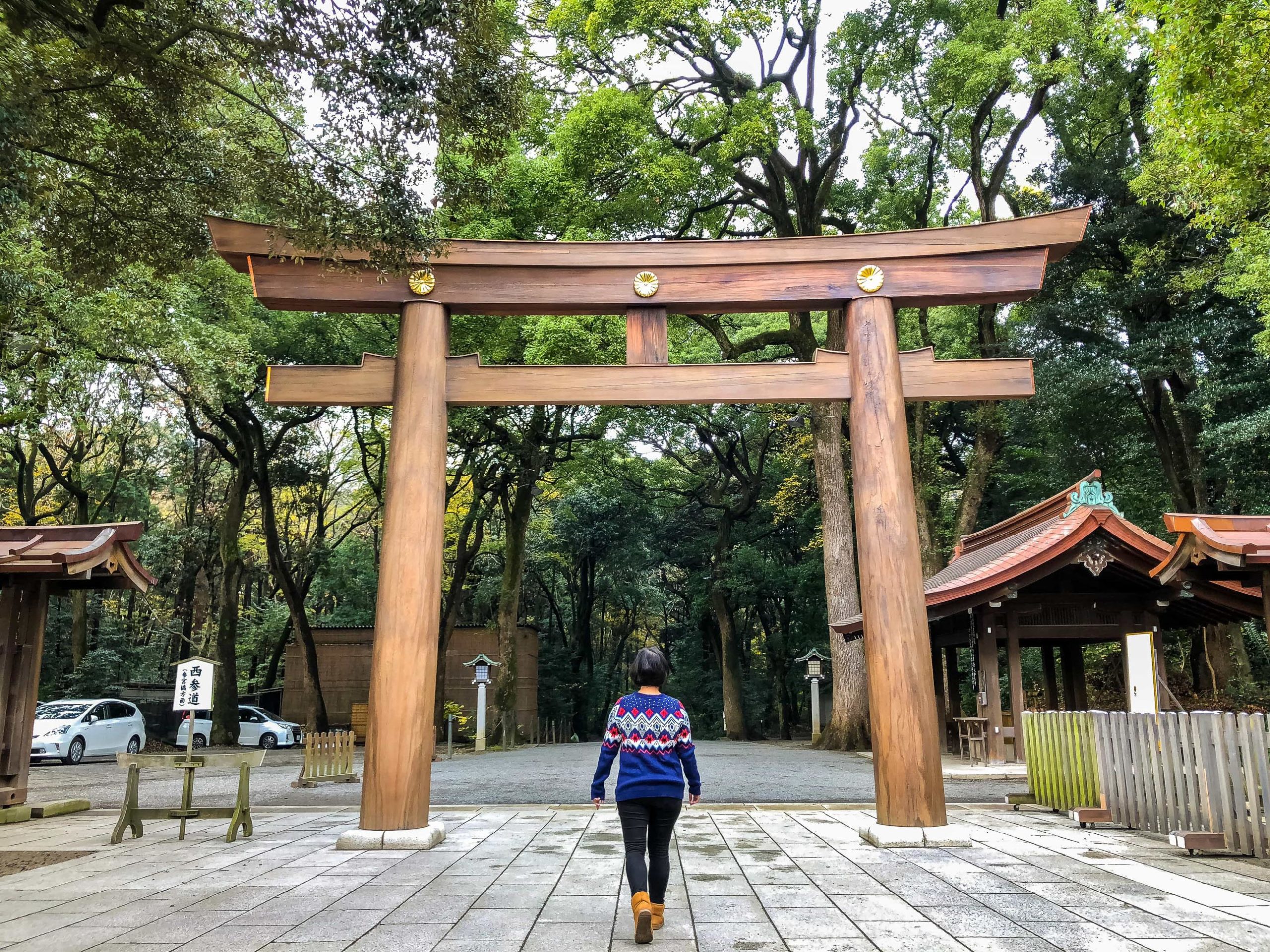
As a seasoned traveler with a deep love for Japan, I’ve carefully crafted this 7 days in Japan Itinerary to ensure you make the most of your week-long journey. Get ready to immerse yourself in the wonders of Tokyo and Osaka, the historic streets of Kyoto and Nara, and the breathtaking Mt. Fuji. Read on to plan your dream Japan adventure!
7 days in Japan Itinerary: Highlights
- Food trip in Osaka
- Wizarding World of Harry Potter in Universal Studios Japan
- Nara Day Trip from Osaka/Kyoto
- Kyoto, the ancient capital of Japan
- Cherry Blossom viewing in Tokyo
Mt. Fuji Day Trip from Tokyo
- DisneySea/Disneyland from Tokyo
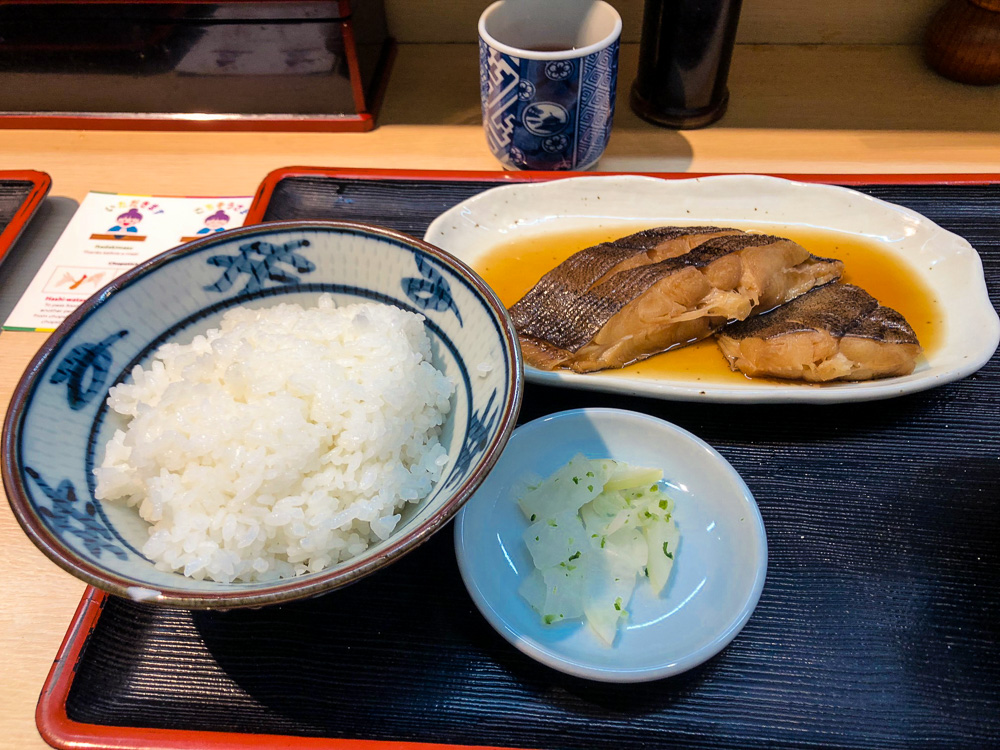
This itinerary is specifically designed for first-time visitors to Japan who plan to spend 7 days and 6 nights in the country. The trip will begin at Osaka’s Kansai International Airport and end at Tokyo’s Narita International Airport, or vice versa.
Day 1 (Osaka)
Choose a flight that arrives in Osaka earlier in the day, providing you with the opportunity to explore the city in the afternoon. This will allow you to combat jet lag and become familiar with Japan’s transportation system during the initial hours of your arrival.
Upon arrival at Kansai International Airport , you can check in to a hotel or guesthouse of your choice. For convenience, I recommend staying near the city center, specifically in areas near train stations like Umeda and Namba . This will give you easy access to a wide range of dining options and popular tourist attractions.
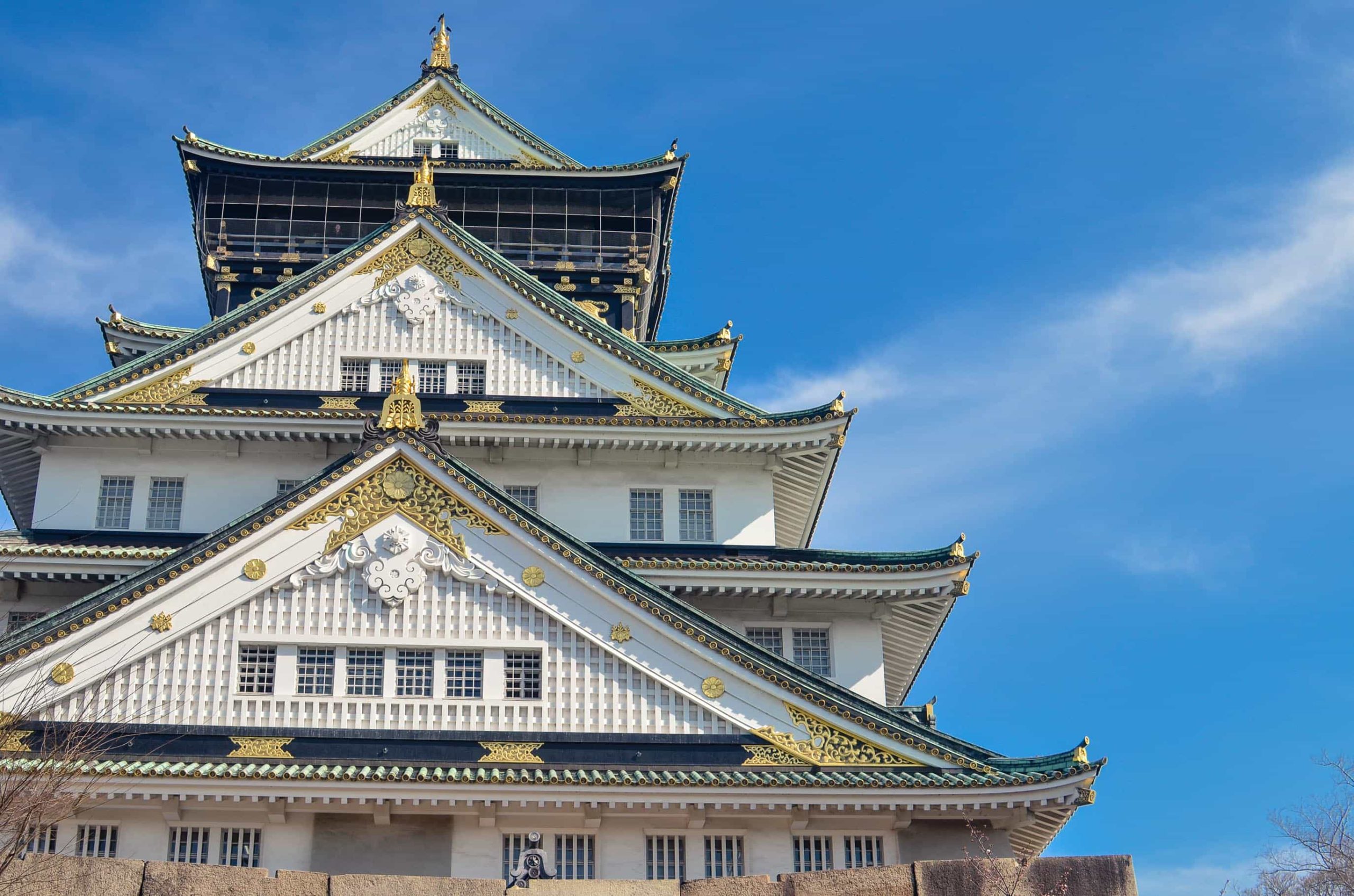
To kick off your Osaka adventure, I suggest starting in the afternoon by visiting Osaka Castle . The castle can be easily accessed from a number of train lines. The nearest JR station is Osakajokoen Station on the JR Loop Line. After exploring the castle, you can visit other attractions in the area, such as the Osaka Aquarium , Tenmangu Shrine , or Umeda Sky Building .
Later in the afternoon or evening, head to the Dotonbori-Shinsaibashi area to experience Osaka’s unique food culture. This lively district is best reached by taking the Midosuji Subway line and getting off at either Namba Station (subway) or Shinsaibashi Station. Spend the rest of your day exploring the area and trying some of the local delicacies.
Where to Stay in Osaka
HOTEL THE FLAG Shinsaibashi 1-18-30 Higashishinsaibashi, Chuo, Osaka, Japan
Mitsui Garden Hotel Osaka Premier 3-4-15 Nakanoshima, Kita-Ku, Osaka, Japan
The Bridge Hotel Shinsaibashi 1-10-24 Nishishinsaibashi, Chuo, Osaka, Japan
Day 2 (Osaka or Nara)
If you are a theme park fan, then you can spend an entire day in Universal Studios Japan . There are plenty of amazing attractions here but the highlight, for me, is The Wizarding World of Harry Potter . To get to USJ, take the JR Yumesaki (aka Sakurajima) line from Osaka Station or Nishikujo Station to Universal City Station.
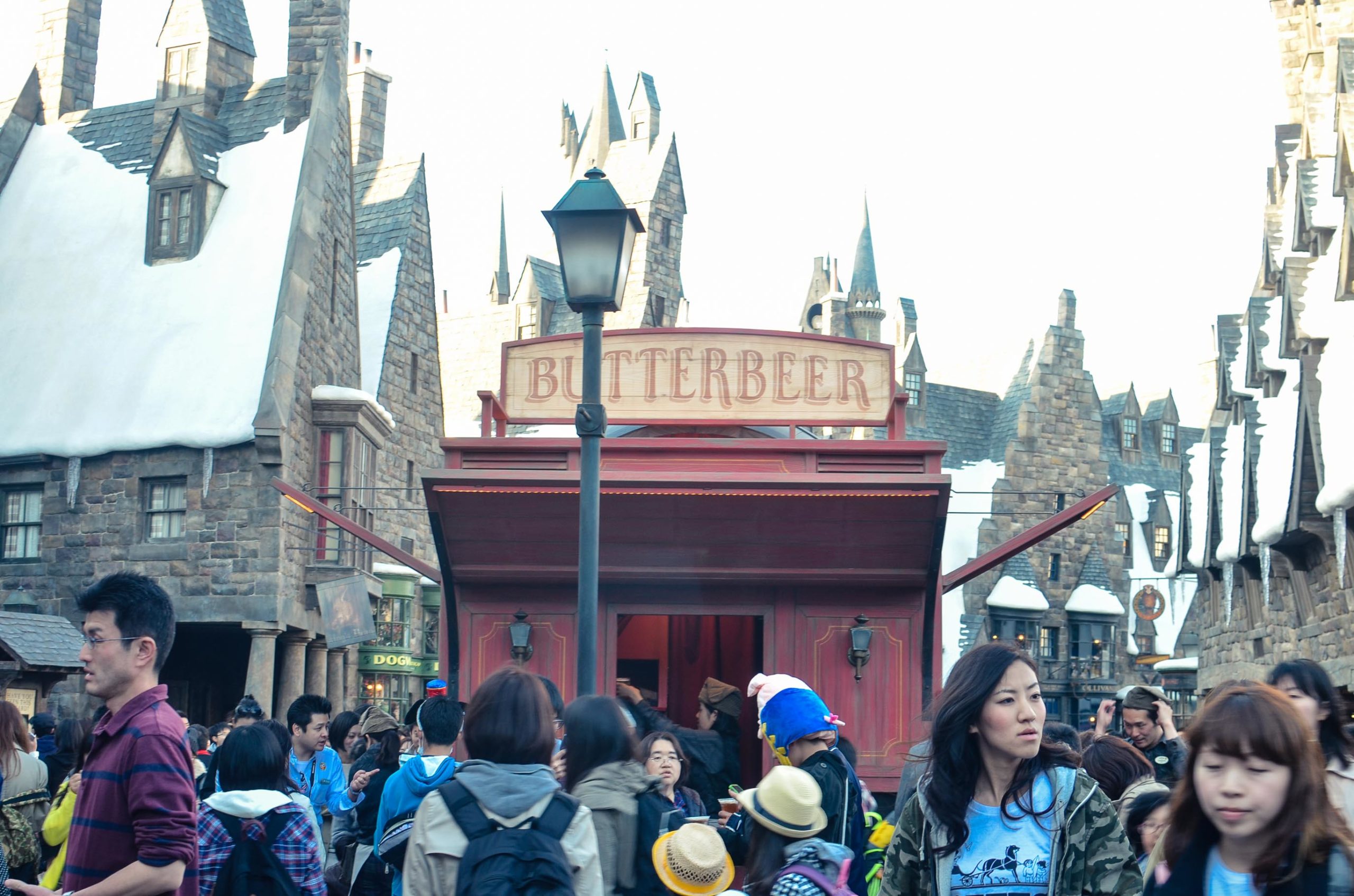
Another option is a day trip to Nara from Osaka , which is a great way to immerse yourself in the rich history and culture of Japan. The journey to Nara takes about 45 minutes on the JR Rapid train, leaving plenty of time to explore all that this city has to offer. A few notable sights include Todaiji Temple and Horyuji Temple . If you’re going to Nara Deer Park , do not pet the deer and do not to feed them with any food other than deer rice crackers (shika senbei).
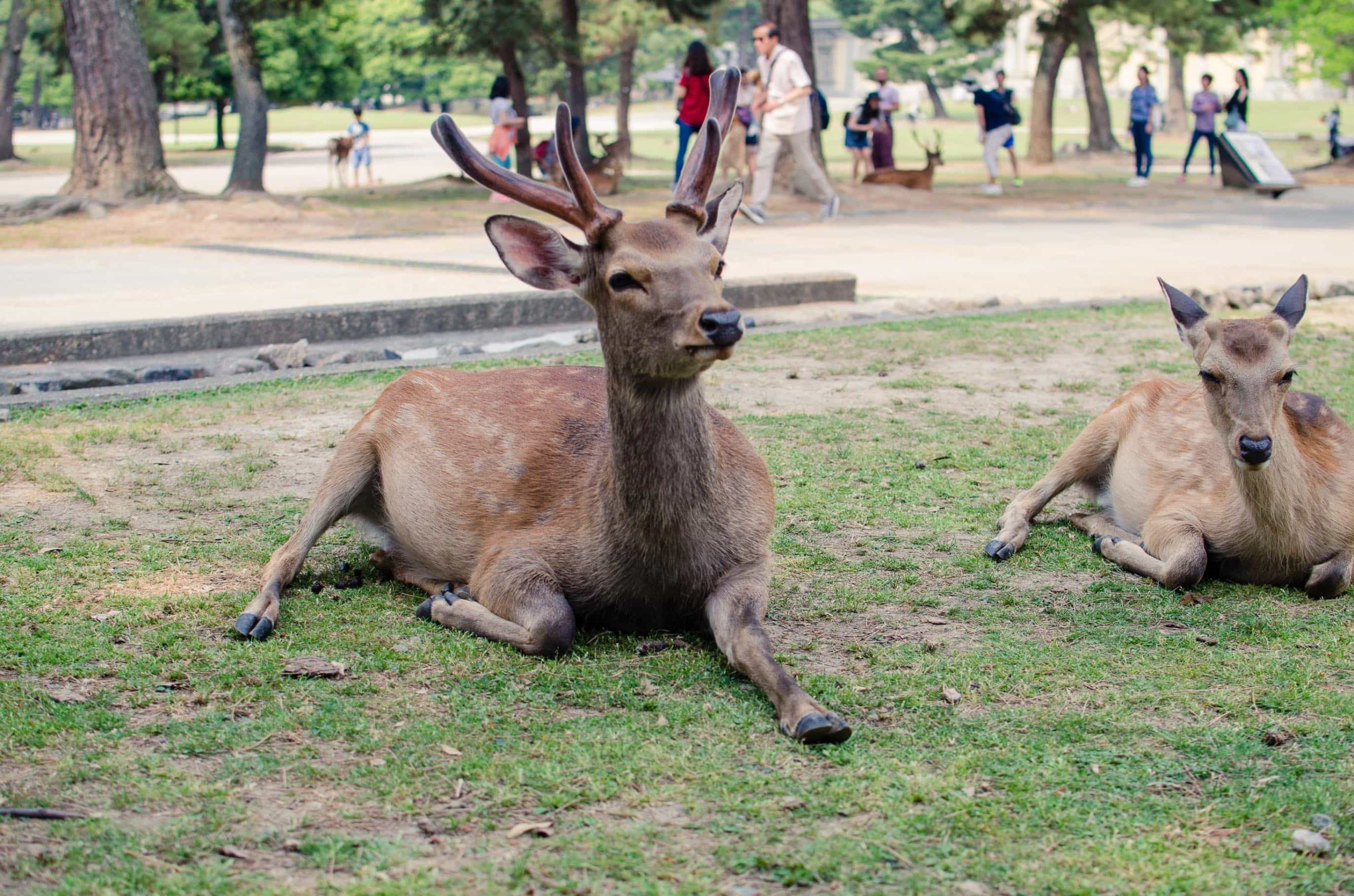
Day 3 (Kyoto)
Coming from Osaka, you can take JR, Hankyu Rail or Keihan Rail to get to Kyoto Station. Here’s my suggested itinerary for Day 3:
- Start your day by visiting Ginkakuji Temple (Silver Pavilion)
- Walk along the Philosopher’s Path, a beautiful stone walkway that follows a canal lined with cherry trees
- Visit Nanzenji Temple, one of the most important Zen temples in Japan
- Head to Yasaka Shrine, a Shinto shrine located in the Gion district
- Explore the Higashiyama district, a historic area of Kyoto that’s filled with traditional shops and restaurants
- Finally, visit Kiyomizudera Temple, a famous Buddhist temple on a hill overlooking Kyoto
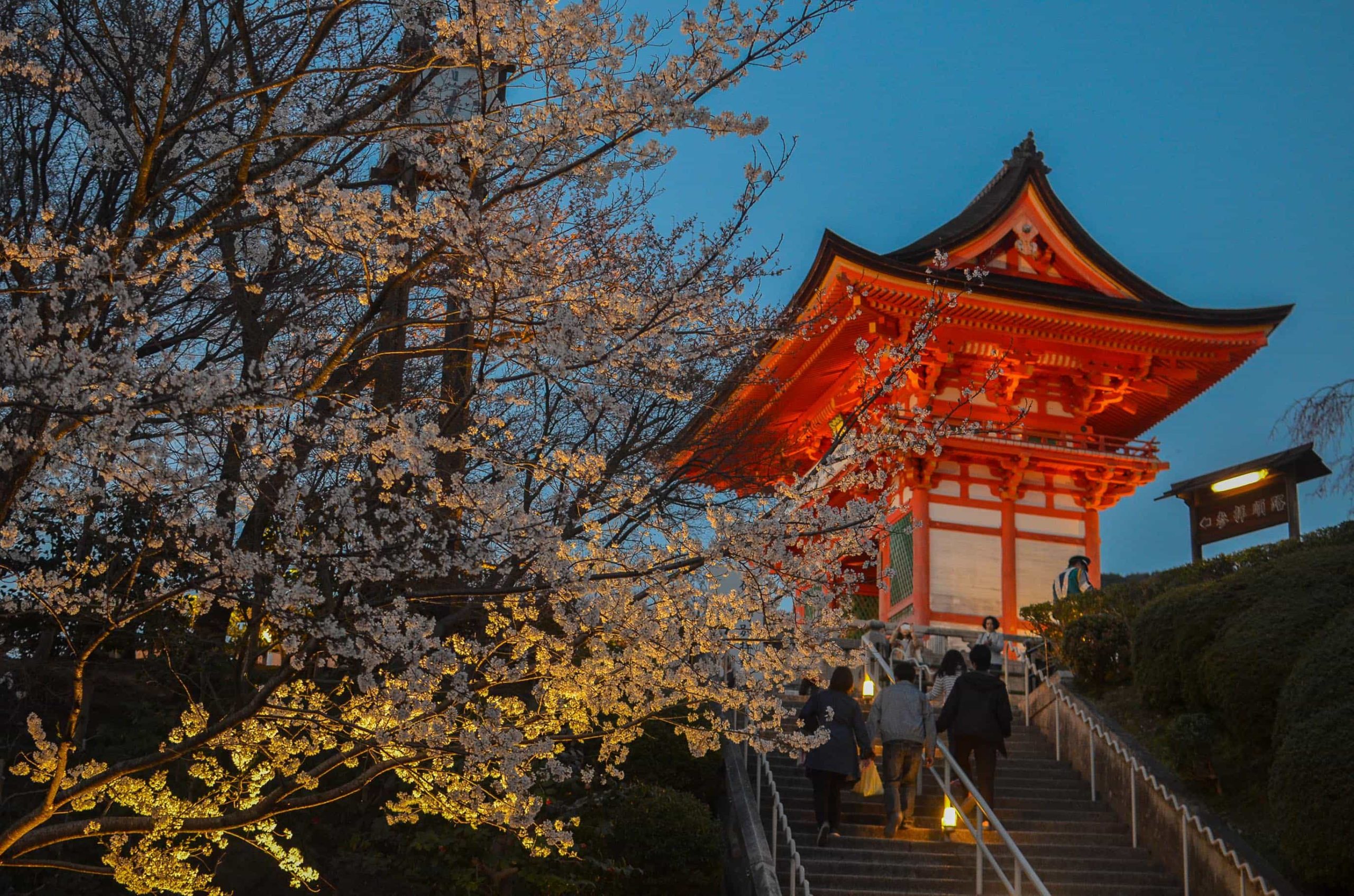
Getting around the city is very easy because of its extensive bus network. Though Kyoto also has trains and subway network, I find navigating the city easier when I take a bus. Raku Bus is the city-run public bus in Kyoto, will cover most of your travel needs. Bus No. 100 goes to eastern Kyoto particularly the Higashiyama and Okazaki areas. Bus No. 101 goes its way up the middle of Kyoto to the northern parts of the city. Raku Bus No. 102 goes to the northern part of Kyoto.
Project Gora tip: Purchase a Kyoto All-day bus pass (JPY 500) for unlimited bus ride on Raku and Non-Raku buses. It is more economical than paying for individual tickets because each time you ride a bus, it will cost you a minimum of JPY 230.
Where to Stay in Kyoto
Citadines Karasuma-Gojo Kyoto 432 Matsuyacho, Gojo Karasuma-dori Higashi-iru, Shimogyo-ku, Kyoto 600-8105, Kyoto
Hotel Anteroom Kyoto 7 Aketacho Higashikujo, Minami-ku, Kyoto 601-8044, Kyoto Prefecture
Kyomachiya Ryokan Sakura Urushiteim Kichimonjicho 425, Shimogyo-Ku, Kyoto, Japan
Day 4 (Kyoto)
On day 4, consider Fushimi Inari as your first destination. Fushimi Inari Shrine is dedicated to Inari, the Shinto God of Rice. The place is famous for its thousand vermilion torii gates along the trail that leads to the forest of the sacred Mount Inari. The best way to access Fushimi inari is by taking JR Nara Line from Kyoto Station to JR Inari station (JPY 140). Travel approximately takes 5 minutes.
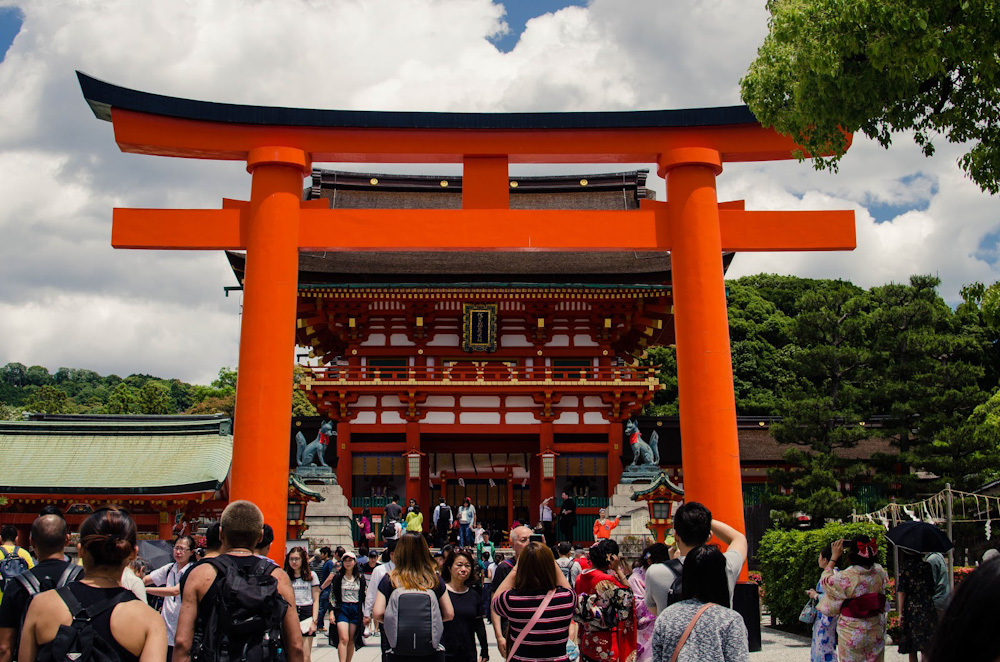
Then, make your way to your second destination, Kinkakuji (Golden Pavilion) , which is among the many UNESCO World Heritage Sites in Kyoto. It is a Zen temple with two floors completely covered in gold leaf. The best way to access Kinkakuji is by going back to Kyoto Station following the same route then take Kyoto City Bus number 101 or 205. Travel approximately takes 40 minutes and admission is JPY 400.

Spend the rest of the afternoon in Arashiyama District . From Kinkakuji, hop on Bus no. 101 and get off at Kitano Hakubaicho Station. Take the Keifuku Electric Railway aka Randen and get off at Arashiyama Station (requires a transfer at Kitabiranotsuji station).
You can also include this only-in-Kyoto experience in your Japan itinerary – Maiko Transformation for women or Samurai Transformation for men.
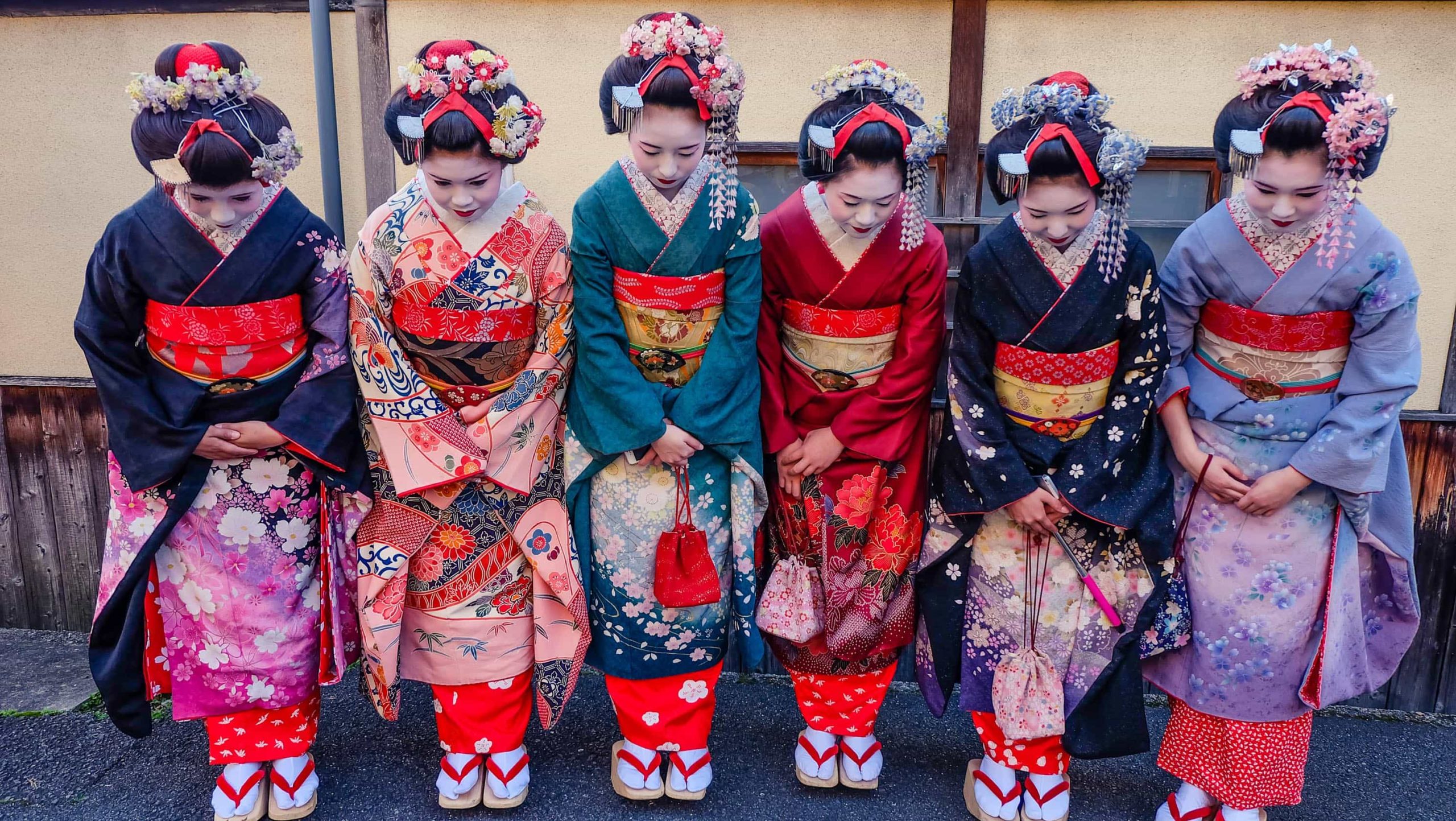
If you only got a day to explore Kyoto, you have to choose which attractions you want to visit. I created a 1-day Kyoto Itinerary which can help you plan your trip.
Day 5 (Tokyo)
Travel from Kyoto to Tokyo via Shinkansen (Bullet Train). Nozomi, the fastest Shinkansen costs JPY 14,110 one way from Kyoto Station to Tokyo Station and travel approximately takes 2 hours and 20 minutes. Hikari, which is slightly cheaper at JPY 13,800 one way, takes a little longer at 2 hours and 40 minutes. The slowest Shinkansen, Kodama costs JPY 13,500, reaches Tokyo in about 3 hours and 50 minutes.
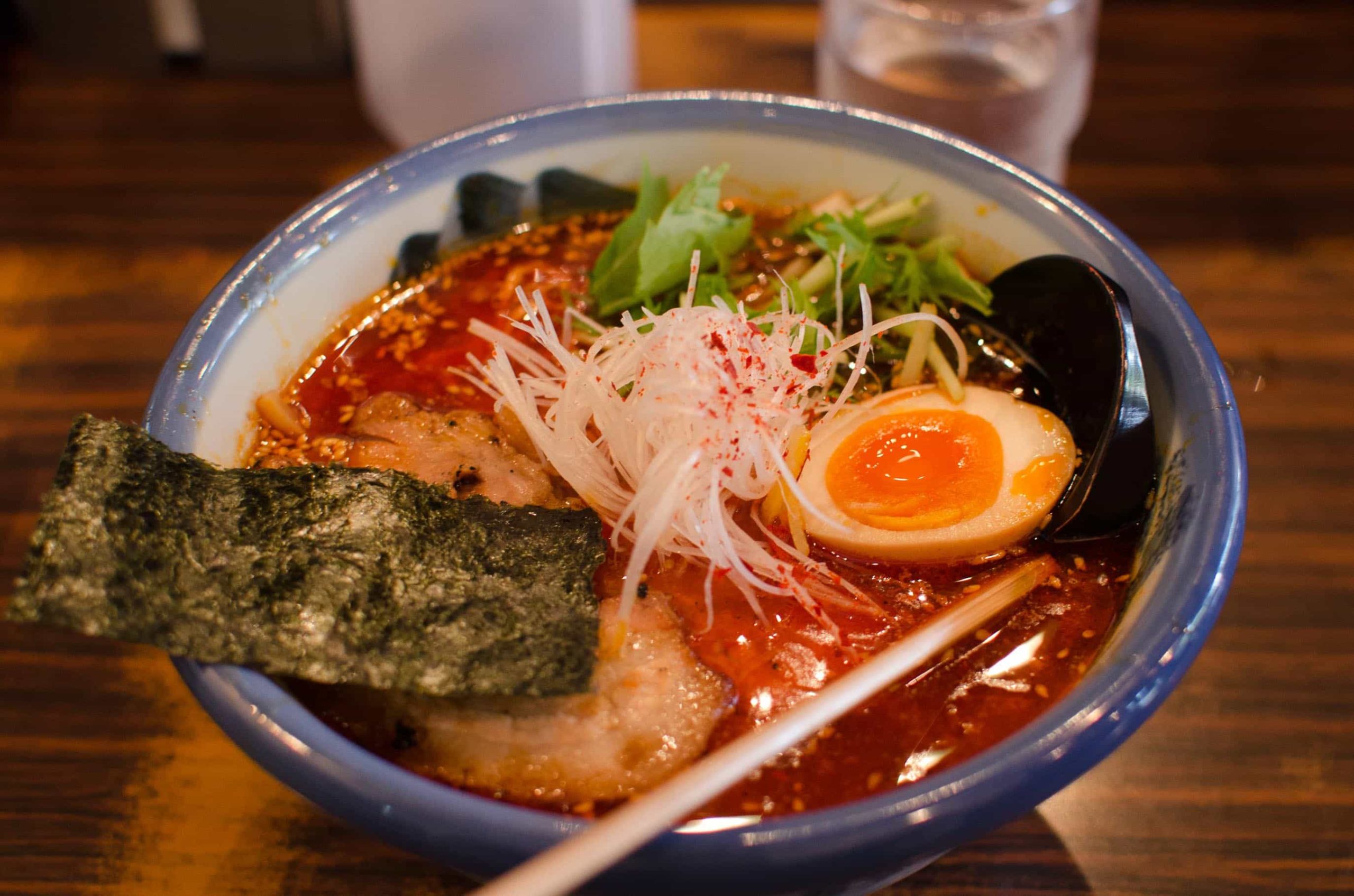
Start your Tokyo adventure in Meiji Jingu , a shrine dedicated to the Meiji Emperor and his Empress. Despite being situated in the busy area of Harajuku, all the hustle and bustle were cut off the moment you turn right and cross over the 40-foot giant torii gate. The walk through the forest to get to the shrine is very relaxing. Travel from Shinjuku Station of JR Yamanote Line to Harajuku Station approximately takes 5 minutes (JPY 140).

End your day at Tokyo Metropolitan Government Building back in Shinjuku where you can get a glimpse of Mount Fuji under favorable weather conditions. This is also a perfect place for sunset viewing where you can get a panoramic view of Tokyo and beyond.
You can also catch the most stunning views of Tokyo at the 360° open-air observation deck called Shibuya Sky . As it stands 230 meters above the ground, it is the highest point in the Shibuya district.
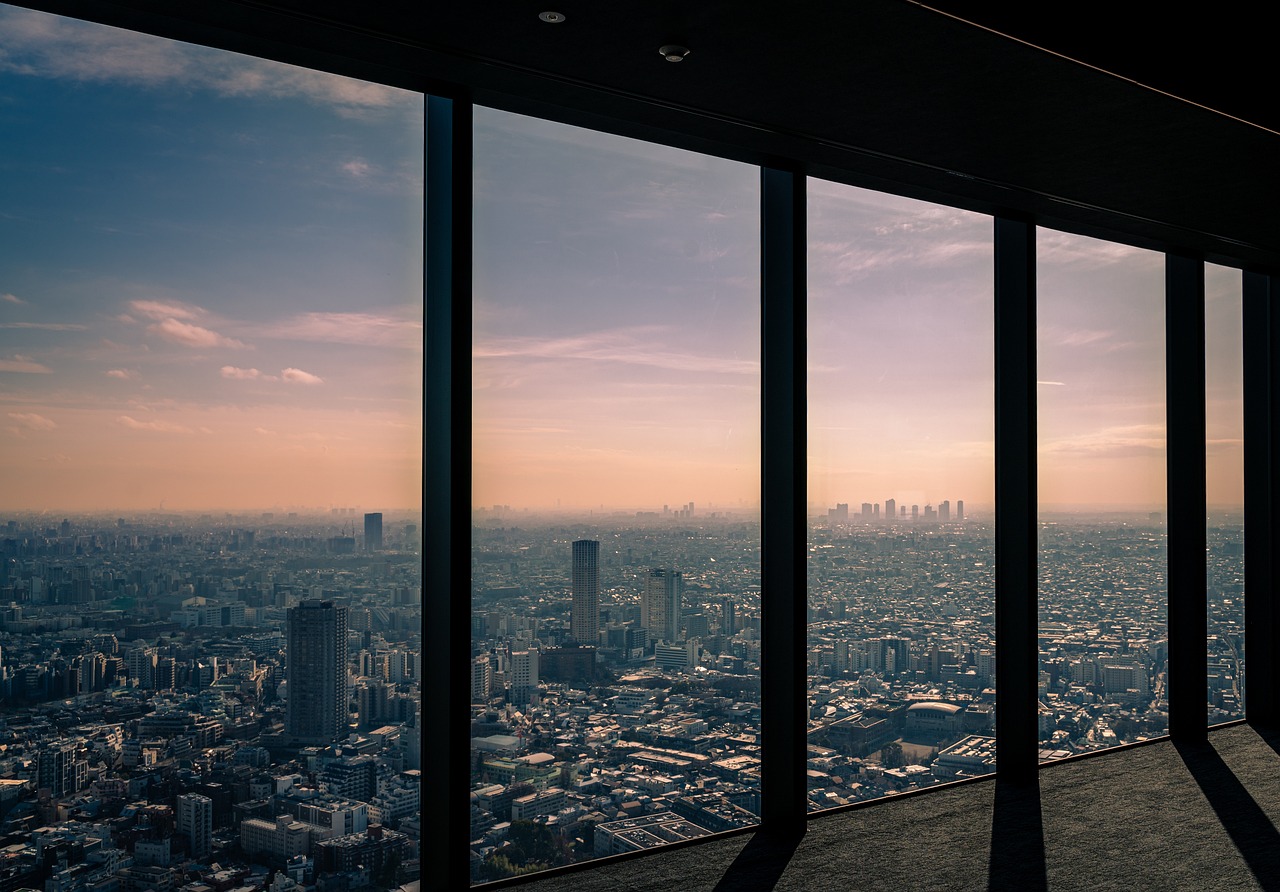
If you want to save some yen and avoid the queues, you can book your Shibuya Sky tickets online in advance for only JPY 1,800 (745 pesos or USD 13). But take note that tickets purchased online are only valid for a specific time slot on a specific date. Individuals with disabilities are also entitled to a 50% discount on the admission fee.
Where to Stay in Tokyo
The Gate Hotel Asakusa Kaminarimon by Hulic 2 Chome-16-11 Kaminarimon, Taito City, Tokyo
Tokyu Stay Shinjuku 3-7-1 Shinjuku, Shinjuku 160-0022, Tokyo, Japan
The Millennials Shibuya 1-20-13 Jinnan, Shibuya 150-0041 Tokyo, Japan
Day 6 (Tokyo)
If your travel dates happen to be in Spring, specifically Cherry Blossom season, do not miss cherry blossom viewing in Ueno Park, Shinjuku Gyoen , Chidorigafuchi or Sumida Park . If it’s Autumn, you can see beautiful yellow ginkgo trees in Marunouchi Gyoko-dori and Yoyogi Park .
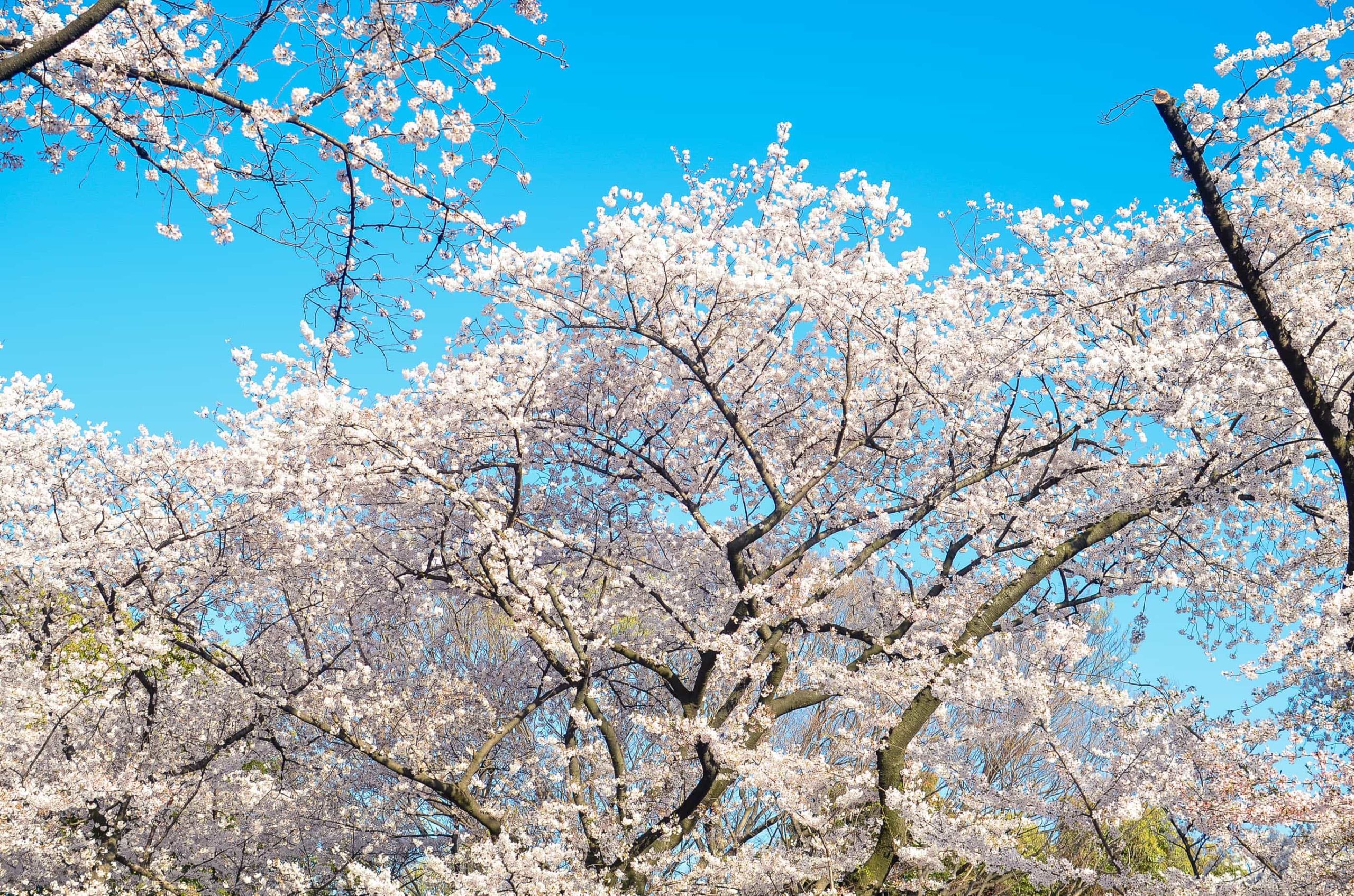
In the afternoon, check out some of Tokyo’s famous destinations like Akihabara, the center of Japan’s otaku (diehard fan) culture. Don’t miss Harajuku , Shibuya and Omotesando . For dog lovers like me, pay a visit to Hachiko’s statue located in Shibuya Station’s Hachiko Exit. Another prominent landmark in Shibuya is the large intersection known as “The Scramble”.
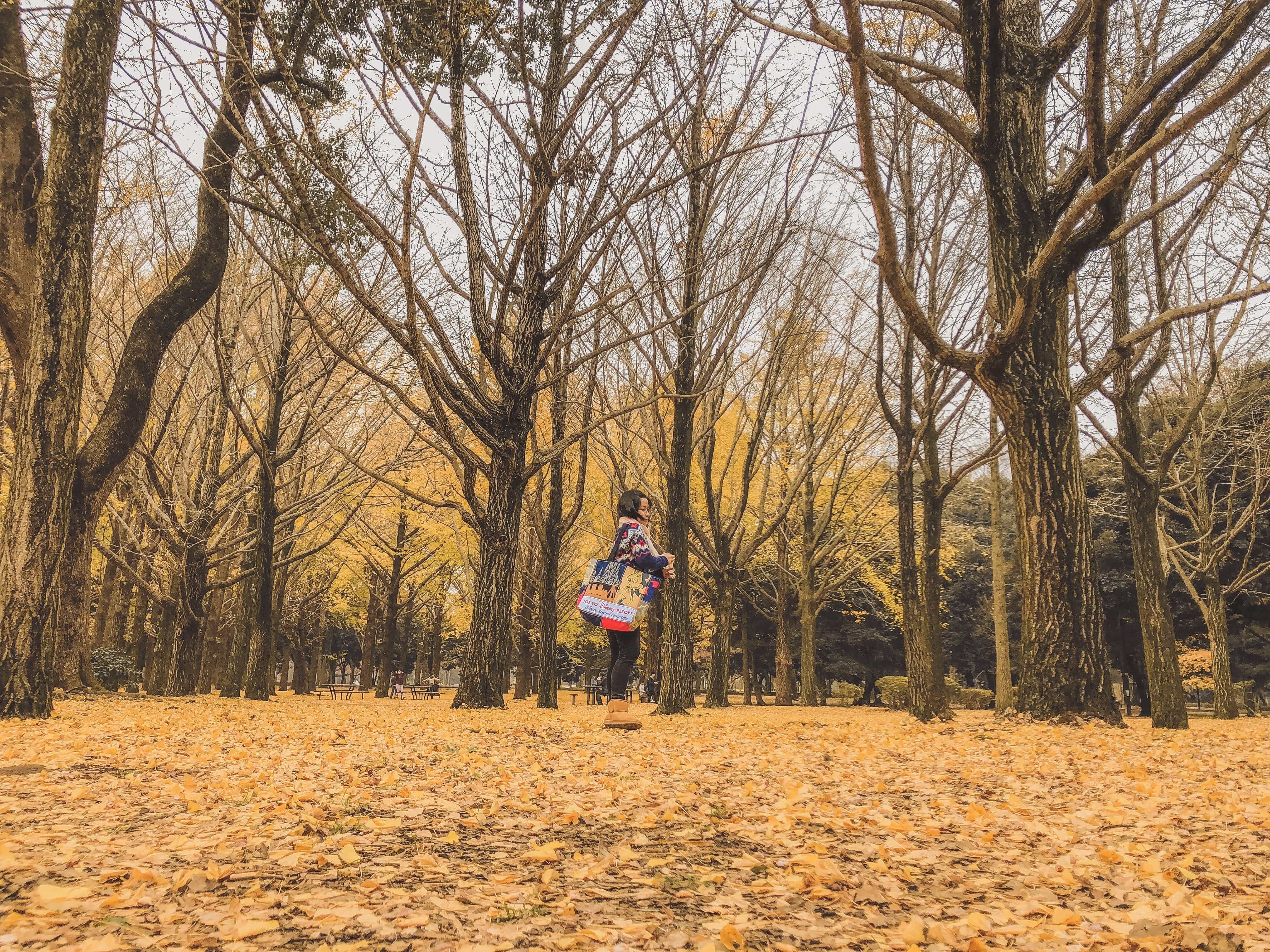
On Day 6, embark on a Mt. Fuji Day Trip from Tokyo . There are various tours tailored to the seasons, ensuring a personalized experience. These tours will lead you to panoramic viewpoints, tranquil nature walks, and cultural insights.
Theme Park Day: Disneyland or DisneySea
Alternatively, you can spend the day at Tokyo Disneyland or DisneySea , two of the most popular theme parks in Japan. Both parks offer a variety of attractions, shows, and parades, as well as themed areas based on popular Disney movies and characters. You can purchase a Tokyo Disneyland one-day passport here.
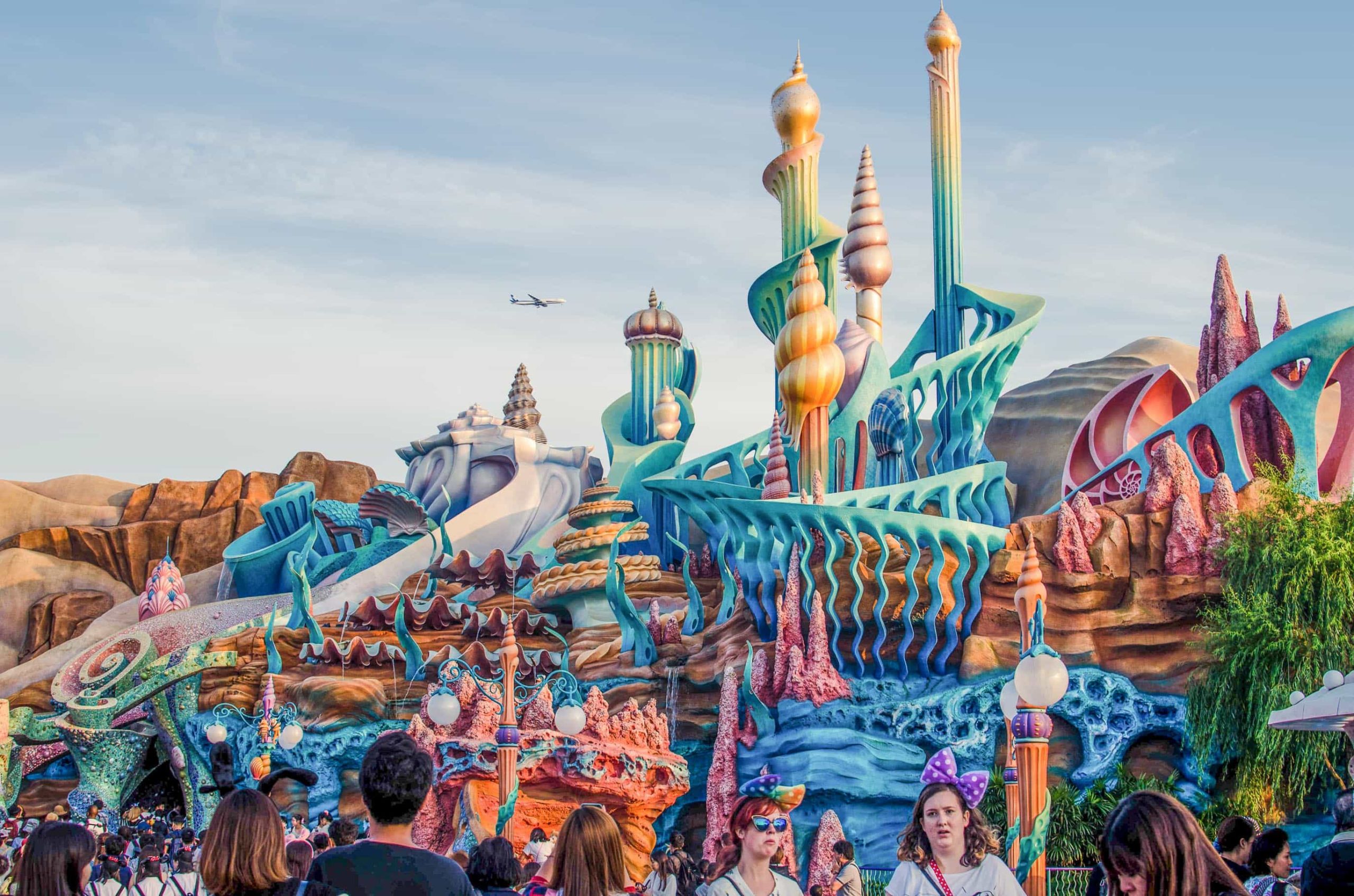
Note that the Tokyo Disney parks can be quite crowded, especially on weekends and holidays, so it’s a good idea to arrive early and plan your day accordingly. You can check the park schedules and plan your ride strategy in advance to maximize your time at the parks.
Day 7 (Tokyo)
On day 7, you can spend a few hours shopping before your scheduled time of departure. Find the nearest Donki (short for Don Quijote), which is one of Tokyo’s cheapest supermarkets selling a huge variety of goods. Buy some Japanese snacks like Tokyo Banana, Japanese Rice Cake Mochi Daifuku and Kitkat Matcha (Gren Tea) flavor to take home for your friends and family.
After shopping, head to Narita International Airport and take Narita Express (covered by JR pass). The regular price costs JPY 3,190 and travel is approximately 90 minutes. A faster and cheaper option is via Keisei Skyliner , which can get you from Ueno Station to Narita in just 40 minutes. A cheaper alternative is Keisei Main Line (regular commuter train) which requires one train transfer. From Shinjuku, take JR Yamanote line to Nippori Station (20 minutes, JPY 230) then transfer to Keisei Main Line to Narita Airport (about 80 minutes, JPY 1030).
If you have a heavy luggage, you may consider taking the airport limousine instead. Book your Tokyo Narita International Airport Limousine Bus Round Trip Ticket here.
With this suggested itinerary, is a Japan Rail Pass worth it?
The Japan Rail Pass costs JPY 50,000 (roughly USD 330) for Ordinary Car/Second Class valid for 7 consecutive days. If you are going to follow this itinerary (arriving in Kansai and departing in Narita or vice versa), then the pass will not pay off . If you are going to different prefectures within a week (multiple bullet train rides), then it may be worth it.
I suggest coming up with an itinerary first then calculate your train ticket costs using the JR pass calculator. Get your JR Pass for Whole Japan (7, 14, or 21 Days) here.
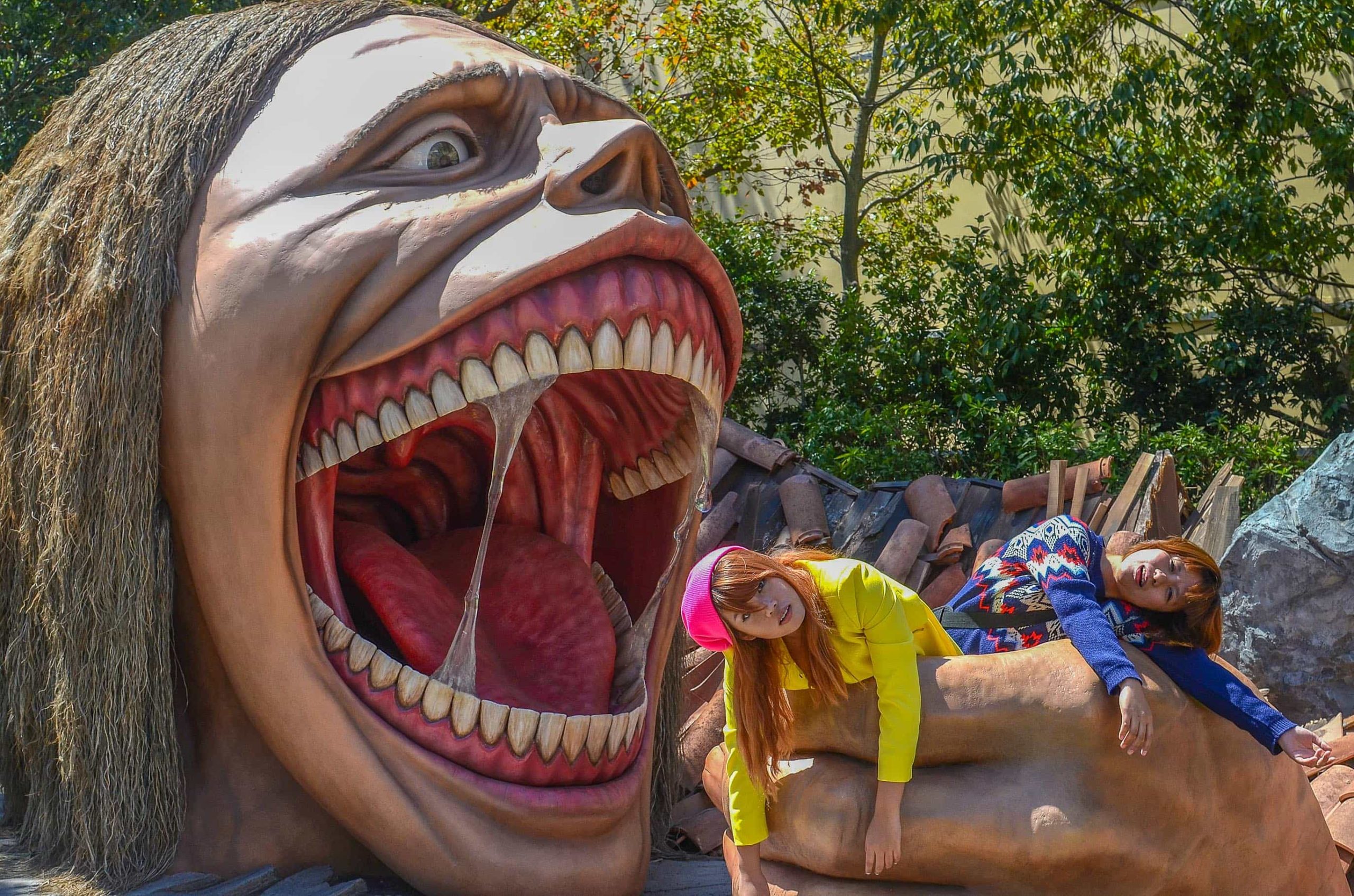
Did you like this 7 days in Japan itinerary? Got any questions? Comments? Insights? I’m all ears! Let’s chat down below. Arigatou!
By Project Gora
Hey there! My name is Milet Miranda, and I'm a full-time corporate employee during weekdays and a traveler during weekends (and holidays...you get the picture). I'm a foodie at heart and I love joining food tours. When I'm not traveling, you'll find me walking my dogs or biking around my neighborhood.
Planning a Japan Vacation? Try this 7-day Japan Itinerary
Are you planning a trip to Japan? Most people dream of taking a Japan vacation at some point in their life. It’s an intriguing destination, full of sumptuous food and drinks , mesmerizing landscapes, and incredible sights.
The only thing holding you back from traveling to Japan is probably the daunting task of creating the perfect Japan travel itinerary. We understand. That’s why we’ve taken the fear out of it for you by creating a perfect 7-day Japan itinerary that you can follow or use to plan your own trip.
» Check out these 10 cities to visit in Japan and these 10 Popular Japanese Drinks You Must Try .
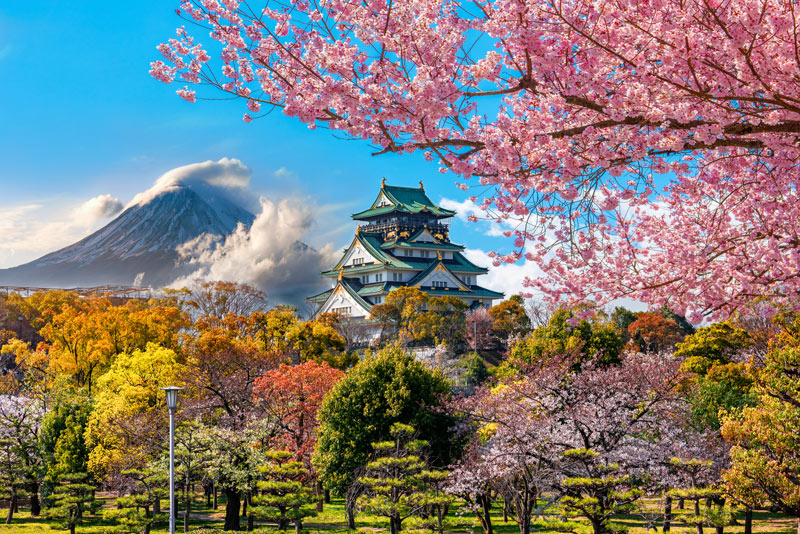
For decades, the island nation of Japan has been a favorite Asia travel destination . From amazing Zen temples to those beautiful cherry blossoms , Japan has something for every traveler who visits. The hardest part is just fitting it all in.
This itinerary includes many of the top things you’ll want to see and do in Japan – including Tokyo , Kyoto , and Osaka . You can see a lot in 7 days in Japan.
It might sound overwhelming to do so much in so little time, but it doesn’t have to be overwhelming. You’ll see below how the trip flows from one location to the next very easily.
Planning Your Japan Trip?
Buy flights. We recommend using Skyscanner or Expedia to find the best flight deals. Check out our guide to finding the best airfare for additional tips.
Get your Japan Rail Pass. You can buy it online here
Hotels See all hotel options
- In Tokyo: The Strings by InterContinental Tokyo
- In Kyoto: ACE Hotel Kyoto
- In Osaka: Intercontinental Osaka
Best Tours to Book
- Fully escorted 8-day Intro to Japan tour
- Private Custom Tour: Tokyo in a Day
- Tsukiji Fish Market Food and Culture Walking Tour
Table of Contents
Japan Itineraries
If you have longer to spend in Japan, you can expand this itinerary to any length you wish.
- We have a 7-day itinerary and a 2-week Japan itinerary so you can choose which length of trip suits you best.
- If you will only be visiting Tokyo, here’s a shortened 3-day itinerary for Tokyo .
- Want to add more days outside of Tokyo? Here’s a 3-day Kyoto itinerary and a 2-day Osaka itinerary .

Tours to Take
How to plan a vacation in japan.
Japan consists of four main islands and several smaller ones. Together the islands take the shape of a sea horse and occupy an area of 377,435 square kms.
Tokyo, the capital city, is very modern and bustling with activity, so when you travel to Tokyo, be ready for crowds.
The landscape of Japan, away from the big cities, is mountainous with spectacular scenery; some of the mountains are volcanic. As you travel between cities, you’ll pass through this beautiful countryside.
Mt. Fuji is the tallest mountain in Japan, and is known for its symmetrical slopes and gorgeous views from surrounding areas. You can hike and take tours all around this area.
Best Time To Visit Japan
The first step in planning a Japan vacation is deciding when to go. As with most places, there isn’t a “best” time to go to Japan. You can go whenever the mood strikes you. Japan really is a year-round travel destination.
However, there are certainly “better” times to go. It’s important to know the country’s seasons and when they occur during the year, so you can avoid the intense heat or snow.
The islands of Japan lie in the northeastern end of the monsoon area. The climate is generally mild, although it varies considerably from place to place as you travel through Japan. That means you may need to plan for all types of weather conditions.
Late spring (March to May) and late autumn (September to November) are generally the best times to visit Japan because spring and autumn are the best seasons of the year with balmy days and bright sunshine.
During these months, there is very little rainfall, there are many sunny days, and the temperatures are mild.
- Spring is cherry blossom season. This is considered high season in Japan. The weather tends to be mild and nice from late March to May.
- In autumn, the leaves are changing color and the resulting scenery is nothing short of amazing.
- In summer in Japan it gets very hot and humid. It’s also a very busy high season for Japan, so you’ll be fighting crowds and you’ll pay more for accommodations. Try to avoid traveling in July and August.
- In winter, December to February, there will be less tourists so the prices are lower and it’s easier to get in to top attractions. Japan can also be very beautiful in the snow.

Getting to Japan
Many top airlines have direct flights into Japan. Top Japan airlines include ANA and Japan Airlines, but you can fly to Japan with most U.S. airlines that fly internationally, like United and American.
Something to consider, which will help maximize your time in the country, is to fly into one city and out of another, such as flying into Tokyo and out of Osaka.
Doing this will save time and money. Once you arrive at the airport (Tokyo, Osaka, Kyoto, and other major airports) there is a convenient train that takes you into the city center.
- In Tokyo, that train is called the JR Narita Express. A one-way journey takes about an hour and costs approx. 3000 yen. You can use the Japan Rail Pass for this train.
- In Osaka, rapid trains take you from the airport to Tennoji Station within 50 minutes for appox. 1060 yen, and to Osaka Station within 70 minutes for approx. 1190 yen.
- In Kyoto, the Limited Express Haruka train will take you to Osaka airport in about 75 minutes.
Tipping in Japan
If you’re from the United States , Canada, or another country where tipping is customary, you should be aware that tipping in Japan is not customary.
If you do try to tip, in a restaurant or a hotel for instance, it might even be refused or considered rude. To avoid awkwardness, follow the Japanese custom and do not tip.

Top Japan Destinations
There are many unique and interesting places to visit in Japan. Of course it’s not possible to visit them all in just seven days, so this itinerary covers the top three places to visit.

If you have a bit more time, you can include more top Japan destinations in your itinerary. Each has its own special things to see and do. A few that we particular love are:
- Iriomote Island
If you’re not keen to travel on your own, there are many tour agencies that provide tours to these cities. However, it is very easy to travel around Japan via high-speed Shinkansen bullet train, so organizing your own trip isn’t out of the question.

Top Things to Do in Japan
There are so many incredibly unique things to do in Japan … that can only be done in Japan. These are the things you should focus on while you’re there, to soak up as much of the culture as possible.
- Seeing the temples in Kyoto , including the famous orange gates of Fushimi Inari Shrine and Kinkaku-ji Temple (Golden Temple).
- Staying the night in a traditional Japanese inn, or ryokan.
- Soaking in a communal onsen (traditional hot springs). Hakone is known for its many onsens and its fantastic views of Mount Fuji. Also try Nozawa onsens.
- Exploring the Tsukiji Fish Market in Tokyo.
- Eating sushi , ramen, gyoza and many other delicious things in Tokyo.
- Touring Hiroshima’s Peace Memorial Park & Museum.
- Trying real Kobe beef in Kobe.
- Seeing the cherry blossoms.
- Trying Japanese sake at a brewery.
- Walking through the Arashiyama Bamboo Forest .
- Catching a glimpse of Mount Fuji .
- Visit the Jigokudani Snow Monkey Park in Nagano .
- Feeding the deer at Nara Park.
- Hiking to the Great Buddha of Kamakura .
- Try izakayas (Japanese taverns) – a truly local experience. ( Pro Tip : If you want to enjoy Japanese hidden Izakaya food and drinks, Magical Trip will help you navigate through their favorite izakaya bars on Tokyo Bar Hopping Night Tour with an awesome local guide.
How to Get Around in Japan
The best way to travel around Japan in by train. You’ll want to purchase a 7-day Japan Rail Pass . The pass allows you to travel on all JR trains throughout Japan, including the high-speed Shinkansen bullet trains, for either 7, 14 or 21 consecutive days.
It’s the most economical and worry-free way to travel, if you’ll be visiting multiple destinations, as this itinerary suggests.
Travel in Japan is not cheap and the cost of buying individual tickets will far exceed the cost of the Japan Rail Pass. Just remember , it’s best/easiest to purchase the pass before entering the country. You’ll need to do this in advance so it has time to be delivered to you.
Read our guide on where to buy a Japan Rail Pass and to see if it’s worth it for your trip.
When planning your Japan itinerary, you’ll need to be sure to leave plenty of time between destinations for travel. The trains in Japan are fast, but travel still eats up a lot of time.
Keep in mind the distance between each destination when making your itinerary; for instance, the train from Tokyo to Kyoto takes 3 hours, 15 minutes. You’ll also need to factor in the time it takes to get to the train station, get on the train, etc.
The good news is that as long as there is a train linking each of your chosen cities, you’ll be able to easily travel around the country.
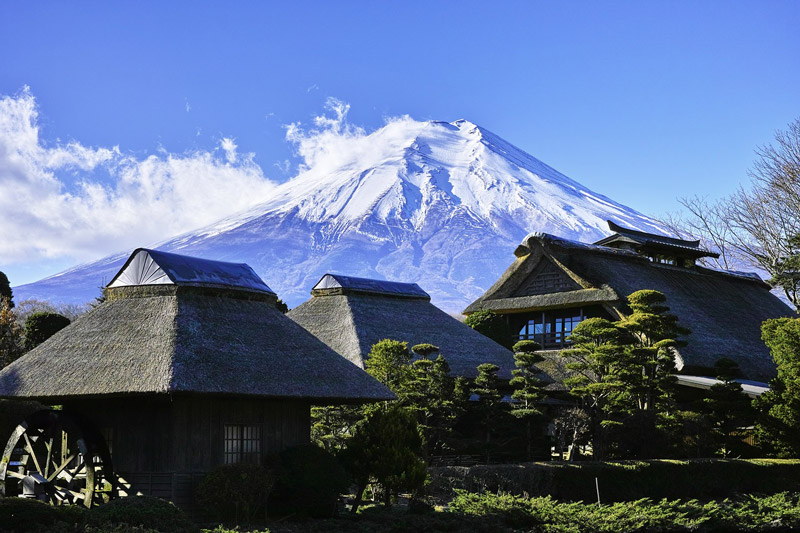
How to Plan a Trip
Option 1: go on a guided japan tour.
Sometimes it’s easier to go on a guided tour of Japan rather than plan your own trip. Guided tours are a great way to experience a country you’re not completely comfortable in. Also the language barrier in Japan can be quite daunting.
Japan & More 8-Day Intro to Japan Tour (Fully-Escorted)
Japan and More offers a fully escorted 8-day Intro to Japan tour that takes you to Tokyo, Osaka, Kyoto. They also have longer trip itineraries: For more information, check out Japan and More’s website. You’ll get $100 off the cost of your tour by using our coupon code.
Japan and More is run by Japan travel specialists, Becki and Shawn, who have over 20 years of experience living, working, and traveling in Japan. They know where to go, what to see, and how to get there.
The reason we recommend Japan and More is because they are Americans who know Japan really well, understand the culture, and speak the language. They take care of every detail for you, from planning straight on to answering all your questions.
These tours book up fast because spaces are limited. They keep group sizes small to make sure everyone gets individual attention. So it’s best to secure your place as soon as possible.
Not sure? Read this review by someone who’s taken a trip with Japan & More.

Option 2: Plan Your Own Self-Guided Trip
If you’re a frequent traveler, you’ll have no problem planning your own Japan travel itinerary and getting around on your own. Sure, there is often a language barrier to deal with, but it’s nothing a savvy traveler can’t handle.
If you’d like to put together your own self-guided trip, we’ve got a 7-day itinerary that ticks all the boxes you’re probably looking to do with a week in Japan. It includes Tokyo, Hakone/Mt. Fuji, Kyoto and Osaka.
Option 3: Get Planning Help From a Local
Quick. check these necessities off your prep list.
- There’s no one-size-fits-all travel insurance . Get a personalized quote from Yonder .
- The right luggage can make or break your trip. These hard-sided suitcases make traveling a breeze.
- Find your rental car on DiscoverCars.com . They search all major rental companies to find the best deal.
How to Spend One Week in Japan
Day 1-2: tokyo.

What To Do in Tokyo
While you could easily spend 7 or more days just in Tokyo, you’ll have to do the abbreviated version in order to see more of the country.
We recommend following this 3-day Tokyo itinerary . You can mix and match what you do, to suit your interests.
Top things to see in Tokyo include:
- Tokyo Skytree
- Tsukiji Outer Market (read more about it here )
- Shibuya Crossing at Shibuya Station
- Meiji Jingu Shrine
- The Imperial Palace East Gardens
- Senso-ji, Tokyo’s oldest Buddhist temple
We also recommend participating in a tea ceremony , going on an Izakaya food tour , and taking a cooking class .
You’ll definitely want to indulge in some ramen, which can be found in abundance at Tokyo Station Ramen Street.
How to Get to Tokyo
Tokyo has two airports – Narita Airport and Haneda Airport. Narita is for international flights and Haneda is for domestic flights and a few international flights.
The JR Narita Express train is the fastest option for getting to the city center. It goes to JR Shinjuku Station, JR Tokyo Station, JR Ikebukuro Station, JR Shinagawa and JR Yokohama Station. Follow the signs in the terminal to the train.
If you have a Japan Rail Pass, you can use it for this train. If you don’t, you can purchase a ticket for around 3310 yen. The journeys is about 50 minutes to get to Tokyo station.
From there, you can buy another ticket to take one of the inner city lines to your hotel.
The Airport Limousine Bus is another option, and probably the most convenient. The ticket desk is straight ahead as you leave the arrivals area. The bus stops are just outside the terminal building.
You can go to Tokyo Station, Shinjuku Station, Disneyland and major hotels, and they leave every fifteen minutes. A ticket costs 3000 yen, and the journey is 1.5 hours.
Once you arrive, you’ll want to use the HyperDia app to figure out your train travel within Tokyo. It displays detailed timetable and compares routes and prices. It’s available for both iphone and android.
Where to Stay in Tokyo
There are so many great places to stay throughout the city. Check out our complete guide with our recommendations . We’ve given 9 great places throughout the city.
If I had to choose one place, I would recommend the The Strings by Intercontinental Tokyo . It’s a really large hotel with nice rooms, located in Shinagawa, which is really close to shopping, eating and transportation.
⇒ Read reviews on Trip Advisor .
Find a Hotel in Tokyo
Best tours to book in tokyo.
Whenever I’m planning my own trip, I go to Viator and see what type of tours I can book to add to my itinerary. You can do all of these things on your own, but it’s always better with a local guide.
- Tokyo Bar Hopping Night Tour in Shinjuku
- Small-Group Tokyo Biking Tour
If you have extra time:
- Private Full Day Sightseeing Tour to Mount Fuji and Hakone
Day 3: Hakone

What to Do in Hakone
The major reason people come to this area is for Mt. Fuji and Lake Ashi, two very beautiful natural highlights of the area. Hakone is also famous for its traditional hot springs ( onsen ) and Ryokan.
This is the place to go if you want to experience these hot baths. The onsens are separated by gender and are a “no bathing suit” style traditional bath. Here are a few things you’ll want to do in Hakone:
- Take the cable car to see Mt. Fuji
- Hakone open-air museum
- Hakone Yumoto hot springs
- Owakudani – an active volcano
How to Get To Hakone
Hakone and Mt. Fuji are very close together, and they are on the way from Tokyo to Kyoto, so it’s a stop that most travelers make.
If you have a Japan Rail Pass, hop on the Shinkansen – on the Tokaido line – from Tokyo Station or Shinagawa Station to Odawara. Be sure to check the stops on the train you’re getting on to make sure they stop in Odawara.
If you’re not using a rail pass, the quickest direct route to Hakone from Tokyo is on the Odakyu Electric Railway Romancecar. You will depart from Shinjuku Station and arrive at Hakone-Yumoto Station in 1.5 hours.
A ticket costs 2,080 yen, including the limited express surcharge. Be sure you only get on the romancecars, as the others require a transfer.
If you’re going to be using transportation in and around Hakone for at least 2 days, the Hakone Freepass is a good idea. You buy it at Shinjuku for the train ride, and it also can be used on the Hakone Tozan Line trains, the Hakone Tozan Cable Car, the Hakone Tozan Ropeway, and buses. It’s valid for two days and costs 5,140 yen for adults and 1,500 yen for children.

Where to Stay in Hakone
Hyatt Regency Hakone Resort and Spa is within walking distance of the cable car that takes you toward Mt. Fuji. The hotel has very nice, classy rooms, with great views.
⇒ Read reviews on Trip Advisor .
We also recommend Hakone Mount View for a traditional Japanese ryokan experience with nice accommodations and good food. They have a rare volcanic hot spring called Nigori-yu – a fun and unique experience, especially for couples.
Tours to Book in Hakone
- Hakone Half-Day Private Tour with Nationally-Licensed Guide
- Hakone Onsen Experience, Lake Ashi, Open-Air Museum Tour
Day 4: Kyoto

How to Get To Kyoto
You will leave from Odawara Station and continue on the Tokaido-Sanyo Shinkansen line to Kyoto Station. This is covered by the Japan Rail Pass. It takes about 3:15 to get there.
The best way to get around Kyoto is by using public transportation, You can get a Icoca card, which is accepted on most trains and buses around the city.
If you’re going to be traveling around a lot in a day, consider getting a 1-day pass that will save you money. Most tourists won’t travel around enough to make this worth it, however.
Where to Stay in Kyoto
We recommend the Hyatt Regency , because it has a reliable standard for Western accommodations, however it’s not as close to the main sights as we’d like to be.
We found it more convenient to stay near Kyoto Station, since everywhere we visited we needed to go in and out of there. Our preferred hotel is the Hotel Granvia Kyoto .
What to See in Kyoto
Kyoto is known for its temples, Kaiseki cuisine, and even tofu, so this is an excellent place to spend a few days immersed in a fascinating culture.
You’ll want to see the temples of Kyoto, including the Fushimi Inari Shrine and Golden Temple, visit Nishiki Market, see the geishas walking around the city center, and eat a wonderful meal.
Another way to experience the cuisine is to take a cooking class. AirKitchen matches you with dozens of locals who will show you the ins and outs of Japanese cooking in their own kitchen.
Here’s a 3-day Kyoto itinerary that will get you to all the major sights in the city. If you have more time to spend, expand your trip with these day trips from Kyoto .
Tours to Book in Kyoto
- Kyoto Private Custom Walking & Sightseeing Tour
- Private Geisha district tour “Explore Gion, the Geisha world”
- Traditional Tea Ceremony wearing a Kimono in Kyoto MAIKOYA
- Kyoto Samurai Experience
- Nishiki Market Food Tour in Kyoto
Day 5: Kyoto

If you’re happy to keep hanging out in Kyoto, you can spend the full day there following our 3-day itinerary .
Another option is to take a JR train to Nara Park to feed the roaming deer, see the world’s largest bronze Buddha statue, and one of the tallest pagodas in Japan. You can easily spend a full day in the Nara area, or split the time between the Kyoto and Nara.
In the evening, take the JR train onward to Osaka, so you can get an early start in Osaka the next morning.
Day 6: Osaka
What to do in osaka.
Osaka is a lively port city packed with interesting architecture, an incredible street food scene, buzzing nightlife, and cherry-blossom trees that bring color to the city in the spring.
We have a 2-day Osaka itinerary that you’ll want to follow to be sure you see it all. Here are some top sights to see in Osaka:
- Osaka Castle and Park
- Shopping in Shinsaibashi
- Osaka Aquarium
- Tempozan Ferris Wheel
- Omeda Sky Building
- Universal Studios Osaka
- Shinsekai shopping area
Be sure to visit Dotonbori Street to try all the Japanese specialties, like okonomiyaki and takoyaki. It’s best after 8pm, when the street gets packed with people and becomes exciting.
If you have time, also visit the food-focused Kuromon Ichiba Market.
How to Get To Osaka
There are many routes you can take on the train to get from Kyoto to Osaka. Take a look at this article for more guidance on your particular situation.
If you have a JR pass, you’ll want to take the super fast Shinkansen train from Kyoto Station to Shin-Osaka. It takes just 12 minutes. If you don’t have a JR Pass, you can take the Special Rapid Service on the JR Kyoto Line to Shin-Osaka for a third of the price in 23 minutes.
Since it doesn’t take long to make this transfer, we recommend doing the transfer in the evening and staying overnight in Osaka, so you can get an early start on your sightseeing in Osaka.
Where to Stay in Osaka
One of my favorite hotels is the Osaka Marriott Miyako Hotel . It is conveniently located for transportation, so you can easily get around to the top sights in Osaka and beyond. It’s got an insane view and really comfortable rooms.
⇒ Read reviews of the Osaka Marriott on Trip Advisor .

Tours to Book in Osaka
- Deep Backstreet Osaka Tours
- Osaka Food Tour (10 Delicious Dishes at 5 hidden Eateries)
- Osaka Walking Tour
- Eat, Drink, Cycle: Osaka Food and Bike Tour
Day 7: Kobe
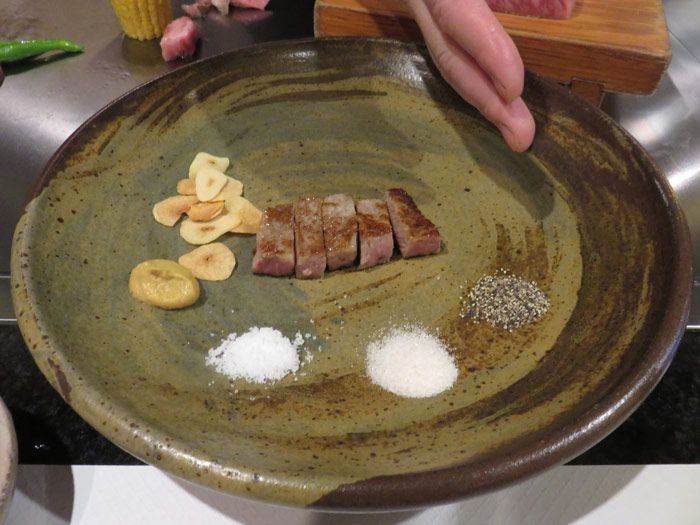
How to Get To Kobe
From Osaka-Umeda stations, take the Hanshin or Kobe line to Kobe-Sannomiya station. It takes anywhere from 30 minutes to an hour, depending on the train type.
The city of Kobe is rather large and there are a few things to see. You can visit the Kobe Harborland for shopping, restaurants and bars. We spent our day in Kobe having a really amazing lunch at a Kobe beef restaurant, which was very much worth it.
Then we transferred to Kobe’s Nada district where you find all the sake breweries. Many of the breweries offer tours and tastings and they are all reachable by train and on foot. See this post for information how how to visit the breweries.
Unfortunately, this is the end of your trip. You can fly out or take the train back to Tokyo from Osaka or Kobe. It will take around 5 hours total time to get back to Tokyo, so be sure to plan that into your itinerary.
There are many ways to experience and enjoy your Japan vacation. Building your own itinerary is the only way to ensure you see and do the things you’ve always wanted to do in Japan.
Rest assured that this 7-day Japan itinerary will take you to some of the top places to visit in Japan, and will prepare you for a second visit.

Where to Buy Japan Rail Pass and Is It Worth It?

Guide to Eating Sushi in Japan: Etiquette & More

8 of the Best Day Trips from Tokyo

How to Make Japanese Gyoza (Pan-Fried Dumplings)
Be Prepared For Travel Planning is the most important part of any successful trip. Do it the easy way:
🧳 Travel Packing List | ✔️ Why You Need Travel Insurance | ✈️ What to Do Before You Leave Home
- Find and book the best hotel (our favorite booking site is Expedia)
- Research flight options (our favorite tool is Skyscanner )
- Book a tour (we always use Viator to find the best tours)
- Rent a car through Discover Cars (they search the best deals for you!)

YOU MIGHT ALSO LIKE

10 Popular Japanese Drinks You Must Try

10 Best Cities to Visit in Japan

How to Travel in Japan on the Cheap

How to Spend 3 days in Kyoto, Japan
Like this post? Why not save it to Pinterest? FOLLOW US on Pinterest , Instagram , Facebook for more great travel inspiration and tips.
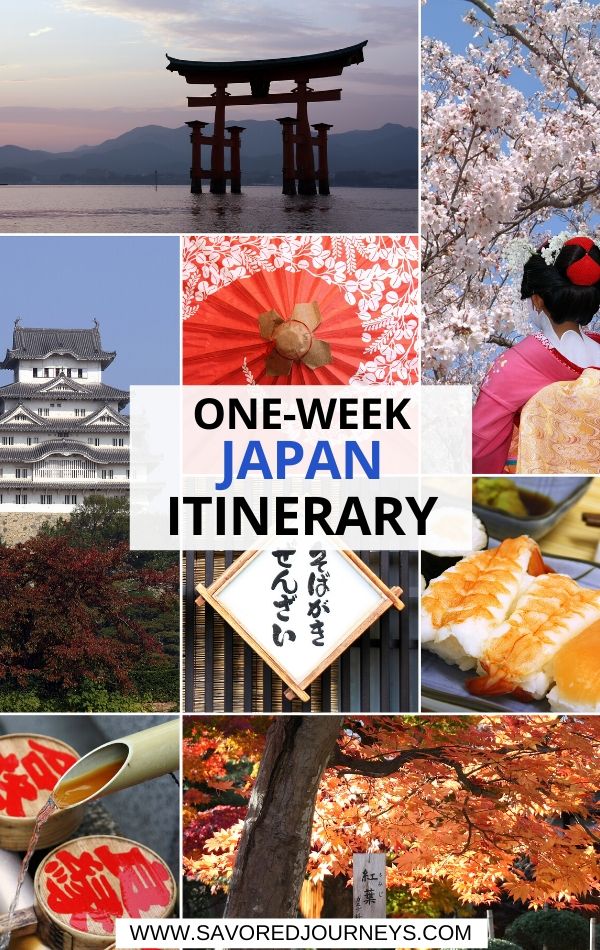
Laura Lynch, creator and writer of Savored Journeys, is an avid world traveler, certified wine expert, and international food specialist. She has written about travel and food for over 20 years and has visited over 75 countries. Her work has been published in numerous guidebooks, websites, and magazines.
51 thoughts on “ Planning a Japan Vacation? Try this 7-day Japan Itinerary ”
Very good tips. I have been to Japan in the past for 8 days. I spent most of my time in Tokyo, Kamakura and Kyoto. I would definitely come back to experience an Onsen and go to Osaka
Hi.. Trying to go in November. I will be there for 7 days or so. My question is how many days did you stay in each city? 🙂 I appreciate your answer
Love this detailed, straightforward guide for planning. I haven’t been to Japan yet, but this is the exact kind of guide I look for to help get my travel planning off the ground regardless of location. I’d love to see Japan in different seasons. The cherry blossoms are so iconic, but the fall colors must be amazing.
Thanks Jackie! I often find it so difficult to get all the basic info in one place, without having to visit 9 blogs to piece it all together. I hope its useful for just that reason.
Great tips. With our impending move to China (we’ll get over there eventually…looking like first week of May now. Visa paperwork is a nightmare!), we can’t wait to have easy access to Japan, a country we have yet to visit! It is a culture I find fascinating and a food scene that I have yet to explore in person. Can’t wait!
You’ll have ample opportunity to explore Japan, once you’re in China. Jealous! I hope your paperworking is over soon and you can get to the fun part!
I just recently spent a couple of hours on a layover in Japan and was blown away by the beauty of the place. I promised myself to go back very soon. This 7-day itinerary sounds like perfect especially the food. Fresh seafood, kobe beef, and more. Great guide and will keep it in mind for an upcoming trip.
It is certainly a fun place to explore. I hope you’re able to get back there soon, Rosemary.
I have no idea why my comment was erased and an address popped in, so I’ll try this again. (Weird.) What I said originally was that I’ve been to Tokyo a couple of times but hadn’t had a chance to explore beyond that. Hot springs, Kyoto and Mt Fuji would be top on my list. Thanks for the travel ideas.
I’ve noticed this happening, Carol. Thanks for typing out your comment a second time. It’s definitely worth it to go back again and explore a little beyond Tokyo.
I’m deeply impressed not only with the beauty of Japan but also with the well-mannered locals it has! Beautiful! Xx
Thanks for this Japan itinerary – this amazing country has been on my list for ages. Now the spring is coming, so I am sure all the blossoms bust be amazing around there. Is it true that Tokyo is much more amazing than Tokyo?
Hey Veronika. This week (end of March, beginning of April) is usually the best time to see the blossoms in Japan. I’m sure you meant another city in that last question, but I’m not sure which one. I personally love Tokyo, but each city has its own unique charm.
Nice and compact itinerary , this one. The tips are really useful for people like who are yet to go to Japan. Especially the one about not tipping. During travels we are so used to tipping everywhere .
I agree, we are so used to tipping, we try to do it everywhere.
Just wondering if you have a ballpark estimate on how much this 7 day itinerary would end up costing if followed exactly? Like hotels and rail passes and such?
Hi Nina, I’d say the full itinerary would cost somewhere in the range of $3500, but it really depends on which hotels you choose and where you’re eating.
kindly send me japan holiday package for 10 days with complete details
The itinerary sounds perfect! My only worry is transportation. Is it common for hotels to offer shuttle rides to airports and vice vera? I also noticed that JR Train offers different passes based on regions, which do you recommend for this itinerary? Is there an extra charge to bring luggage? Do taxi cabs have set rates or is easier to get around by foot near the hotels you suggested?
Nelly, it’s always best to take public transport where you’re going throughout Japan. While it’s possible to take a taxi (if you have trouble walking), it’s best to just take the train or walk. There are local trains everywhere that will take you to the airport. If you stay in a central hotel (the ones I’ve listed) you won’t have to walk far to catch the train to the airport. If you’re traveling throughout Japan, you want the main JR pass, so it can be used everywhere (though there are a few trains it doesn’t cover – none of the ones I mention). There isn’t an extra charge for luggage on the train (unless you have a LOT of luggage).
How could I arrange this to land and depart from Tokyo? I’m also a backpacker so luxury hotels aren’t my thing but getting some sleep and showering is. Is there a link to the 10 day itinerary? Do these trains run overnight as well?
Mario, here is the link for the 10-14 day itinerary: https://www.savoredjourneys.com/destinations/italy-travel-guide/ You will see in that itinerary how you can circle back to Tokyo. And yes, some of the trains run overnight. You just have to check the schedule.
Hi ..we are planning to visit OSaka and Kyto during golden week. Is it advisable? or should we move the dates?
Hi Prakash. I think it depends on your tolerance for crowds. Prices will be higher and it can be difficult to get reservations, but mostly everything will still be open, just possibly super busy and crowded. If it’s possible to move your dates, I would consider doing it. Why contend with the crowds if you can choose not to.
Thanks for this website. You have lots of useful information. We will be traveling to Japan on the 27th of October this year and I cannot wait. We will be bringing my MIL and FIL. They are up in age. Late 70’s. Do you think an all day trip to Kyoto would be too much for them?
Thank you, Sharon Texas
Hi Sharon. I don’t think a day trip to Kyoto would be too much for them – but it does require a bit of walking. Would depend if they’re still able to get around easily. I’m sure you’ll all love Kyoto.
nice information
can you help me for the itinerary travelling with kids ages 7 and 8. we plan to travel on april 2019. our main attraction is universal studio..we only have limited time 7 nights 6 days to be in exact. highly appreciated if you can help me. thanks in advance
Wow! This itinerary blows me away. I’m planning to go in autumn this year (2019), and I’m contemplating which month is best. In any case, I think I will definitely try out this itinerary when I go. However, I have a question. If you had to guess, how much would one need to save or have to complete this itinerary of yours, not including the flight to and from Japan? I’m thinking about the price of the trains, hotel, the cultural landmarks, and more.
Costs depend a lot on what level of comfort you’re seeking. A rail pass starts at around $250 for 7 days and you can get everywhere in the itinerary with it. Hotels or hostels can be as low as $20/day. Many of the cultural landmarks are free to see. Some have small entrance fees, so maybe $100 total for that.
Hi. We are planning a 8 days/9 nights trip to japan mid April this year for a family of 5 (kids 9,12,15). After much thinking I came with this itinerary. Do you think is doable or too much? 2 nights Tokyo, 2 nights Takayama, 3 nights kyoto (with day visit to Osaka), 1 night Hakone, last night at Tokyo to flight back the following afternoon. Not sure if Takayama is too ambitious but it looks lovely. Any advice would be much appreciated!! Thank you
Hi Patti. Takayama does add quite a bit of train travel to your itinerary, it takes about 5 hours. If you already know what you want to do there and it’s of importance to you, I don’t think it’s too much. But if you’re ambivalent at all, I would spend an extra day in Tokyo and an extra day in Kyoto (for a visit to Nara).
Hi Laura, great to read all the comments. We’re planning a trip to Japan in May 2019 starting and finishing in Tokyo for 8 nights. The planned itinerary is: 1 night Tokyo, 2 nights Hiroshima, 2 nights Kyoto and back for 3 nights in Tokyo buying a JR pass. Is this doable in the short period time frame? Any suggestions?
Hi Daniel. That plan is definitely doable. It’ll give you some time to see each location, you’ll just have to be judicious about how you spend your time at each. Be sure to go in with a planned itinerary.
Hi, thank you so much so all the great insights. We are planning to go to Japan end of June/July 2019 for 9 days 8 nights. In/out of Tokyo. Our wish list would be Tokyo, Mt. Fuji (climbing would be amazing), Kyoto and Sapporo lavender visit. Please advise how best we can do all this with our limited time or should be cut something out. Sincerely appreciate your help. Thanks so much.
Amanda, I definitely think you can do all of those places in 9 days. You can follow our itinerary, but you’d want to start in Sapporo, then Tokyo, Mt. Fuji, and Kyoto. You can save time by flying between Sapporo and Tokyo.
I love your itinerary. I’m going to do this trip over US Thanksgiving. How do I do your itinerary and add Hiroshima? I will be in Japan for close to nine days. Thank you!
Hi Hildie, The best way to add Hiroshima to this itinerary is to go there after Osaka. If you don’t have time, you can skip Kobe and just take the train from osaka to Hiroshima. It’s a 2 1/2 hour train from Osaka station to Hiroshima station on the Tokaido-Sanyo Shinkansen Nozomi.
Hi Laura, very impressive itinerary, planning trip to Japan mid January 2020, flying in and out of Narita, looking for 6-7 days itinerary with interest in Tokyo, hakone and koyto mainly for first time travel, can you guide me please Thanks
Sudha, you can mix and match the itinerary however it suits you. You can get the train to each of these places, so just adjust the itinerary to fit your needs. We also have a 14-day itinerary (the link is in this post) that can give you more info on other places you might want to include.
Hi… We are planning a trip this year towards the end of May with our parents for 8 days and following your tips. Thanks for piling it all up at one place. We were thinking of skipping Hiroshima… You think its ok to do that?
Definitely, it will still be a very full and enjoyable trip without the stop at Hiroshima. Enjoy!
Hi Laura, some great ideas here, thanks. one question, we would like to visit either Nagasaki or Hiroshima but haven’t time for both, which would you recommend? thanks Steve
I would personally visit Hiroshima. It’s close to Miyajima, which is a major attraction in the area, and the memorial museum is bigger, plus it’s much closer to Tokyo/Osaka/Kyoto, so might be easier to fit into your plans.
Hi, I am considering a trip to Japan and am currently trying to decide how to go about doing so. This is the best information I have found so far, but I am still unsure about accommodations. Do you stay in a hotel in Tokyo, then travel and come back every day? Or stay at each destination you visit?
Kelsey, you can go as far as Mt Fuji in a day trip but any further you would want to leave your hotel in Tokyo and stay at a hotel in the new destination, like Kyoto or Osaka, for instance. They are too far away to come back. We give recommendations for where to stay in each of those places.
Hello! Great details! Was wondering if it would be advisable to purchase the Rail tickets for a party of 5 when we will only be staying for 6 days and focus on Tokyo and Kyoto attractions? I already purchased a prepaid taxi to and from airport to our hotels so wasn’t sure if we could still maximize the use of the rail tickets given those 2 locations only? Thank you for your help!
I wouldn’t buy a rail ticket if you will only be going to Tokyo and Kyoto. It’s not worth it. You can just buy one way tickets between them for cheaper.
Hello Ms. Laura, I want to visit Japan along with my Parents, They are old and cannot walk for long distance. Can you help me to plan an itinerary for 7 days. Can you also suggest a travel agent for me to plan and arrange everything in advance.
Hi Kumar. You will definitely want to work closely with a travel agent to make sure getting around isn’t a problem. You might consider Japan and More https://japanandmore.com/. We’ve worked with them for a long time. They’re very good.
Leave a Reply Cancel reply
Your email address will not be published. Required fields are marked *
Save my name, email, and website in this browser for the next time I comment.
- Travel Resources
Bucket List Seekers
Extraordinary Travel for Ordinary Couples
Japan , Travel Itineraries · October 23, 2023
Japan Itinerary 7 Days: From Tokyo to Kyoto (+ Alternative Route Options)
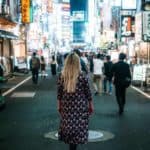
Planning a week in Japan during Spring, Autumn , or another time of year is hardly enough time to see a destination that has so much to offer. But, if you are determined to see the best highlights of Japan in 7 days, then we’ve got the perfect itinerary for you! From Tokyo to Kyoto, here are 4 different options for your 7 days in Japan Itinerary.
We’re going to start off with a warning, if you plan to follow this Japan itinerary for 7 days, then you better be prepared – it’s a bit of a whirlwind!
Japan is much larger than most people realise, however, it is super easy to travel around . The country is well known for its fast and efficient rail network, which makes this 7 day Japan itinerary completely doable.
From Tokyo , to Kyoto , Hiroshima , and Osaka . We cover all the best places in Japan to visit for first timer visitors .
And if you would prefer to get off the beaten path or travel at a slower pace, then we’ve also got you covered with 3 alternative route options to suit every type of traveller.
Did You Know? We use ads and affiliate links on this website. When you click through and make a purchase, we may receive a small commission (at no extra cost to you), that helps us pay the bills to keep running this blog as a free resource. We only recommend products we use ourselves. If you’re planning to book a trip soon, please consider clicking through the links above, so that we can continue to provide free travel guides, just like this one! Please see our Disclosure Policy for more details.

In This Post:
Is 7 Days in Japan Enough Time?
The most common question people who are planning a trip to Japan ask is: “ How many days in Japan is enough? ”
If this is you, don’t stress. We’ll show you exactly what to do in Japan for a week, plus how to make the best use of your time experiencing Japan’s best highlights for first time visitors.
We have visited Japan a few times and have followed 9-day, 10-day and 14-day itineraries on separate occasions. But we know from experience that 7 days in Japan is totally doable.
Japan 7 Day Itinerary Map
This 7 day Japan itinerary map details 4 different routes , including our recommended Japan 1 week itinerary for first time visitors, plus 3 alternative options.
How to Spend a Week in Japan – At A Glance
This Japan travel itinerary starts and ends in Tokyo and ticks off several Japan bucket list items. Here’s a quick breakdown of our recommended Japan 7 day Itinerary:
- Day 1: Explore Tokyo
Day 2: Tokyo to Kyoto
Day 3: kyoto & nara, day 4: kyoto & arashiyama, day 5: kyoto to hiroshima, day 6: hiroshima to osaka, day 7: osaka to tokyo, how to get around japan in 7 days.
Trains in Japan are the most convenient method of transport and the way we recommend getting around if you plan to follow this itinerary.
Japan Rail (JR) is the largest rail provider in the country and operates the Shinkansen (bullet train) between major cities. JR also operates local trains in major cities like Tokyo, Kyoto and Osaka.
As a tourist, you can purchase a Japan Rail Pass (JR Pass) that allows unlimited travel on Japan Rail lines for a set period. For this itinerary, we recommend purchasing a 7 day Japan Rail Pass !
You can choose between Ordinary Car (Second Class), or Green Car (First Class) if you wish to travel in a little more comfort.
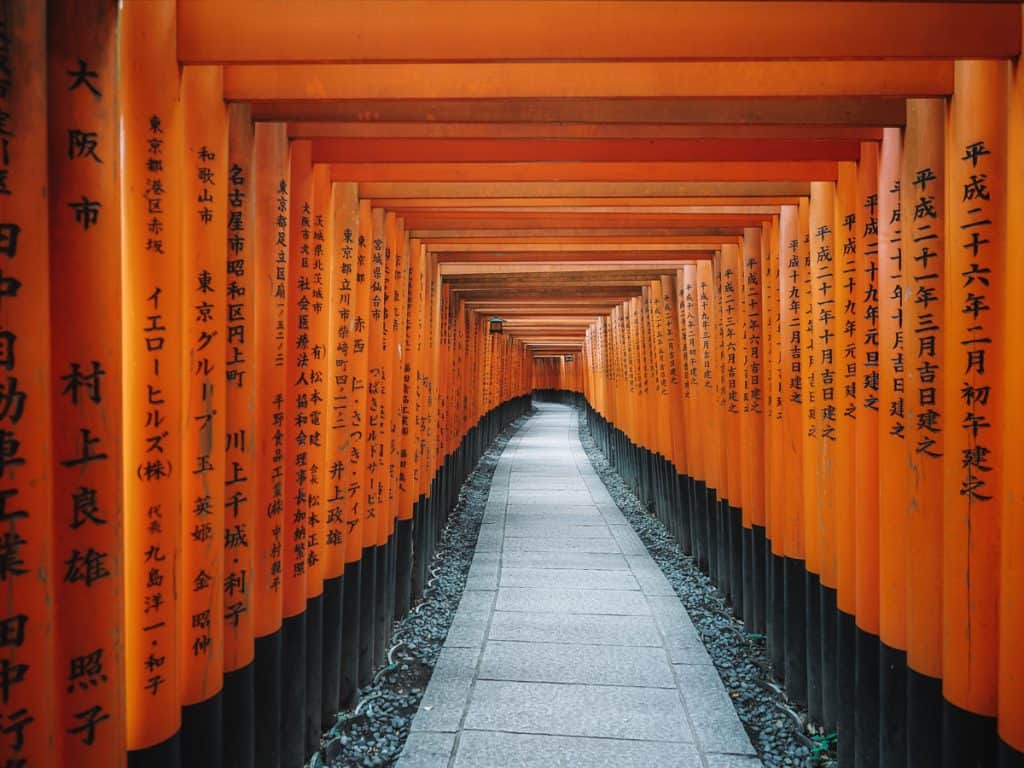
Tips to Prepare for Your Japan 1 Week Itinerary
Purchase a japan rail pass before arriving.
The JR Pass must be purchased at least 2 weeks before arriving in Japan. A voucher will be mailed to your home address, and you’ll need to exchange this for a JR Pass at a Travel Service Center after arriving in Japan.
You cannot purchase a JR Pass after arriving in Japan.
Reserve Seats on the Shinkansen
Seats on Shinkansen trains can book out quickly during peak season . We recommend reserving seats for all Shinkansen trips you plan to take on this itinerary on your first day (as they can book out).
- Tokyo Station to Kyoto Station on day 2 (morning departure).
- Kyoto Station to Hiroshima Station on day 5 (morning departure).
- Hiroshima Station to Shin-Osaka Station on day 6 (morning departure).
- Shin-Osaka Station to Tokyo Station on day 7 (morning departure).
You’ll have to do this via a ticket machine (after receiving your JR Pass). Here is a list of the seat reservations you will need to make for this Japan trip itinerary:
Book Accommodation Early
Japan has become very popular in recent years and accommodation can book up quickly during certain times of the year.
We highly recommend booking your accommodation a few months before you arrive so you’re not disappointed.
We use and recommend Booking.com as they offer a free cancellation period on most hotels (just in case you want to change your hotel later).
Search for Accommodation near Train Stations
Booking accommodation as close as possible to a JR train station means avoiding the challenges of taking a taxi (you can read more about that and other tips for first time visitors here ).
Booking.com has a handy map view feature to check the location of your hotel and usually lists the distance to the nearest train station in the hotel description. We have also listed some good accommodation options near train stations throughout this itinerary.

To maximise your one week in Japan you’ll be moving around a lot. After all, you will be covering 4 destinations in 7 days!
One of the best tips I received before our first time in Japan itinerary was to pack light. You’ll be wheeling (or carrying) bags around train stations, getting in and out of taxis, and the hotel rooms in Japan are much smaller than in most other countries. Go minimalist, Trust us!
Purchase a Japanese Sim Card
We recommend purchasing an unlimited 4G eSIM that can be used in Japan, such as this one . You will use your phone data a lot while navigating around this 7 day Japan itinerary, so you’ll want to save money on roaming costs.
Pick up an IC Card
While the JR Pass covers most train travel on JR Lines, there may be some occasions where you will need to use the Metro or bus lines (which are not covered by JR Pass).
We recommend picking up a SUICA or PASMO card from a ticket machine (or pre-purchase an ICOCA card here loaded with around 1500 Yen). Use this to touch on/off on the Metro and buses (some taxis even accept them).
Read More: 20 Things to Know Before Visiting Japan for the First Time
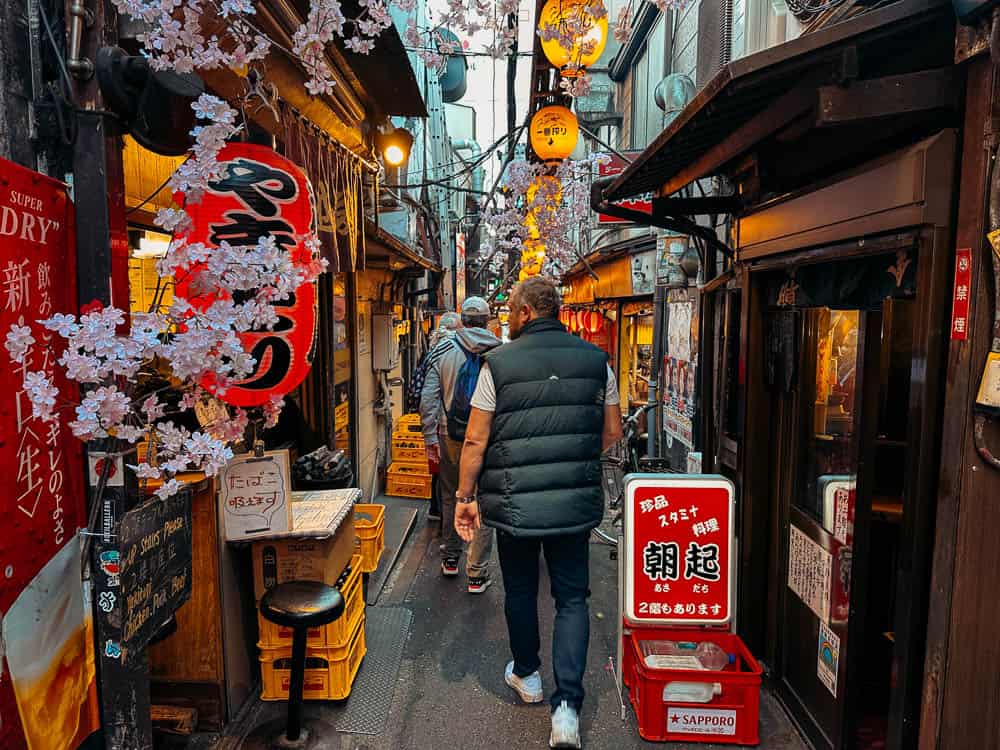
7 Day Japan Itinerary – In Detail
Day 1: tokyo.
Good to Know: You will need to exchange your JR coupon for a JR Pass before you can use JR train lines. We recommend doing this on the first day of your Japan itinerary for 7 days (or earlier if you arrive the day before starting this itinerary).
You’ll need to head to a JR East Travel Service Centre and show your passport, visa and exchange the voucher, and specify the date you would like the 7 days to commence. There is a Travel Service Centre located at Tokyo Station, Shinjuku Station, and Narita Airport Station.
Morning:
Hop on a JR train to Harajuku Station ; wander around Meiji Jingu Shrine ; then take a walk down vibrant Takeshita Street . Take a break in a cat cafe or hedgehog cafe; grab sushi or ramen for lunch before jumping back on the train and heading to Shibuya Station .
Afternoon:
Take a walk across the Shibuya Scramble ; head up the Shibuya Sky and see the famous crossing from a birds-eye view.
Evening:
Catch the train to Shinjuku Station and make you way to Dotonbori ; you’ll be amazed by the neon lights and vibe.
Wander down the cute laneway Omiode Yokocho and stop for some yakitori for dinner. Finish the evening with a drink at one of the tiny bars in Golden Gai .
If you’d prefer to explore Shinjuku on a guided tour, we recommend this evening food tour experience which covers all these spots and more.
Read More: How Many Days in Tokyo is Enough? 1-7 Days Itinerary
Where to Stay in Tokyo:
Tokyo is a large city, but we recommend staying near Tokyo Station or Shinbashi Station . It’s easy to get to other parts of Tokyo via JR train lines from Tokyo Station or Shinbashi Station, and this is also where the Shinkansen trains to your next destination will depart from.
- Budget – Nine Hours Ningyocho is a capsule hotel with modern amenities.
- Mid-range – Hotel Metropolitan Tokyo Marunouchi is within walking distance of Tokyo station.
- Splurge – The Four Seasons Hotel Tokyo at Marunouchi is one of the best hotels in Tokyo!

Reserve a seat on a morning Shinkansen departing from Tokyo Station or Shinbashi Station . This trip is covered by your JR Pass. You should arrive in Kyoto before lunchtime (approximately 3 hours).
After checking into your hotel in Kyoto, head to the Higashimyama Ward and wander up the hill along the Ninnenzaka and Sannenzaka Paths . This is the traditional area in Kyoto and the streets are lined with beautiful shophouses.
Find a local Tea Room and enjoy a traditional Tea Ceremony ; explore Kodai-ji Temple and Hokan-ji Temple .
Wander all the way up to Kiyomizu-dera temple which offers amazing sunset views over Kyoto city.
Make your way back down the hill to Gion Corner ; find a local eatery for dinner. If you’re lucky you might spot a Geisha or Maiko. Alternatively, hop on this evening Gion walking tour for a locals insight.
Where to Stay in Kyoto:
Accommodation in Kyoto is expensive. If you’re travelling on a budget then you’ll find the most cost-effective options near Kyoto Station .
However, if your budget will stretch, Downtown Kyoto offers great nightlife , or staying in the Higashiyama Ward will give you a taste of the traditional side of Kyoto.
- Budget – Piece Hostel Kyoto is located close to Kyoto Station.
- Mid-range – The Blossom Kyoto is a modern hotel located within walking distance from Kyoto Station and Downtown Kyoto.
- Splurge – The Park Hyatt Kyoto is located in the Higashiyama Ward, so you will need to take a taxi (or Metro) to get to/from Kyoto Station, but the experience of staying in this area is well worth the extra effort.

We recommend an early start to beat the crowds. Hop on the JR Nara Line at Kyoto Station and head to Inari Station . This is covered by your JR Pass and there is no need to make seat reservations on this train.
Wander through thousands of orange Torii Gates at Fushimi Inari Taisha . It’s free to visit and the path meanders up the mountain for 3km and the effort is well worth it for the view from the top.
Hop back on the train and continue towards Nara Station (approximately 1 hour). Once you arrive, walk towards Todai-ji Temple and explore the Great Buddha Hall .
You can also feed the deer in the park; there are plenty of street vendors selling crackers or deer food (just beware they are wild animals and can be unpredictable, especially if they have fawns).
Head to Downtown Kyoto for a bite to eat in the Pontocho Area or join an evening food tour .
Read More: 25 Top Things to Do in Kyoto

Hop on the JR Sanin Main Line at Kyoto Station and head towards Saga-Arashiyama Station (covered by JR Pass, no seat reservation is needed on this train).
Walk towards the Arashiyama Bamboo Grove , near Tenryu-ji Temple . Spend some time exploring the beautiful forest; we recommend getting here early if you want photos without the crowds.
Wander across the Togetsu-kyo Bridge and up the hill to the Arashiyama Monkey Park .
Hop on the metro (or take a taxi) to Ryoan-Ji Station and explore Ryoan-Ji Temple , Kyoto’s famous zen garden. From here, it’s a 20-minute walk or 4-minute taxi ride to Kinkaku-Ji (Golden Pavilion) which is a must-do in Kyoto.
Afterwards, take a taxi or bus back to Downtown Kyoto . Check out the bustling Nishiki Market and sample some Japanese delicacies.
Read More: The Perfect Kyoto 2 Day Itinerary

Say goodbye to Kyoto and board the Shinkansen at Kyoto Station for Hiroshima (approximately 1 hour 40 minutes). It’s essential to reserve a seat for this train.
Once you arrive in Hiroshima, leave your luggage at your hotel or store it in a luggage locker at the station.
Catch the tram to Genbaku Dome-Mae Station (not covered by JR Pass). Make your way to the Hiroshima Peace Memorial Museum and learn all about the history of the Atomic Bomb dropped during WWII (this is one of our most highly recommended experiences in Japan!!).
For lunch, find a restaurant nearby that serves Okonomiyaki , a speciality dish from this region – you’ll find them literally everywhere in downtown Hiroshima.
After lunch, spend some time wandering around the Peace Memorial Park and the Atomic Bomb Dome , before ending the day with a visit to Hiroshima Castle .
Where to Stay in Hiroshima:
- Budget – 36hostel is located within walking distance of the Atomic Bomb Dome and the Hiroshima Metro.
- Mid-range – The Knot Hiroshima is located in the downtown area close to the Hiroshima Peace Memorial Park.
- Splurge – Sheraton Grand Hiroshima is conveniently located right next to Hiroshima Station.
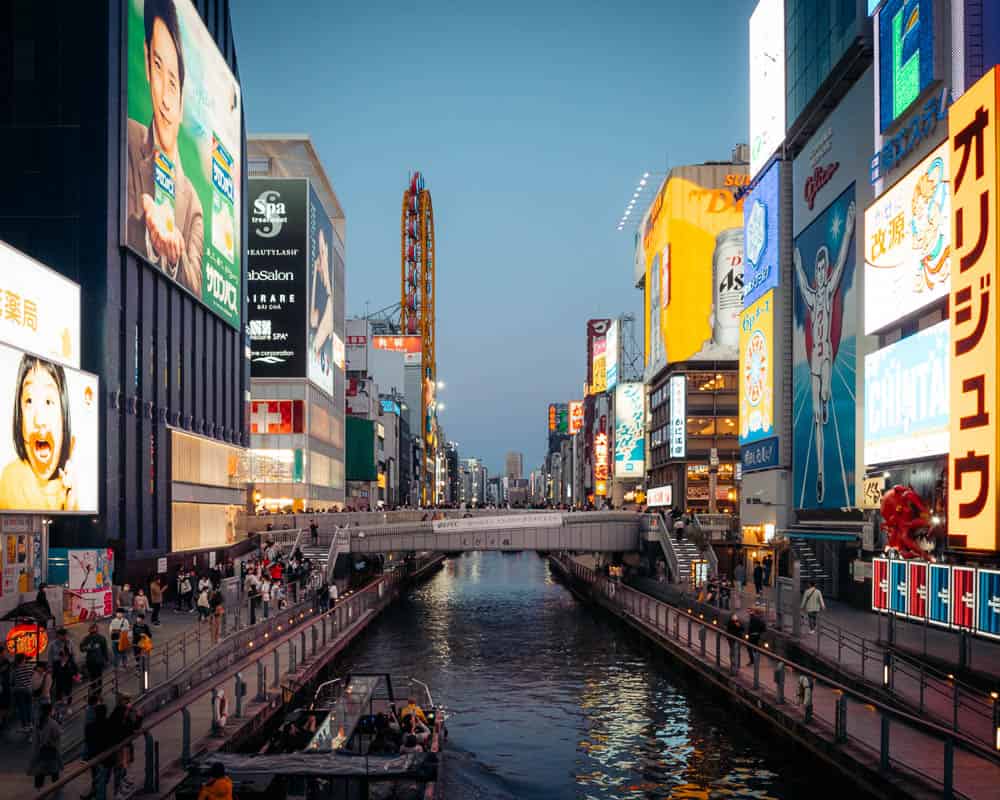
Check out of your hotel and board the Shinkansen for Shin-Osaka Station (approximately 1 hour and 20 minutes, covered by JR Pass).
On arrival, we recommend dropping your luggage at your hotel (or a luggage locker at the station) before heading to Osaka Castle , one of the most spectacular castles in Japan.
Spend a few hours exploring inside the castle and be sure to take a wander around the stunning Japanese gardens surrounding the castle.
Head to Morinomiya Station and hop on the JR Osaka Loop Line to Imamiya Station , then change onto the JR Yamatoji Line to Namba Station (alternatively you can catch the Metro but it is not covered by JR Pass). From Namba, make your way on foot to Dotonbori and enjoy an afternoon shopping or take a boat cruise along the river.
Take a wander through Dotonbori , down the vibrant laneways; don’t miss Hozenji Yokocho . Find a spot for dinner and be mesmerised by the neon lights of this modern city.
Where to Stay in Osaka:
- Budget – Imano Osaka Shinsaibashi Hostel is located within walking distance to Dotonbori and near the metro.
- Mid-range – Hotel Granvia Osaka is located within walking distance from Shin-Osaka Station
- Splurge – Hilton Osaka Hotel is located very close to Shin-Osaka Station.

The last day of your 1 week in Japan itinerary will be at your leisure. Catch the Shinkansen back to Tokyo Station (approximately 2.5 hours). Reserve a morning Shinkansen departure if you have an early flight home, or want to explore a bit of Tokyo in the afternoon.
If you pick a seat on the left side of the train, you’ll be treated to a great view of Mount Fuji .
If you want to explore some more of Tokyo in the afternoon, here are a few suggestions:
- Catch the Metro (not covered by JR Pass) to Asakusa Station and explore Senso-Ji Temple , go shopping for souvenirs along Nakamise Shopping Street , and then head to the Tokyo Skytree for an impressive view of the city.
- Enjoy some shopping at the boutiques around Ginza (walking distance from Tokyo Station).
- Visit the mesmerising teamLab Planets or teamLab Borderless and check out the digital art exhibition (tickets generally book out a few weeks ahead).
- Explore the Tokyo Imperial Palace (walking distance from Tokyo Station) and its beautiful East Gardens. Row a boat ride along the Chidorigafuchi Moat (a must-do during Sakura).
- Hop on JR Yamanote Line and head to Ueno Station . Explore Ueno Park ; end the day wandering around Akiharaba , Tokyo’s “Electric City” and the centre of anime culture.
If you have extra days to spend in Tokyo , check out these 11 Day Trips from Tokyo !
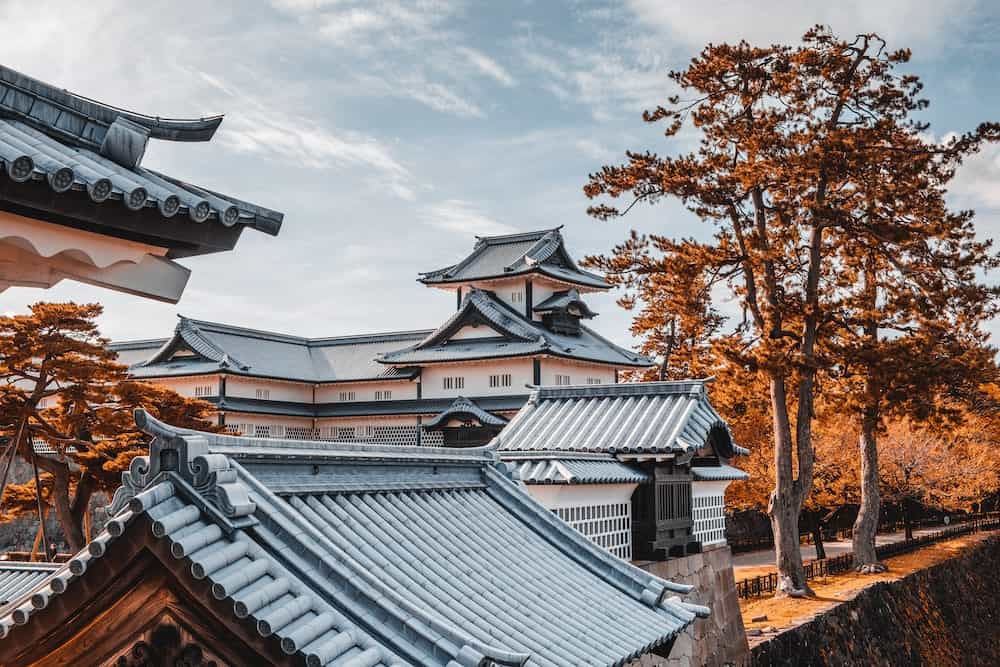
Alternative Japan Itineraries for 7 days
The itinerary above isn’t your only option for spending a week in Japan. There are a few alternative itineraries that would also work depending on your interests and how much you want to squeeze into your 7 days itinerary in Japan.
Alternative Route 1 (Must-See Places + Hidden Gems)
This option is perfect for travellers who want to see some of the best things in Japan but also prefer not to stick to the usual tourist route.
This alternative one week Japan itinerary includes a combination of the must-see destinations , plus a few lesser-visited ones. Be aware you may need to purchase additional train passes if you follow this itinerary, as some off-the-beaten-path destinations are not covered by the Japan Rail Pass.
Days 1-2: Tokyo
It is totally worth spending a few days exploring Tokyo . If you prefer to visit some less-tourist places in Tokyo, then we offer some good options in this Tokyo guide .
Day 3: Kanazawa
Kanazawa is a beautiful city that is slightly off the usual tourist route, but that’s why we love it so much. The best part is you can reach Kanazawa in 2.5 hours via Shinkansen from Tokyo!
Here you’ll find Kenroku-en , one of the best Japanese-style gardens in the whole country. Kanazawa Castle is also worth a visit, it’s almost as spectacular as Osaka Castle but with far fewer tourists.
Days 4-5: Kyoto
Although it’s a very popular tourist destination, we’ve still included Kyoto in this itinerary option, because it is arguably the most beautiful city in Japan and is totally worth a visit. There are so many temples and gardens in Tokyo that is actually very easy to find ones that are not on most tourists’ radar. Click here for our recommendations of things to do in Kyoto .
Days 6-7: Hakone
Hakone is one of our favourite destinations in Japan and is very easy to visit, as it’s located between Kyoto and Tokyo.
You can stay in Tokyo and visit Hakone on a day trip, however, we recommend spending the night in a traditional Ryokan to experience a side of Hakone that day trippers often miss out on. Click here for our full guide to visiting Hakone.

Alternative Route 2 (Slower-Paced Travel)
If you prefer to stay in 2 different destinations during your Japan 7 day itinerary (rather than 4), then we recommend spending 4 days in Tokyo and 3 days in Kyoto.
With this option, you will do more day trips, however, you won’t need to move your luggage around 4 different destinations in Japan in a week.
You can still use your Japan Rail Pass to get around both cities, as well as the Shinkansen between Tokyo and Kyoto.
Days 1-4: Tokyo
There are plenty of things to do in Tokyo that you can easily fill 4 days. Use our guide to plan what you want to do in Tokyo and where to stay.
There are also plenty of day trip options from Tokyo , which are covered by the Japan Rail Pass. We recommend taking a day trip to either Kamakura, Hakone , Nikko, or Mount Fuji.
Days 5-7: Kyoto
There are plenty of things to do in Kyoto for 3 days – check out our guide to the best things to do in Kyoto , or follow our Kyoto itinerary and explore the city for 2 days, then on your third day, take a day trip to either Osaka or Nara (both are covered by Japan Rail Pass).
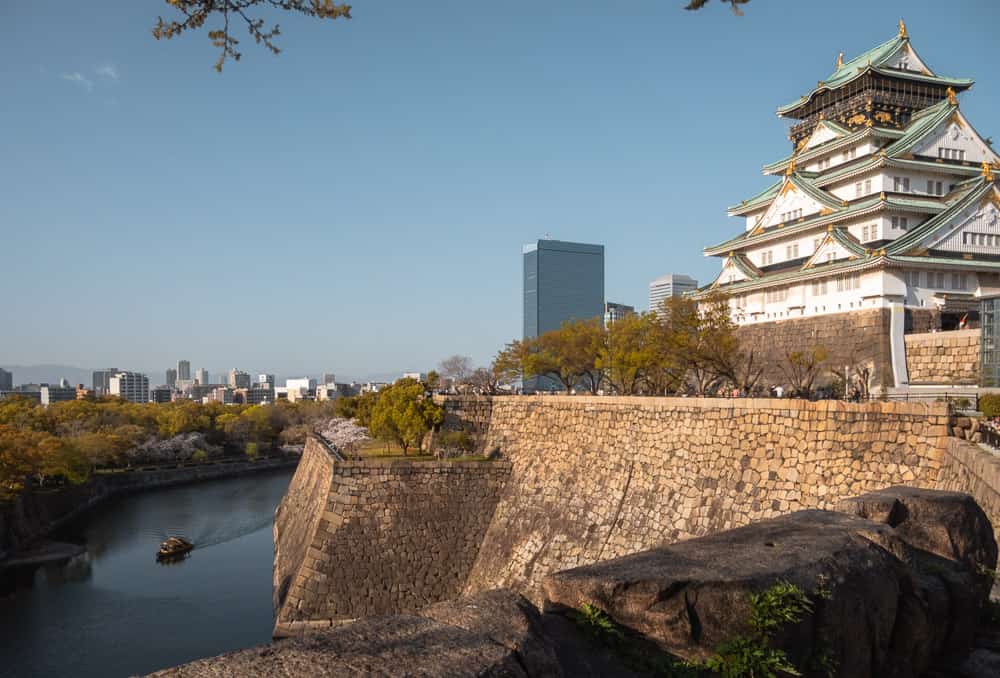
Alternative Route 3 (Starting/Finishing in Osaka)
Osaka is Japan’s third-largest city and you will often find cheaper flights arriving in Osaka, rather than in Tokyo.
Osaka is located very close to Kyoto and is a great place to start and finish your 1 week Japan itinerary. On this round-trip itinerary, you will spend 2 nights in Osaka, 2 nights in Tokyo, and 2-3 nights in Kyoto.
Day 1: Osaka
Osaka is a great city to visit, especially if you fancy yourself as a bit of a foodie traveller. Spend the first day exploring the spectacular Osaka Castle , take a river cruise, and eat your way around the vibrant Namba and Dotonbori areas.
Day 2: Day Trip to Hiroshima
For the second day, we recommend spending the night in Osaka and doing a day trip to Hiroshima . It’s only 1.5 hours via Shinkansen from Osaka to Hiroshima, and you can spend most of the day exploring the Hiroshima Peace Memorial Park , Museum and Hiroshima Castle .
Day 3-4: Tokyo
Take a Shinkansen from Osaka to Tokyo and spend a few nights exploring Japan’s largest city. We offer plenty of options for exploring Tokyo, plus a full itinerary in our Tokyo guide for you to follow.
Day 5-7: Kyoto
This Japan first time itinerary leaves the best for last. Kyoto is the most popular destination in Japan and you can spend 2 days exploring all the best spots in Kyoto.
We recommend staying in a traditional Ryokan for a true Kyoto experience.
Kyoto is located only a 20-minute train ride from Osaka, so it’s very easy to get back to Osaka Airport for your departing flight.
Ready to Plan Your Trip to Japan?
So, as you can see, it’s possible to experience the highlights of Japan in one week. We personally feel that spending 2 weeks in Japan is ideal and offers a more in-depth experience, however, 7 days is enough for a taste of Japanese culture.
We hope this first-time Japan itinerary has been helpful to you to plan your own trip, and that you’ve found a route option to suit your needs. For more information to help you plan your trip, check out our Ultimate Guide to Planning a Trip to Japan , and other Japan articles below.
More Japan Travel Guides
View more resources & tips to help plan your japan trip.
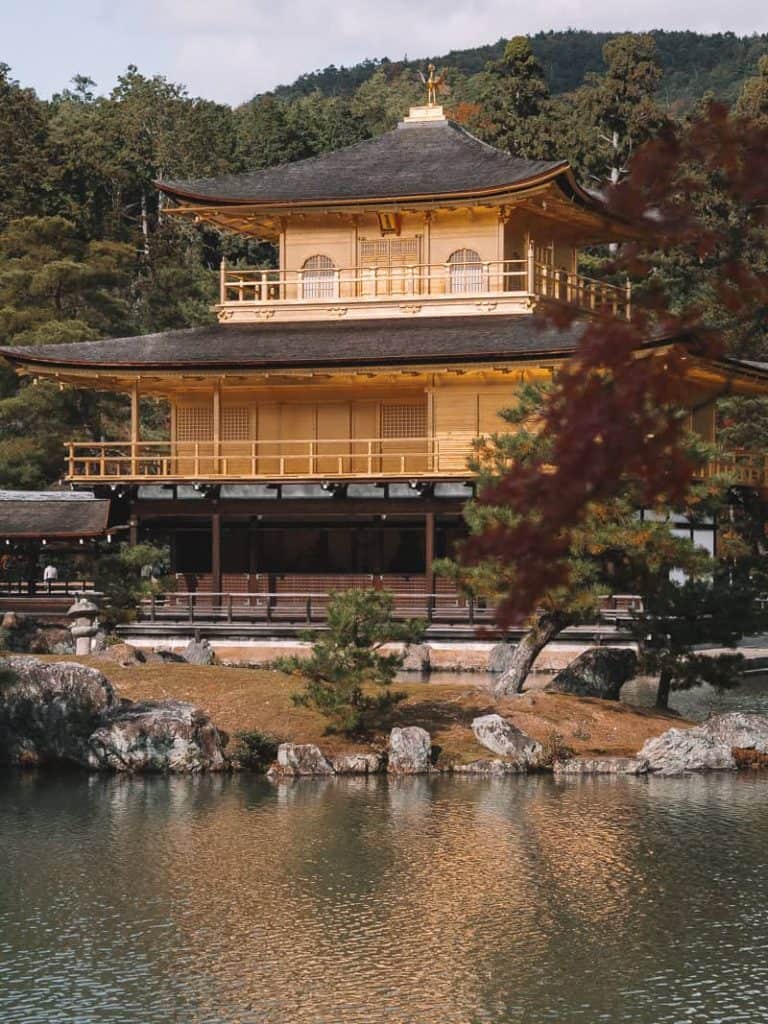
Share This Post:
Get Access to our FREE Travel Resources Library!
Subscribe and get exclusive access to loads of printable planning checklists, maps, itineraries, destination bucket lists, and more!
You’ll Also Love

How Many Days in Tokyo is Enough for You?
Trending now.

- Destinations
- Travel Guides
- Travel Itineraries
- Travel Tips
- Accommodation
Join Our Newsletter
And get exclusive access to our FREE Travel Planning Resources!
- Work With Us
- Disclosure Policy
- Terms & Conditions
- Privacy Policy
Copyright © 2024 Bucket List Seekers
Privacy Overview

Ultimate 7 Day Japan Itinerary
To be perfectly honest, I don’t think 1 week in Japan is enough. I’d recommend more like 14 days or even 21 days in Japan, but sometimes we don’t always have the ability to travel for such an extended period of time. Sometimes, 1 week is all we get, because, I mean, you still have a full-time job or school, family, etc. Even if you only have a week, go anyway! Check out this 7 day Japan itinerary for all the best things to do in Japan with a limited amount of time!
Disclaimer: This post contains affiliate links. Find more information about affiliate links on our policy page .
- Before You Go
Day 1: Travel Day / Chiba
Day 2: tokyo, day 3: tokyo.
- Day 4: Day Trip
Day 5: Kyoto
Day 6: kyoto, day 7: travel day, transportation & discount passes, souvenirs & shopping, additional information, before you begin.
If this is your first time traveling to Japan, I highly recommend doing some research into the country’s transportation system, customs, etc. I believe you’ll find it much easier to put together a Japan itinerary if you sort of know what you are getting yourself into.
Useful articles:
- Top Japanese Phrases for Travel
- Best Japan Travel Apps – Directions, Food, & More
- Navigating Japan’s Train System: Tips for Traveling Japan by Train
- Is the Japan Rail Pass (JR Pass) Worth It?
7 Day Japan itinerary
When you first land in Japan, chances are you are going to be super excited to dive right into Tokyo. However, if you have a flight that lands in the morning or early afternoon, I suggest taking a minute to check out the area around the airport before heading into town. Chiba prefecture has some of its own sights worth seeing, such as Naritasan Temple.
Morning: Senso-ji, Nakamise-dori
Senso-ji is Tokyo’s oldest temple, making it a great way to kick off your 7 day Japan itinerary. At the main hall, you can “purify yourself” by washing your hands in the nearby fountain with the ladle, as well as cover yourself in the smoke of the incense, which is believed to have a healing effect.
Just outside of Senso-ji is Nakamise-dori, a popular shopping street. Here you can try all sorts of traditional Japanese food as well as find lots of cool souvenirs based off of Japanese culture and history. The souvenirs here are likely a little more expensive than other places, but nowhere else will you find such a great selection of souvenirs in one location, so the convenience might be worth it.
Afternoon: Akihabara
Akihabara is the place to be for techies and geeks. Home to much of Japan’s pop culture, the many signs, lights, and sounds can be a little overwhelming at first, but is a great place to just wander around and get lost in its many electronics and anime shops. Here, you’ll find many of Japan’s famous pop culture locations such as Radio Kaikan, Gundam Cafe, AKB48 Cafe and Shop, and more.
Evening: Omoide Yokocho
Omoide Yokocho literally translates to “Memory Lane,” but more Omoide Yokocho is more often referred to as “Piss Alley.” Despite it’s charming name, this series of small alleys is a great place to spend an evening due to the sheer number of restaurants and bars located here. Aside from the great food, it has a very picturesque feel, created a great atmosphere.
View this post on Instagram 📸Photo Credit: @_7ysk7_ • 🌐Location: Omoide Yokocho, Shinjuku A post shared by Japanese Words Daily (@japanesewordsdaily) on Sep 2, 2018 at 5:52am PDT
Morning: Tokyo Metropolitan Government Building, Shinjuku Gyoen, Shibuya Crossing
There are several different observatories that give good views of the city. However, why pay an expensive fee for an observatory when you can go to the top floors of the Tokyo Metropolitan Government Building for free? They actually have two different observation decks: the North Observatory and the South Observatory.
Shinjuku Gyoen easily topped my list of best parks and gardens in Tokyo . You have to pay to enter, but it is 100% worth the admission price. It’s beautiful all times of the year, but its especially spectacular during autumn and cherry blossom season.
Considered one of the busiest intersections in the world, Shibuya Crossing (also called the Shibuya Scramble), is a must see. You can be one of the several people walking through the intersection, or you can get a top down view of the scramble from some of the nearby stores.
Afternoon: Harajuku, Meiji Jingu
Harajuku is well known for its street fashion and art and an icon of Japanese pop culture. Along the main street, Takeshita-dori, you’ll find everything from quirky clothing stores to luxurious boutiques. The shops are a bit expensive, but even if you don’t plan on buying anything, it’s worth exploring the area, if only for just the street fashion. Especially on the weekends, you’ll see everything from super girly and pink to punk goth.
Considered one of the top shrines in Tokyo, Meiji Jingu is a shrine dedicated to souls of Emperor Meiji and his wife, Empress Shoken. Here, you can dive into Japanese culture by getting English versions of omikuji (Japanese fortune telling strips) and ema, a votive tablet where you write down your prayers and gratitude.
View this post on Instagram *** L: Nanachi (@na_na_loli_frill), R: Nanachi’s friend — #harajuku #harajukufashion #harajukukei #jfashion #japanesefashion #kawaij #kawaiifashion #lolitafashion #sweetlolita #angelicpretty #streetsnap #原宿 #原宿ファッション #原宿系 #カワイイ #カワイイファッション #ロリータ #ロリータファッション #ロリィタ #ロリィタファッション #甘ロリ #アンジェリックプリティ #アンプリ #ストリートスナップ #ストスナ A post shared by Harajuku Fashion Walk in Tokyo (@harajukufashionwalk) on Nov 29, 2018 at 1:22am PST
Evening: Dinner
Dinner shows are a great way to enjoy some delicious Japanese food while still getting immersed in the culture of Japan. There are a couple of different shows you could see depending on your interests.
Probably one of the most popular dinner shows is at Robot Restaurant . As you can guess by the name, it has a robotic theme and known for its crazy lights, extravagant costumes, and loud noises.
For more traditional Japanese theater, you can catch a Kabuki dinner show . This particular dinner show is catered towards first timers, giving explanations of Kabuki and its history in English.
Day 4: Day Trip of Your Choice
There are so many different places in Japan that make for great day trips from either Kyoto (the next destination on this one week Japan itinerary) or Tokyo. Which one you should do will largely depend on your interests.
Day Trips from Tokyo
- Nikko : Visit the lavishly decorated temples set back in the mountains and forest
- Kamakura : Go back in history at the previous capital visit some local shrines and temples
- Mt Fuji & Kawaguchiko : stroll around Lake Kawaguchiko and enjoy beautiful views of Mt. Fuji
- Hakone : Take a dip in some of the most unique hot springs
- Sendai : Experience rural Japan while getting sometime fantastic views
Day Trips from Kyoto
- Osaka : Second largest metropolitan city in Japan, good mix of traditional culture and modern city
- Nara : See the largest bronze buddha statues in Japan and have some friendly deer bow to you
- Himeji : Tour one of the most famous castles in Japan
- Hiroshima : Visit the Atomic Bomb Memorial and Hiroshima Peace Memorial Museum
Morning: Kimono Rental, Arashiyama
There has been some debate of late as to whether or not foreigners should wear Japanese kimonos, especially given the recent social issues of cultural appropriation, white-washing, and similar. However, after several discussions with some Japanese friends of mine, we’d more or less come to the conclusion that most Japanese welcome foreigners wearing kimonos, so long as they are doing it out of respect for and interest in Japanese culture. They’re excited that others are interested in learning about and being apart of their culture.
With that being said, I think it’s worth renting kimono in Kyoto for a day. It’s probably the most “hands-on” you can get with Japanese culture. If nothing else, you’ll gain a strong appreciation for the people who actually walk around in kimono all-day every-day (especially the women).
After you’ve donned your kimono, heading over to Arashiyama and take a nice, relaxing stroll through the bamboo forest.
Afternoon: Sagano Scenic Railway, Kinkakuji
If you decided to rent kimono for the day, you may find that your feet are a little tired from the traditional sandals, however, that doesn’t have to stop you from seeing the city.
The Sagano Line was actually replaced more the more efficient JR Sanin Rail Line, but the Sagano Line was preserved and outfitted to become the Sagano Scenic Railway. On this line, you can sit next to one of the many large windows and relax as the mountains and rivers roll by.
After the nice, relaxing train ride, I recommend stopping by Kinkakuji. It’s one of Kyoto’s most famous temples , due to the fact that the entire exterior is plated in gold.
Evening: Kyoto Tower
Across the street from Kyoto Station is Kyoto Tower, Kyoto’s tallest structure. If it’s height isn’t enough to ensure you don’t miss it, it’s also lit up at night. You can head to the top of the observatory to get some beautiful views of the city. Then, once you return to the bottom floor, you can find all sorts of unique souvenir stalls and Japanese snacks.
Morning: Fushimi Inari
Fushimi Inari easily topped my list as my favorite shrine in all of Japan. I have this fascination with torii, that gates typically found at the entrances of shrines. It’s no surprise then that Fushimi Inari was my favorite, because it’s literally filled with 1,000+ bright red torii. The shrine is located at the base of Mount Inari, and several hiking trails lead into the forest up the side of the mountain. The view at the top of the mountain isn’t the most breathtaking (too many trees in the way), but its an enjoyable hike nonetheless.
Afternoon: Kiyomizu-dera, Shoren-in
As a UNESCO World Heritage Site, Kiyomizu-dera is another incredibly popular temple. Built on the site of the Otowa Waterfall, visitors can drink from the streams of water known to grant various benefits such as luck in school, health, or love. Another notable portion of the temple is the wooden porch located around the main buildings that give you spectacular views of the city below.
Shoren-in is a more unique temple is design compared to other temples. It has a beautiful drawing room, complete with the taditional tatami mats and shoji (paper) sliding doors. On the engawa (wooden walkway along the exterior of the buidling), you can sit and enjoy the beautiful garden.
Evening: Samurai Kembu Theater
While the shows at Samurai Kembu Theater are mostly geared towards tourists, its still a fantastic way for visitors to learn about the history and culture of the ancient samurai, as well as see performances with a katana (Japanese longsword) and fan. Depending on what package you choose, you can even take a lesson in the traditional art of Kembu after the show.
If you choose to fly out of Tokyo, chances are you’ll lose most of your last day in Japan to traveling. Between catching the bullet train back to Tokyo from Kyoto, and having to arrive at the airport a few hours before your flight, you likely won’t get a whole lot of time to do any last minute exploring. If you get a minute to do some sightseeing, definitely go for it, but don’t miss your plane either!
How Much Should I Budget?
NOTE: Conversion Rate at time of writing: $1 USD = ¥110.99 JPY
For this 7 day japan itinerary, you’ll likely spend about ¥35,500 ($320 USD) on train and bus rides, depending on the route you take, and assuming you do not purchase any discount passes (see below). This estimate includes not only getting around within Tokyo and Kyoto, but also getting between Tokyo and Narita airport as well as the bullet train ride between Kyoto and Tokyo.
For this particular itinerary, I recommend NOT purchasing the Japan Rail Pass . The bullet train ride to Kyoto as well as the return ride back to Tokyo would total about ¥26,160. Even if you solely used JR trains in Tokyo, the Japan Rail Pass would only cover about ¥27,360 of the ¥35,500 you’ll spend on transportation. A 7 day Japan Rail Pass costs ¥29,110, so it’s not quite worth the cost.
I do, however, recommend purchasing the Kyoto City Bus Pass and an IC Card . if you plan on using day 4 of this itinerary to take a day trip to Osaka, you may also want to buy the Kyoto-Osaka Sightseeing Pass . Lastly, you can also purchase a Tokyo Subway Pass , but the savings from the subway pass are minuscule, so it’s up to you.
The IC Card is a re-loadable card that you can use to pay for the train and bus. It is not a discount pass, although paying by IC Card is generally 2 – 9 yen cheaper than a ticket. Having one is more for convenience, so you don’t have to get in line to buy a ticket every time you want to ride the train or bus.
The Kyoto City Bus Pass is good for one day (so you’ll need to buy two of them for this itinerary) and allows you to ride the local buses an unlimited number of times. The local bus costs ¥230 ($2.08 USD) per ride, regardless of how far you are going. Over the course of your two days in Kyoto, you would spend about ¥1,840 ($16.60 USD) on bus rides. However, the price of two Kyoto City Bus Passes is only ¥1,200 ($10.83 USD), meaning you would save ¥640 ($5.77 USD).
The Kyoto-Osaka Sightseeing Pass covers train rides on the Keihan rail line. A 1-day pass costs ¥800 and a 2-day pass costs ¥1,200. Depending on what you do in Osaka and your route, this pass may save you some money on the train rides.
The Tokyo Subway Pass allows you to ride the subway an unlimited number of times within a certain time range, all for a flat fee. There are three different options for the Tokyo Subway Pass: 24 hours, 48 hours, and 72 hours. For this 7 day Japan itinerary, you would likely want the 48 hour pass for ¥1,200 ($10.83 USD). However, without the pass, you would likely spend about ¥1,240 ($11.19 USD) on the train and subway, so you would really only be saving ¥40 ($0.36 USD).
Unless you’re looking for the ultimate fine dining or sushi experience, you’ll likely pay about ¥1,000 ($9.01 USD) for a breakfast or lunch meal, and closer to ¥2,000 ($18.02 USD) for dinner. If you’re a nightlife person, I’d add an extra ¥2,000 – ¥3,000 ($18.02 – $27.03 USD) for drinks at an izakaya (Japanese pub).
For 7 days in Japan, a food budget of ¥30,000 – ¥40,000 ($270 – $360 USD) should be plenty.
Hotel prices vary greatly depending on the time of year that you visit and how far/close in advance you make your reservations, and where in the city you stay. It also depends on whether you a budget, luxury, or middle-of-the-road type of traveler.
Capsule hotels and hostels in Tokyo can run as cheap as $20 USD a night during the off season and slightly away from downtown. If you go during more popular times of the year and stay closer to downtown, it will likely cost closer to $50 – $70 USD a night.
More middle-of-the-road hotels in Tokyo are likely to be in the $120 – $150 USD range for the downtown area. If you get a few miles outside of downtown, you may find 3-star hotels more in the $70 – $100 USD range.
Luxury 5-star hotels can range anywhere from $230 – $920 USD per night. Top name hotels like Park Hyatt Tokyo will be around $700 per night and the Ritz-Carlton Tokyo is about $900 per night. Hotel Chinzanso Tokyo (which has a beautiful garden you should visit regardless of whether or not you stay at the hotel) is closer to $300 USD a night.
While in Kyoto, I recommend staying in a Ryokan (a traditional Japanese Inn). Prices of Ryokan usually vary between $70 – $200 USD per night depending on how fancy of a Ryokan you wish to stay at. Otherwise, Kyoto hotel prices are relatively similar to the ones in Tokyo.
Thankfully, most of the activities and sightseeing in this 7 day japan itinerary are free. However, there are a few that require an admission fee or tickets. If you plan on doing all of the activities on this itinerary, you can expect to spend about ¥7,544 – ¥16,784 ($68.10 – $151.51 USD).
The large price range is due to the different packages and plans available for some of the different activities. How cheap or expensive the Japan trip is totally up to you. You can see a breakdown of activity prices below.
Prices as of February 13th, 2019:
- Shinjuku Gyoen: ¥500
- Kinkakuji: ¥400
- Kimono Rental : ¥3,024 – ¥6,264
- Samurai Kembu Theater : ¥3,000 – ¥9,000
- Sagano Scenic Railway: ¥620
Chances are, you’re going to want at least one souvenir from Japan, especially if this is your first time. Thankfully, souvenir shopping is naturally built into this Japan 7 day itinerary. Districts like Akihabara, Shibuya, and Shinjuku are fantastic places to do some souvenir shopping.
A few other places to keep in mind for souvenir shopping while you make your way through Japan are Nakamise-dori (just outside Senso-ji), Takeshita-dori (Harajuku), and Kyoto Tower.
Like food, budgeting for souvenirs comes down to personal preference. I am obsessed with Japanese wall scrolls, so suffice to say I bought a lot those — most of which ranged from ¥1,000 – ¥2,000 ($9.01 – $18.02 USD) per scroll. Most smaller souvenirs like Japanese fans, chopsticks, maneki-neko (beckoning cats), Japanese towels, and such will likely be about ¥1,000 ($9.01 USD) or less per item.
As a general rule of thumb, I typically budget about $100 USD for souvenirs for every trip that I take, unless I know ahead of time what souvenirs I intend on buying.
The Total Budget
At the end of the day, how expensive your Japan trip comes down to how you like to spend your money. If you go for the cheaper hotel options and don’t go to fancy restaurants, you could probably get away with only spending about ¥120,000 ($1,100 USD) on this trip. However, if you prefer a little bit comfier hotels and want to do the more expensive packages for the activities, you will likely spend closer to ¥200,000 ($1,800 USD).
Figuring out where to go, what to do, and how much it all will cost is a big part of planning a trip to Japan. Unfortunately though, it’s not everything. Here are a few more articles that can provide even more helpful information when planning a 7 day trip to Japan.
- Navigating Japan’s Train System
- Best Japan Travel Apps
If you’re looking for some alternatives to the activities listed above, you can check out my in-depth itineraries.
- Tokyo in 5 – 7 days
- Kyoto in 2 – 4 days
Liked this article? Pin it to Pinterest!
2 thoughts on “ultimate 7 day japan itinerary”.
HI.. am planning my trip to Japan and find your site so very useful. Thank you for your detailed descriptions. Can you please confirm if you have included the return train ticket from kyoto to Japan on the return leg in your above calculations. I read that a one way train ticket from tokyo to kyoto is 13,100 yen so return will be 26,200 approx right. Yet you say that undiscounted ticket costs for all travel incl. internal subways in both locations and airport transfers is 24500. Again thank you for your efforts in putting these guides together.
So exciting to be planning a trip to Japan! Glad you’ve found everything useful!
You are correct. It looks like I included the return trip to the airport from Tokyo, but missed the return ticket from Kyoto to Tokyo in my budget calculations. Thanks for pointing that out! I’ve updated the post accordingly!
Thanks, Kiyoko
Leave a Comment Cancel Reply
Your email address will not be published. Required fields are marked *
Save my name, email, and website in this browser for the next time I comment.
This site uses Akismet to reduce spam. Learn how your comment data is processed .
We Are Travel Girls
A Community Created To Inspire, Connect, Educate & Empower Female Travelers
ASIA , JAPAN , TOKYO · March 19, 2018 Last Updated on March 16, 2024
THE PERFECT 7 DAY JAPAN ITINERARY
This post may contain affiliate links. As an Amazon Associate I earn from qualifying purchases. We may receive a small commission when you make a purchase using our link.
Japan is more popular than ever – and for good reason, the country is teeming with gorgeous scenery, delicious food, and ancient culture. Going to Japan will leave you speechless and overload your senses, but in the best way possible. A week in Japan is usually classified as a quick trip, but it is the perfect amount of time to see everything from bustling cities to tranquil shrines.
Day 1 – Tokyo, Shibuya & Shinjuku
Try and book an overnight long-haul flight to Tokyo. This ensures that you land first thing in the morning and gives you the whole day to begin exploring.
The good news is Tokyo is lively and energetic with an abundance of things to do. This will help you acclimate to the time change.
Book your stay at Hotel Ryumeikan in Tokyo and take advantage of their refresh room (complete with showers) so you can enter the day fresh.
Shibuya District
Once you’re ready, head out first to Shibuya district. The famous Shibuya Crossing is one of those quintessential Japan experiences and the perfect way to start your trip. The sheer amount of people is overwhelming and awe-inspiring at the same time.
Near the crossing is also the Myth of Tomorrow mural and the Hachikō Statue – both can’t be missed.
Explore the many winding streets and shops that fill Shibuya. Once hungry grab a late lunch at Uobei Sushi .
Every seat has an iPad to order with. Once your order is in, sushi (and other dishes) come delivered to you on a conveyor belt directly in front of you, and fast! Not only is it a unique and totally Japanese experience it’s also a cheap eat.
As the sun sets, wander over to Shinjuku. The neon signs begin to light up and the district comes alive.
Grab dinner on Ramen road and get tickets to Robot Restaurant . One of the best shows in Tokyo, this is sure to keep you up!
The show is a mix of robots, scantily clad women, huge LED screens, dance numbers, and fight scenes. Seriously, go here. It’s awesome.
Day 2 – Tokyo, Imperial Palace & Harajuku
Reserve breakfast at Ritz-Carlton Tokyo . (Or stay there – the hotel is beautiful!) The views from the lobby and restaurants are some of the highest and most beautiful in all of Tokyo. Watching the sunrise over Tokyo is a moment you won’t soon forget.
In the morning head over to the Imperial Palace and gardens. The Imperial Palace is where the original Edo Castle once stood!
The rest of the neighborhood that surrounds the palace is a surprisingly modern place with huge skyscrapers. Nearby is Tokyo Station, newly renovated and expanded in 2014 for the centenary celebration, you shouldn’t miss it.
For lunch, make reservations at the Peninsula Hotel for their Strawberry Afternoon Tea. Enjoy lovely music from live violinists and pianists while sipping on world-class tea and cakes.
After lunch head to Harajuku, the center of Japanese youth and fashion culture. An extremely colorful district with tons to see and do, make sure you buy giant cotton candy from Totti Candy Factory and shop till you drop at all the unique boutiques.
Our Top Places To Stay Near Tokyo, Japan
- Pullman Tokyo Tamachi
- Hotel Chinzanso Tokyo
- The Prince Gallery Tokyo Kioicho
- Find the best price on hotels in Tokyo, Japan
Day 3 – Mount Fuji
On day 3 wake up early and take a train from Tokyo Station to Hakone . The entire journey takes a little under two hours. Pray the weather is clear and luck is on your side because this town has fabulous views of Mt. Fuji.
Even if Fuji is covered in clouds Hakone is an excellent day trip from Tokyo. The small town packs so much adventure you shouldn’t miss it.
Hop aboard a Viking ship that sails up and down the lake. Into hiking? Check out the small island for some easy trails. Also, don’t miss the shrine and torii gate that sits right on the water!
For more information, be sure to read our complete guide to visiting Hakone !
Subscribe to get our FREE eBook with tips on saving money when you travel!
Day 4 – Tokyo, Fish Markets & Temples
Back to Tokyo and today is all about history and temples. Wake up early and wander the famous Tsukiji Fish Market . If you want to see the inside (along with the morning auction) you will have to begin queuing at 4 am. If you only want to view the outside and eat some great food, come around 9 am.
Once you’re full, take the train over to Meiji-jingu, but plan to arrive before 2 pm. Twice daily (8 am and 2 pm) you can watch nikkusai – a ceremonial offering of food and prayers to the gods. Even if you miss the ceremony the park is beautiful to walk around.
End your day by heading to Asakusa and visit the absolutely gorgeous Senso-Ji temple. Take a guided tour of the area. This district has a rich history; from old-school theatres to promiscuous red-light districts.
Near Asakusa is Roppongi Hills, which holds trendy food and upscale shops. Eat dinner in the area and then end the night by viewing the iconic Tokyo Tower. The tower is best viewed at night when it is illuminated and twinkles against the dark Tokyo streets.
Day 5 – Kyoto
Grab an early morning bullet train from Tokyo Station and arrive in Kyoto in under two hours. This ancient town has so much to offer but you can pack a lot into a couple days since the town is small and connected by an efficient bus service.
If you want to stay in luxury check out the newly opened Ritz-Carlton Kyoto . I didn’t get a chance to stay here so I can’t speak from experience, but everyone I met was telling me about it so I feel like I must mention it. Plus, it was named The Best Hotel in Japan by Condé Nast Traveler Readers’ Choice Awards for 2017.
Start your day exploring Kyoto at Yasaka Shrine, taking in the gorgeous gardens and temples. Behind the shrine is Maruyama Park which is impressive any time of year. In April, it comes alive with cherry blossoms and in the fall the changing leaves make it magical.
For a late lunch, stop in at Omen Kodaiji . This is a branch of Kyoto’s famous Omen noodle chain. Of course, order the signature udon noodles served in broth with a side of fresh veggies. (Vegan/Vegetarian options available)
After lunch, walk past Kodai-ji another gorgeous Buddhist temple. Then continue exploring over at the elegant Chion-in.
As dusk approaches, make your way back to Gion. Walk the streets as the street lights twinkle on, illuminating the tea houses and shops.
Day 6 – Fushimi Inari & Arashiyama
In the morning, head to Kyoto Station and grab breakfast at one of the many bakeries inside. From Kyoto Station take the Nara Line (JR train) out to Fushimi Inari-taisha . The ride will only take about 10 minutes total.
Fushimi Inari Shrine
The shrine is right outside the train station (you can’t miss it). Enjoy following over 4 km of winding paths filled with torii gates. You will easily understand why this is one of the most uniquely beautiful attractions in Japan.
Need a caffeine boost at this point? As you head down the mountain stop in at Vermillion Cafe and get the matcha (tea or coffee) which is sourced locally!
Related Post: How To Take An Incredible Photo At Fushimi Inari Shrine
Return by taking the same train back to Kyoto Station and then transfer to the San-in Line line (JR train). Take that line out to Arashiyama. This time you are on the train for about 6 stops and will depart at the Saga-Arashiyama Station.
Once in Arashiyama head first to Monkey Park. The admission is 500 Yen. Follow the well-maintained trail up to the top where hundreds of monkeys greet you. Take your time feeding and observing the monkeys, this is a once in a lifetime experience.
After head over to the famous Arashiyama Bamboo Grove. Do know that the crowds are always thick, but if you stay as dusk starts they will thin out a bit.
At your leisure, take the same train back to Kyoto Station. Eat sushi at the awesome conveyor belt sushi restaurant in the train station called Musashi Sushi . Not only is the sushi delicious, but it is incredibly cheap!
Day 7 – Head Home
Take the train from Kyoto back to Tokyo and head to the airport. You made it! You saw so much in 7 days, now it’s time to relax… and don’t miss your flight!
Additional Japan Tips
Other tips for your trip to Japan:
- Japan is incredibly safe which makes it perfect for solo travel . Don’t be afraid to go alone!
- The Japan rail pass will save you money and you should definitely get it if you are heading from Tokyo to any other city.
- Tickets to Robot Restaurant vary greatly in price. Do your research before you go .
- Tokyo’s subway is easy to navigate and very efficient. Buy a Pasmo pass when you arrive to make it even easier. Full guide to Tokyo subway here.
- Japan is a non-tipping culture.
- There are tons of different views of Mt. Fuji, Hakone is only one option. The mountain is often covered in clouds. Each morning, take a look at the live webcams to pick a good one to visit last minute.
- Plugs have two flat pins (like the US). Current is 100V (like the US). Any American appliance with a 3rd pin will need a converter .
- Dress nicely, even just when sightseeing. You don’t have to be fancy, but the Japanese are always ‘well put together’.
- Do not walk and eat food. It is frowned upon. Also, don’t eat in the subway.
- Under train stations and shopping centers are food halls with great cheap food!
- Find more tips for your trip to Japan!
What To Know For Visiting Japan
Japan visas.
Citizens of many countries can get a free 90 day entry to visit Japan for tourism.
Be sure to check the official Japanese Immigration Website for the latest information for your specific country.
The currency used in Japan is the Japanese Yen (JPY) . The current exchange rate is approximately 1 USD to 108 JPY. You can check the latest EUR exchange rate on Google .
While traveling, our number one tip is to use a free Charles Schwab Debit Card which gives unlimited worldwide ATM Fee Refunds and the true exchange rate.
Best Tours In Tokyo
Some of the best tours and things to do in Tokyo are:
- Tokyo Temples and Shrines Morning Tour
- Tokyo: Sushi Making Class
- 2-Hour Asakusa Food Hunt & Cultural Tour
- Photo Shoot in Tokyo with a Private Photographer
Where To Stay In Tokyo
We recommend booking your hotels on Booking.com to get the best rate and many hotels offer free cancellation in case your plans change.
Some of our favorite hotels in Tokyo are:
- Pullman Tokyo Tamachi : Luxury hotel with rooms bigger than more in Tokyo, located in the Minato district.
- Hotel Chinzanso Tokyo : Great hotel set in a beautiful traditional Japanese garden with its own pagoda.
- The Prince Gallery Tokyo Kioicho : Perfect location and a luxury hotel with onsite restaurant and great views.
AirBnB is also a great option in Tokyo (and you can save $44 using that link to sign up!).
Best Time To Visit Japan
The best time to visit Japan is during the shoulder seasons of March to May or September to November . These times have the mildest temperatures and will be less crowded than summer.
Best Books About Japan
Read more about Japan before you go! Some of the best books about Japan are:
- Memoirs of a Geisha
- Shogun: The Epic Novel of Japan
- My Year of Meats
What Power Adapters Do You Need
Japan uses standard Type A and Type B adapters also commonly used in the USA. However, keep in mind that the voltage is different so be careful with your electronics and bring a voltage converter if necessary.
You can buy a universal adapter that will work in any country and has extra ports for USB cables to charge your phone and other devices.
We also always travel with a portable battery pack which is great to keep your phone charged on long journies.
Transportation In Japan
- Public Transportation: Japan has extensive public transportation by both bus and train. The high speed trains are particularly good.
- Rental Cars : If you want flexibility, we recommend renting a car at the airport. This provides the easiest way to see certain landmarks, though parking in Tokyo can be expensive.
- Uber: Uber is sometimes available in Japan, though it depends on the area (mostly in Tokyo and Kyoto). However, the rules are constantly changing about Uber in Japan due to the strict permits that are required for drivers to offer rides. Metered taxis are readily available. You can use the popular JapanTaxiApp instead of Uber.
Travel Insurance
Our top recommended travel insurance companies for Japan are:
- World Nomads : Comprehensive coverage for medical, travel delays, and electronics.
- SafetyWing : Cheaper monthly coverage primarily for medical, starting at $37 for 4 weeks of coverage.
For more information, read our article on why you need to book travel insurance for your next trip!
More Articles About Japan
- The Top 10 Things To Do In Tokyo
- How To Plan A Trip To Tokyo Disney In 5 Easy Steps
- Naoshima, Japan Will Surprise You
- Why You Should Consider Japan For A Solo Female Trip
- A Guide To Visiting Hakone, Japan
- 8 Things To Do In Japan Totally Worth The Hype
- 8 Off The Beaten Path Things To Do In Tokyo, Japan
- Why Every Traveller Should Experience A Traditional Japanese Ryokan
- Everything You Need To Know Before Visiting A Japanese Onsen
- 6 Fun & Free Things To Do In Kyoto
We hope that this article has inspired you to visit Japan. If you have any questions about the itinerary please leave these in the comments below.
To receive our articles and reviews straight to your inbox Subscribe Here .
Subscribe to get access to our FREE eBook with tips for saving money when you travel!
We Are Travel Girls Contributor Tessa Juliette of TravelWhereToNext.com Connect with Tessa Instagram | Facebook | Twitter | Pinterest | YouTube
Pin For Later
This website may use affiliate links in our articles. Please see our Disclosures for more information.
You’ll Also Love
March 20, 2018 at 3:36 am
I’m in Tokyo as I read this! The weather has been less than ideal unfortunately but that just gives me ANOTHER reason to return. I’m heaidng to Kyoto tomorrow so this guide is super handy. Thanks!
July 18, 2018 at 7:29 am
Seems like it was very exciting. Was it very expensive though? Would you mind sharing the final costs with me?
Leave a Reply Cancel reply
Your email address will not be published. Required fields are marked *
Notify me of follow-up comments by email.
Notify me of new posts by email.
- Travel Girls Getaways
- DESTINATIONS
- TYPE OF TRAVEL
- TRAVEL RESOURCES
- AMBASSADOR PROGRAM
- TRAVEL GIRLS GIVING
Get Access To The Travel Resources Library
Subscribe to receive free access!
- Work With Us
- TESTIMONIALS
- DISCLOSURES
- TERMS OF SERVICE
- PRIVACY POLICY
- ACCESSIBILITY
COPYRIGHT © 2023 WE ARE TRAVEL GIRLS
Exclusive Member of Mediavine Travel
Travel Itineraries | Luxury Travel | Travel Tips
The 7 Day Japan Travel Itinerary

If you’re on the hunt for a 7 day Japan itinerary , I have good news and I have better news. The good news? It is absolutely possible to get a taste of Japan in just a week.
The better news? When you follow the recommendations I’m about to set forth, you can focus less on the nuts and bolts of traveling, and more on experiencing Japan.
Whether it’s your first trip to Japan and you want to focus on destinations like Tokyo and Kyoto, or you’re coming back and want to zero-in on somewhere more obscure, you’ll definitely want to continue reading, as it will help you plan for your trip to Japan.
How many days does one need to explore Japan?
- A Week in Japan for Returning Travellers
Longer Trips to Japan
The bottom line, share this:.
Let’s start with a dose of reality: A 7 day Japan itinerary isn’t enough to see everywhere in the country, or even close to it.
However, its DOABLE.
You’ll need to choose a limited range of destinations, and be as efficient as possible in the way you explore them, and how you travel between them. You won’t have a great deal of room for error.
Another thing that’s important to consider, particularly if you’re coming from Europe or North America, is the timing of your flights to Japan. Since you’re looking at a minimum of 12 hours in transit each way (plus a time change), you’ll need to devote at least 8-9 days of your life to enjoy 7 days on the ground in Japan.
PS – Useful Travel Resources to use while heading to Japan to tick off this 7 Day Japan Travel Itinerary –
- Book your Rental Car in Japan on Discover Cars and RentalCars.com
- Book the best Japan Tours at GetYourGuide or Viator or Klook
- Book your Accommodation in Japan on Agoda or Booking.com
- Get the best flight deals on Kiwi.com
- Get an eSIM by Airalo to stay connected and Save on Roaming Fees
- Sign up for a Priority Pass before flying to Japan, and get access to premium Airport Lounges.
- Sign up for a Travel Insurance to enjoy a hassle free vacation in Japan.
Top Places to Travel in Japan for First Time Visitors
Not counting the day you land, I recommend you spend only your first two days in Japan in Tokyo . Spend one full day enjoying Tokyo’s tourist trail, from ancient Asakusa to futuristic Shibuya and everywhere in-between. On day two, you can either visit secondary attractions like eclectic Odaiba and hip Setagaya , or taking day trips to spots like Kamakura and Nikko . You can even get a Photoshoot done in Tokyo , and take back some really memorable souvenirs from your trip to Japan.
PS – Tokyo is also one of the best places to visit during the Cherry Blossom Festival in Japan !

Continue your 7 day Japan itinerary by heading west toward Mt. Fuji . Note that I don’t (necessarily) mean climbing Fujisan , which requires at least part of two days. Rather, spend a night in either Kawaguchiko (in the Fuji Five Lakes region) or the hot springs town of Hakone , both of which offer phenomenal views of Japan’s tallest and most famous mountain.

After two days in the Tokyo area and one in the vicinity of Mt. Fuji, spend a day (preferably) two ticking off things to do in Kyoto . I recommend focusing on the temples of historical Higashiyama on day one, then visiting Sagano Bamboo Grove in Arashiyama and/or Fushimi Inari Shrine (which you can combined with a half-day trip to deer-filled Nara ) on day two. Both, the Sagano Bamboo Grove and the Fushimi Inari Shrine are some of the most Instagrammable locations in Japan. Yes, they will be crowded, but if you are smart, you will manage to get a few Insta Worthy shots.

If you decide to spend just one full day in Kyoto, you can add a one-day trip to Osaka to your 7 day Japan itinerary. Whether you come here for the day (Kyoto is just 30 minutes by train each-way) or get a hotel, divide your time between ancient attractions like Osaka Castle and Shi-tenno-ji temple, and the neon lights and street food of modern Dotonbori pedestrian street.

Is Hiroshima worth visiting? Yes, and not just for the reasons you imagine. After riding a Shinkansen bullet train from Kyoto or Osaka to Hiroshima, pay your respects at the Hiroshima Peace Park and A-Bomb Dome . Before sunset, ride a local train to Miyajimaguchi , where you can take a ferry to Miyajima island and its famous, “floating” Itsukushima Shrine .

Day 1 and 2 – Tokyo
Day 3 – Fuji Five Lakes Region
Day 4 and 5 – Kyoto – Higashiyama | Sagano Bamboo Grove in Arashiyama | Fushimi Inari Shrine
Day 6 – Osaka – Osaka Castle | Shi-tenno-ji temple | Dotonbori pedestrian street
Day 7 – Hiroshima | Miyajimaguchi | Miyajima island | Itsukushima Shrine.
A Week in Japan for Returning Travellers
If you’ve traveled to Japan in the past and want to spend another week there, you’ll likely want to jettison the tourist trail entirely. The most manageable option for doing this would be traveling off the main island of Honshu. This could involved visiting balmy Kyushu or Shikoku (Japan’s most spiritual island), skiing for a week in Hokkaido , or beaching it up in the Okinawa archipelago.
Return visitors, when making their Japan Trip Plan, can also devote their 7 day Japan Travel Itinerary to exploring a lesser-visited region. Tohoku north of Tokyo is a veritable winter wonderland, while a trip to San’in in Japan’s far west is like a trip back in time. Hokuriku , on the Sea of Japan coast, centers around Kanazawa , i.e. the “Kyoto of the North.”
If you are wondering Where to Stay in Japan? Check out your options below ⬇︎
As a general rule, I do recommend spending at least two weeks in Japan —especially if this is your first time. For travellers who plan to stay along the tourist trail, this allows you to spend more time both in Tokyo and Kyoto, and prevents you from having to choose between Mt. Fuji, Osaka or any other number of destinations between Tokyo and Hiroshima.
More broadly I’d say the answer to how long to spend in Japan is “as long as possible,” even if you’re on a return trip and want to explore off the beaten path. While you can discover aforementioned Shikoku in just a week, for example, having two weeks (or longer) allows you to dig deeper into its nooks and crannies, and to attune yourself to its famously slow pace of life.
Whether you need a 7 day Japan itinerary for a first-time trip or to come back and dig deeper, you’re in the right place. On one hand, a week isn’t very long to explore a huge, diverse, rich country like Japan. On the other hand, if you’ve got a good plan for your trip to Japan and a commitment to execute it, you can cover more ground than you expect. Japan, after all, is as much about the experiences you have as it is the destinations you visit. You’re just as likely to find magic strolling down a random street as watching the sunset behind Fujisan .
Also, don’t forget to get a Travel Insurance for your 7 Day Trip to Japan.
We hope you found this 7 Day Japan Travel Itinerary , to be of help to you, as a reliable Travel Resource to plan for your Trip to Japan. Don’t forget to Pin these images , and save this One Week Japan Travel Itinerary, for future travel planning.

If you enjoyed reading this 7 Day Japan Itinerary and Travel Guide , you might want to check out some other 7 Day Travel Guides and Itineraries , for other Asian / South East Asian destinations as well.
- 7 Day Phuket Dive + Travel Itinerary
- 7 Day Malaysia Travel Itinerary
- 10 Day Laos Travel Itinerary
- The 7 Day Myanmar Road Trip Itinerary
- 7 Day Road Trip to Bhutan – The Last Shangri La
- One Week in Kerala – God’s Own Country
- The Epic 7 Day Leh Ladakh Road Trip Itinerary
- One Week in Cambodia – Travel Guide and Itinerary
And if you like reading the content I create and curate, I will be really thankful if you could
LIKE | COMMENT | SHARE and SUBSCRIBE
Also, if you’re on Facebook, I would love to have you as a part of
the Eat Travel Live Repeat Travel Community
Subscribe via Email
Enter your email address to subscribe to this blog and receive notifications of new posts by email.
Email Address
3 thoughts on “The 7 Day Japan Travel Itinerary”
How exciting! Planning a trip to Japan is always an exciting adventure, and knowing that you can explore the country in just a week is wonderful news. It looks like this itinerary will help us make the most of every moment, leaving us free to immerse ourselves in the culture and wonders Japan has to offer. I can’t wait to discover these recommendations and start planning my own Japanese journey!
Exploring Japan in just 7 days can be an amazing experience, but it can also be challenging as there is so much to see and do. The Best of Japan in Just 7 Days often includes a visit to Tokyo, with its skyscrapers and vibrant pop culture, as well as Kyoto, the ancient capital of Japan, with its temples and traditional gardens. It is also common to include a visit to Mount Fuji and Hakone National Park, where visitors can enjoy hot springs and panoramic views of Mount Fuji. With the help of an experienced tour guide and careful planning, it’s possible to experience the best of Japan in just 7 days.
I think the only place I fully explore is Tokoyo… thanks for the other options… Next time I would there I know which more places to explore 🙂
Leave a Reply Cancel reply
Your email address will not be published. Required fields are marked *
Sign me up for the newsletter!
Notify me of follow-up comments by email.
Notify me of new posts by email.
This site uses Akismet to reduce spam. Learn how your comment data is processed .
- Kale by LyraThemes.com.
Privacy Overview
7 days, 6 nights
The following is a suggested itinerary for first time travelers to Japan who spend 7 days and 6 nights in Japan, and arrive/depart from Tokyo 's Narita Airport .
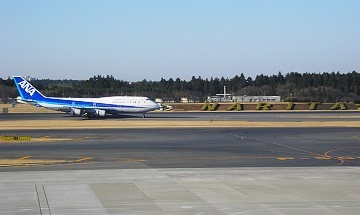
Day 1 - Arrive at Narita Airport
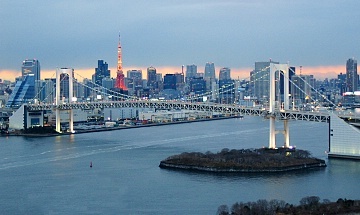
Day 2 - Tokyo
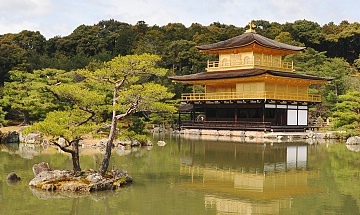
Day 3 - Tokyo to Kyoto
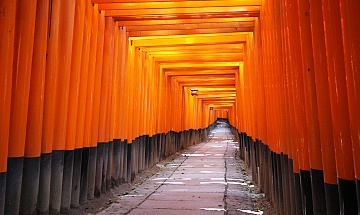
Day 4-5 - Kyoto
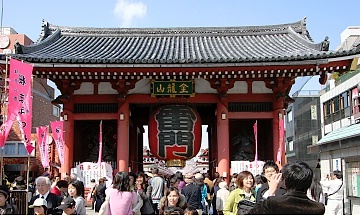
Day 6 - Kyoto to Tokyo
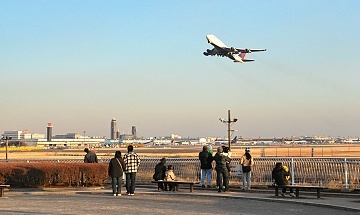
Day 7 - Depart from Narita Airport
Regular train tickets will be considerably cheaper than a Japan Rail Pass for this itinerary. Below are some sample budgets for the itinerary, excluding airfare. Find out more about the sample budgets and about the current yen exchange rates .
Questions? Ask in our forum .

- Itineraries
- Tours and Activities
- Travel Guides
- Best of Japan
JRailPass.com » Japan Travel Blog » Japan in 7 days: Travel itinerary
Japan in 7 days: Travel itinerary
November 8, 2022
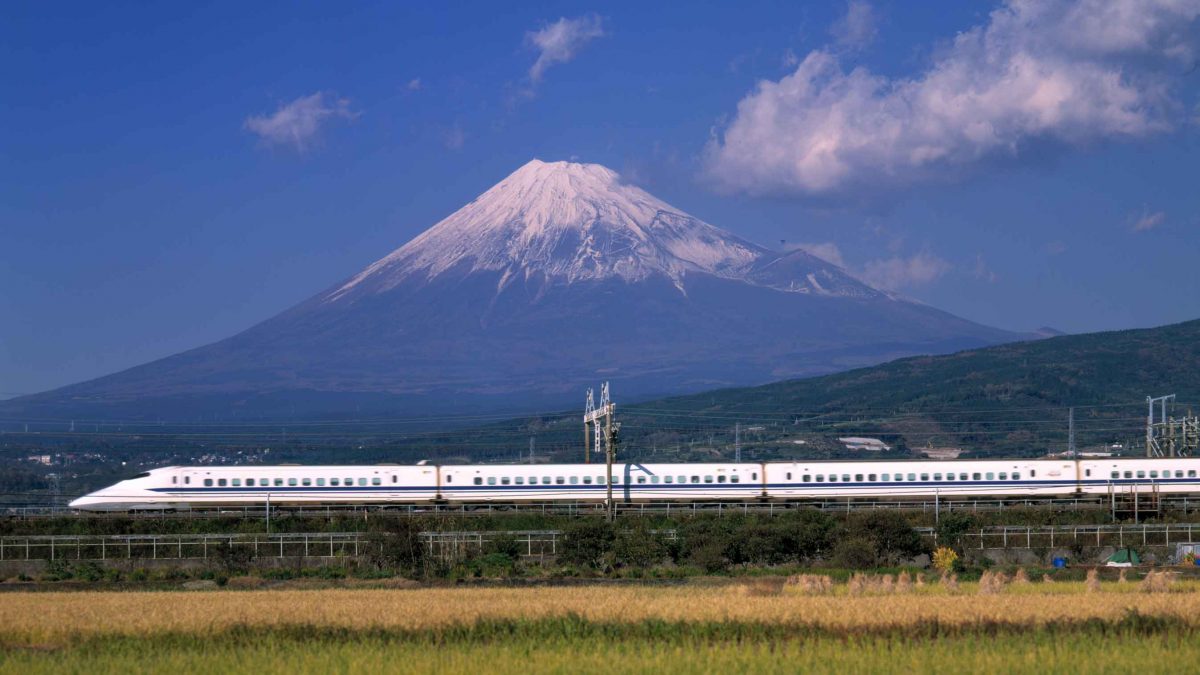
Visiting Japan for the first, second or even third time can be scary. It is not an easy task to get around in Tokyo or figure out what to see from the countless number of giant temples, beautiful parks, large shopping streets and fresh restaurants.
That is why we have prepared our top “7 days in Japan” itinerary and recommendations so that you can travel, see and explore the greatest sights of the country with your Japan Rail Pass.
Day 1: Tokyo
Arriving at narita or haneda airport.
Refer to our three days in Tokyo article for more detailed information on how and where to exchange your Japan Rail Pass, take the Narita Express (or the Tokyo Monorail from Haneda) and arrive at the city center of Tokyo.
Odaiba, Hama Rikyo and the Edo-Tokyo Museum
- Start your trip off by visiting Odaiba , one of the newest, most vibrant shopping and entertainment centers of Tokyo.
- While there, take advantage and visit the Tokyo Tower , a communication station and a Japanese replica of the Eiffel tower, offering fantastic views of the city from above.
- Escape from busy Tokyo life by visiting Hama Rikyu, a small but lovely park, offering beautiful walks among 300-years old trees and fish ponds.
- And for a piece of history, the remarkable Edo-Tokyo Museum is the place for children and adults to discover the past of Japan, specifically focusing on the Edo period between 1603 and 1868.
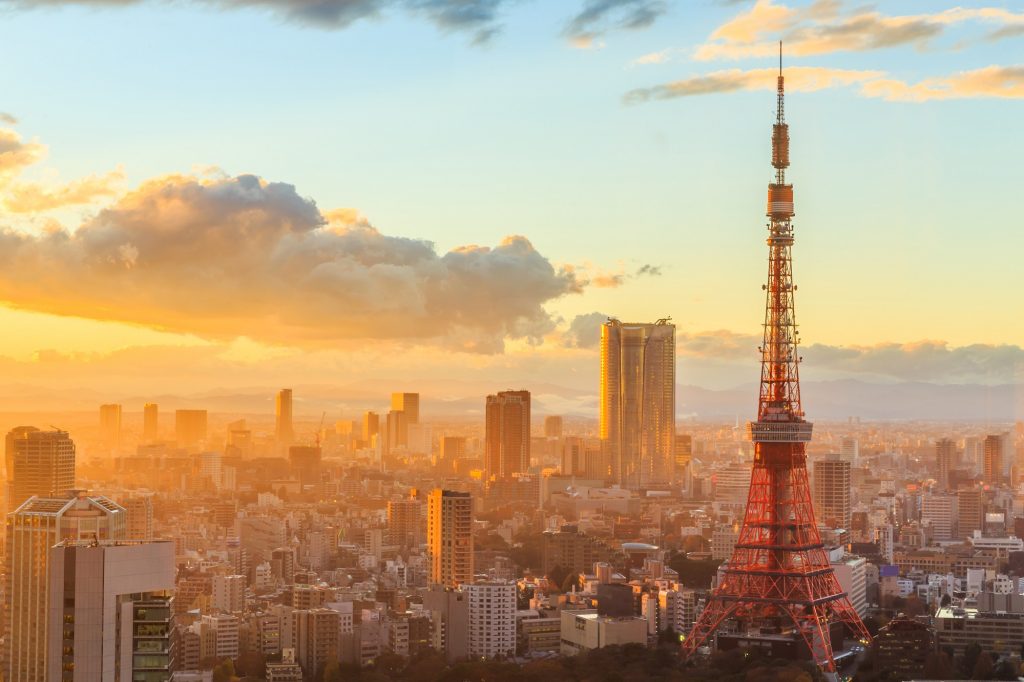
Day 2: Tokyo and Kamakura
Taking a trip to kamakura.
Just an hour away from Tokyo, the Kamakura region has plenty to offer. You can get there with your Japan Rail Pass, by taking the Tokaido Line from Tokyo Station and making one connection at Totsuka Station, by changing to the Yokosuka Line, until you arrive at Kamakura Station.
Once there, make sure not to miss:

- Zeniarai Benten Shrine – A magical place, where people (local as well as foreigners) go to wash their money and have a spiritual experience. The saying goes that whatever you wash in the shrine’s spring, it will double.
- The Kamakura Beaches – Whether you are going in the summer and wish to experience the cultural difference between your home beaches and those of Japan, or you are visiting in the autumn/winter seasons, you shouldn’t miss out on the sandy coast Kamakura has to offer.
[banner-en]
Day 3: Tokyo
Shibuya, yanaka and ueno.
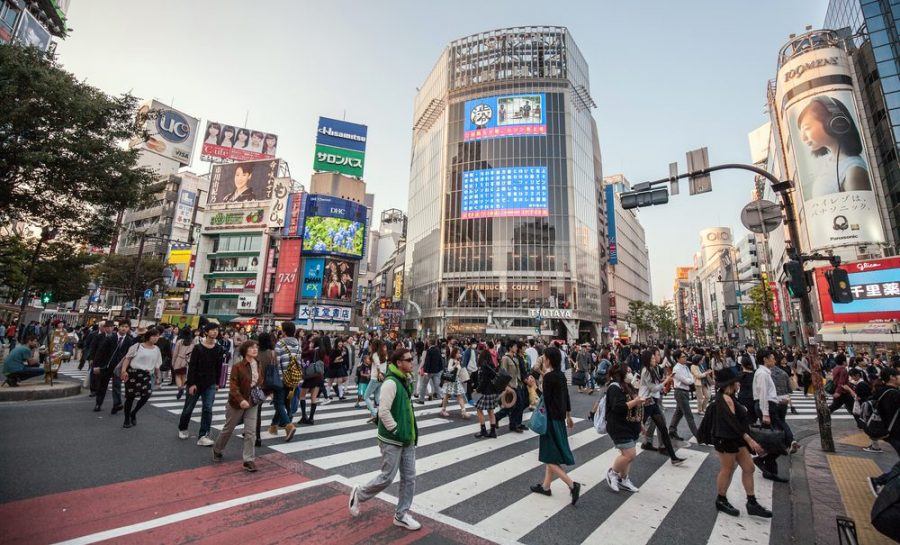
- Yanaka – Just a 40 minute ride away (take the Yamanote line), Yanaka will fascinate you with its fully reconstructed temple, narrow streets, and tiled-roof houses. Yanaka is not the most touristic place, which makes it perfect for a peaceful walk, filled with history and stories from the past.
- Ueno – Within walking distance from the Yanaka area, the gorgeous and never-ending Ueno area includes the Ueno Park and Zoo, Tokyo University of Arts, National Museum of Nature and Science, National Museum of Western Art, Tokyo Metropolitan Art Museum, Tokyo Bunka Kaikan concert hall and more.
Day 4: Kyoto
Arashiyama, iwatayama and tenruy-ji temple.
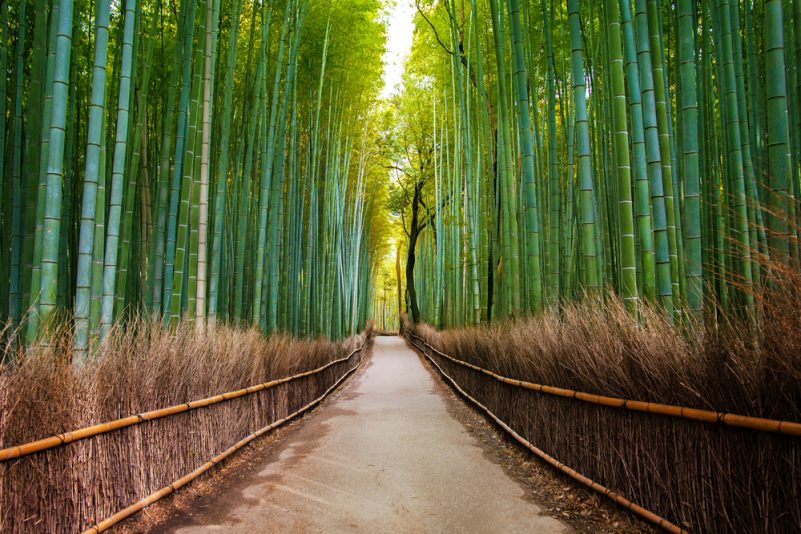
- Monkey Park Iwatayama – A must for nature and animal lovers. You can walk freely around this area where monkeys live and play. It’s safe to give them food and watch how mothers and their little ones walk around and study you, just like you are studying them.
- Tenruy-ji temple – a world heritage site, this is one of the most beautiful Zen temples in Kyoto, especially during the cherry blossom season (last week of March – first week of April). The gardens are gorgeous and boast a spectacular view of the surrounding mountains, especially when the sun rises.
Check out our article Arashiyama Bamboo Forest and district for more details.
Day 5: Kyoto
Nanzen-ji, fushimi inari and kinkakuji (golden pavilion).
- Nanzen-ji – This Zen temple is the very definition of a perfect Japanese temple. With its Zen gardens, giant entrance doors, and some smaller temples, the Nanzen-ji has everything there is to offer to Japanese culture lovers.
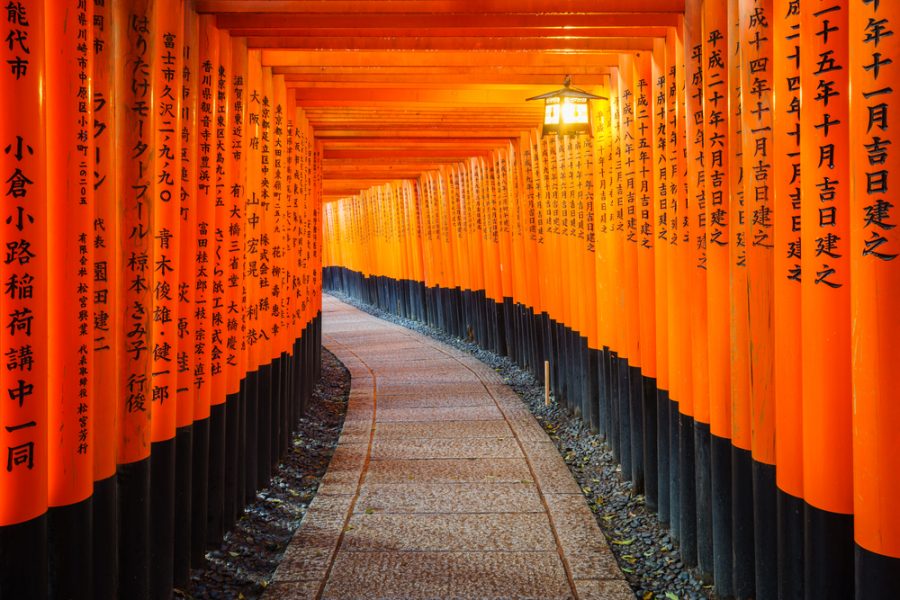
- Kinkakuji (the Golden Pavilion) – A unique Zen temple whosre top floors are covered in gold leaf. Visitors are not allowed on the first floor of the building, which houses historical Buddha statues. However, the windows on this floor are usually open, so tourists can look through and enjoy the ancient ambiance of the temple. Close to the exit, you can sip on traditional tea and tasty treats.
Day 6: Nara
Take the JR Nara Line from Kyoto Station for less than an hour to reach Nara – the first permanent capital of Japan and one of the few cities packed with so much cultural heritage, including:
- Isuien Garden – Gorgeous ponds give life to the incredible nature surrounding the gardens, making you feel welcome and at peace. Isuien has actually two different parts, each offering tea houses and authentic Japanese atmosphere.
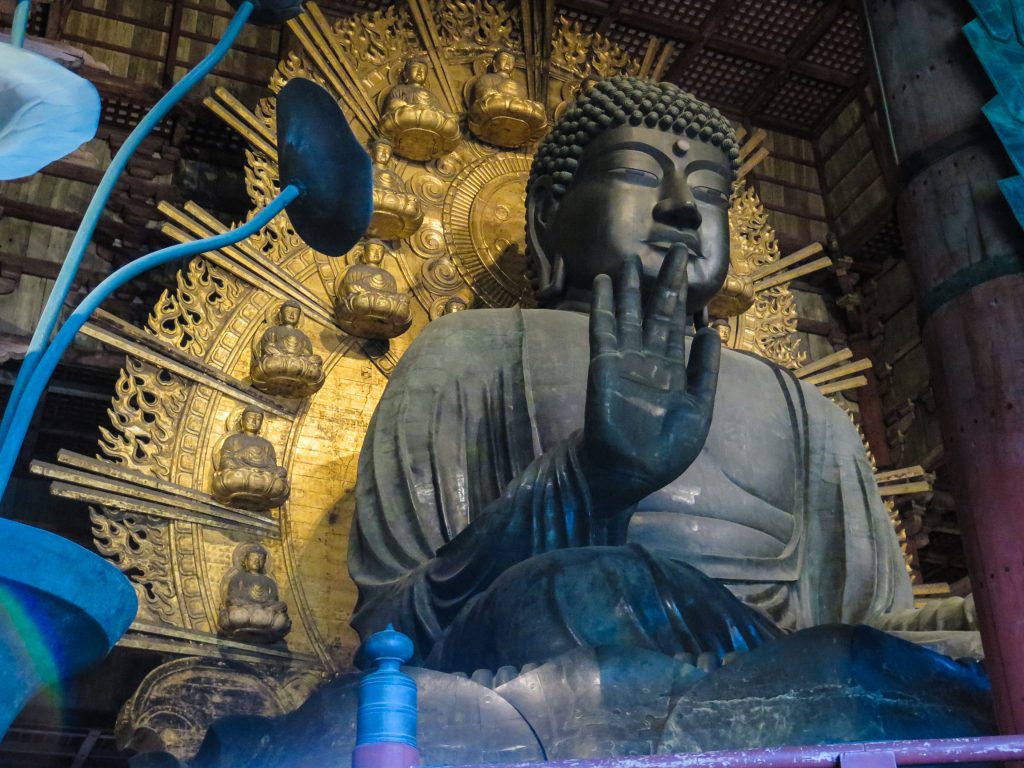
- Hōryū-ji Temple – Founded by Prince Shotoku in 607, this temple was designated a World Heritage Site in 1993. It’s a must-visit just to see some of the oldest surviving wooden buildings in the world!
Day 7: Back to Tokyo
Take the Shinkansen train back to Tokyo and get ready for your trip back home. Depending on your schedule, you can check out the districts of Asakusa and Harajuku , the first stops on our 10-day itinerary and 14-day sample itinerary .
Otherwise, you can say goodbye to the city with the views from the top of the Metropolitan Government Building in West Shinjuku.
Note : Do not forget that you can use your Japan Rail Pass to take the Narita Express or the Tokyo Monorail to Haneda airport for free. Make sure to reserve your seats before boarding!
Related posts
Related tours & activities.
Hello, is it possible to go from Tokyo to Okinawa with JR Pass? Thanks! Viktoria
Hi Viktoria! Okinawa Prefecture consists of more than 150 distinct islands, all of which lie 400 miles from mainland Japan. This sets Okinawa apart and thus most travelers to Okinawa do so by air. Alternatively, ferries depart for Okinawa from Kagoshima. None of this is covered by the Japan Rail Pass . Happy travels!
Can you look at the map before asking such a silly question? Can you take Amtrak from Miami to Puerto Rico? Pfew!
I’m travelling to Japan on July with my daughter, I have a tourist visa but my daughter is now a Canadian citizen, so she doesn’t need a “Tourist Visa”… can I still get a JR pass for her?
Hi Gerz! Due to diplomatic agreements, citizens from selected countries are exempt from applying for a formal Japanese Visa prior to the travel. In these cases, the traveller´s passport will be stamped with the Tourist Visa during the Immigration check upon arrival in Japan. Remember that the Tourist Visa is the only visa which allows you to obtain and use the Japan Rail Pass . Happy travels!
Will I be able to take the shinkansen on May 6? I read something online that the train is not available on Apr 27- May 6 and I won’t be able to ride the train on those dates. Please confirm that I will be able to leave from Tokyo to Osaka on May 6 with the shinkansen using the JR pass. Thank you for your help.
Hi Angie! During the Golden Week , which makes 10 bank holidays in the country, Shinkansen bullet trains will still be working since there will be more people than usual travelling around the country. Happy travels!
Hello; How do I go from Tsuruhashi station (in Osaka) to Nara using my JR pass?
Very respectfully Fernando Dietrich
Hi Fernando! First you will have to reach JR Osaka Station and once there take the Yamatoji Rapid Train to JR Nara Station. These trains run once per hour; the trip lasts around 45 minutes and is covered by the JR Pass . Happy travels!
Hello, My husband and I are traveling to Japan for his 30th birthday on May 27th. After reading several comments I am still a tad confused. I want to purchase the 7 day JR pass, however, I am confused on what it entails. If I purchase the 7 day pass are we on the train for 7 days straight? Or do we get on the train in the morning and go home(to our hotel) each night? Also, does this pass also work for the smaller metro stations for touring locally around the city of Tokyo? Or any other major cities? Please help! Thank you!
Hi Mrs. Grimes! The Japan Rail Pass is a multi-use all-you-can-ride discounted rail ticket. It gives you unlimited access to all Japan Rail National trains, as well as JR bus services, ferry services, and airport transfers. Happy travels!
Hi there, We are going to Japan this coming May for 6 days, is there a JR pass for 6 or 5 days only just to cover the days that we are in Japan. Thank you very much. Mahalia
Hi Mahalia! A Japan Rail Pass can be valid for either 7, 14 or 21 consecutive days and hence you wouldn’t be able to purchase a pass of a different duration. Please note the Japan Rail Pass is the biggest discount on public Japanese transport available and usually even when one travels less days than pass it still pays off. Happy travels!
Hello, can someone please help me know which trains to take for the travel itinenary below:
From Tokyo -> Hiroshima -> Kyoto –> Tokyo on a 7 day rail pass.
Please find directions below, all of them fully included in your Japan Rail Pass :
– From Tokyo to Hiroshima : You can use your JR Pass to take the Tokaido Shinkansen line’s Hikari bullet train from Tokyo Station to Shin-Osaka Station, Shin-Kobe Station or Himeji Station. Once in one of these stations, you can transfer to the Sanyo Shinkansen (Sakura train) and arrive in Hiroshima at Hiroshima Station. – From Hiroshima to Kyoto: Kyoto and Hiroshima are connected by the Tokaido and Sanyo Shinkansen lines. You can use your JR Pass and the journey between Kyoto Station and Hiroshima Station. – From Kyoto to Tokyo: You should take the Shinkansen Hikari bullet train from Kyoto Station and arrive at either Tokyo Station or Shinagawa Station in central Tokyo.
Happy travels!
my 2 sister and i are planing to visiti nagoya -tokyo-hokkiado this may. can you helpy me the cheapest transportation from nagoya-tokyo-hokkaido? our travel date is may 28-may 5 flight mnl-nagoya & Sapporo-manila :).
Hi Joy! In your case even when you are just making 2 big trips a 7-day Japan Rail Pass would be cost effective. Nagoya to Tokyo already costs 10,500 yen and Tokyo to Sapporo (in Hokkaido island) 26,500 yen. A 7-day Japan Rail Pass costs 29,110 yen which is less than the 37,000 yen you would pay in individual tickets. In addition, when you start factoring in the money you would spend on the metro, buses, transfers, and ferries, then the savings become a must. Happy travels!
Hi. Need help with an itinerary. We plan to visit the following places in Japan: Tokyo, Alpine Route, Shirakawago, Kyoto, Nara and Osaka. I’m confused, it’s overwhelming to me. My concerns are: 1. How much would our budget be for all these OR for some of these? Our budget is between big savings and comfort as well. So please send us some options. 2. Among those places, what can we afford to miss? We are first-timers. Thanks so much! We look forward to your response. Sincerely,
Hi Lissie! We recommend you to contact a travel agency. We only have details on Japan Rail Pass cost and thus are unable of providing costs for different itineraries. We would like to recommend you to check our article How much does it cost to go to Japan? in case it is of help. Happy travels!
Hello! Can someone help me know which stations to travel?
We are going from Tokyo -> Hiroshima -> Kyoto – Tokyo on a 7 day rail pass.
Also, 9 of us travelling but my one daughter is on student exchange which means she has a student visa. I just read she is not eligible. Now I am in a bit of a panic – what do I do for her?
Hi Kristin! As you have read, the Tourist Visa is the only visa which allows you to obtain and use the Japan Rail Pass . We recommend you to purchase individual tickets for the person that is not eligible for the pass. Happy travels!
Hello, We are travelling to Tokyo and staying there for 4 nights (July 10-14). We plan to visit Tokyo, Mt. Fuji and Kyoto (including major tourist sites and nara) by using Japan rail pass as our main means of transportation. Any suggestions on the train stations and if there are any other passes we need to purchase in conjunction with the JR pass.
Hello we are traveling to Japan In July arriving in Tokyo July 9th and leaving July 17th out of Tokyo. I am thinking we will do Tokyo and Kyoto as home bases but def want to visit the Mt. Fuji region. Where is it easiest to do a day/overnight trip from? Also looking for must see sights on our 7 day trip and the most economical way to do that using the pass.
Hi Bronislava! It will be easier to visit the Mount Fuji area from Tokyo.
Hi Team! We’re going to travel in Japan for 9 days and our target places are in Chubu area, Osaka & Tokyo. Can we use it in those places? Are there connecting lines in each of it? Are target places in Chubu are Aichi, Shizuoka, Gifu & Nagano. What is the best option? Looking forward to your response. 🙂
Regards, Rona
Hi, we’ll be in Japan for 7 nights flying into and out of Tokyo Narita, and we just bought the JR Rail Pass. We are considering the following itinerary options. Which would you recommend? Or something else? 1. arrive Tokyo, immediately take train to Kyoto. Spend 3 nights in Kyoto. Train to Hakone. 1 night Hakone. Train to Tokyo. 3 nights Tokyo 2. Same as above but 4 nights Kyoto and we won’t visit Hakone on this trip.
Hi Greg! Our best tips for a 7-day trip around Japan is the one described in this article. Japan is a huge country but we believe you can get a good taste of it!
Hello we are going to travel to Japan on May 27 Arriving at Narita Airport and depart Japan on June 4 , 2018 via Kansai Osaka airport. I plan to visit Hakone Mt Fuji, Kyoto, Tokyo, Osaka and what some other places Iyou can recommend if I will buy Japan rail pass is it Fitted in my etinerary if not What Pass can u recommend. I will be staying 3 night in Tokyo( May 27 to 30 ) and 3 night in Osaka ( June 1 to 4) . Im still in the decision making if Where Im gonna spend my 2 nights ( May 30 and 31). I need advice Thank you in advance.
Thank you very much, Margie Judan
Since you are staying longer than the travel period stated in this article we recommend you to check the followig: 10 days in Japan: Travel itinerary . There you will find our best recommendations to get to seize your Japan Rail Pass while discovering the whole country in 10 days.
Our family of 5 is traveling to Japan in April and looking for your advice for the most efficient use of our pass and best time to cover cherry blossom season. We are purchasing a 7 day Green pass. Planning to stay for 3 nights in Tokyo with possible day trip to Nikko, 3 nights in Osaka with day trips to Kyoto, Nara, and Himeji and 1 night in Odawara / Hakone to see Mt. Fuji. We are arriving to Narita on April 2 around 4 pm and flying out of Narita on April 9 at 5:45pm.
Thank you for your help!
Hi Travelty! We recommend you to check our 2018 cherry blossom forecast for Japan You can still see the full bloom in Tokyo (until around April 3rd), and this weekend in Kyoto (until around April 5th). Please keep in mind that most flowers usually take a week to reach full bloom once flowering has begun and that full bloom also lasts around a week.
Hello! I will be flying into Narita on May 15 2018, then flying out from Narita on May 20th 2018. I want to see Kyoto during my 5 day visit, was wondering if you can recommend the best way to fit in a trip to Kyoto in a 5 day trip. I plan on purchasing a JR Rail pass and will rely heavily on public transportation throughout my trip. Thanks!
Travelling between Tokyo and Kyoto is extremely easy with the Japan Rail Pass. You should take the Shinkansen Hikari train from either Tokyo Station or Shinagawa Station in central Tokyo, and arrive at Kyoto Station. A standard Tokyo to Kyoto trip with the JR Pass takes close to 1 hour and 40 minutes taking the Hikari Shinkansen so it should be easy to include a day trip to Kyoto.
For some great suggestions and recommendations on which places to visit and what to do in Kyoto, check out our Japan in 14 days (day 4-6) article.
Enjoy your time in Japan!
I am travelling with my parents (in early 70s) together with my 2 siblings to Tokyo on Feb 25, 2018. We plan to go places on our own (without tour guide) so we can visit places on our own pacing exploring Tokyo. Initially, I wanted to stay the whole 7 days in Tokyo. But if I’m going to buy the JR Pass East, we might as well visit Nagano or Niigata to experience the cold Winter (will it still be cold?). OR can we just visit Mt. FUji and still have the Snow experience? How do we go to the local places? Do I need to buy tickets for taking local bus transpo or does the JR Pass covers it.
I hope you can help to give more recommendations.
Thank you, Tine
Hello JR team,
Any recommendation on my earlier email?
Hi Christine!
The way to both Nagano and Niigata from Tokyo is included in your Japan Rail Pass . The Hokkaido Shinkansen departs from Tokyo Station and rides all the way to Nagano Station. The Joetsu Shinkansen will take you straight from Tokyo to the Niigata prefecture in just two hours. Those locations are among the preferred visits for skiers and snowboarders so you may get a chance to experience the cold.
Mount Fuji will also provide a good snow experience and is accessible almost fully with the Japan Rail Pass too. To get there take JR Tokaido line for Kozu from Tokyo Station, using your JR Pass. Once at Kozu (Kanagawa), take the JR Gotemba Line for Numazu, also included in the JR Pass, and get off at Gotemba Station. Once at Gotemba station, take a bus to Subashiri 5th station (not included in the pass), the gateway to climbing Mount Fuji.
We hope you enjoy your trip!
I am travelling to Japan for the first time in April/May with my elderly father, we are keen to visit Tokyo, Kyoto (probably via day trip) and Osaka during our 7days in your country.
Grateful if you could assist us in navigating the best options for rail travel for our proposed itinerary. We would like to get the full bullet train experience from Tokyo to Osaka (and return) if possible. Can you please also advise if JR / Shinkansen offers discounts to seniors/over 70years?
Monday 30 April – arrive Tokyo (Narita) at 1755hrs – we will be staying in the Shinjuku area
Thursday 3 May – travel from Shinjuku to Osaka – we will be staying in the Dotonbori area
Monday 7 May – Osaka (Dotonbori area) to Tokyo (Narita) airport – departing Toyko (Nartia) at 1955hrs
Thank you for taking the time to respond to my query.
No senior discounts apply to the Japan Rail Pass . However, keep in mind that the Japan Rail Pass prices allow to save up to 62% in individual train tickets.
The Japan Rail Pass will cover all your itinerary:
– Transportation from Narita Airport to Tokyo city center in the Narita Express . This same train will take you to Shinjuku Station . – Shinjuku is also part of the Yamanote Line which is probably the most popular and convenient way for getting around Tokyo. – Tokyo, Kyoto, and Osaka are connected with by the Tokaido Shinkansen line, included with the Japan Rail Pass. – While in Osaka, you will be entitled to make full use of the Osaka Loop Line .
I want to use the Itinerary for my trip in March 2018 – can you tell me which lines I should take to make it to the places on the itinerary?
Hi Natalie!
You can check the transportation you need to take for your itinerary at Hyperdia – the number 1 Japanese online transportation planning tool. It will enable you to precisely plan your trip in Japan from station to station with punctuality to the second.
Thanks for sharing this post. It’s really a big help for us during our last visit in Japan.
Cheers from Cebu!
Would like to ask about the JR Tokyo Wide Pass. It is ¥10,000 & have to use it for 3 consecutive days. May I know which area does this covers? Planning to go to Disneysea, Mt Fuji & Gala Yuzawa using this method. Please advise.
All details regarding JR Tokyo Wide Pass are available at JR East official website. Please make sure to visit it to have the most updtaed information.
I will be arriving Haneda Airport, what train to take to go to Hotel Mystays Hamamatsucho? We will be in Japan for 7 days, trying to put together a list of all place to visit. Any suggestion?
From Haneda Airport you can take the Tokyo Monorail, covered by the Japan Rail Pass, to central Tokyo. Once you are there you can take any of the JR lines included in the Japan Rail Pass that take you around the city: the Yamanote Line , the Keihin-Tohoku Line, the Rapid Chuo Line, the local Chuo-Sobu Line and other metropolitan lines that circulate on the outskirts of the city such as the JR Keiyo, Musashi, Nambu and Yokohama lines. Just make sure to locate your hotel and what lines take you there!
Our best recommendation for a 7-day trip in Japan is available in this article you have already read. We recommend you to further surf our blog if you want to get further insight on what to see when you are in Japan.
I will be in Japan for 7 days ( November 15th – November 21st 2017) ( party of 3 ). We would like to visit Kyoto & Tokyo using Japan Rail Pass.
My question is : should I fly in Kyoto first then leave from Tokyo ? Please advise
Hi Richard!
You can visit first any of the cities since it makes no change – just plan your trip as you prefer. If you travel with a Japan Rail Pass you are entitled to transfer from Narita Airport to Tokyo and also from Kansai Airport to Kyoto at no additional charge, as well as to travel between Tokyo and Kyoto unlimitedly.
This is my itenerary for Japan…. I want to purchase a 7 day rail pass, but when do you think it makes most sense to use up the 7 days considering I will be in Tokyo for 10 days….see below itenerary. I would rather save the 7 days for when the costs will be highest. Any advice?
April 19 Thursday Tokyo – Arrive in airport at 10pm April 20 Friday Tokyo April 21 Saturday Tokyo April 22 Sunday Tokyo (possible day trip to nakamura) April 23 Monday Tokyo (day trip to Nikko) April 24 Tuesday Travel to Mt Fuji April 25 Wednesday Travel to Kyoto April 26 Thursday Kyoto April 27 Friday Osaka April 28 Saturday Osaka April 29 Sunday – Leave to Osaka Airport
The most important to keep in mind is that the Japan Rail Pass will be more economical the more you travel. Please be aware you can use it in most of your trip:
– From Narita Airport you can take the Narita Express to central Tokyo at no additional cost. – Once you are in Tokyo, you can use several lines within the city: the Yamanote Line , the Keihin-Tohoku Line, the Rapid Chuo Line, the local Chuo-Sobu line and other metropolitan lines that circulate on the outskirts of the city such as the JR Keiyo, Musashi, Nambu and Yokohama lines.. However please make sure to check which parts of the city you want to visit since most likely you won’t be able to access them all only using your Japan Rail Pass. – Nikko is one of many interesting day trips from Tokyo made possible using your Japan Rail Pass since traveling time is less than 2 hours from Tokyo by train and at no additional charge when traveling with the Japan Rail Pass. – Mount Fuji can be easily reached with the Japan Rail Pass via Gotemba: you just have to take JR Tokaido line for Kozu from Tokyo Station, using your JR Pass; once at Kozu, take the JR Gotemba Line for Numazu and get off at Gotemba Station. – Travelling between Tokyo, Kyoto and Osaka with the Japan Rail Pass is easy. You should take the Tokaido Shinkansen line that connects three cities. – Numerous trains in and around Kyoto can be accessed using your Japan Rail Pass. – While in Osaka, you will be entitled to use the Osaka Loop Line at no additional cost if travelling with the Japan Rail Pass. – Last but not least, to get from Osaka to Kansai Airport you can take the Haruka Express , also included in the Japan Rail Pass.
If you want to check the costs of each individual trip to make your decision you can check Hyperdia – the number 1 Japanese online transportation planning tool. It has the most updated and useful information you can get.
Very happy travels!
Hello, confirmed our trip to Japan from Jan. 1 to Jan. 6.
Jan. 1 – arrive Narita 2 PM start exploring Tokyo after check in Jan. 2 – explore Tokyo Jan. 3 – depart for Mt. Fuji area (is a day trip enough for Mt. Fuji?) – taking train to Kyoto late afternoon (bullet train?) Jan. 4 – Kyoto (doing a Ryokan for 1 night). Is it better to do the Ryoan in the Mt. Fuji area? Jan. 5 – Kyoto area – depart for Osaka in the morning Jan. 6 – Fly out of Osaka late afternoon
Will the JR pass be able to cover all the routes mentioned above? Do we need to stay overnight at Mt. Fuji and do the Ryokan there or is it better to do a day trip to Mt. Fuji area and do the Ryokan at Kyoto coming from Mt. Fuji? Also, is it better to buy the JR pass here in the US now than getting it close to our travel date or getting it there perhaps? Any recommendations or suggestions for this short trip? Looking forward to your response. Thank you!
Yes – the Japan Rail Pass will cover all of your trips.
– To get to central Tokyo from Narita Airport you can take the Narita Express at no additional charge. – Within Tokyo there are some lines you can use to explore the city, such as the Yamanote Line , the Keihin-Tohoku Line, the Rapid Chuo Line, the local Chuo-Sobu and other metropolitan lines that circulate on the outskirts of the city such as the JR Keiyo, Musashi, Nambu and Yokohama lines. – Mount Fuji can be scheduled as a day trip from Tokyo since it should be only a little over 2 hours from Tokyo.
Regarding where to purchase the Japan Rail Pass, it would be adviceable to purchase it in advance. The JR Pass can be purchased online or through specialized agents, like this website. However, since March 8, 2017, and on a trial basis, the pass is also sold at selected stations inside Japan, at an increased cost. While you are now able to purchase the JR Pass in Japan, please keep in mind that it is only sold in particular stations, at a higher price and you are required to pay in Yens, as no other currency will be accepted.
Have an amazing trip!
Dear JRpass team,
Thank you so so much for your prompt and very detailed and helpful reply. We highly appreciate your assistance.
May I ask another question. Since my daughter shall travel further to Hiroshima and Nagoya after Tokyo-Osaka, we wish to ask you if she can use JR pass for traveling from Osaka to Hiroshima, and then from Hiroshima to Nagoya, and finally from Nagoya to Tokyo? If the answer if affirmative, we will get her a 14 day JR pass.
Again, thank you so so much for your assistance and we look forward to hearing further from you in due course.
Hi Dzung Nguyen!
Sure – your daughter is entitled to do these trips if she holds a Japan Rail Pass :
– To get from Osaka to Hiroshima , from the city center, take the JR Haruka Express to Shin-Osaka Station, then transfer to the Sanyo Shinkansen line (westbound, Hikari trains). This trip takes approximately 2 hours and 40 minutes. – From Hiroshima to Nagoya she will need to take the Shinkansen Sakura in Hiroshima to Shink-Kobe station. Once there she will need to transfer to Shinkansen Hikari until she gets off at Nagoya. – And last but not least, to go from Nagoya back to Tokyo the quickest option would be taking the JR Tokaido Shinkansen, accessible using your JR Pass.
Remember you can purchase your Japan Rail Pass here .
Hi JRpass team,
We plan to visit Tokyo-Osaka areas for 10 days. We arrive Tokyo (Narita airport), stay in Tokyo for 3 days and then move to Osaka and then back to Tokyo-Narita airport. Whuile in Osaka, we plan to stay in Osaka and make one-day round trips from Osaka to different places like, for example, Osaka-Kobe, Osaka-Kyoto, Osaka-Nara/Nagoya/Hokune.
We want to buy 7 day JR pass to save costs. May I ask you to look at our plan below:
Day 1 (11Aug): Arrive Narita Airport and to Tokyo city – no JR pass used.
Day 2&3 (12 & 13Aug): Sightseeing in Tokyo – no JR pass used.
Day 4 (14Aug): Travelling from Tokyo to Osaka (Shinkansen) – IR pass used.
Day 5 (15Aug): Going to Kyoto (Mt. Fuji, etc….)and back to Osaka (one day trip). Can we use JR pass on this route?
Day 6 (16Aug): Going to Kobe and back to Osaka. Can we use JR pass on this route?
Day 7 (17Aug): Travelling around Osaka: Dontobori, Kuromon market, etc..) Can we use JR pass on this route?
Day 8 (18Aug): Travelling around Osaka: Universal Studio Japan in Osaka. Can we use JR pass on this route?
Day 8 (19Aug): Sightseeing in Osaka. Can we use JR pass on this route?
Day 9 (20Aug): Travelling back to Tokyo from Osaka (Shinkansen). JR pass is used.
Day 10: going home from Narita.
In Osaka, we stay in walking distance from Nipponbashi station. So do you think our plan would work? Can we use JR pass for travelling/sightseeing in Osaka, for going to Kyoto, Kobe as I plan?
Thank you so much for your assistance and I look forward to hearing from you soon.
Thanks and best regards,
Dzung Nguyen
Your plan sounds great!
– Going from Osaka to Kyoto and back is fully covered by the Japan Rail Pass. Travelling between Kyoto and Osaka is now easier than ever. Just take the Hikari train on the Tokaido Shinkansen line. You will get between Kyoto Station and Shin-Osaka Station in less than 30 minutes! – If you plan to visit Hakone area ( Mount Fuji ) from the Kansai region (Osaka and Kyoto), you will have to take the Tokaido Shinkansen (Kodama and some Hikari trains, please check) from Kyoto Station or Shin-Osaka station (covered by the Japan Rail Pass) and get off at Odawara station. Then take the Hakone Tozan train for Hakone-Yumoto Station (not covered by JR) and finally get off at Hakone-Itabashi Station. – To go from Osaka to Kobe you have two options, both fully covered by the Japan Rail Pass: you may take the Sanyo Shinkansen from Shin-Osaka Station to Shin-Kobe Station. This trip lasts approximately 15 minutes. Alternatively, you may take a JR Special Rapid Train from Osaka Station to the Kobe Sannomiya Station, with a trip duration of around 20 minutes. – To travel within Osaka city you can use the Osaka Loop Line that circles through downtown Osaka. – To get to Universal Studios Japan from Osaka Station, take the Osaka loop line to Universal City Station. From Nishikujo Station, you can also take the JR Sakurajima line (also called Yumesaki line). The park is a five-minute walk from the station. This trip is fully covered by the Japan Rail Pass. – To go from and to Narita Airport you can use the Narita Express , covered by your Japan Rail Pass.
Hai.. We are planning to explore japan in this winter for 14 days.. From sapporo to tokyo.. If we buy the jrails pass for 14 days, can it cover all of the transportation from sapporo until tokyo? Are we just need to take a shinkasen to go to hokkaido from tokyo? Thankyou.
Hi Nana yee!
To go from Sapporo to Tokyo you will need to take the Hokuto limited express in Sapporo and go all straight to Shin-Hakodate-Hokuto. Once there you will have to transfer to the JR Tohoku/Hokkaido Shinkansen that will get you all straight to Tokyo. This trip is fully covered by the Japan Rail Pass.
Have a nice trip!
Hello.. just booked my flight from Mumbai to Tokyo and returning from seoul to Mumbai to celebrate New year.. I will be spending 7 nights in Japan.. I will be traveling with my wife and 1 year infant daughter.. I indent to cover Tokyo, Kyoto, mt Fuji.. I thought to spend New year Eve in Kyoto .. kindly advise your views on my plan.. also let me if I have JR pass I still need to reserve seat if yes than what is the procedure to do that.. I also indent to do some scenic train trip in your country..
Regards Vishal
Hi Vishal Dhanuka!
Your trip sounds awesome! When travelling with the Japan Rail Pass you will still need to reserve seats (free of charge).
To reserve your seat, please go to any Ticket Office (Midori-no-madoguchi), located in all Japanese train stations. The kind Japanese staff will ask for your Japan Rail Pass, which allows you to book seats for free. State your destination and preferred departure time and let the staff member find the best option for your trip.
From February 2017, passengers can make seat reservations online for certain trains at the JR East Train Reservation Service. After arriving in Japan, passengers can collect their seat reservation tickets at their chosen location. These include designated JR East and JR Hokkaido stations and JR travel service centres and information desks, as well as JR West Kanazawa and Toyama stations.
Good morning. Planning to go to Tokyo (handeda) mid November for 6 nights and 3 night to Kyoto. Then exit at kansai airport. Is it advisable to get the 14 days JR pass?
It will always depend on the trip you schedule. The Japan Rail Pass will make your journey easy and it will for sure cover all the mentioned trips: from Haneda you can take the Tokyo Monorail to and from Hamamatsucho Station, on the Yamanote line in central Tokyo; while in Tokyo you will also be able to take advantage of certain JR lines within the city as well as within Kyoto and to reach Kansai Airport through the Haruka Express .
Besides this the Japan Rail Pass will be more convenient the more you travel so make sure to plan your trip in advance to assess how to get the most out from your trip in the country.
Have an amazing vacation!
Comments are closed.
- South Africa
- Afghanistan
- North Korea
- Adventure + Outdoors
- Amusement Parks
- Backpacking Trips
- Boating + Cruises
- Budget Travel
- Bus + Train Travel
- Coasts + Islands
- Country Trips
- Fall Vacations
- Family Vacations
- Green Travel
- Heritage + History
- Honeymoons + Romance
- Inspiration + Guide
- Landmarks + Attractions
- LGBT Travel
- Markets + Bazaars
- National Parks + Reserves
- Nature + Wildlife
- Parks + Gardens
- Pets + Animals
- Photography
- Airlines + Airports
- Budgeting + Currency
- Business Travel
- Celebrity Travel
- Customs + Immigration
- Deals + Rewards
- Family Travel
- Hotels + Resorts
- Luggage + Packing Tips
- Offbeat News
- Photography Tips
- Responsible Travel
- Solo Travel
- Tech + Gear
- Travel Etiquette
- Travel Warnings
- Bars + Clubs
- Celebrity Chefs
- Restaurants + Cafés
- Wine + Vineyards
- Beach Hotels
- Boutique Hotels
- Hotel Openings
- Hotel Reviews
- Luxury Hotels
- Mountain + Ski Resorts
- Spa Resorts
- Vacation Rentals
- Asia Cruises
- European Cruises
- Festivals + Events
- Museums + Galleries
- Style + Design
- Travel’s Best
- Hotel with Agoda.com
- Hotel with Booking.com

Where to go in Kunming? — 15+ top Kunming attractions &…

Must eat in Georgetown — 10+ famous, must-eat & best street…

Must eat in Melaka — 10+ famous Malacca street food &…
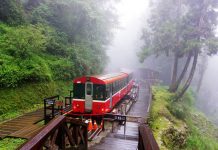
What to do in Alishan? — 5 top attractions & best…
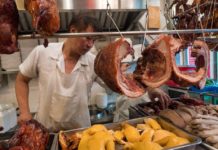
Hong Kong food culture — Hong Kong cuisine tells the historical…

All about tips in Nepal — How much to tip in…

Cambodia travel tips — 15+ what to know & things to…

When is the best time to visit Kyoto? — The best,…
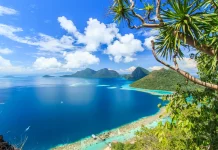
When is the best time to visit Malaysia? — The best,…

Hong Kong Soya sauce Chicken Rice and Noodles — The first…

Top hotels in Siem Reap — 8+ best places to stay…

Top hotels in shanghai — 15+ best hotels in Shanghai

Top hotels in Malacca — 10+ good & best hotels in…

Top places to stay in Bali — Top 10 best areas…

10 must-know things for your best first time European river cruise

Top 3 best luxury cruises in Halong Bay, Vietnam

Cherry blossom festival Korea 2024 — Top 5 cherry blossom festivals…

Ghibli museum blog — The fullest Ghibli museum guide for first-timers

Kyoto festival — Top 10 best events & most famous festivals…

National Palace Museum Taipei blog — What to see in National…

Japanese waterfall — Top 10 most beautiful waterfalls in Japan in…

19+ most beautiful towns in Europe every tourist need to visit…

Georgia travel photos — 20+ captivating photos show Georgia is heaven…

Explore Damnoen Floating Market — The oldest floating market of Thailand

Visiting Fenghuang Ancient Town — One of the most charming ancient…

Mekong Delta travel blog — Beyond rivers of Southwestern Vietnam

14 reasons why you should travel when you are young

Shigaraki Tanuki – An animal symbol of good luck in Japan

Living in the charms of cave houses in Andalucia, Southern Spain

20+ jaw-dropping tiny homes around the world
Japan itinerary 7 days — what to do in japan for 7 days & how to spend 7 days in japan perfectly.
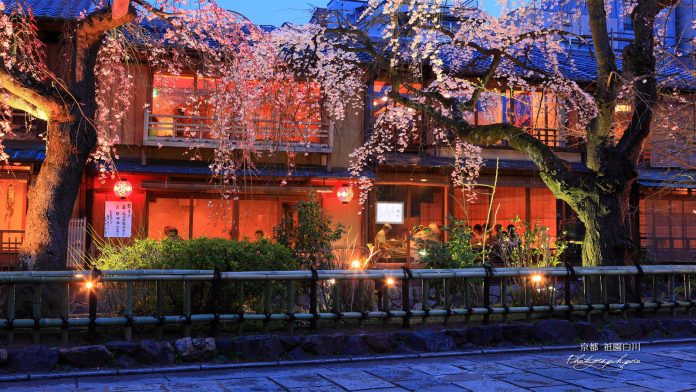
To be honest, one week in Japan is quite a short time to visit this interesting and dynamic country. If possible, I wish I could spend a whole month exploring all corners, small villages and islands of this island nation. However, we didn’t have much time and could only spend 7 days in Japan. In this 7-day itinerary, we have packed the main tourist destinations and a few little tips to help make your trip easier and more wonderful.
Tokyo best parks — 10+ best & most beautiful parks in tokyo
- Yamanashi blog — The Yamanashi travel guide & top things to do in Yamanashi
- When is the best time to visit Kyoto? — The best, worst, affordable & best season to visit Kyoto
- When is the best time to visit Japan? — The best, worst, cheapest, affordable & best season to travel to Japan
- Kyoto cherry blossom 2024 forecast — The dates & 9+ best place to see cherry blossoms in Kyoto
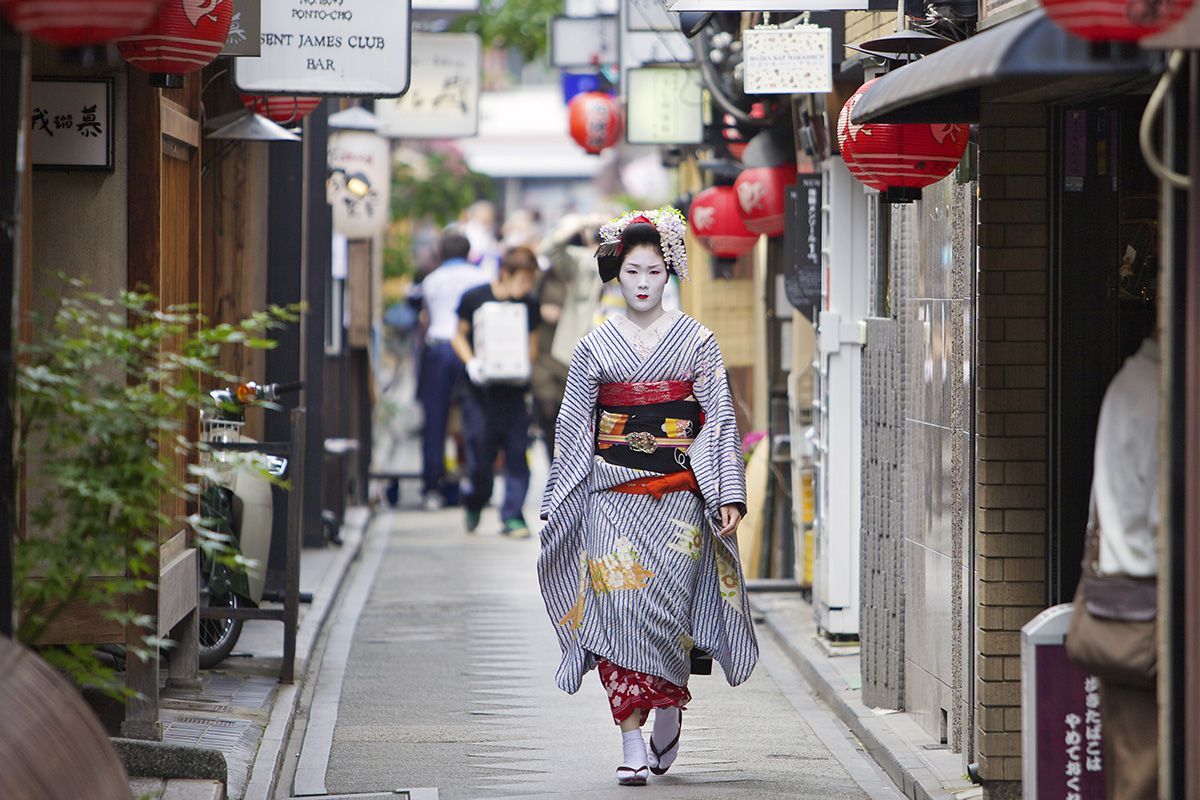
So, what to do in Japan for 7 days? Let’s check out our suggestion for 7 days in Japan (Japan itinerary 7 days) to visit some most famous destinations in Japan: Kyoto, Hakone, Tokyo and Osaka from how to travel, best places to visit, where to stay… to find out the answer!
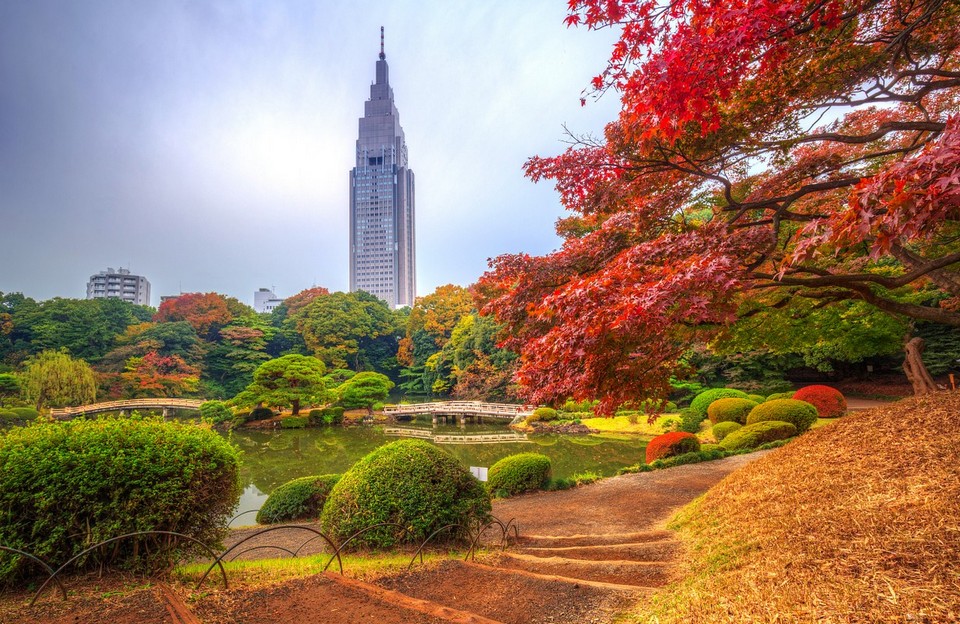
What to do in Japan for 7 days: Japan itinerary 7 days

- Kyoto: Culture, cuisine, temples, history, cooking classes
- Hakone: Mount Fuji, onsen bath, village, nature
- Tokyo: Explore Tokyo by night, architecture, food, pop culture
- Osaka: Street food, Osaka by night and surrounding areas
This itinerary is actually ideal for 8-10 days range. However, we want to explore Japan as much as possible within a limit of 7 days so there will be a bit more schedules for a day.
Before coming to Japan …
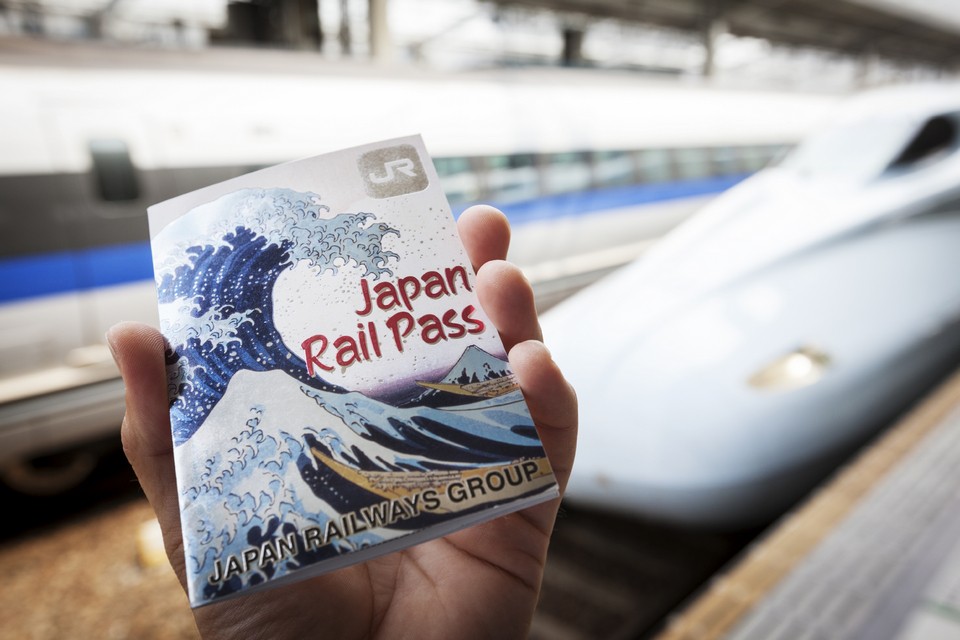
Buy a JR Pass and you’ll never regret buying it. This JR Pass includes round-trip train tickets from Kyoto to Tokyo (and of course, you will have the opportunity to sit on the most modern bullet train in the world. Super cool! This is one of the must-experience things in Japan).
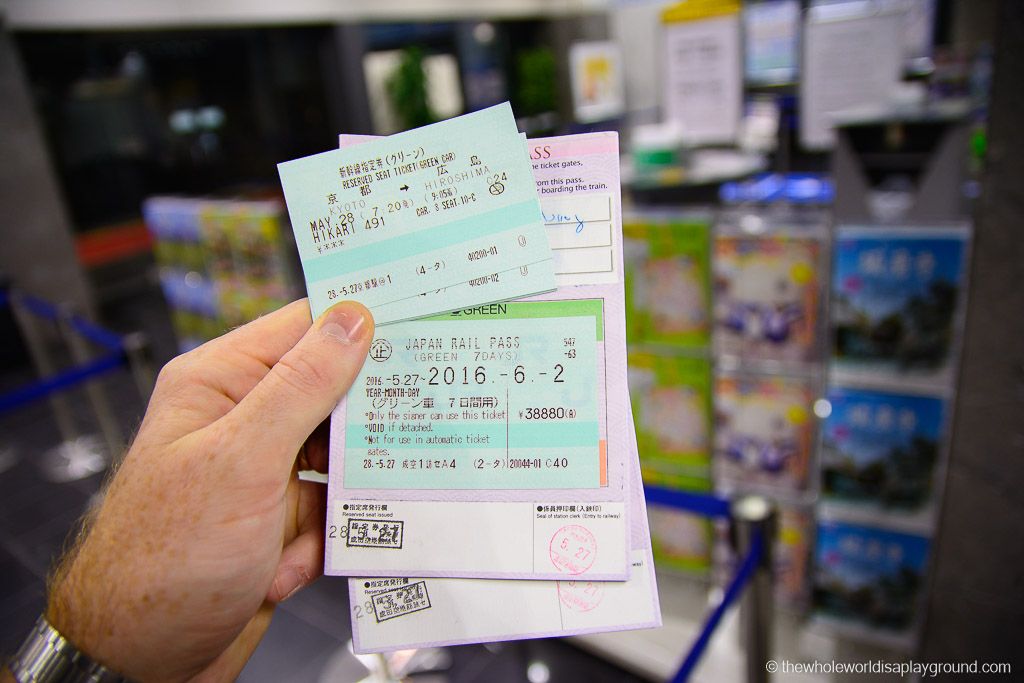
Tips: You should book your JR Pass before coming to Japan. You can make your purchase a week or two prior to your trip with just a simple mouse click. See instructions for booking and how to get a JR Pass here .
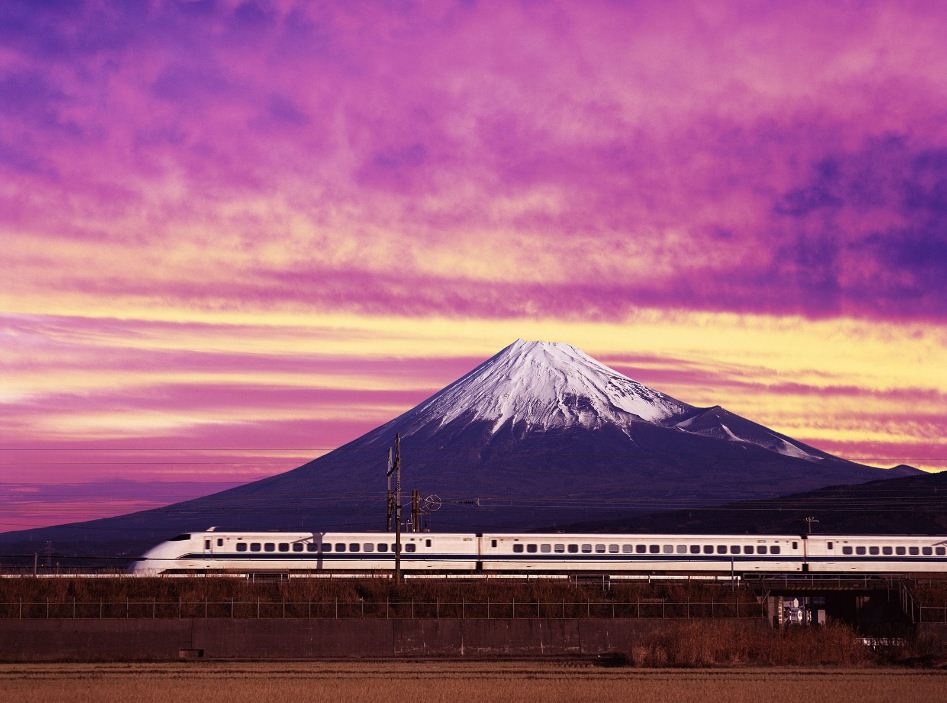
You can also order a Wifi router here . It is also extremely helpful for searching the route, checking the train timetables or finding restaurants. In addition, with this Wifi router, you can connect up to about 10 devices. If you go in a small group of friends, you can buy a SIM card here.
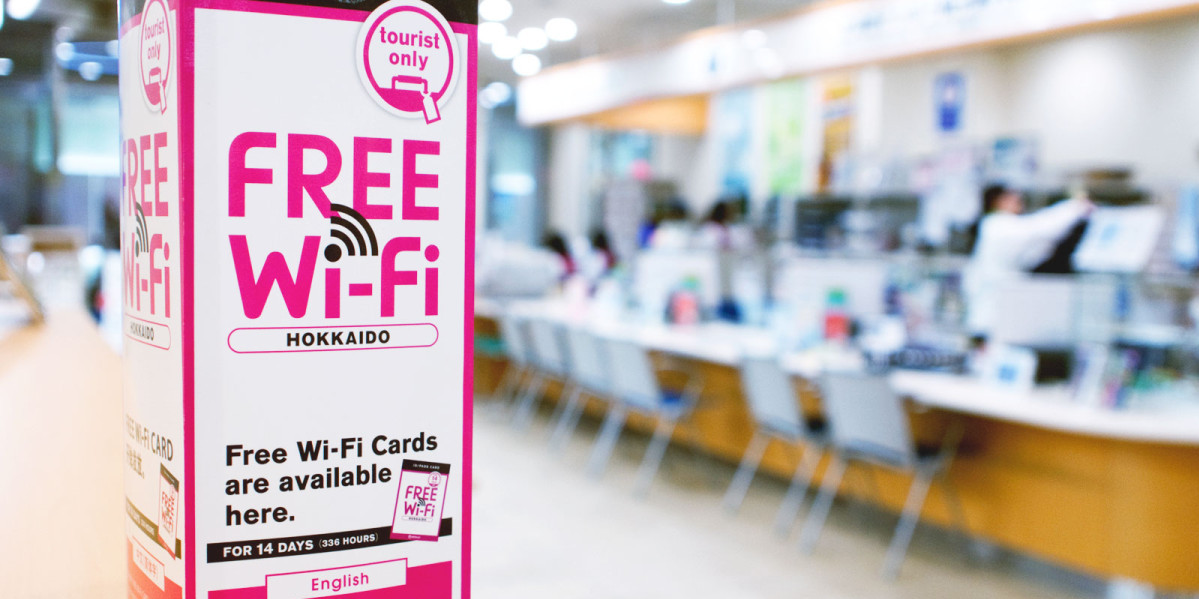
Japan 7-day itinerary detailed schedule: What to play, what to eat, where to go
7 days in japan — day 1: osaka – kyoto.
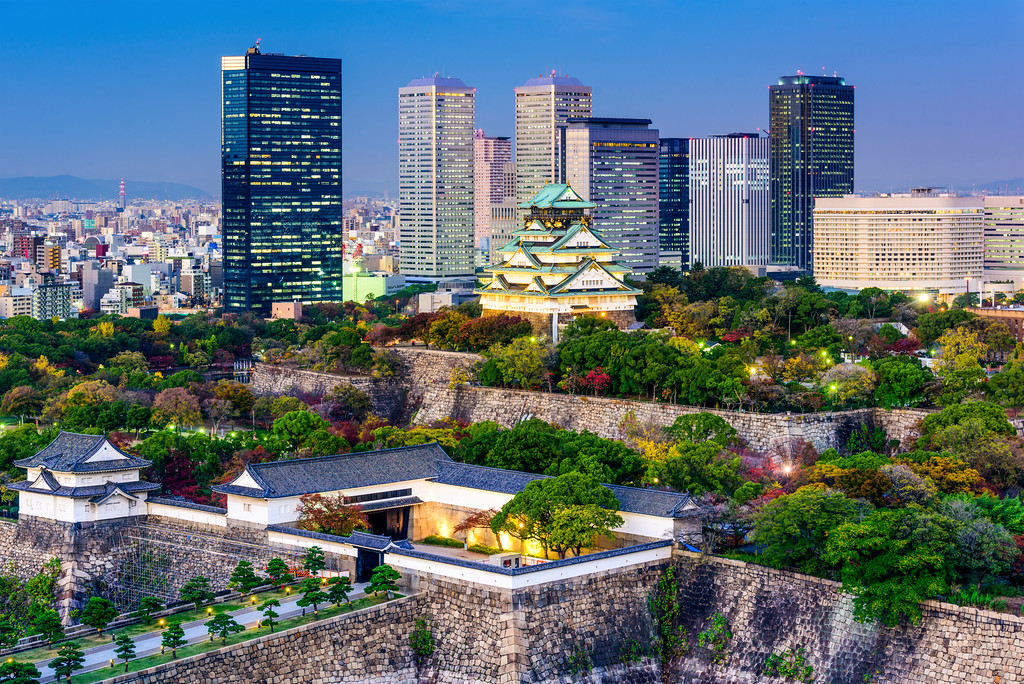
Welcome to Japan – The land of the rising sun and miracles. Your dream journey is about to begin. However, before going to the interesting things such as where to eat and what to play, let’s talk about logistics.
In our opinion, the cheapest flight tickets to Japan are probably to Osaka, so this will be the starting point of our Japan 7-day travel itinerary (If you fly to Narita Airport, maybe you will have to adjust the schedule a bit, but not too much so rest assured).
- The advantage of flying to Osaka Kansai Airport is that it is really affordable.
- The downside: it’s located on an island, so it takes you 30-45 minutes on the train to get to downtown Osaka (but don’t worry, we already have a JR pass).

You can explore this lovely city from the moment you set your feet on it, or like us, save the last day on your schedule to discover it later, and prepare to take the train to Kyoto.
For the first night, just take your time to get rest after a long flight. If feeling hungry, you can pay a visit to the ramen shops around the neighborhood. Guaranteed that it will light up your mood and increase your strength significantly, and help you get ready to explore Japan in the most incredible way.
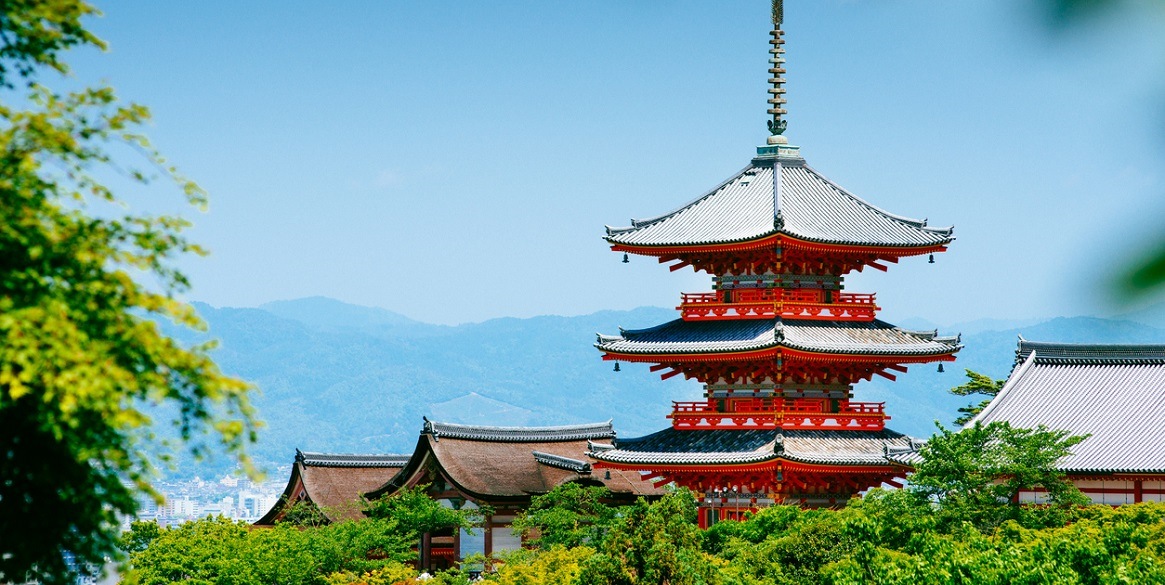
Where to stay in Kyoto? You can choose among a variety of motels/hotels in the South Higashiyama area during your stay in Kyoto. We chose the Santiago Hostel and loved the amazing space here, and the rooms were clean for an extremely good price.
Alternatively, you can also choose Piece Hostel Kyoto – ideal location in a modern neighborhood with private or dorm room and a rooftop flower garden. (You can check rates, reviews and book on Agoda.com or Booking.com ).
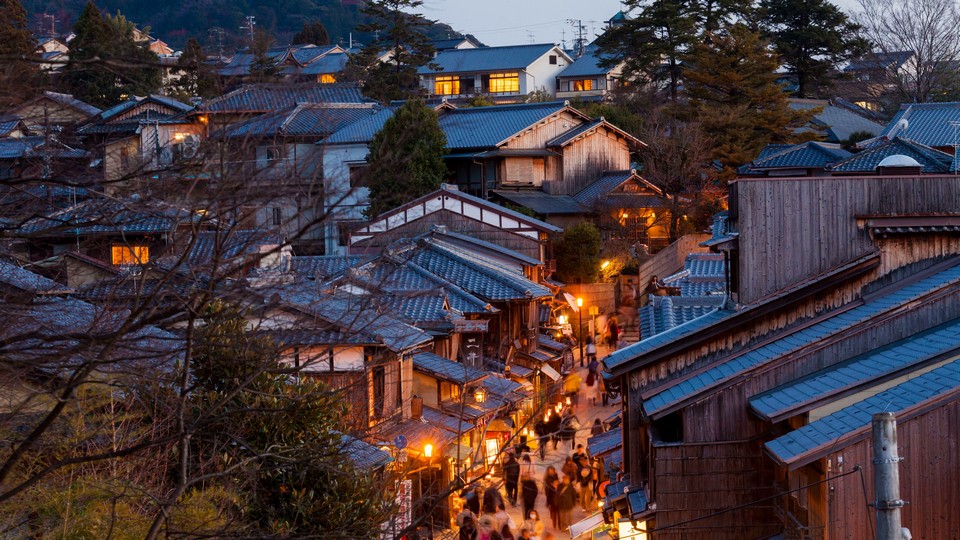
What to do in Japan for 7 days — Day 2: Explore the ancient city of Kyoto
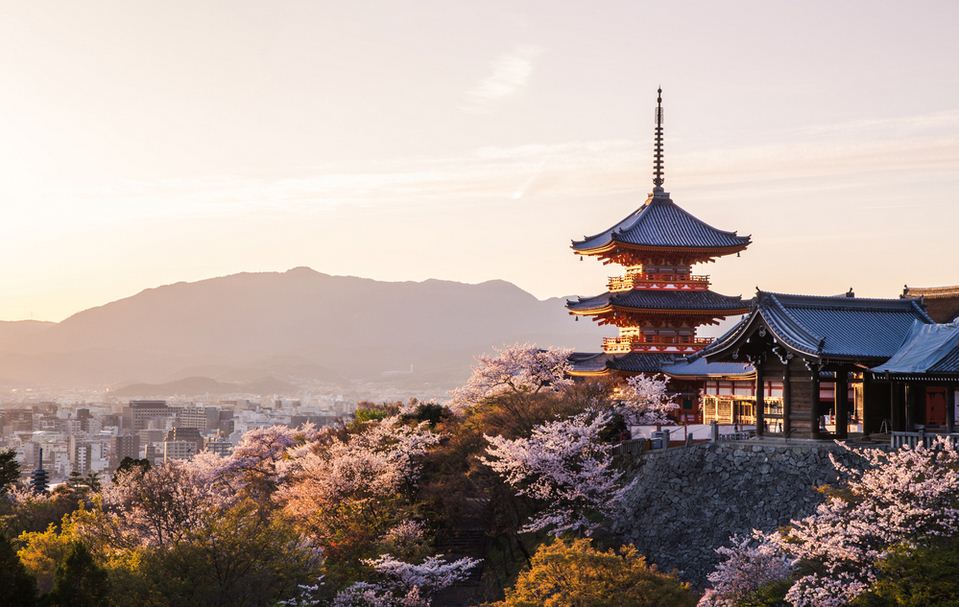
Kyoto is the 1000-year-old capital of Japan. This is a true old city because you will not see a skyscraper or any modern buildings at all. In return, the ancient city still preserves many historical and cultural relics both material and spiritual of the Japanese people together with a peaceful setting and a slow pace of life. It is estimated that more than half of all Japanese temples, shrines and palaces are situated in Kyoto.
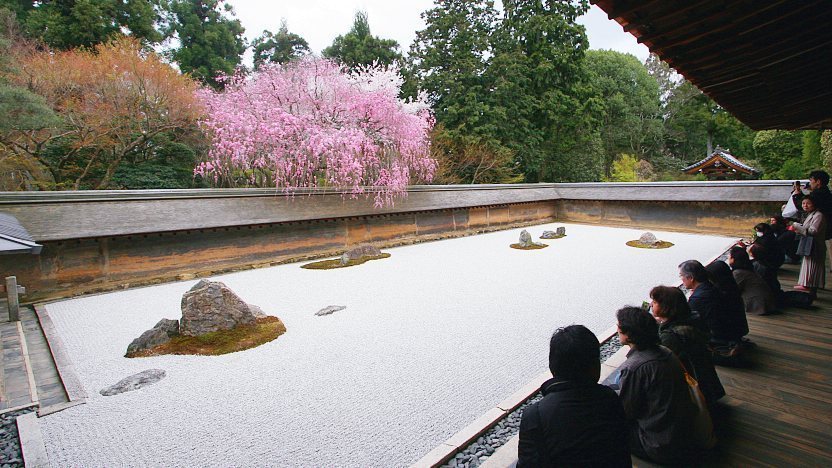
The low houses are hidden and interwoven with the green trees on clean, narrow streets where there are very few cars. I feel like I can spend a month in Kyoto and still have not discovered much here.
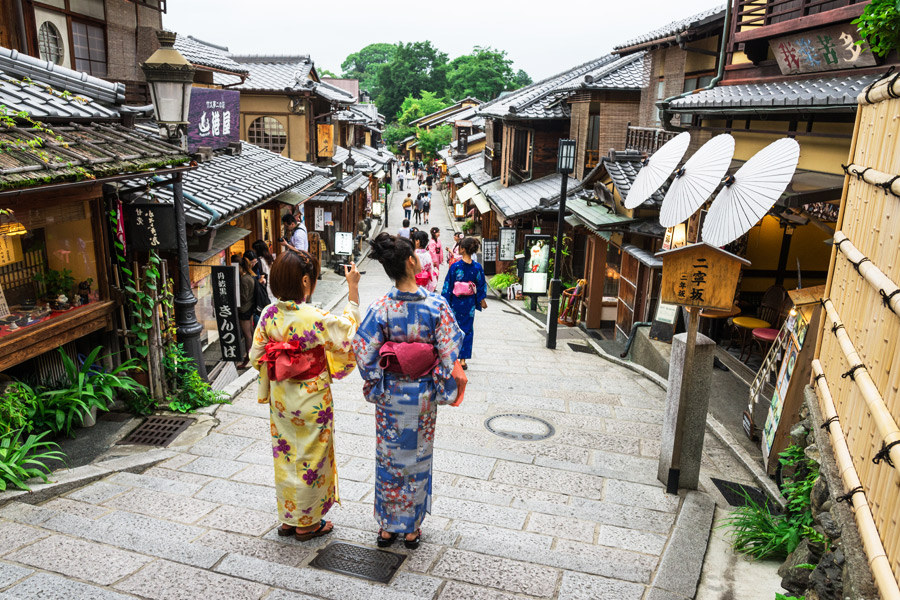
The easiest and cheapest way to visit this city is to buy an all-day bus card of around 500 yen at your hostel, or you can buy one directly on the bus.
Head west to the Arashiyama area and explore the old town. Take a stroll through the magical Sagano bamboo forest (one of the must-experience things when visiting Kyoto ). As one of the most beautiful natural scenes in Japan, Sagano not only attracts tourists for its original beauty but also for the sound of the wind blowing through the thick bamboo forest.
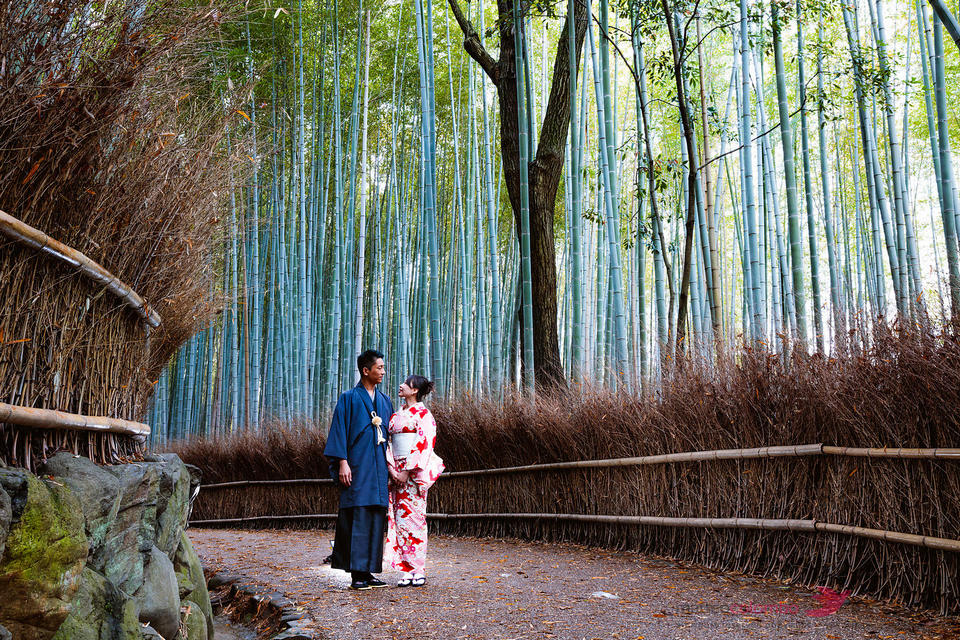
If you have more time, try going to Kameyama–koen Park to see … monkeys. Have lunch at one of the ramen shops along the way.
Afternoon: Travel north by bus to Kinkaku-ji, the famous golden temple. This entire temple is inlaid with gold and recognized by UNESCO as a world heritage site in 1950. The sunset here is extraordinary, make sure you get the photos. However, this point is a bit crowded, so hopefully you will find a nice view.
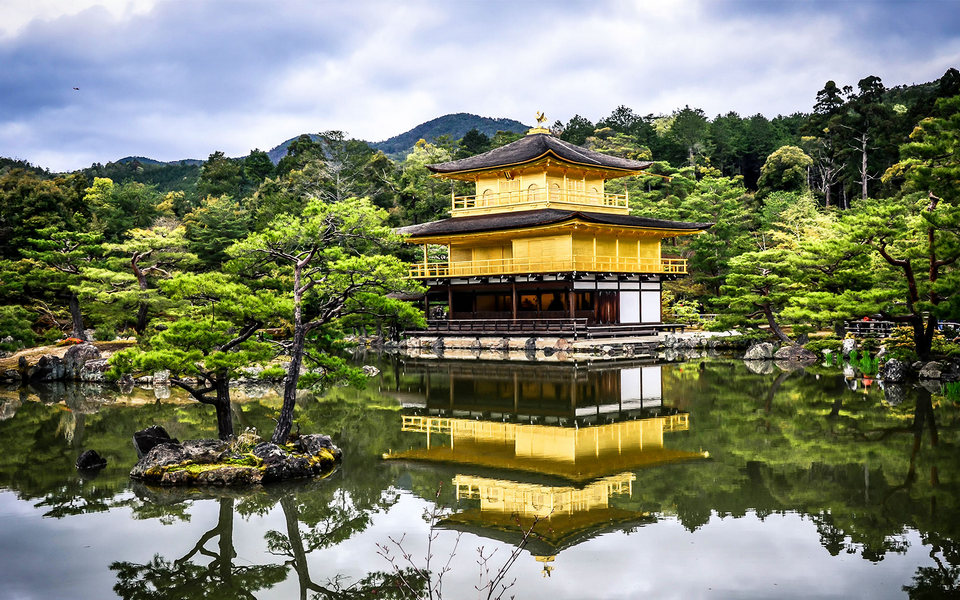
Evening: Walk on Pontocho Street and “hunt” geishas. Not only being the only geisha area remaining in Japan, Pontocho is also a collection of streets with old wooden houses, teahouses and exclusive restaurants that have become famous worldwide.
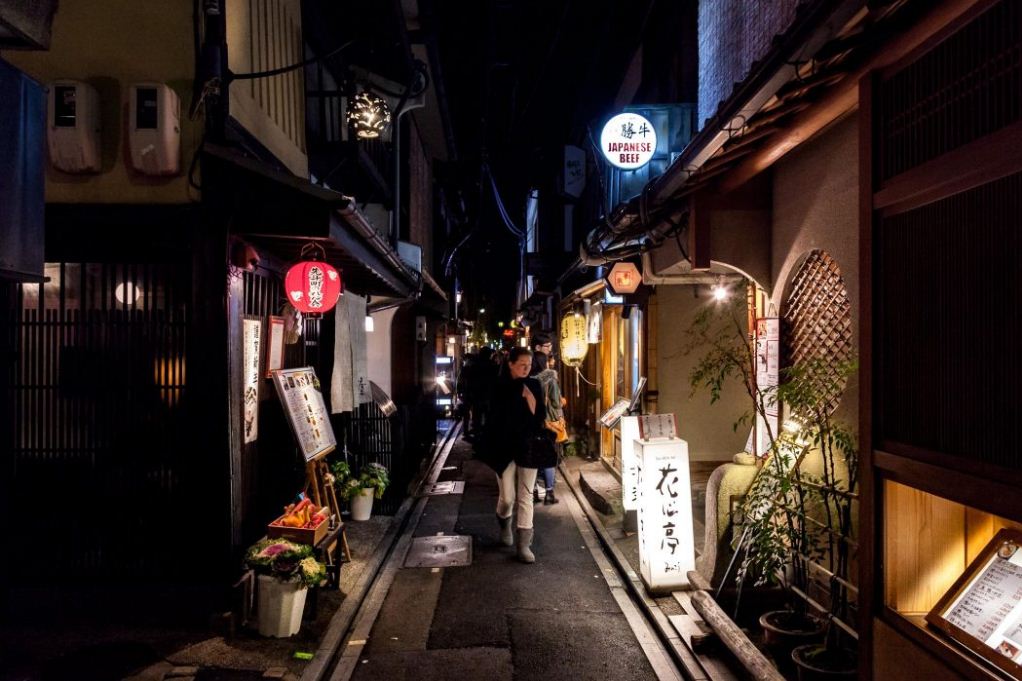
Japan itinerary 7 days — Day 3: Discover Kyoto and more
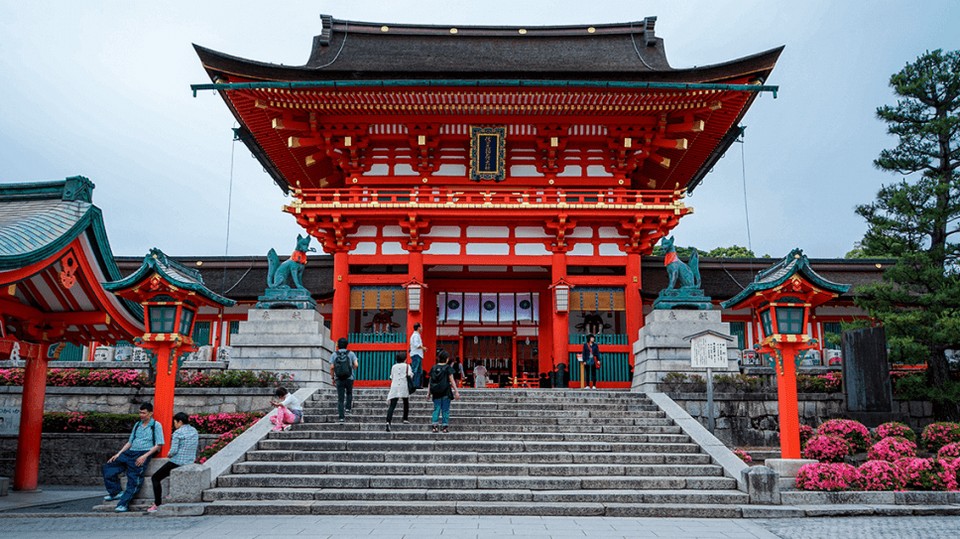
Morning: Get up early and head south to Fushimi Inari Shrine – the famous shrine with orange gates. Take the JR Nara Line to JR Inari Station. As soon as you exit the station, you will see the temple entrance.
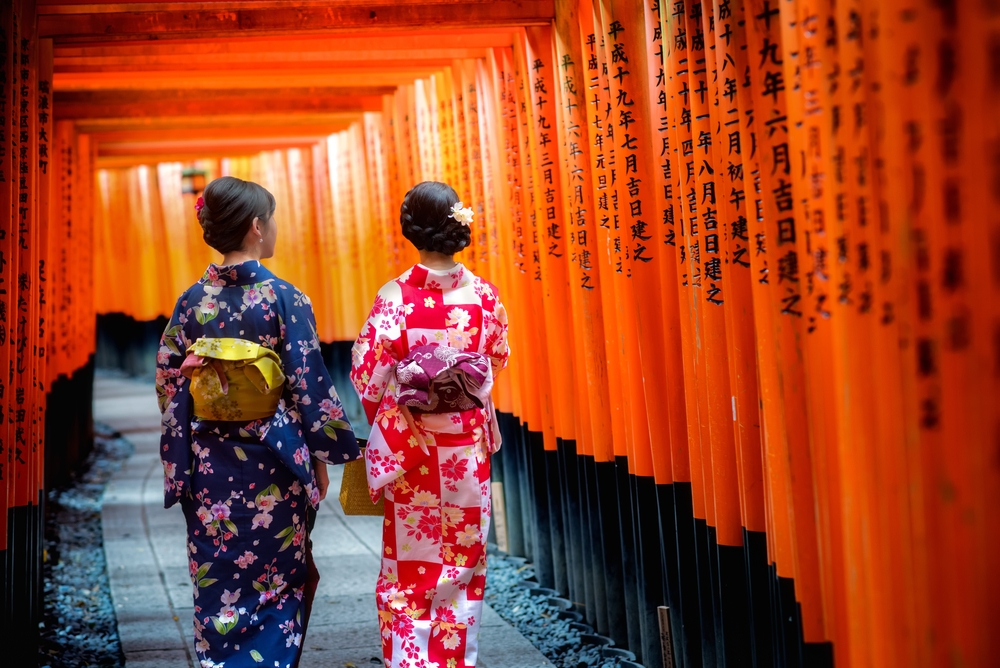
This temple is quite crowded with tourists, so remember to go as early as possible. Take your time to get a few poses. If it is too crowded, go up to the hill a little, you can take photos without any other tourists interrupting.
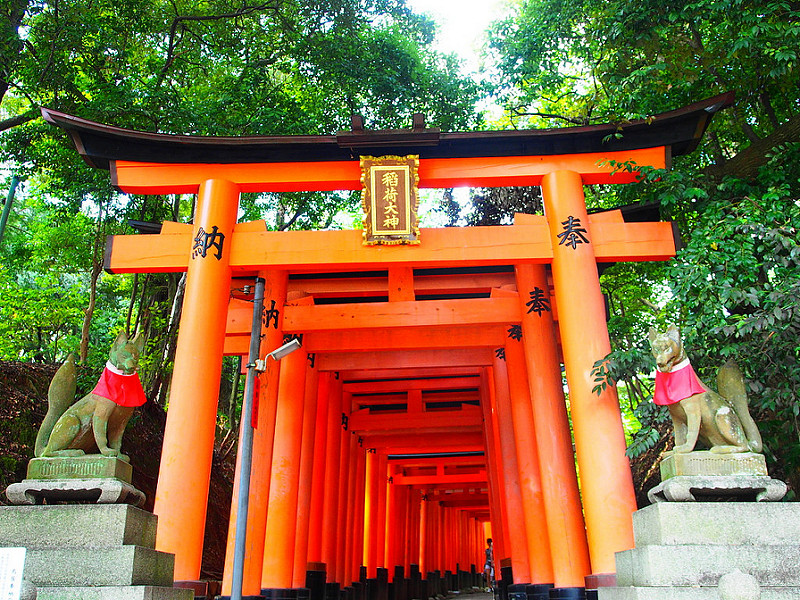
Afternoon: Join a cooking class at Cooking Sun School. There are a lot of options, but we recommend taking a sushi making class.
Afterwards, return to downtown Kyoto and explore the Nishiki Market. Make sure you try the octopus cake there.
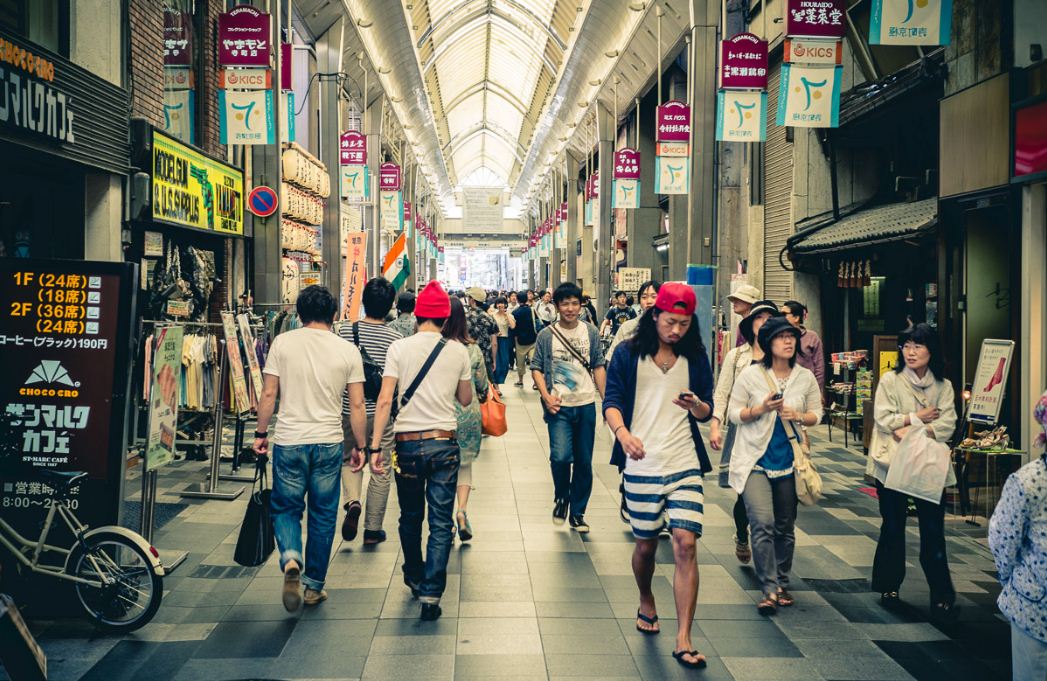
Sunset: Climb a little to Kiyomizu-dera temple to admire the whole city view. After sunset, walk through Ninen-zaka and Sannen-zka – the streets are well preserved and you will feel like going back in time.
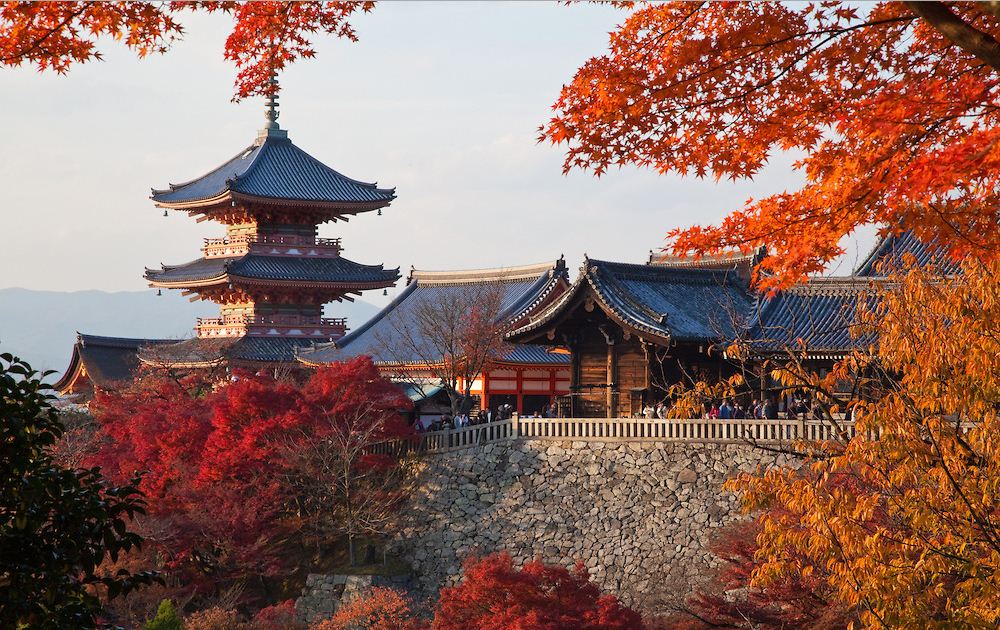
Japan itinerary 7 days — Day 4: Travel to Hakone
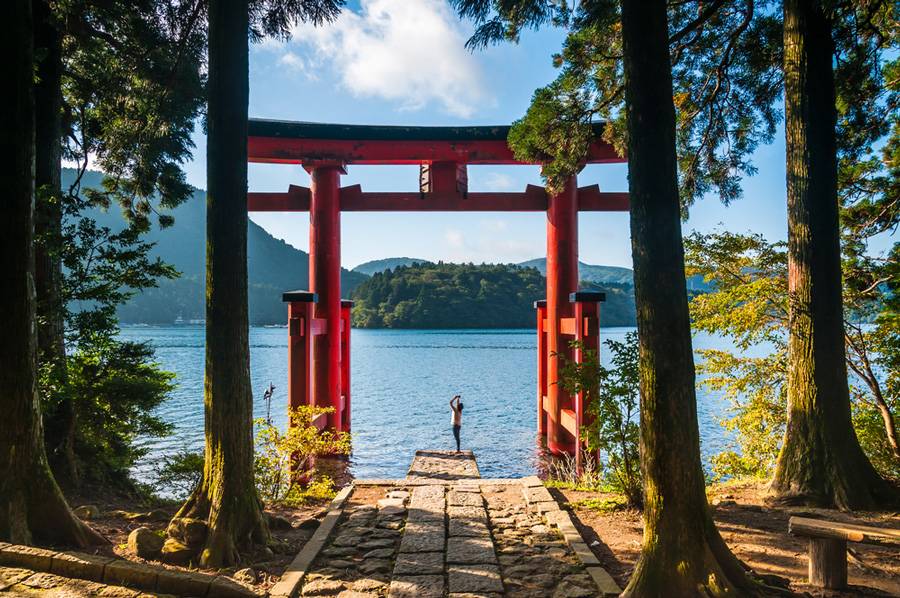
Morning: Use your JR Pass and transfer to the Shinkansen (bullet train), then to Odawara and buy the Hakone Free Pass for 4000 yen. Transport by bus to the Hakone area and stay at one of the ryokan-style guesthouses here.
We stay at Fuji- Hakone , one of the most affordable motels in the area. Or explore more motels/hotels in Hakone here.
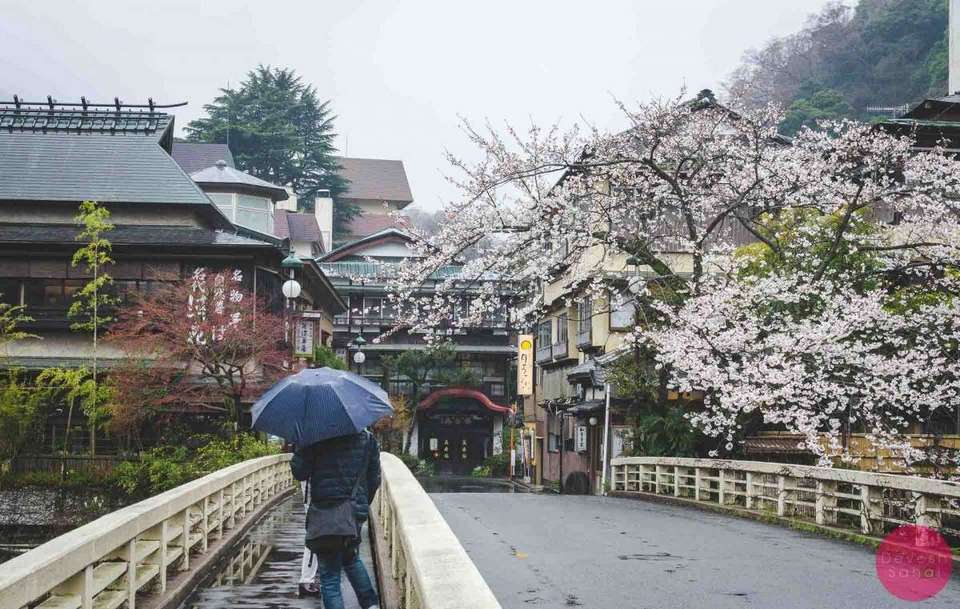
If you really want to experience the culture of Japan, then let’s try onsen bath. Hakone is famous for onsen bath and there are many options to choose from. You can try taking a bath outdoors while watching Mount Fuji (Woww!!!). Usually the onsen baths here are separated by gender, but many motels in the area have personal bathing room.
We had a great time at a private onsen in Fuji-Hakone, relaxing with a bit of wine and watching the snow falling around. An absolutely wonderful experience.
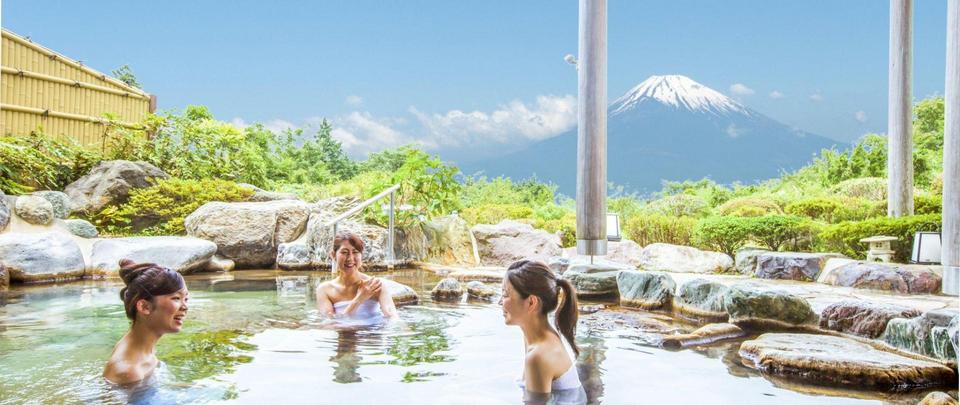
Afternoon: Use the Hakone Free Pass and hop on a cart to arrive at the cable cars for Mount Fuji sightseeing. (Hopefully the weather is nice). While on the cable car, don’t forget to try green tea eggs. People say that if you eat one, you will live another extra 7 years.
Evening: Dinner at a local restaurant and relaxing in onsen bath.
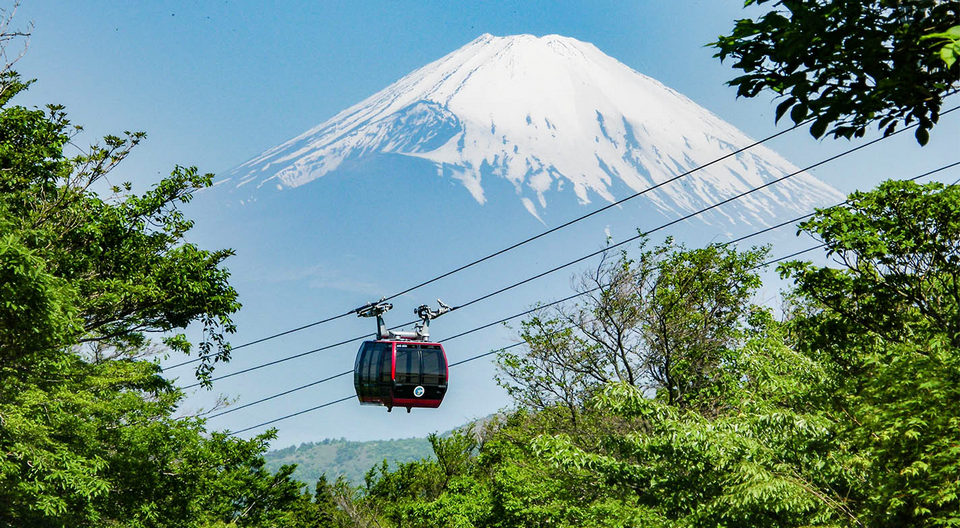
Japan itinerary 7 days — Day 5: Morning in Hakone, Evening in Tokyo
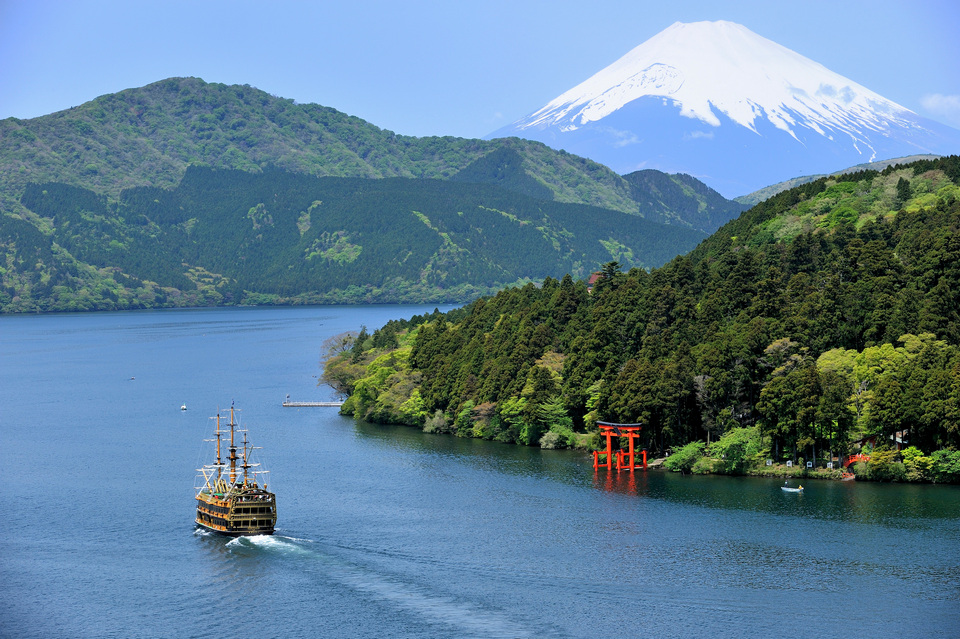
Morning: Travel to Togendai for Mount Fuji sightseeing from another viewpoint, Lake Ashi. Sailing on the lake is quite interesting and you can take lots of beautiful photos here (tickets are included in the Hakone Free Pass).
Get off at the first stop at Hakone-machi Port and then head northeast to Moto-hakone Port. Follow this path along the hillsides and through the beautiful cedar forest.
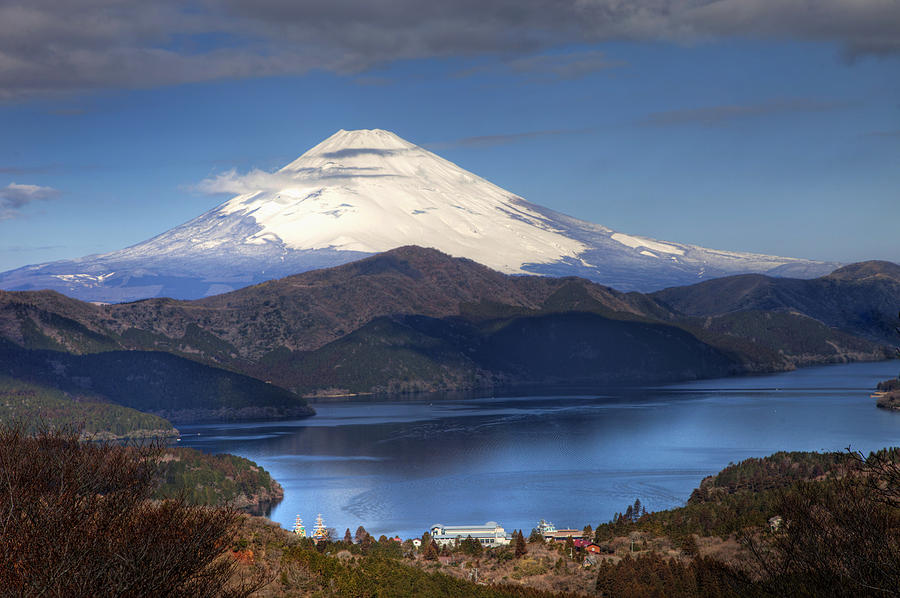
Afternoon: From Moto-hakone Port, return to Odawara and then travel to Tokyo by JR Rail.
Evening: Arrive at the hotel by subway. You can either stay in Shinjuku or Shibuya area and book a room via Airbnb to save money.
In the technology capital of this world, living without Wifi is totally unacceptable. Therefore, you should rent a Wifi router or take advantage of several places in Tokyo with Wifi connection to search your way. Traffic in Japan is quite troublesome, so traveling without Wifi is a disaster.
You can rent a Wifi router here.
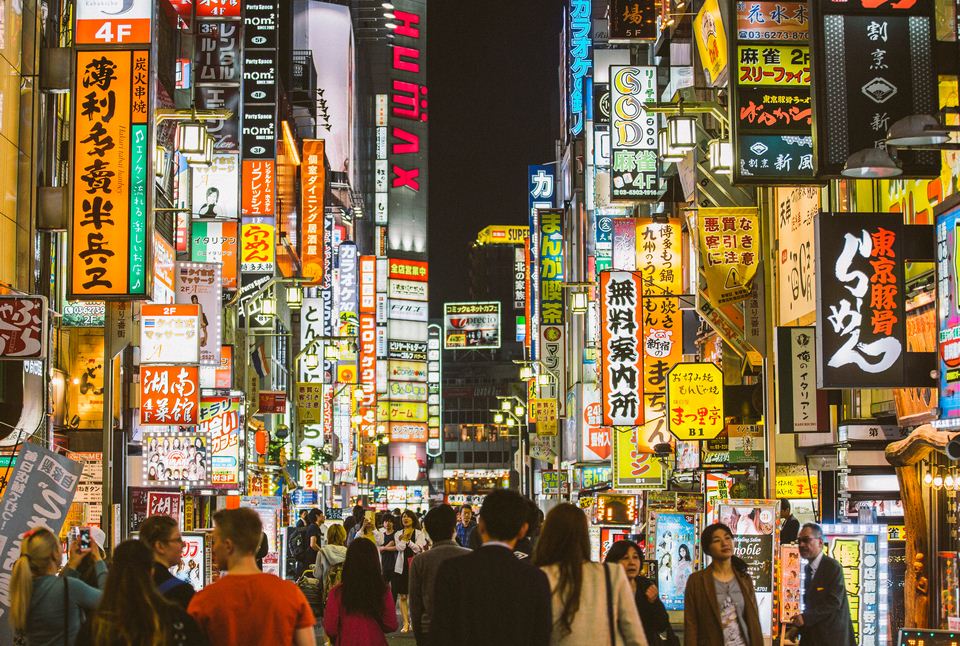
Where to stay in Tokyo ?
- Couple Stay/Mid-range: Daiwa Roynet Hotel Ginza – Close to Tokyo Station, free Wifi and Plasma TV screens in all rooms, restaurants and other services are quite good. (You can check rates, reviews and book on Agoda.com or Booking.com ).
- Budget Friendly/Social Atmosphere: Bunka Hostel Tokyo – Located in the heart of the city, this hostel has won many awards with private room or dorm room besides a restaurant and a shared kitchen for cooking, full Wifi connection. (You can check rates, reviews and book on Agoda.com or Booking.com ).
7 days in Japan — Day 6: Jigokudani Yaen-koen snow monkey park, Nagano
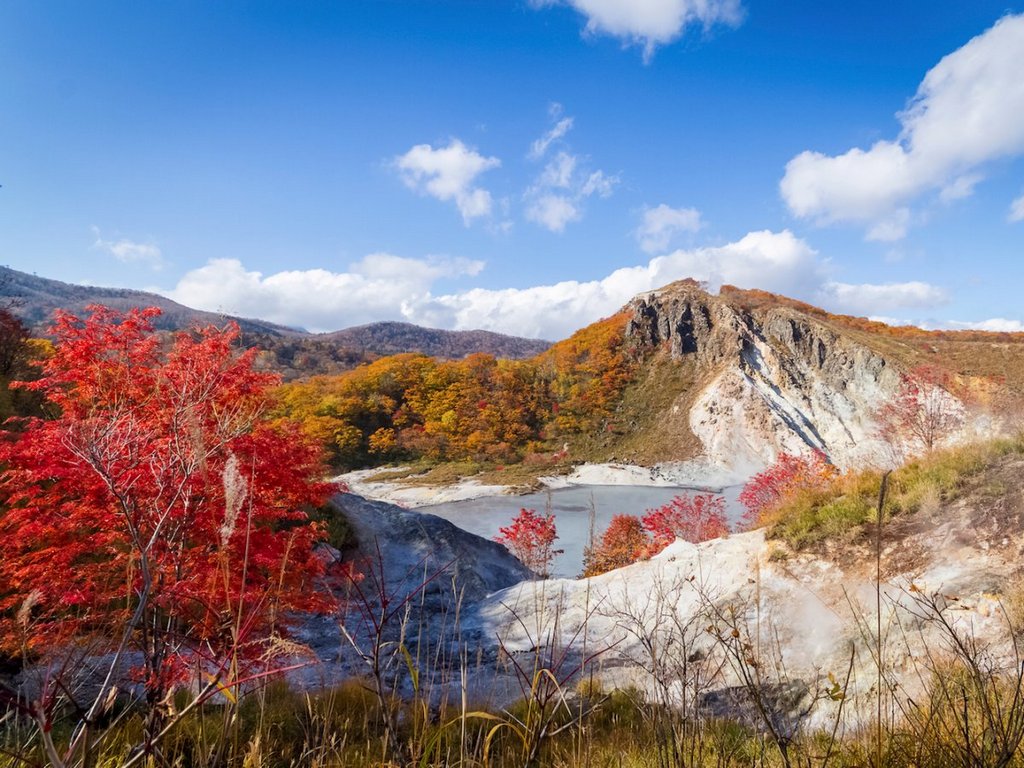
Morning: Use the JR Pass to arrive in Nagano. From Nagano Station, walk to the local station called Nagano Dentetsu Station. Then take the Yudanaka line to Yudanaka Station.
From here, take the bus going straight to the gate of the Snow Monkey Park. Walk for about 30 minutes into the park, but if you’re like us, it may take longer because there are so many beautiful scenes for photos in this fairy forest. Spend the morning walking around like monkeys. This is probably one of my most enjoyable experiences when traveling to Japan.
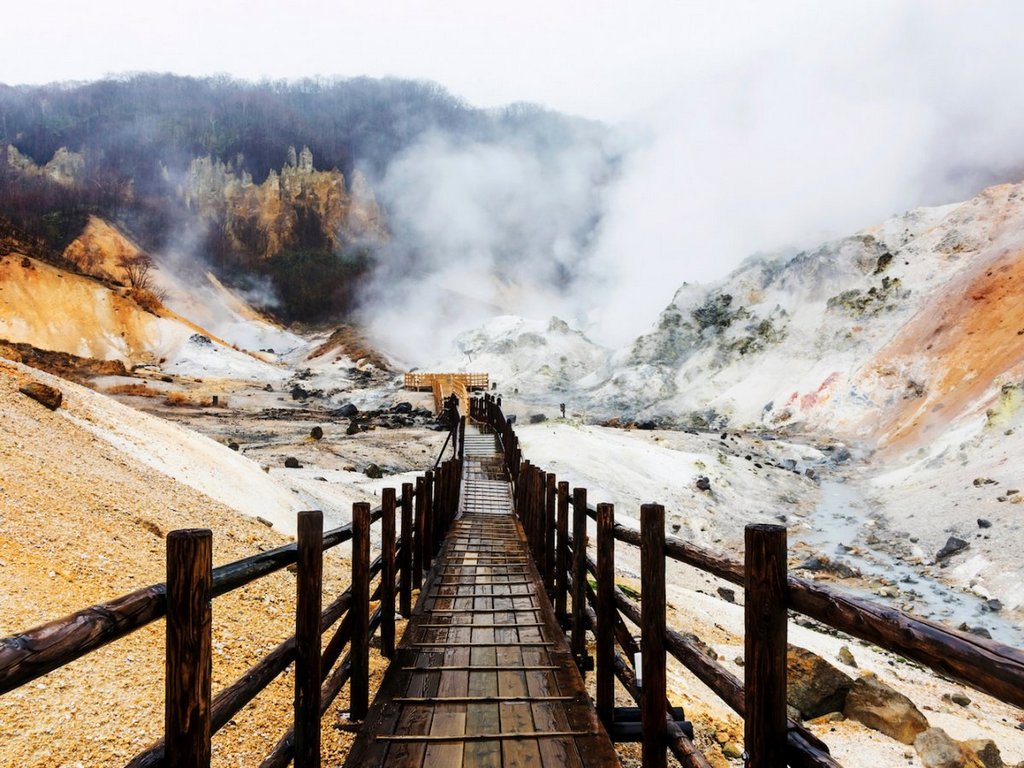
Afternoon: Return to Tokyo and go straight to the intersection of Shibuya – the most bustling intersection in the world with bright neon lights, giant screens and 2,500 pedestrians going back and forth. Chaotic but extremely orderly. From the train station, go up to the Starbucks in the Tsutaya building. The second floor of the coffee shop has floor-to-ceiling windows for a comfortable watch of people passing by. This is a very popular viewing spot of the intersection, so please wait patiently for your photo taken from the shop window.
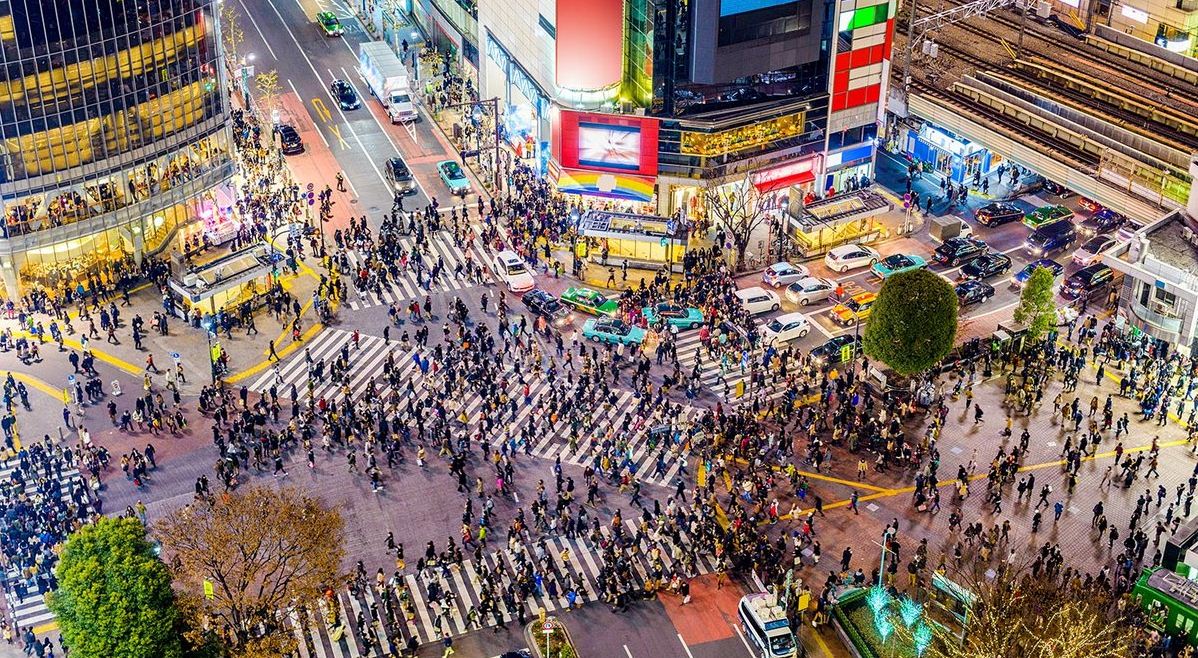
7 days in Japan — Day 7: Explore Tokyo
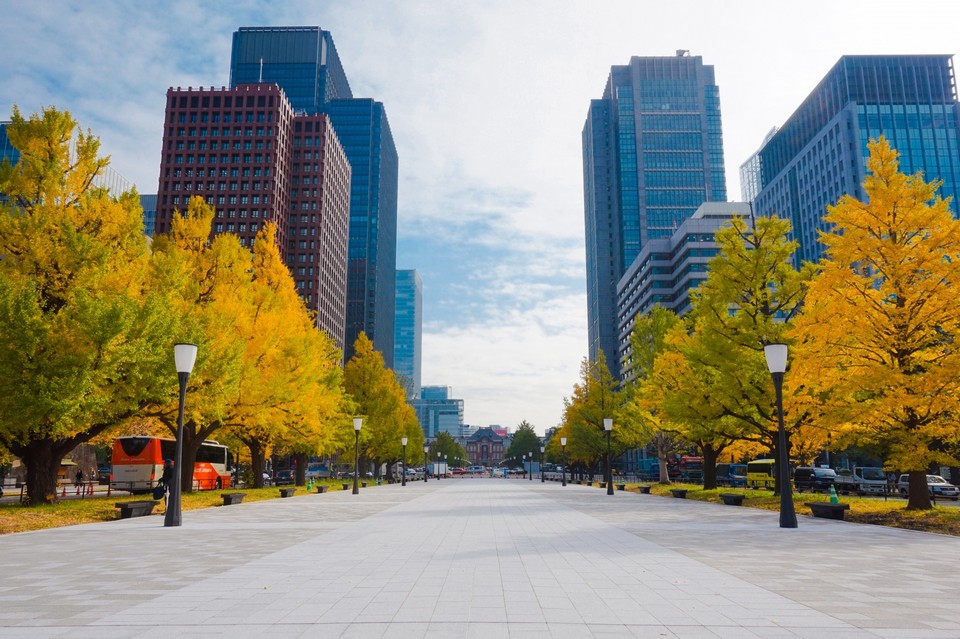
Explore Tokyo by subway and visit the most famous attractions in the city. Check out some of the must-experience things in Tokyo to plan the most reasonable schedule.
The easiest and cheapest way to get around Tokyo is buy a Toei Line All Day Pass. You can use this card to take any Toei train or any bus routes in the city.
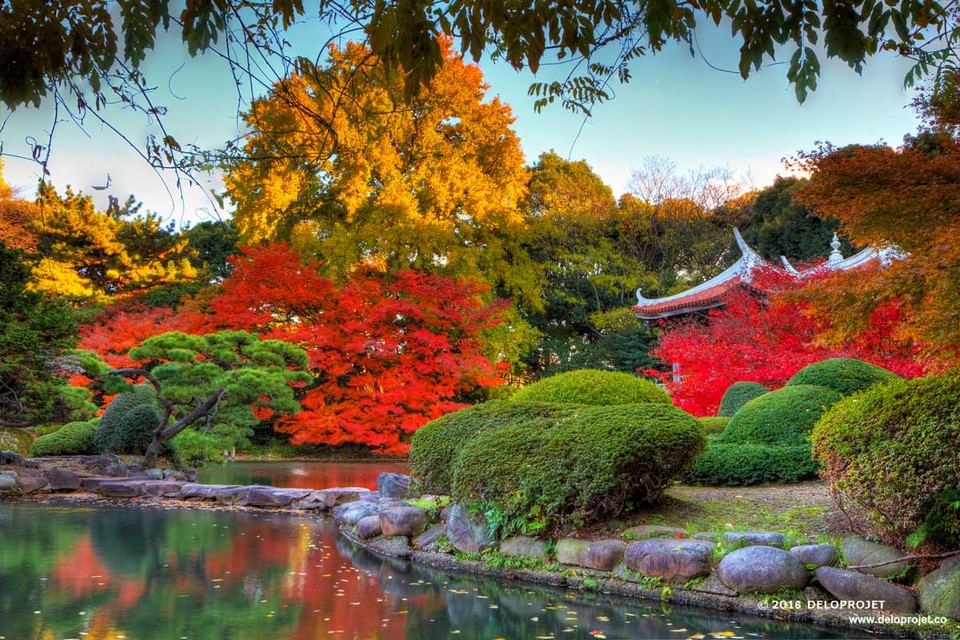
Morning: Go to Tokyo Tower by Toei Oedo Line via Akabanebashi Station. After checking in and taking photos here, you can have some sushi at Tsukiji fish market (Toei Oedo Line via Tsukijishijo Station). Make sure you come here early because most restaurants here are closed before afternoon. Here, you will find the freshest and most delicious sushi in the world. I am still craving for sushi now.
Next, go to Sensoji Temple and see the red giant lantern at the Thunder Gate.
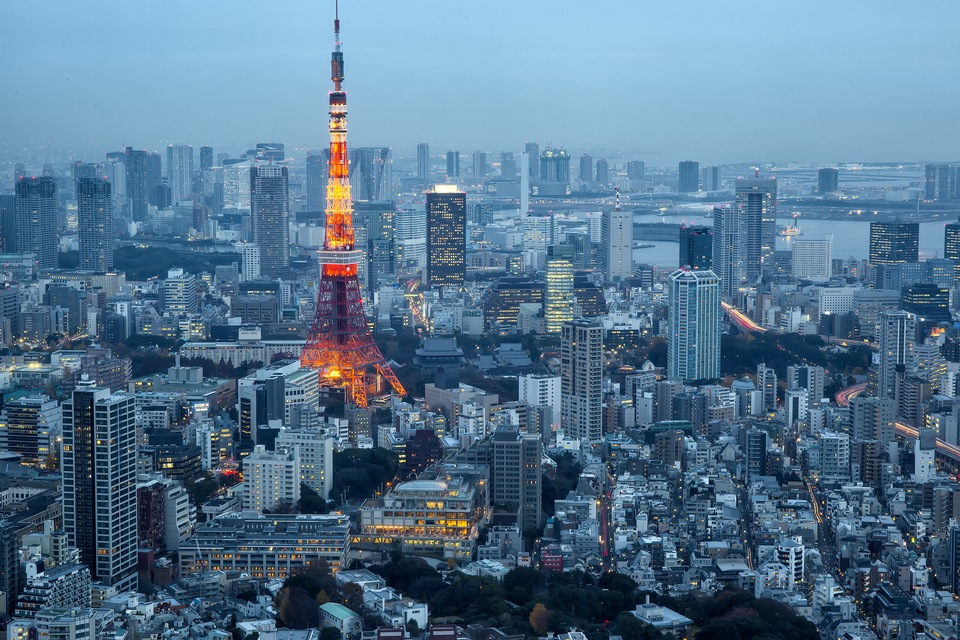
Evening: Frenzy with Robot Restaurant show. This is the craziest, funniest show I’ve ever seen. We got a 30% discount for our booking. It should be worth the money.
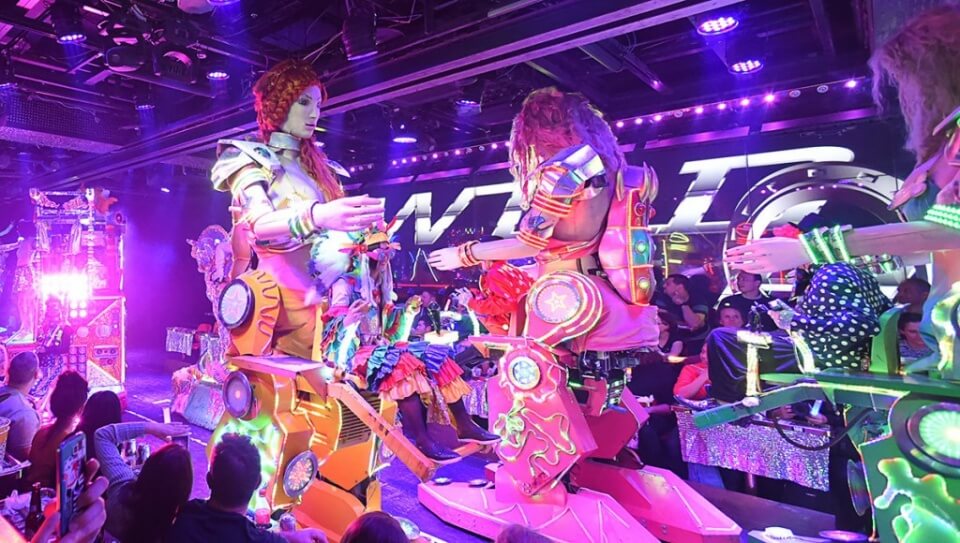
Day 8: Fly back to your country
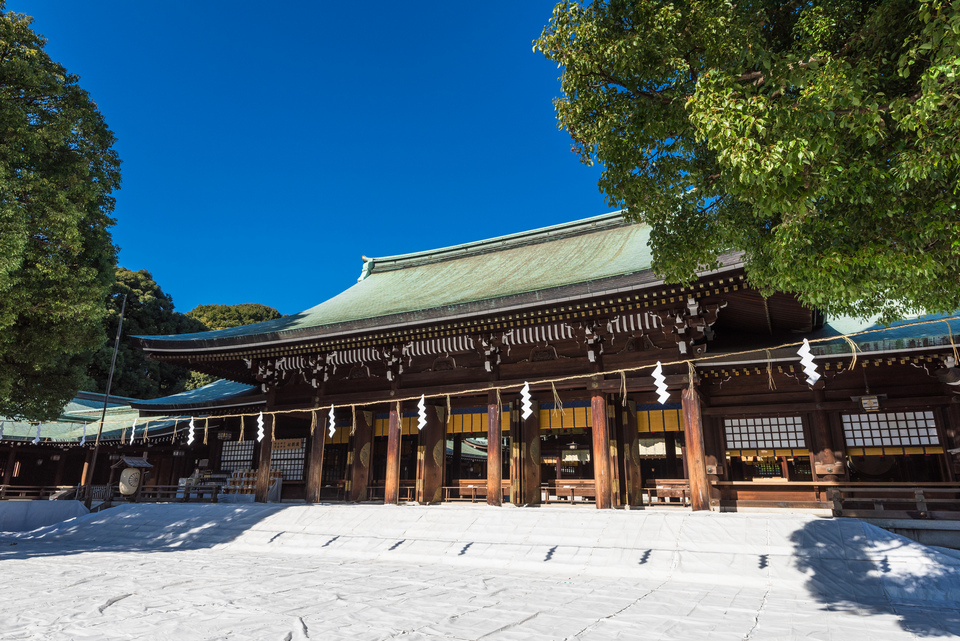
Morning: Visit Meiji Shrine, which is considered to be the most famous temple in Tokyo greater area, located in the middle of a huge park with thousands of trees from all over Japan. And this is also the temple of Emperor Meiji – the first emperor after the Shogun Tokugawa government collapsed. Due to a lot of spiritual elements, this temple always has annual festivals and weddings held in a tranquil atmosphere despite the high number of visitors.
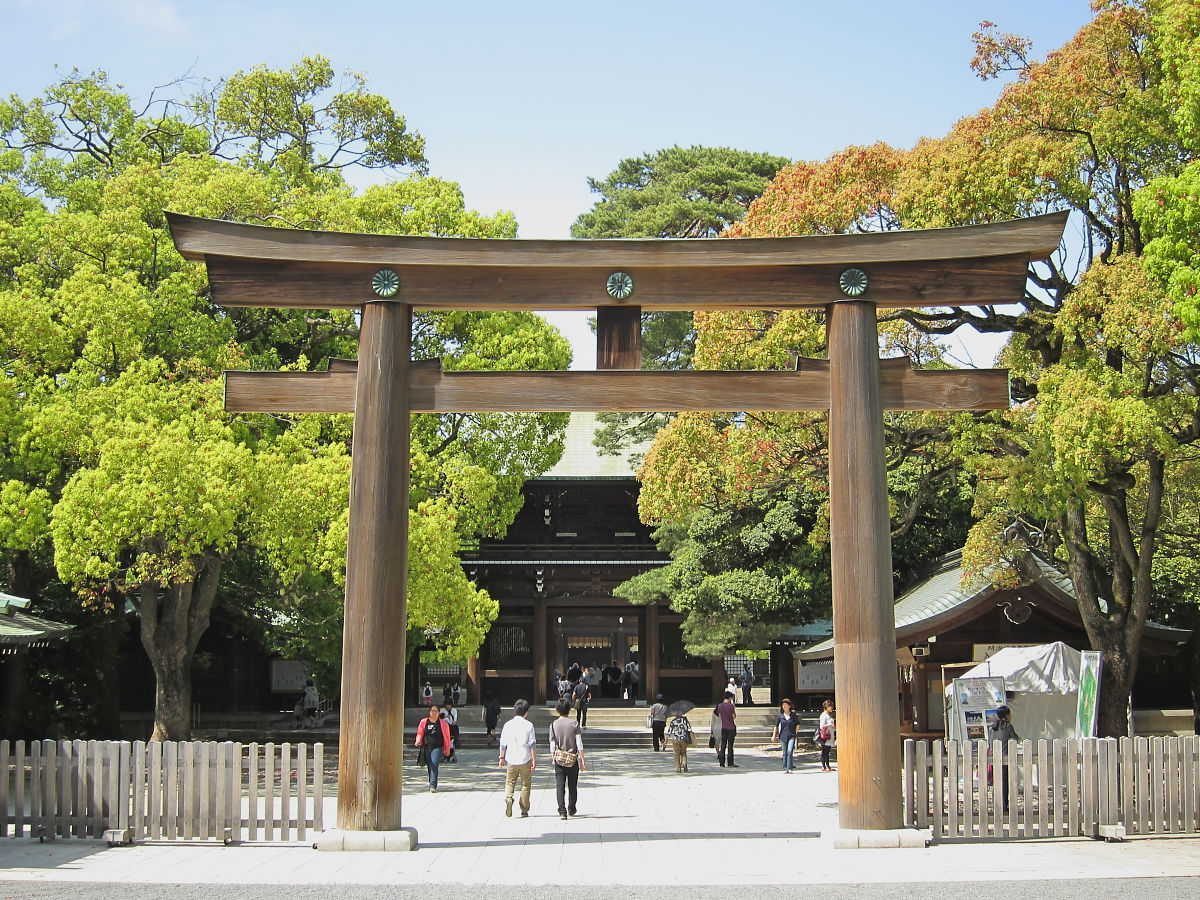
Breathe in the fresh air and walk on the wide roads with towering trees when you come to the wooden temple. On the weekend, you may also see a traditional wedding here.
Afternoon: Head back home.
- If you have less than 7 days in Japan: If you have less than 7 days in Japan, then I recommend choosing to visit either one between Kyoto or Osaka, and Tokyo or Hakone.
- If you have more than 7 days in Japan: There are so many beautiful things in Japan. If I had more time, I would definitely stay in Kyoto.

Some best day tours, trips, activities and transfer services, tickets in Tokyo and from Tokyo you can refer to
- Tokyo Amazing Sightseeing Bus Day Tour
- Tokyo Highlights Private Day Tour
- Dynamic Tokyo
- Nikko Day Tour from Tokyo
- Mt Fuji & Hakone Day Tour: Lake Ashi & Ropeway Day Trip from Tokyo
- Nikko Cultural Day Tour from Tokyo
- Tokyo Subway Ticket (24, 48, or 72 Hours)
- Tokyo Skyliner and Tokyo Subway Ticket
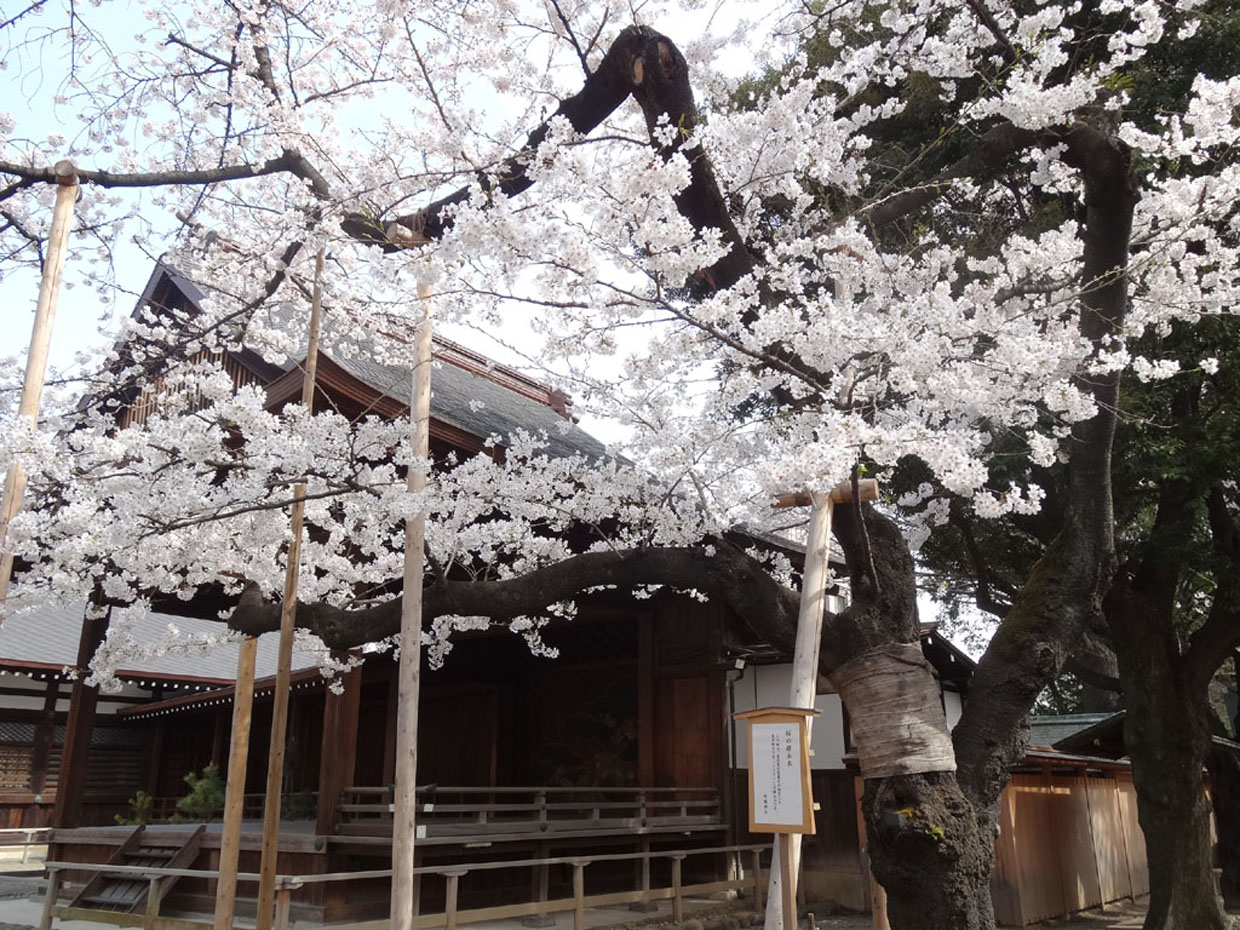
Some best day tours, trips, activities and transfer services, tickets in, to and from Tokyo you can refer to
- Private Narita International Airport Transfers (NRT) for Tokyo 23 Wards, Hakone, or Karuizawa
- Private Haneda International Airport Transfers (HND) for Tokyo 23 Wards, Hakone, or Karuizawa
- Airport Limousine Bus Transfers from/to Narita and Haneda International Airport (Free Wifi Onboard)
- Shuttle Bus Transfers (One Way/Round Trip) from Shinjuku/Ikebukuro to Tokyo Disneyland or Tokyo DisneySea
- Sky Hop-on and Hop-off Bus Pass
- 4G Prepaid Sim Card (JP Airports Pick Up) for Japan
- 4G WiFi (Japan Pick Up) for Japan
- JR Pass for Whole Japan (7, 14, or 21 Days)
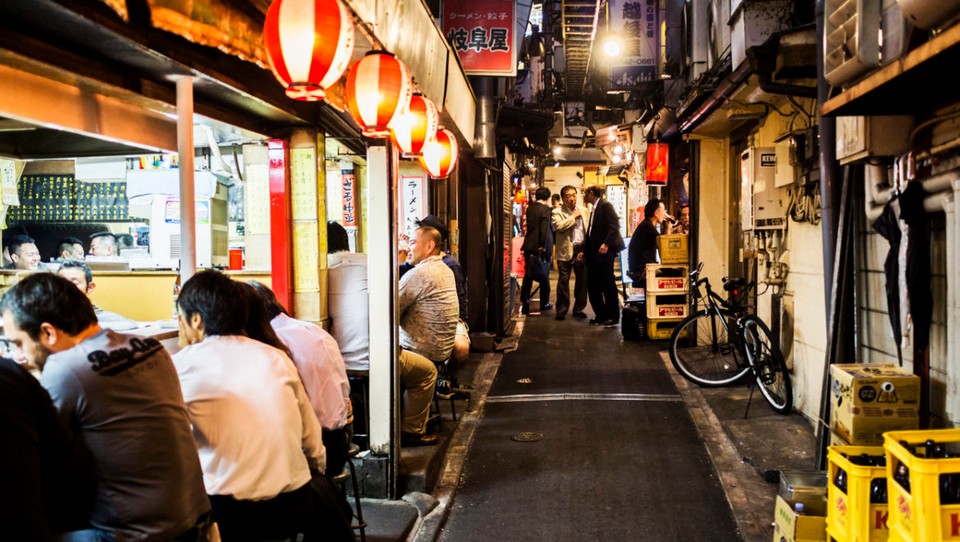
Are you looking for more Japan travel guide and top things to do in Japan: Tours, activities, attractions and other things? Check out here.
Related articles
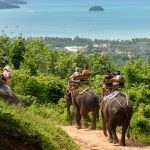
RELATED ARTICLES MORE FROM AUTHOR
Where to go in kunming — 15+ top kunming attractions & best places to visit in kunming, must eat in melaka — 10+ famous malacca street food & must try food in melaka, what to do in alishan — 5 top attractions & best things to do in alishan, taiwan, hong kong food culture — hong kong cuisine tells the historical story of the whole land.

Melaka food blog — Experience Melaka delicacies, arrived at by Trishaw

Where to eat in Hakodate? — 5+ best food & best places to eat in Hakodate city, Hokkaido
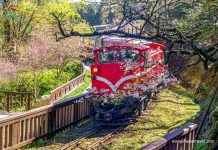
Alishan travel blog — The fullest Alishan travel guide for first-timers
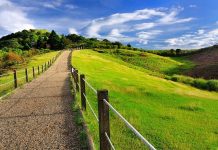
Gingtiangang Grassland Yangmingshan — The ultimate guide on how to go & top things to do
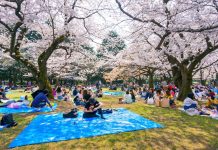
EDITOR PICKS

What to eat in Chongqing? — 14+ most famous, best food...

Where to go in Kunming? — 15+ top Kunming attractions &...

Must eat in Georgetown — 10+ famous, must-eat & best street...
Popular posts.

What to buy in USA? — 17+ must buy in USA...

Must buy souvenir in Taiwan — Top 17+ most famous, cheap...

Must buy in Korea — Top 23 cheap, famous & best...
Popular category.
- Inspiration + Guide 1453
- Trip Inspiration 469
- Thailand 209
- Food + Drink 207
- Coasts + Islands 193
- South Korea 168
- Vietnam 166
- Travel Photos 144
- Work for Us
- Terms & Conditions
- Privacy Policy

Japan Itinerary 7 Days | One BEAUTIFUL Week in Japan
By: Author Charles
Posted on February 2, 2023
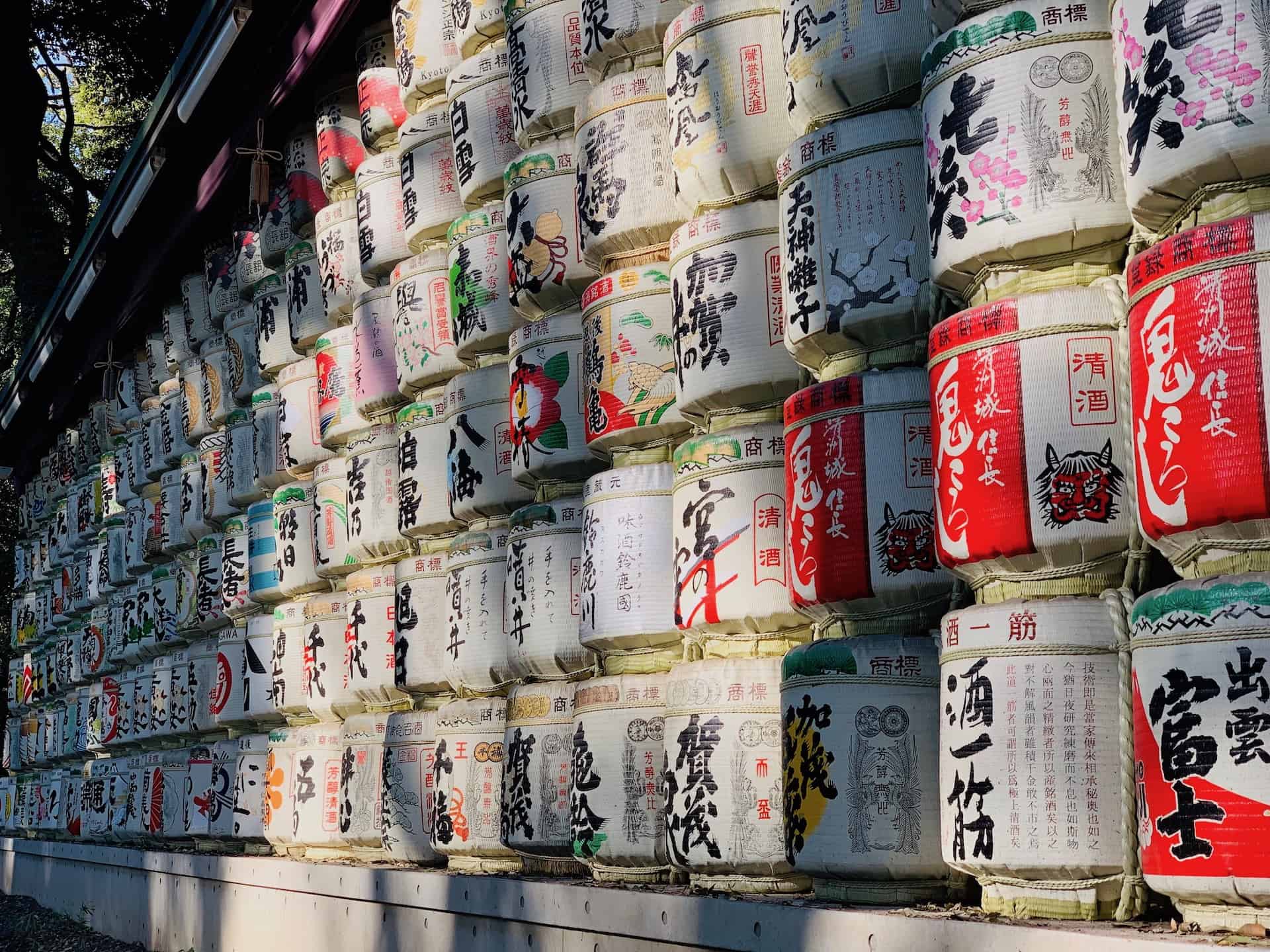
Are you headed to Japan and want to put together the best possible trip? Well, this one week in Japan itinerary will walk you through how to mix and match cities to create the best route for you!
Given how many different places there are to visit, it can be difficult figuring out an itinerary for one week in Japan. By reading through this overview, you should get a better sense of the many various option to consider as your itinerary comes together.
So, feel free to read on to learn more about Japan and what one week in the country can look like for you.
* Affiliate Disclosure : This post may contain affiliate links, which means I may receive a commission if you make a purchase through the links provided, at no additional cost to you. Thanks for supporting the work I put into TripTins!
One Week in Japan Overview
For most of the itineraries you will find on the site, (including the 10 day Japan itinerary and 14 day Japan itinerary ), I list out a day to day approach of what to follow.
However, for this itinerary, I thought it may be a better idea to lay out many of the top options, and for you to decide what places interest you most.
The idea here is to give you several different cities, activities, & attractions to choose from, and you can then mix and match a one week in Japan trip that best suits you!
Don’t worry though, I will also list out some great potential itineraries later on if you would like to just build off of those.
Before jumping into the itinerary itself, I wanted to list out some helpful things to know about Japan and this itinerary in particular:
» Assume that day 1 and day 7 are full days . That means you should plan to arrive the night before or early on day 1 and head out later on day 7 or sometime on day 8.
» If you follow my advice and include both Tokyo and Kyoto in your itinerary, you can decide to fly into and out of Tokyo, into and out of Osaka (1 hour train from Kyoto), or into one and out of the other .
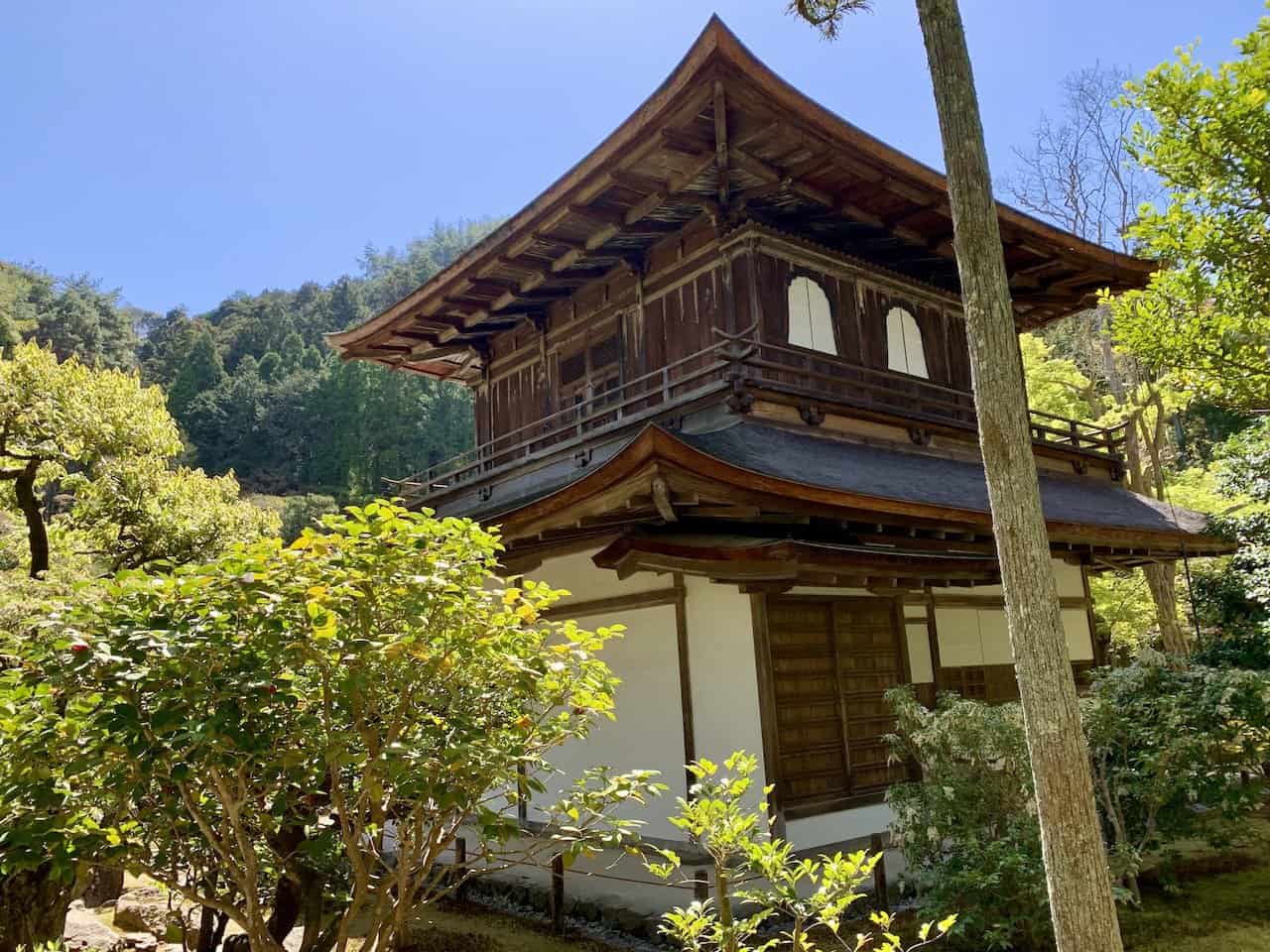
Is 7 Days Long Enough in Japan?
The first question you may be asking yourself when putting together a trip like this is if 7 days is long enough in Japan? The answer to that really depends from person to person.
As you will see in this rest of this itinerary, there is so much to do all throughout the country. While some people may want to do it all and spend multiple weeks there, others may be more than happy with a one week trip.
If anything, 7 days will give you just the perfect amount of time to explore multiple cities and get a little taste of a whole lot that the country has to offer.
There will be no need to rush through things and you will still get to experience several of the top spots.
By the end of your trip, you will either be completely satisfied with your choice of spending 7 days in Japan; or you may decide to plan another trip there in the future because you loved it that much.
Whatever happens, I have a hard time believing you won’t fully take advantage of your time there.
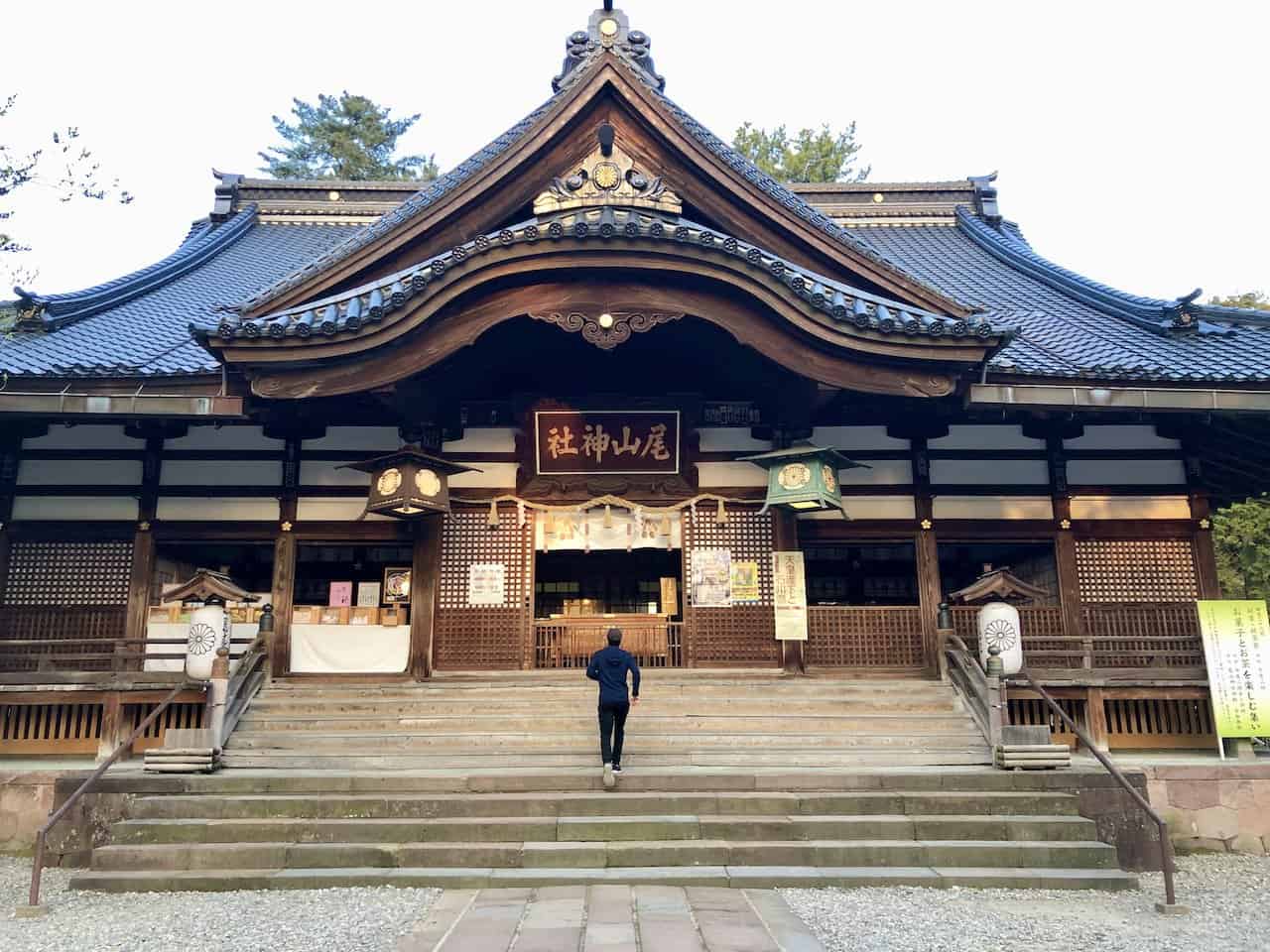
How to Get Around Japan
Before getting into the itinerary, it is very important to get a better understanding of traveling around Japan. More likely than not, you will be utilizing the vast and efficient public transportation network around the country.
Below you can find more information about traveling between cities, within cities, and everything in between.
The first important aspect to talk about is the JR Pass (Japan Rail Pass). The JR Pass is essentially a one time purchase, which can then be used for a variety of transport throughout Japan.
By purchasing this single pass, you can end up saving a lot of money vs. purchasing individual tickets for each leg of your journey.
→ Japan is well connected by high speed bullet trains and you will be using them (and other trains) during your time in the country. For this trip in particular, it is most useful to purchase a 7 Day JR Pass before heading out to Japan . There are 14 day and 21 day JR Passes available as well.
→ A JR Pass gives you unlimited travel travel on JR specific trains, subways and busses in Japan . The JR Pass can be used on several of the more expensive routes in the country and it can certainly save you some money along the way.
→ In order to purchase a JR Pass, the best way is to buy it prior to going to Japan. You can order the pass online, and then exchange your voucher for a JR Pass once you arrive in Japan.
→ I also wanted to point out that not all trains are included with the JR Pass (especially when dealing with travel within cities). I will talk about that more in the next section.
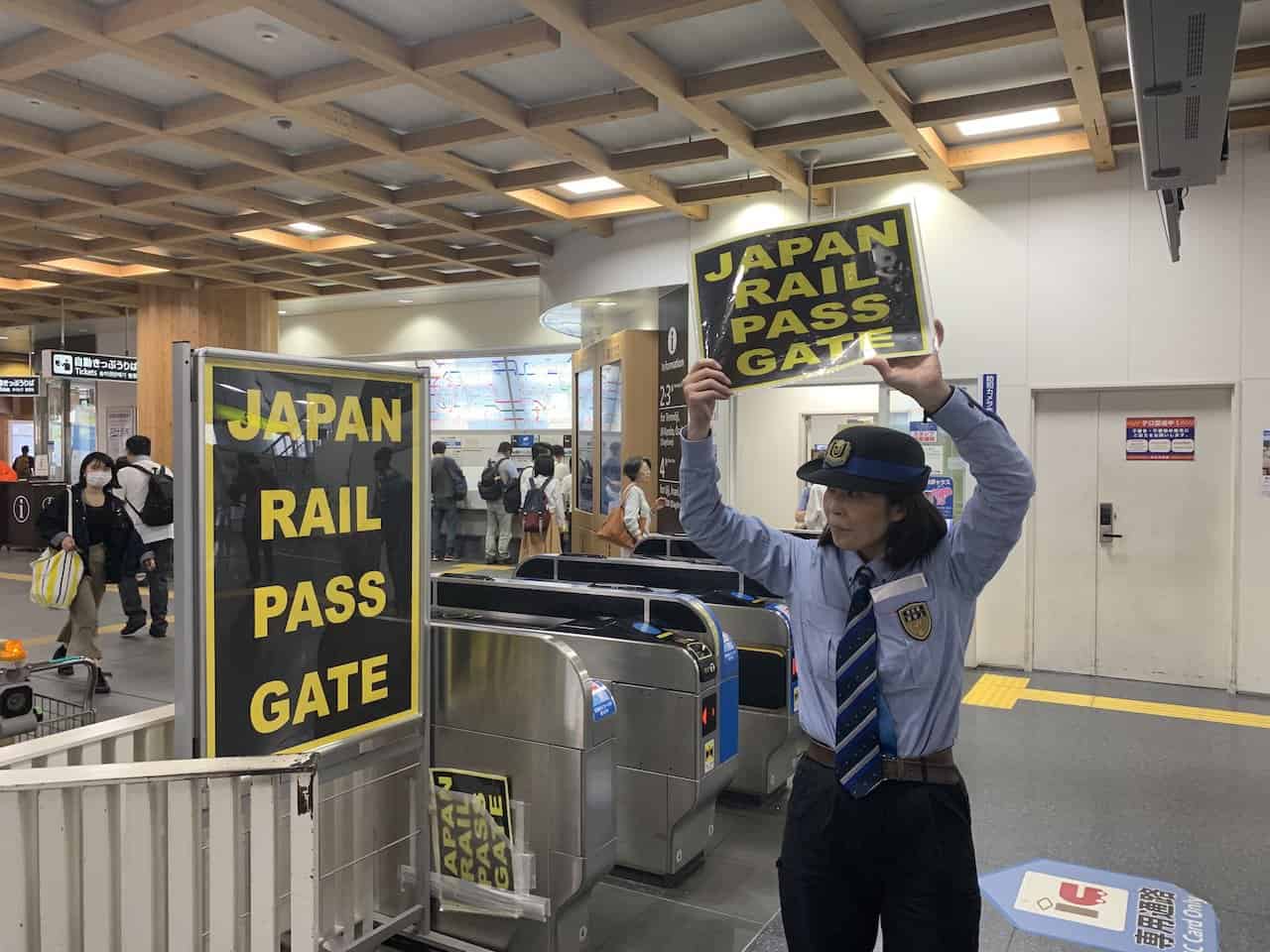
Japan Train Tips & Things to Know
When looking at train schedules for your one week in Japan, head on over to Hyperdia , the Japan train website . This site will give you a whole choice of schedules and options for traveling on Japan’s public transport network.
Below is some helpful info for traveling between cities and traveling within cities:
Searching for Routes Between Cities
On the left hand side of the page you can browse different route options by day and time.
If you decide to get a JR Pass, you will want to uncheck the “NOZOMI / MIZUHO / HAYABUSA (SHINKANSEN)” and “Private Railway” boxes under the “More options” section. These trains ARE NOT covered by the JR Pass.
The trains between cities are going to the more expensive trains as part of your overall journey. So, if purchasing the pass, you will want to ensure you are taking these journeys on JR trains.
If you do not purchase a JR Pass, then feel free to keep these boxes checked.
Searching for Routes Within Cities
When looking at train schedules to travel within cities, it may be difficult to stick to JR specific routes (if you have the JR Pass). This is because many subways & busses within cities are run by private railway companies.
So when looking for intra city routes on Hyperdia, I would advise not to uncheck the “Private Railway” box as that would vastly limit your options (although you could give it a try and see what comes up).
Instead I would just head to Google Maps, input your destination, and go from there. Usually trains and busses within cities cost somewhere around 200 JPY or $2 USD. This would mean that you will need to pay for individual routes within cities based on whatever the most convenient option is.
To make things simple you can purchase an IC Card (these can be in the form of Pasmo, Suica, ICOCA depending on what region you are in).
An IC card is just a reloadable card that can be used on almost all trains, subways, and busses around the country .
So, instead of purchasing individual train tickets each time, just swipe your IC card and be on you way.
To summarize: If you have a JR Pass, you can use that for your longer more expensive routes, and you can also get an IC card for your travel within cities.
» Check out the Japan Helpful Tips Guide that goes into more detail about the JR Pass, how to go about buying it, and plenty more helpful things to know before heading to Japan.
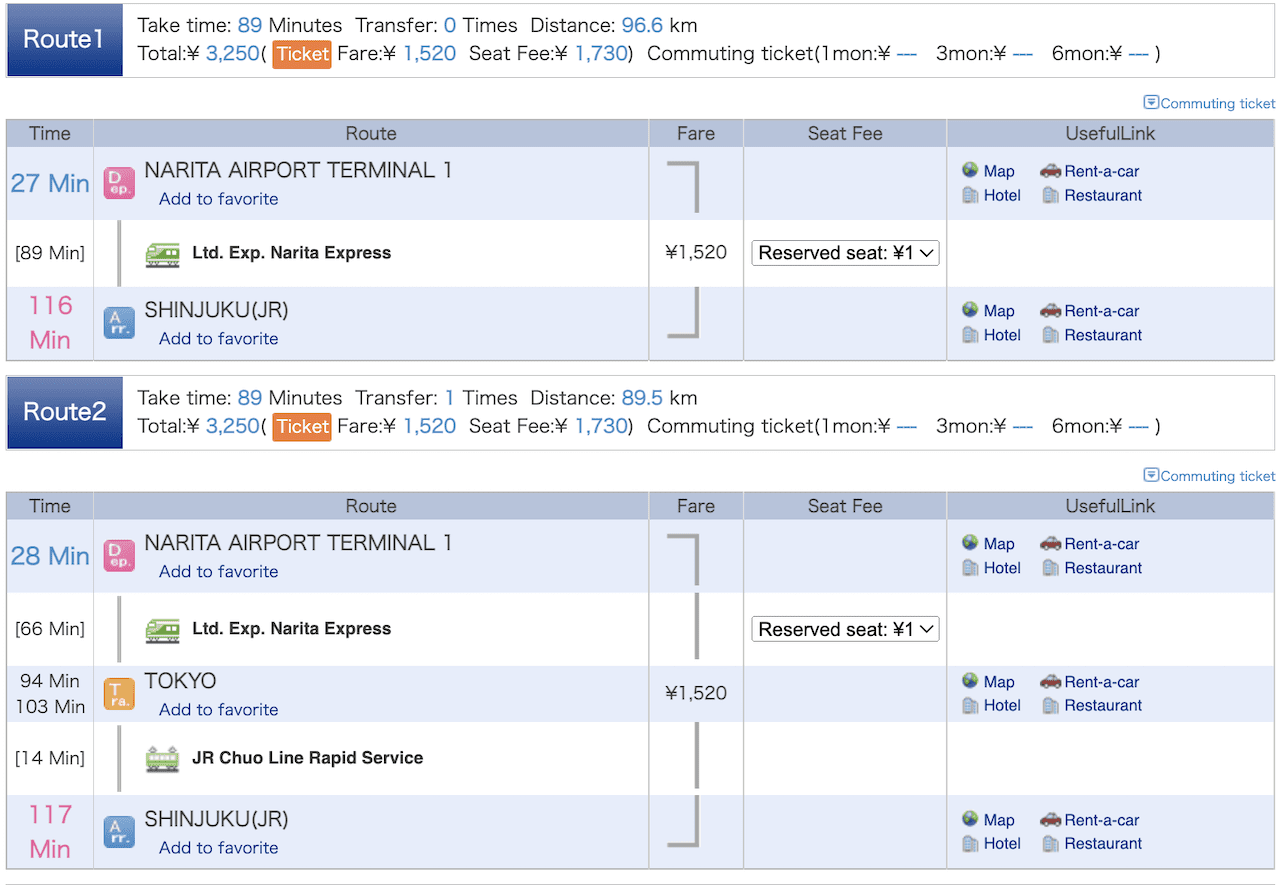
When to Visit Japan
As you are planning your trip to Japan, you will want to decide what time of year to travel. For the most part, the main consideration when traveling to Japan will be the weather.
In general, the top two times of year to travel to Japan in terms of the best weather would be from March to May and from September to November. During these time periods, the temperature is comfortable and the weather is more stable.
In addition to the weather, the Spring time gives you the chance to see the famous cherry blossom trees while the Autumn offers vibrant foliage colors.
If you want to travel during the summer period between June and August, you should be prepared for some more hot & humid weather. You will also find that from May to July (give or take), the rain is more frequent around the country.
Lastly, a winter trip is also possible from December to February. However, you will be dealing with some colder conditions and potential snow. If looking for some of the best skiing in the world though, northern Japan has some options for you.
When I went on my around the world trip , I also took into consideration the local holidays – one of which is Golden Week. This happens end of April to beginning of May.
During this time you will find much of the country is traveling, making it more expensive & more difficult altogether. You may want to consider avoiding this time period for your own trip.
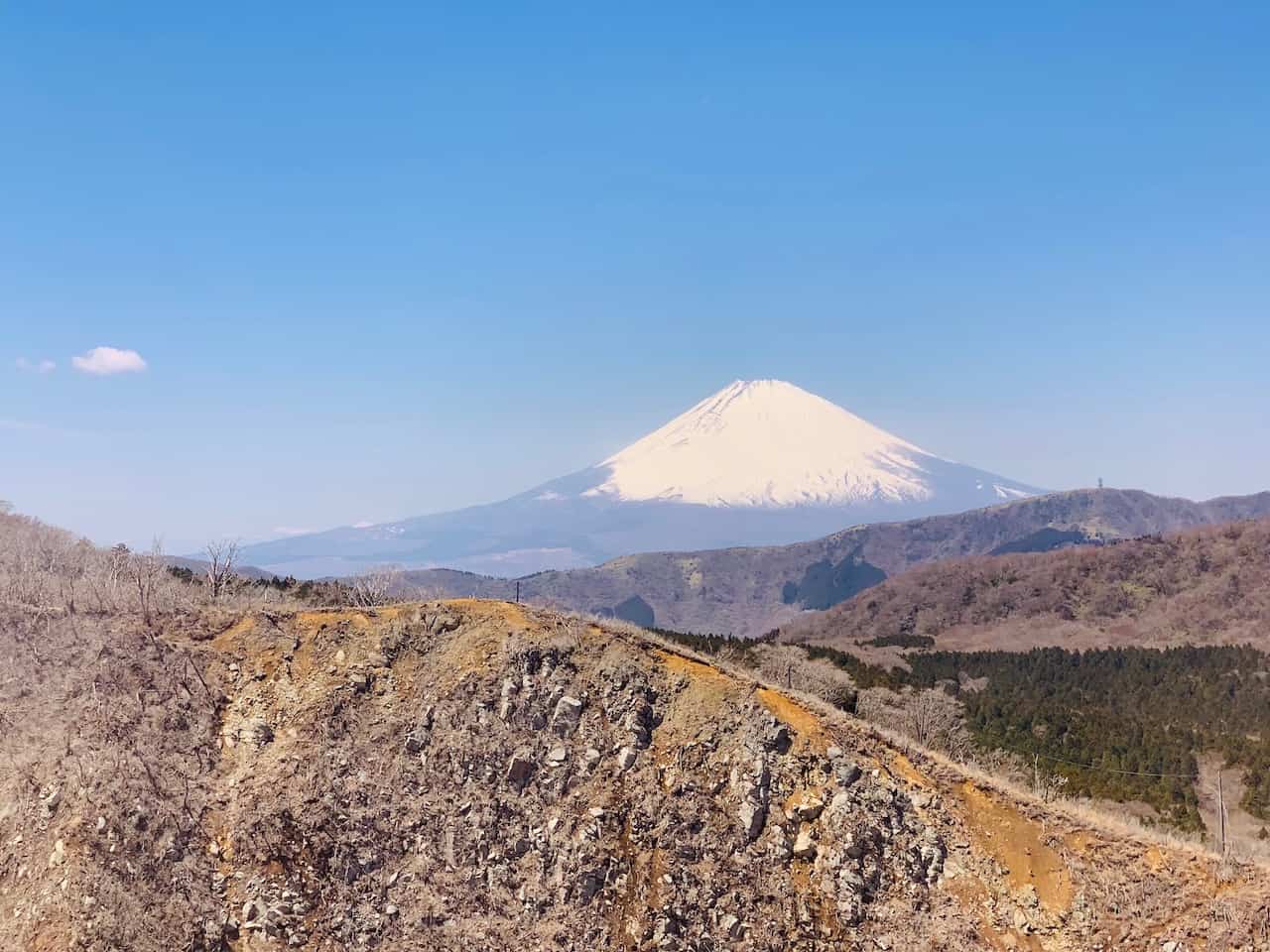
Japan Etiquette & Other Tips
When visiting Japan for 7 days, you may be have a bit of a culture shock. There are certainly some normal habits in parts of the world that would be considered rude in Japan. Here are a few etiquette tips to consider as you are making your way around the country.
Etiquette Tips
→ Whether it is a teahouse, restaurant, or temple, many places request you take off your shoes prior to entering . Be sure to pay attention for this as you don’t want to head in with your shoes on if you aren’t allowed to.
→ You should not smoke out in the streets. Instead, you will come across designated smoking areas throughout sidewalks in cities.
→ When eating at restaurants, you do not have to tip . The price you see on the bill is the price that you pay. If you do try to tip, don’t be surprised if the tip is refused.
→ When taking local trains, do not eat or drink during a ride . Although you may come across vending machines in stations all throughout the country, it is customary to not actually drink or eat on the train itself. If taking longer inter city routes, then you should not need to worry about this.
→ While credit cards are accepted in the country, you will come across many restaurants and shops that only accept cash . Be sure to always have yen on you so you are not stuck in a tricky situation.
→ English is not that well spoken or understood by the locals . While there are signs in train stations and throughout the country in English, many locals will have limited to no English. Having Google Translate handy will always be helpful.
→ If visiting temples and other attractions, be sure to understand opening hours before you go . Each temple, market, and attraction will have different hours and can be closed on certain days of the week. Read up on the latest before you head out for your trip.
→ Within Japan’s train stations you will find luggage lockers . For a few dollars, you can put your luggage in a locker and then spend time exploring a city. This is very convenient if traveling between cities and visiting somewhere in between.
→ Japan also has the option to send your luggage ahead right to your next hotel . This service is called Takuhaibin and costs around $20 per piece of luggage. Overall, it is just a very convenient way to go about traveling in Japan.
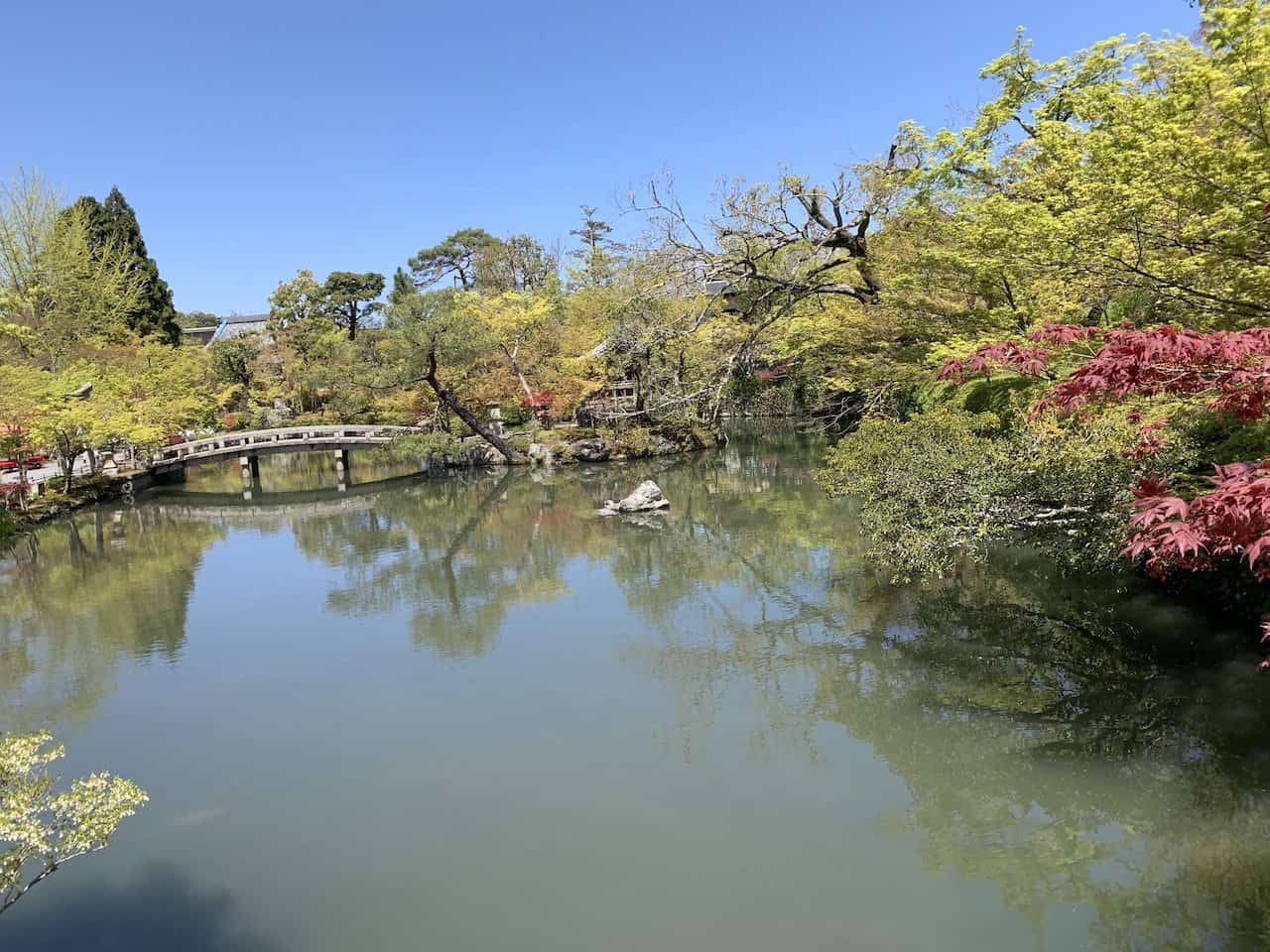
Japan Travel Insurance
Considering travel insurance for your trip to Japan? World Nomads offers coverage for more than 150 adventure activities as well as emergency medical, lost luggage, trip cancellation and more. For years, World Nomads has been protecting, connecting & inspiring independent travelers, offering travel insurance & safety advice to help you travel confidently. Their mission is to support and encourage travelers to explore their boundaries . World Nomads has simple and flexible travel insurance that has been designed by travelers for travelers. Even if you leave home without travel insurance or your policy runs out, you can buy or extend out on the road. Get a quote for a World Nomads travel insurance policy today!
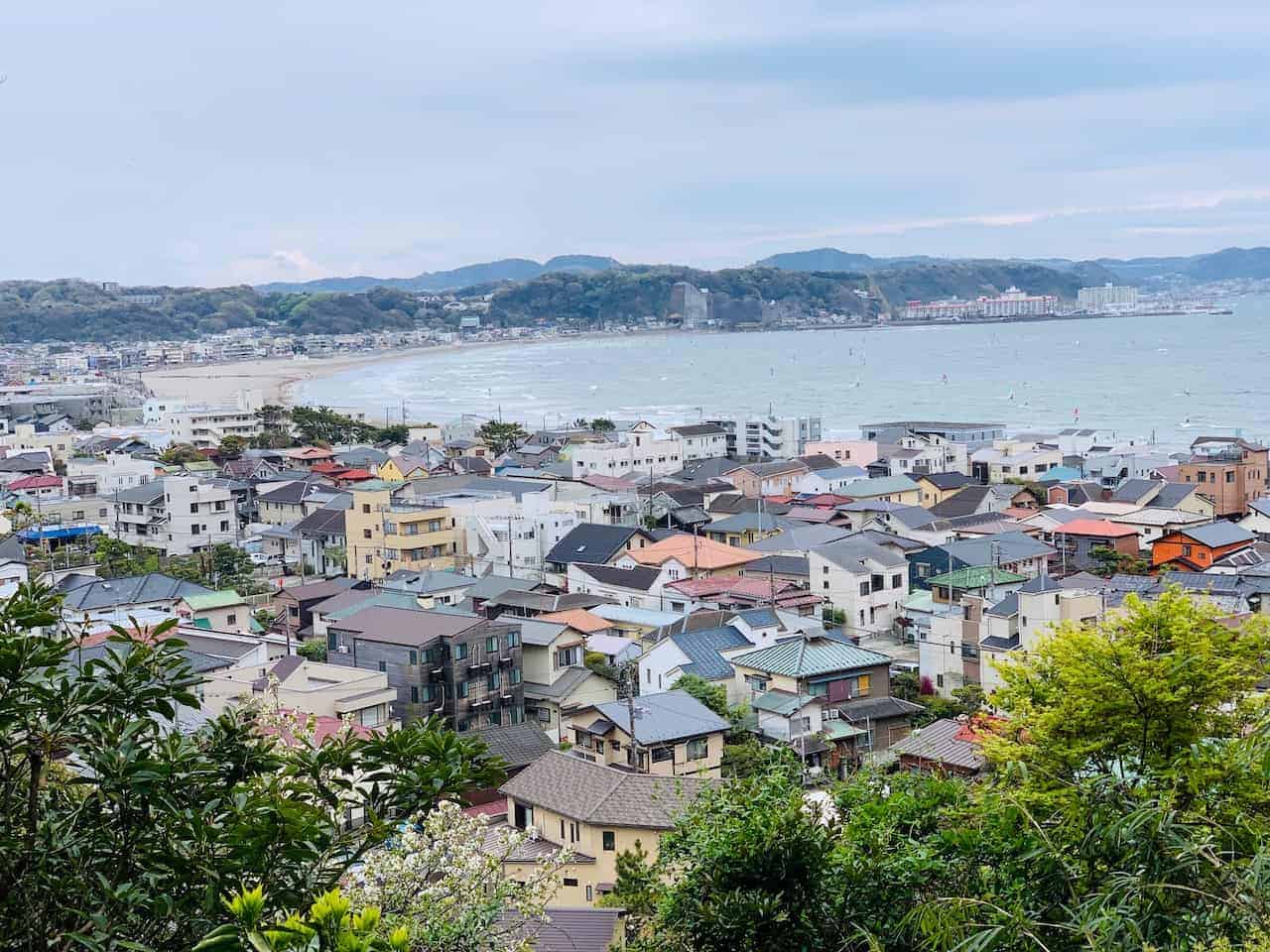
Japan Itinerary 7 Days
Throughout the site you will find many city guides to different places in Japan . These include Tokyo, Kamakura, Hakone, Takayama, Shirakawa-go, Kanazawa, Kyoto, Nara, Hiroshima, and Miyajima.
In the two week itinerary I have up, you would have time to go to them all. But since you will only have half the time, you will need to pick and choose what itinerary works best for you.
The rest of this guide will be broken up into three main sections of cities:
1) Tokyo & Kyoto : my advice for a first timer going to Japan, is to definitely keep Tokyo and Kyoto on your itinerary for a couple days each .
From there you can build your trip around those two cities as there are several day trips to choose from below. Of course you can decide to skip one of them and just build your trip around the other.
2) Day Trips : I have included several options to choose from both Tokyo and Kyoto.
These includes Hakone, Kamakura, Nara, Hiroshima and Miyajima . Based on preferences you can decide which ones you are most interested in adding to your trip.
3) Takayama, Shirakawa-go, & Kanazawa : Lastly I have added in three additional cities that you can visit between Tokyo and Kyoto.
All three cities are located within 2 hours of each other by bus, and can all easily be added into a one week itinerary. If you decide to do so, you most likely would have to leave some day trips.
At the end of talking through all these various cities (and attractions within the cities), you will come across some potential one week Japan itinerary options to choose from.
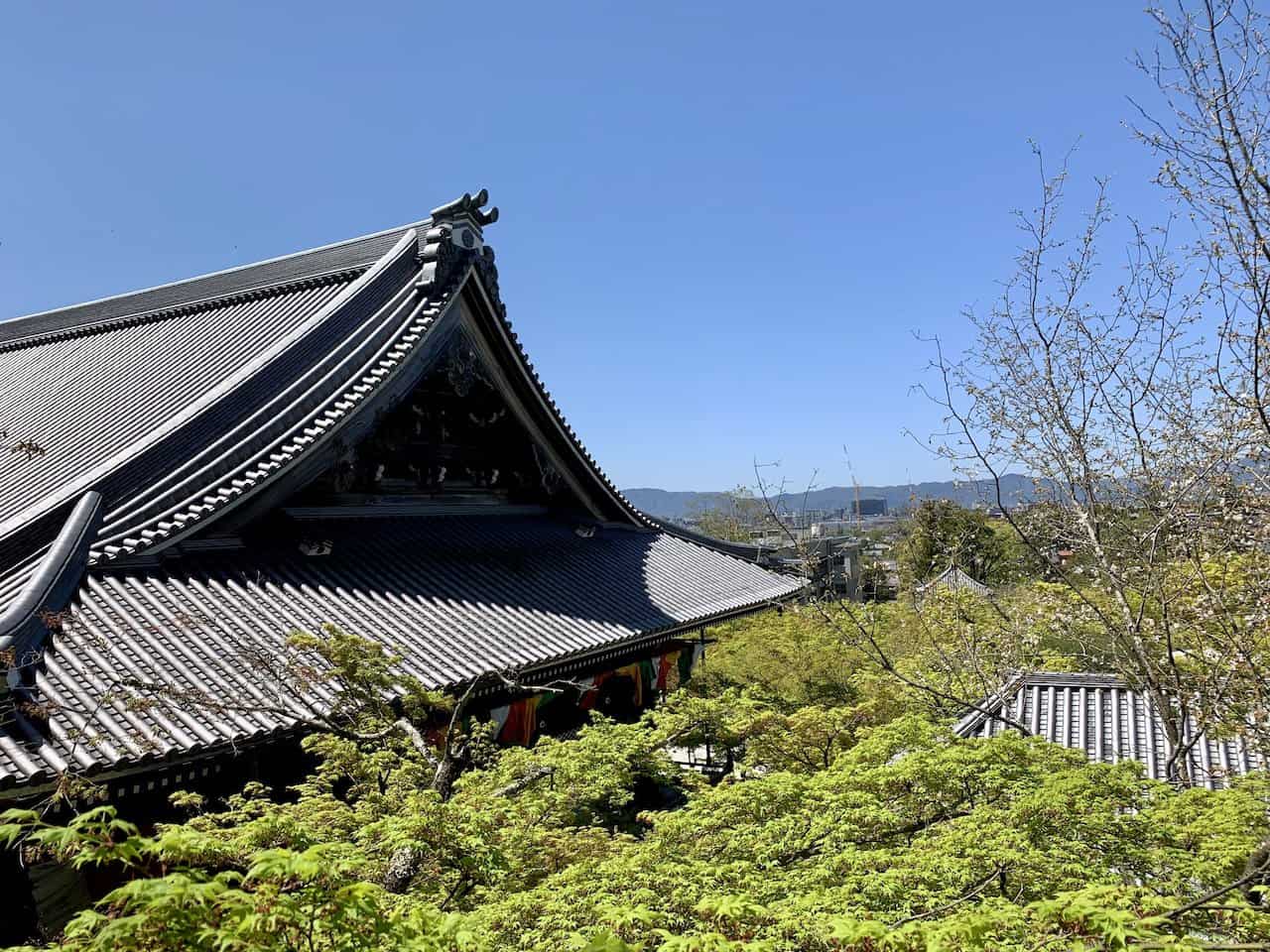
The biggest and most happening city in Japan is the capital city of Tokyo. For a one week itinerary I would recommend spending two full days exploring the ins and outs of what the city has to offer.
There are many different neighborhoods to make your way through and many different activities and attractions to take part of all throughout Tokyo.
» In the Tokyo overview I have up on the site, I list out what can be done with 3 days in the city itself.
Since I am recommending 2 days though for this itinerary, I have listed out below what you can do on each of those days:
Tokyo Day 1
Your first day in Tokyo will focus in on the Shinjuku and Shibuya neighborhoods. If you are staying here, you should easily be able to walk around without needing to take any sort of public transportation.
You can do this day in either direction – the below is going from south to north (Shibuya to Shinjuku) but you can do it in the opposite direction as well.
A) Shibuya Crossing
Start off the day at the famous Shibuya Crossing. A multi laned intersection with cars and people coming in from every which direction, the Shibuya Crossing is one crazy place to experience.
During peak times there are over 2,500 people making their way across the crossing per light! After walking through the intersection yourself, you can make your way to a viewpoint to take it in from above.
One of the best free options is the 2nd floor Starbucks overlooking the crossing. If you want to see it all the way from the top, head to the top floor of Mags Park, where for a small fee you can see the crossing in action from above.
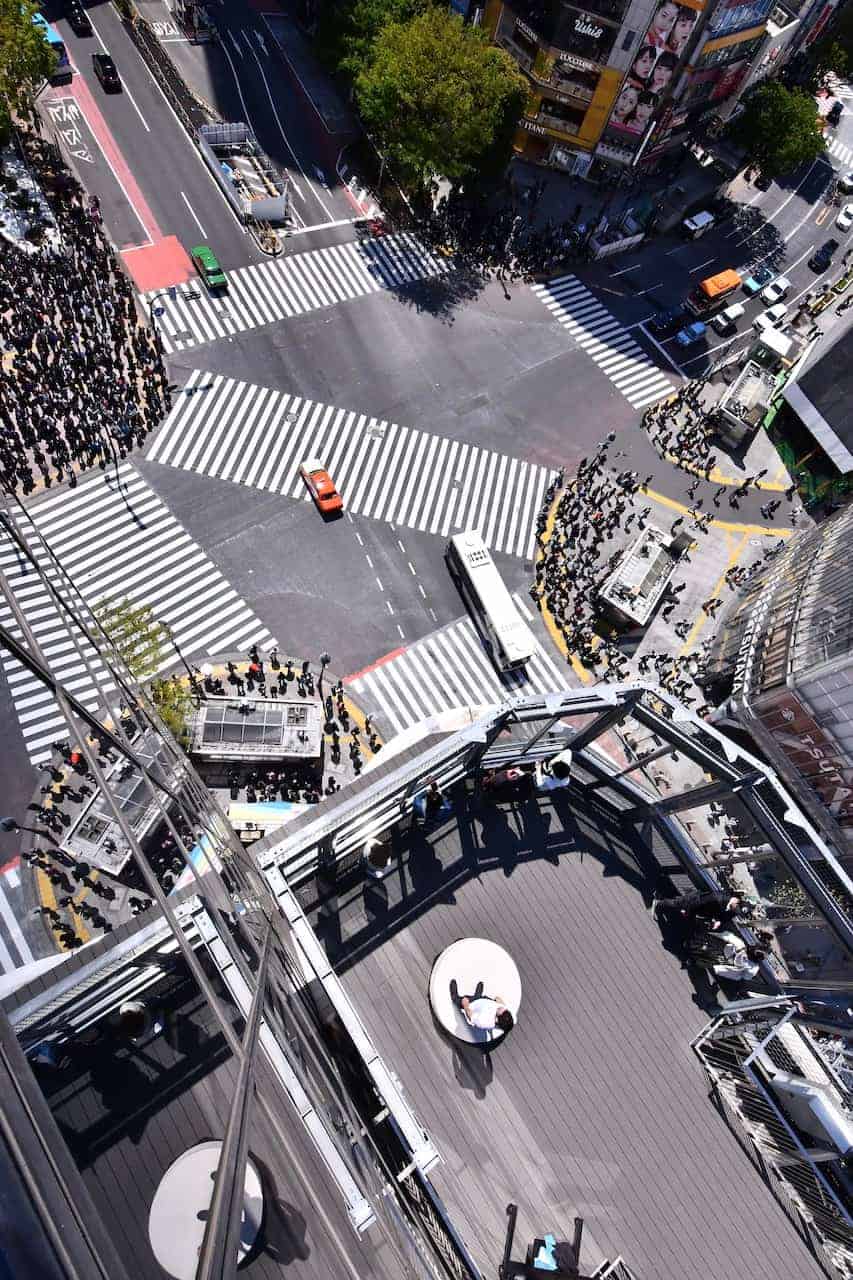
After the Shibuya Crossing, it is time to explore the neighborhood of Shibuya itself. With many shops and restaurants filling its streets and alleyways, Shibuya makes for a great place to get lost in and enjoy.
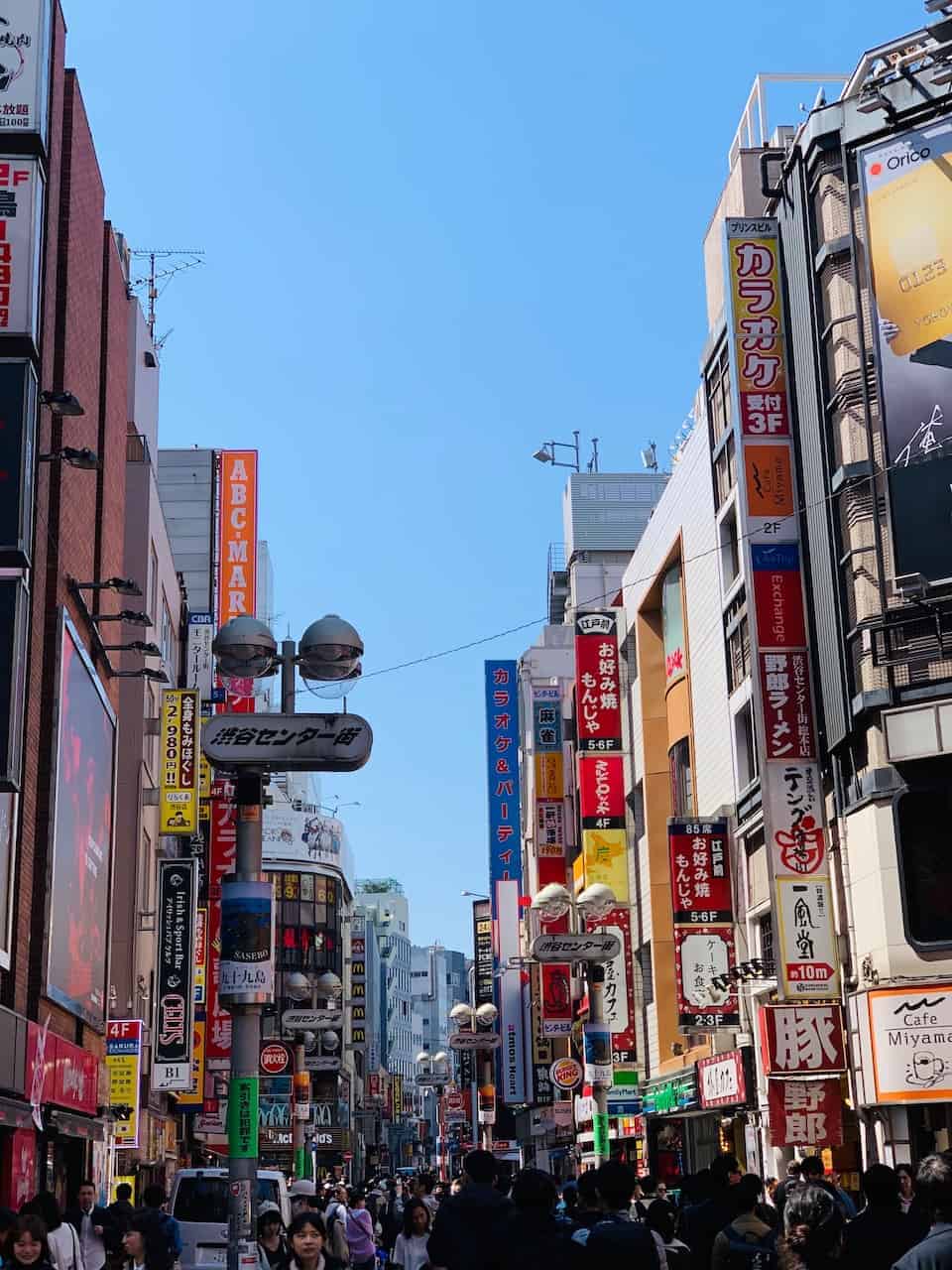
C) Omotesando
After exiting the Shibuya area, you will soon come by Omotesando Street.
While I am not so into the whole shopping scene, there are plenty of higher end stores to visit if interested. What I found great about the street was its unique and distinct architecture from other parts of Tokyo.
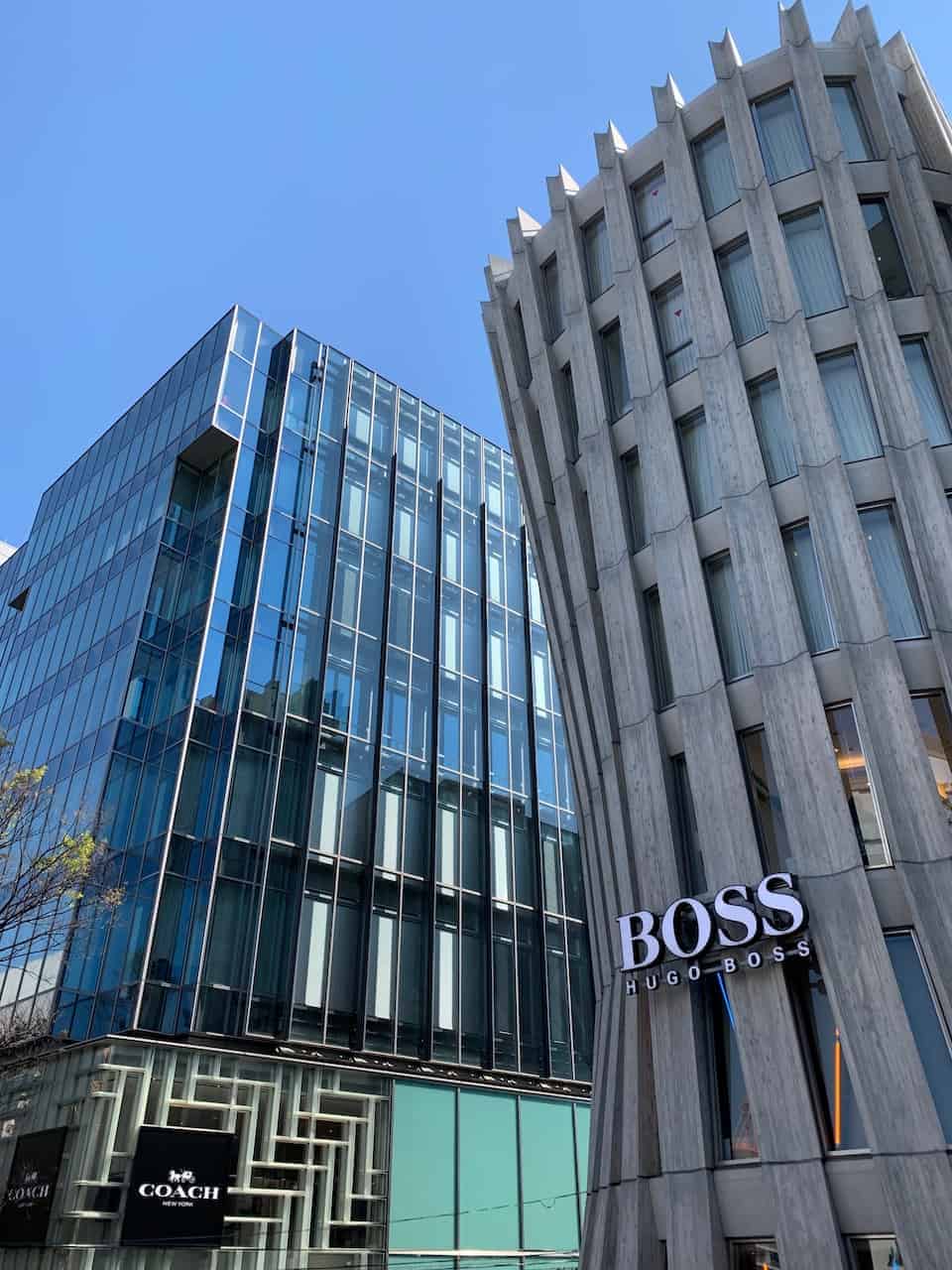
D) Takeshita Dori / Harajuku
Next up on the day is one of the more crazier streets you will ever experience – Takeshita Dori. The street is located in the heart of Harajuku and is packed to the brim with people walking along the narrow pathway.
On either side there will be plenty of different food and snack options to choose from and you can head further around the area to grab some lunch for the day.
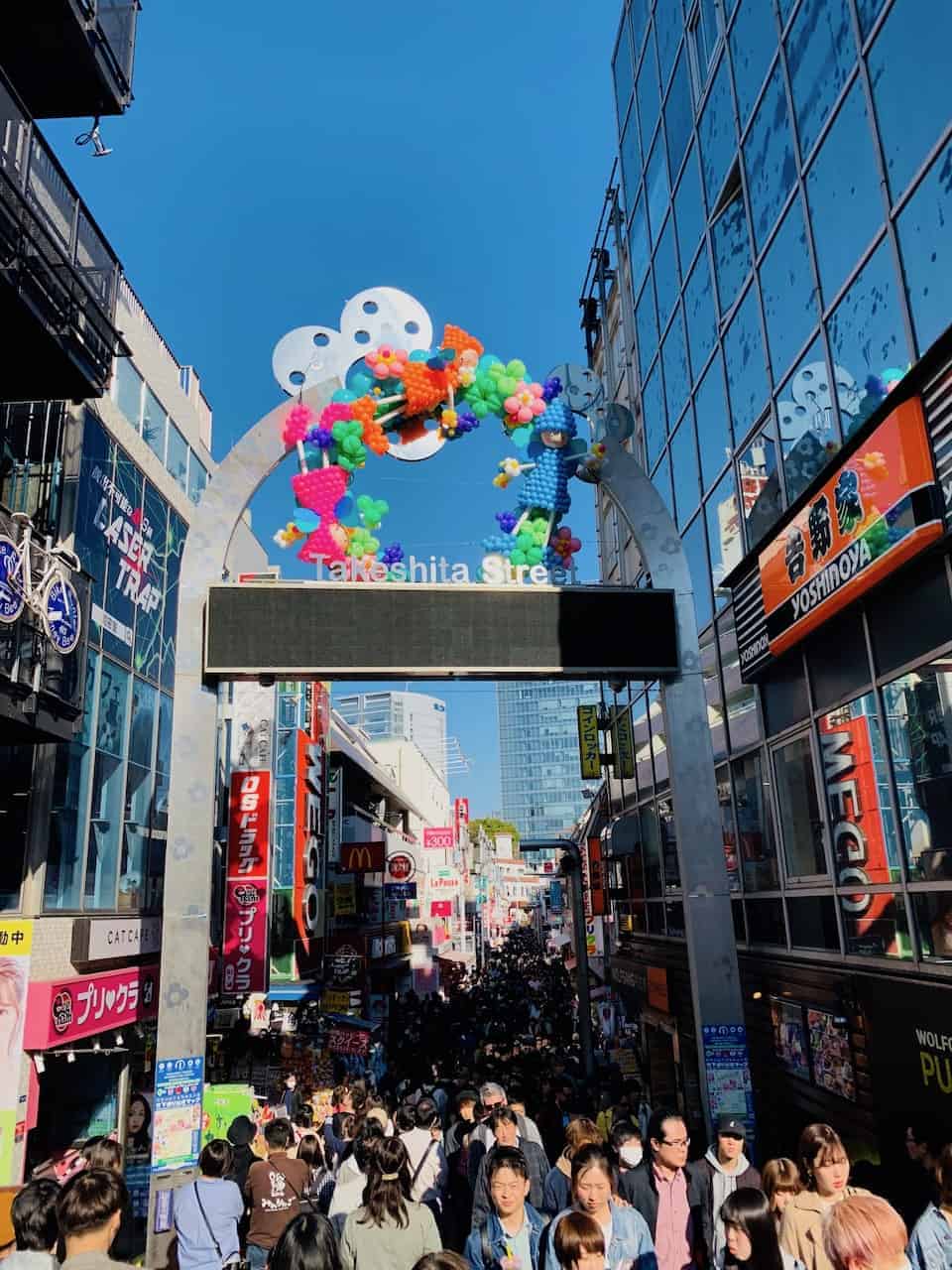
E) Meiji Jingu Shrine
After taking in some of Tokyo’s best neighborhoods, head on off to the Meiji Jingu Shrine located within Yoyogi Park. The path within the park is surrounded by trees as you slowly make your way through to the main temple complex.
As you approach the shrine, you will see the famous sake barrels off to the side that were donated by breweries all over the country.
You will then pass through the massive wooden torii gate and onto the shrine itself. There are places to write down some prayers/wishes and wash your hands before approaching Meiji Jingu.
The shrine itself is open from sunrise to sunset so it gives you plenty of time to visit at any time of day.
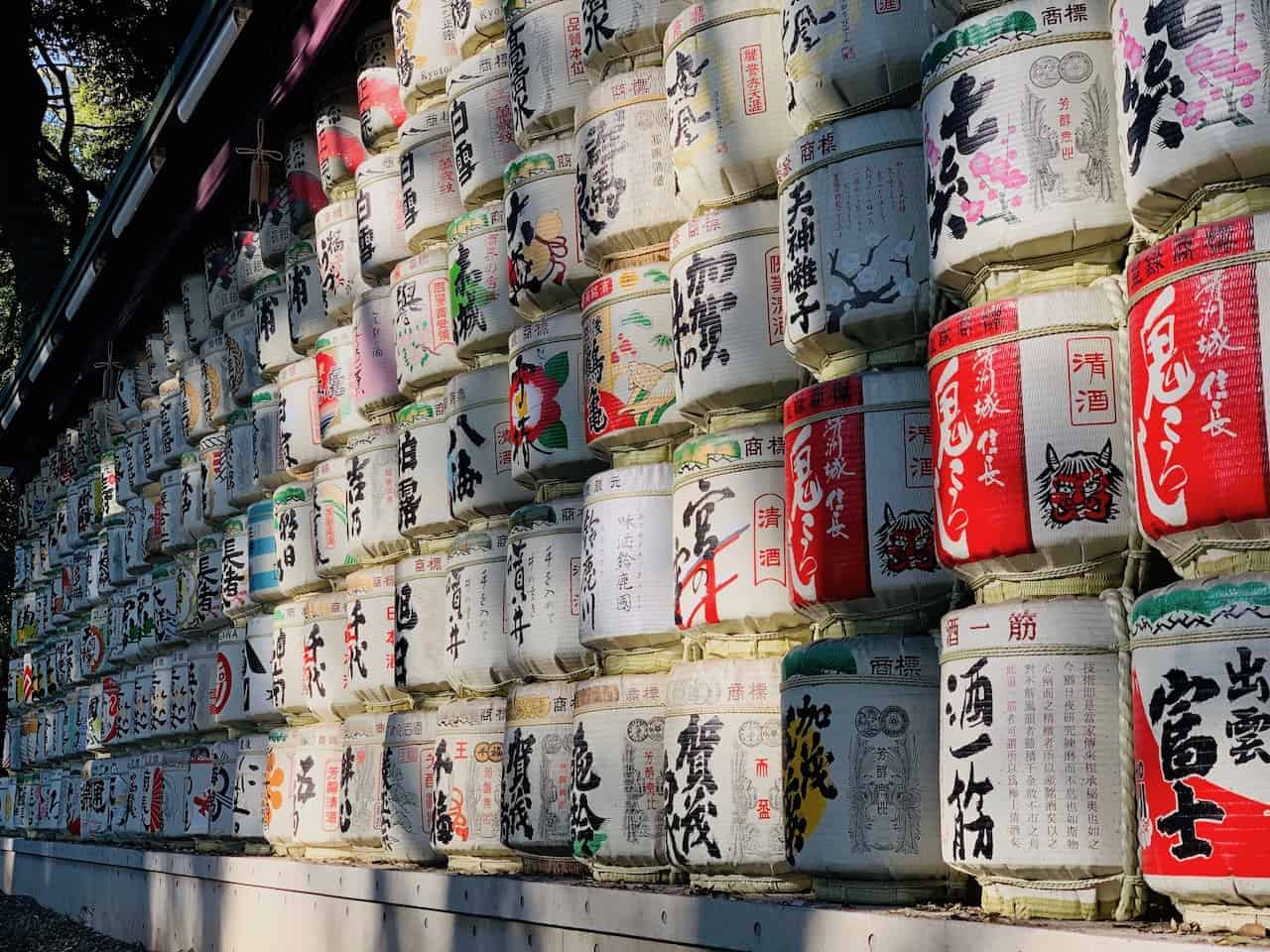
F) Metropolitan Government Building
While a government building seems like an odd add on for an itinerary, it does offer some of the best viewpoints of the city of Tokyo. The best part? It’s free!
The Tokyo Metropolitan Government Building has two different indoor observation decks to enjoy – the North and South.
I headed up to both but would give the slight edge to the South one as the North one did have a restaurant inside blocking some of the views of the city.
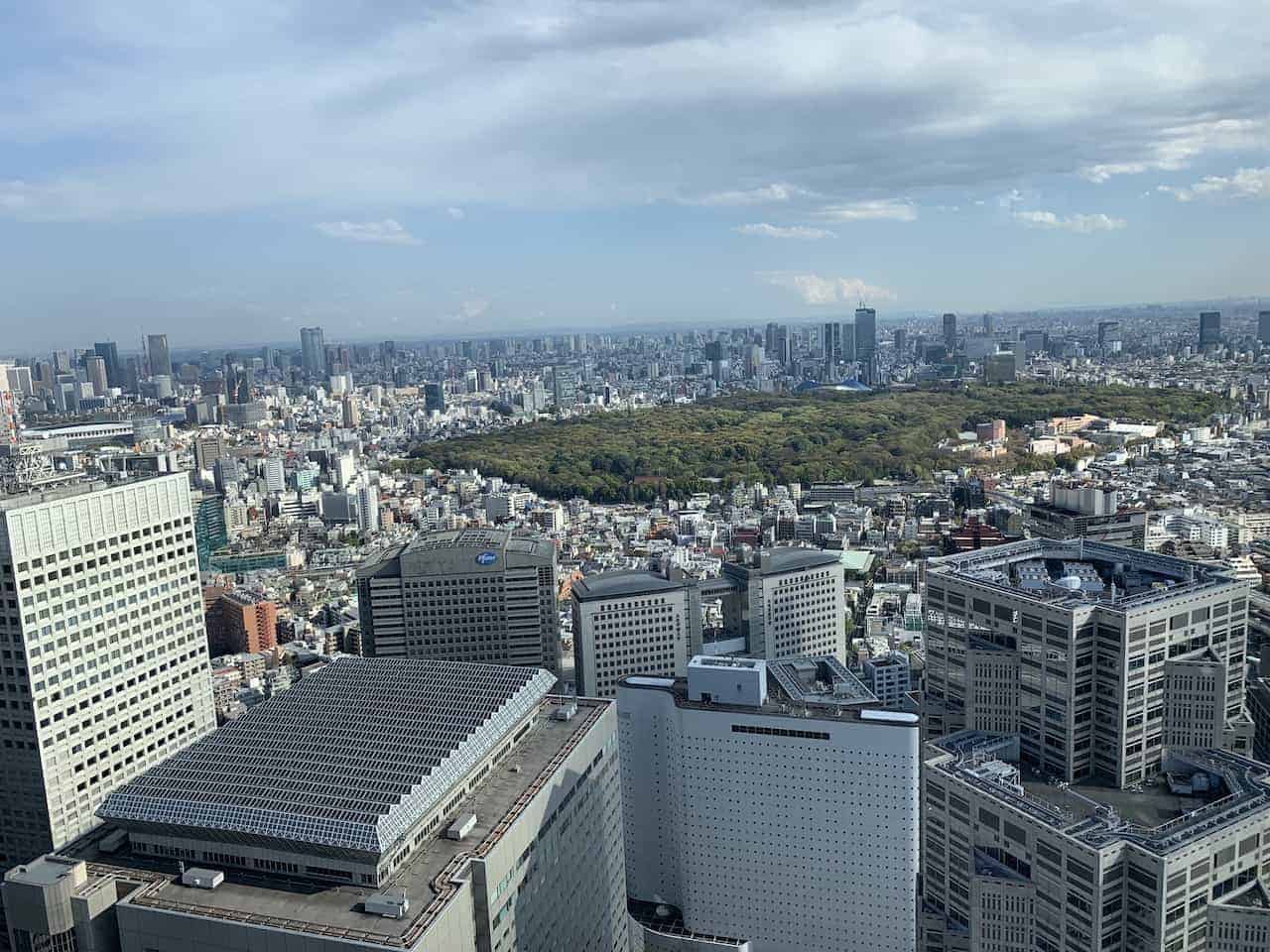
G) Shinjuku
End your day in Shinjuku. Whether you are staying there or not, be sure to spend at least a night or two walking its hectic streets with plenty of bright lights, restaurants, and bars.
Believe me you will find no shortage of any of those are you make your way around Shinjuku.
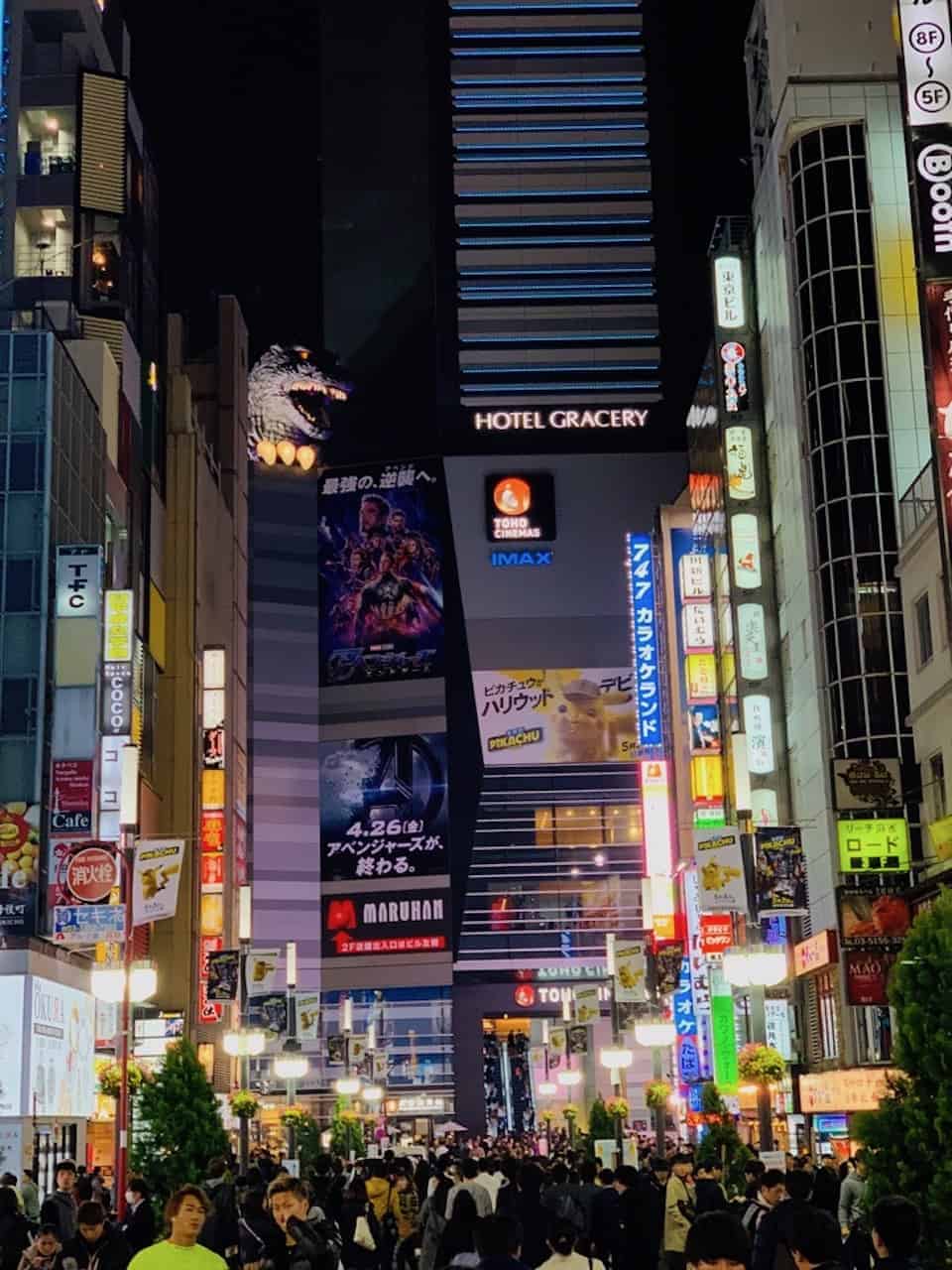
Tokyo Day 2
On your second day in Tokyo, you will get to experience a little bit of everything. Temples, gardens, markets, and more!
A) Imperial Palace and East Gardens
Start you second day in Tokyo by heading on over to the Imperial Palace and East Gardens. An absolutely massive complex located in the heart of the city, you can spend a couple hours here exploring all around.
The outer area is open all the time, where you can view the famous moat and outer structures. You can then head inside the East Gardens, where there are lakes, flowers, fauna and more to enjoy.
Note: if you want to head into the Imperial Palace yourself, you can do so by signing up in advance online through their official website . There did seem to be a first come first serve line as well for a select number of tickets.
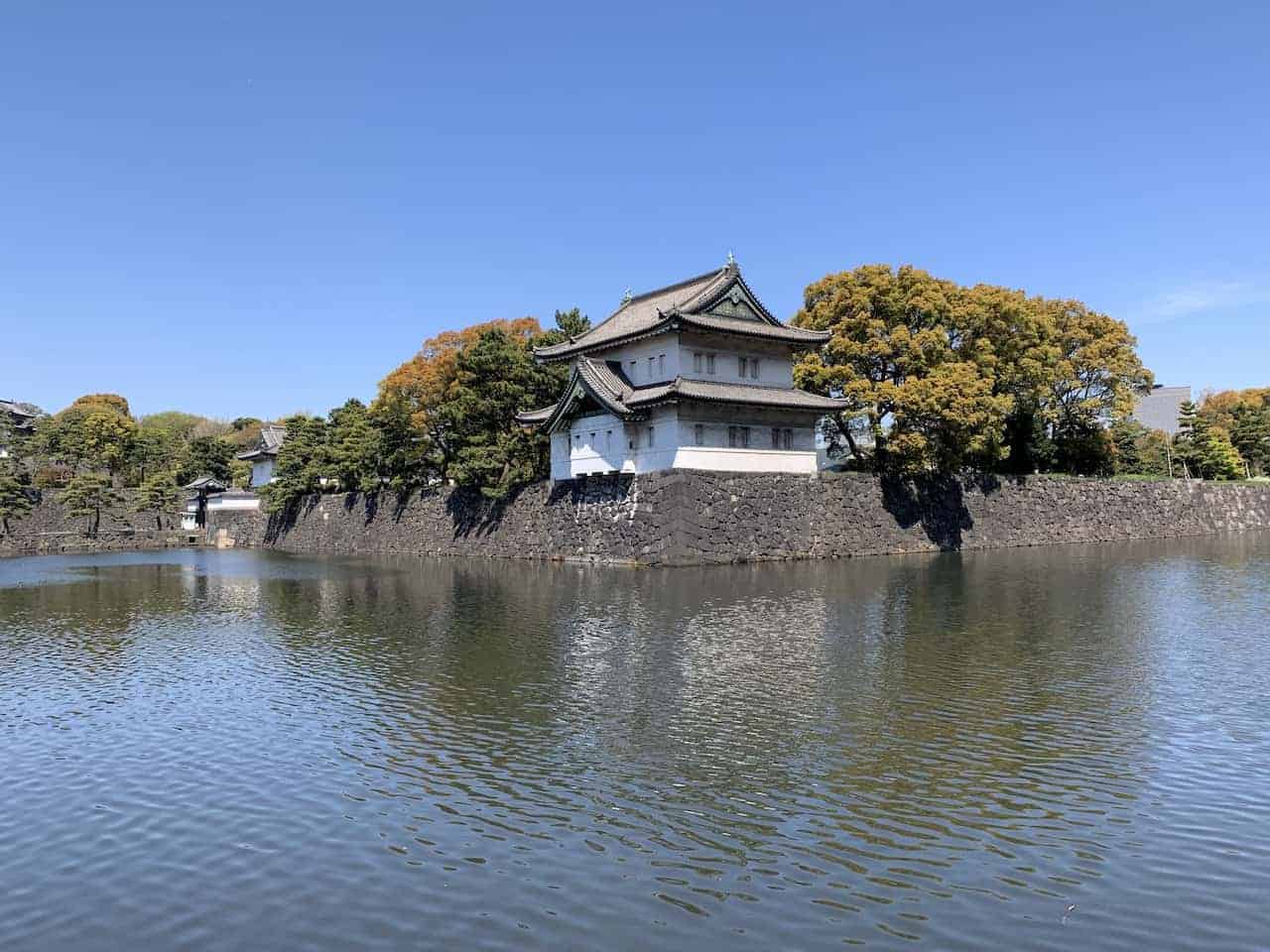
B) Ueno Park
Ueno Park was a late addition to my itinerary but I could not have been happier adding it in. It is much more than just a simple park – there are temples, ponds, gardens, museums, greenery and much more spread throughout the complex.
If you are lucky enough to be there during cherry blossom season, it is one of the best places in the country to view them.
During my time exploring the park I headed to the Shinobazu Pond, Toshogo Shrine, Five Storied Pagoda, Hanazono Inari Shrine, Gojo Shrine, among a few other places along the way.
You will also find such places as the Ueno Zoo, the Tokyo Metropolitan Art Museum, Tokyo National Museum, and National Museum of Nature and Science if you are interested in heading to a couple of those too.
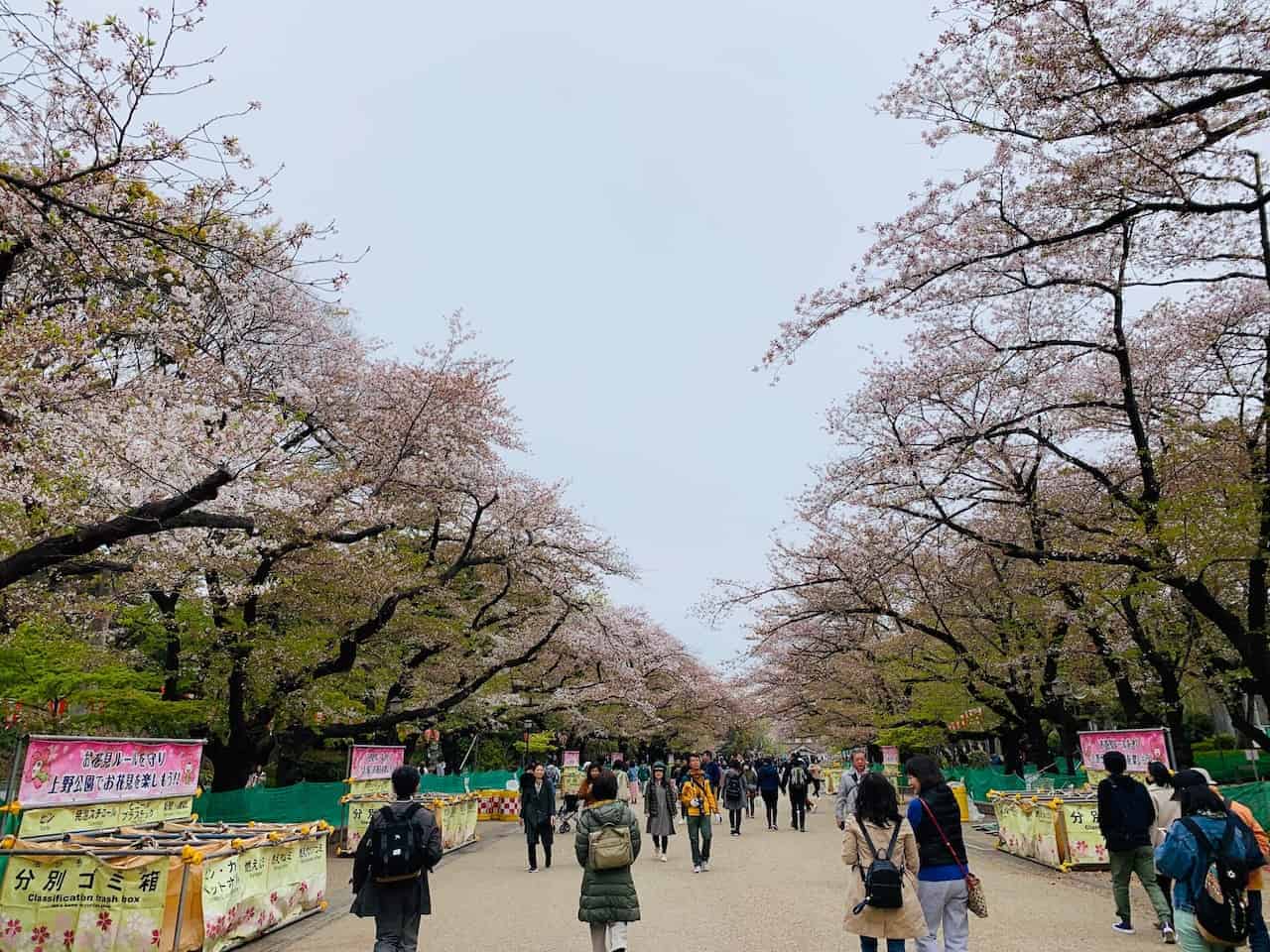
C) Ameyayokocho Street
After enough time exploring the park, make the short walk to Ameyayokocho Street. If you are looking for food stalls, restaurants, and a variety of different shopping options then Ameyayokocho is for you.
It is a classic Japanese street filled to the brim with all sorts of stores and hundreds of people making their way through. If you have not experienced what a Japanese market street is like then you are in for a treat.
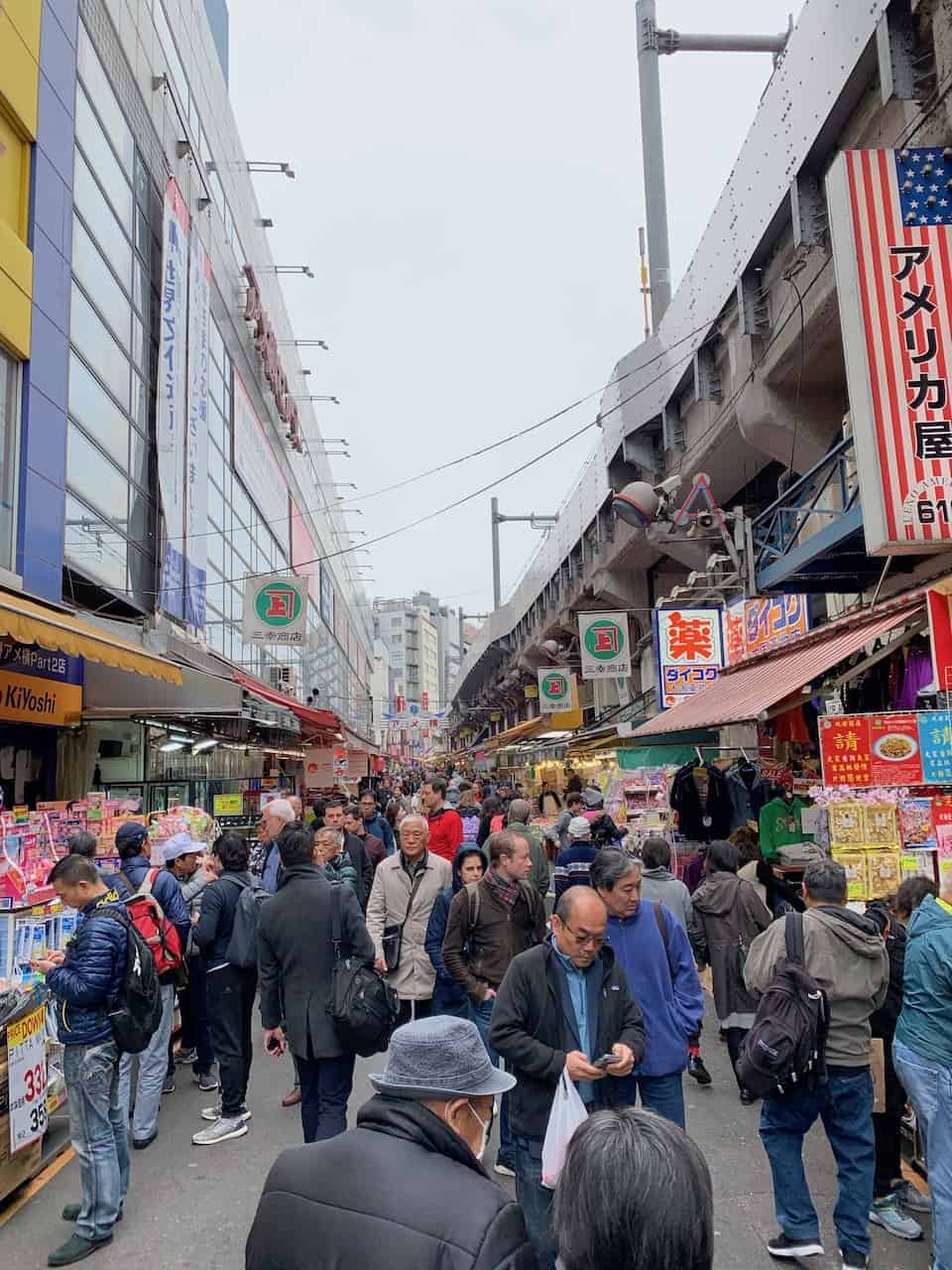
D) Senso-ji Temple
One of Tokyo’s most famous temples is that of Senso-ji. The temple itself is not only impressive but so are the two gates (Kaminarimon and Hozomon) leading up to it with a market lined street (Nakamise) in between.
As you walk this path alongside hundreds (if not thousands) of other people, you will pass by small shops, food stalls, and more to explore. You will then slowly approach the gate and onto the temple and five storied pagoda area, which you can walk around and take in.
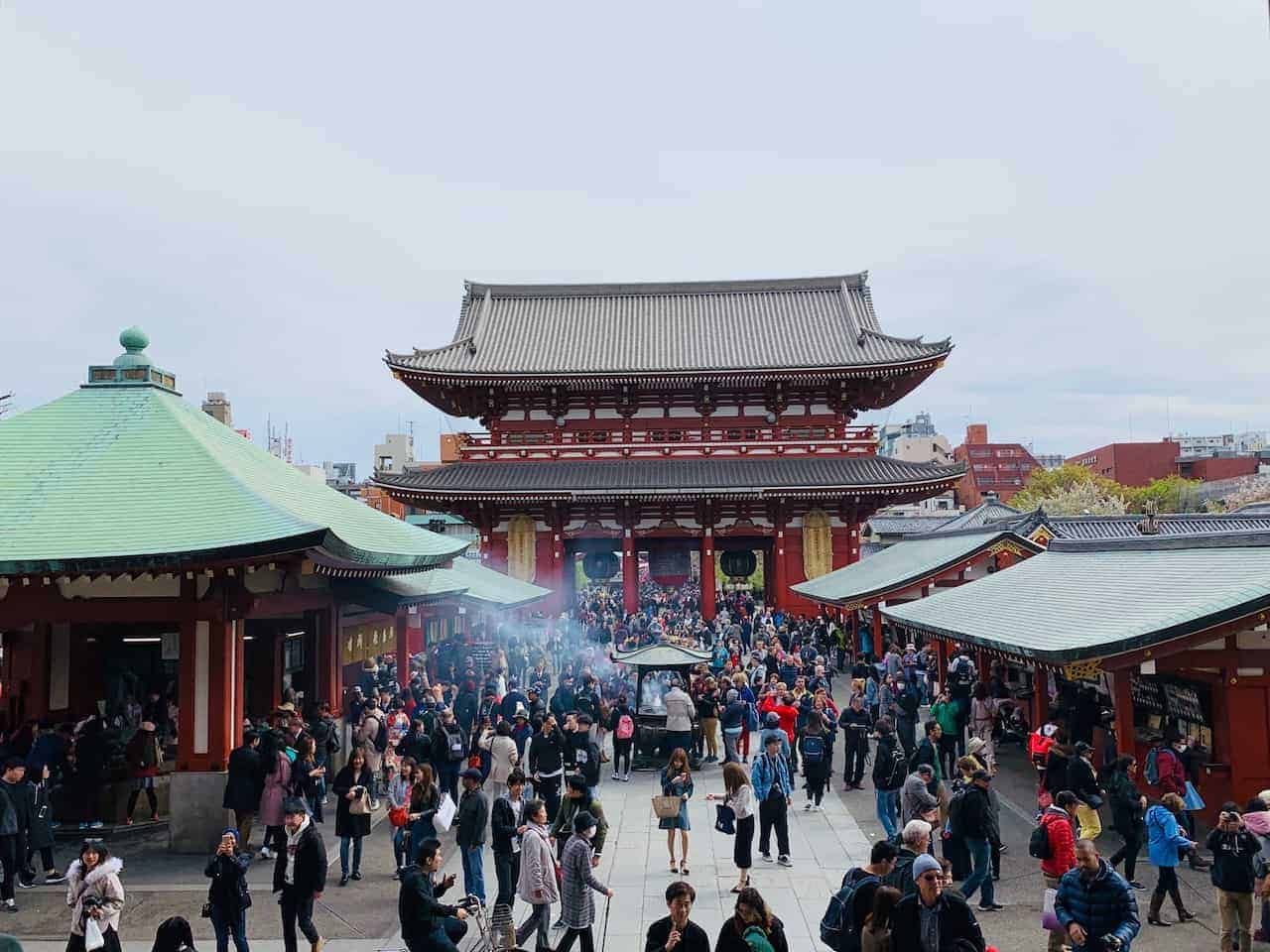
E) Akihabara
Last up on the day is Akihabara, the electronic capital of Tokyo (and possibly the world!). The whole area around Akihabara is crazy to say the least.
You can find electronic stores, arcades, anime stores, maid cafes, pachinko games, among plenty of others.
Walking around the area and heading into these places will have your head spinning! A few popular places to head to are the Mandrake Store, Gachapon Kaikan, and the Sega Arcade. But literally any place you walk into, you are sure to enjoy.
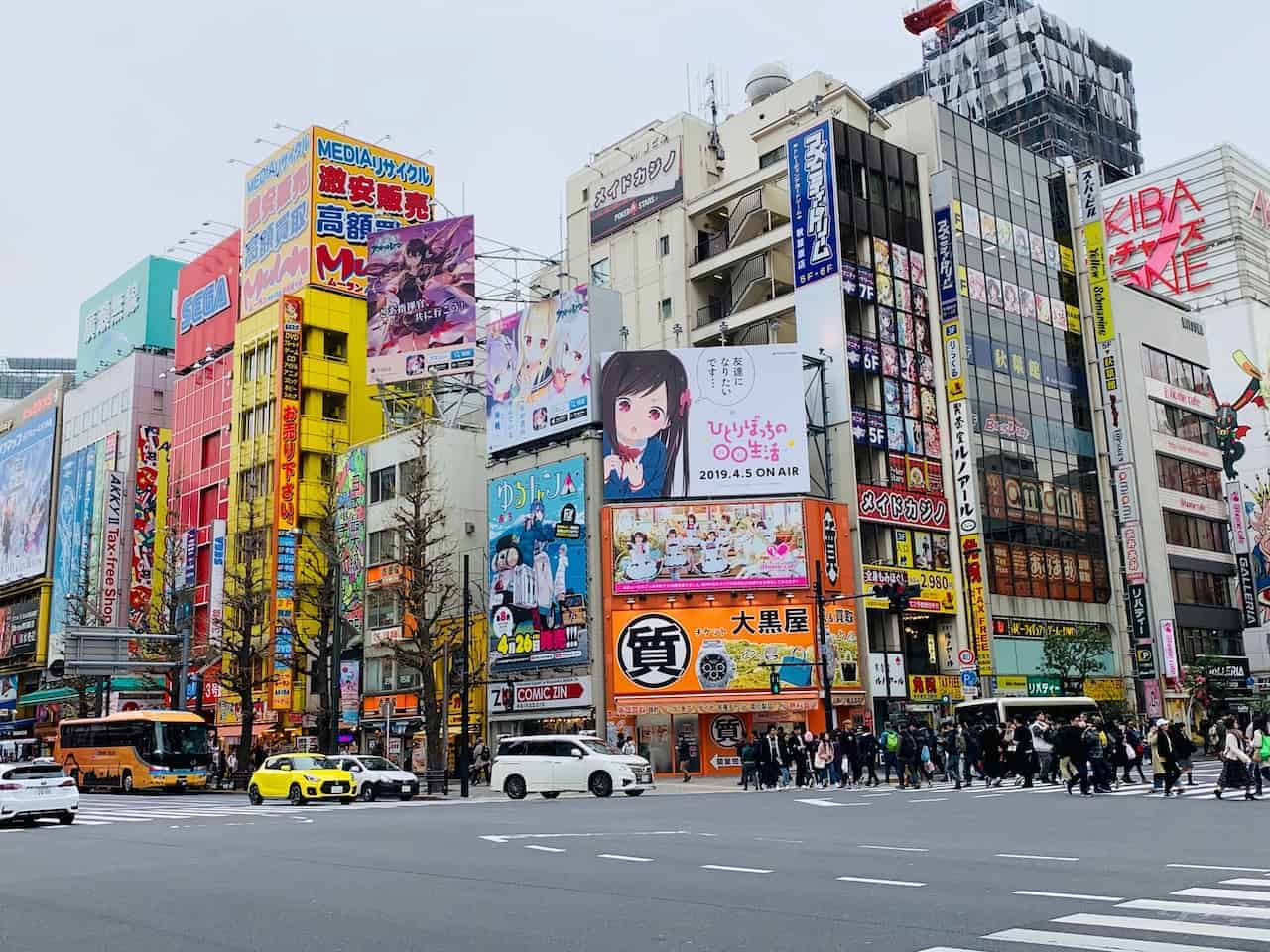
The next “must do” city on many people’s Japan bucket lists is Kyoto. In Kyoto you will feel a much different vibe than you would in Tokyo. N
o more bright lights and craziness, but rather a more laid back Japanese vibe with plenty of temples sprawled throughout the city. If spending a week in Japan, I would also recommend spending two days here exploring Kyoto.
» In the Kyoto overview I have written up, I go over what to do with 3 days. Below is how to mix and match those same activities to fit into two action packed days.
Kyoto Day 1
The first day in Kyoto will be focused in on the eastern end of the city. All you need to do is hop on a bus to Ginkaku-ji Temple and start your day from there.
Between the first stop of Ginkaku-ji to the last stop of Kiyomizu-dera, you will be able to walk along the route stopping at plenty of attractions along the way.
A) Ginkaku-ji Temple
One of the most well known temples in Kyoto is that of Ginkaku-ji, also known as the Silver Pavilion. Built by Ashikaga Yoshimasa in 1482, Ginkaku-ji was actually modeled after his grandfather’s Golden Pavilion – probably the most famous temple in Kyoto (more on that on day 2).
Don’t expect though that the Silver Pavilion will be silver in color! It is thought that Ginkaku-ji was nicknamed the Silver Pavilion to distinct itself from the Golden Pavilion.
As you enter the temple grounds and begin to walk the path, you will be welcomed to a beautiful sand garden, various temple structures, a moss garden, a nice viewpoint from above, and of course Ginkaku-ji itself, reflecting off the forefront lake.
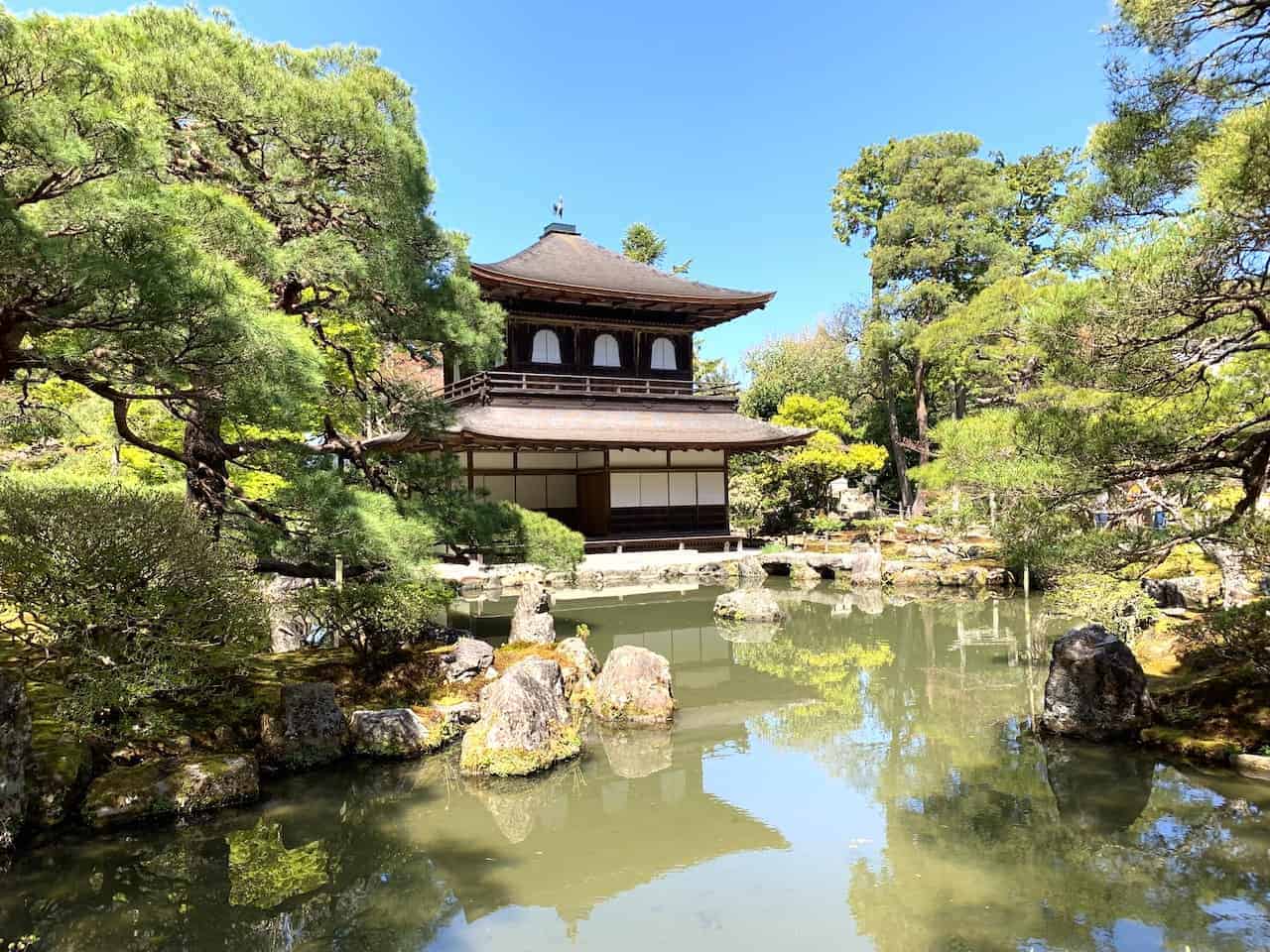
B) Philosophers Path
After finishing up with your first temple of the day, it is time to make your way south on the Philosopher’s Path. This 2 kilometer long path goes along a small canal with plenty of natural beauty along the way.
If you are lucky and happen to be there during cherry blossom season, you will be welcomed to one of the most colorful sites in the city with blossoms lining the path.
Even if you are not there during that time, it is still a great place to stroll through and enjoy as you make your way to your next destination – Nanzen-ji Temple.
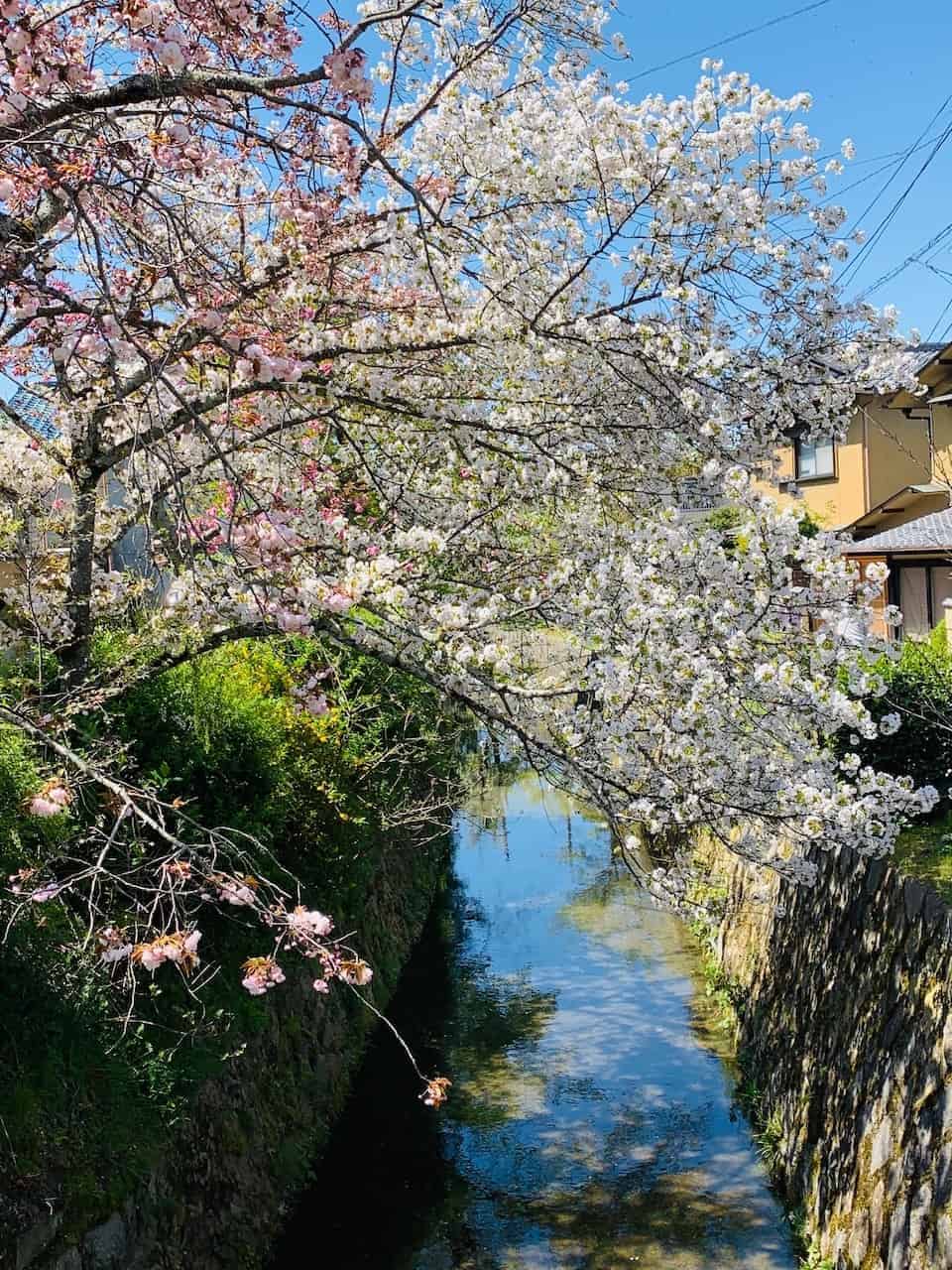
C) Nanzen-ji Temple
Nanzen-ji is more than a simple temple. Its grounds make up a huge area and you can spend plenty of time taking it all in. To enter the grounds is free of charge, however if you would like to actually enter some of the structures/complexes you will need to pay a fee.
The Sanmon gate for example can be viewed from the outside, but if you would like to head up and take in the view from above, you will need to pay an entrance fee.
The same goes for most other parts of the complex. And don’t forget to head to the big stone aqueduct too! It makes for a great picture opportunity and gives you a different perspective of what Kyoto has to offer.
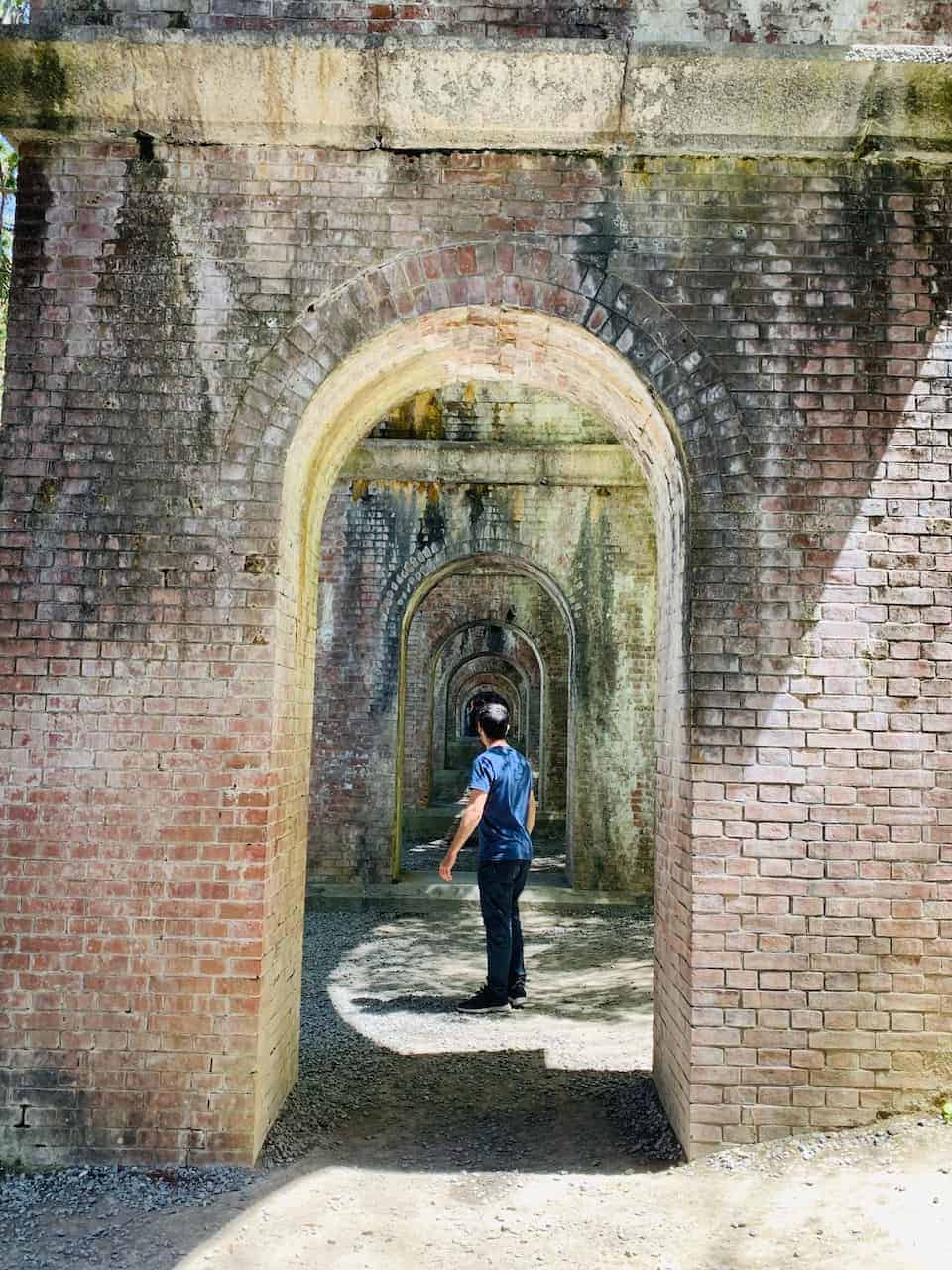
D) Chion-in Temple
After finishing up with Nanzen-ji, continue along to Chion-in Temple. This temple is free of charge and has some incredible architecture to take in and enjoy.
You will find a spread out temple grounds with some ornate buildings and beautiful gardens.
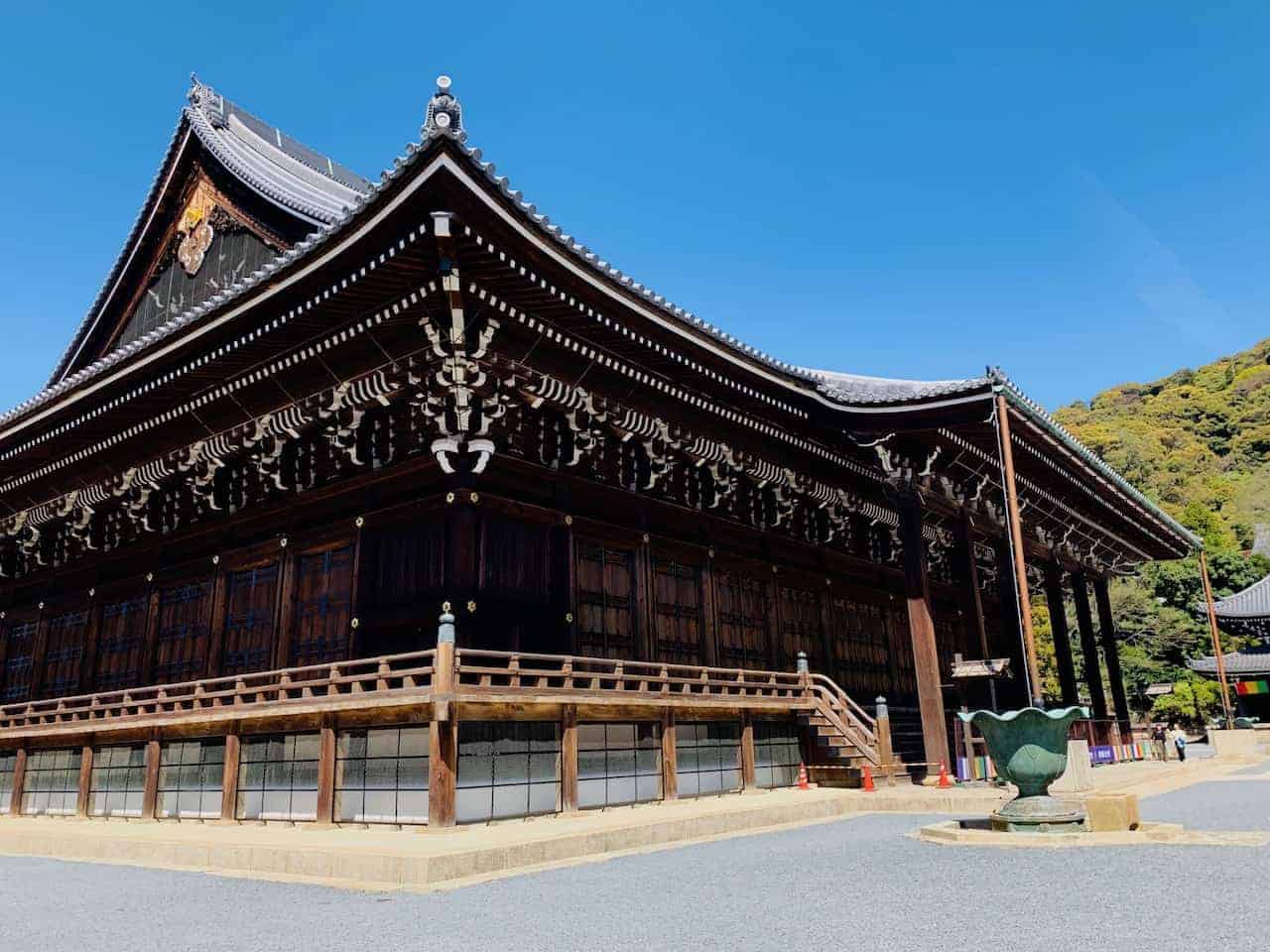
E) Marayuma Koen Park – Yasaka Jinja Shrine
Now that you have explored some temples, continue along to Marayuma Koen Park. Not only will you find a great spot to enjoy some nature here, but you will also find the Yasaka Jinja Shrine.
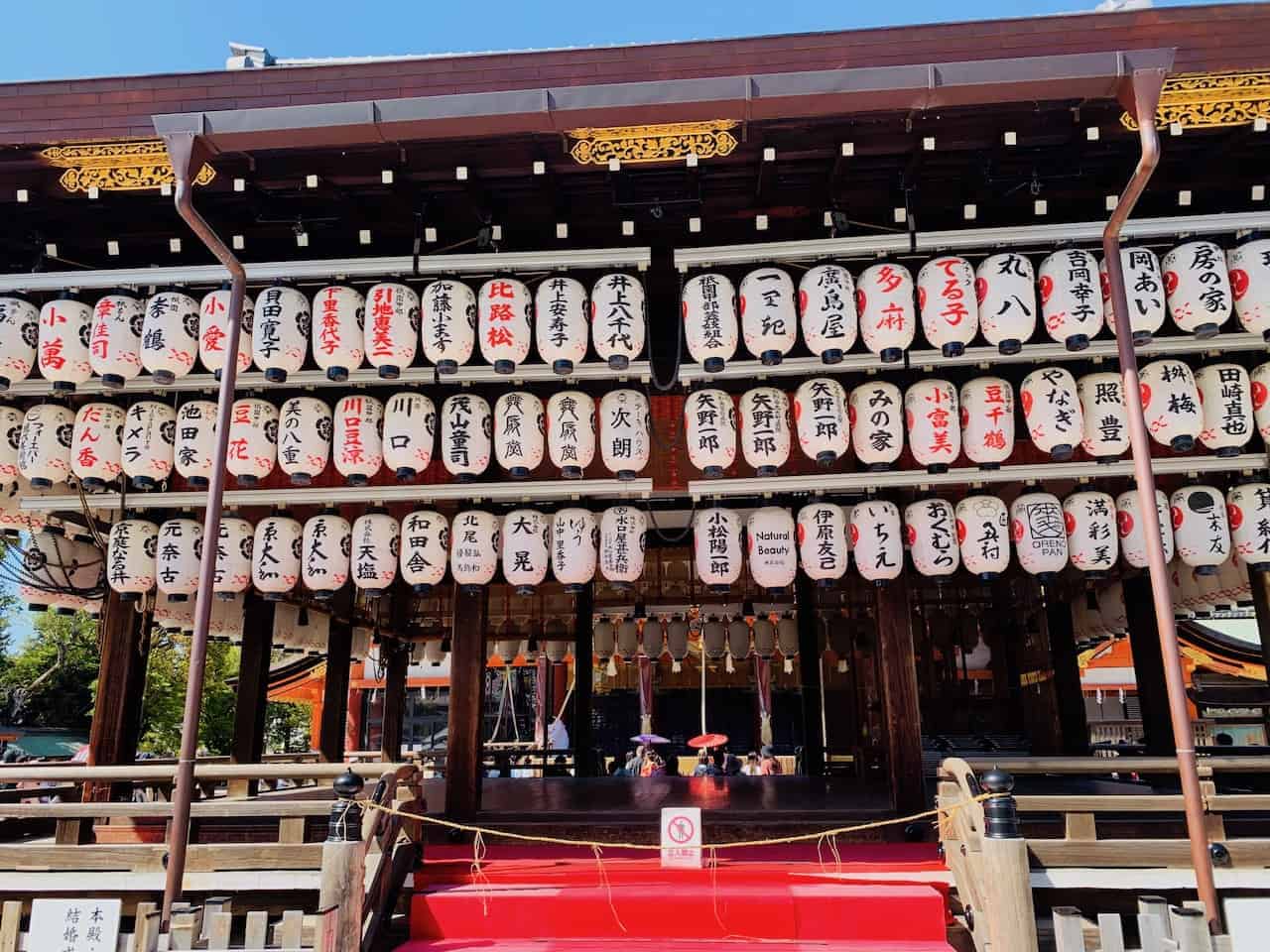
F) Kodai-ji Temple
Another top temple to visit along the route is that of Kodai-ji. You will find a unique and pristine sand garden here alongside ponds, temple structures, and a small bamboo grove.
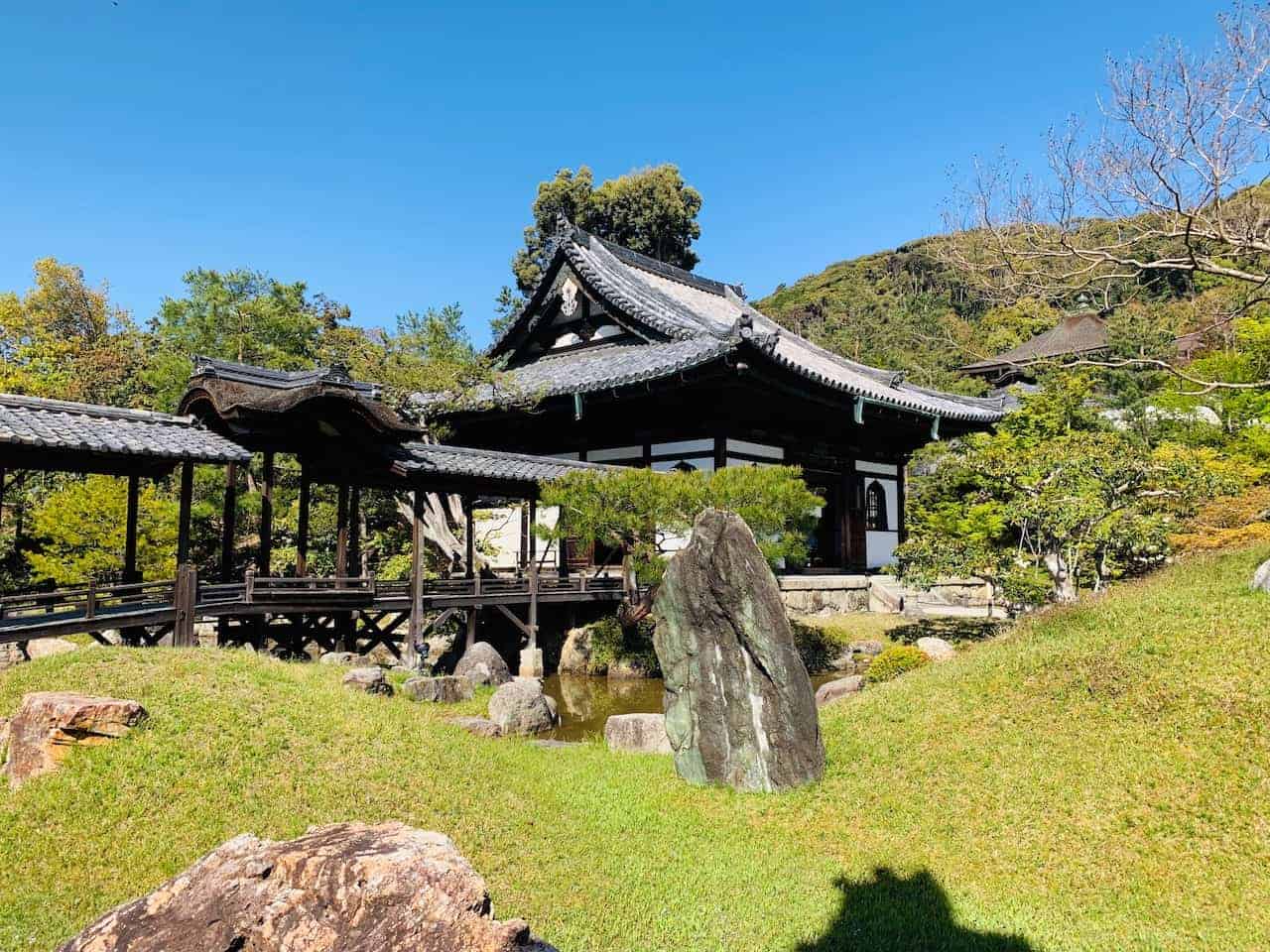
G) Ninen-zaka and Sannen-zaka
After enough time temple hopping, it is time to head off to two of Kyoto’s main pedestrian streets – Ninen-zaka and Sannen-zaka. You will find them just a 5 minute walk from Kodai-ji as you shop and eat your way up and down the area.
The two streets are full of small food shops, local stores, and plenty more. Just people watching along the way is a highlight within itself. After spending enough time around the streets, it is time to head to your last attraction of the day – Kiyomizu-dera Temple.
Note: Kiyomizu-dera Temple closes at 6:00PM so as you go about your day just remember that so you do not miss out on this incredible temple.
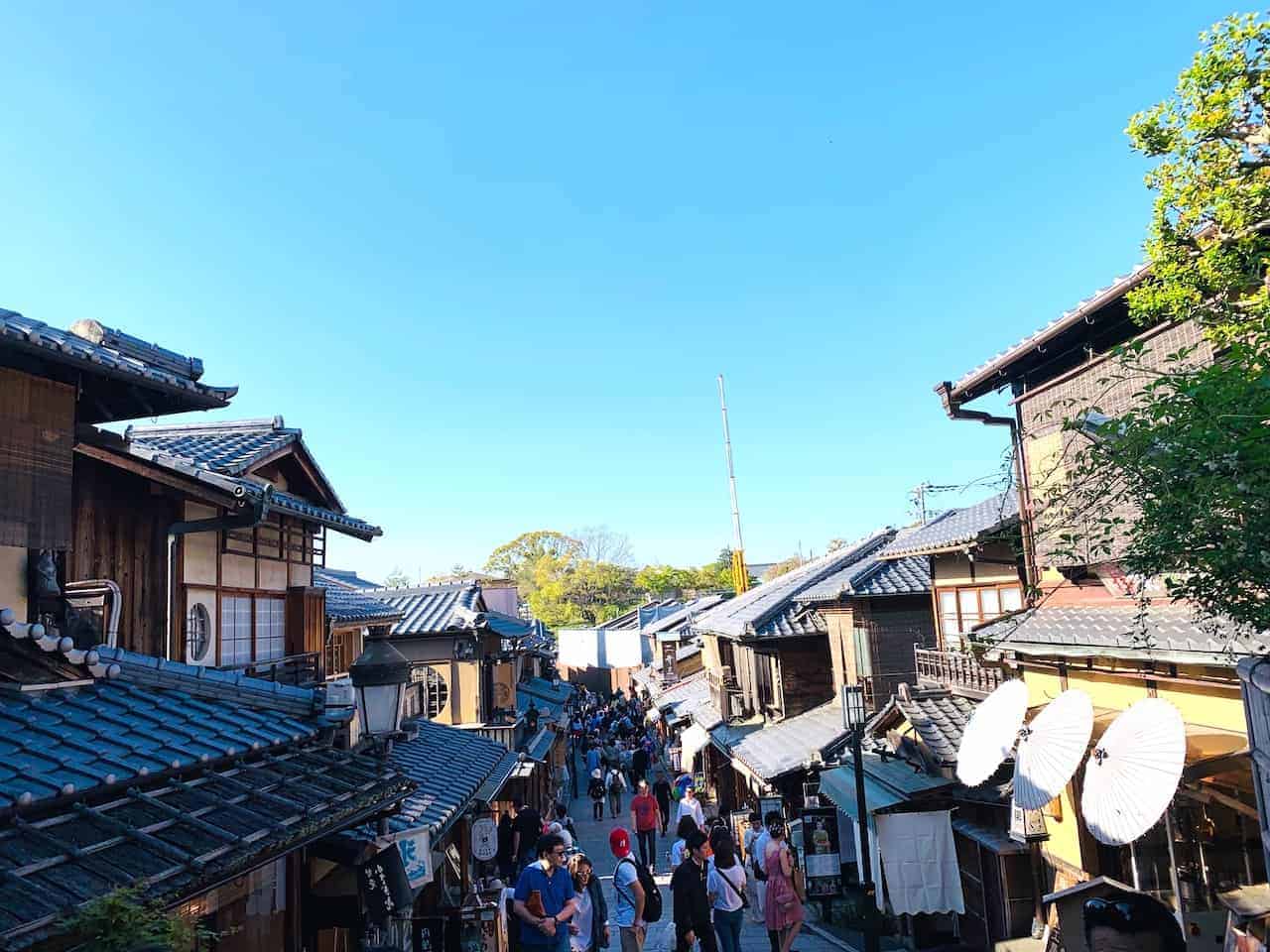
H) Kiyomizu-dera Temple
To end your day head to the Kiyomizu-dera Temple complex. You will find things such as a five storied pagoda, the Otowa Waterfall, and of course the main temple itself. And lastly, don’t forget to take in those views!
You will have some great vantage points of the city from the main viewing platform of the temple as well as at various other spots as you make your walk around to the other structures in the complex.
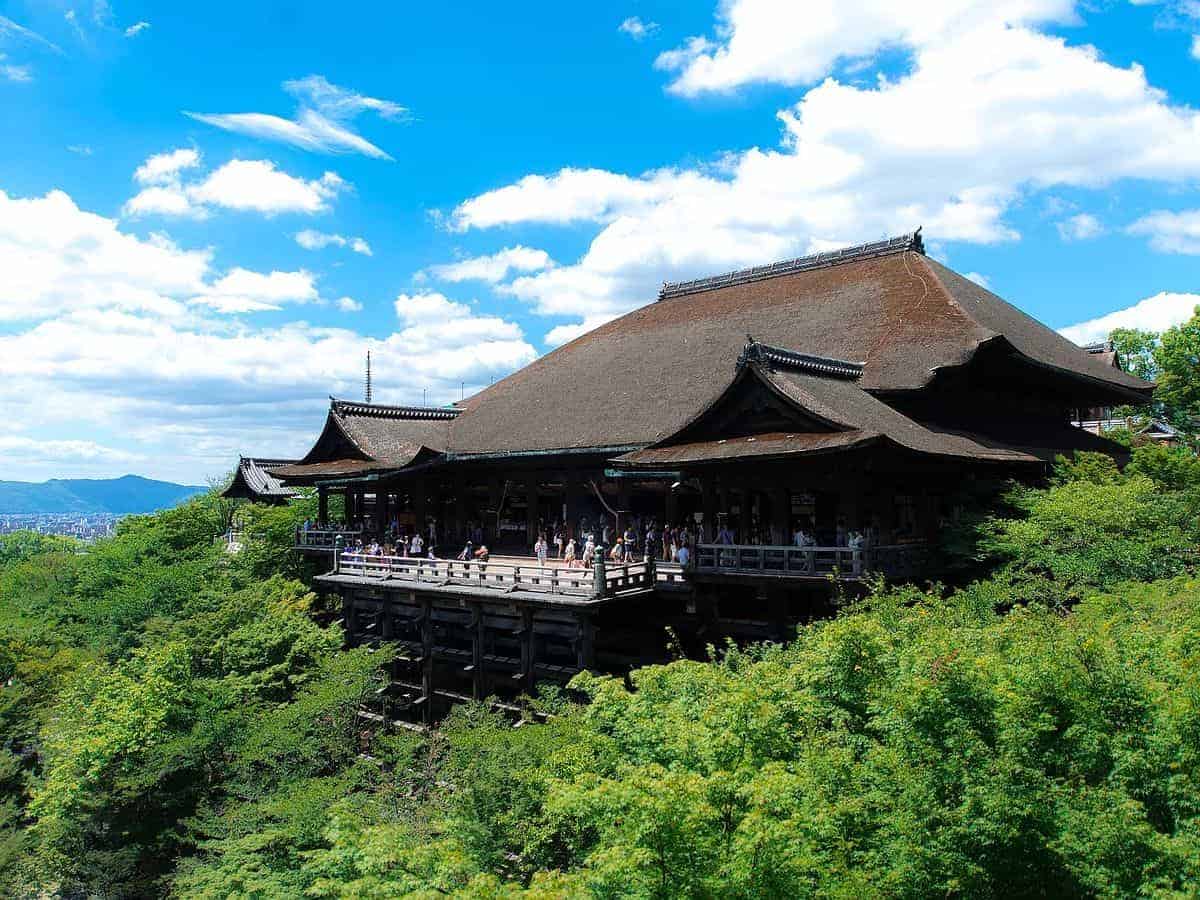
Kyoto Day 2
Your second day in Kyoto will take you to a few of the “must dos” when visiting the city including the Golden Pavilion, Arashiyama Bamboo Grove and Fushimi Inari Temple.
Since these places are some of the most visited in all of Kyoto you can expect to see crowds at them. You can do this day starting with either one and if you want to avoid the crowds (at one of them) I recommend getting an early start to the day.
Kinkaku-ji Temple
Start the day by hopping on a bus towards Kinkaku-ji also known as the Golden Pavilion. Unlike the silver pavilion which isn’t silver in color, the Golden Pavilion is most definitely gold in color.
You will find Kinkaku-ji sitting on the base of a beautiful pond and you will have the opportunity to take in some vantage points from afar and right up next to it as well. All you need to do is follow the path around and enjoy!
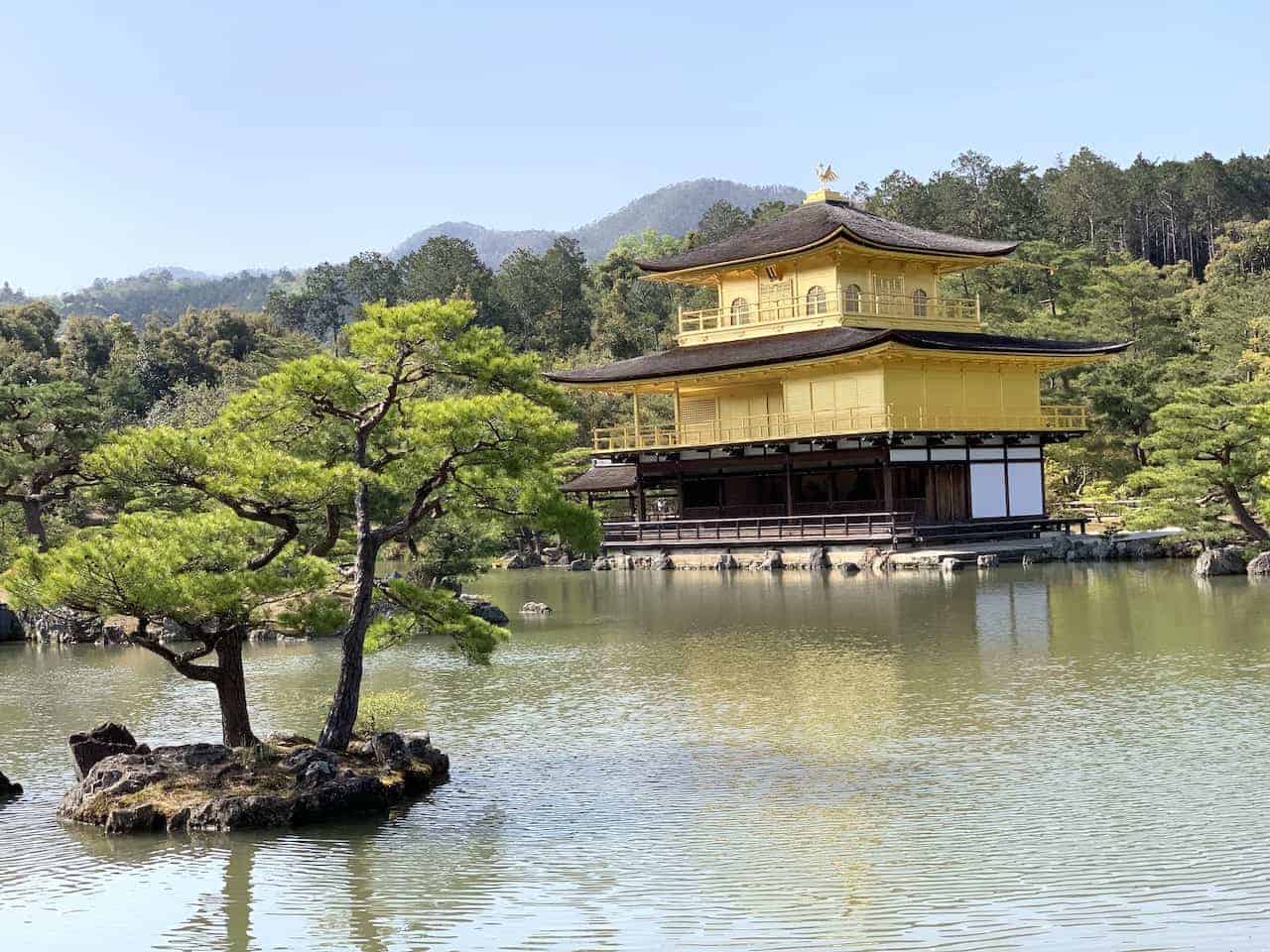
Ryoan-ji Temple
After taking in the Golden Pavilion you can either make the 20 minute walk or quick bus ride to Ryoan-ji. Beyond the nice garden and temple area, Ryoan-ji is well known for its famous rock garden, with 15 unique stones. Take a seat on a viewing platform and enjoy the peacefulness all around.
What is unique about the garden, is that at any vantage point you cannot actually see each and every rock.
Feel free to make your way across the viewing platform to test it out for yourself. A pretty unique place on my Kyoto bucket list.
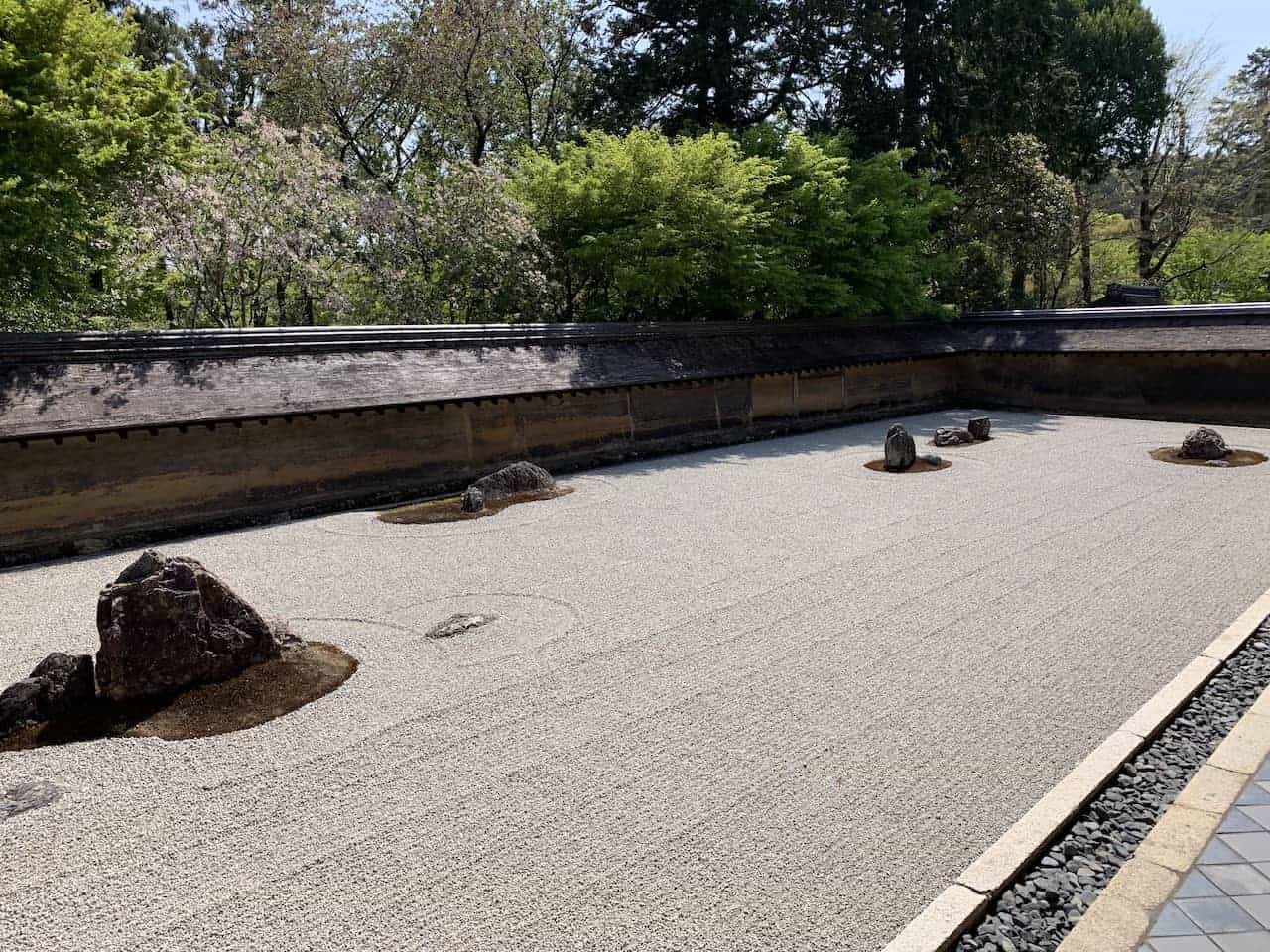
Tenryu-ji Temple
Now that you have seen two of Kyoto’s highlights it is time to make your way to the Arashiyama district. This is one place I wish I actually had more time to visit. I didn’t realize how many different temples and attractions were around the area.
Start off at the Tenryu-ji Temple, which is the main one in the area. It was built all the way back in 1339 and is actually the most important Zen temple in all of Kyoto (it is even a world heritage site!). There are a few main halls here to walk through as well as a beautiful garden to enjoy.
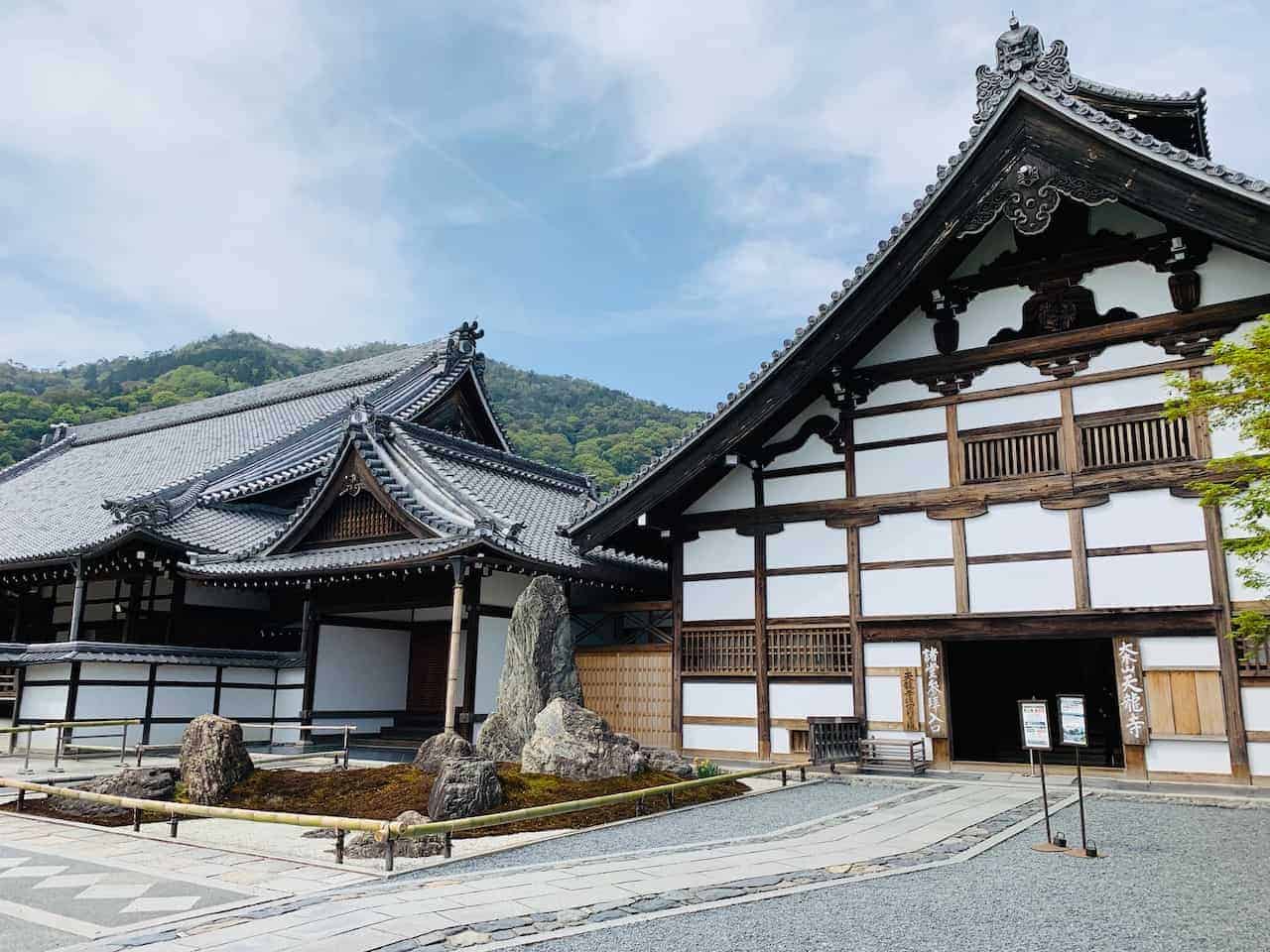
Arashiyama Bamboo Grove
After taking in the temple it is time to check out the Arashiyama Bamboo Grove. This is one of those spots in Kyoto that you may have continuously come across when researching the city.
While it is an incredible piece of nature with thousands of bamboo trees all around, it also comes with the crowds. Unless coming very early or late, expect there to be plenty of crowds walking the path.
You can actually enter the bamboo grove from the back of the temple complex instead of walking all the way around. The main walking path of the bamboo grove is pretty short – only about 10 minutes long.
Around the area though there is plenty of other bamboo and park features but the main attraction is the short walkway itself.
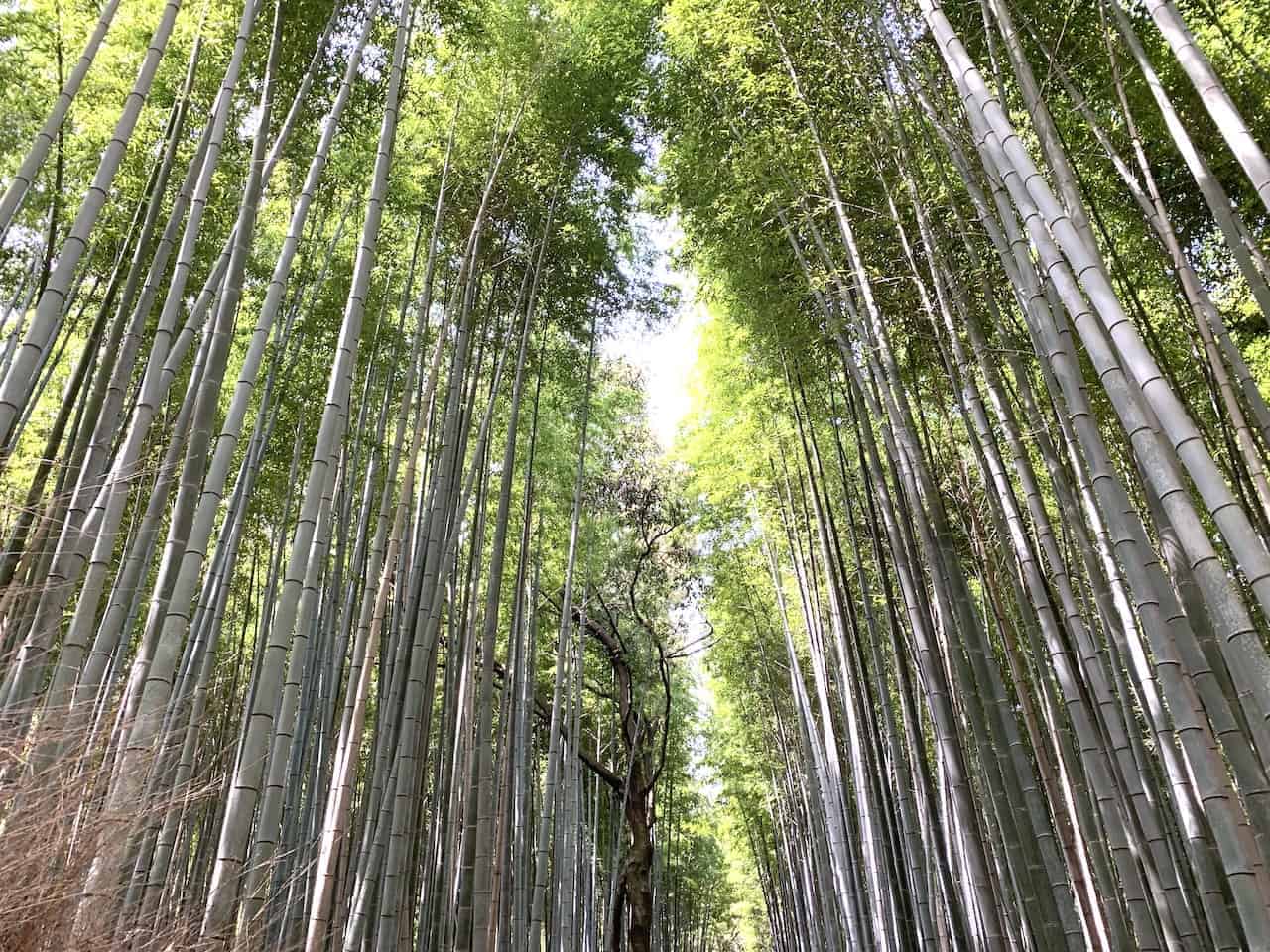
Arashiyama Monkey Park
After walking through the grove and the rest of the park, make your way to the river area, where you can enjoy a stroll alongside the riverside and over the bridge. On the other side of the bridge is the Arashiyama Monkey Park.
Now this monkey park is not a zoo. The monkeys are not caged and they are free to roam as they want. The reason they stick around the area is because they know a lot of food is given out by visitors.
The trail up to the monkey park is about 20-30 minutes uphill so you will need to work for it a bit.
But once you are up there, not only do you get to see a bunch of monkeys roaming around but you also will get a fantastic viewpoint of Kyoto down below.
Spend some time enjoying the monkeys, taking some pics and enjoying the view. Don’t forget to listen to all the rules too! You don’t want an angry monkey attacking you!
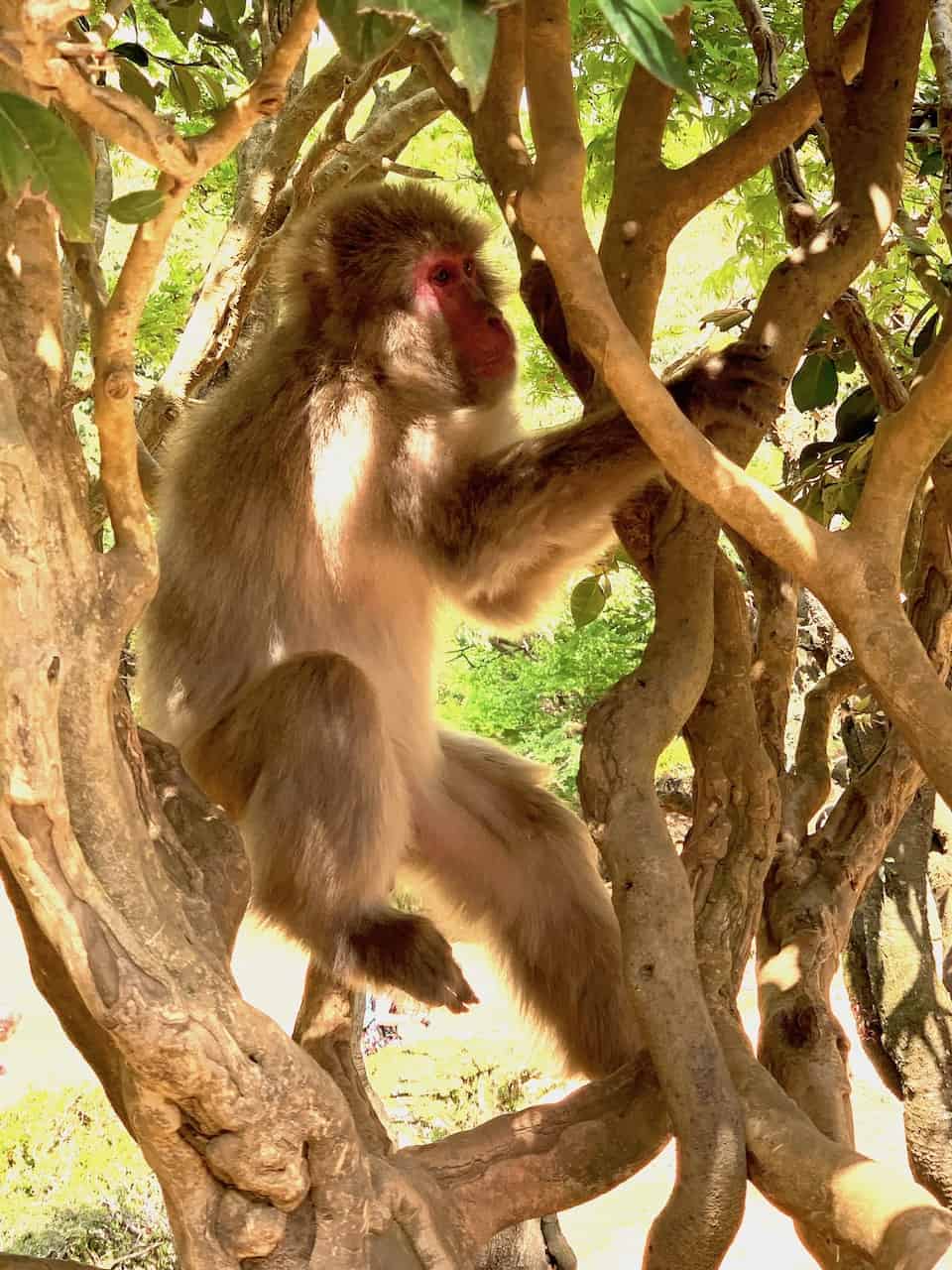
Fushimi Inari
To end the day head all the way out to Fushimi Inari. Now this is not your normal temple – there are literally thousands of red torii gates lining the paths up the mountain.
You can spend some time at the main temple before following the path up and through the torii gates. The further up you go the fewer people you will begin to see.
You can head all the way up to the top but the best viewpoint of the city down below is thought to be at Yotsutsuji Intersection. It can take around 30-45 minutes to make the walk there but I would definitely recommend doing so if you have it in you.
BIG TIP: depending on your timing for the day, I would try and plan to get up to the viewing point a bit before sunset time. Seeing the sun set over the city at Fushimi Inari is a site you will not soon forget!
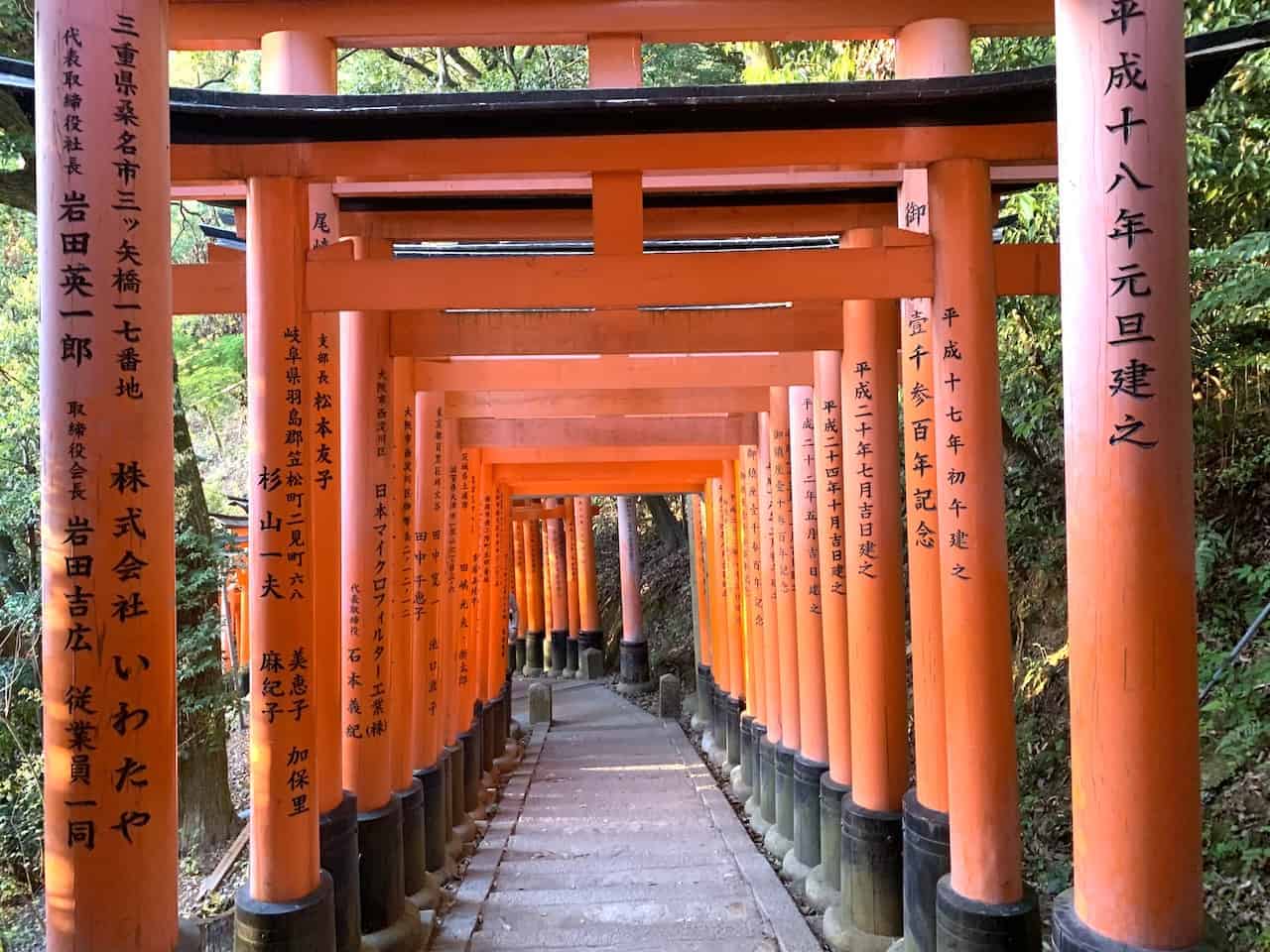
Now that you have a better sense of what can be done with a couple days in both Tokyo and Kyoto, it is time to talk about all the other add ons that you can choose from to complete your itinerary.
Below are some of the top day trip options that could work well for one week in Japan.
3) Kamakura (from Tokyo)
A day trip to Kamakura will get you out of the capital and onto the beachside town of Kamakura. Now, there is much more to see in Kamakura than just the beach though.
You will find hiking trails through the forest with some expansive views of the city, the Great Buddha – one of the most iconic buddhas in the whole country, as well as plenty of other temples, shopping streets, and of course the beach too.
This is a great option for those that want to spend more time in Tokyo but also get out of the city for the day.
» Be sure to take a look at the Tokyo to Kamakura Day Trip Guide to learn much, much more about this city
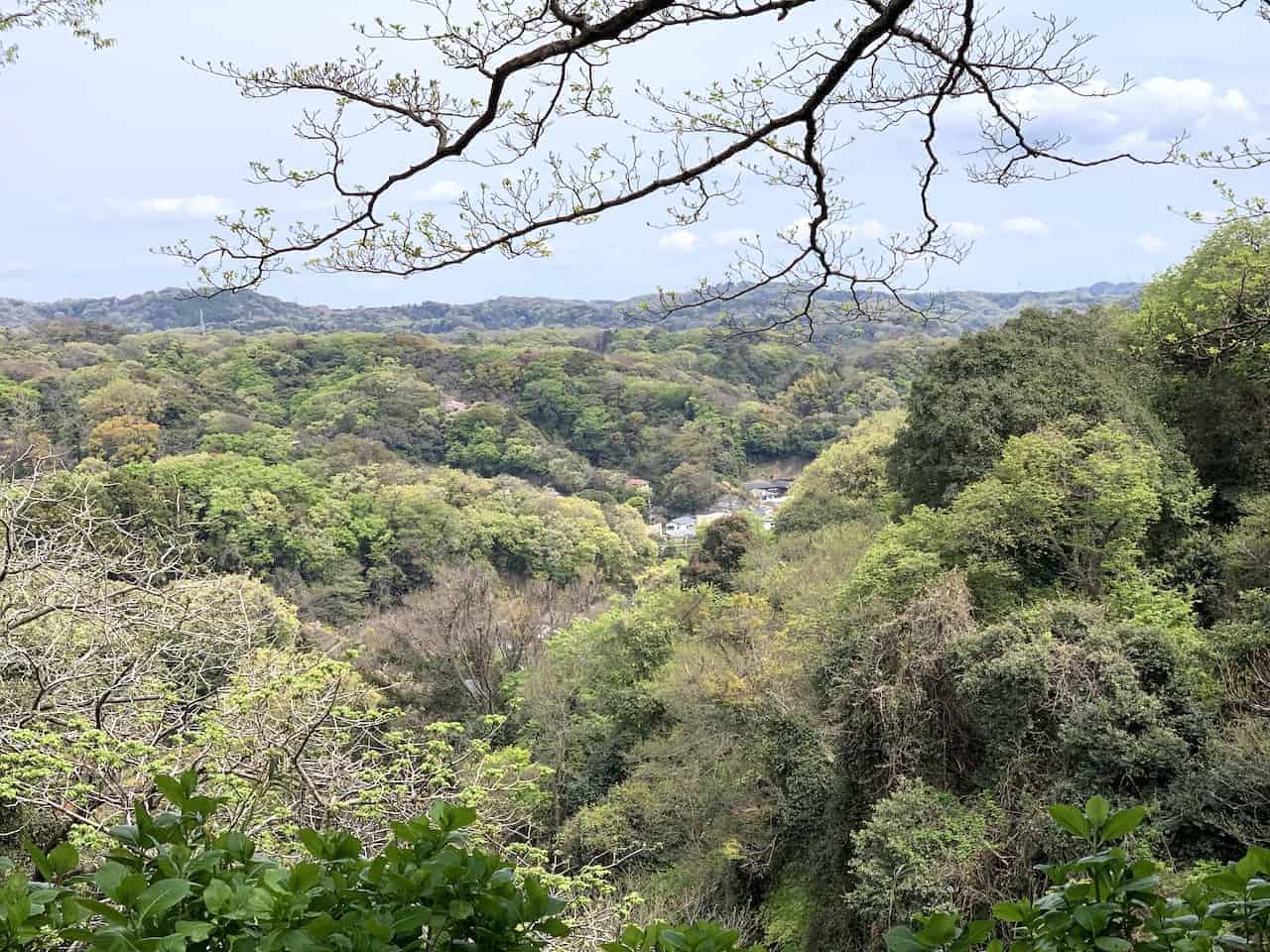
4) Hakone (from Tokyo)
Another day trip option from Tokyo is the town of Hakone. This day trip should be taken if you want to get some Mt Fuji time into your itinerary. Hakone is one of the closest places to see Mt Fuji and on a clear day, it is one of the best views in all of Japan.
Hakone is not just a place to get a view. A day trip there will entail what is called the Hakone Round Course Circuit. This circuit takes you on a variety of transportation options including trains, cablecars, ropeways, boats, and busses on a loop around the Hakone area.
It is a full day of exploring all that Hakone has to offer, as you see Mt Fuji from a variety of different places and enjoy all that the area has to offer.
An additional option here too – if you do not want to make this a day trip, you can also complete this day as a pit stop between Tokyo and Kyoto for example. All you would need to do is store your luggage at the Hakone train station (or send it ahead to Kyoto using the Takkyubin service), go about your day in Hakone, and then train to Kyoto at the end of the day.
» The Hakone Round Course Circuit Guide goes into much more detail on how to go about your day in the area
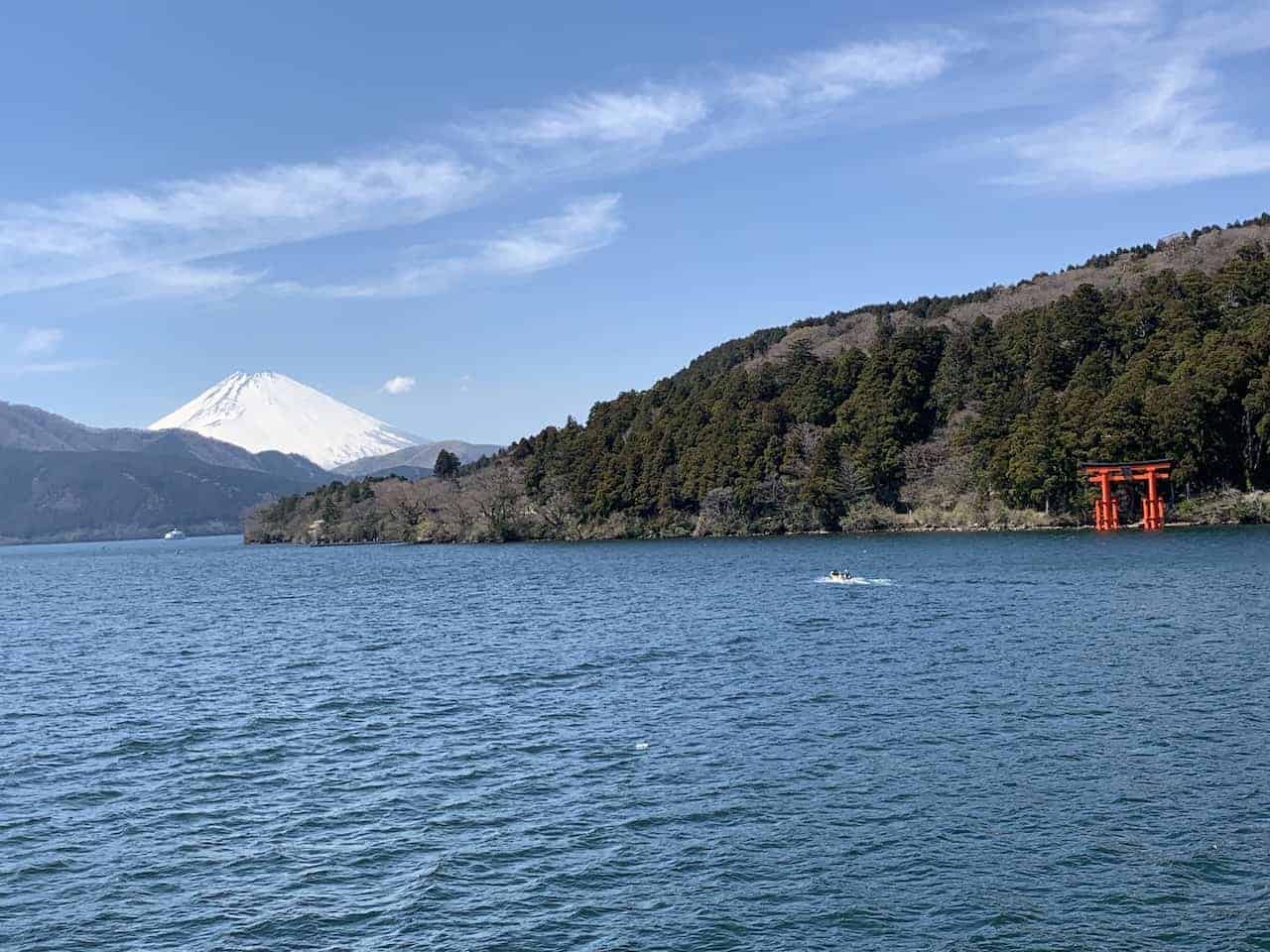
5) Nara (from Kyoto)
The city of Nara is the perfect day trip to take for those that want to spend more time in the Kyoto area. Less than an hour away from Kyoto, Nara is a place packed with temples and deer. Yep, that’s right – deer.
Everywhere you go, whether it be to the park, gardens, temples, or up the Mount Wakakusayama viewpoint, you will be surrounded by deer.
The great thing about Nara is that you can spend as much or as little amount of time exploring the city before heading back to Kyoto.
During my time there I spent about 6 hours making my way around to several different of the major sites and I felt it was the perfect amount of time to get to know what Nara was all about.
» Take a look at the Kyoto to Nara Day Trip Guide to learn more about this incredible day!
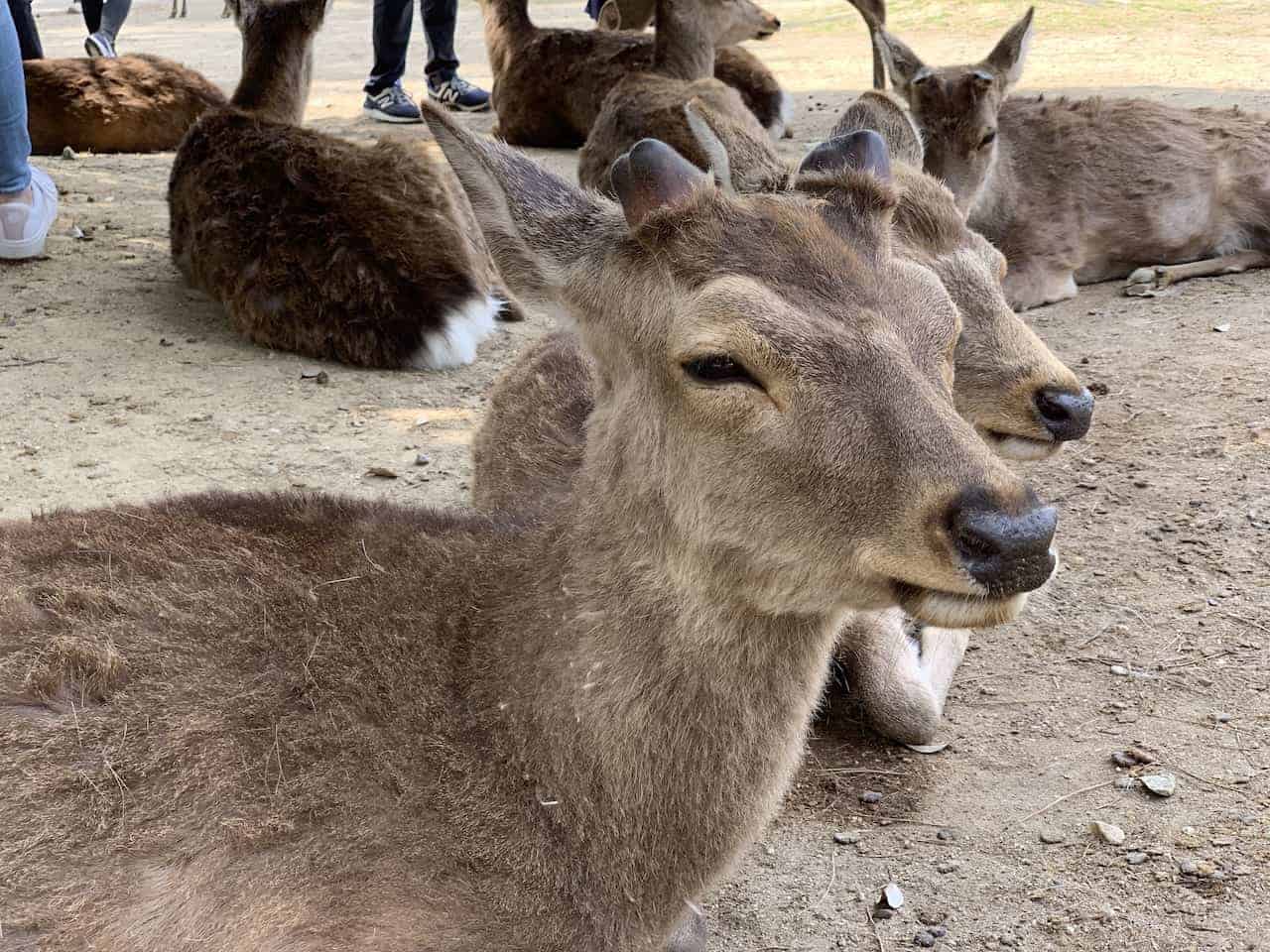
6) Hiroshima (from Kyoto)
If you want to get a bit of important history into your trip, a trip to Hiroshima is a must. This is a bit further of a train ride away from Kyoto (2-3 hours) but is well worth the trip. Hiroshima’s city center is where the atomic bomb struck during the end of World War II.
You now will have the chance to explore this area, visiting different memorials, the Hiroshima Peace Memorial Museum and the Atomic Bomb Dome.
It is a chilling place to visit but again it is a very important city to learn more about the history that Japan once went through.
» The Hiroshima 1 Day Itinerary will walk you through all you need to know for the day
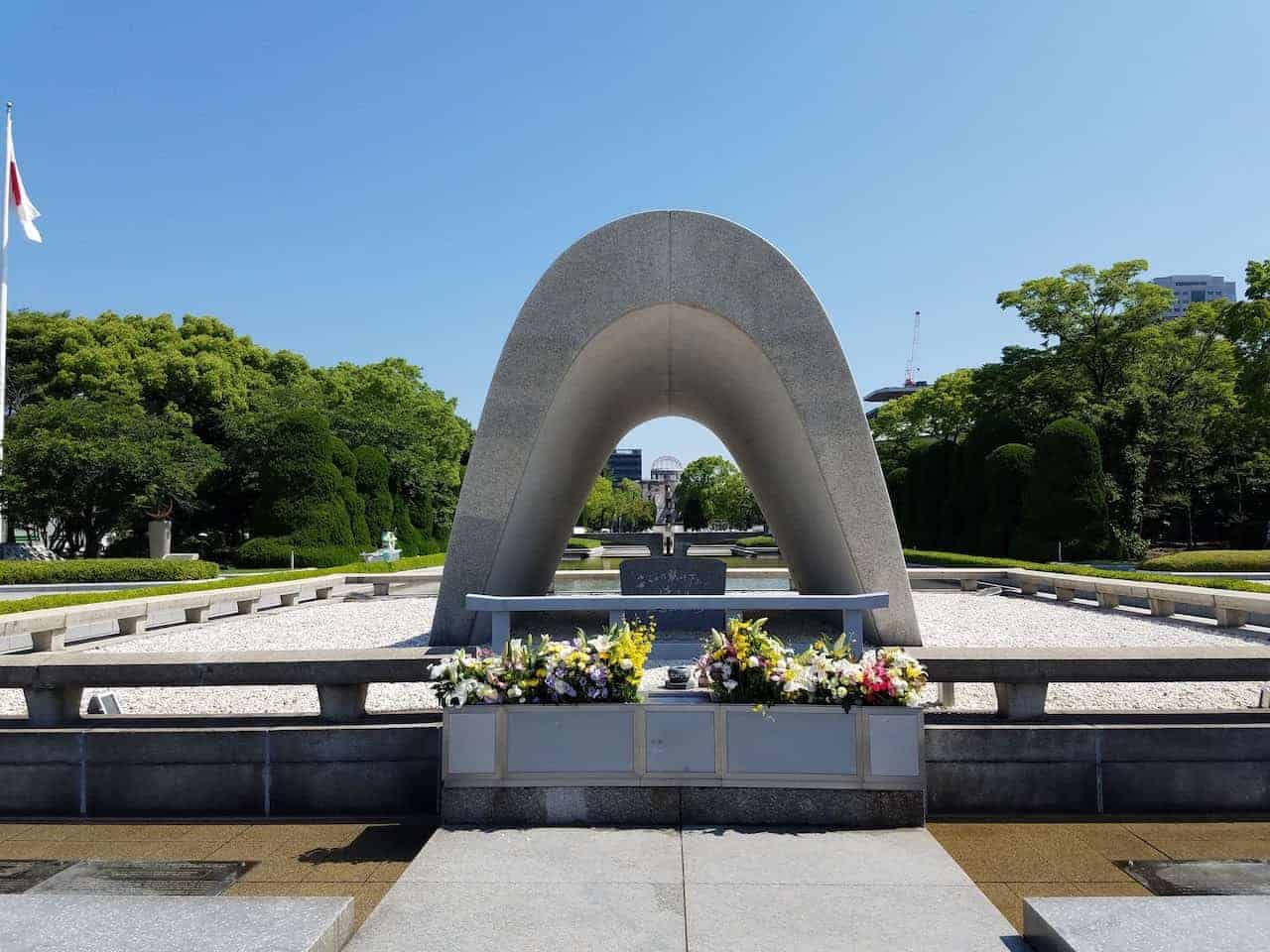
7) Miyajima (from Kyoto)
Another option from Kyoto is to the picturesque island of Miyajima. The island is located about 30 minutes further south than Hiroshima so if you wanted to combine Hiroshima and Miyajima into one long day trip from Kyoto that is definitely doable too!
In Miyajima, you will be welcomed to Japan’s most famous torii gate – the floating Itsukushima Shrine.
Beyond just the torii gate, you can also visit some temples around the area, hang out with some of the local deer roaming the island, and head up to Mt Misen, where you can take in some vast views from above.
» Read up on the Miyajima Day Trip Guide that has a ton more information about logistics and things to do
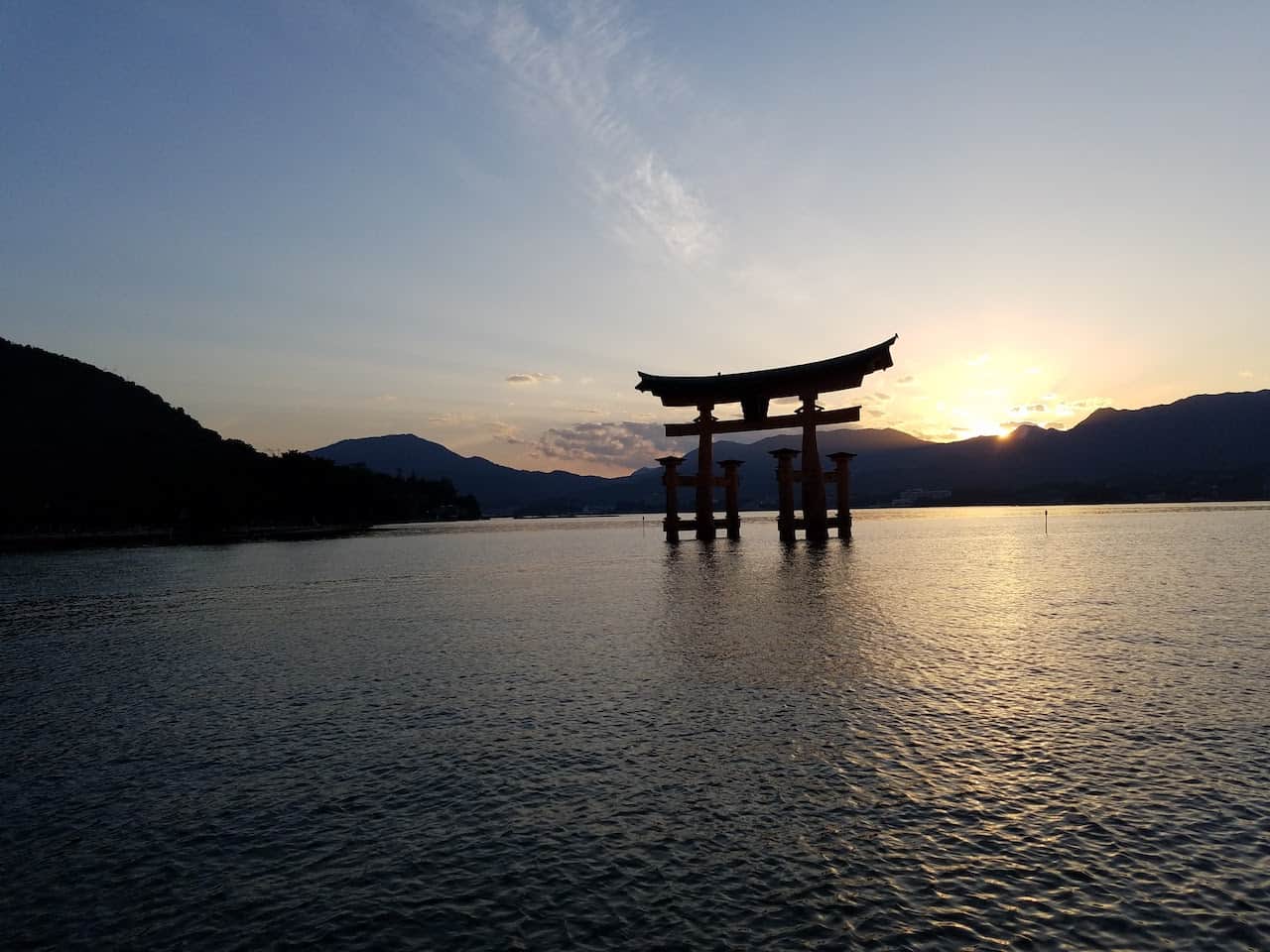
Now that you have a better idea of day trip options from Tokyo and Kyoto, I will also talk a bit about 3 other cities I had the chance to visit between the two – Takayama, Kanazawa and Shirakawa-go .
Since all three are not too far apart, adding them all into your trip between Tokyo and Kyoto could be an option for your one week in Japan.
8) Takayama
The city of Takayama will feel much different from any other city you visit in Japan. It feels more like a traditional Japanese town with smaller buildings surrounded by beautiful streets, rivers, and bridges.
Throughout Takayama you will find some morning markets, temples, sake breweries, and traditional style houses to visit.
What I love about Takayama is that it is a very walkable city if you want to explore it for the day. While there are some sites to visit a bit further out, the main town center can be explored within a day and it will definitely be an action packed one.
Below are some of the top places to visit during your time in Takayama:
1. Miyagawa Morning Market 2. Kusakabe Heritage House 3. Yoshijima Heritage House 4. Sakurayama Hachimangu Shrine 5. Sanmachi Old Town 6. Sake Breweries 7. Takayama Jinya
» I put together a guide for What To Do in Takayama Japan that will go into more detail about each place mentioned
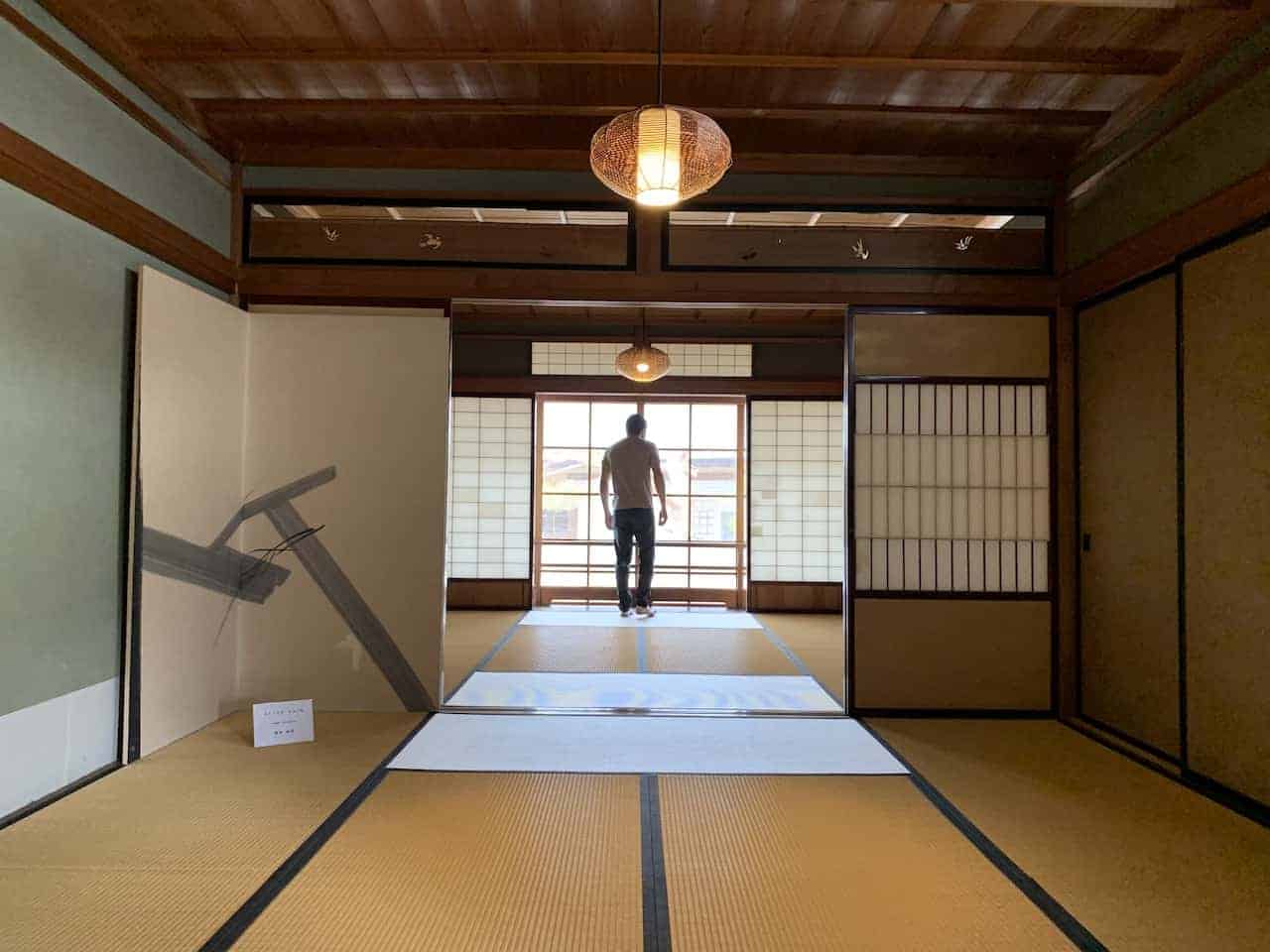
9) Shirakawa-go
Between Takayama and Kanazawa lays the small village of Shirakawa-go. All you need to do to get there from Takayama, is hop on the 45 minute bus from the train station that will bring you directly to the village. Nestled in the valley in with the Japanese Alps looming all around, Shirakawa-go is as authentic as it gets.
The village is packed with these traditional styled thatched roof houses sprawled all along the valley floor. Spending a half day exploring the ins and outs of Shirakawa-go will be a highlight of your time in the country.
On top of just walking around, you can actually visit a few of these houses including the Wada and Kanda house to get a better idea of how these structures were actually built and what life was once like in the village.
There is also a fantastic viewpoint up top to get a panoramic view of Shirakawa-go as you see the layout of the valley floor.
» The Shirakawa-go Day Trip Guide will go over everything you need to know about the logistics for the day
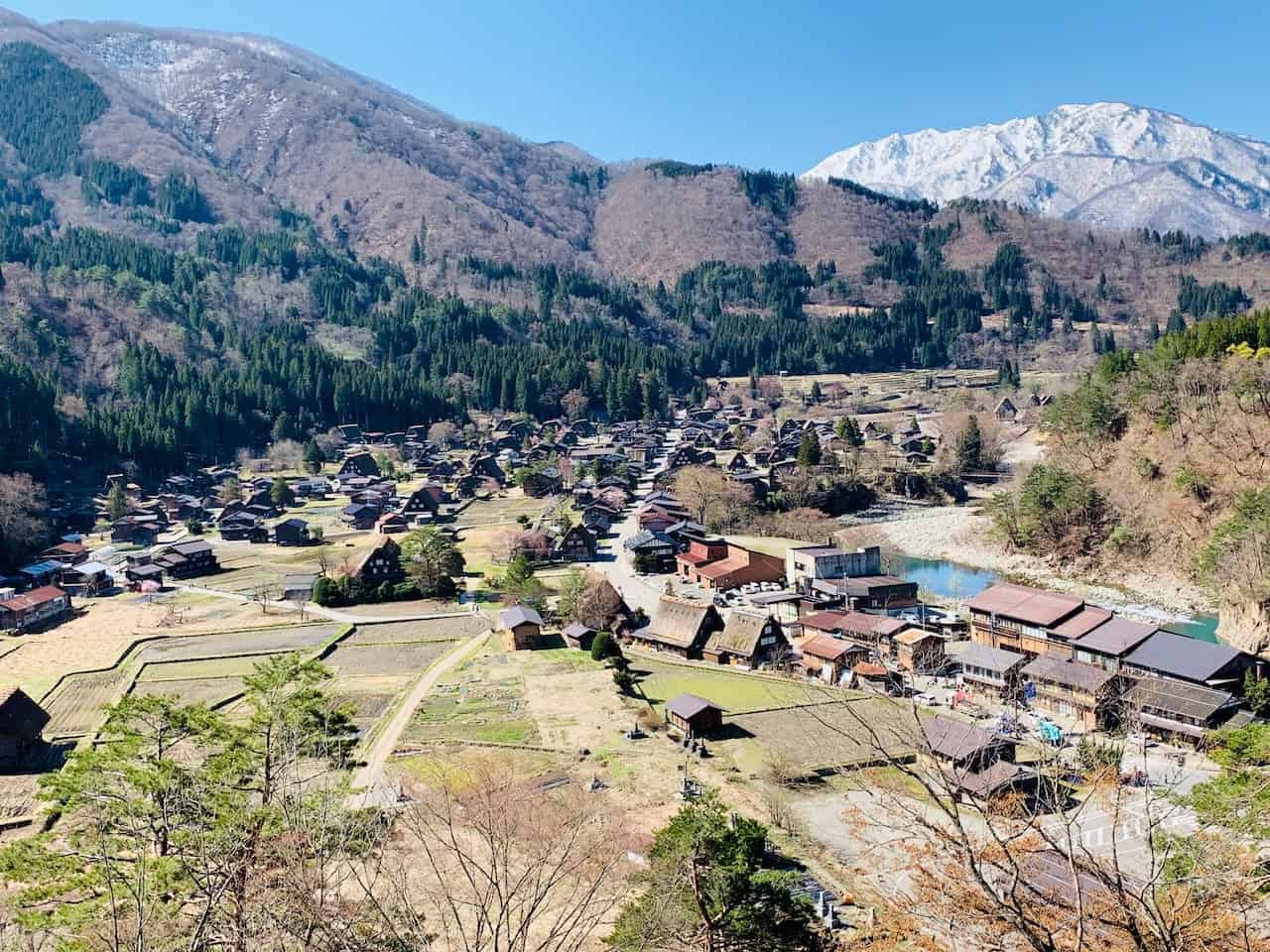
10) Kanazawa
Last up here is the city of Kanazawa. To get to Kanazawa from Shirakawa-go, all you need to do is hop back on the bus and head another hour to Kanazawa Station.
A day in Kanazawa will have you going all over the city exploring the ins and outs of what it has to offer. When I visited, I simply rented a bike for the day and was explore it all on my own – a great way to see the city.
The two main highlights of Kanazawa will be the Kanazawa Castle and the Kenrokuen Gardens .
These two places are directly across the street from one another and are just incredible to explore (Kenrokuen were the best gardens I saw during my time in Japan).
On top of the gardens and castle you can also check out the Higashi Chaya District, Omicho Market, Oyama Shrine, among several other attractions around the city.
Kanazawa Note: if you do not want to go to Takayama and Shirakawa-go but rather just Kanazawa, you can make this a day trip from Kyoto. It would simply be a 2 hour train ride there and back. So if you start early enough, you should be able to fit plenty into a day trip.
» The 9 Things To Do in Kanazawa will go more in depth about many of the city’s main attractions
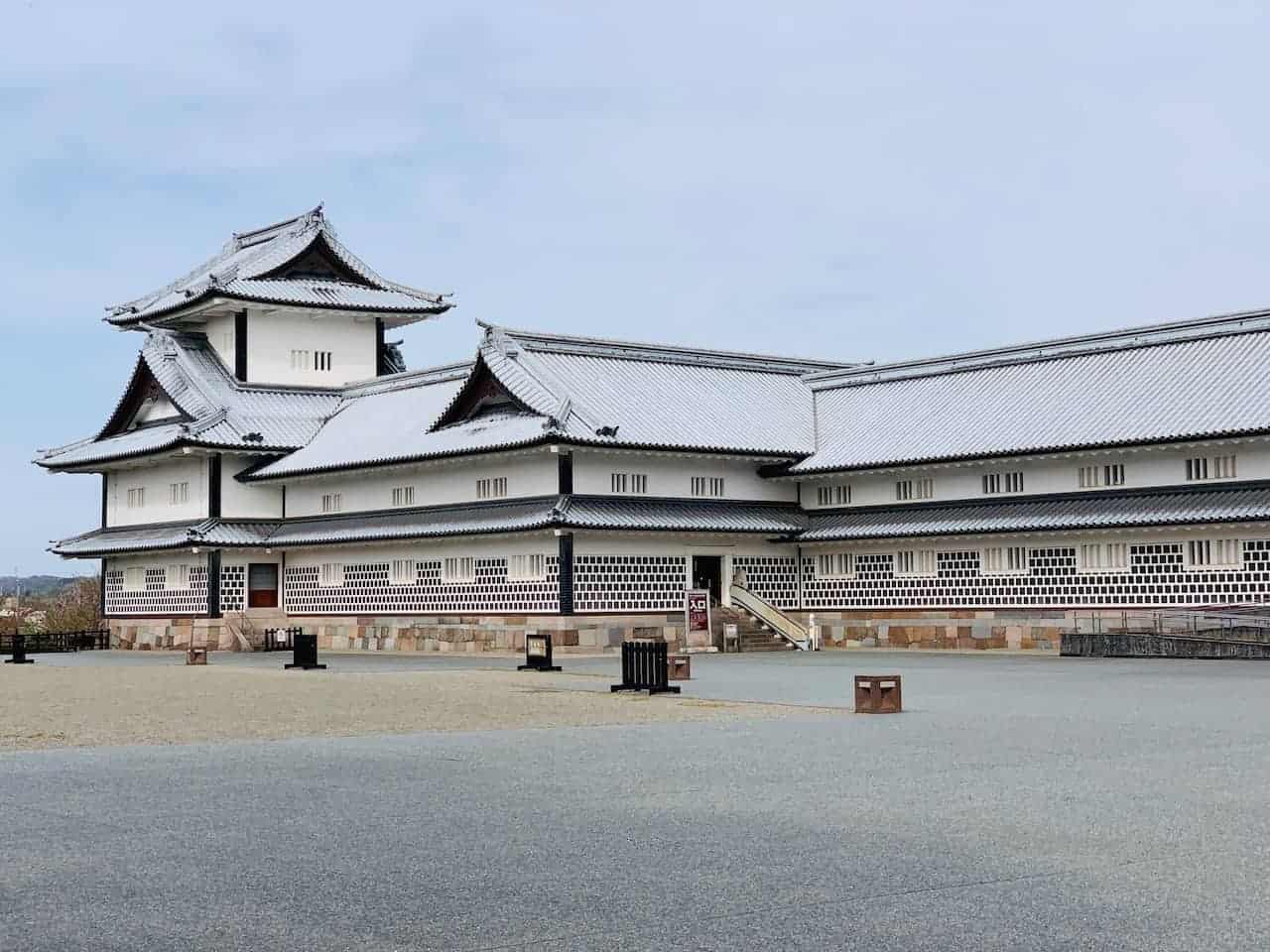
One Week in Japan Options
Now that you have a better idea of many of the different options to choose from, here are some one week in Japan itineraries that you can choose from.
Of course, not only can you mix and match as you see fit, but you can also add other cities/day trips/attractions/activities that are not mentioned here.
7 Day Itinerary: Option 1
This first one week in Japan itinerary includes 2 days in Tokyo and Kyoto. In addition to those two days, you will also find a day trip to Kamakura (from Tokyo) and day trip from Kyoto (several options).
In between the two, I have included a trip to Hakone as you make your way between Tokyo and Kyoto.
Day 1 : Tokyo Day 2 : Tokyo Day 3 : Kamakura Day Trip Day 4 : Hakone Day Trip (to Kyoto) Day 5 : Kyoto Day 6 : Kyoto Day 7 : Nara Day Trip or Miyajima/Hiroshima Day Trip or Kanazawa Day Trip
7 Day Itinerary: Option 2
This second 7 day itinerary will be similar to the first. However, instead of taking a day trip to Kamakura from Tokyo, you will have two day trip options from Kyoto. This of course should only be done if you are more interested in those additional options.
Day 1 : Tokyo Day 2 : Tokyo Day 3 : Hakone Day Trip (to Kyoto) Day 4 : Kyoto Day 5 : Kyoto Day 6 : Nara Day Trip Day 7 : Miyajima/Hiroshima Day Trip or Kanazawa Day Trip
7 Day Itinerary: Option 3
The final one week in Japan itinerary I will mention heads to Takayama, Shirakawa-go, and Kanazawa. Instead of day trips from Tokyo and Kyoto, you can simply add these three places within the middle three days of the itinerary.
Day 1 : Tokyo Day 2 : Tokyo Day 3 : Takayama Day 4 : Shirakawa-go (morning or afternoon) / to Kanazawa Day 5 : Kanazawa Day 6 : Kyoto Day 7 : Kyoto
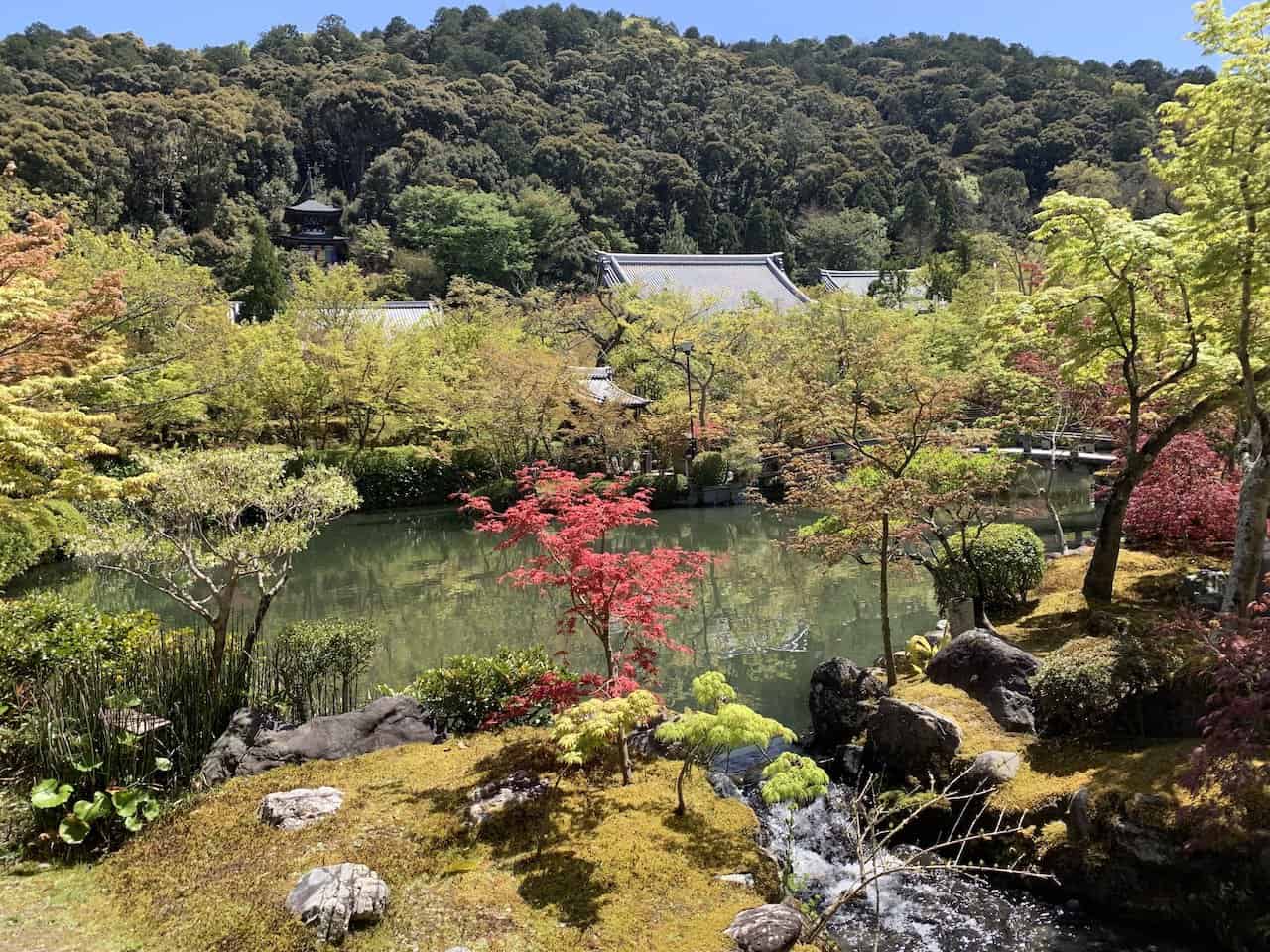
Where to Stay in Japan
Since this itinerary may be very fluid, I just wanted to list out accommodation options for each of the cities that you may be staying in during your one week in Japan.
I have included recommendations for Tokyo, Kyoto, Takayama, and Kanazawa.
Where to Stay in Tokyo
Since Tokyo is such a large city with so many distinct neighborhoods, it can get confusing to understand where the best places to stay are. In my eyes there are a couple of neighborhoods that stick out to me when it comes to the most convenient (and fun!) options.
A) Shinjuku : #1 on my list is the area of Shinjuku. You will have Shinjuku station nearby when traveling to other parts of Tokyo (and day trips), a ton of nightlife and restaurant options, as well as many of the activities mentioned in this itinerary not too far away. There is always something going on in Shinjuku and it will definitely not disappoint.
1) Hotel Gracery Shinjuku
2) Citadines Central Shinjuku
3) Hyatt Regency Tokyo
B) Shibuya : not too far away from Shinjuku is the Shibuya neighborhood. Famous for the Shibuya Crossing, it is also filled with plenty of shops and restaurants all around its streets.
1) Hotel Century Southern Tower
2) Shibuya Excel Hotel Tokyu
3) Shibuya Granbell Hotel
C) Tokyo Station : moving a bit to the east of Shinjuku and Shibuya is the Tokyo Station area. It is centrally located right nearby the main transport hub making it super easy to get everywhere, and you will also be in walking distance to some of the city’s main attractions.
1) Hotel Metropolitan Tokyo Marunouchi
2) Palace Hotel Tokyo
3) The Tokyo Station Hotel
Of course there are plenty of other neighborhoods to choose from but I think that should be a great starting point to help you out.
Where to Stay in Kyoto
While there are many different neighborhoods to choose from I would recommend staying near the downtown Kyoto area. Here you will find plenty of accommodation options at various price points alongside all the restaurant and shopping you can imagine.
It also offers easy accessibility to visit all other parts of Kyoto either by bus or by subway. Below are some mid range and luxury options all within walking distance from downtown (a few being a 20 minute or so walk).
1) The Royal Park Hotel Kyoto Sanjo
2) Hotel Grand Bach Kyoto Select
3) Kyoto Granbell Hotel
1) Hotel Alza Kyoto
2) Kizashi The Suite
3) The Ritz Carlton Kyoto
Where to Stay in Takayama
The main tourist area of Takayama is not that large and you should have no trouble getting a hotel for a night or two within a 10-15 walk of it all. Being close to the train station is a good idea too as both the trains and busses leave from there.
Below are some different places to take a look at when planning a trip to Takayama.
1) Wat Hotel & Spa Hida Takayama
2) Takayama Green Hotel
3) Oyado Yamakyu
Where to Stay in Kanazawa
Kanazawa has plenty of accommodation options to choose from and many of them are right nearby the attractions listed below. Staying nearby the train station can also be a good idea so you won’t need to worry much about getting from the station to your accommodation.
Below are some options to choose from in Kanazawa:
1) Hotel Nikko Kanazawa
2) Kanazawa Tokyu Hotel
3) Kanazawa Saino Niwa Hotel
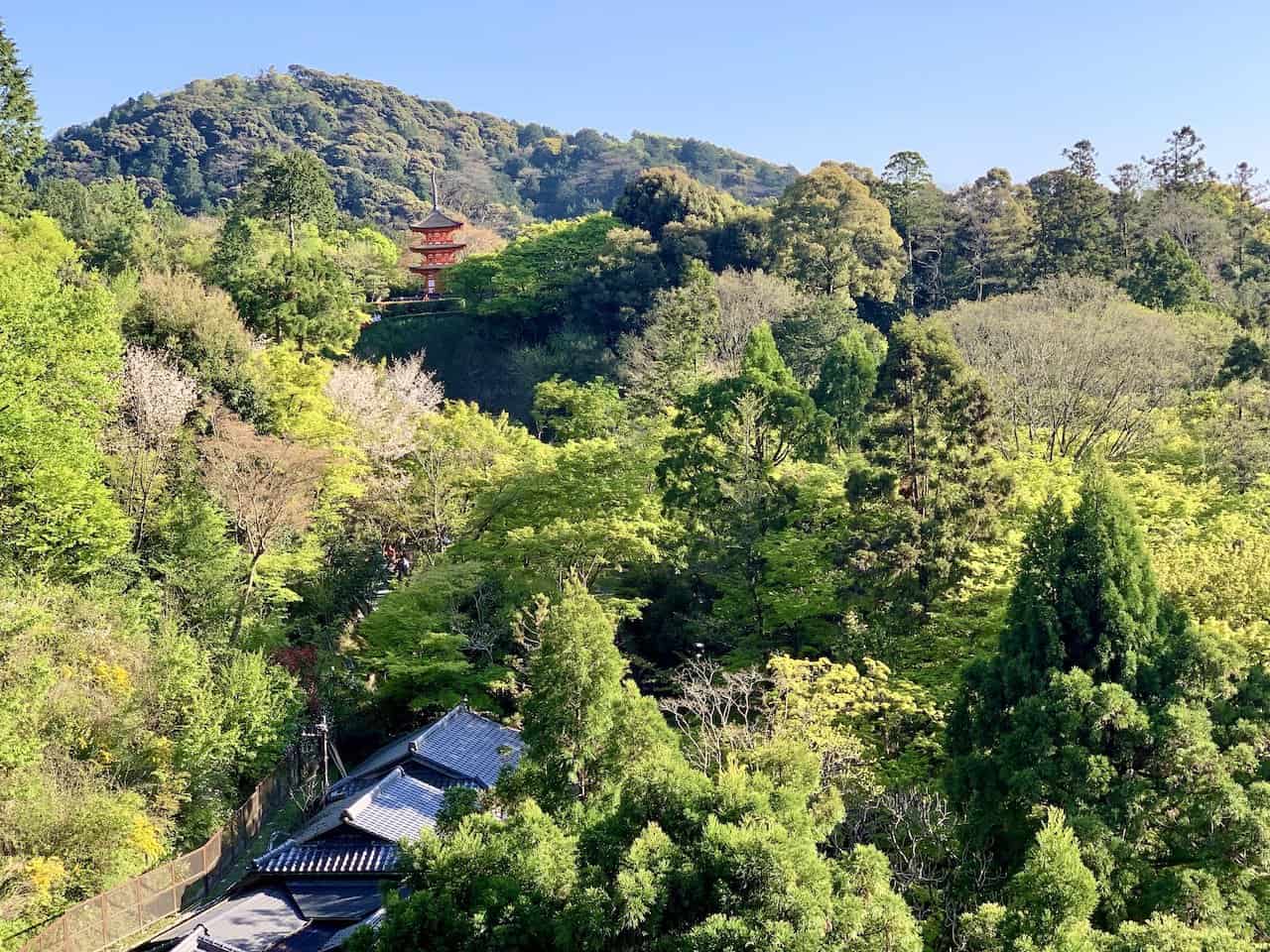
I hope this guide has given you a better idea of how to go about planning a 7 day Japan itinerary as well as some of the options you have to choose from when putting together your trip.
At the end of the day, whatever you choose, you really cannot go wrong when it comes to Japan. I am sure you will just want to come back again to explore more of it (like I did!).
If you have any questions or comments about anything related to Japan, feel free to add them in below.
Don’t forget to also check out the other Japan itineraries and guides up on the site. Have fun out there and safe travels!
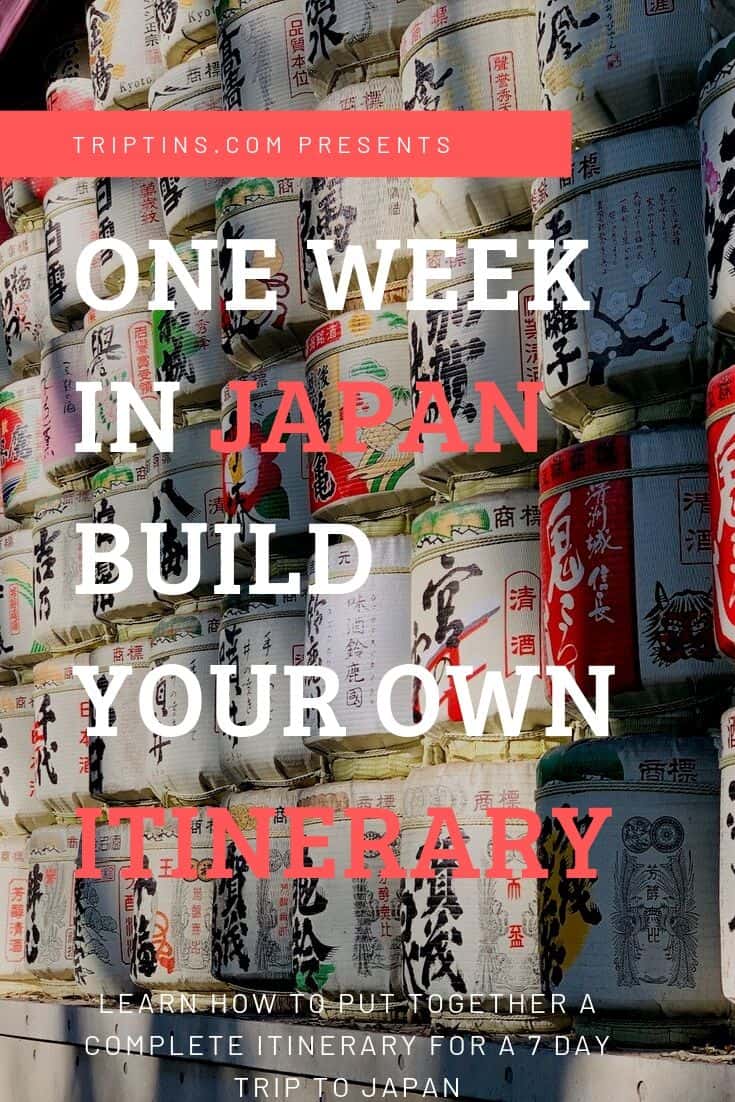
Related posts:
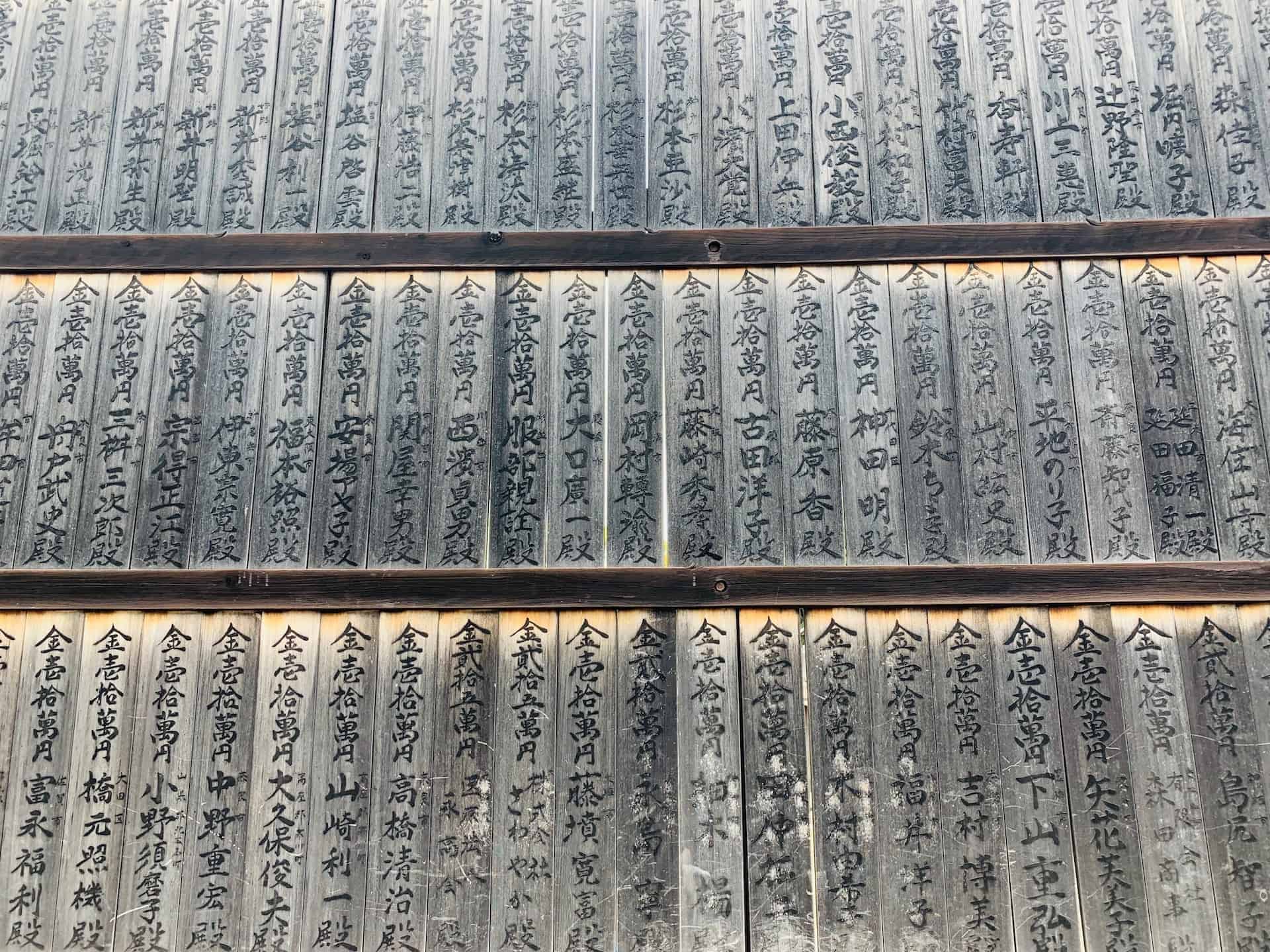
Sharing is caring!
7 Day Itinerary in Japan
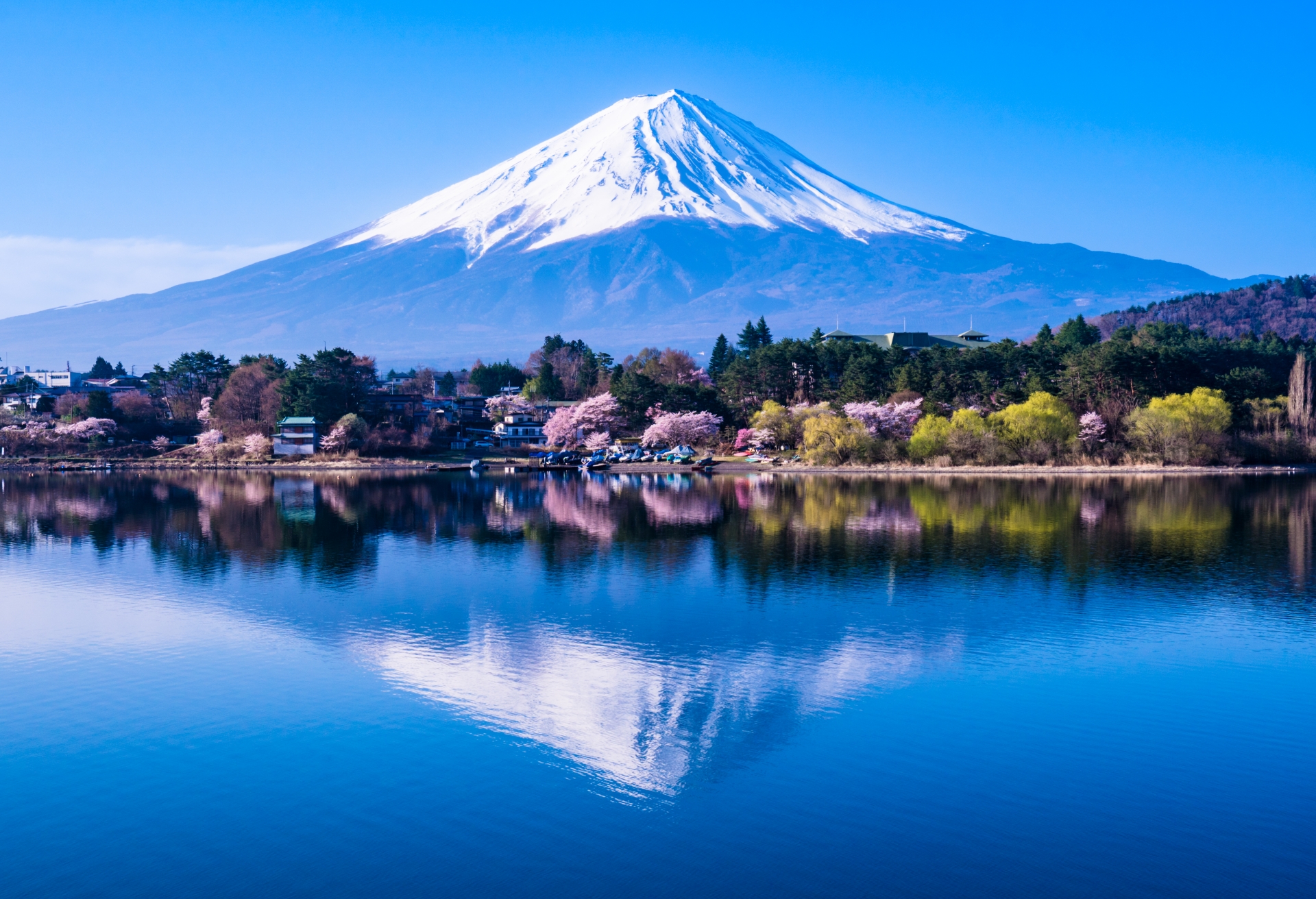
Stefanie Akkerman moved from the Netherlands to Japan in 2013 with her Japanese husband and son. She jumped into the niche of Dutch tour guiding in Tokyo and Kamakura in 2015 and occasionally writes articles about all the great sights and activities Japan has to offer. She loves (Japanese) food, and to work that all off she goes diving, snorkeling, cycling, or hiking.
This post may contain some affiliate links. When you click through and make a purchase we may receive some commission, at no extra cost to you .
Will you only have a week to travel in Japan but really want to make the most of your limited time? There are so many amazing destinations in Japan that it can be hard to decide which cities and sightseeing spots to hit and which to skip for the time being. Let us help you out with this popular one-week itinerary in Japan that includes Tokyo, Kawaguchiko, Kyoto, Nara/Uji, and Osaka.
Day 1: Arrival in Tokyo
Day 2: touring tokyo, day 3: kawaguchiko, day 4: arrival in kyoto, day 5: kyoto, day 6: nara, uji, osaka, day 7: osaka and departure, japan wonder travel tours , other articles you might like.

If you arrive in Tokyo in the morning and managed to catch some z’s on the plane, you will already be off to a great start! You can reach central Tokyo within 1.5 hours from Narita and within 30 minutes from Haneda , and we recommend opting for a hotel in a central area like Ginza , Daimon, Shinjuku, or around the Tokyo Station area. Drop your luggage off at the hotel, and let’s start discovering the world’s largest metropolis!
Day one is dedicated to the most central parts of Tokyo. To minimize travel time, we recommend the following day itinerary, which will take you about 5 hours total:
- Imperial Palace : Take a picture with the famous ‘Megane bridge’ in the background and enjoy a walk through the Imperial East Gardens.

- Ningyocho : This picturesque local neighborhood is a bit off the beaten track but worth a visit if you are in the area for its small traditional shops selling delicious treats like ningyoyaki and hojicha tea-flavored ice cream.
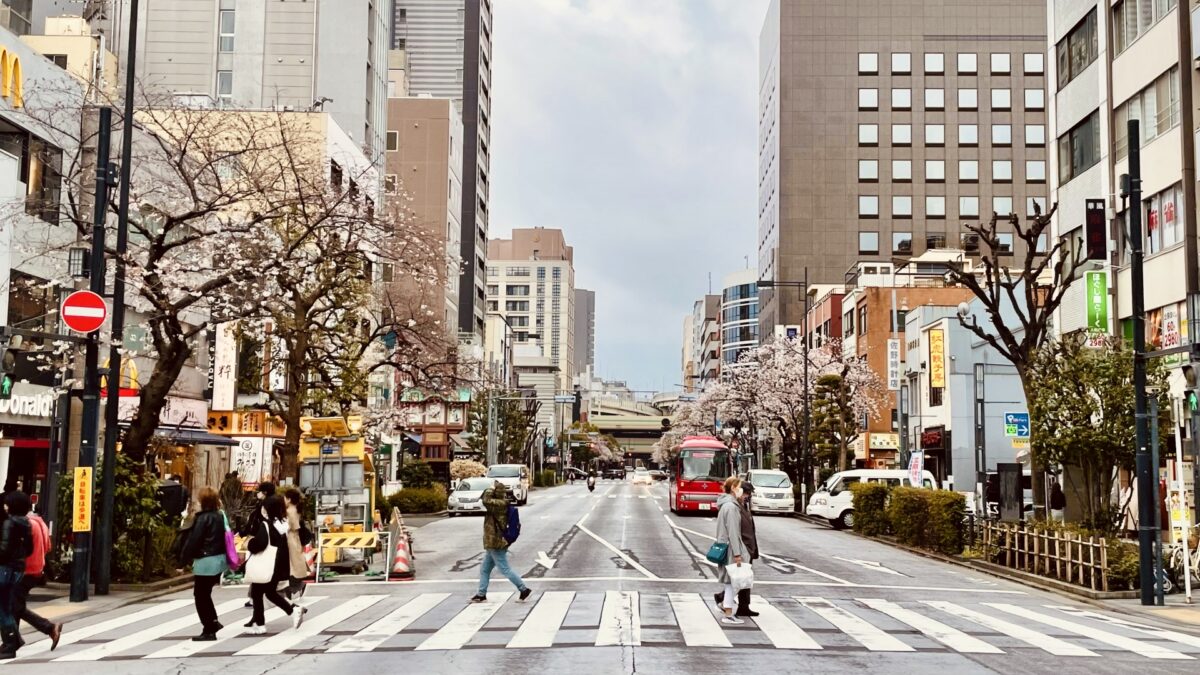
- Nihonbashi : The “Kilometer Zero” is a former and current commercial district where you can find several antenna shops from other prefectures and other traditional shops.

- Ginza : This luxury shopping district is not only great for finding upscale brands and products, but it is also a beautiful area to walk around and admire the creative modern architecture. Also, don’t forget to check out the basement of the Ginza Mitsukoshi department store with all kinds of high-end foods and drinks.
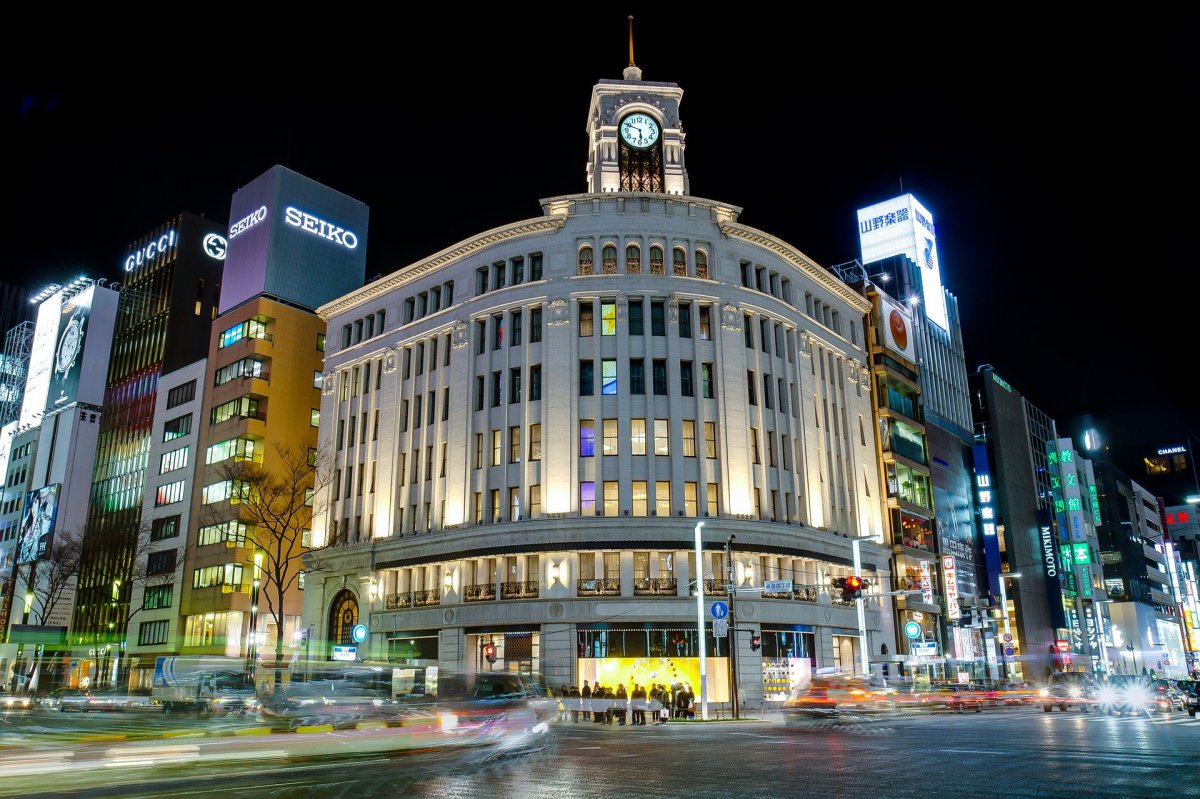
If you still have energy left for a typical Tokyo dinner, why not head to Yurakucho to sample typical izakaya food? These types of restaurants are popular amongst salarymen and office ladies who just finished working and need a bite after a long day.
- Tsukiji Fish Market : Tsukiji is one of the world’s biggest fish markets, and although the inner market is no longer in the area, the outer market is still much alive and bustling with 400 plus shops that sell the freshest seafood and eats. That being said, it can be hard to decide where to go and where to skip. Let us help you with our guided tour !
On day two, you will spend the entire day visiting some of the most iconic spots in Tokyo. Start in northern tourist highlight Asakusa to see the impressive Sensoji Temple and then go south to Akihabara to discover Tokyo’s funkiest subcultures and all things manga, anime, and games.
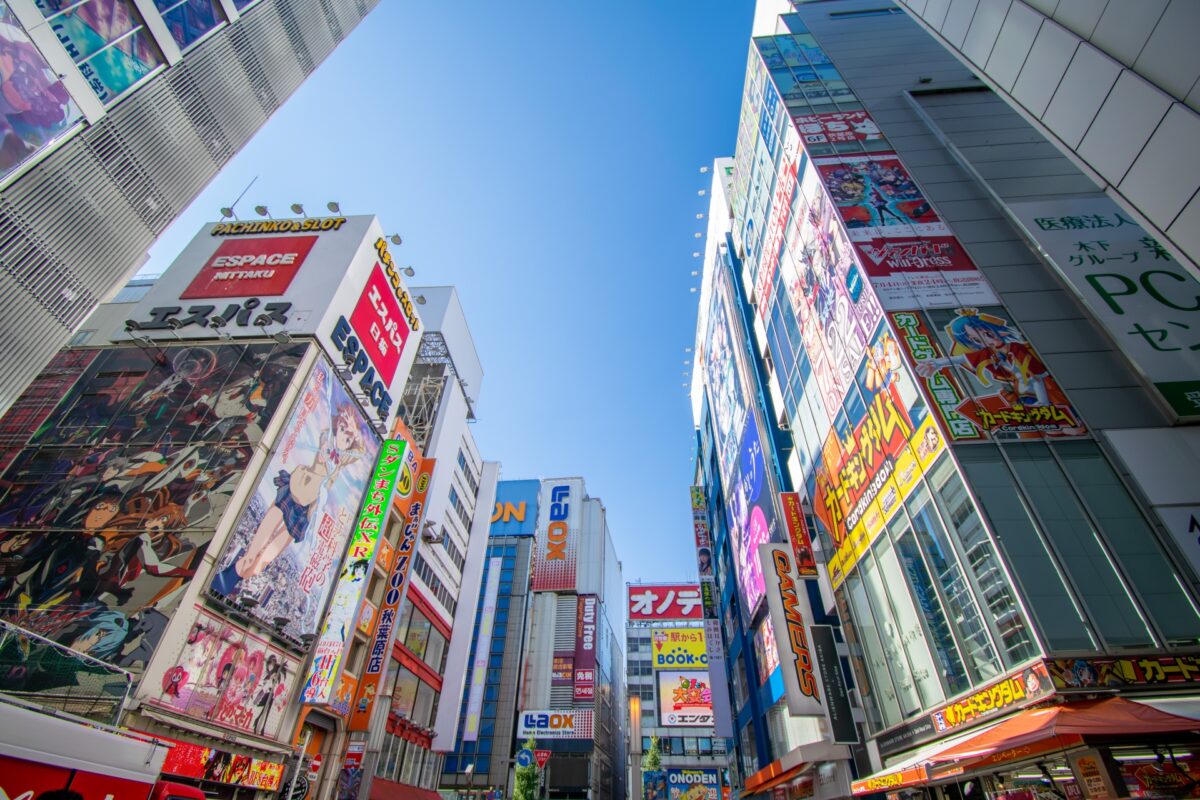
Next, hop on the train to dive into the throbbing heart of Tokyo’s youth culture on the western side of the city. Start in Shibuya to experience the famous scramble crossing, see the loyal dog Hachiko’s statue, and shop till you drop! Then you can walk or take the train just one stop to Harajuku , Tokyo’s funky fashion district that is especially loved by teens. Finish the day in the peaceful Meiji Shrine , an oasis of calm in the busy city. If you still have some energy to go out in the evening, Shinjuku is a must hit night spot . There are endless delicious eats and bars that make for a great time. If you’re unsure of how to maneuver the area, we have a fun and exciting bar hopping tour that will take you to the best spots!
Would you like to focus on enjoying your day without having to worry about logistics while getting interesting background information? Then booking one of our full-day private tours is a great option!
For day three, you will wake up early and take the train to Kawaguchiko , a pretty little village at the foot of Mt Fuji . This is the best place to admire the majestic Mt Fuji from multiple angles. Spots that you should definitely check out are the popular 5th Station which is as high as you can go by car/bus, the view from the platform on the top of the Kachikachi Ropeway, the Oishi Park with colorful fields, and Mt Fuji in the background, the quirky Kubota Museum, and the famous view of the Chureito Pagoda with the mountain.
You can also book a private tour of Kawaguchiko to see all the highlights around the area comfortably and efficiently.
This morning you will take the shinkansen from Tokyo Station or Shinagawa Station to Kyoto Station . If you arrive before lunchtime, you can drop off your luggage at your hotel and head to Nishiki Market for some delicious traditional street food like takotamago and yuba tofu skin. After lunch, let’s go to the impressive Kiyomizu-dera temple with its large wooden stage. Then you can walk through the artisan district Higashiyama near the temple all the way to Gion, where you can spot some maiko or geisha on their way to work if you are lucky.

If you can wake up early today, you should head to Fushimi Inari Taisha first thing. This famous shrine with many vermillion torii gates gets crowded in the daytime but is nice and tranquil earlier in the morning before tour groups arrive. Next up is Arashiyama , famous for its mysterious bamboo forest and the beautiful Tenryuji temple.
After lunch, let’s go to the Kinkakuji Temple , also known as the Golden Pavillion, and the Ryoanji, with its Zen garden full of stones. If you still have time, you can stop by Nijo Castle or the Imperial Palace .
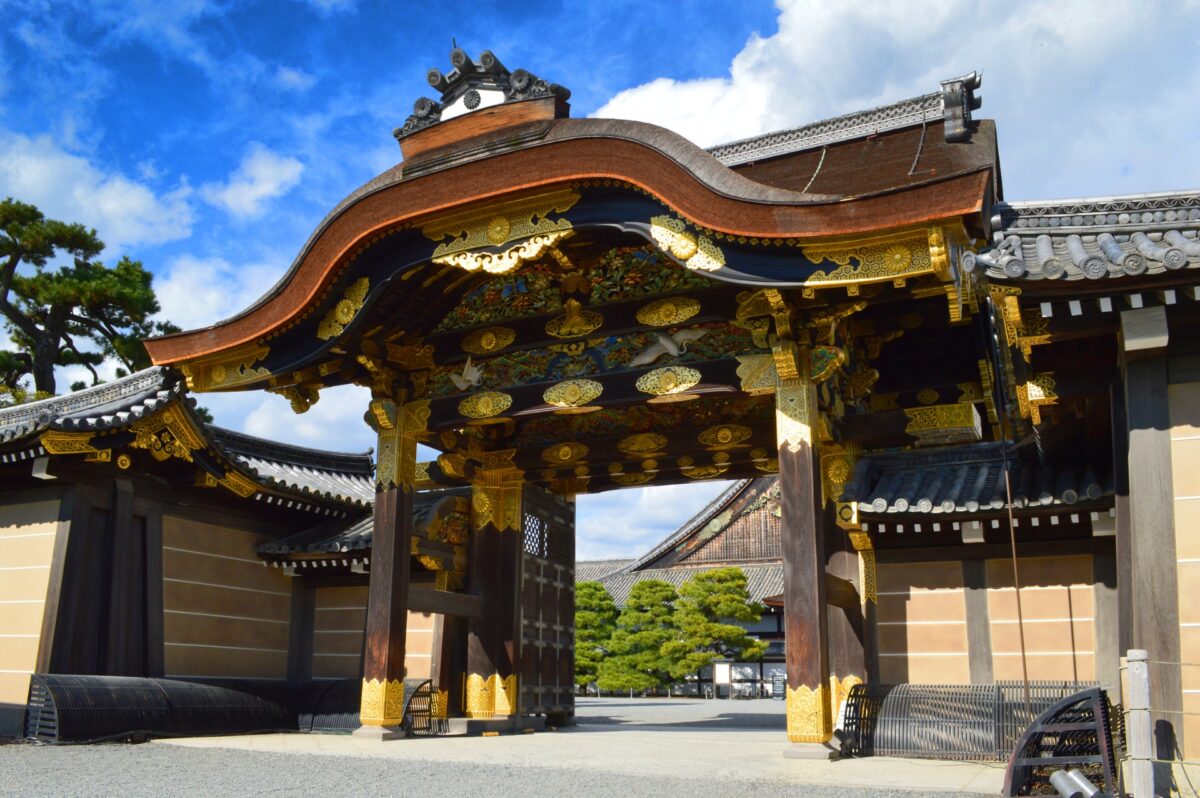
If you’re a bit worried about being able to hit all of these spots in the most timely manner, it is always a good idea to book a day tour with one of our expert English speaking guides. Not only will you be able to do everything more efficiently, but you will also get a much better understanding of each spot you go to as well. Have a look below!
Today, you’re taking a trip outside of Kyoto to Nara , Japan’s first capital city. Nara’s main places of interest are around Nara Park and Todaiji Temple , which houses a 15-meter-tall bronze Buddha statue . The park is teeming with semi-tame deer who are all too happy to take some special deer crackers off your hands. As some of them were raised well, there are some deer who will politely bow to you if they want a cracker. The deer are the symbol of Nara city and are seen as messengers from the gods.
In the afternoon, we recommend a stop at Uji , a village that is famous for its production of high-quality Japanese tea and its connection to the Tale of Genji, one of Japan’s classic books. The Byodoin temple is also in Uji, this temple is known for being the image shown on the 10-yen coin. Late in the afternoon, it is time to travel to Osaka, which has many of its attractions best enjoyed in the evening. Osaka is also known as the “ Kitchen of Japan ,” and for good reasons, Dotonbori, Shinsekai, and Kitashinchi boast hundreds of smaller and larger restaurants with the most delectable dishes of Japanese cuisine.

Depending on when your flight leaves, you may still have some time left to explore Osaka . Many people don’t want to miss Osaka Castle for a glance at the city’s illustrious history and a ride up with the elevator in the Umeda Sky Building for an amazing city view and interesting modern architecture. When it is time to head to the airport, you can reach KIX by train within 50 minutes from Shin-Osaka Station or by bus from Namba Station within 45 minutes.
Does reading this itinerary spark your interest in traveling to Japan? There is so much to see, do, and experience in the Land of the Rising Sun that it can be hard to choose which activities and cities to include in your travel plan! Booking a private guide who can always adjust the itinerary to fit your interests and needs makes the planning of your Japan trip much easier. Your local expert guide is also always happy to give you insider tips on restaurants and sightseeing in their city as well.
Japan Wonder Travel is a travel agency that offers guided tours throughout Japan. From private walking tours to delicious Food and Drink tours, we can help you organize the best tours just for you! If you want to explore Japan and learn more about the history and backstories of each area you are visiting, our knowledgeable and friendly English speaking guides will happily take you to the best spots! In addition, we can provide you with any assistance you may need for your upcoming trip to Japan, so please feel free to contact us if you have any questions or need some help!
▶ Tokyo Tsukiji Fish Market Food and Drink Tour Explore the most lively and popular fish market in Tokyo and try some of the local’s favorite street foods and sake with one of our friendly and knowledgeable English speaking guides!

▶ Tokyo 1–Day Highlights Private Walking Tour (8 Hours) There’s no better way to explore an area than taking a tour with a knowledgeable local guide. You will have the chance to learn about the history and interesting background stories of Tokyo, as well as discover some hidden gems which can be hard to do without a guide.

▶ Mt. Fuji Day Trip Bus Tour from Tokyo Experience the breathtaking views of Mt. Fuji by visiting the highlights of the area on our guided sightseeing bus tour! Departing from Shinjuku in central Tokyo, you can travel comfortably to all of the best spots in the area by bus.

▶ Kyoto Private Full Day Walking Tour On this full-day private tour of Kyoto, you will be able to see the highlights of Kyoto in just one day and at the same time develop a deeper understanding of both the culture of the area and Japan as a whole.

Follow us on Instagram , Facebook , Twitter , and TikTok for more travel inspiration. Or tag us to get featured!
Happy traveling!
Stay informed of the best travel tips to Japan, the most exciting things to do and see, and the top experiences to have with the Japan Wonder Travel Newsletter. Once every two weeks we will introduce you to our latest content.
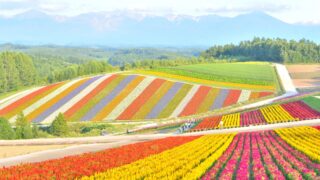
- Popular destinations
- Hidden places in Japan
- Tours and workshop
- Food and drink in Japan
- Itinerary in Japan
- Places to visit in Tokyo
- Food and drink in Tokyo
- Seasonal events
- Tours & workshops
- Tokyo This Week
- Day trip from Tokyo
- Itinerary in Tokyo
- Places to visit in Kyoto
- Food and drink in Kyoto
- Itinerary in Kyoto
- Day trip from Kyoto
- Travel tips
- Accommodation
- Cultural tips
- Transportation
- Tokyo Tours
- Kyoto Tours
- Kimono Rental
- Fukushima Tours
- Mount Fuji Tours
- Tour Package
- Media Kit(English/日本語)

- Southeast Asia
- North America
- Central & South America
- Middle-East
- Australia & South Pacific
- Luxury Awards
- Family Travel
- Solo Travel
- Beaches & Islands
- Zodiac Travels
- Wellness & Spas
- Accessories
- Points and Miles
- #TheGreenEdit
- T+L Tastemakers
- Sustainable Travel
- T+L Experiences
- Destinations
Exploring Japan: A 10-Day Itinerary Packed With Fun And Adventure For First-Timers
From rejuvenating onsen baths to slurping delicious ramen, here's the perfect 10-day japan itinerary to ensure you don't miss out on anything.
By: Sharon Alphonso Published: Apr 08, 2024 04:05 PM UTC
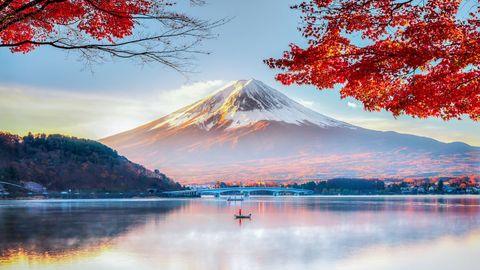
For many travel enthusiasts, the dream of visiting Japan is almost universal. The island country is renowned for its rich culture, modern architecture, Zen lifestyle, clean streets, safety, efficient public transport, precise craftsmanship, and top-notch hospitality. Not to mention, the food is simply delicious! Did you know that Japan boasts some of the most Michelin-starred restaurants in the world? This is because of its fresh, flavourful ingredients and diverse culinary offerings. If you’re planning a trip to Japan soon and need assistance with your itinerary, we’ve got you covered!
From white rocky beaches to scenic hot spring resort towns, explore our guide to the most beautiful places to visit in Japan .
The best time to visit Japan
Japan experiences four seasons, each offering its distinct array of events and activities. While spring and autumn are popular among tourists, summer and winter also have plenty to offer. Here’s what to expect during each season:
Spring (March-May): Cherry blossoms, Japan’s national flower, symbolise the end of winter and the fleeting nature of life. Cherry blossom trees bloom at different times each year, so planning your Japan itinerary around the cherry blossom forecast is advisable.
What to wear: Spring coat, turtle-neck sweaters, comfy sneakers, lightweight sweaters, and fleece pants.
Summer (June-August) : Japan’s summers are usually warm and humid. It’s the perfect time to wear a cotton summer kimono (yukata), indulge in shaved ice dessert (Kakigori), savour cold buckwheat noodles (zaru soba), and attend Japanese food and fireworks (hanabi) festivals.
What to wear : Sleeveless tops, cotton tees, linen pants, sun hats, sports sandals, sheer jackets, shorts, and jeans.
Autumn (September-November) : If you prefer milder temperatures, autumn is the ideal time to visit Japan. The weather is pleasant, and you can witness the stunning fall foliage as leaves change colours to vibrant shades of red, orange, and yellow.
From Kyoto To Kashmir, explore our guide to Asia’s diverse fall foliage wonders .
What to wear : Long-sleeved shirts, corduroy jackets, cardigans, fluffy jackets, sweaters, knitwear skirts, sneakers, warm leggings and ankle boots.
Winter (December-early March): Japan transforms into a magical wonderland during winter, thanks to the winter illuminations around Christmas and New Year . These illuminations aren’t limited to major cities like Tokyo, Kyoto, or Osaka; you can also find them in smaller towns across Japan.
Here’s our guide to unlocking a dreamy winter in Japan .
What to wear: Down jackets, warm leggings, fluffy sweaters, knee-high boots, ankle-high outdoor shoes, knee-high socks, earmuffs and cashmere scarves.
Related Stories

This Japanese City Is The Birthplace Of Miso Ramen — And Its Best Spot Is In A Tiny...
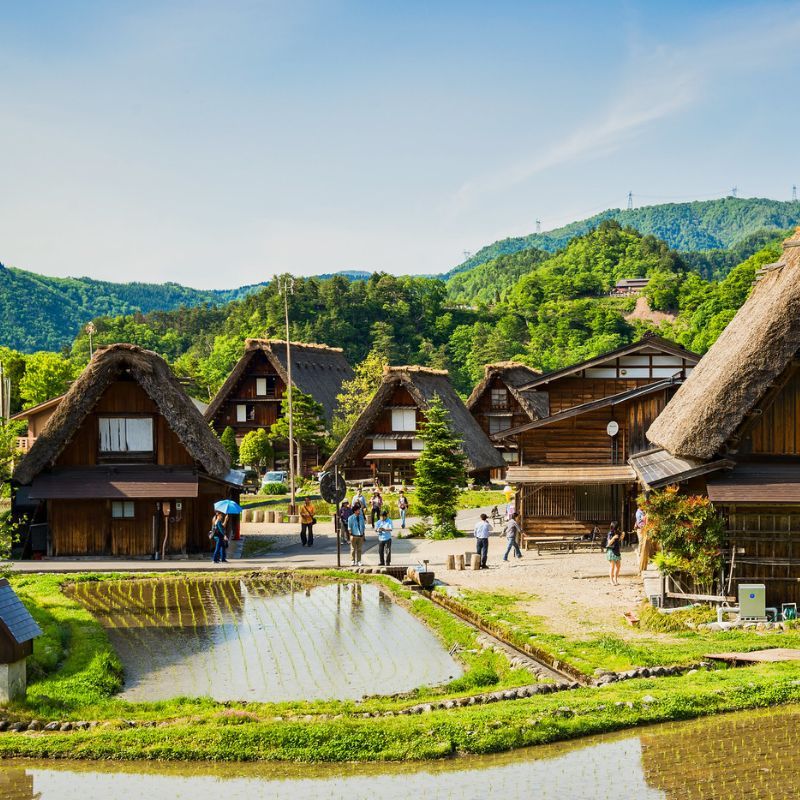
Where Centuries Melt Away: Discover The Charms Of Japan's Beautiful Villages
Japan itinerary – arriving in tokyo.
Tokyo has two international airports: Haneda and Narita. Haneda Airport is within the city, while Narita Airport is in Chiba prefecture, further outside Tokyo. Upon arrival, buying a Pasmo or Suica IC Card at the airport is recommended for convenient travel on local trains and buses throughout Japan.
If you arrive at Haneda Airport , accessing taxis, local trains and buses in Tokyo is straightforward. However, since Narita is far from central Tokyo, the quickest way to travel is by train. The Narita Express or Keisei Skyliner will get you to central Tokyo in approximately an hour. If you’re driving or riding a taxi from Narita to Tokyo, expect the journey to take 2-3 hours.
Here’s what your ideal Japan itinerary should look like.
Day 1 – Tokyo
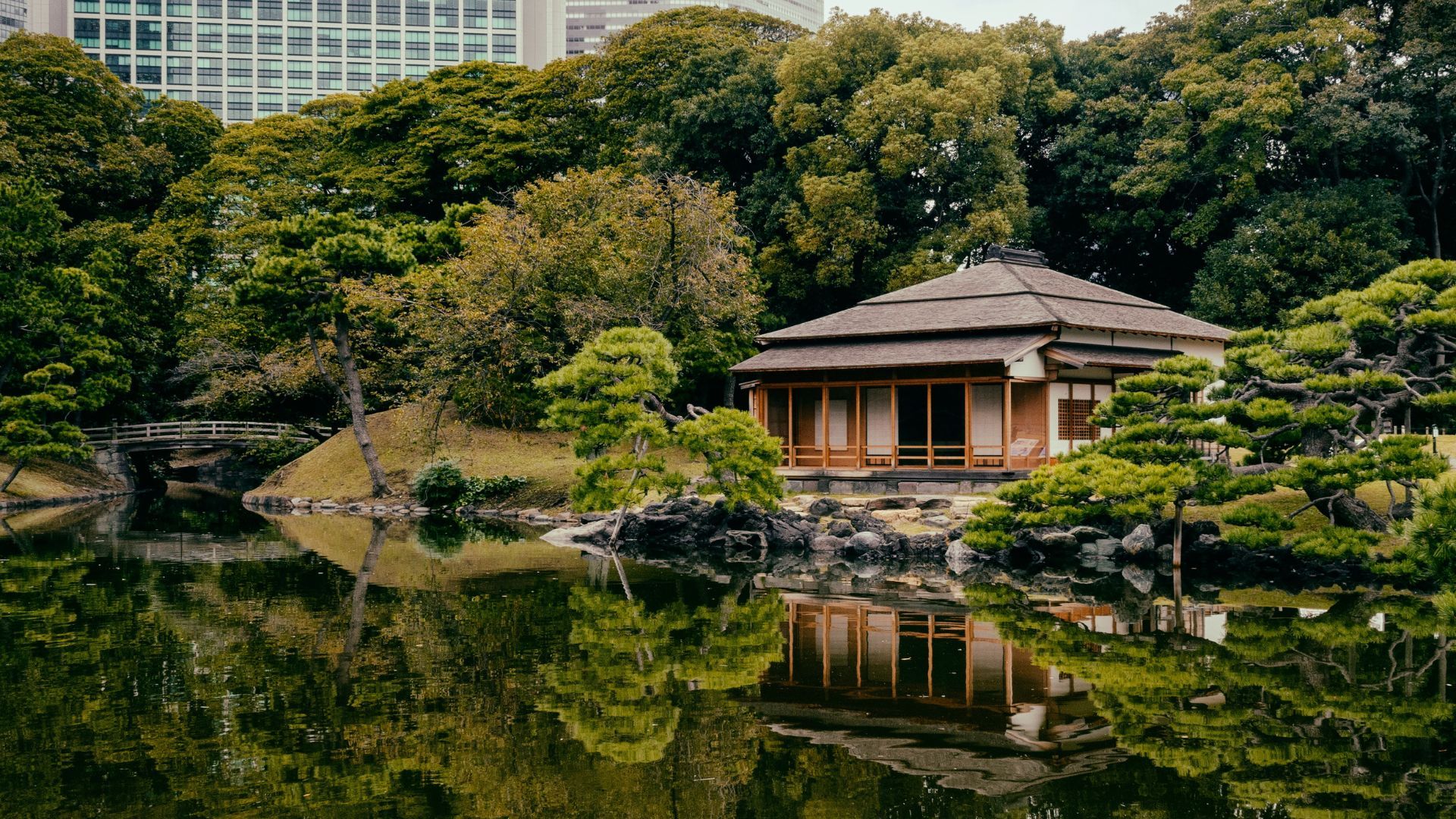
If you arrive early in Tokyo, start your day with a fresh seafood breakfast at the Tsukiji Outer Market. We recommend trying the omelette sandwich (tamagoyaki sando) at Tsukiji Shouro, the jumbo mackerel rice ball (onigiri) at Onigiri-ya Marutoyo, sushi at Sushi Dai, and pork dumplings at Suga Shoten.
Hama-rikyu Gardens is a 20-minute walk from the Tsukiji Outer Market. This beautiful oasis of greenery offers a glimpse into an Edo-period-style zen garden. Remember to visit the Japanese tea shop inside the garden to enjoy matcha tea paired with Japanese sweets (wagashi).
TeamLab Planets is just a 10-minute taxi ride from Hama-rikyu Gardens. It is an interactive digital museum that seamlessly combines elements of nature and technology. Make a booking here .
For your evening entertainment, you have two options. You can take a 15-minute walk to LaLa Port in Toyoso, a popular dining and shopping destination, or head to Odaiba Seaside Park. To reach Odaiba Seaside Park, take the train from Shin-Toyosu Station (near TeamLab Planets) to Odaiba-kaihinkōen Station. From there, it’s a short 5-minute walk. Enjoy stunning views of Tokyo’s Rainbow Bridge and the Statue of Liberty. Consider staying at one of the nearby hotels in Odaiba, such as Hotel Hilton , Grand Nikko Tokyo Daiba and Hotel Trusty Tokyo Bayside.
Book your stay at Hotel Hilton, Tokyo via Agoda.com
Book your stay at Hotel Hilton, Tokyo via Booking.com
Day 2 – Tokyo
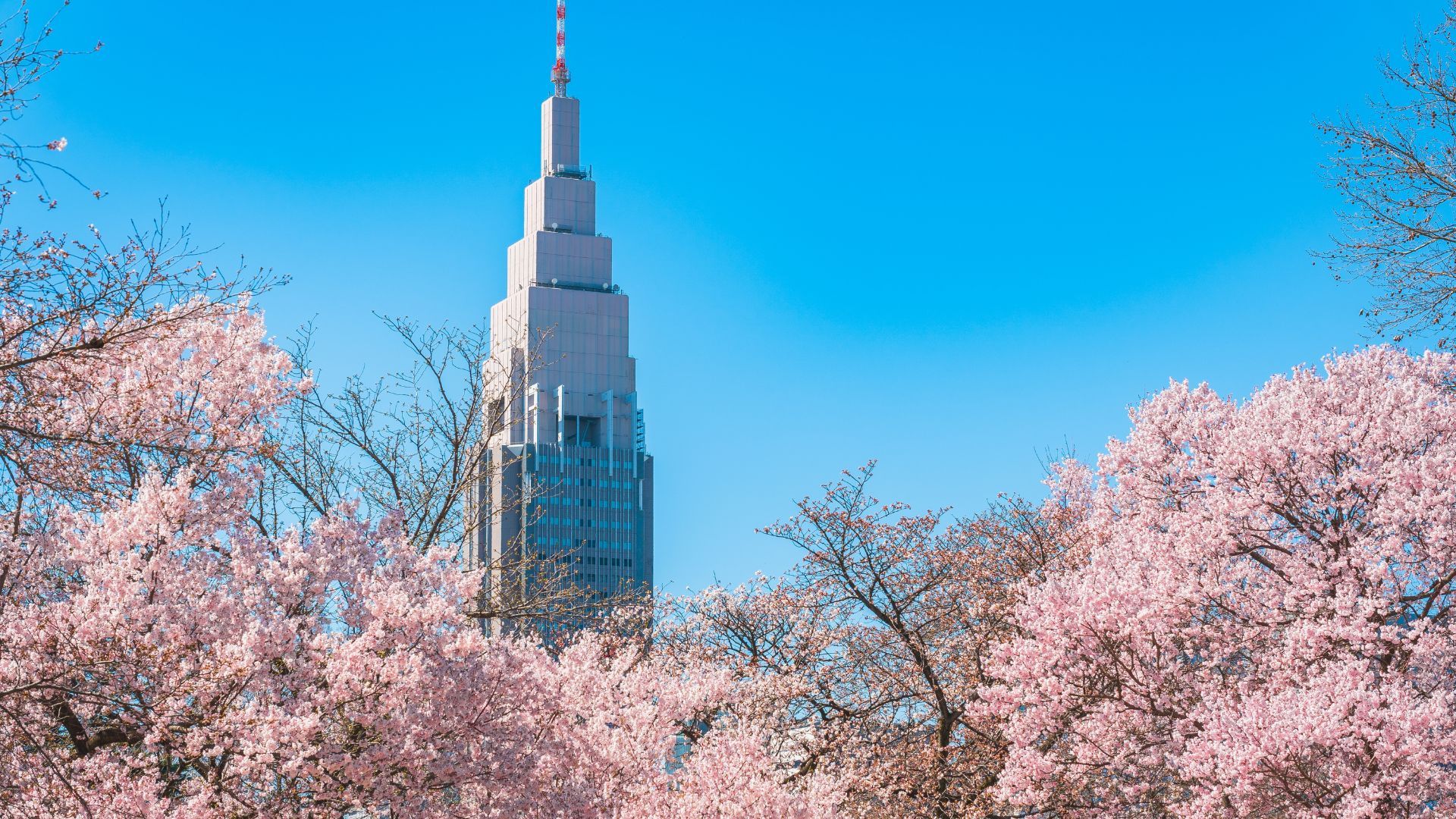
Begin your day by taking a train from Tokyo’s Teleport Station in Odaiba to the Shibuya Station. Shibuya’s top attractions include Shibuya Scramble Crossing, Meiji Shrine, Yoyogi Park, Hachiko Memorial Statue, and Shibuya Sky. Since Shibuya tends to get crowded later in the day, we recommend exploring it in the morning.
Spend your afternoon in Shinjuku (a 25-minute train ride from Shibuya). Stroll around Shinjuku Gyoen, one of the best spots to view cherry blossoms and fall foliage. You grab lunch at Shinjuku Golden Gai, a narrow district with tiny bars and restaurants. Explore our guide to Tokyo’s delicious and healthy vegetarian food options .
From Higashi-Shinjuku Station, take the Oedo Line subway to Asakusa. Visit Tokyo’s oldest Buddhist temple, Sensō-ji, and its surrounding area teeming with traditional craft shops, street food stalls, bars, arcades and shops. These are the best ramen spots in Tokyo . Don’t miss the opportunity to view Tokyo Skytree from the temple. You can also enjoy a good view of Tokyo Tower from Asakusa’s Daimon Subway Line.
Consider staying at APA Hotel in Asakusa for a budget-friendly option, or check into The OneFive Tokyo Hotel Shibuya if you prefer to stay in Shibuya – it’s in the heart of Tokyo and just a 10-minute walk from Shibuya Station. If you are on a strict budget, capsule hotels like The Global Hotel Tokyo in Shinjuku offer modern amenities like free WiFi, 24-hour reception, breakfast and powder rooms.

Here's Why You Should Visit Tokyo During These Months
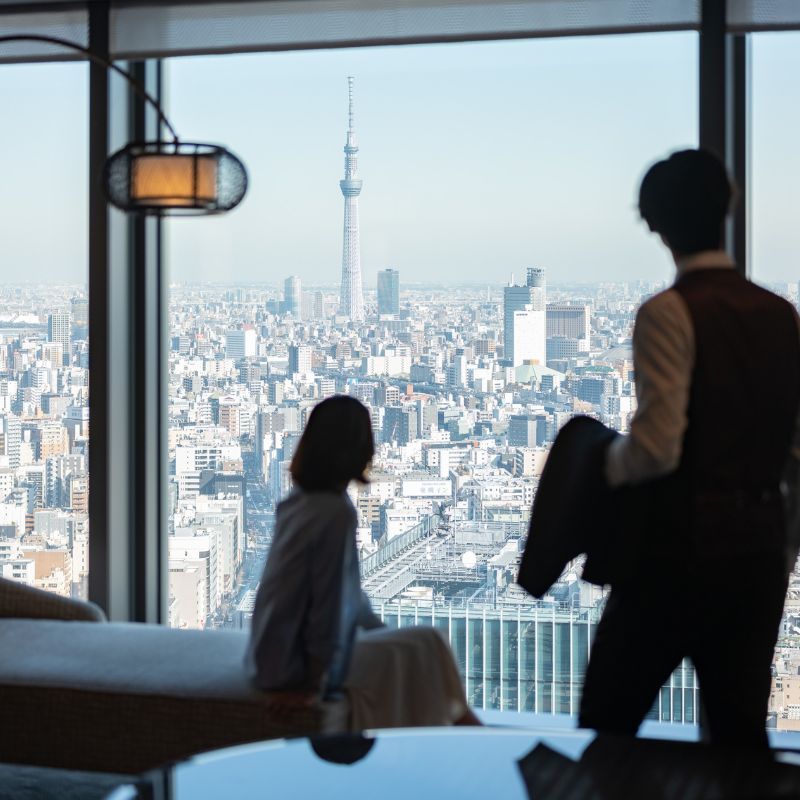
Best Hotels In Tokyo To Experience Unmatched Luxury
Book your stay at The OneFive Tokyo Hotel Shibuya via Agoda.com
Book your stay at The OneFive Tokyo Hotel Shibuya via Booking.com
Day 3 – Tokyo
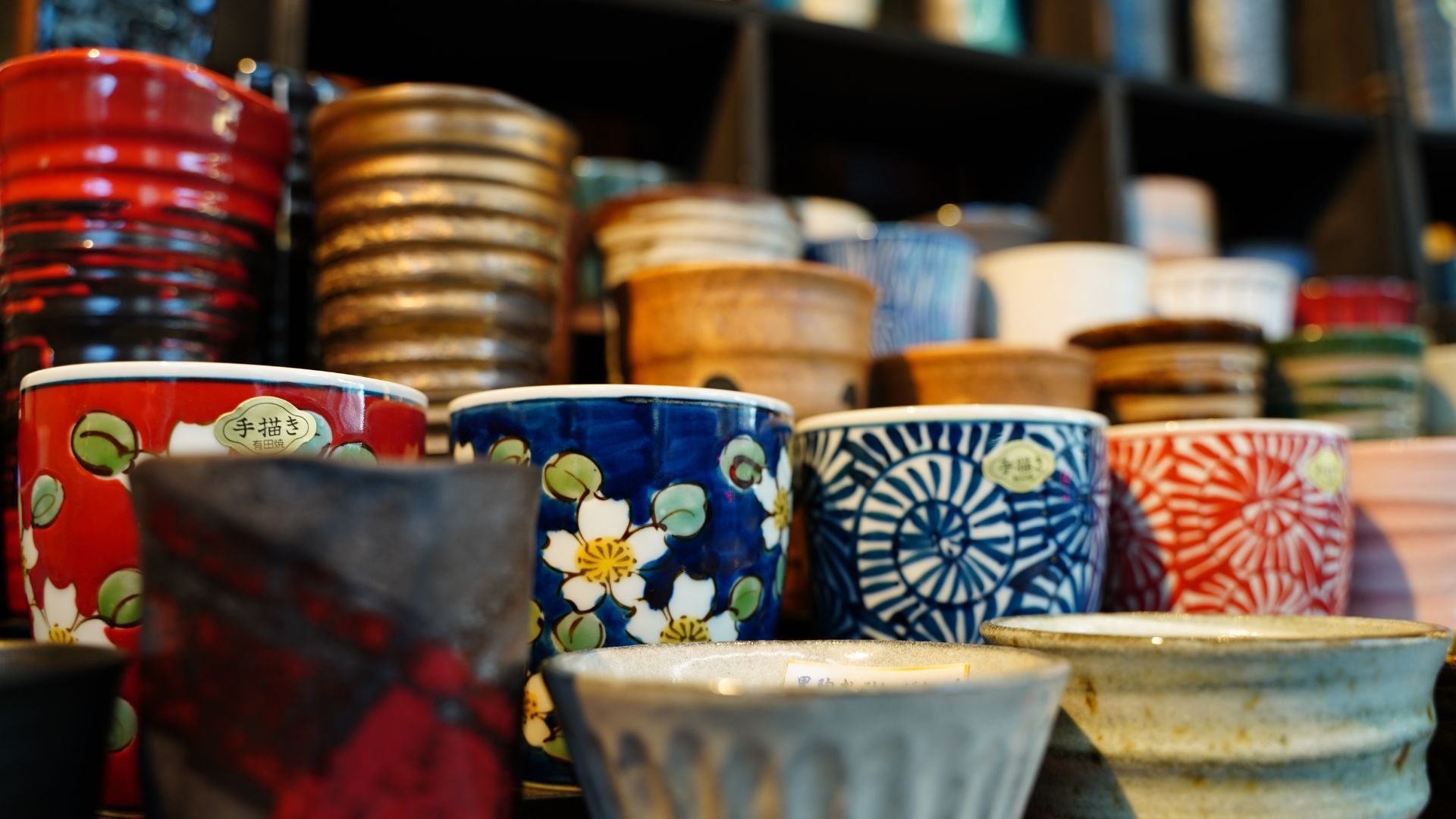
Devote an entire day on your Japan itinerary to shopping in Tokyo.
- From high-end beauty products to designer fashion labels to luxury electronics, Chuo-dori in Ginza and Omotesando are shopping havens.
- You will find the best deals at Yodobashi Camera in Akihabara and Bic Camera at Shinjuku West Exit for phones, laptops and house gadgets.
- For manga comics and anime merchandise, Akihabara, Nakano Broadway and Ikebukuro will spoil you for choice.
- If you love Japanese pottery and kitchenware, bookmark Kappabashi Street.
- Travel to Harajuku, Shibuya, Shinjuku, and Shin-Okubo for the latest fashion, beauty, and food trends. For Japanese-themed souvenirs, shop at Nakamise-Dori in Asakusa, Tokyo Skytree in Sumida, Loft in Shibuya and Mega Don Quijote in Shibuya.
- In Ginza, Itoya and Loft offer the best selection of stationery. Daiso Can Do, and Seria are all great 100 Yen stores if you’re looking for more affordable stationery options.
- If you have free time in the evening, we recommend visiting Tokyo Skytree, Shibuya Sky or Tokyo Tower to get a bird’s-eye view of Tokyo.
Japan itinerary day 4 – Tokyo
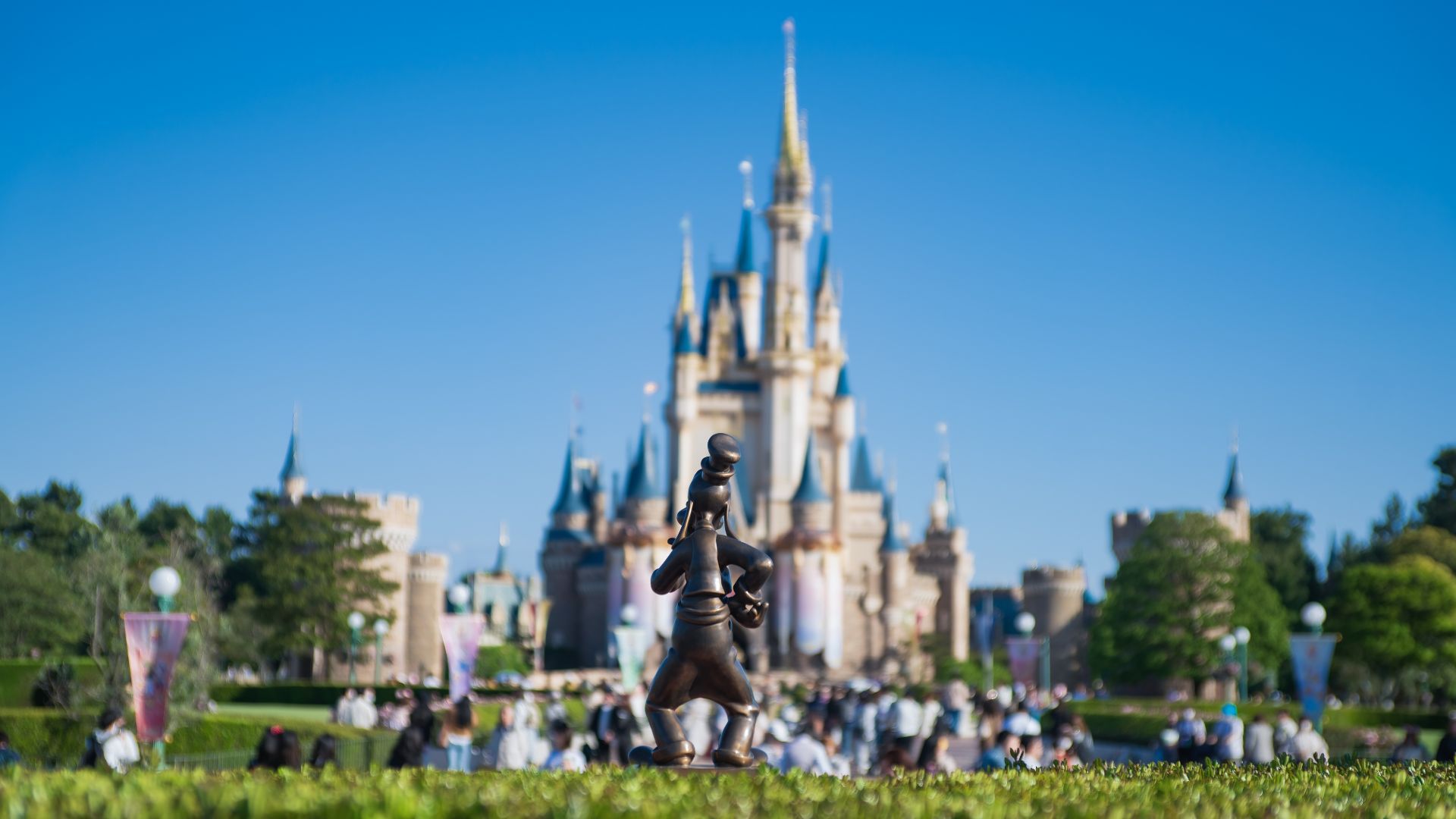
You must add Tokyo Disneyland or Tokyo DisneySea to your Japan Itinerary. Whether you are a Disney fan or not, these parks offer the most magical experience for visitors of all ages. Tokyo Disneyland is ideal for families with children, while DisneySea caters more to adults. Book your tickets online in advance to avoid long queues at the ticket counter.
Explore our comprehensive guide to things to do in Tokyo in 2024 .
Day 5 – Lake Kawaguchiko
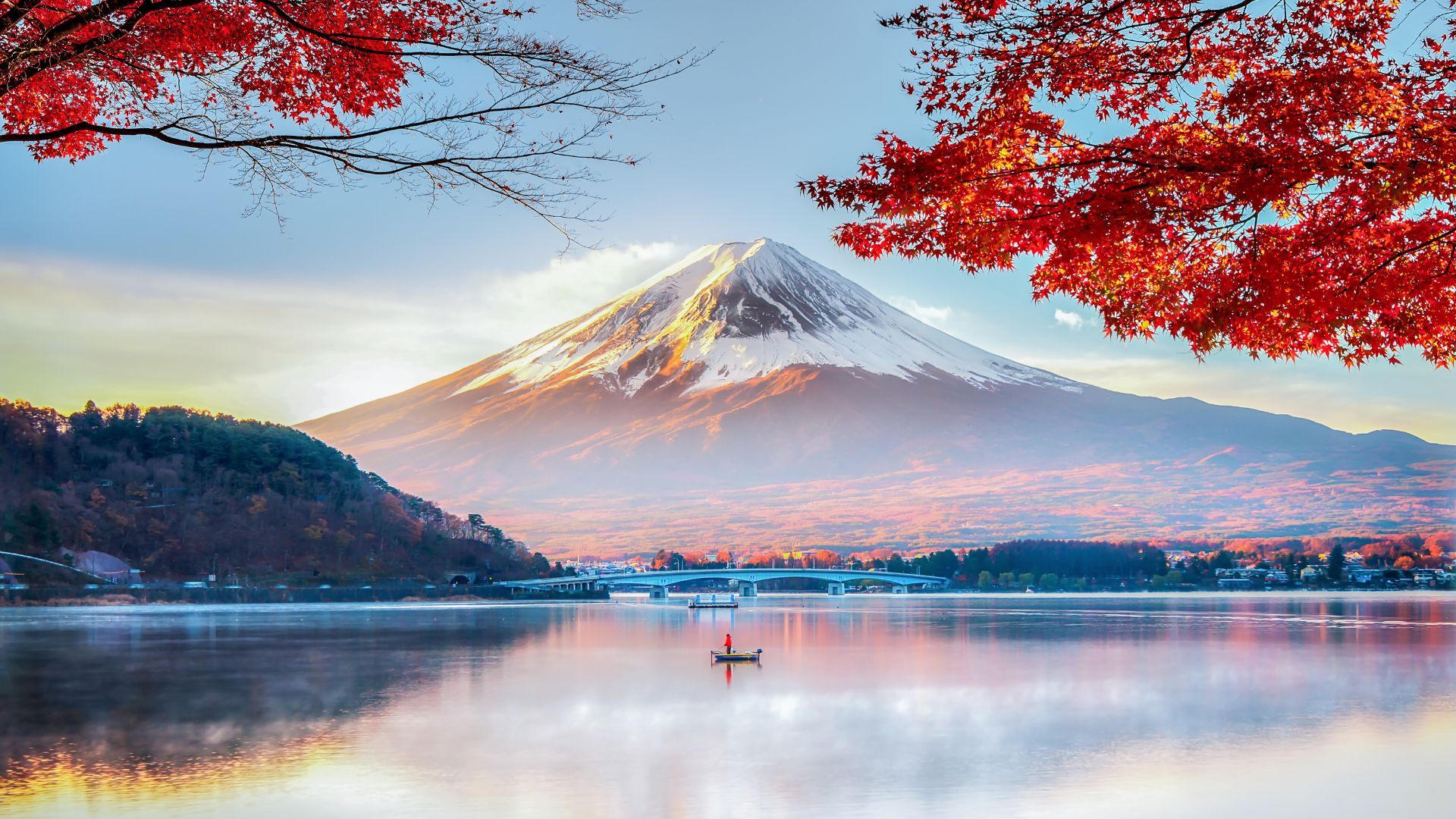
If the weather is sunny, take a day trip from Tokyo to Lake Kawaguchiko via a highway bus to catch a glimpse of Mt. Fuji . While in Kawaguchiko, visit Oishi Park, Kawaguchiko Music Forest Museum and Arakurayama Sengen Park.
For those with a driver’s license, renting a car offers the flexibility to drive up to the fifth station of Mt. Fuji. Ride the Mt. Fuji Panoramic Ropeway for breathtaking views of Mt. Fuji and Lake Kawaguchiko. Some of the best hotels in Kawaguchiko with magnificent views of Mt.Fuji include Ubuya , Mizuno and Mt.Fuji Glamping Villa .
Book your stay at Ubuya via Agoda.com
Book your stay at Ubuya via Booking.com
Japan itinerary day 6 – Kyoto
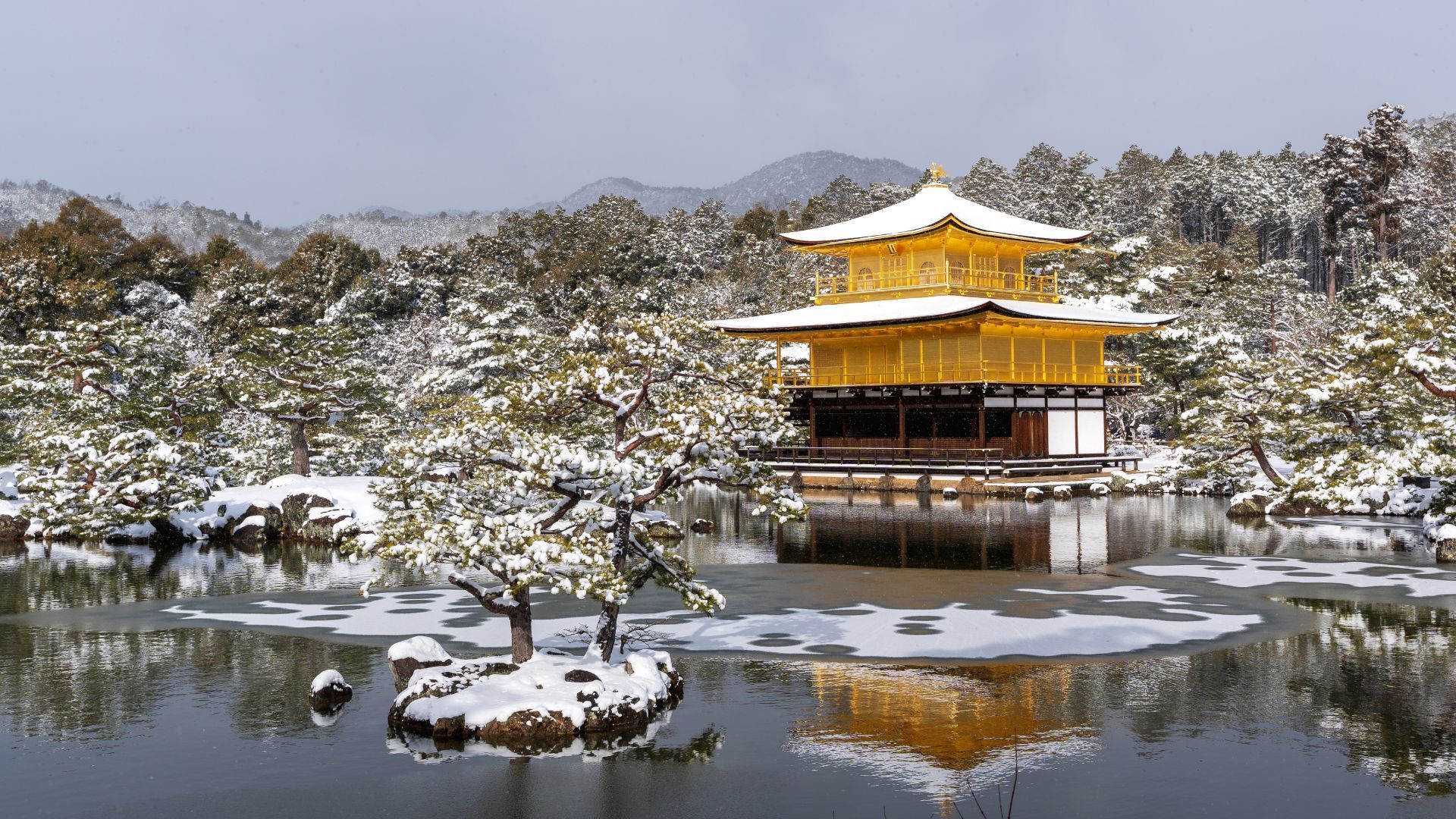
There is no direct route from Lake Kawaguchiko to Kyoto. The most cost-effective and reliable option is to take a bus from Kawaguchiko Station to Mishima Station, then catch the bullet train (or shinkansen) to Kyoto. The journey from Mishima to Kyoto takes approximately 2 hours.
Add Kyoto to your Japan itinerary for its laid-back ambience, rich Japanese culture, and traditional architecture. Begin your exploration of Kyoto by visiting Kinkaku-ji, one of Kyoto’s most iconic temples, featuring a stunning three-tiered pavilion covered in gold leaf. Take your time exploring serene zen rock gardens like Enkouji, Daitokuji Temple, Ryoanji, and Tofukuji.
Manga lovers must visit the Kyoto International Manga Museum , which boasts an extensive collection of Japanese manga, including a decent selection in English.
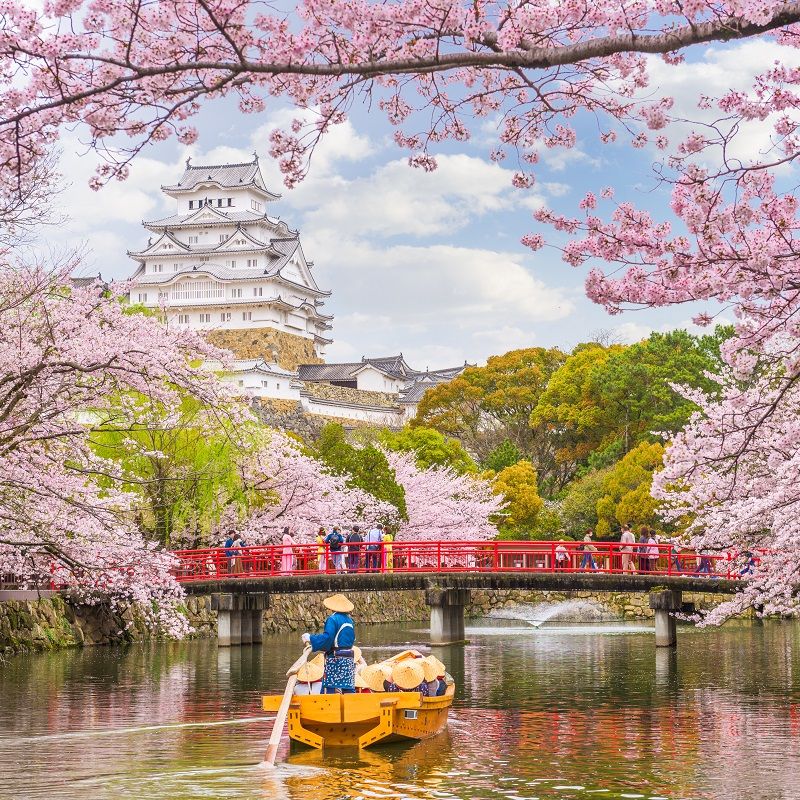
Explore The Historical Side Of Japan Through These UNESCO World Heritage Sites
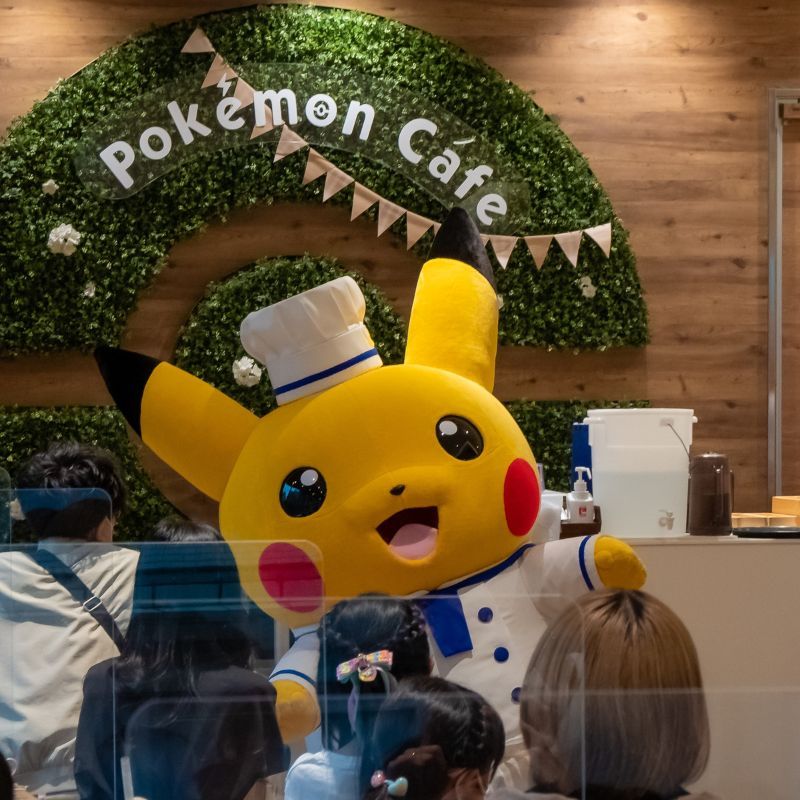
From Entertaining to Eerie, These Are The Most Unique Cafes In Japan
Day 7 – kyoto.
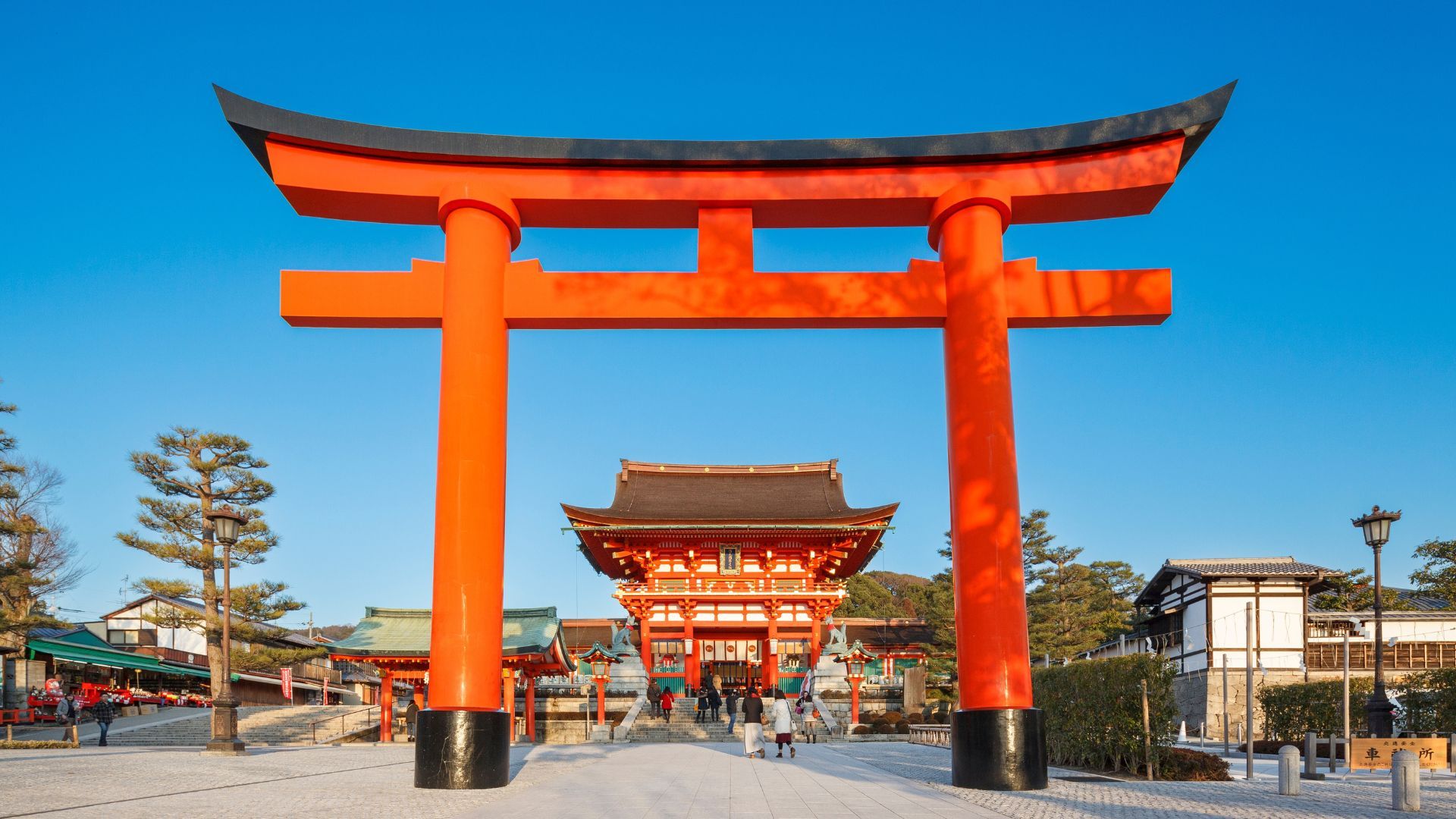
Wear your most comfortable sneakers as you set off on a day of walking through the Arashiyama Bamboo Forest and Fushimi Inari. We recommend visiting the bamboo forest early in the morning (around 7-9 am) to avoid crowds. Take a 45-minute stroll along the 500-metre-long path, surrounded by bamboo stalks. To enhance your experience, you can rent a kimono or book a rickshaw tour . If you get hungry, there are plenty of restaurants, food stalls, and cafes around the bamboo forest.
Next up on your Japan itinerary should be Fushimi Inari, located just outside the JR Inari station. Marvel at the long stretch of iconic vermillion torii gates lining the pathway. There’s a shrine at the base of the mountain, and to reach there, you must walk through the 1,000 torii gates. It takes two hours to reach the top. Don’t worry, as there are shrines and stalls along the way where you can take a break.
After a day of exploring, treat your feet to relaxation at Arashiyu Foot Massage & Spa , where you can experience Japanese hospitality and culture at its finest along with foot massages and refreshments.
For an early dinner, you can either dine at Gion’s main Hanamikoji Street or sample local delicacies at Kyoto’s 400-year-old Nishiki Market.
Here’s our explainer on Japanese Onsens and essential etiquette tips before visiting one .
Most hotels in Kyoto offer spacious and aesthetically pleasing accommodations. Consider staying at Six Senses Kyoto for a boutique hotel experience with wooden and neutral interiors, or opt for Kyoto Nanzen-ji Garden for traditional Japanese accommodations with rooms overlooking a serene Japanese garden. Budget-conscious travellers can find comfortable accommodations at Kyoto Hana Hostel , conveniently located just a 5-minute walk from Kyoto Station.
Book your stay at Nanzen-ji Garden, Kyoto via Agoda.com
Book your stay at Nanzen-ji Garden, Kyoto via Booking.com

A T+L Guide On Where to Dine in Kyoto, Japan
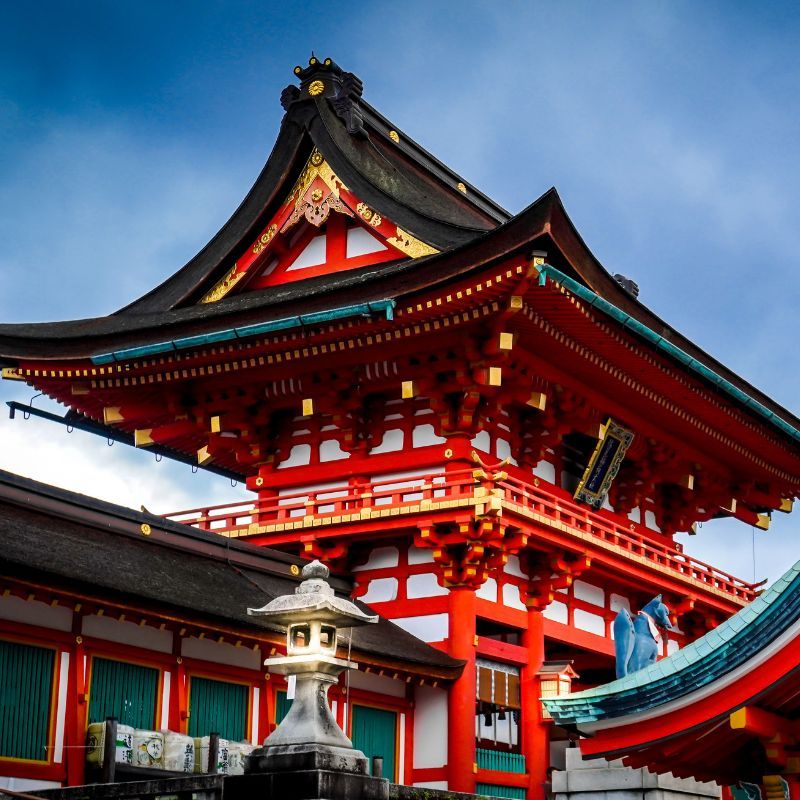
Top Ten Best Things To Do In Kyoto
Japan itinerary day 8 – nara.
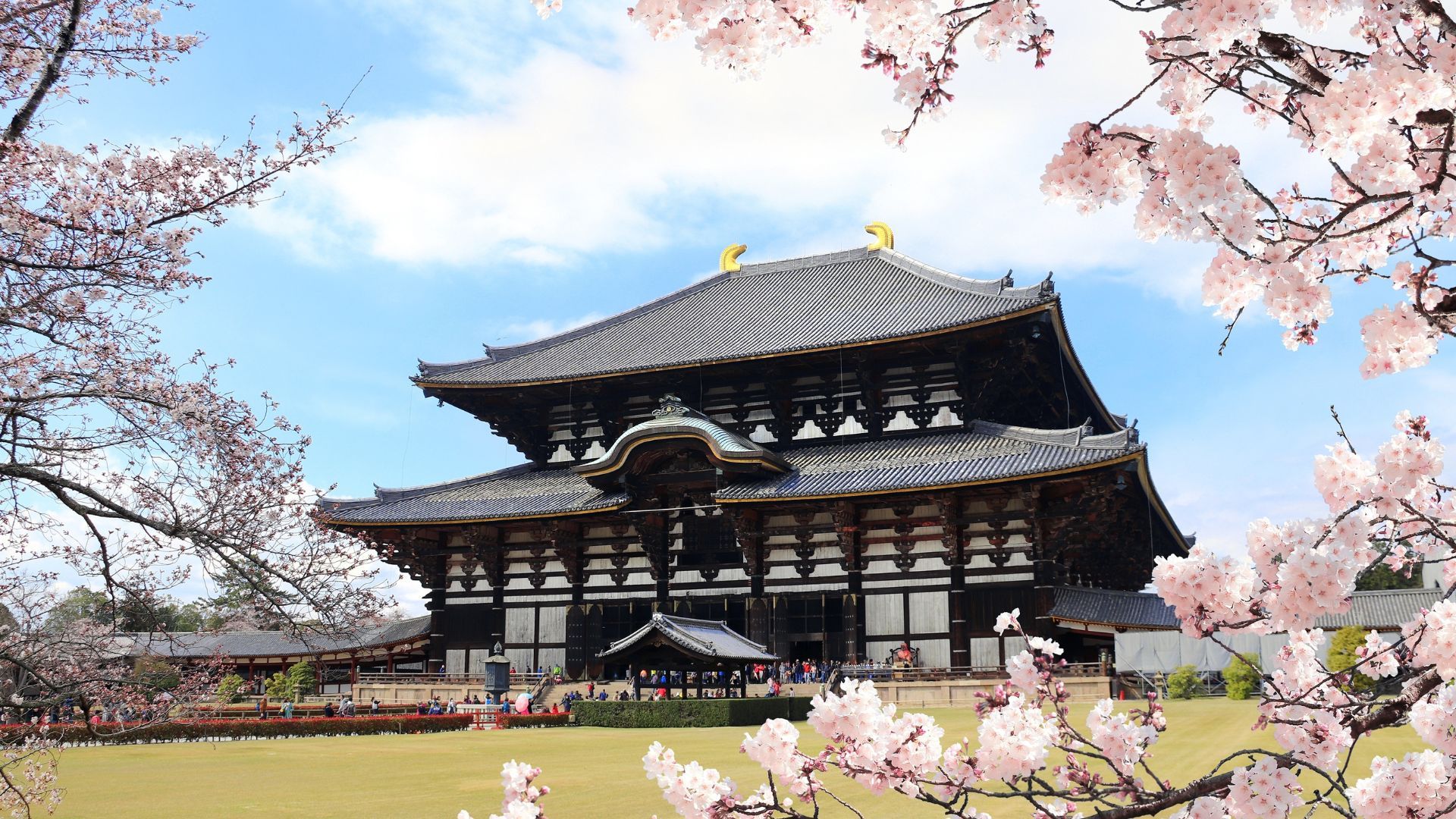
From Kyoto Station, hop on the Kintetsu Kyoto Line Express to Nara. The journey takes less than an hour, with fares priced at under JPY 1,000. Nara, once the capital of Japan, is home to famous heritage sites like the Kasugataisha Shrine, Kohfukuji Temple, and Todaiji Temple, a UNESCO World Heritage Site .
Don’t miss the opportunity to visit Nara Park, where over 1,000 wild deer roam freely. Visitors can feed them special biscuits (shika senbei) and capture memorable photos with these friendly creatures.
Nearby, Sanjo-dori offers a shopping experience filled with traditional crafts, sweets, Japanese tableware, and souvenirs. Consider booking accommodations near Nara Park for convenience, with options including Iroha Grand Hotel Kintetsu Nara Ekimae , Hotel Tempyo Nara Machi, and Nara Park Hotel .
Book your stay at Nara Park Hotel via Agoda.com
Book your stay at Nara Park Hotel via Booking.com
Day 9 – Osaka
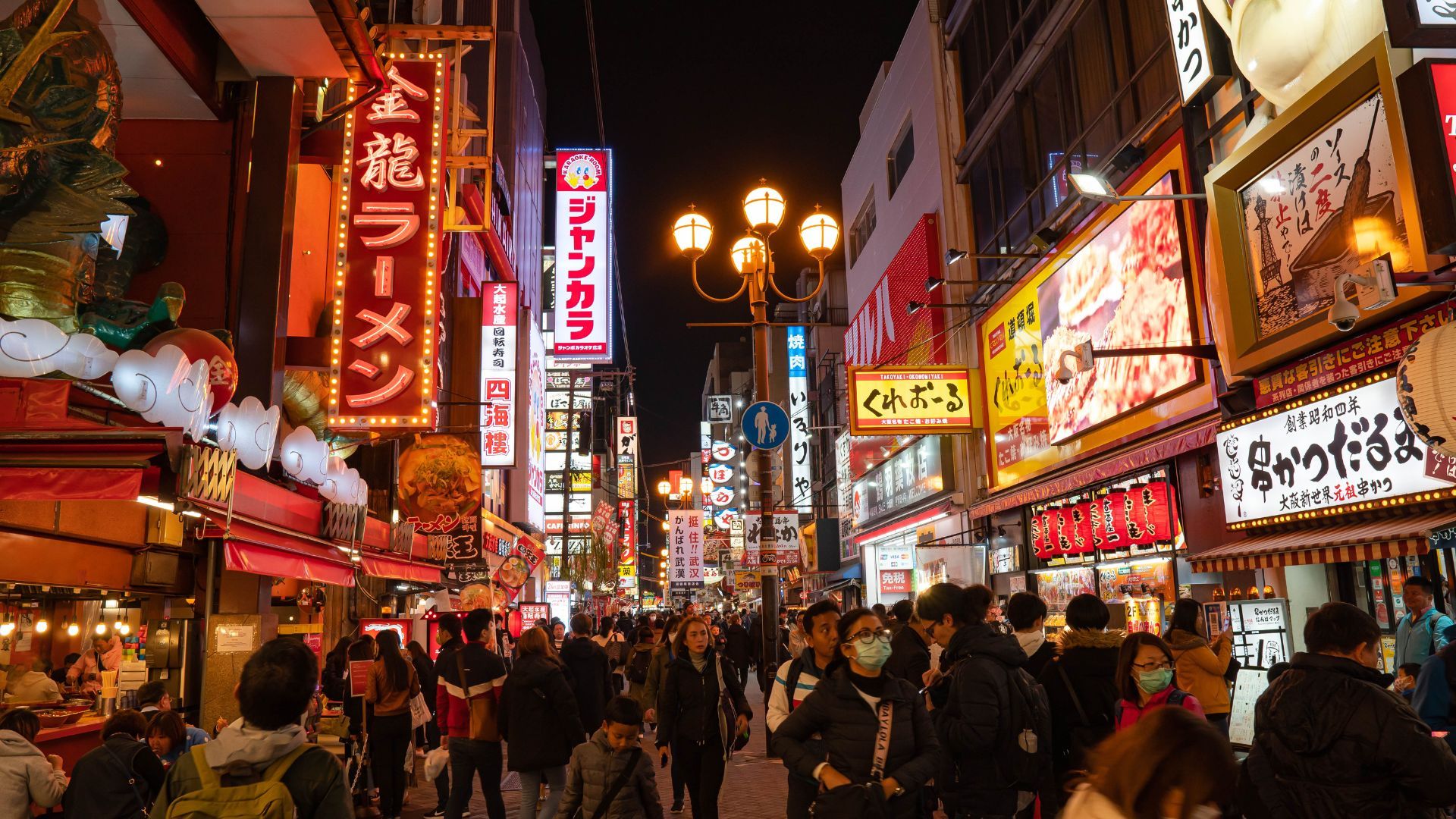
Catch a rapid express on the Kintetsu Nara Line from Nara Station to Osaka . Begin your day exploring Osaka’s iconic landmarks, including Osaka Castle and its museum, which offer panoramic views of the city from the observation platform.
Next, head to Dotonburi, Osaka’s bustling shopping and food district. Indulge in local delicacies such as ramen at Ichiran, crab dishes at Kani Doraku, tempura at Dotonburi Imai Honten, and Japanese pancakes (okonomiyaki) at Mizuno. Dotonburi is also adjacent to the vibrant Namba District, popular for its shopping opportunities.
Wrap up your day by checking into one of the hotels near Dotonburi, such as Shinsaibashi Grand Hotel , Hotel Nikko Osaka or Namba Oriental Hotel.
Book your stay at Hotel Nikko Osaka via Agoda.com
Book your stay at Hotel Nikko Osaka via Booking.com
Day 10 – Osaka

You have two options for Day 10: visit Universal Studios Japan or the Osaka Aquarium Kaiyukan. Both attractions offer memorable experiences but require a significant portion of your day. If you’re seeking thrilling entertainment, head to Universal Studios Japan, where you can explore popular themed areas like Super Nintendo World Japan and The Wizarding World of Harry Potter. Make your booking here .
Alternatively, enjoy a more relaxing day at the Osaka Aquarium Kaiyukan in Minato Ward. As one of the world’s largest public aquariums, it boasts a mesmerising display of marine life, including a rare whale shark. Don’t miss the opportunity to witness the sea creatures during their feeding times for an unforgettable experience.
Day 11 – Sayonara, Japan!
It’s now time to say goodbye to Japan! Catch a flight home from either the Kansai International Airport or Itami Airport. Arrive early at the airport for some last-minute shopping or enjoy a meal at one of the many restaurants, convenience stores , or cafes at the airport before departure.
Shop the best travel experiences here.
Tips for travelling in Japan
Here are some essential tips to enhance your travel experience in Japan:
- In case of losing important items like your phone, wallet, or passport, file a lost property report at the nearest police station (Koban).
- Emergency numbers in Japan are 110 for the police and 119 for ambulance and fire services.
- Respect the local customs and etiquette, such as speaking softly on public transport like trains and buses. From Pikachu to Thomas The Tank Engine, explore our guide to unique trains in Japan .
- If you come across an abandoned item on the street or restaurant, refrain from picking it up as the owner may return to the location to retrieve it.
- Use our guide to mastering basic Japanese phrases , which can significantly aid in communication and help you get around Japan comfortably, as English is not widely spoken here. You can also rely on Google Translate for help.
- Utilise Google Maps for navigation and access to transportation routes and schedules.
- Tipping is not customary in Japan; simply pay the amount stated on your bill.
- Familiarise yourself with using chopsticks, as not all restaurants provide forks and spoons.
- Check the weather forecast regularly, as Japan’s weather can be unpredictable.
- Always seek permission when taking photos or videos, as some establishments may not permit it.
(Feature Image Credit: richardernestyap/Shutterstock)
Related: This 9-Day Walking Tour In Japan Takes You To One Of The Most Scenic Trails In The World
Frequently Asked Questions (FAQs)
-How many days should I spend in Japan? A duration of ten days to three weeks is recommended for first-time visitors. Spend two to four days in major cities like Tokyo, Kyoto, Osaka, Hiroshima, Fukuoka, Sapporo, or Nagoya. As you become more familiar with the country, you can explore more niche areas of Japan.
-What should I pack for my trip to Japan? Essential items to pack include comfortable sneakers, cash (as many local establishments do not accept cards), a Type A electric plug adapter, a portable WiFi device ( buy it here ), a Japan Rail Pass (if applicable, book yours here ), and any necessary medication. Note that over-the-counter medicine may require a doctor’s prescription in Japan.
-How do I get around Japan? Japan boasts an efficient transportation system, including buses, local trains, and cycling within cities. To travel between cities, options include driving, domestic flights, or riding the bullet train (shinkansen).
-Do I need a visa to visit Japan? Visa requirements vary depending on your country of citizenship or residency status. Citizens from these countries may enter Japan visa-free .
-What are some adventure activities to do in Japan? Japan offers a wide range of adventure activities, including hiking, skiing, snowboarding, trekking, kayaking, mountain climbing, rock climbing, camping, glamping, caving, and scuba diving.
-Where can I find the best dining options in Japan? Tokyo offers diverse culinary experiences from around the world, while Kyoto and Osaka are renowned for their local and traditional Japanese cuisine. Okinawa Island also boasts a unique cuisine distinct from mainland Japan.
-What activities are available in Japan besides sightseeing? In addition to outdoor adventures, you can participate in workshops on Japanese pottery, calligraphy, traditional sweets making, kimono painting (yuzen), and flower arranging (ikebana). Experience traditional Japanese culture through activities like tea ceremonies, sake tasting, Sumo wrestling tournaments, or visits to hot springs (onsen).
Customise this Japan itinerary to suit your preferences and pace, and approach your journey with an open mind to create lasting memories in this captivating country!
- japan guide
- japan itinerary
- japan travel
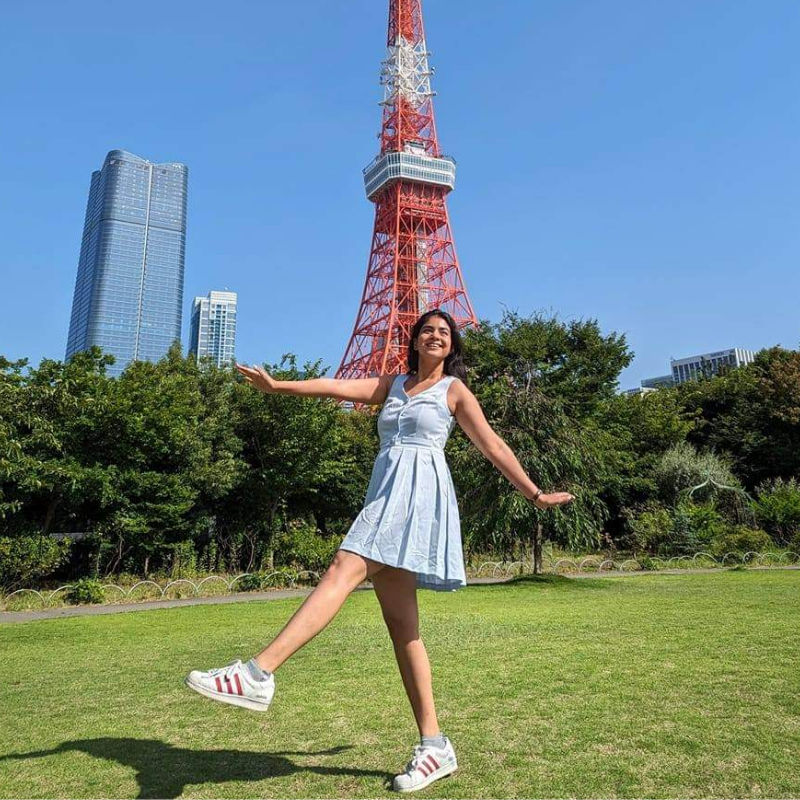
Sharon Alphonso
Sharon is from Mumbai and currently lives in Tokyo with her Japanese husband. Before moving to Japan, she worked with POPxo, Grazia and MTV India. She now writes for several English magazines in Japan, including Savvy Tokyo, Tokyo Weekender, and GoConnect Japan. Her favourite way to unwind is to listen to lo-fi music while reading a book and sipping .. Read More on a matcha latte. Read Less
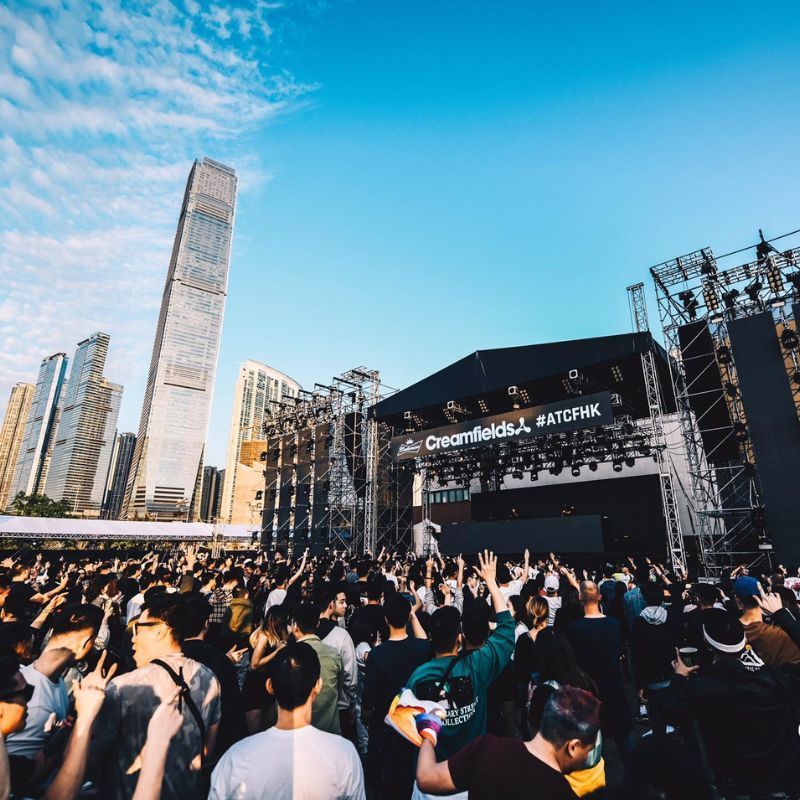
April In Hong Kong: 10 Best Events For An Absolutely Incredible Month
By Jianne Soriano
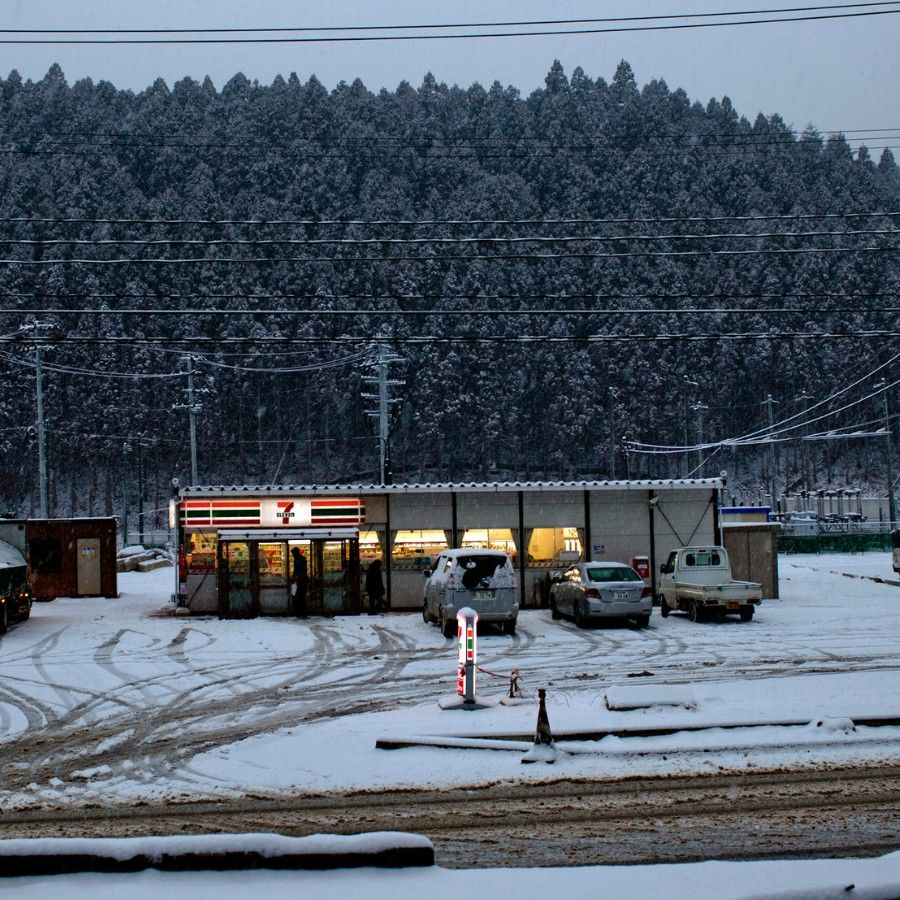
Konnichiwa Konbini! Why We Love Japan’s Humble Convenience Stores
By Kissa Castañeda

What To Expect From Go Park Sai Sha, A New Shopping Landmark In Hong Kong By Zaha Hadid Architects
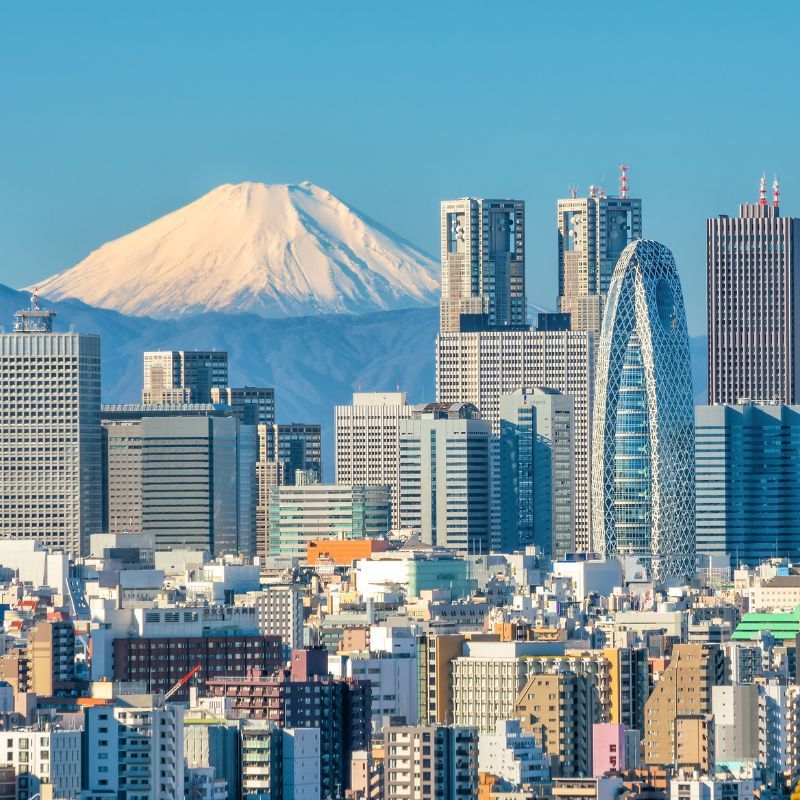
Tokyo Vs Kyoto: Which City Should You Include In Your Japan Itinerary?
By Sharon Alphonso
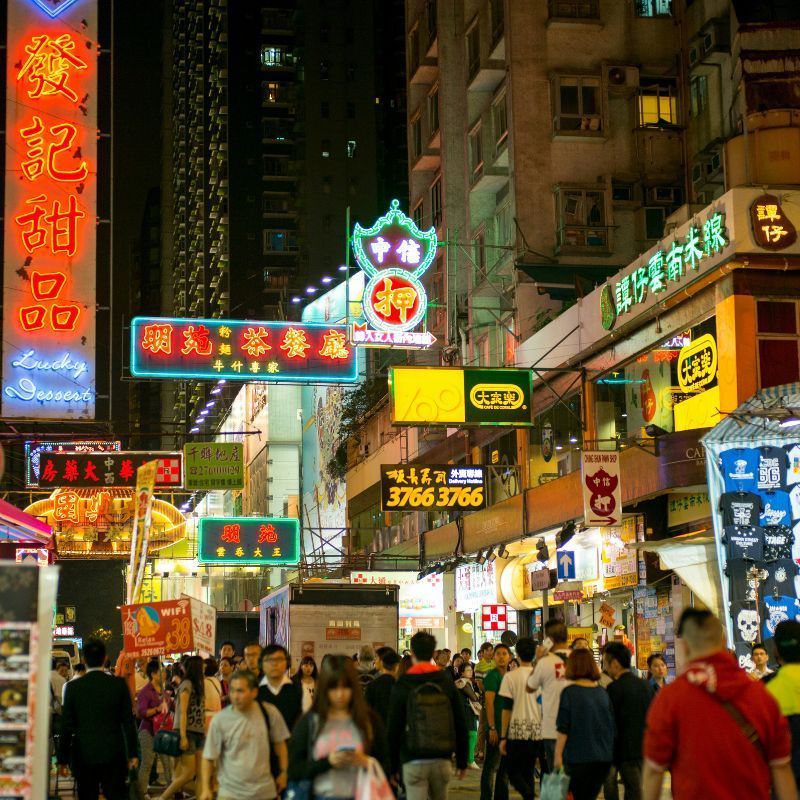
Hong Kong Shopping Guide: The Best Malls And Streets To Shop For Every Kind Of Product
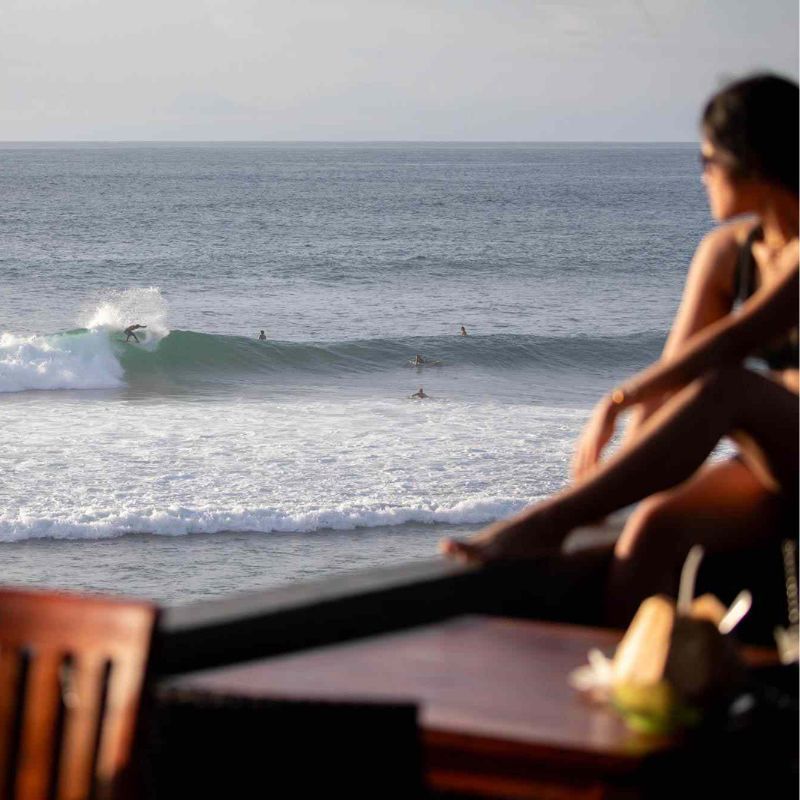
This Affordable Island Is The Top Vacation Spot For Couples, Research Finds
By Stacey Leasca
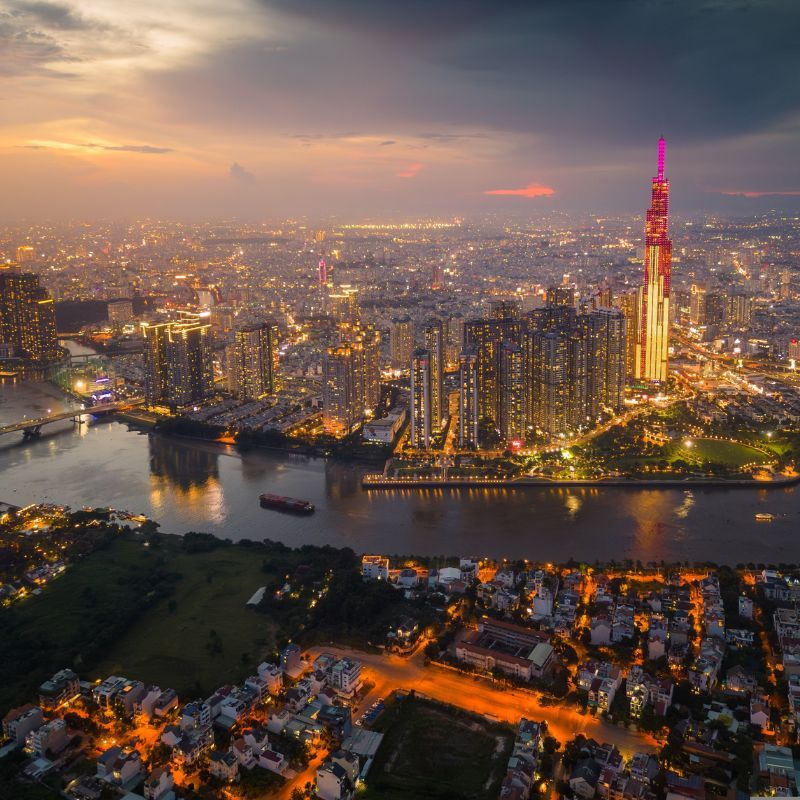
Chase Sunshine, Festivals, Food, And Adventure: Best Time To Visit Vietnam
By Shubhanjana Das
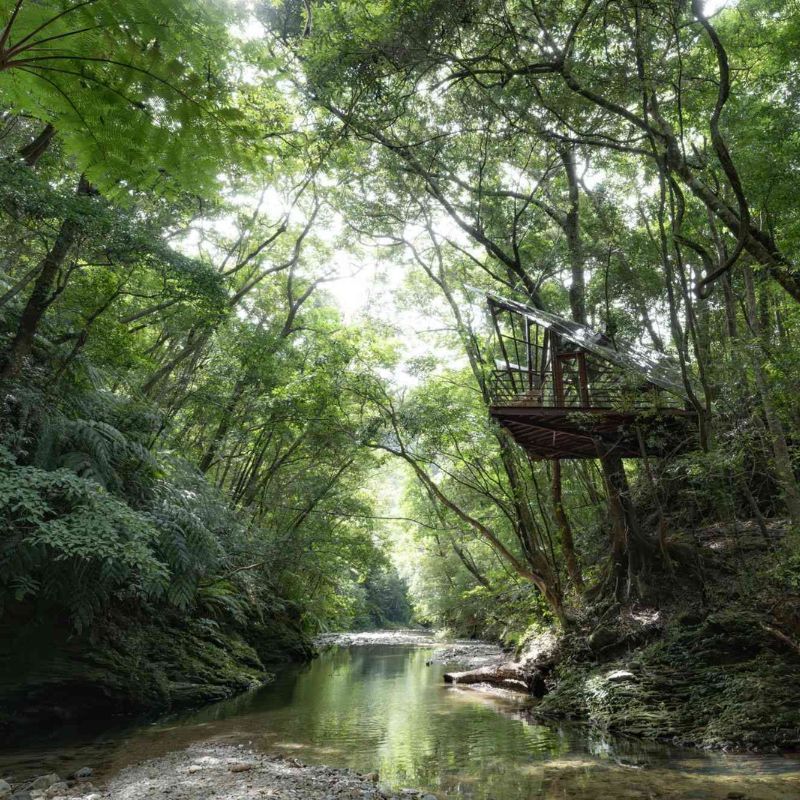
This Tree House Resort In Japan Has A Slide From A Sauna Into The Genka River
By Rachel Chang
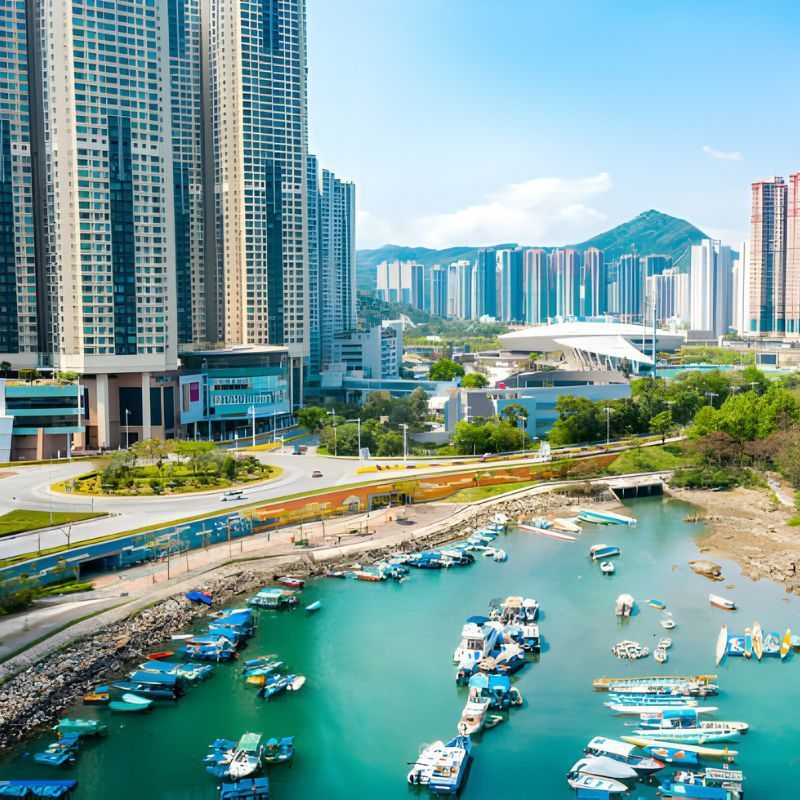
Tseung Kwan O Guide: The Best Places To Eat, Drink, & Explore In The Scenic HK Neighbourhood
Subscribe to our newsletter to get the latest on travel, stay & dining.
You’re all set
Thank you for your subscription.

Essential Japan Itinerary: 10 Days of Family-Friendly Travel (Plus Optional Extension)
P lanning a Japan itinerary for a family is like putting together a giant puzzle: you have to account for transportation schedules, hotel availability, everyone’s interests and the huge variety of opportunities you won’t find anywhere else in the world. It’s a great problem to have!
In this extremely detailed guide, you’ll find out how to make the most of your family trip to Japan with three options for itineraries for Japan with kids that you can use as a launching point based on your needs.
One quick note on how to use this Japan itinerary guide: rather than repeating the same information in each section, in some cases I’ll refer you to previous itineraries that have all of the details. But the beginning of each itinerary has a helpful summary at the beginning that provides an overview of which days you’ll spend in each location, where to stay and what tickets/activities you need to book in advance.
1. Highlights of Japan Itinerary: 10 Days for Family Travelers
2. extended japan itinerary: 2 weeks with kids, 3. slower pace itinerary for japan with kids: 10 days, tips for visiting japan with kids, planning your trip to japan.
There are so many incredible things to do in Japan with kids that your 10 day itinerary will be filled to the brim. Our entire trip was go-go-go , but truthfully we didn’t mind it all because basically everything in Japan is amazing.
Quick overview
Days 1-4: Tokyo
Day 5: Day trip to Hakone
Day 6: Hiroshima
Day 7: miyajima island, day 8: osaka.
Day 9-10: Kyoto
Accommodations
Nights 1-5 in Tokyo:
– Hyatt Regency Tokyo (Shinjuku)
– Mimaru Tokyo Ueno East (Taito)
– Hotel Gajeon (Meguro)
Nights 6-7 on Miyajima Island:
– Miyajima Kinsuikan
Nights 8-10 in Kyoto:
– Mimaru Kyoto Station or Mimaru Kyoto Nishinotoin Takatsuji
– Hyatt Regency Kyoto
– Ace Hotel Kyoto
Activities to book in advance
– Japan Rail Pass
Tokyo subway pass
– Tokyo cooking class
– TeamLabs Tokyo
– Tokyo food tour
– Hakone Free Pass or Hakone/Fuji private tour (my recommendation)
– Miyajima Island tea ceremony and calligraphy class
– Tokyo or Osaka Pokemon Cafe
– Kansai Thru Pass
– Osaka Aquarium Kaiyukan
– Kyoto tour
Tokyo is a fascinating, exhilarating and sometimes overwhelming melding of old and new. There’s so much to see and do that it can be very challenging to plan. I’ve put together an in-depth Tokyo with kids itinerary for four days that breaks down what to do each day based on geography and transportation so that you maximize your time.
Day 5: Day trip from Tokyo to Hakone
Head toward Mount Fuji on a wonderful day trip from Tokyo to Hakone, 100km southwest of the city. The journey will take 2 hours by public transit but it’s such a different experience than you’ll find anywhere else!
Pro tip : There’s a lot of different transportation involved in this day trip. One alternative I wish we’d considered is this Hakone/Fuji private tour . While it would have been more expensive, we would have made much better use of our time!
To get to Hakone, you’ll either use your JR Pass (if you’re ready to activate it) or the Hakone Free Pass to get to Odawara station and then continue on the local Tozan train line. To maximize your time, be sure to reserve a private room for your family at Hakone Yuryo onsen for 6pm. More details on that later, but we were not able to get an evening reservation and it definitely messed with our schedule!
I recommend that you proceed all the way to Lake Ashi and start your time in Hakone exploring the town area surrounding the port and you can also consider taking the lovely forest walk to the famous torii gate.
A highlight for the whole family is the pirate boat that takes you across the lake. Supposedly you can see Mount Fuji from the boat, though we weren’t able to because it was a little cloudy surrounding the masive mountain. Even so the views are lovely and you’ll go right by the torii gate.
Once you reach the opposite shore, you’ll have the opportunity to take the Hakone Ropeway up the mountainside – and this is where you should get fantastic views of Mount Fuji if you didn’t see it from the lake! Even on a cloudy day, we could tell how absolutely massive it was – and it kept getting larger as we went higher. This is one of the world’s longest ropeways, taking nearly 30 minutes to complete.
The top of the Ropeway is around 1000 meters elevation. To descend on the other side you’ll take the Hakone Tozan Cable Car, which connects to the Hakone Tozan Train – so many different forms of transportation, and thankfully they’re all included with the Hakone Free Pass (even the pirate boat)!
Your next stop is the Hakone Open Air Museum . I’ve heard incredible things about it, and this is probably the best art museum in Japan for kids! There are unique artistic play structures, enormous sculptures and more. Unfortunately last admission is at 4:30 and we weren’t able to make it by then because our reservation at Hakone Yuryo onsen was in the morning and pushed everything back.
The last item on your list of things to do in Hakone on a day trip is pay a visit to Hakone Yuryo onsen . This traditional hot spring inn provides a wonderfully relaxing experience and is a must-do in Japan! While there are public baths available here, you’ll want to reserve a private room since you’re visiting Japan with children. We opted for the Type 3 room, which is very serene and includes everything you’ll need for an amazing visit to an onsen with kids – snacks, towels, robes and plenty of space. The room is yours for two hours, so relax and enjoy to wind down after your busy day trip to Hakone!
If you bring a travel car seat with you, the fastest way to get to Hakone Yuryo is by taxi; otherwise you can take the local bus (just use Google Maps to find your way). For your return to the train station, they offer a shuttle van.
A logistical recommendation: the stretch in Hiroshima Prefecture is brief but transportation-heavy. You’ll potentially take trains, boats, buses and taxis. If possible, I suggest just bringing a few days worth of clothing in backpacks while the rest of your luggage is sent on to meet you in Kyoto. The excellent Yamato Ta-Q-Bin can be arranged by your hotel or nearest 7-11 and it’s pretty amazing. For just $50, our two suitcases and a box with the kids backpacks was waiting in our Kyoto hotel room!
Today is a long day and an emotionally heavy one, but one that’s worth experiencing if your kids are old enough. You’ll hop the earliest train you can manage all the way to Hiroshima, near the southern end of Japan’s main island. Once you arrive at Hiroshima Station, it’s easy to use the sightseeing bus (included in your JR Pass ) to get to Hiroshima Peace Memorial Park. If you haven’t eaten lunch yet, there are some good options in the Hiroshima Station.
Read more about visiting the A-bomb sites of Hiroshima with kids . There are many factors to weigh as you decide if and how to include Hiroshima in your family’s Japan itinerary.
All in all, we spent just over two hours visiting the Hiroshima Peace Park and Peace Memorial Museum. When you’ve finished there, your next stop is Miyajima Island and there are two ways to get there: the easy way and the cheap/hard way.
We mistakenly did it the cheap/hard way and I do not recommend it. We used the #2 local tram from the Dome station to Miyajimaguchi station (approximately 1 hour) and then took the very pleasant Miyajima ferry. While this option is very inexpensive, I wouldn’t have done it if I realized that the alternative was available and better.
There’s a ferry that picks up near Motoyasubashi Bridge right next to the A-Bomb Dome . It’s the Aqua Net Ferry , and we saw it but weren’t sure if it was legit or not because it didn’t look nearly as polished as every other Japanese transportation option. We were just being silly. While it’s a little pricey at 2200 JPY per adult and 1100 JPY per child, it’ll shave about an hour (and a lot of hassle) off your travels. Just buy a one-way ticket, as on the way back you’ll take the JR Ferry and then connect on a convenient train to Hiroshima Station.
When you arrive on Miyajima, you’ll want to walk to your hotel to drop off your bag and then immediately go get dinner. Everything closes early! Our hotel had to call around to find a place that was open at 7pm, but the ladies at Okonomiyaki Kishibe served up delicious food in as homey a setting as you can imagine.
The next day and a bit will give you an opportunity to step back in time on Miyajima Island, one of several islands in Hiroshima Bay. Even if you’ve never heard of it, you’ve probably seen photos of its famous “floating” torii gate! It’s an icon of Japan. The logistics of incorporating Miyajima into your itinerary can be tricky but there are a few reasons why you should consider it.
While most other places you’ll visit on this Japan itinerary for families are fairly well developed cities, Miyajima Island remains a quiet, rural area full of cultural and natural highlights. The ancient Itsukushima Shrine is still largely preserved today. While nearby Hiroshima was devastated by the A-bomb, Miyajima was spared other than some debris found nearby.
Much of the island’s developed area is accessible on foot, though you can opt for a ropeway (cable car) to reach the beautiful summit of Mt. Misen. Miyajima is a great place to enjoy cherry blossoms in the spring or fiery red maple trees in the fall.
Keep in mind that Miyajima is an island with a population of just 2000 people, and most visitors are day trippers. That means you won’t find a ton of restaurants or stores open once the sun goes down, but you’ll also be able to experience the island’s true magic away from the crowds!
Thanks to its very traditional nature, Miyajima island is a great place to try out staying at a ryokan – a typical Japanese guest house. We had a wonderful stay at Miyajima Kinsuikan , which included a large family room with very comfortable futons set up each night, a yukata for everyone (several kids’ sizes available), unlimited access to the wonderful onsen (geothermal bath) in the basement and a seafood-heavy bento-style breakfast that is typical of the region.
On the last point, I’ll say that the staff tried hard to accommodate our dietary needs but definitely didn’t understand due to the language barrier. I ended up taking the kids to Starbucks (yes, Starbucks!) a block away so that we wouldn’t start our days hungry. If you have dietary restrictions and plan to stay at any ryokan in Japan that offers breakfast, it may be best to tell them what you will eat rather than what you won’t – in retrospect if I had said “only rice, salmon, eggs and vegetables” that probably would have been easier for everyone.
But enough about breakfast… Today’s itinerary will seem jam-packed as you read through it, but it really isn’t. You’ll be able to enjoy much of what the island has to offer and feel relaxed while doing it!
One important tip: if you want to walk under the torii, be sure to check the tide schedule in advance. You may need to shift the order of some things around. When we visited, one of the low tide periods lasted for much of the afternoon with just a few inches of water directly under the torii. Prepare for the ground to be very mucky though!
Spend your morning at this fantastic tea ceremony and calligraphy class . It’s a wonderful opportunity to get a taste of some traditional aspects of Japanese culture. There are three parts to the experience. First, your family will be dressed in fancy kimonos by the team of experienced ladies. They have a huge range of styles and sizes to choose from, and adult women in particular will get to experience alllll the layers.
Once you’re properly dressed, you’ll participate in a tea ceremony with the head of the cultural center. She clearly explains each step and its significance. You’ll also get some unique chocolates along with the matcha!
Finally, your family will learn some basics of Japanese calligraphy and choose a character to write on your own souvenir! Since you’re already fully dressed, you can also step outside to. the zen garden and have the staff take some photos for you. They took photos of us during the activities as well and shared them via AirDrop – they aren’t professional, but it’s nice to have them included at no additional cost. This was one of my favorite activities to do in Japan with kids. The organizer suggests a minimum age of 6 years old, though I think that for most kids it’s better for 8+.
It’s time for lunch, so head back to Miyajima’s main shopping street – just follow the crowds one block in from the coast. There are plenty of inexpensive options to take away from kiosks, and we opted for delicious cups of fried chicken that we enjoyed in a peaceful courtyard. You’ll also find various options for seafood, momiji manjū cakes and more! If your kids haven’t exhausted their souvenir budget yet, there are plenty of opportunities here as well.
Continue on past the commercial part of town to visit Itsukushima Shrine. It’s a beautiful and serene place with more than a thousand years of history. Like most shrines it’s just a few dollars to enter and you can move as quickly or slowly along the one-way path as you’d like. There isn’t much written information provided on-site, but you can read up in advance here for a fuller understanding of the complex and its history.
When you exit the shrine, look for signs for the Miyajima Ropeway. This is the cablecar that will take you to the summit of Mount Misen, which dominates the island’s landscape. It’s a somewhat steep 15 minute walk to the ropeway station at Momijidani, so if anyone in your family has limited mobility consider taking the free shuttle bus from Momijidani Park – more info here .
The ropeway is a fun activity for kids and parents alike! You’ll transfer mid-way to reach the summit, where you’re treated to spectacular views of Hiroshima Bay and its islands. We enjoyed the view from Shishiiwa Observatory but if you want to hike another 20 minutes you’ll arrive at Mount Misen Observatory and enjoy additional views.
You’ll either take the ropeway back down or hike it – the choice is yours, and may depend on how long the line for the ropeway is! We waited for about 30 minutes shortly before the last descent of the day and honestly it might have been faster just to walk down. We stopped at Niwa Cafe for dinner, which was a great choice!
End your evening with a relaxing soak in the onsen at Miyajima Kinsuikan. You’ve earned it after such a busy day!
Since this is a fast-paced 10 day Japan itinerary, you’re just going to pop into Osaka on your way from Miyajima Island to Kyoto. The good news is that the trains are very efficient so you’ll have a big chunk of the day to explore!
You’ll take the ferry back to the mainland and then a train to Hiroshima station. From there it’s easy to pick up a bullet train to Osaka. In total, travel time is around 3.5 hours. Once you’re in Osaka and Kyoto, the Kansai Thru Pass is very handy as it covers all of the local rail and bus lines that aren’t already included with your Japan Rail pass .
With just a day in Osaka, you won’t be able to do everything unfortunately. One of the best things to do in Osaka with kids is pay a visit to Osaka Aquarium Kaiyukan . When it opened in 1990 it was the largest aquarium in the world! While it no longer holds that title it’s still a site to behold. There are incredible creatures here including while sharks, and the spiraling design continuously reveals more and more wonders.
If you’re visiting Japan in spring, be sure to check the schedule for the March sumo tournament – typically held during the second and third weeks. You’ll want to buy tickets well in advance, but I highly recommend attending if you can! Sumo is a unique experience and deeply ingrained in Japanese culture. The environment is family-friendly and many visitors bring food from local convenience stores, as concessions are minimal inside the stadium.
Another great option is to reserve a table at the Osaka Pokemon Cafe – check the calendar 31 days in advance. It can be very hard to get a table (we tried!) but thankfully there are other Pokemon things to do in Japan to entertain kids of all ages.
While you’re in Osaka, walk around the famous Dotonbori area to see the lights and spectacle. You can grab dinner nearby if you’re able to find a table without a huge line – there are some amazing options nearby for beef and seafood! If all else fails, check out the standby of CoCo ICHIBANYA for delicious curry.
Wrap up your day by taking the train from Osaka to your Kyoto hotel . It’s only about an hour, though it’s the end of a long and transit-heavy day.
Days 9-10: Kyoto
You’ve reached the final leg of your family Japan itinerary, which is bittersweet. Kyoto is a wonderful place to conclude your trip because it feels so distinctly Japanese (with a thick overlay of tourists, to be completely honest). It’s truly a great city and such a unique place to spend a few days since it retains the traditional architecture and vibe of pre-war Japan.
A quick note on where to stay in Kyoto: there are lots of excellent hotels, and it’s much more compact than Tokyo (for example). But in Kyoto you have two excellent opportunities to stay in a Pokemon themed room at Mimaru Kyoto Station and Mimaru Nishinotoin Takatsuji . We stayed at the latter because it was available, but the entire chain is extremely family-friendly. To say that my kids lost their minds from the surprise when we walked into our room is an understatement. If you can book one of those rooms, it’s 100% worth it.
Kyoto is a beautiful city full of ancient sites blended with modern culture. Follow our 2 day Kyoto with kids itinerary to learn exactly how to make the most of your visit!
If I had my druthers, we would have followed this longer Japan itinerary for 2 weeks of family travel. I’ve offered it here in case you’re lucky enough to visit for longer.
This itinerary covers roughly the same geographic area as the itinerary we did above but allows you to see more. Be sure to read the 10 day itinerary above – I’ll reference that in this expanded itienrary! Pay close attention to the overview, as there are some additional hotel stops and a slightly different transportation strategy.
Day 6-7: Disney
Day 8: Hiroshima
Day 9: miyajima island.
Day 10-12: Osaka*
Day 13-14: Kyoto *
Nights 6-7 near Disneyland:
– Sheraton Grande Tokyo Bay
– Hilton Tokyo Bay
Nights 8-9 on Miyajima Island:
Nights 10-11 in Osaka*:
– Hotel Intergate Osaka Umeda
– Holiday Inn & Suites Shin Osaka
Nights 12-14 in Kyoto *:
*To decrease hotel moves, you can consider staying in Kyoto the whole time. Kyoto and Osaka are only about an hour apart, but you may wind up making the trip a few times because there are plenty of kid-friendly things to do in Osaka!
– Tokyo subway pass
– Disney Sea and Disneyland
– Universal Studios Japan
Days 1-5: Tokyo & day trip to Hakone
Spend days 1-5 as described above in the 10 day Japan itinerary for families.
Days 6-7: Tokyo Disney
On the morning of Day 6, transfer to a hotel near Tokyo Disney like Sheraton Grande Tokyo Bay . While you could stay at a hotel elsewhere in Tokyo, it’s hard to beat the convenience of being right on the monorail! The quieter waterfront location can also be a nice respite after the hustle and bustle of Tokyo.
Tokyo Disney includes both Disneyland and DisneySea. Many Disney lovers regard these as some of the best parks in the world, as they’re very efficiently run and include some unique rides you won’t find elsewhere. And the tickets are a fraction of what you’d pay to visit Walt Disney World! Buy your tickets in advance and just flash the QR code to enter.
After you buy your tickets, be sure to download the Tokyo Disney Resort App. That will grant you access to the free Priority Pass system, which allows you to schedule return times for some attractions.
Before you go, read these helpful DisneySea tips and Tokyo Disneyland tips .
Spend day 8 visiting the A-bomb sites of Hiroshima . You’ll be spending this night (and the following) on Miyajima Island at Miyajima Kinsuikan , so if you don’t feel that visiting Hiroshima Peace Memorial Park is the right choice for your family you can go directly to the island and spend the afternoon at its excellent aquarium.
Spend day 9 on Miyajima island as described above. You’ll do a tea ceremony and calligraphy class in the morning, visit the Itsukushima Shrine shrine after lunch and then take the ropeway to the top of Mount Misen to enjoy stunning views of Hiroshima Bay.
Days 10-12: Osaka
While we only spent one day in Osaka, I wish we’d had longer to base ourselves there! Not only does the city have some wonderful family-friendly attractions but it also makes a great base for day trips.
On your way back from Hiroshima to Osaka, stop at Himeji Castle for several hours. It’s the most impressive castle in the country and designated as a UNESCO World Heritage Site. The original structure was built in 1333 but what you see today dates from the 16th and 17th centuries. For a deeper look, book this excellent private tour of Himeji Castle .
Once you arrive in Osaka itself and settle into your hotel, head out to see the bright lights of Dotonbori and grab dinner. This would also be a great time to visit Pokemon Cafe if you’re able to get a table (reservations open 31 days in advance but there are occasionally walk in tables).
For days 11 and 12 you’ll have some tough choices to make! With young children, make the Aquarium Kaiyukan a priority – it’s really remarkable. If you’re visiting Japan with teens, tweens or older kids then plan to spend a day at Universal Studios Japan – it has favorites like Harry Potter World and Super Nintendo World and is extremely easy to get to if you stay at Hotel Intergate Osaka Umeda or nearby.
If you’re visiting Osaka in March, consider spending a few hours at the huge sumo tournament at Edion Arena!
Be sure to stop by A Happy Pancake for breakfast or lunch. They have both sweet and savory options, and their distinctively Japanese pancakes are the thickest and fluffiest you’ve ever seen! The Doyamacho location is the most convenient in Osaka (there are also outposts in Tokyo and Kyoto).
You’ll probably also want to squeeze in a day trip to Nara to see the famous deer of Nara Park. Don’t miss the “big Buddha” and the beautiful Kasuga Taisha Shrine while you’re there, along with cherry blossoms in the spring and bright red foliage in the fall. It’s exactly one hour each way using public transit, so if you feel tight on time you can go for just a half day.k
At the end of day 12, hop on a quick train to Kyoto to settle into your hotel for the last stop on your Japan adventure.
Days 13-14: Kyoto
Spend days 13 and 14 exploring Kyoto as described in our 2 day Kyoto itinerary .
Are you looking for an itinerary that’s a little slower, whether because you’re visiting Japan with toddlers or just prefer not to cram so much in? I’ve got you covered. In this itinerary you’ll only split your time between two bases and you’ll enjoy plenty of activities that are unique to Japan but still extremely little kid friendly!
To really level up this kid-friendly Japan trip, book your flights into Tokyo and out of Kansai International Airport (KIX) south of Osaka. You’ll save travel time and train fare since you really don’t need a Japan Rail pass for this itinerary!
Day 1-5: Tokyo with day trip to DisneySea
Day 6-10: Kyoto with day trips to Nara and Osaka
Nights 6-10 in Kyoto:
– DisneySea
– Nara day tour
Days 1-5: Tokyo with day trip to Disney
Follow our 4 day Tokyo itinerary for families to explore the city’s many facets, but break up your time with a day trip to DisneySea .
Days 6-10: Kyoto + day trips
Follow our 2 day Kyoto itinerary for families . Add in at least one day trip to Osaka to visits sites like Aquarium Kaiyukan and a day trip to Nara to see the famous deer. You might even have time to go to Universal Studios Japan ! It’s even possible to take a day trip from Kyoto to Hiroshima to pay your respects at the A-bomb sites , and some families may opt to send one parent to do that while the other pursues more kid-friendly options in Kyoto.
I’ve written up many helpful Japan travel tips , but I want to highlight a few here that are specific to visiting with kids.
- Plan well in advance. Many hotel rooms are only rated for two people, so your options for a family will be even more limited if you wait too long.
- Bring a folding car seat with you. While public transportation is excellent in Tokyo and between cities, you may want to take a taxi from the airport with your luggage after a long flight. We also found that Kyoto public transportation wasn’t nearly as robust.
- Let your kids go wild in convenience stores! They’re a great place to grab unique candies, sandwiches for a picnic or even delicious fried chicken.
- Get your kids involved in planning. Check out my son’s favorite things to do in Japan with kids .
- Bring a portable charger (or two) since you’ll be using your phone all day long to take pictures, translate menus and look up directions.
I hope these family-friendly Japan itineraries have give you the confidence to plan your own adventure!
Ready to dive in? Don’t miss these helpful resources for planning your own Japan trip!
- Buy your Japan Rail Pass
- Best Things to do in Japan With Kids: A Kid’s Take
- 9 Tips for Japan Travel You Can’t Afford To Miss
- What to Pack for Japan in Spring (and What to Leave at Home)
- Things to do in Tokyo With Kids: Itinerary for 4 Days of Old and New
- Visiting Kyoto With Kids: 2+ Day Itinerary + Must-Read Travel Tips
- Best Family Hotels in Kyoto
- Awesome Pokémon Things to do in Japan
- Visiting the A-Bomb Sites in Hiroshima with Kids
- 10 Japan Cultural Activities & Attractions For Your Bucket List
Still planning? Pin this for later!
The post Essential Japan Itinerary: 10 Days of Family-Friendly Travel (Plus Optional Extension) appeared first on The Family Voyage .

Huge Taiwan quake caused few deaths thanks to preparedness — and luck
TAIPEI, Taiwan — Motorcyclists waited calmly on a bridge as it rocked violently ; nurses looking after a group of infants quickly pushed their cribs together to protect them from falling objects; a trio of hikers on top of Taiwan’s tallest mountain sat still until the tremor was over ; and rescue workers pulled residents out of partially collapsed and dangerously listing buildings.
When a 7.4-magnitude earthquake struck off the east coast of Taiwan on Wednesday morning, it was scenes of composure such as these, rather than mass panic, that stood out across the island of 23 million people.
It was the strongest earthquake to hit Taiwan in 25 years, triggering hundreds of aftershocks and landslides. Yet as of Thursday, only 10 people in the worst-hit region of Hualien County, home to more than 300,000, had died.
That’s because Taiwan, which sits in the world’s most seismically active zone , has had years of practice and preparation for exactly this kind of scenario.
Experts credit stricter building codes , extensive evacuation and disaster drills that begin in primary school, a honed disaster-response strategy — and a fair amount of luck — for the low death toll of Wednesday’s quake .
“Although it seems like a long time, in the past 25 years Taiwan has actually made great progress,” said Hsin-yu Shan, associate professor of civil engineering at National Yang Ming Chiao Tung University.
Taiwan earthquake

On Thursday, rescue teams were working to free more than 700 people who remained trapped in a national park in Hualien, the epicenter of the quake. Forecasts of rain raised concerns about more landslides.
More than 1,000 people were injured in Wednesday’s quake, mostly by falling rocks, according to Taiwan’s fire department.
Rescue efforts have been complicated by a large number of aftershocks — at least 324 — in Hualien County, a scenic coastal region popular with tourists and hikers, where the damage has been the heaviest. Taiwan officials said aftershocks of magnitudes of 6.5 to 7.0 were possible over the next three days.
Residents in Hualien said rescue workers moved quickly to evacuate them from damaged buildings.
The nine-story Uranus Building, an apartment complex, was among several buildings that partially collapsed and were left tilting dangerously as emergency workers raced to find those inside.
Yu Yang, a 27-year-old delivery worker who lives in the building, found herself pinned between her closet and table as the building suddenly tilted following a strong aftershock.
“I felt helpless and couldn’t move at all,” she said. Within about three hours, two rescue workers climbed into her apartment and used their own safety rope to lower her to the ground.
“The government’s response has been very quick, and they’ve worked very hard. It was really dangerous, but the search and rescue workers were willing to climb in,” she said.
Of the 75 people in the building, 74 were accounted for and safe. One woman who died is suspected of having gone back into the building for her cat and was pinned down by falling debris.
Rescue efforts are now focused on the Taroko Gorge national park, where hundreds of hotel workers and tourists remain trapped after the entrance was blocked by fallen rocks.
More than 15 people were also still missing in the gorge, the fire department said Thursday, and rescue workers were using drones and helicopters to search the area.
Drone footage posted by Taiwan’s interior minister, Lin Yu-chang, showed some of the residents trapped in the park under a damaged but intact metal tunnel, waving at the camera.
The quake, which occurred just before 8 a.m. Wednesday and which the U.S. Geological Survey measured at 7.4 in magnitude, was felt across Taiwan and as far away as China’s southeastern provinces. It triggered tsunami warnings in Japan and the Philippines that were later lifted.
The last time Taiwan saw a quake this strong was in 1999, when a 7.6-magnitude temblor struck central Taiwan, killing more than 2,400 people.
After that earthquake, authorities mandated stricter building codes that require new structures be able to withstand quakes up to what Taiwan defines as a level six intensity, where violent shaking makes it difficult to stand and some buildings may be damaged.
Shan, the professor of civil engineering, said the government has strengthened the earthquake resistance of schools and hospitals, adding that “99 percent of the schools in Taiwan comply with existing codes.”
Since 2019, the government has also been reviewing 36,000 buildings across Taiwan that were built before 1999 and giving subsidies to upgrade them.
Even before the 1999 quake, Taiwan had implemented earthquake building codes modeled after those in the United States. They have been upgraded as researchers learned from quakes elsewhere, such as an 8.0-magnitude Mexico City earthquake in 1985, in which reverberations in soft soil caused more damage, a phenomenon also present in the Taipei Basin in northern Taiwan.
“Taiwan has had remarkable discipline in their seismic building codes, and enforcement of those codes,” said Joseph Barbera, an associate professor at George Washington University who was deployed by USAID to Taiwan after the 1999 quake.
He noted that Taiwan had also built up a strong emergency response system, including response centers that are specially constructed to move with the ground as it shakes during an earthquake.
“The Taiwanese should be commended for their risk reduction as well as their effective response,” he said.
Disaster awareness has also improved among the public. A promotional quiz sponsored by the National Fire Agency last year asked residents questions such as whether they should open the door as soon as an earthquake hits. (The answer is no.) The average score among more than 200,000 test takers was 90 percent.
Taiwan’s all-important advanced computer chip industry has also had years to prepare. Taiwan Semiconductor Manufacturing Co., the world’s top maker of high-tech chips, based in central Taiwan, said its facilities were not seriously damaged by Wednesday’s earthquake.
Within 10 hours of the earthquake, 70 percent of production had been restored, the company said in a statement late Wednesday. None of the company’s high-end “lithography” machines, among the most complex pieces of equipment in the world, were damaged, TSMC said.
The emergency response was not always perfect, residents have pointed out. At least seven counties received no early-warning alert, triggering widespread criticism. Taiwan’s Central Weather Administration apologized, saying that it underestimated the scale of the earthquake and did not send an alert.
On Thursday, more than 300 households in Hualien still did not have power, and almost 10,000 homes in the area have lost access to running water, according to Taiwan’s Economic Affairs Ministry.
Schools and businesses in Hualien reopened Thursday, and the local railway line also resumed operation. Aftershocks continued to be felt throughout Taiwan, prompting the Central Weather Administration to say that it would no longer announce tremors smaller than magnitude 3.o.
In Hualien, where residents are accustomed to earthquakes, many were still shocked by the strength of the temblor. Andy Liu, 37, who lives in Jian Township, was waiting outside a clinic when it struck.
“It started to shake, and I felt something was off,” he said. “It was shaking so hard I couldn’t stand up.”
Luck also played a major role in the relatively low death toll of the quake, experts pointed out. It struck in the morning, when many people were heading to work and not at home.
Moreover, the epicenter was located off the coast, rather than on land, and was near one of Taiwan’s least densely populated regions.
“If this Hualien earthquake were to happen in Taipei, it is a certainty that the situation will be even worse than the Noto earthquake,” said Johnson Kung, a board member of the Taiwan Professional Civil Engineers Association, referring to a 7.6-magnitude quake that hit Japan in January and killed more than 200 people.
- How a steel ball protected Taiwan’s tallest skyscraper in an earthquake April 4, 2024 How a steel ball protected Taiwan’s tallest skyscraper in an earthquake April 4, 2024
- Huge Taiwan quake caused few deaths thanks to preparedness — and luck April 4, 2024 Huge Taiwan quake caused few deaths thanks to preparedness — and luck April 4, 2024
- In photos and videos: Taiwan hit with strongest earthquake in 25 years April 3, 2024 In photos and videos: Taiwan hit with strongest earthquake in 25 years April 3, 2024

When is Eid al-Fitr 2024 and how is it celebrated?
The three-day festival celebrates the completion of the fasting month of Ramadan by Muslims across the world.

As a new moon was not sighted on Monday evening after Maghrib prayers, Muslims in Saudi Arabia and neighbouring countries will fast one more day, completing 30 days of Ramadan. The first day of Eid will then be celebrated on Wednesday, April 10.
The first day of Eid al-Fitr is determined by the sighting of the crescent moon marking the start of the month of Shawwal, the 10th month of the Islamic (Hijri) calendar.
Keep reading
A ramadan no palestinian will ever forget, the cost of a ramadan iftar meal around the world, ramadan 2024: where do your dates come from, in washington, dc: celebrating ramadan, protesting israel’s siege of gaza.
Lunar months last between 29 and 30 days so Muslims usually have to wait until the night before Eid to verify its date.
Other countries follow independent sightings.
When the sighting has been verified, Eid is declared on television, radio stations and at mosques.
![japan travel 7 days Muslim worshippers prepare to take part in a morning prayer on the first day of Eid al-Fitr, which marks the end of the holy fasting month of Ramadan, at the Blue Mosque in Istanbul, on April 21, 2023 [Yasin Akgul /AFP]](https://www.aljazeera.com/wp-content/uploads/2024/04/AFP__20230421__33DL38J__v1__HighRes__TurkeyReligionIslamEid-1712214656.jpg?w=770&resize=770%2C524)
How do Muslims celebrate Eid?
Traditionally, Eid is celebrated for three days as an official holiday in Muslim-majority countries. However, the number of holiday days varies by country.
Muslims begin Eid day celebrations by partaking in a prayer service that takes place shortly after dawn, followed by a short sermon.
![japan travel 7 days Palestinian Muslims perform the morning Eid al-Fitr prayer, marking the end of the holy fasting month of Ramadan in Gaza City on May 2, 2022 [Mahmud HAMS / AFP]](https://www.aljazeera.com/wp-content/uploads/2024/04/AFP__20220502__329C2B2__v1__HighRes__PalestinianIsraelReligionEidGaza-1712214526.jpg?w=770&resize=770%2C514)
On their way to the prayer, which is traditionally held in an open area, Muslims recite takbeerat, praising God by saying “Allahu Akbar”, meaning “God is great”.

It is customary to eat something sweet before the prayer, such as date -filled biscuits known as maamoul in the Middle East. This particular festival is known as the “sweet” Eid – and the distribution of sweets is common across the Muslim world.
Muslims usually spend the day visiting relatives and neighbours and accepting sweets as they move around from house to house.
Each country has traditional desserts and sweets that are prepared before Eid or on the morning of the first day.

Children, dressed in new clothes, are offered gifts and money to celebrate the joyous occasion.
![japan travel 7 days Children ride a swing on the first day of Eid al-Fitr, which marks the end of the Muslim holy fasting month of Ramadan, in the rebel-held town of Maaret Misrin in Syria's northwestern Idlib province, on April 21, 2023 [Abdulaziz Ketaz / AFP]](https://www.aljazeera.com/wp-content/uploads/2024/04/AFP__20230421__33DM4EH__v2__HighRes__SyriaReligionIslamEid-1712214711.jpg?w=770&resize=770%2C513)
Girls and women in many countries decorate their hands with henna. The celebration for Eid begins the night before as women gather in neighbourhoods and large family gatherings for the application of henna.
![japan travel 7 days A girl shows her hand decorated with henna at a market area ahead of Eid al-Fitr, which marks the end of the Muslim holy festival of Ramadan, in Srinagar, on April 20, 2023 [Tauseef Mustafa / AFP]](https://www.aljazeera.com/wp-content/uploads/2024/04/AFP__20230420__33DJ2T3__v1__HighRes__IndiaKashmirReligionIslamEid-1712214614.jpg?w=770&resize=770%2C512)
In some countries, families visit graveyards to offer their respects to departed family members right after the morning prayers.
It is common for Muslim-majority countries to decorate their cities with lights and hold festivities to commemorate the end of the fasting month.
![japan travel 7 days A general view shows the Alif Ki mosque illuminated during the holy month of Ramadan, ahead of Eid al-Fitr, in Ahmedabad on April 19, 2023 [Sam Panthaky/AFP]](https://www.aljazeera.com/wp-content/uploads/2024/04/AFP__20230419__33DH2JB__v1__HighRes__IndiaReligionIslamRamadan-1712214562.jpg?w=770&resize=770%2C513)
Eid amid the onslaught in Gaza
For some 2.3 million Palestinians in Gaza this Eid, this will be the first Muslim religious holiday after more than 33,000 people have been killed in Israeli attacks. With little food aid, and very limited water, Gaza’s Eid al-Fitr will be mired in destruction amid the continuing attacks.

What are common Eid greetings?
The most popular greeting is “Eid Mubarak” (Blessed Eid) or “Eid sa’id” (Happy Eid). Eid greetings also vary depending on the country and language.
The video below shows how people say Eid Mubarak in different languages around the world.
- Skip to main content
- Keyboard shortcuts for audio player

Solar eclipse 2024: Follow the path of totality
Solar eclipse, what you need to know to watch monday's total solar eclipse.
The NPR Network
A stunning celestial event is visible across the country Monday, when the moon crosses directly in front of the sun: a total solar eclipse. For those in the path of totality, there will be a few brief moments when the moon completely covers the sun and the world becomes dark.
Traveling for totality? Skip ahead.
This will be the last chance to catch a total solar eclipse in the continental U.S. for about 20 years, so here's what you need to know to safely enjoy!
When is the eclipse?
April 8, 2024 there will be a total solar eclipse that crosses from the Pacific coast of Mexico through the United States.
What is totality and why it matters
According to NASA , totality will start around 11:07 a.m. PDT/1:07 EDT in Mexico and leave Maine at around 1:30 pm PDT/3:30 pm EDT.

Here's what time the eclipse will be visible in your region
Check out this table for when the partial eclipse and totality are visible in each region or check by zip code here.
A partial solar eclipse will be visible across the contiguous United States, so even if you're not directly in the path, you should be able to see something special, weather permitting.
Unable to get to totality? We'll be sharing highlights here from across the NPR Network throughout the day Monday if you can't see it in real time.
Where to see totality?
More than 30 million people live in the path of totality for Monday's eclipse, and many more in nearby areas.
Here's what we know about Monday's weather forecast.
Why totality matters
As NPR's Neil Greenfieldboyce explains , "During a total eclipse, the sky darkens suddenly and dramatically . The temperature drops. Stars come out. Beautiful colors appear around the horizon. And the once-familiar sun becomes a black void in the sky surrounded by the glowing corona — that's the ghostly white ring that is the sun's atmosphere."

Eclipse Science
For april's eclipse, going from 'meh' to 'omg' might mean just driving across town.
A partial eclipse, while still a fun experience, is hardly as dramatic. Those with a view of the partial eclipse will see crescent-shaped shadows like those seen here in 2017.
How to watch safely
If you plan to look directly at the eclipse (partial or totality), you're going to need eclipse glasses handy because looking directly at the sun without proper protection ( traditional sunglasses don't count! ) can be harmful to your eyes.

The perfect celestial soundtrack to the total solar eclipse
As NPR's Joe Hernandez explains, "Proper eye protection must be worn throughout a total solar eclipse — except for the roughly 3 1/2 to 4 minutes when the moon fully obscures the sun, a brief period known as 'totality.' (You will need to take your glasses off during totality to actually see it.)"
If you don't have access to eclipse glasses, you can get crafty with things you have around the house ( like some of us did back in 2017!) More on that here.
Traveling for totality?
The celestial event is driving a ton of domestic travel to the path of totality. If you're headed out of town to view the eclipse, here are some NPR Network resources for areas in the path of totality:
Texas The path of totality crosses through the Lone Star State, with some areas expecting a possible influx of visitors in the hundreds of thousands to catch prime viewing. Our member stations across the state have gathered local resources to help you navigate the region and the eclipse!
- San Antonio: Check out the latest from Texas Public Radio
- Dallas: Explore KERA's coverage for the latest
- Austin: Head to KUT for the best local resources
Arkansas The eclipse will be cutting through the state, putting Little Rock in the path of totality. Check out Little Rock Public Radio for local resources.
The southwestern edge of the state will be well-positioned to witness the total solar eclipse this year. Kentucky Public Radio is covering the eclipse throughout the region, from Kentuckiana eclipse mania to the University of Louisville's free class about the celestial event. Keep an eye on WKMS for the latest local updates.
Missouri The southeastern corner of the state will be in the path of totality, crossing across towns like Whitewater and Ste. Genevieve. Head to St. Louis Public Radio for local coverage and resources. Illinois Carbondale seems to have won the eclipse lottery, being in the path of totality both in 2017 and for this year's eclipse . For resources from across the state, check out Illinois Public Media .
Indiana A huge portion of the state will be within the path of totality, giving cities across Indiana, including Bloomington and Indianapolis, prime viewing of the eclipse.
- Bloomington: Check out Indiana Public Media
- Indianapolis: Head to WFYI for the latest
- Fort Wayne: Just north of the path of totality, WBOI has resources for the Allen County area
Ohio The Buckeye State is getting bisected by this year's path of totality, plunging a number of the state's most populous areas into darkness for a few minutes on Monday.
- Cleveland: Head to Ideastream Public Media for the latest.
- Columbus: With the capital city just south of totality, head to WOSU for regional resources.
- Cincinnati: Totality will just miss the border town. Here are some tips from WVXU on how to navigate the eclipse in the region.
Pennsylvania Only the northwestern-most corner of the state will catch totality, with views from the lakeside in Erie being particularly well-positioned for a stunning viewing experience. WESA has more from across the region.

Plan to watch the eclipse from a wild mountain summit? Be ready for harsh conditions
New York Buffalo, Rochester, Syracuse and Plattsburgh will fall under the path of totality on Monday. If you're planning to travel to the region for the best views, here are some local resources to stay safe and informed:
- Buffalo: Head to WBFO for the latest
- Syracuse: WAER has more on plans in the Salt City
- North Country: NCPR has the latest from across the region, as well as information on local viewing events to check out
Vermont The Green Mountain State will see totality across its most populous region, including Burlington and Montpelier, as well as the Northeast Kingdom on the Canadian border. Vermont Public has everything you need to know to navigate your time in the region to enjoy the eclipse safely. New Hampshire The northernmost region of the Granite State will be in the path of totality, providing prime viewing to those in Coos County. NHPR has info on local events, travel updates as well as special coverage with New Hampshire Public Television. Maine The last state in the path of totality in the U.S., much of Northern Maine will be positioned for prime viewing. The rural region is preparing for an influx of visitors, and safety officials are encouraging visitors and locals alike to be prepared. Maine Public will be covering the eclipse and has everything you need to know to navigate the region safely.
How to document the eclipse safely
With the ease of cell photography , it can be tempting to reach for your phone to document the eclipse and the moments of totality, but make sure to do so safely.
As NPR's Scott Neuman explains , "For starters, you'll need to wear eclipse glasses or similar protective eye gear while aiming your camera or even just observing the eclipse."
Feeling ambitious? Here are a few more tips.
Or if you're not inclined to capture the moment visually, you lean into some other forms of creative expression. Indiana, for example, has named Linda Neal Reising the official poet in the state for this year's eclipse.
As former NPR reporter and eclipse superfan David Baron shared with Life Kit , viewing totality "[is] like you've left the solar system and are looking back from some other world."
So consider focusing on being present in the moment to enjoy the celestial spectacle.
More resources to enjoy the eclipse
- Sharing the eclipse with tiny humans? Check out these kid-friendly total solar eclipse learning guides from Vermont Public's But Why, and this great explainer from KERA Kids on the difference between a solar and a lunar eclipse.
- Want to see how a solar eclipse alters colors? Wear red and green on Monday
- Plan to wander into the wild for the best view? Here are some tips from outdoor experts.
- Tips from Bill Nye on the best ways to enjoy the eclipse.
NPR will be sharing highlights here from across the NPR Network throughout the day Monday if you're unable to get out and see it in real time. NPR's Emily Alfin Johnson compiled these resources.
- 2024 eclipse

IMAGES
VIDEO
COMMENTS
OVERVIEW - 7 DAY JAPAN ITINERARY. To get the most out of your 1 week in Japan, here is an overview of my recommended route to take: Day 1: Tokyo to Kyoto. Day 2: Kyoto. Day 3: Kyoto to Nara. Day 4: Kyoto to Osaka. Day 5: Osaka. Day 6: Osaka to Hiroshima. Day 7: Hiroshima to Fuji to Tokyo.
Japan Rail Pass is a multi-use discounted ticket, valid for travels on all JR national trains in Japan, including Shinkansen bullet trains and Narita Express. You can select 7, 14 or 21 consecutive validity days. A 7 day rail pass is $262 USD which is about the price of a round trip between Kyoto and Tokyo.
Day 4: Travel to Kyoto. Since this itinerary only includes Tokyo, Kyoto, and a small day trip to Nara (which is very cheap on public transport!) it doesn't make sense to buy a Japan Rail Pass for a 7-day trip to Japan unless you plan to visit other cities that are included in the pass. The cheapest option is to take a night bus from Tokyo to ...
Table of Contents. 7 days in Japan itinerary. Day 1 in Japan - Tokyo: Asakusa - Harajuku - Ginza - Shibuya. Senso-Ji Buddhist Temple. Asakusa District. Takeshita Street. Ginza. Shibuya Crossing. Day 2 in Japan - Tokyo: - Yoyogi - Shinjuku - Tokyo from Above.
Here's a quick look at what you can expect in this 7 Day Japan itinerary. Days 1-4: Osaka and Surrounding Areas. See the bowing deer in Nara. Explore Osaka Castle. Partake in a Geisha Tea Ceremony in Kyoto. Shop and eat your heart out in Dōtonbori and Namba. Days 5-7: Tokyo and Surrounding Areas.
Option 1: Spend 7 days in Tokyo. Our first itinerary option appears the simplest - a full 7 days in Tokyo - but it will be anything but bland. There are plenty of things to see in Tokyo. There's plenty of food to try, and new experiences to unlock. This 7-day Tokyo Japan itinerary will surely cover so much. This option also eliminates the ...
The travel itinerary for 7 days in Japan looks like this: Day 1: Arrive in Tokyo. Day 2: Hitachi Seaside Park or Snow Monkeys. Day 3: Tokyo and Mount Fuji. Day 4: Mt. Fuji and Kyoto. Day 5: Kyoto. Day 6: Kyoto and Osaka. Day 7: Osaka or Tokyo. I've tried to structure each day to maximise time while leaving enough wiggle room for spontaneity ...
Open 7 days a week from 9 am - 5 pm. Hidden gems to see nearby: 📍Gokōshiyui Amidabutu 📍Hōnen-in Temple 📍Kameya Kiyonaga FOLLOW for more Japan travel guides! #japan #japantravel #visitjapan #kyototravel #kyototravelguide #visitkyoto #kyoto #traveldiaries #travelblogger ♬ Sugar (with Teddy Wilson & His Orchestra) - Billie Holiday
Travel from Kyoto to Tokyo via Shinkansen (Bullet Train). Nozomi, the fastest Shinkansen costs JPY 14,110 one way from Kyoto Station to Tokyo Station and travel approximately takes 2 hours and 20 minutes. Hikari, which is slightly cheaper at JPY 13,800 one way, takes a little longer at 2 hours and 40 minutes.
The pass allows you to travel on all JR trains throughout Japan, including the high-speed Shinkansen bullet trains, for either 7, 14 or 21 consecutive days. It's the most economical and worry-free way to travel, if you'll be visiting multiple destinations, as this itinerary suggests.
This Japan travel itinerary starts and ends in Tokyo and ticks off several Japan bucket list items. Here's a quick breakdown of our recommended Japan 7 day Itinerary: Day 1: Explore Tokyo. Day 2: Tokyo to Kyoto. Day 3: Kyoto & Nara. Day 4: Kyoto & Arashiyama. Day 5: Kyoto to Hiroshima. Day 6: Hiroshima to Osaka.
The Tokyo Subway Pass allows you to ride the subway an unlimited number of times within a certain time range, all for a flat fee. There are three different options for the Tokyo Subway Pass: 24 hours, 48 hours, and 72 hours. For this 7 day Japan itinerary, you would likely want the 48 hour pass for ¥1,200 ($10.83 USD).
At your leisure, take the same train back to Kyoto Station. Eat sushi at the awesome conveyor belt sushi restaurant in the train station called Musashi Sushi. Not only is the sushi delicious, but it is incredibly cheap! Day 7 - Head Home. Take the train from Kyoto back to Tokyo and head to the airport.
The 7 Day Japan Travel Itinerary. Day 1 and 2 - Tokyo. Day 3 - Fuji Five Lakes Region. Day 4 and 5 - Kyoto - Higashiyama | Sagano Bamboo Grove in Arashiyama | Fushimi Inari Shrine. Day 6 - Osaka - Osaka Castle | Shi-tenno-ji temple | Dotonbori pedestrian street. Day 7 - Hiroshima | Miyajimaguchi | Miyajima island | Itsukushima Shrine.
Below are some sample budgets for the itinerary, excluding airfare. Find out more about the sample budgets and about the current yen exchange rates. Single Traveler. Two Travelers. Low Budget. 64,000 - 86,800 yen. 128,000 - 173,600 yen. Medium Budget. 86,800 - 154,000 yen.
1 Week (7 Day) Japan Travel Itineraries 2024/2025 - TourRadar. Looking for the perfect 7 day Japan itinerary? Whether you want to visit during cherry blossom season or explore the country by train, we've got plenty of ideas to help you plan your trip.
Japan in 7 days: Travel itinerary. November 8, 2022. Itineraries. Visiting Japan for the first, second or even third time can be scary. It is not an easy task to get around in Tokyo or figure out what to see from the countless number of giant temples, beautiful parks, large shopping streets and fresh restaurants.
Japan itinerary 7 days — Day 4: Travel to Hakone Very famous Torri gate at Hakone Jinja Shrine. | japan itinerary 7 days. Morning: Use your JR Pass and transfer to the Shinkansen (bullet train), then to Odawara and buy the Hakone Free Pass for 4000 yen. Transport by bus to the Hakone area and stay at one of the ryokan-style guesthouses here.
7 Day Itinerary: Option 3. The final one week in Japan itinerary I will mention heads to Takayama, Shirakawa-go, and Kanazawa. Instead of day trips from Tokyo and Kyoto, you can simply add these three places within the middle three days of the itinerary. Day 1: Tokyo. Day 2: Tokyo.
Let us help you out with this popular one-week itinerary in Japan that includes Tokyo, Kawaguchiko, Kyoto, Nara/Uji, and Osaka. Table of contents. Day 1: Arrival in Tokyo. Day 2: Touring Tokyo. Day 3: Kawaguchiko. Day 4: Arrival in Kyoto. Day 5: Kyoto. Day 6: Nara, Uji, Osaka. Day 7: Osaka and Departure.
Embark on an unforgettable 7-day Tokyo itinerary as you uncover the dazzling gems of Japan's iconic capital city. Having extensively explored Tokyo for months, I've crafted the ultimate Tokyo itinerary to help you tailor your journey to perfection.Tokyo, a city that tops many travellers' must-visit lists, offers a stunning blend of rich history, vibrant culture, and mouthwatering cuisine.
Related: This 9-Day Walking Tour In Japan Takes You To One Of The Most Scenic Trails In The World. Frequently Asked Questions (FAQs)-How many days should I spend in Japan? A duration of ten days to three weeks is recommended for first-time visitors. Spend two to four days in major cities like Tokyo, Kyoto, Osaka, Hiroshima, Fukuoka, Sapporo, or ...
See the wonders of Japan with your family on this seven-day tour that starts in the bustling capital city of Tokyo. Explore the interactive art of TeamLab Planets and visit the historic Senso-ji temple, then you're off to see the peaks of Mount Fuji. Cruise along Kawaguchi Lake, ride the ropeway for sky-high views, and spend a day at nearby Fuji Q Amusement Park for thrilling rollercoasters ...
Sample Japan Itinerary 7 days - Tokyo, Kyoto, Osaka. Expand your itinerary to include Osaka and discover the diverse facets of Japan. Indulge in Osaka's culinary delights, Universal Studios Japan, and embrace the cultural richness of Kyoto, all while enjoying the luxurious amenities each city has to offer.
Find out how to make the most of your family travel in Japan with this detailed guide. ... Spend days 1-5 as described above in the 10 day Japan itinerary for families. Days 6-7: Tokyo Disney ...
CNBC
Taiwan officials said aftershocks of magnitudes of 6.5 to 7.0 were possible over the next three days. ... It triggered tsunami warnings in Japan and the Philippines that were later lifted.
The first day of Eid al-Fitr is determined by the sighting of the crescent moon marking the start of the month of Shawwal, the 10th month of the Islamic (Hijri) calendar. Keep reading list of 4 ...
Over 30 million people will be within the path of totality for Monday's solar eclipse as it crosses the U.S. from Texas to Maine. Here's what you need to know to safely enjoy the celestial spectacle.